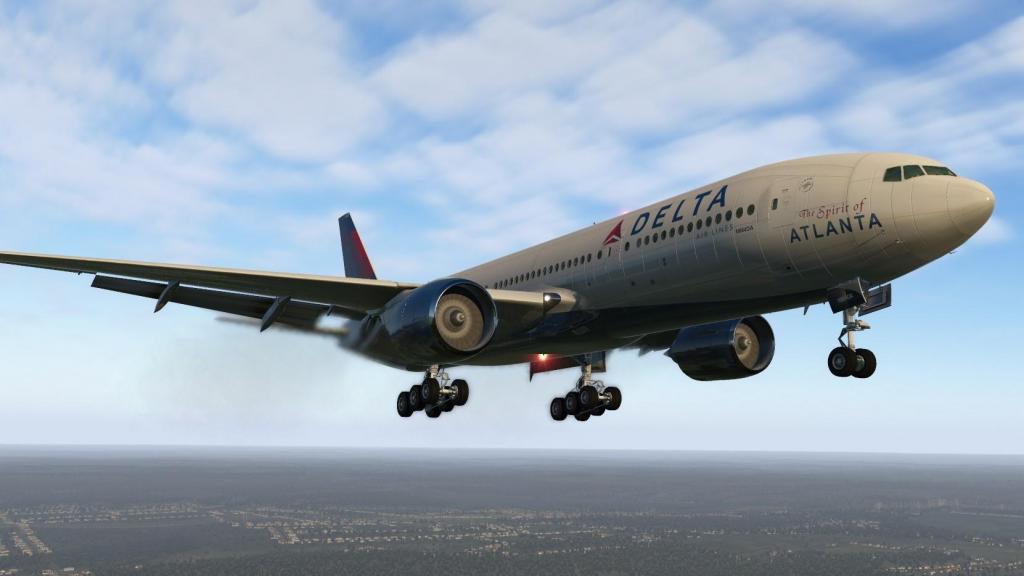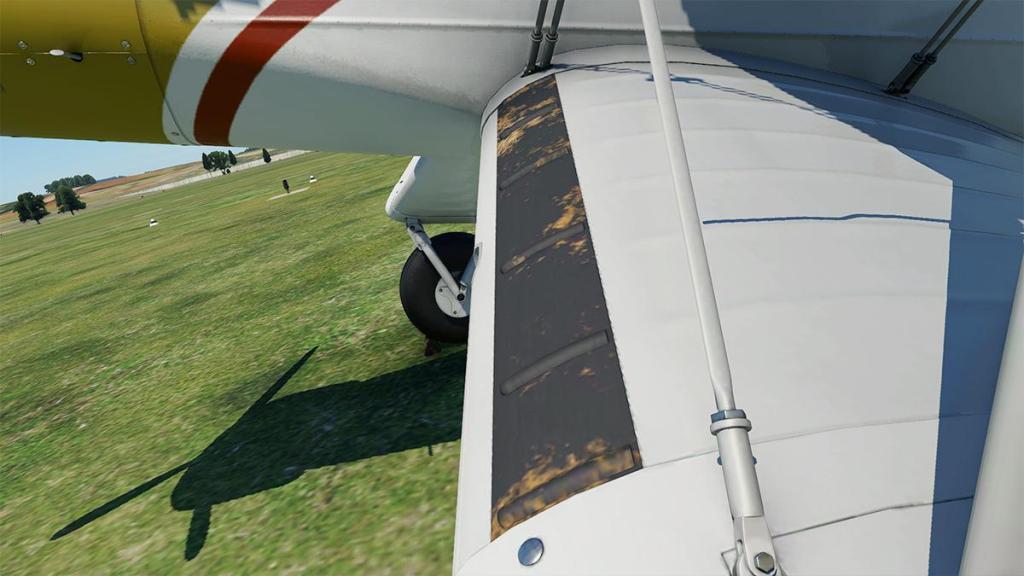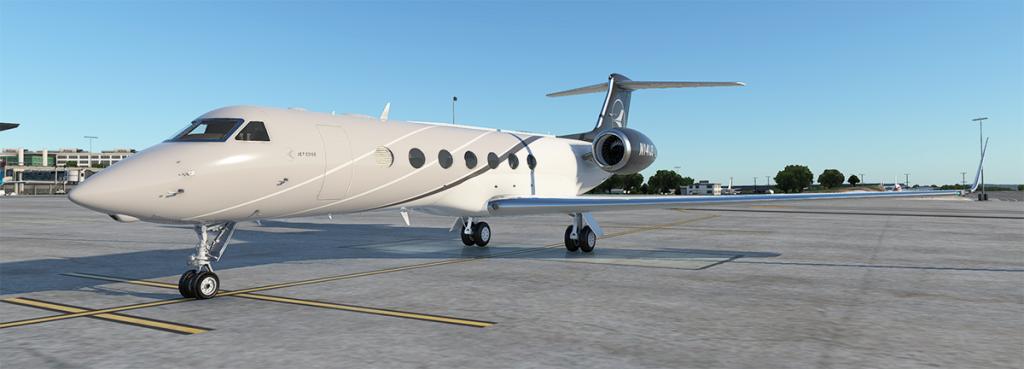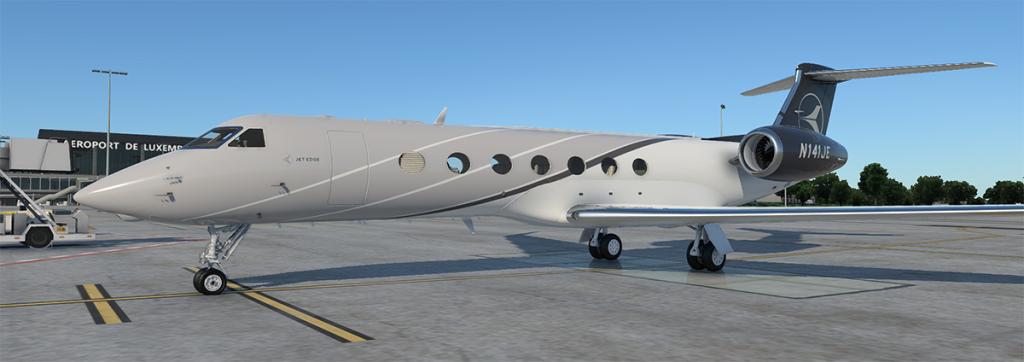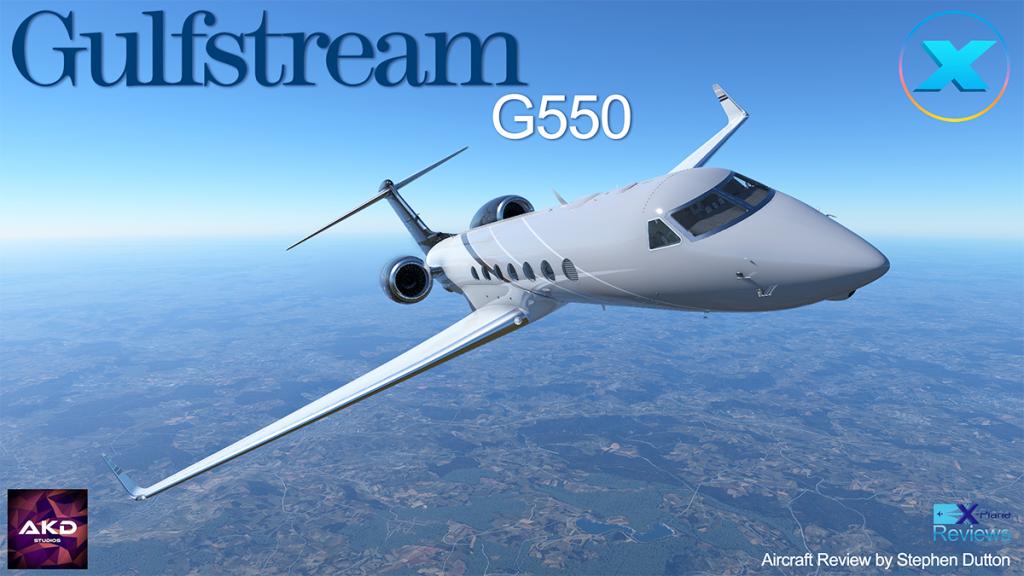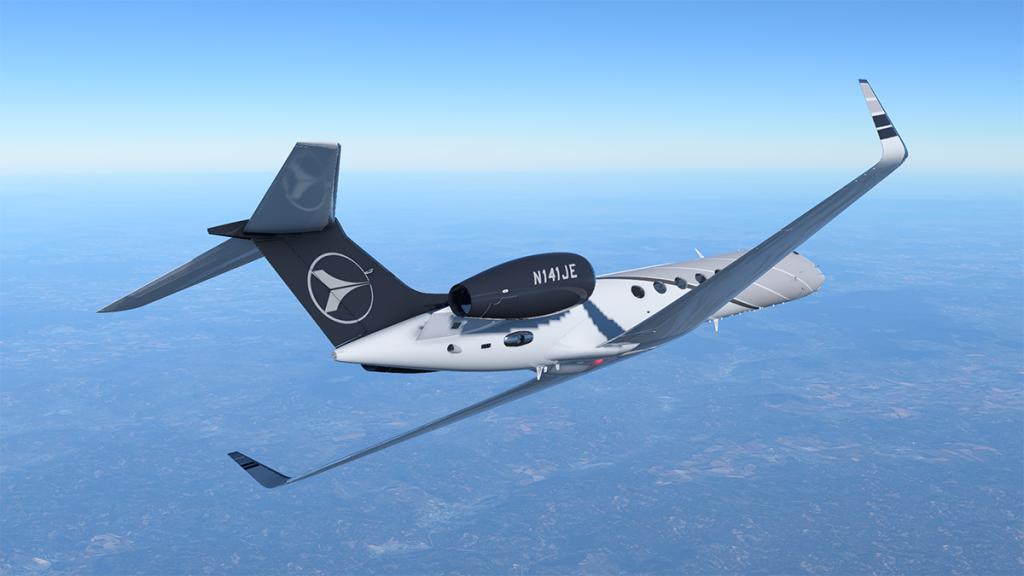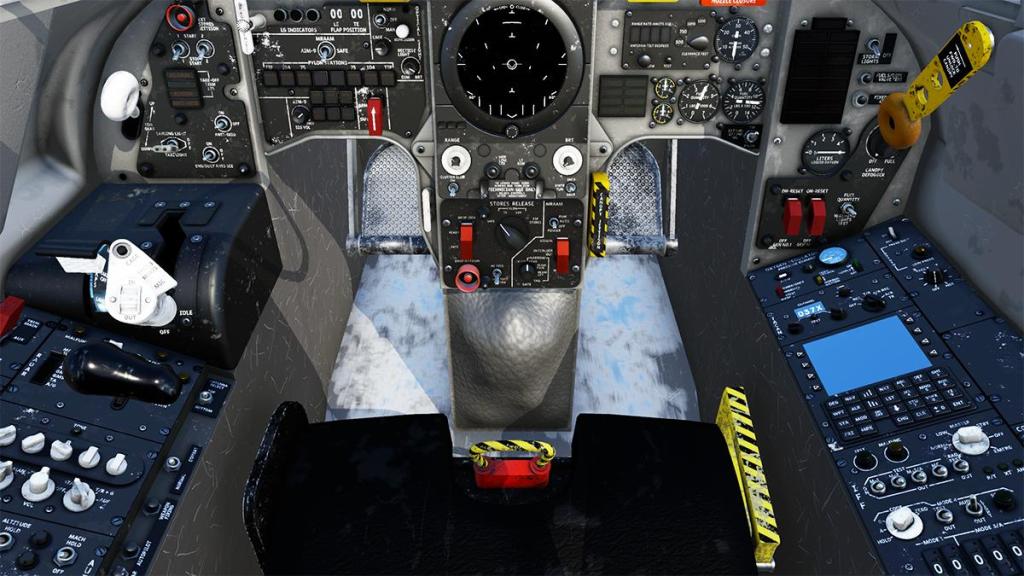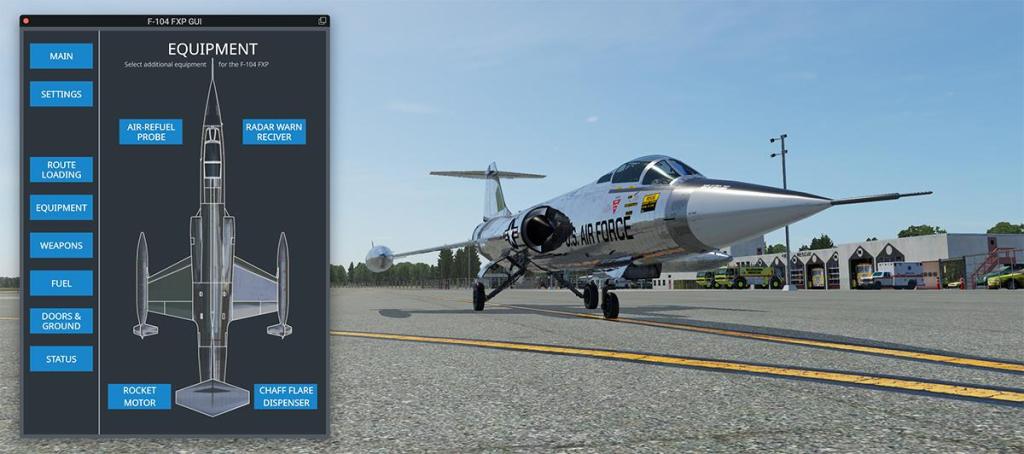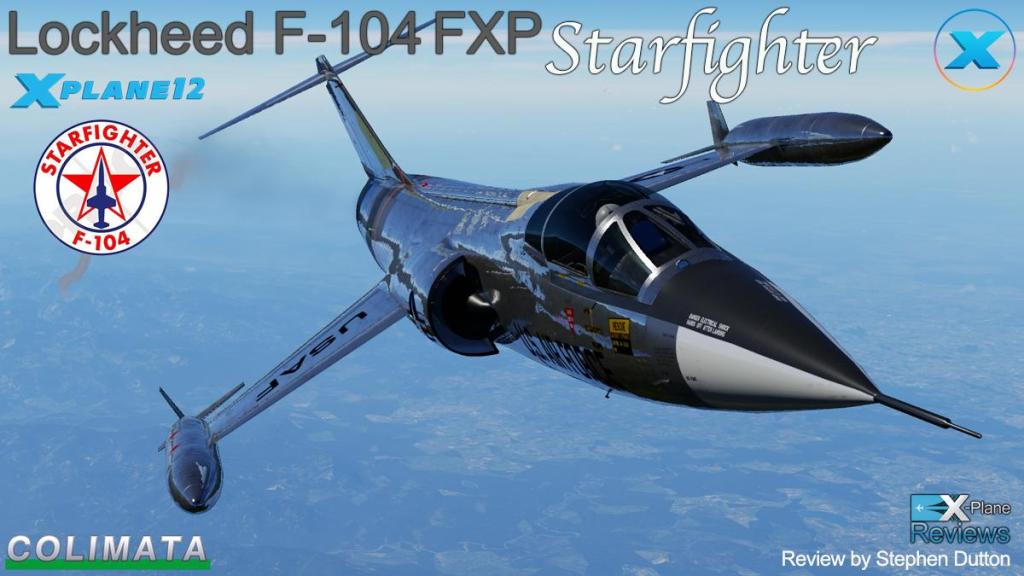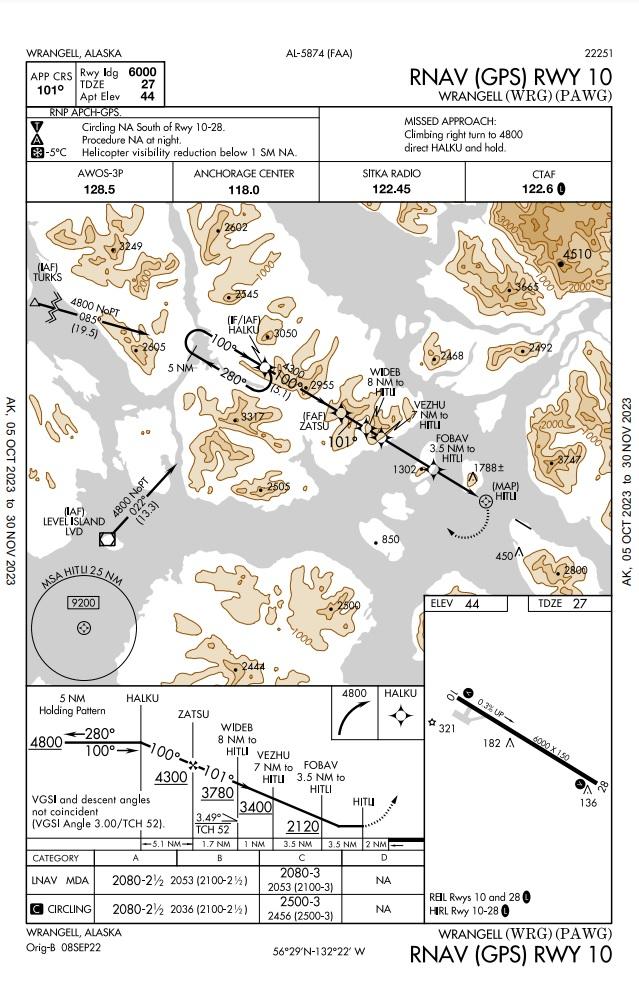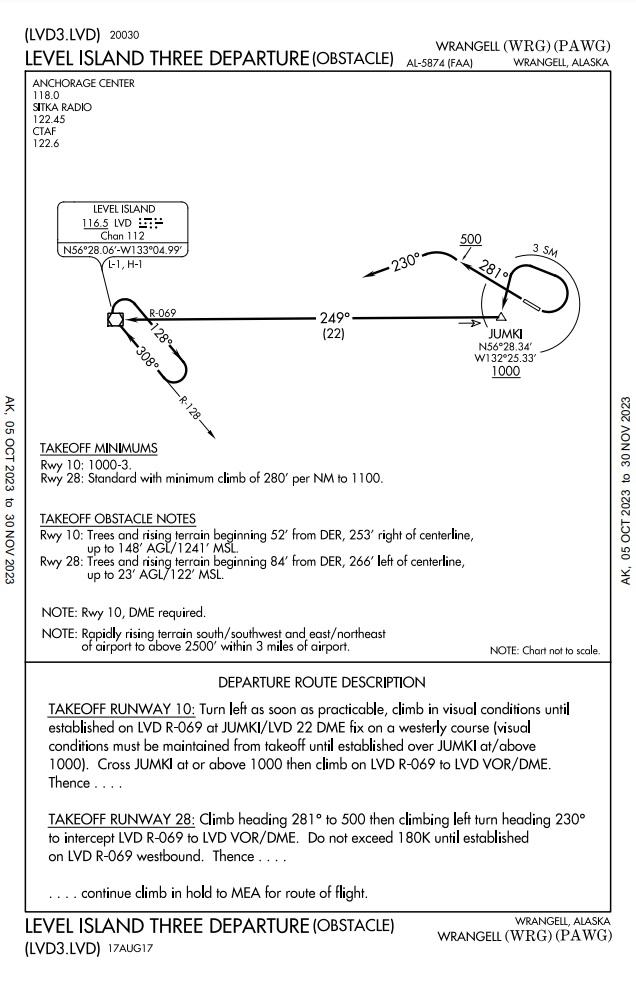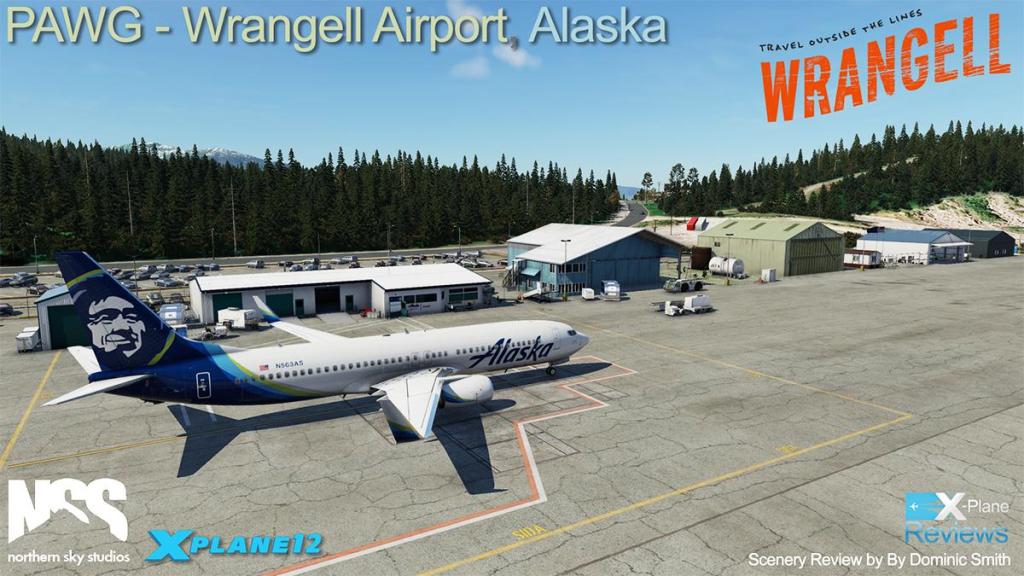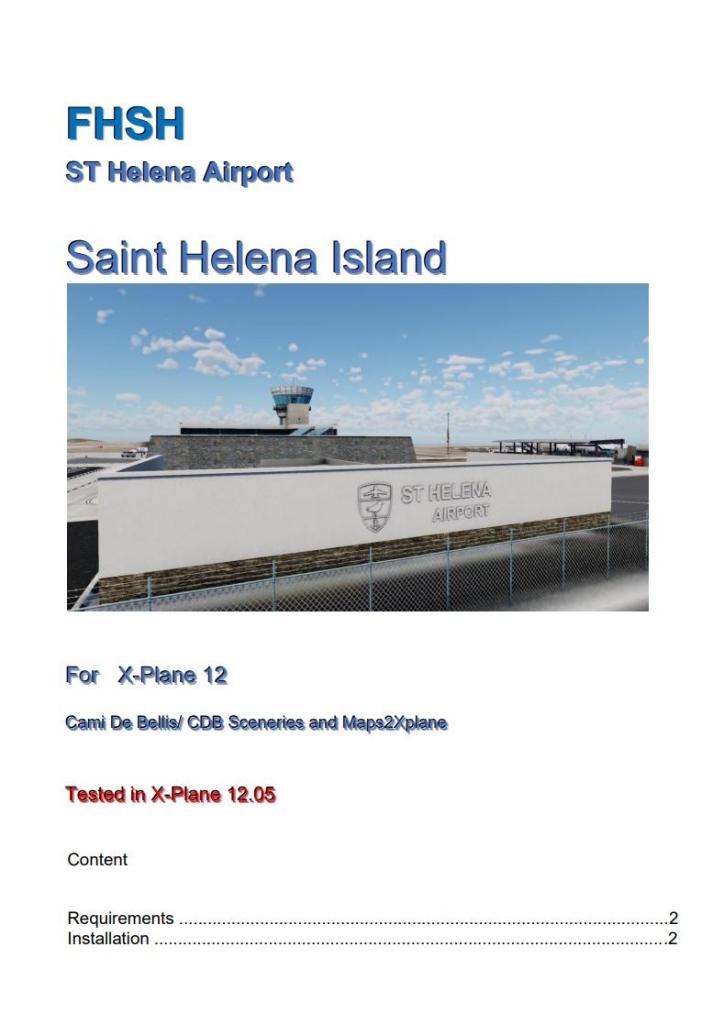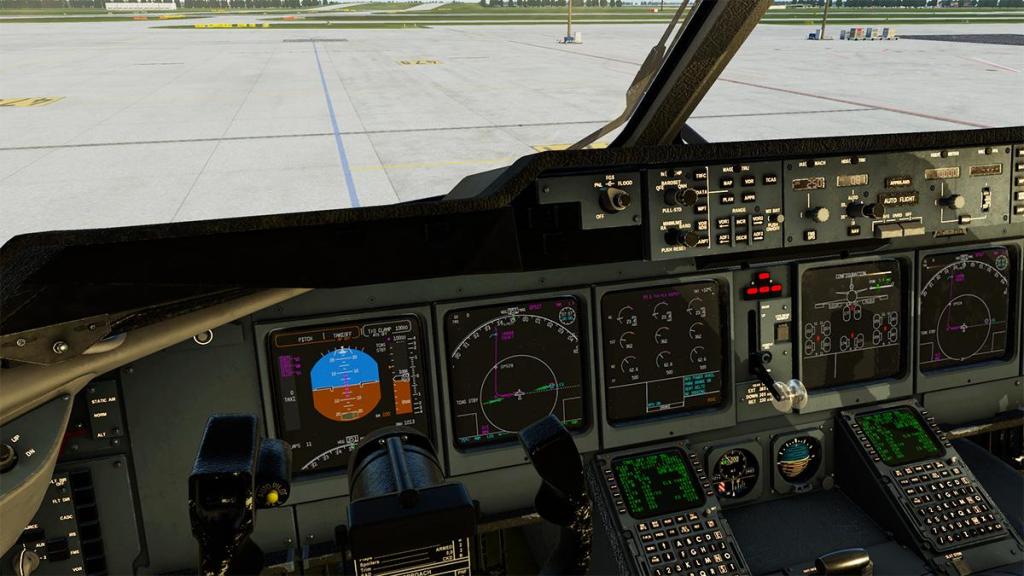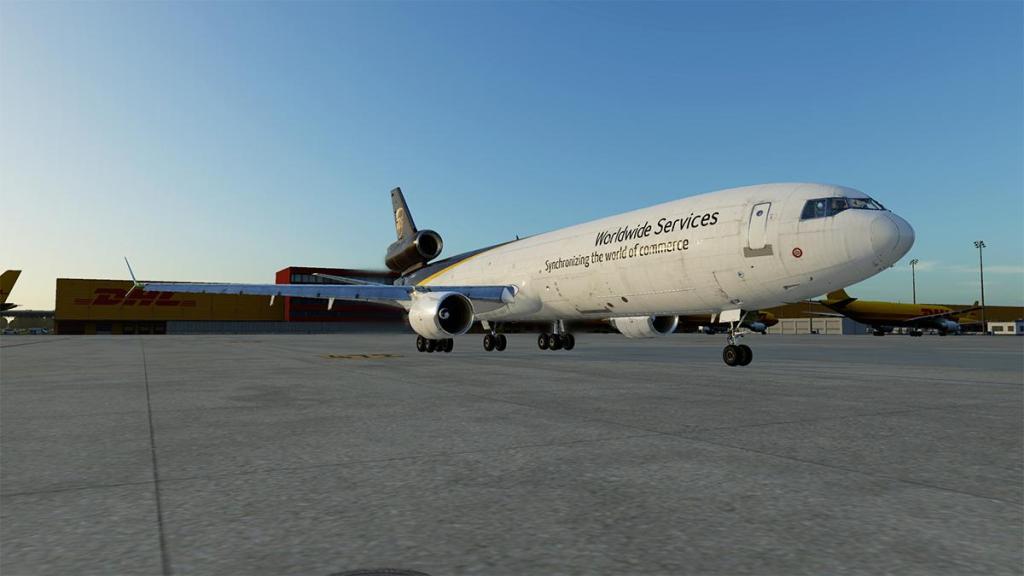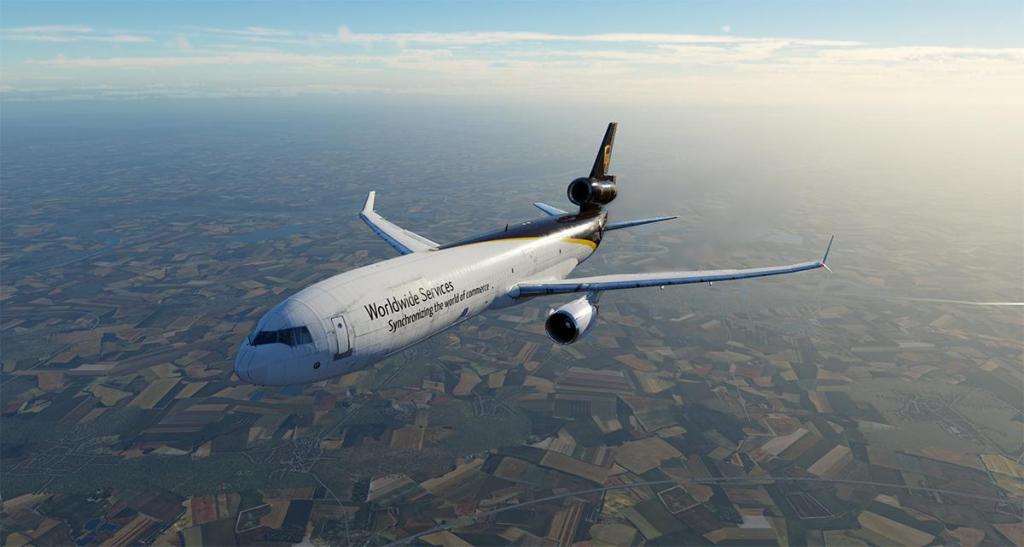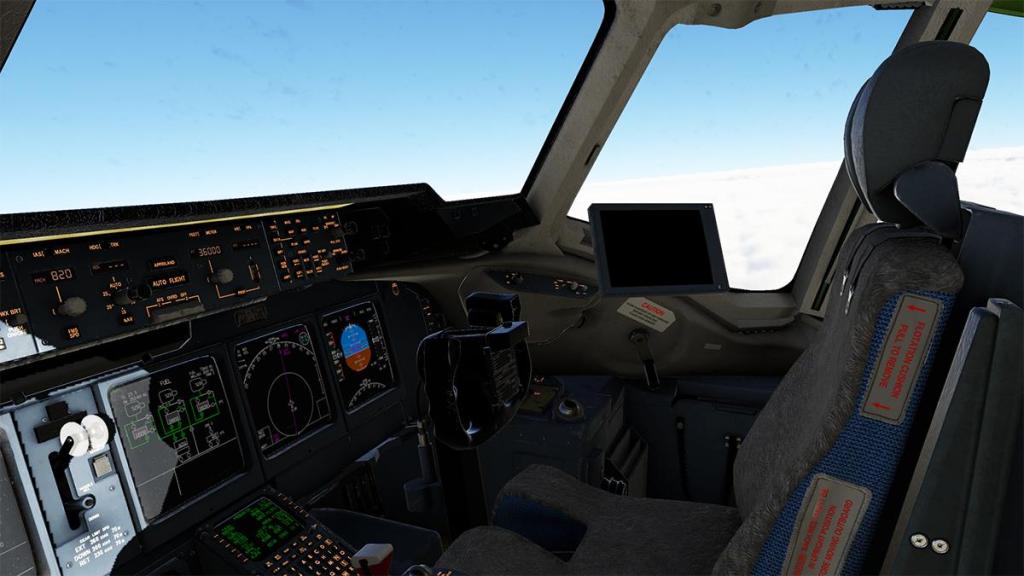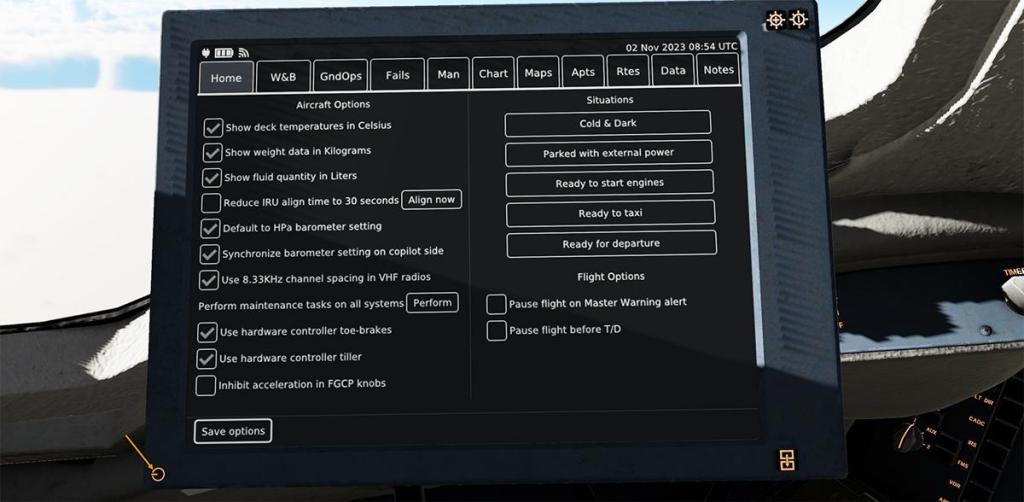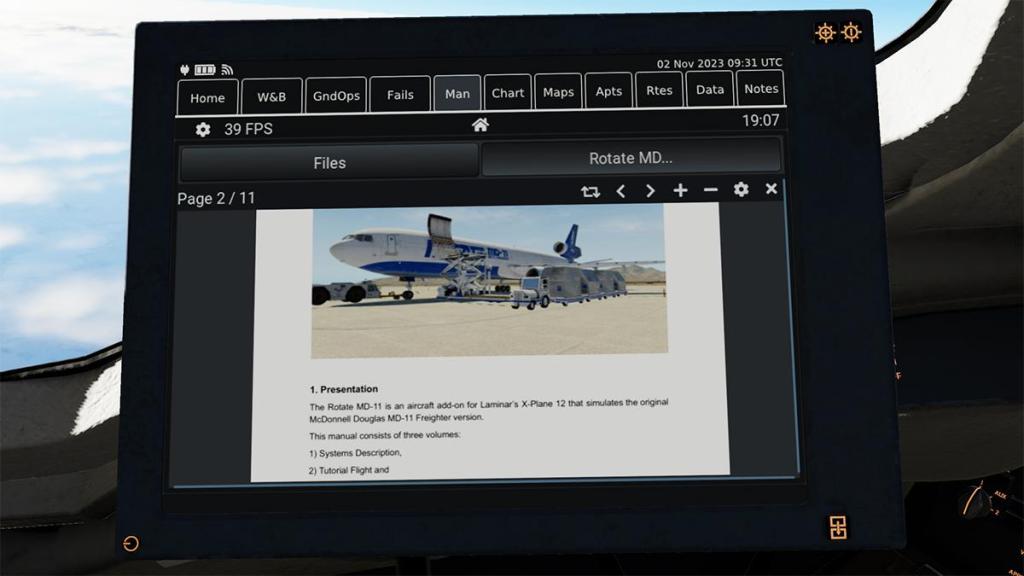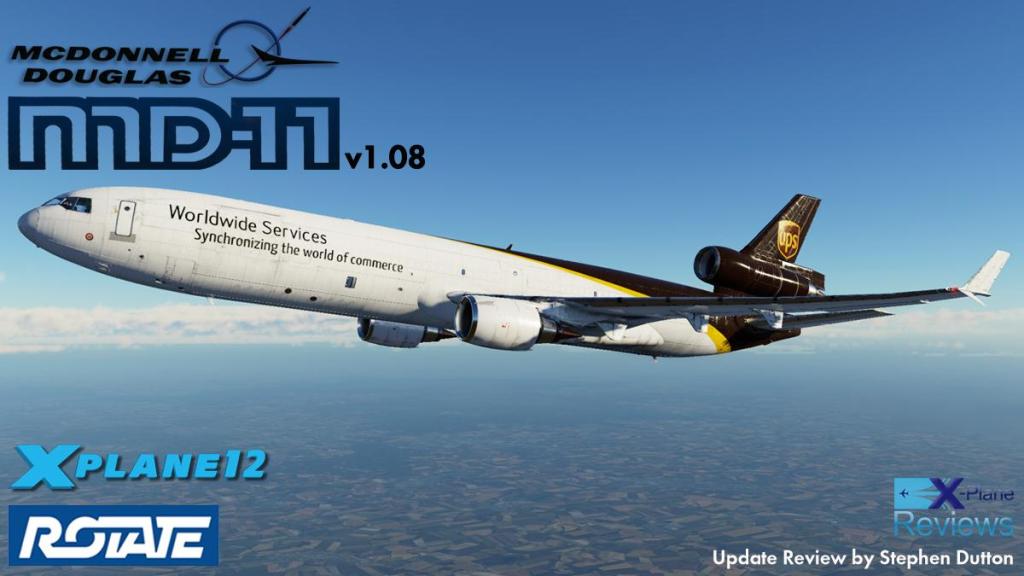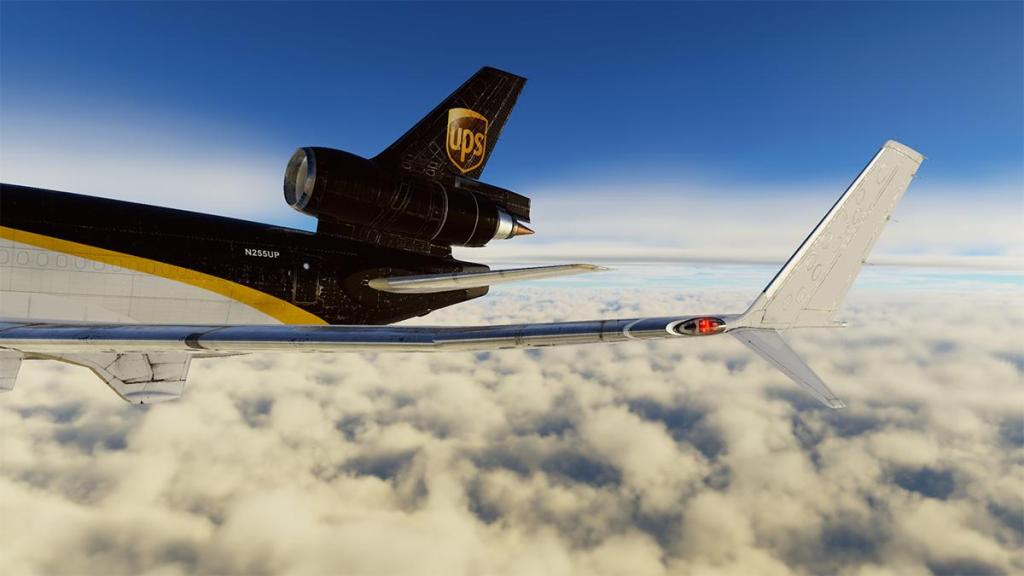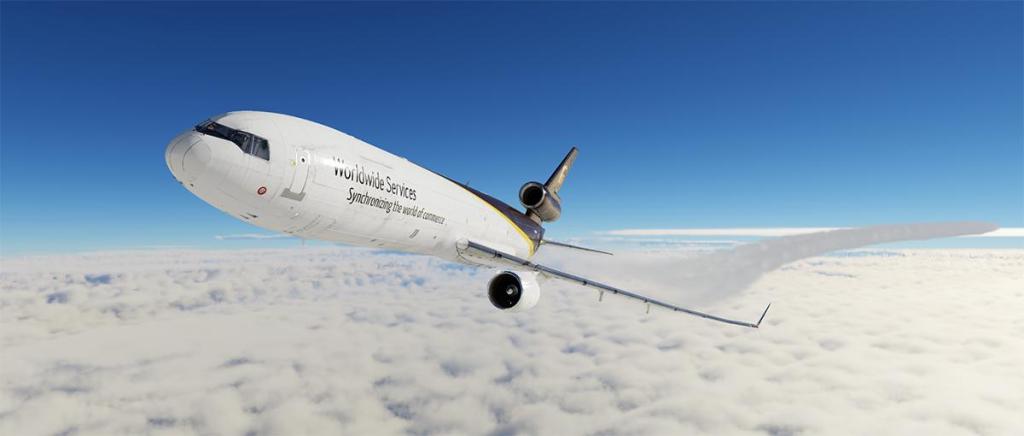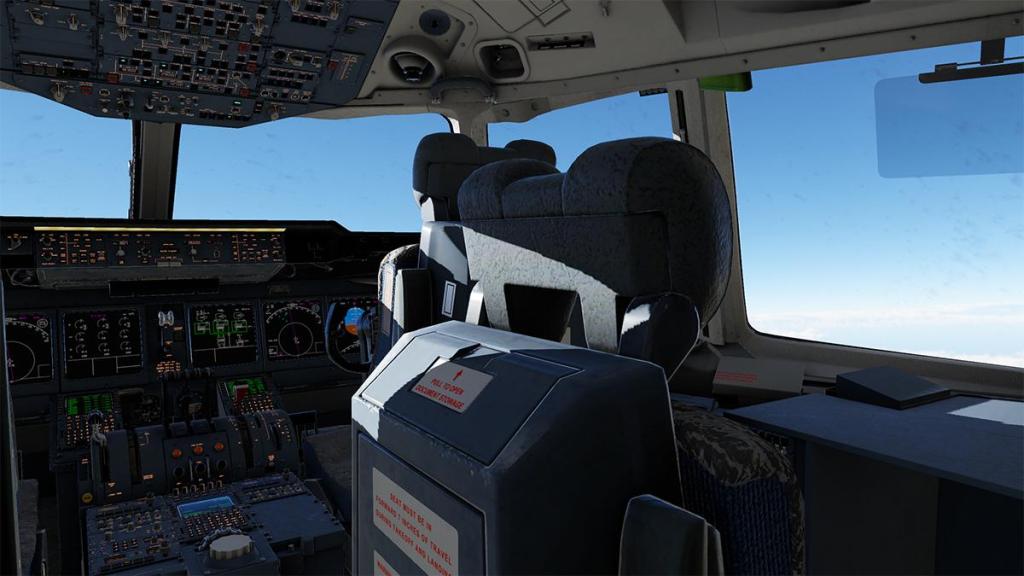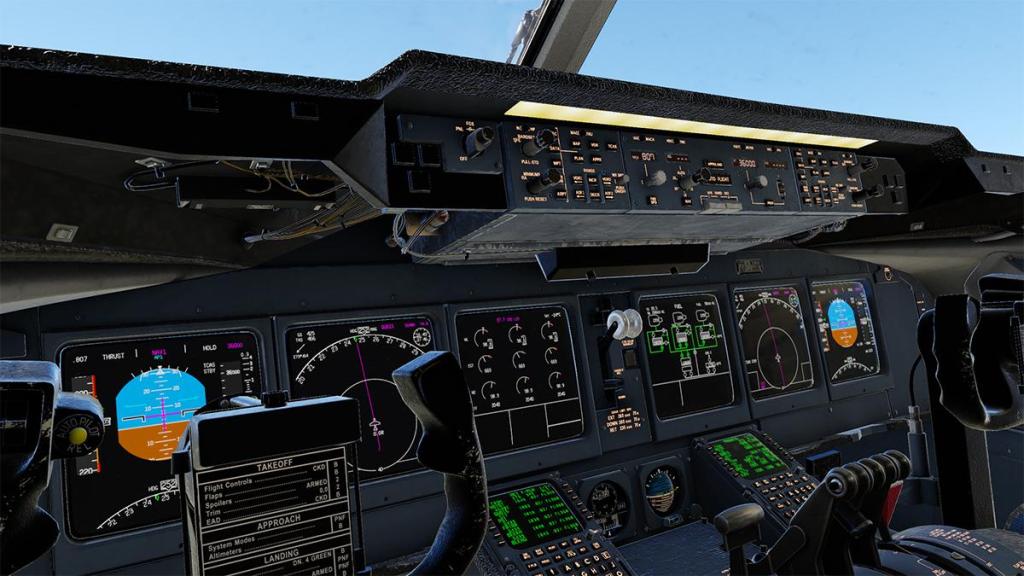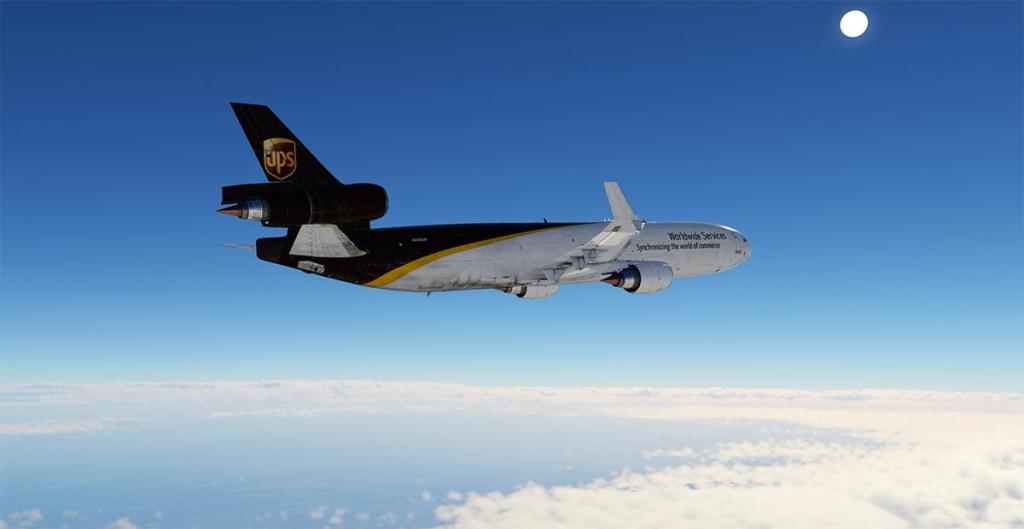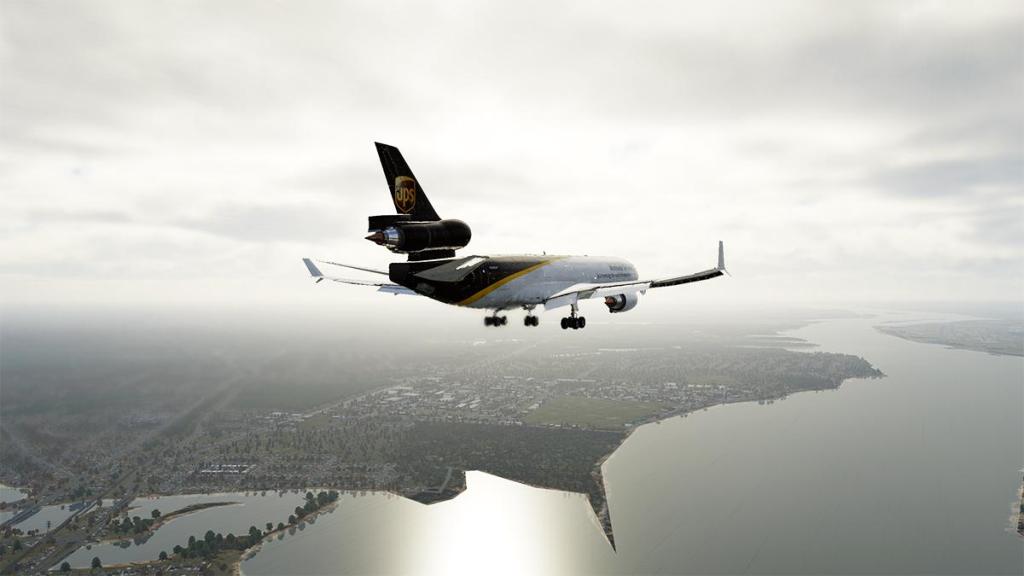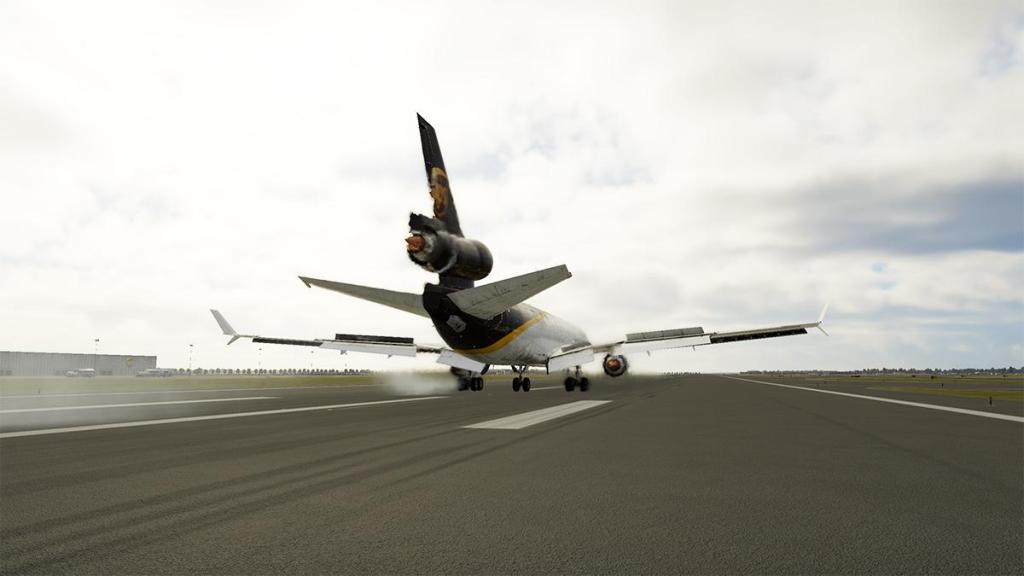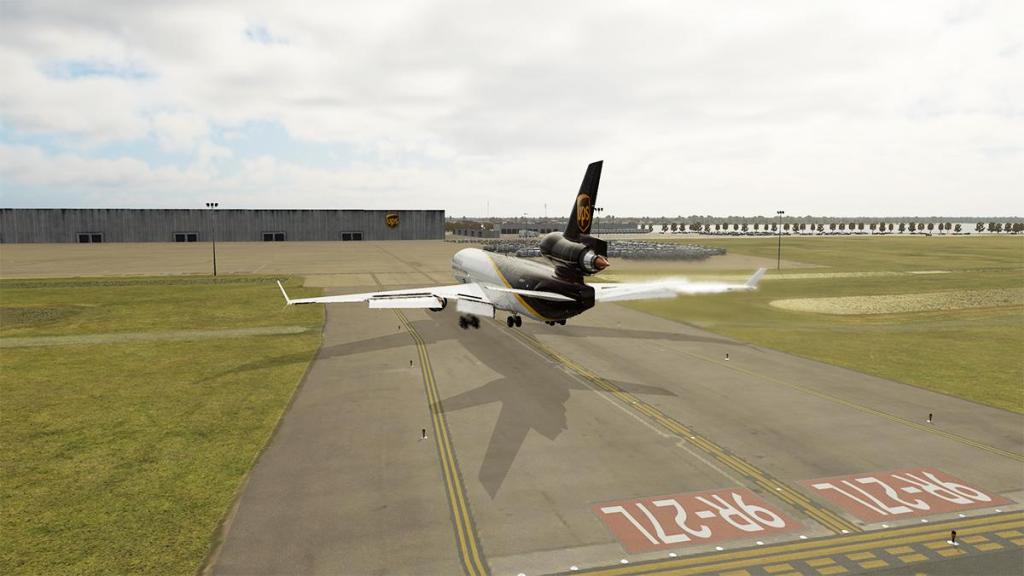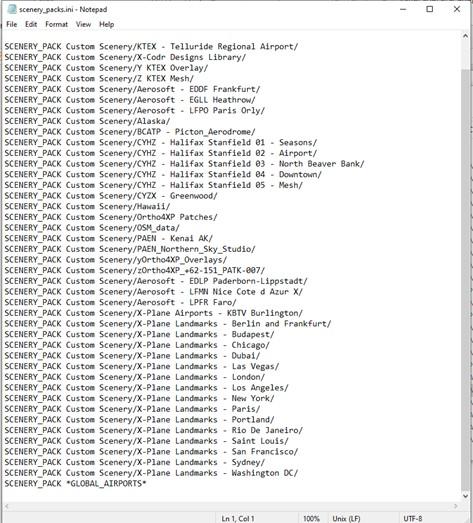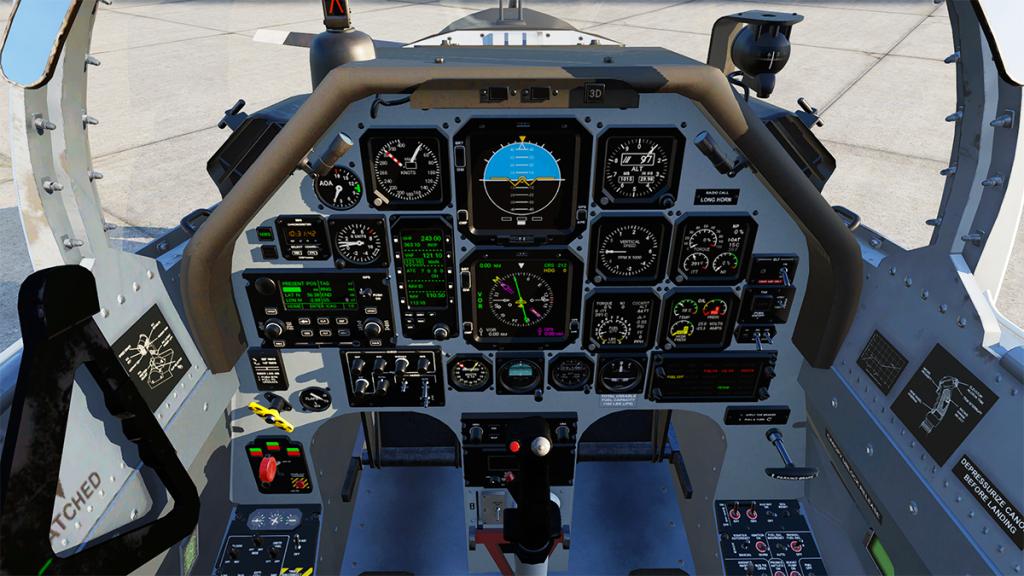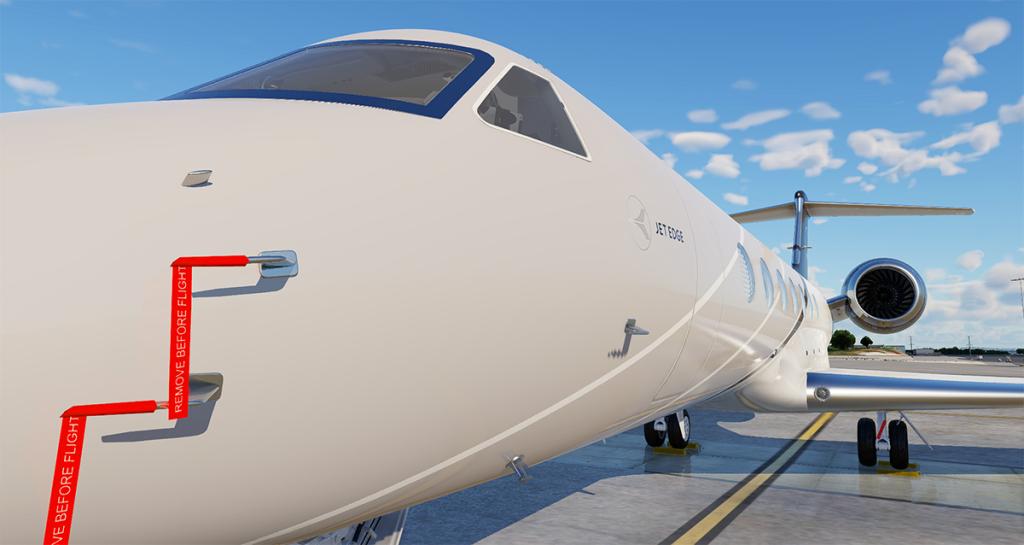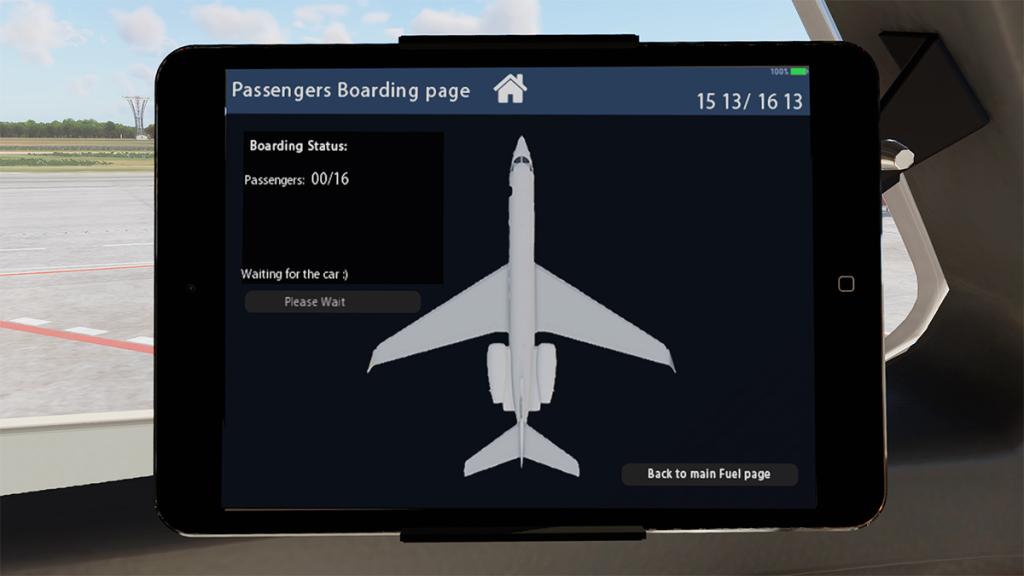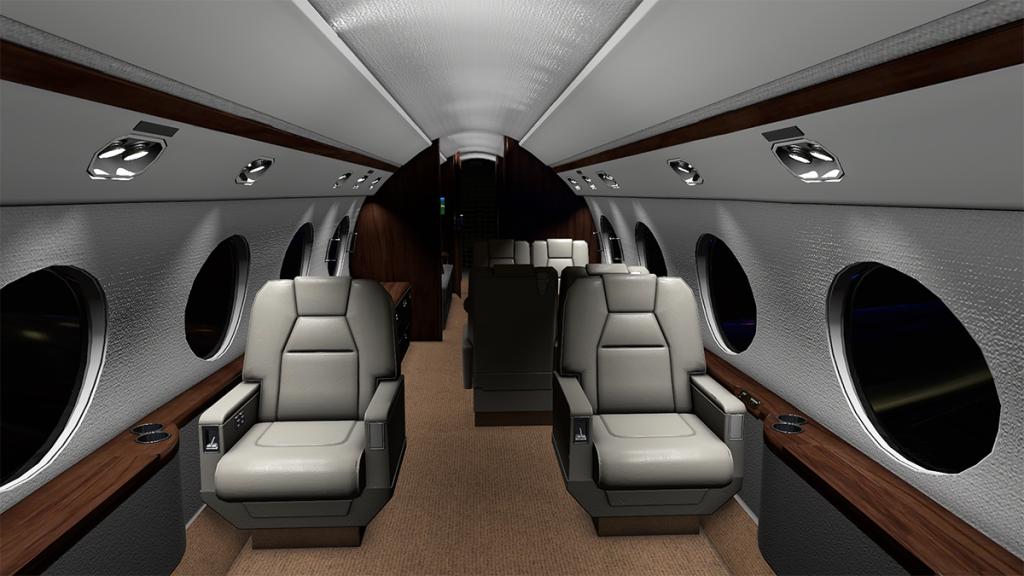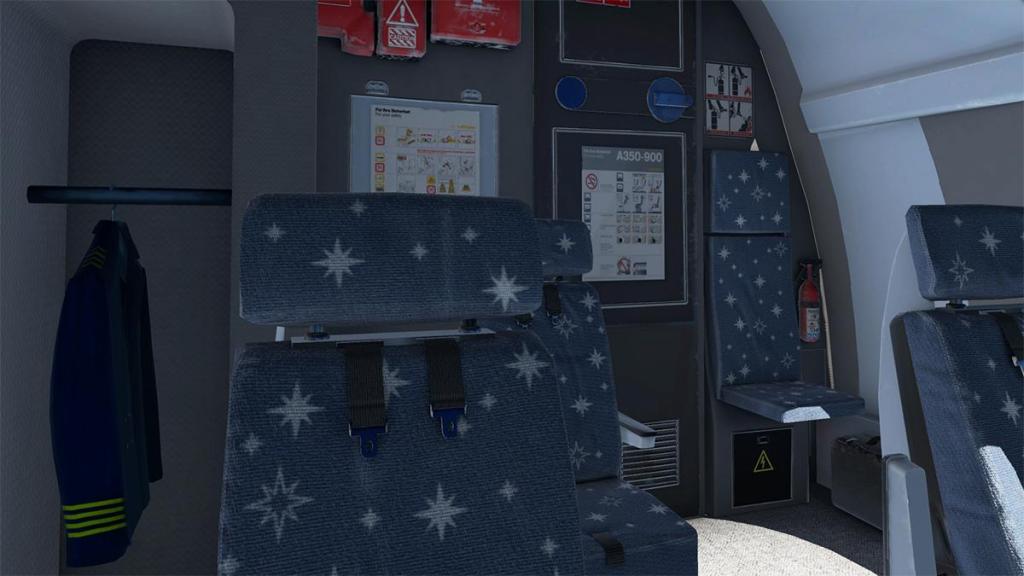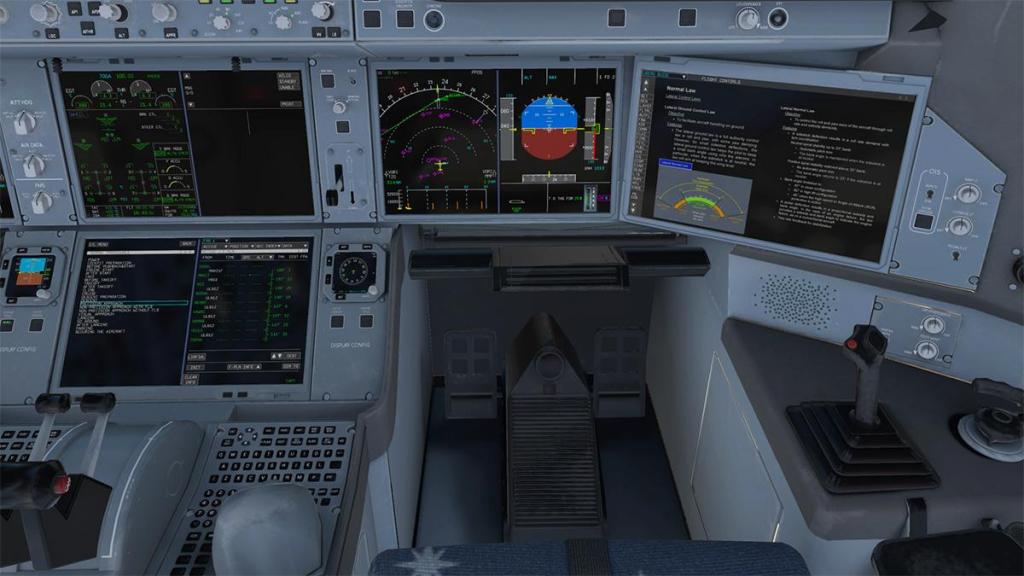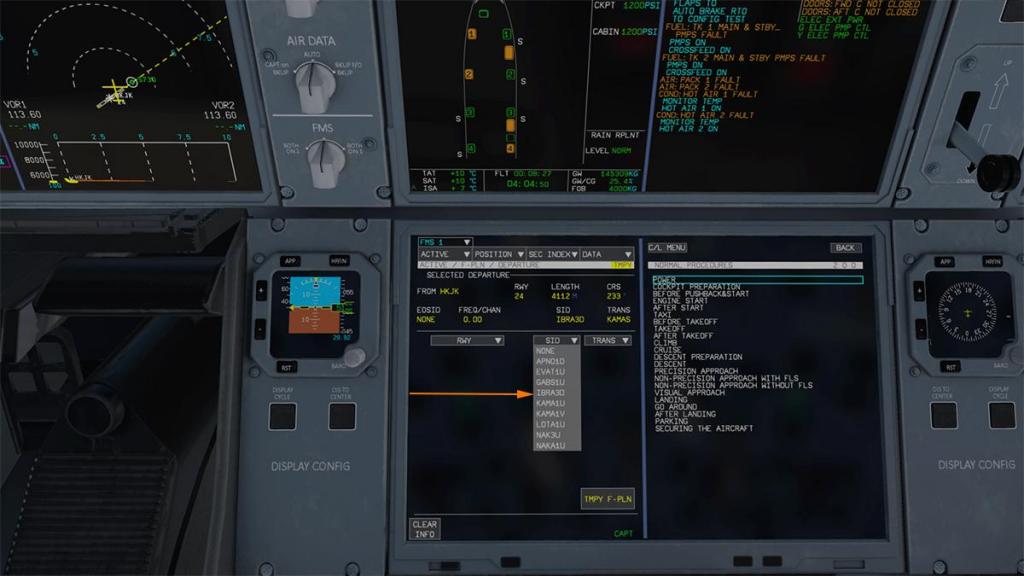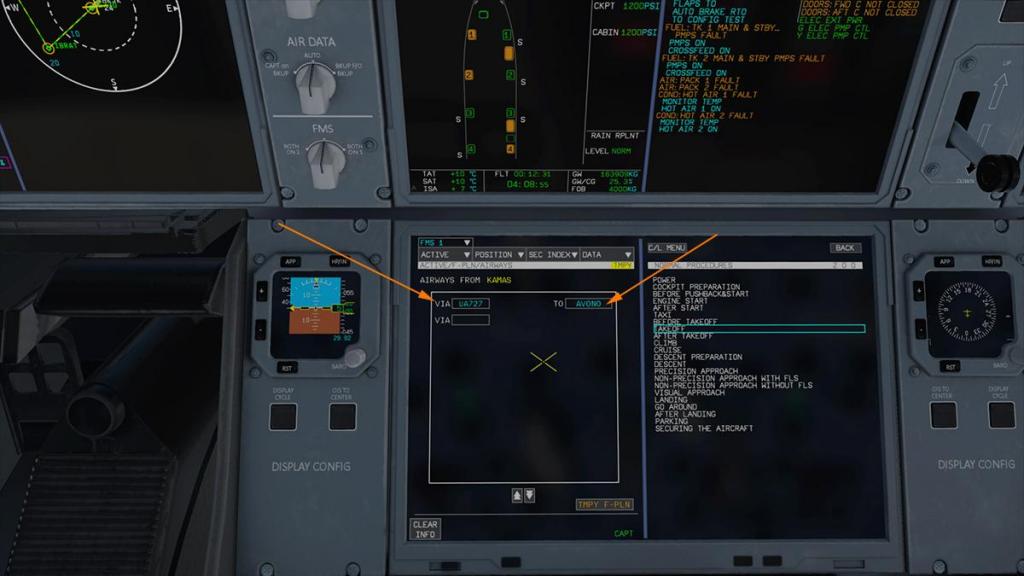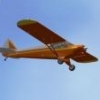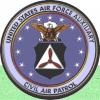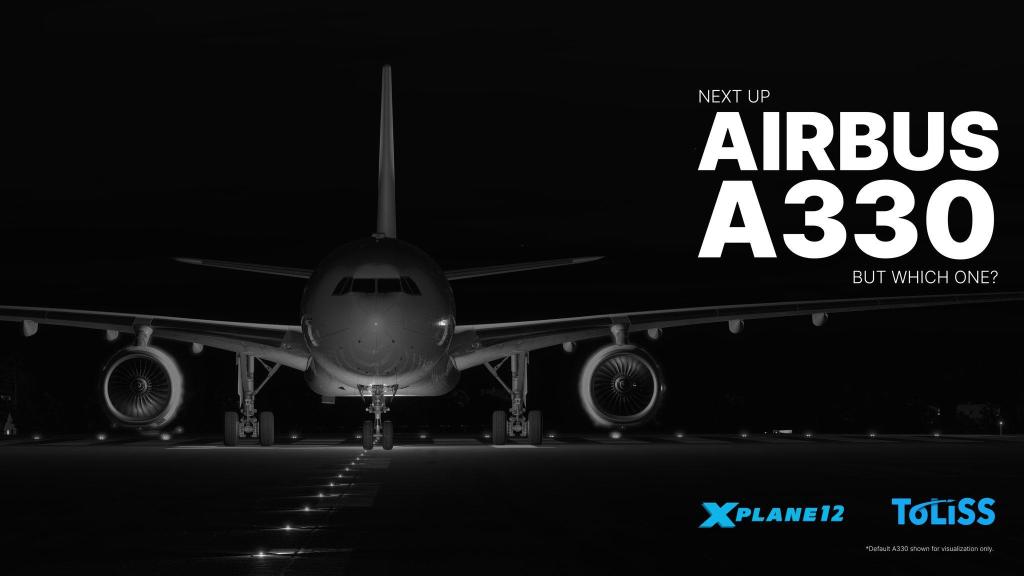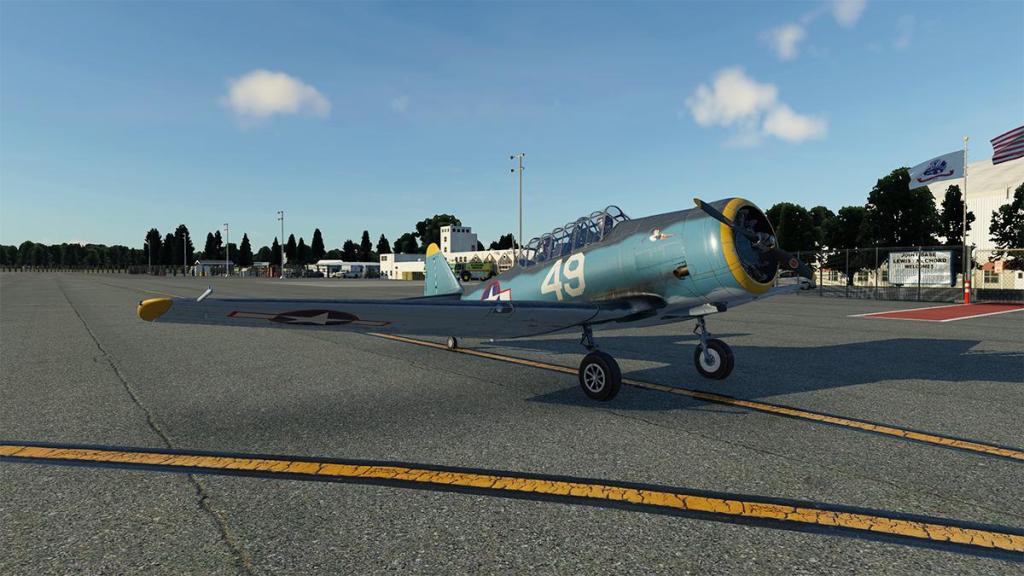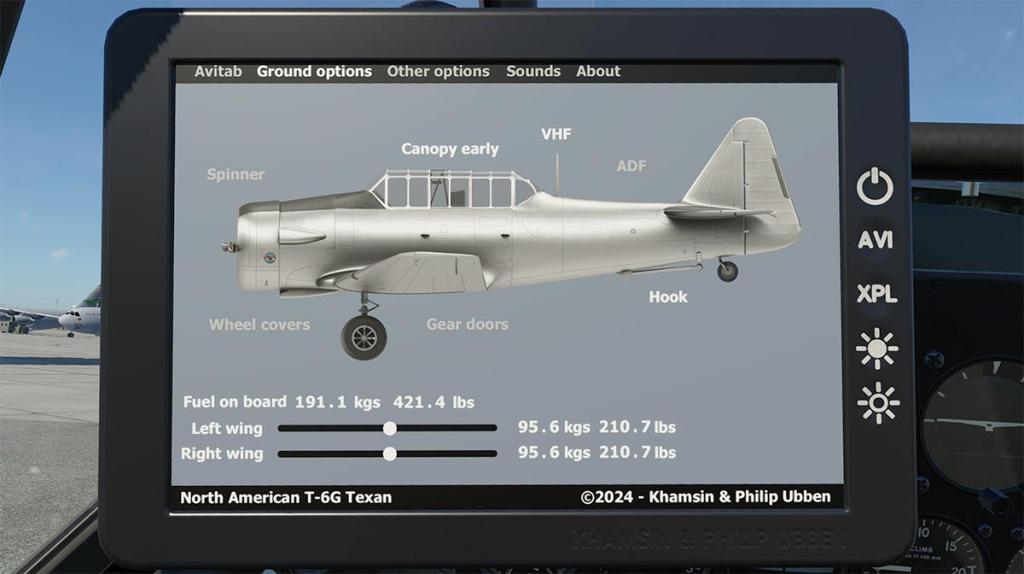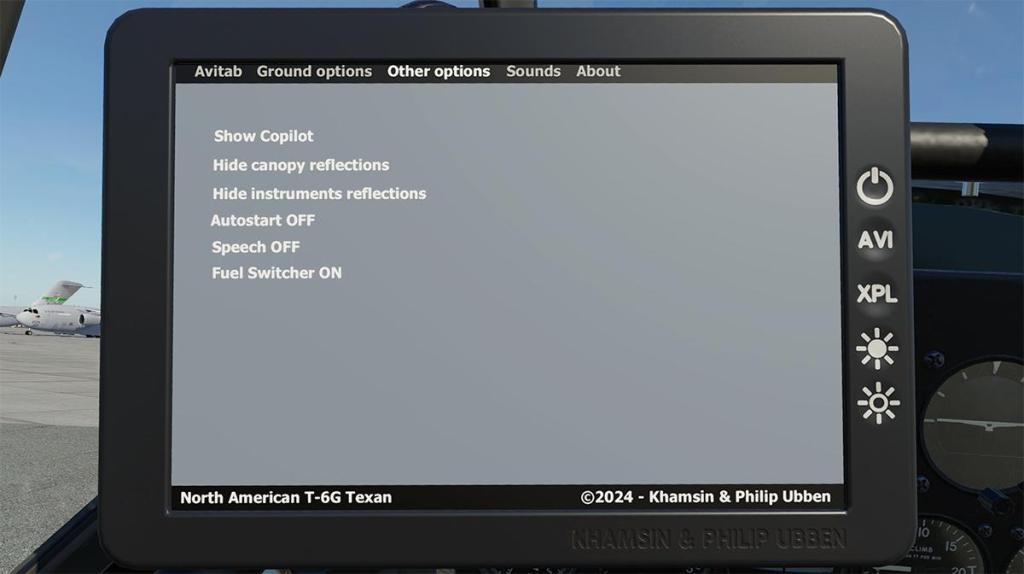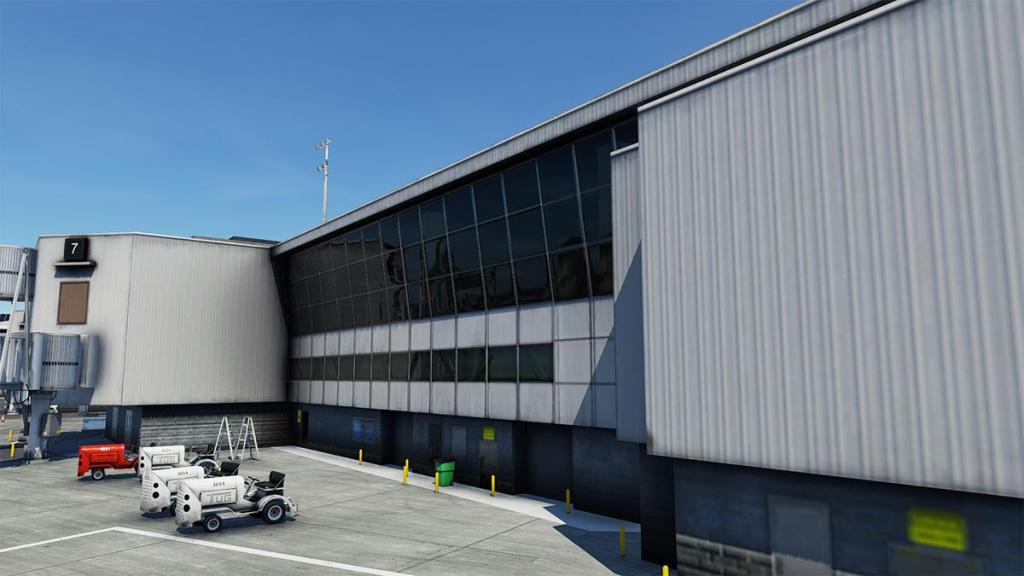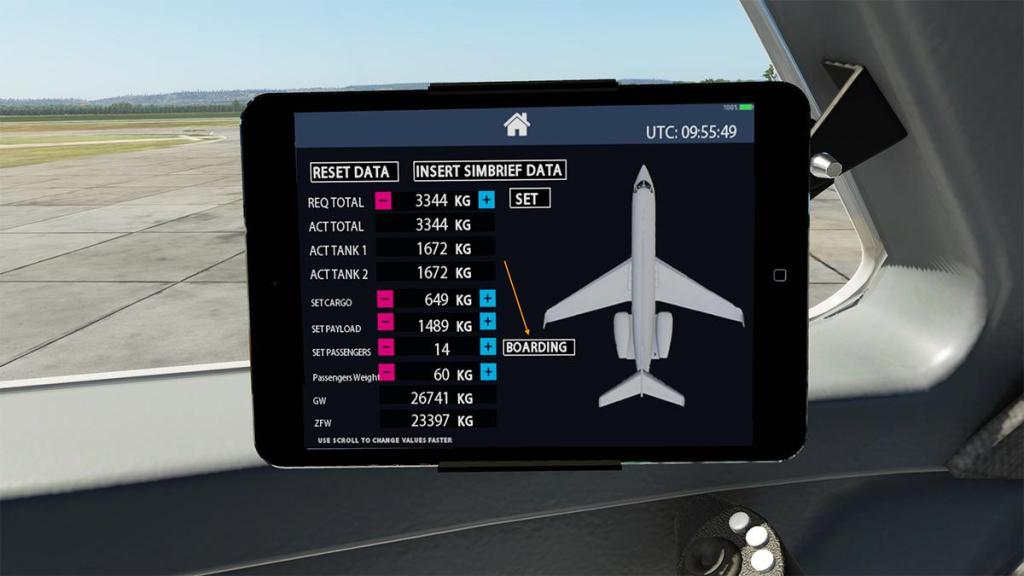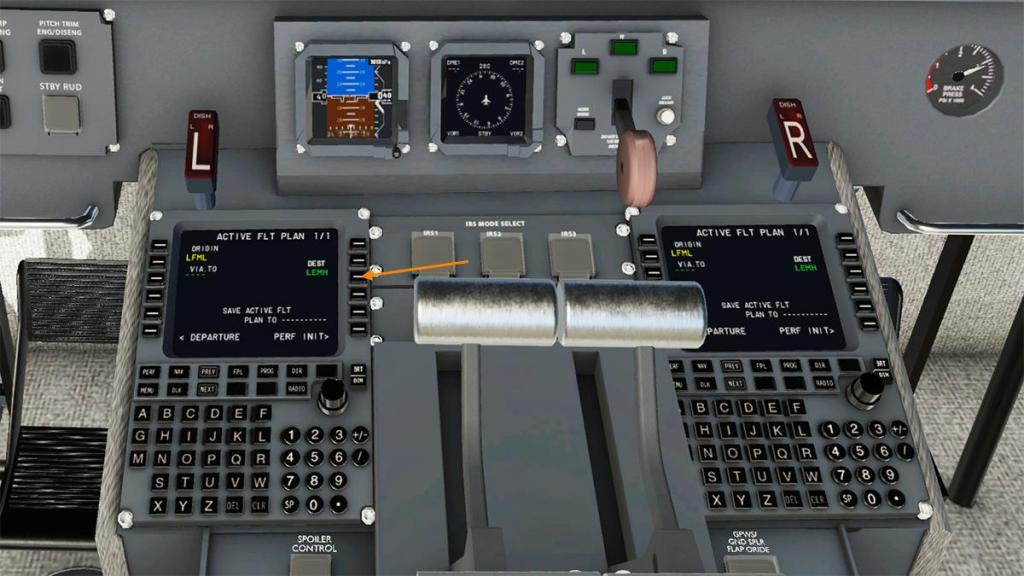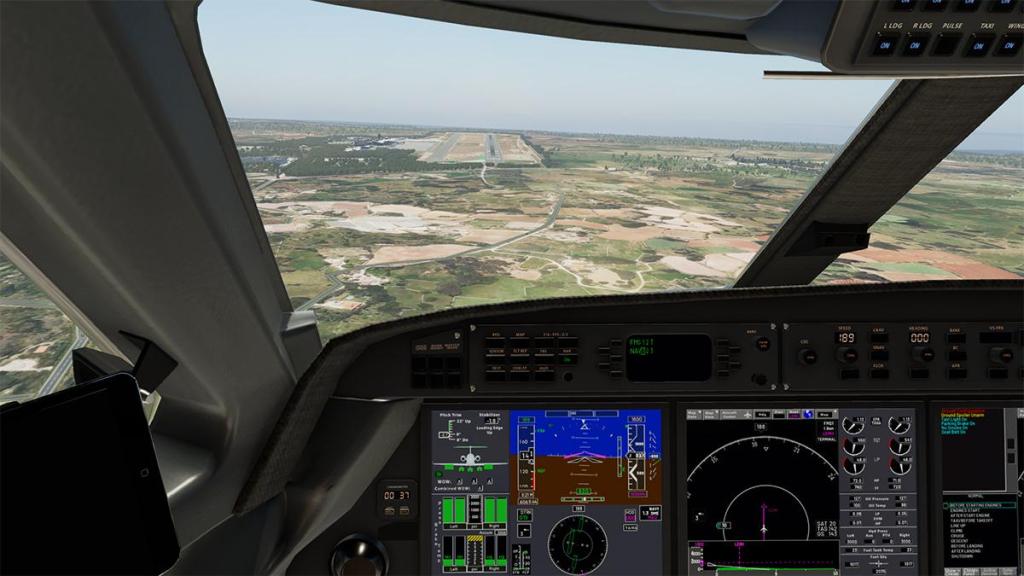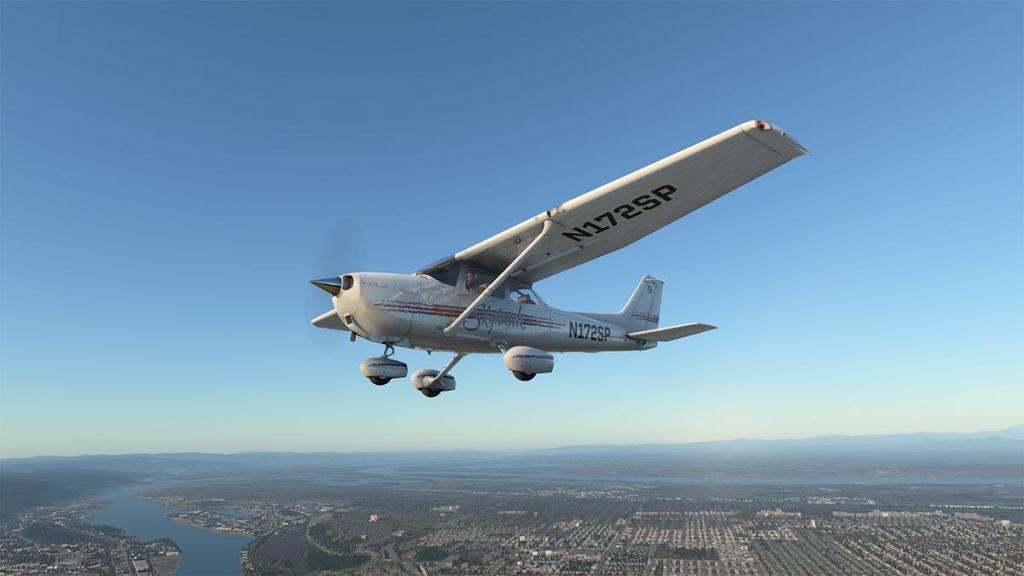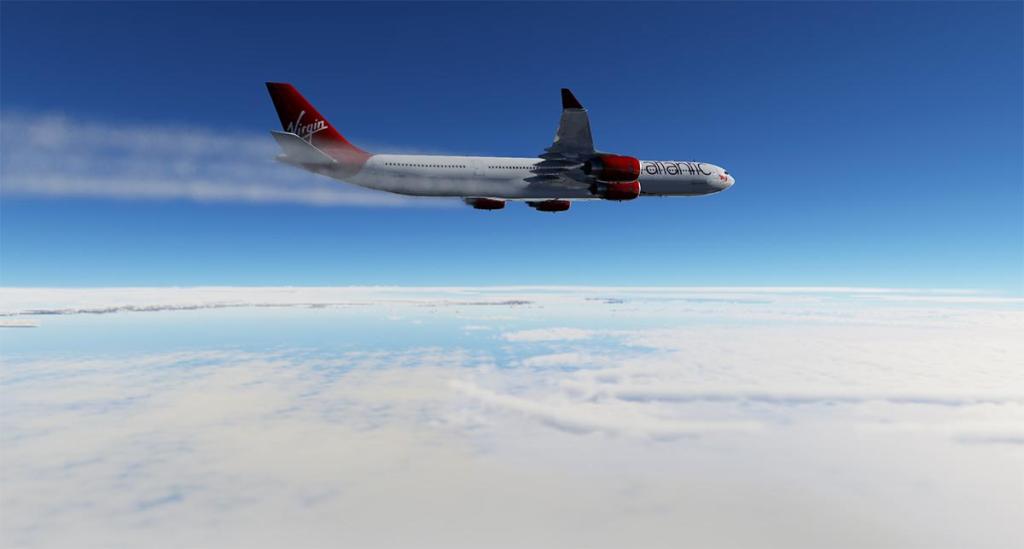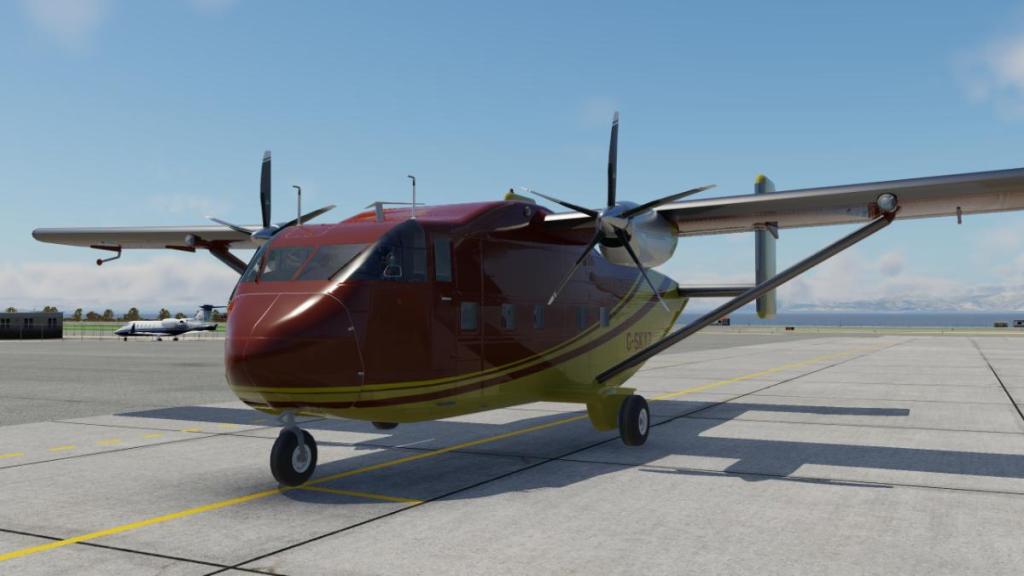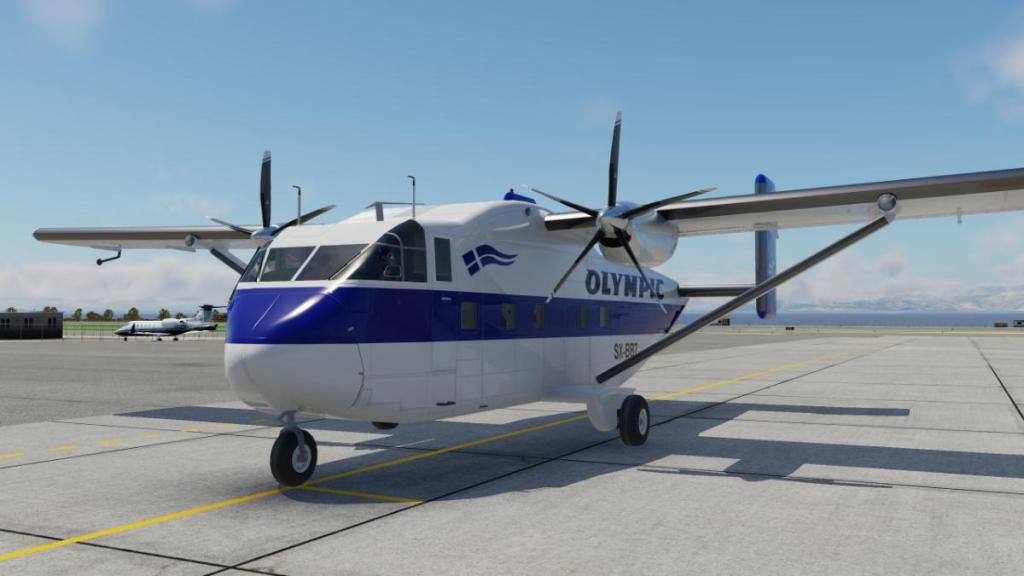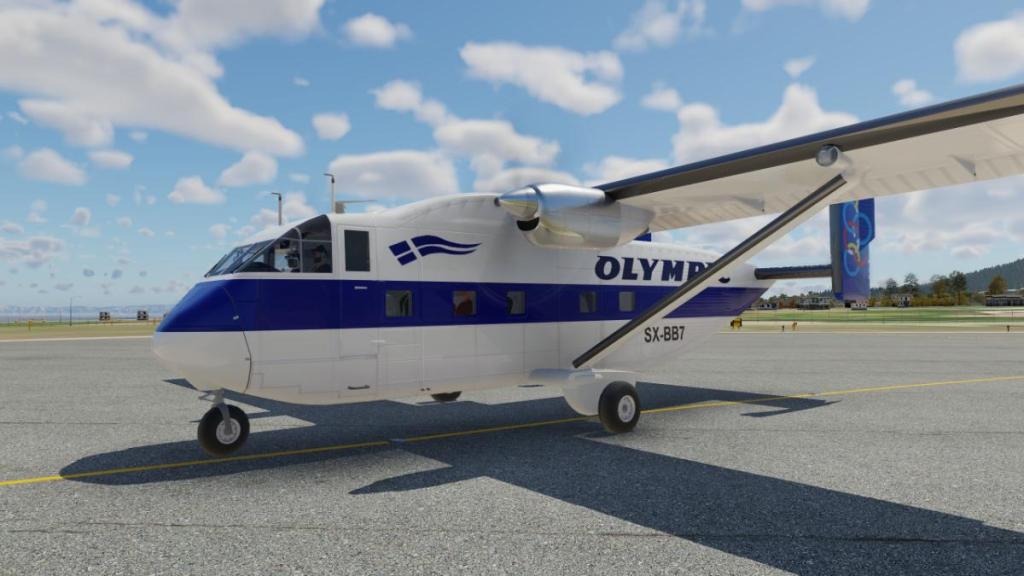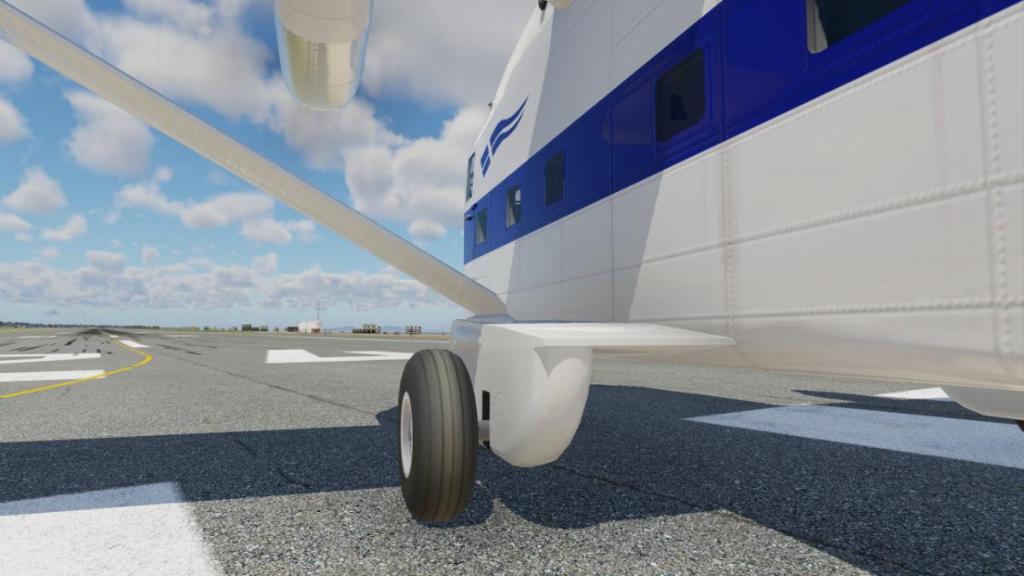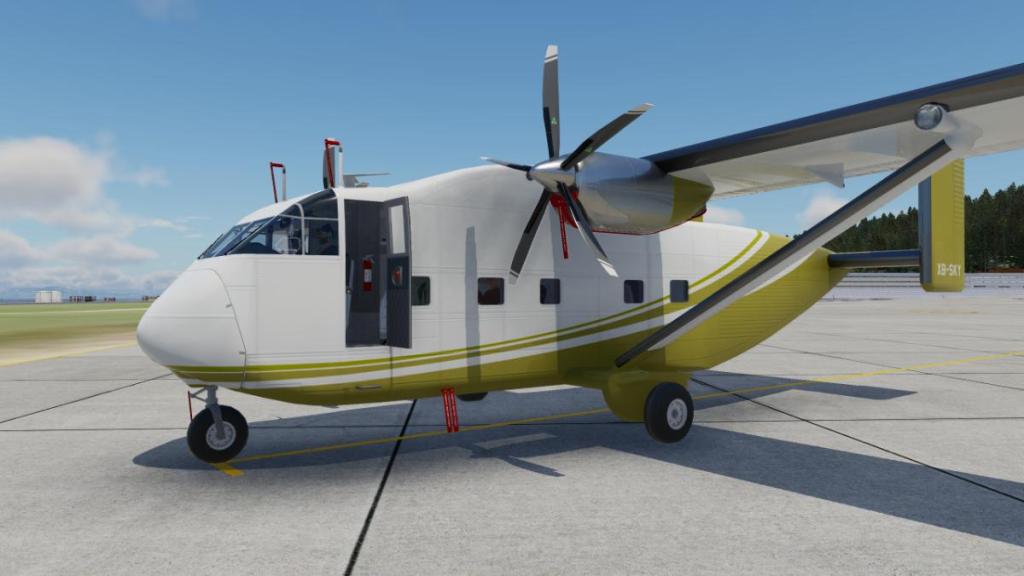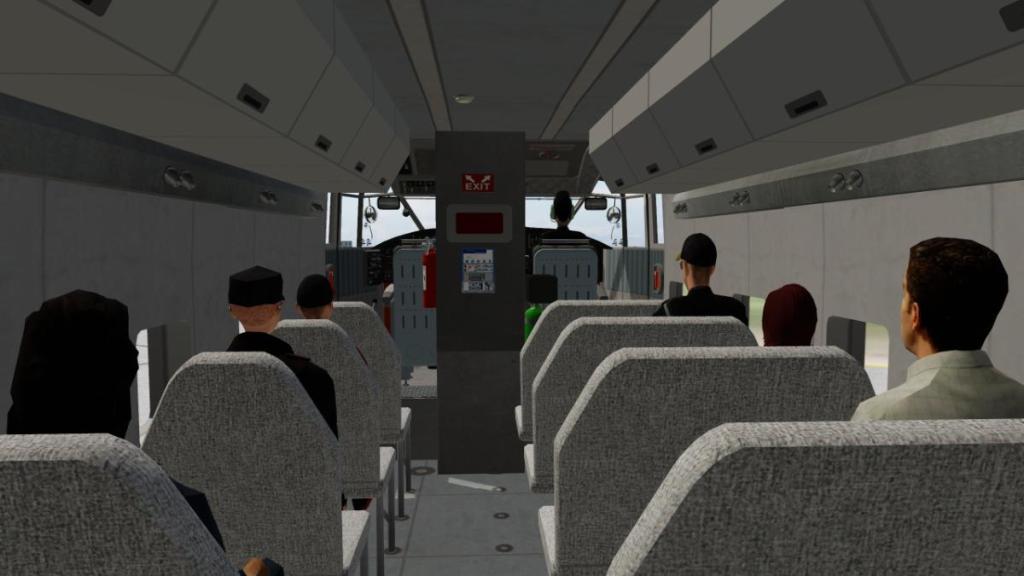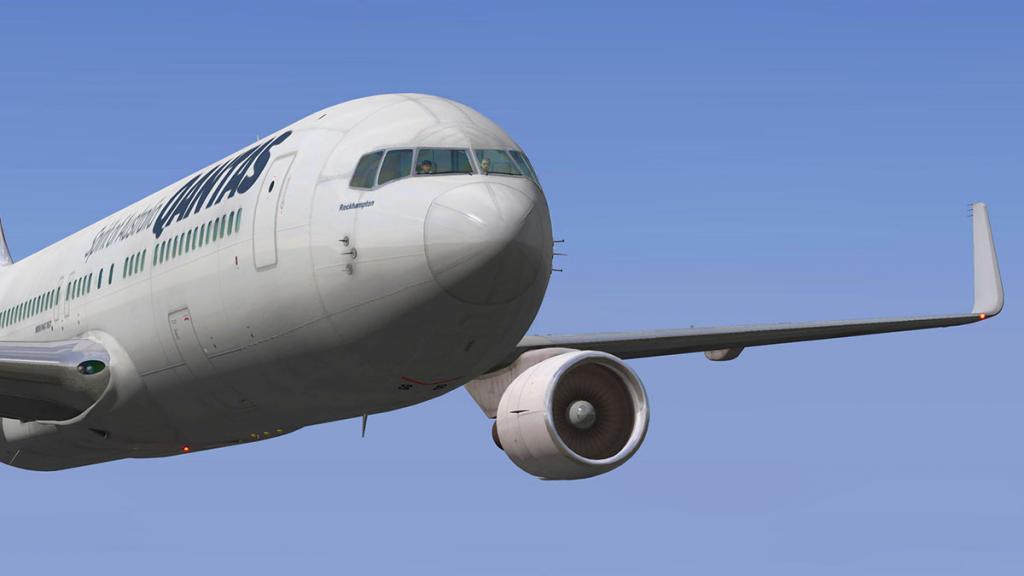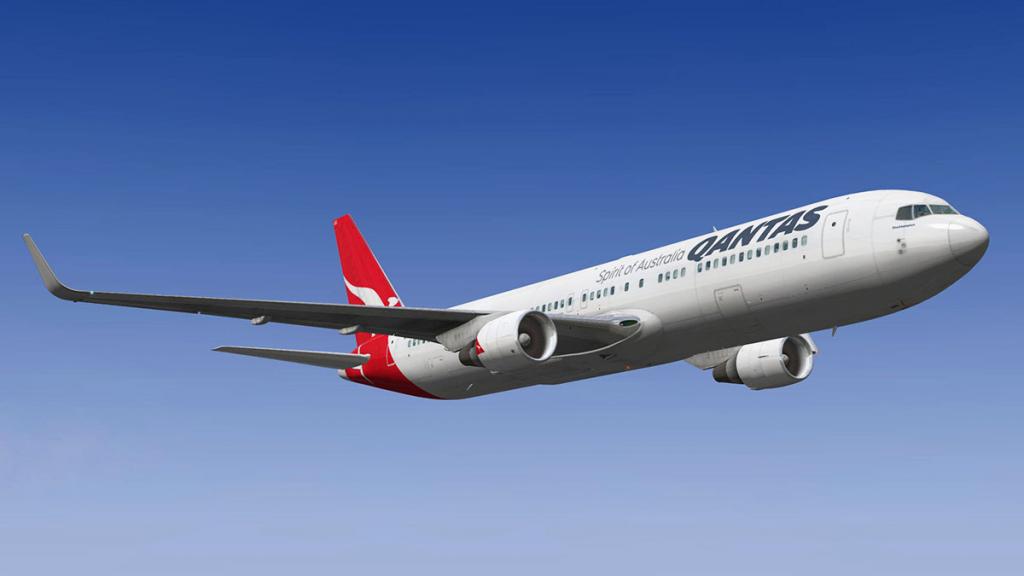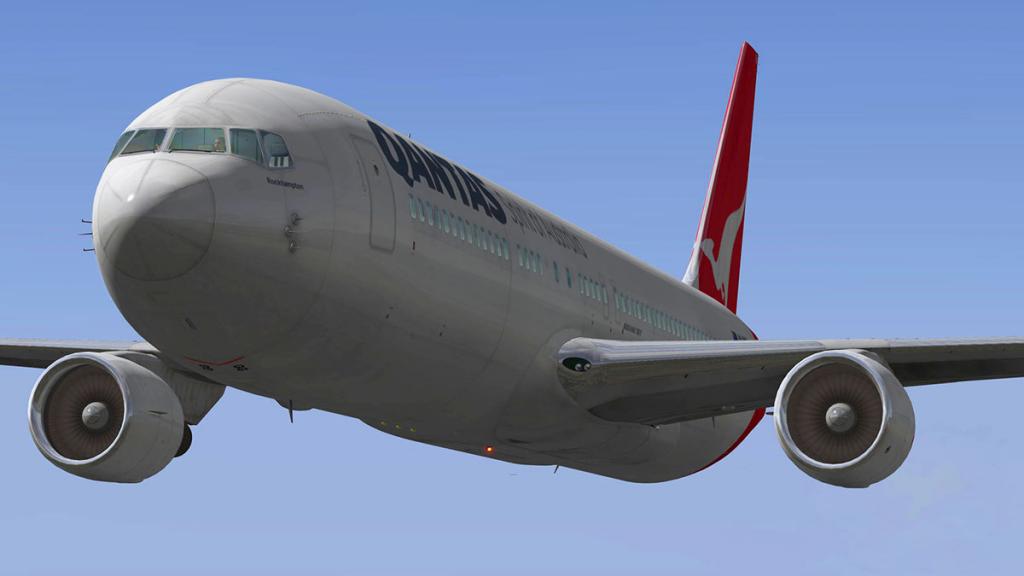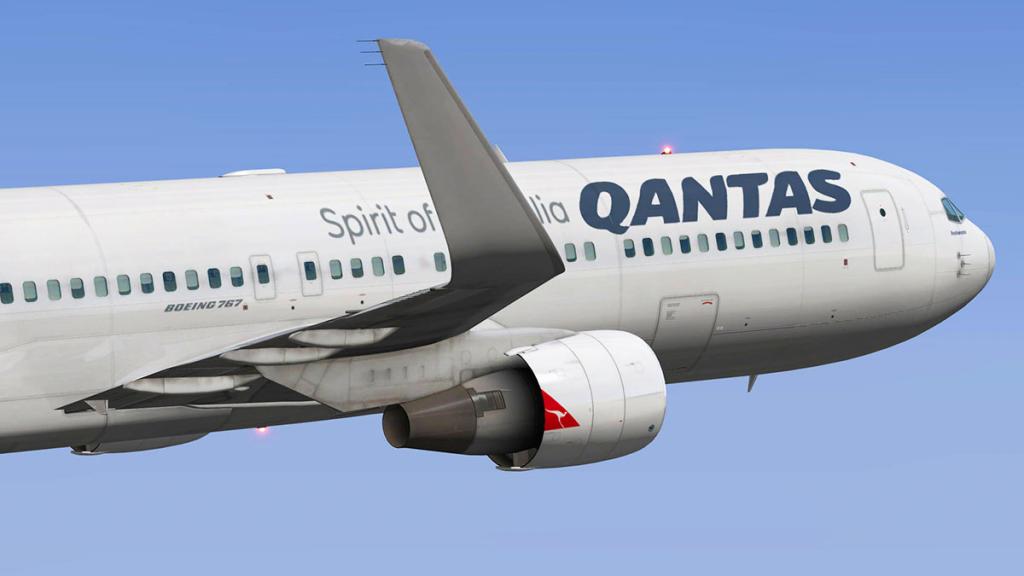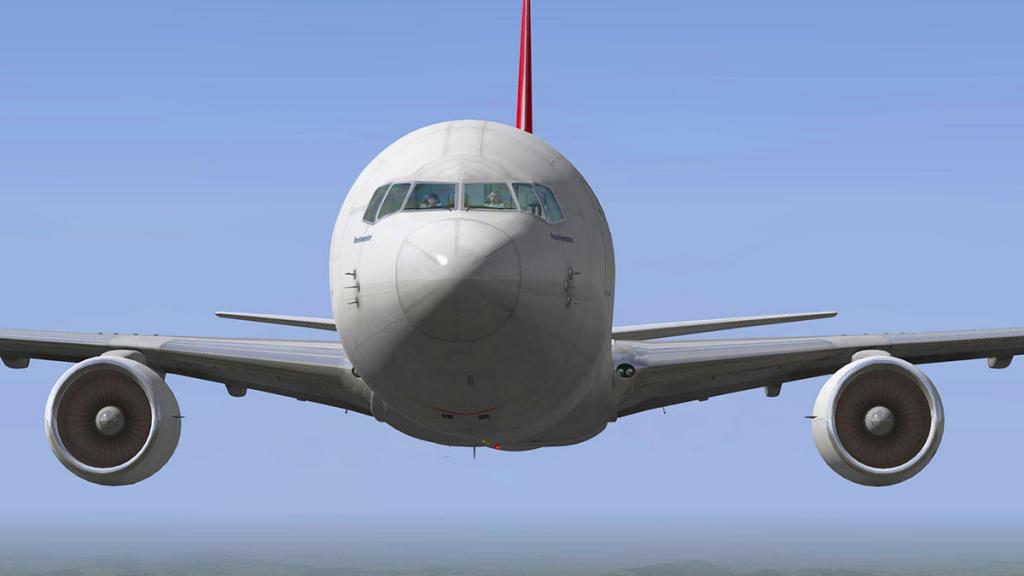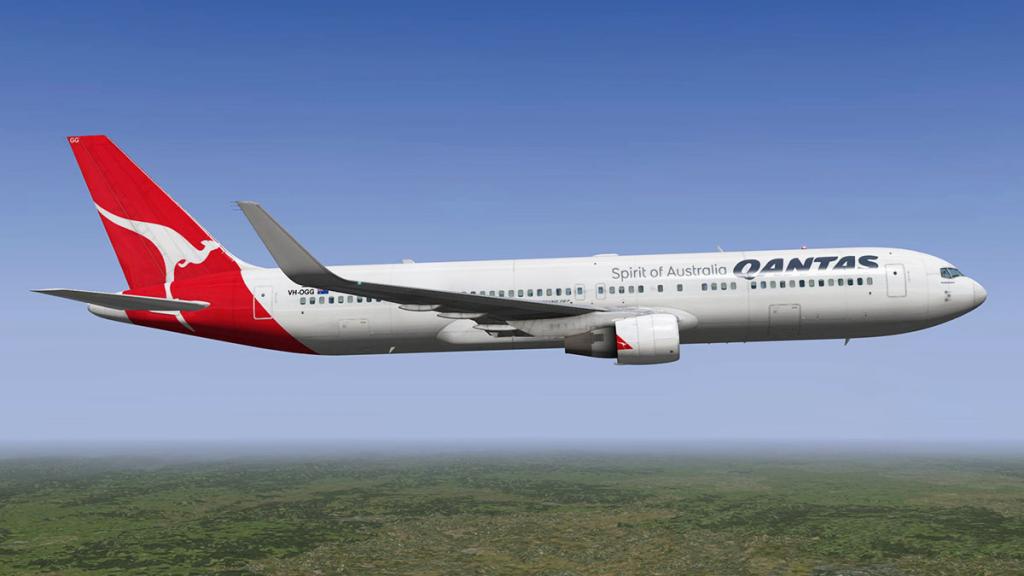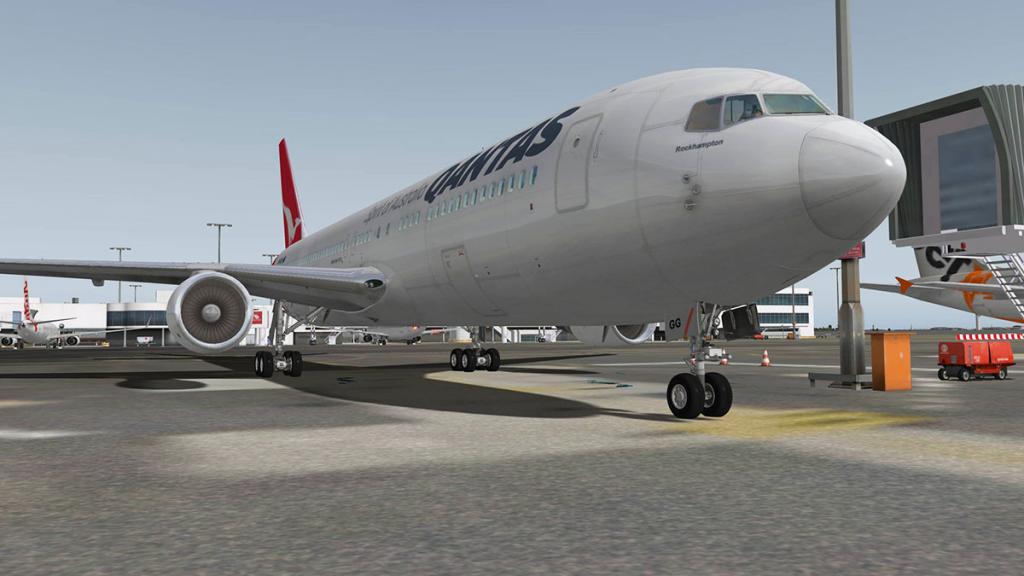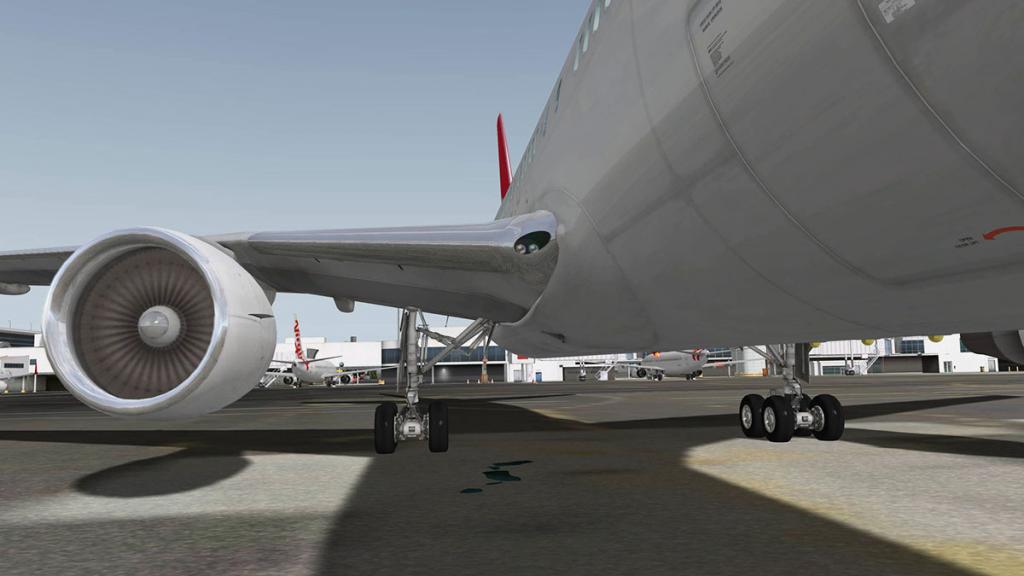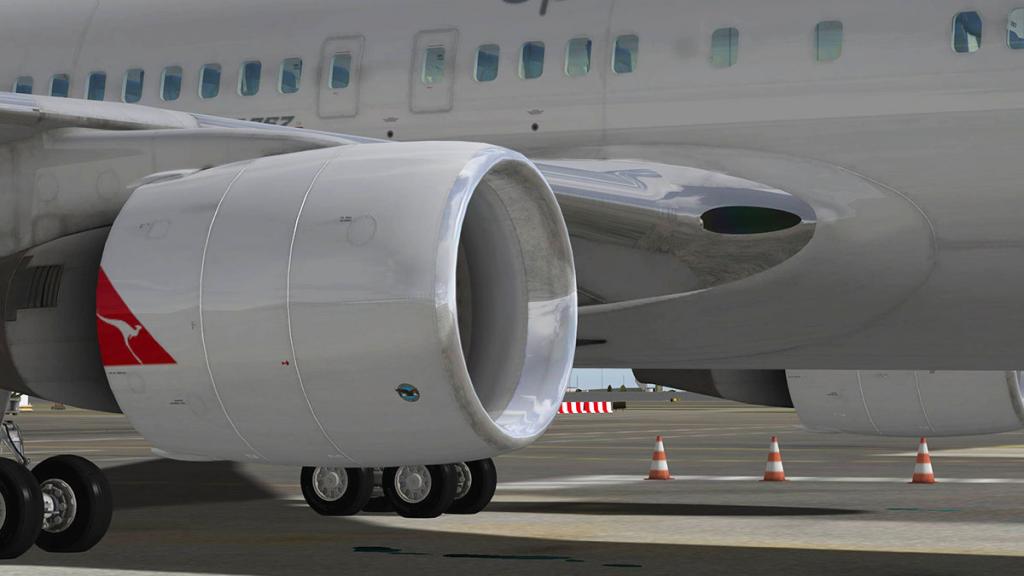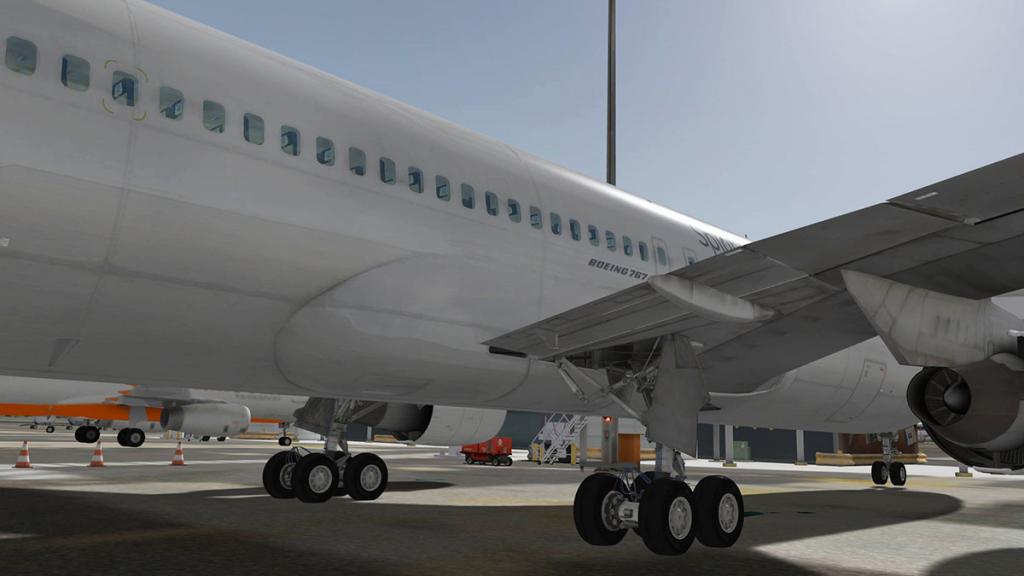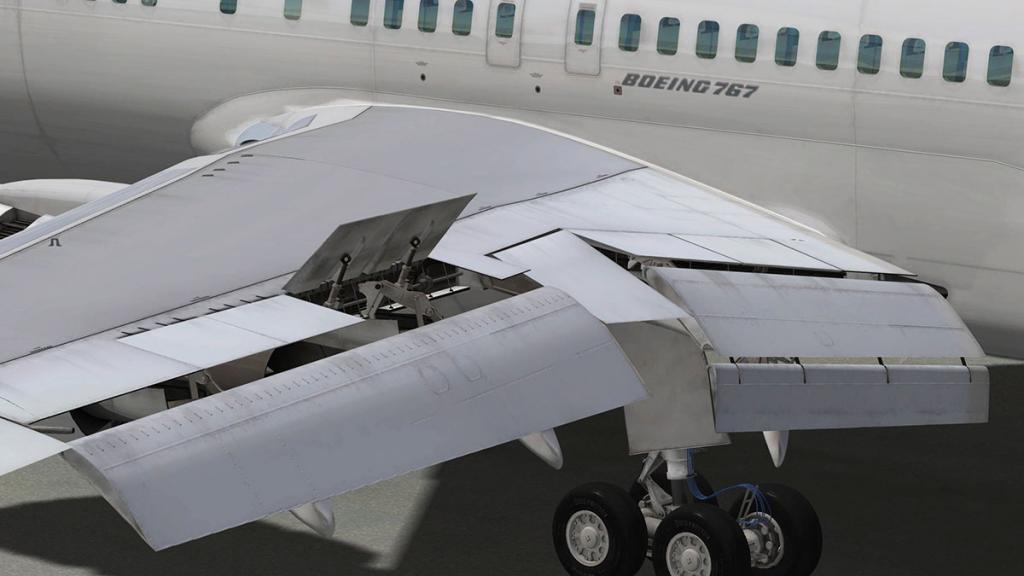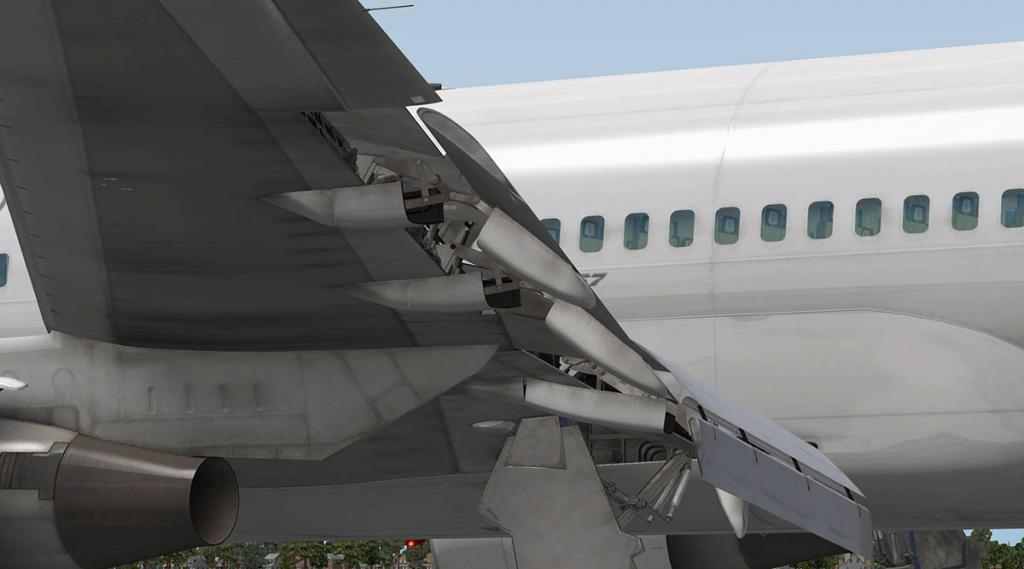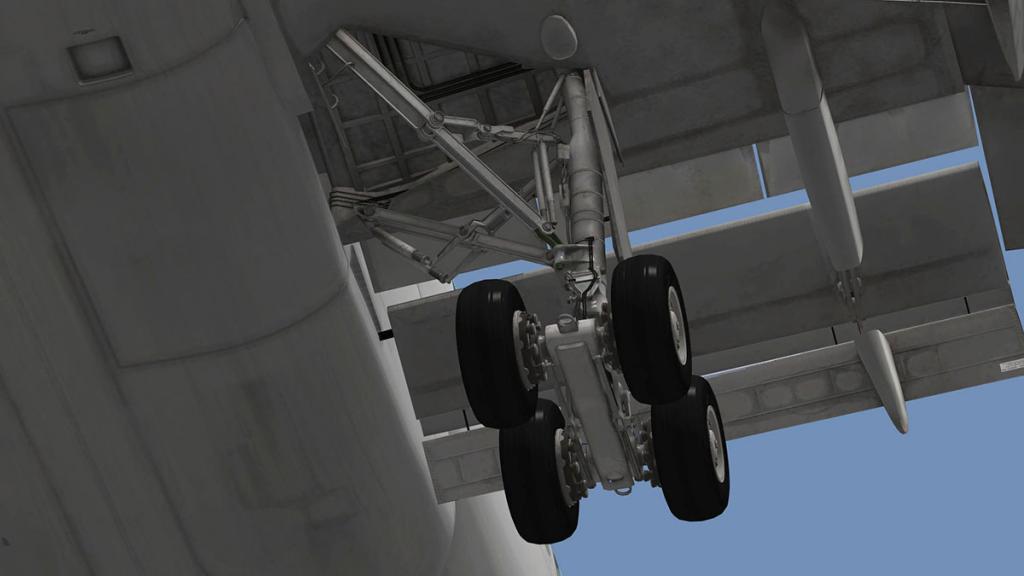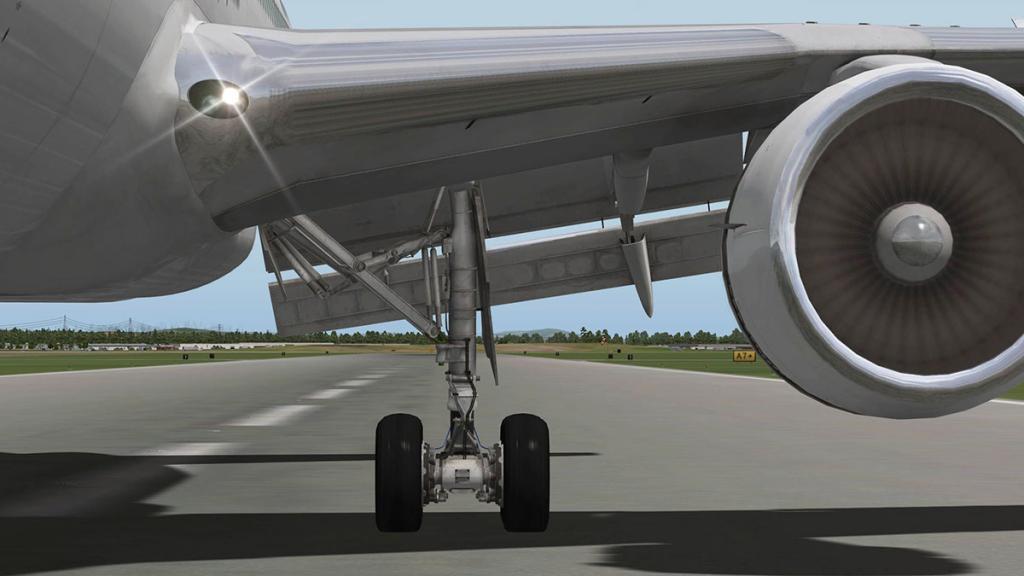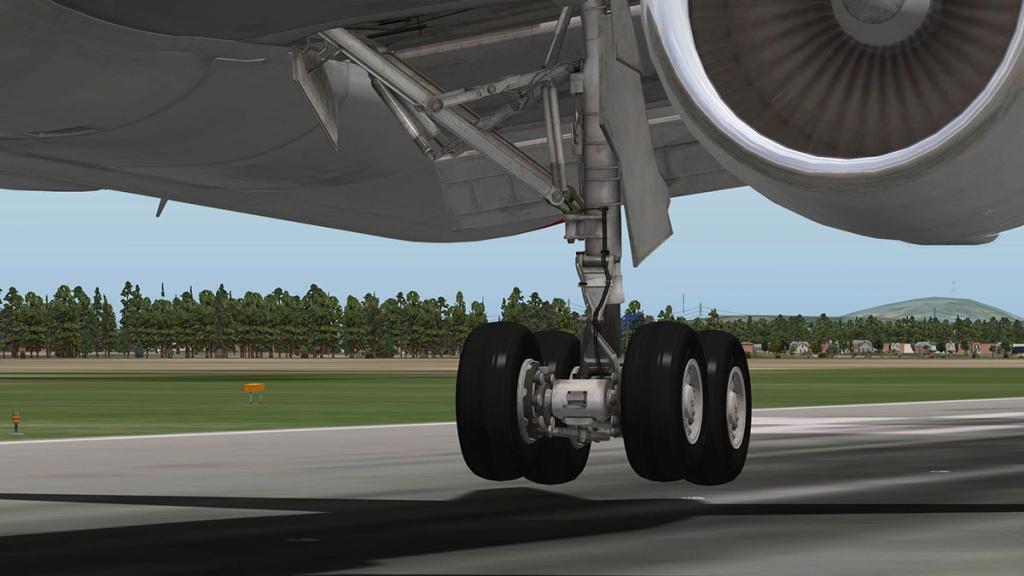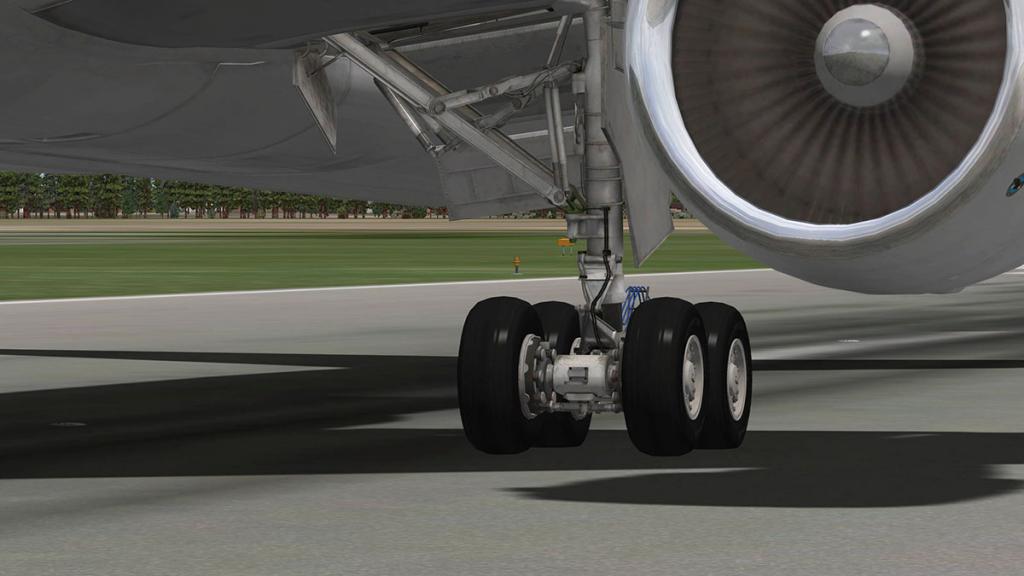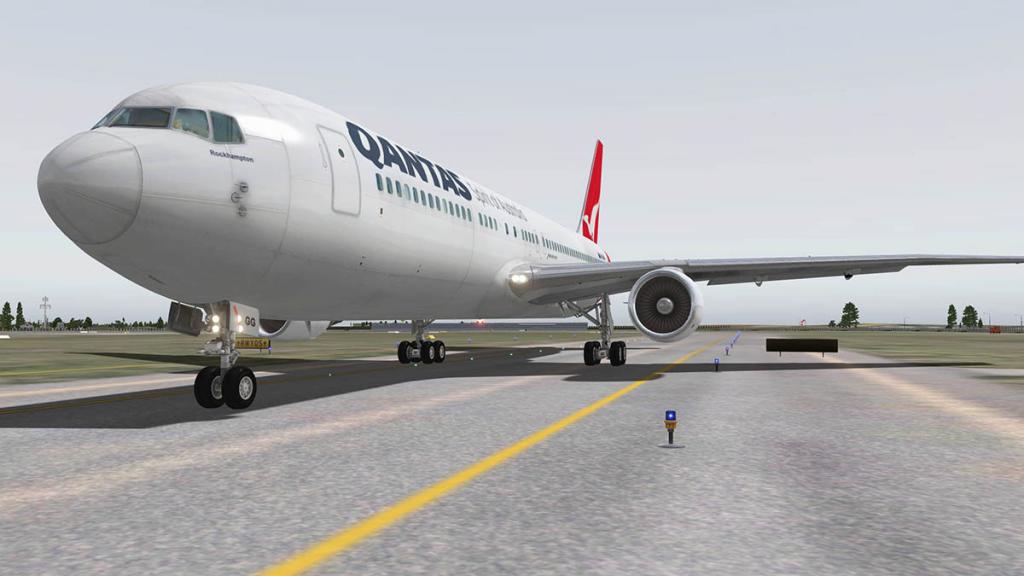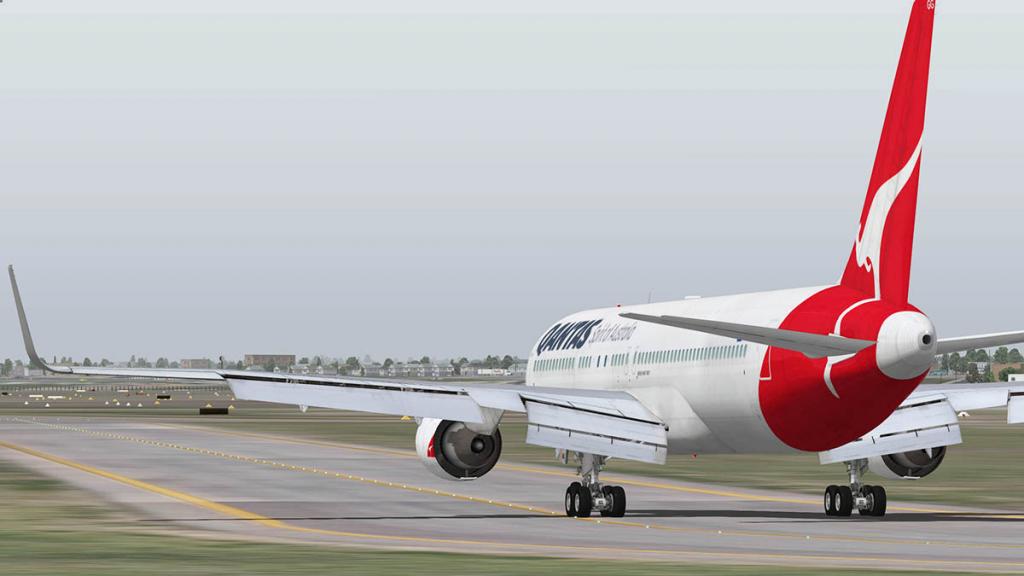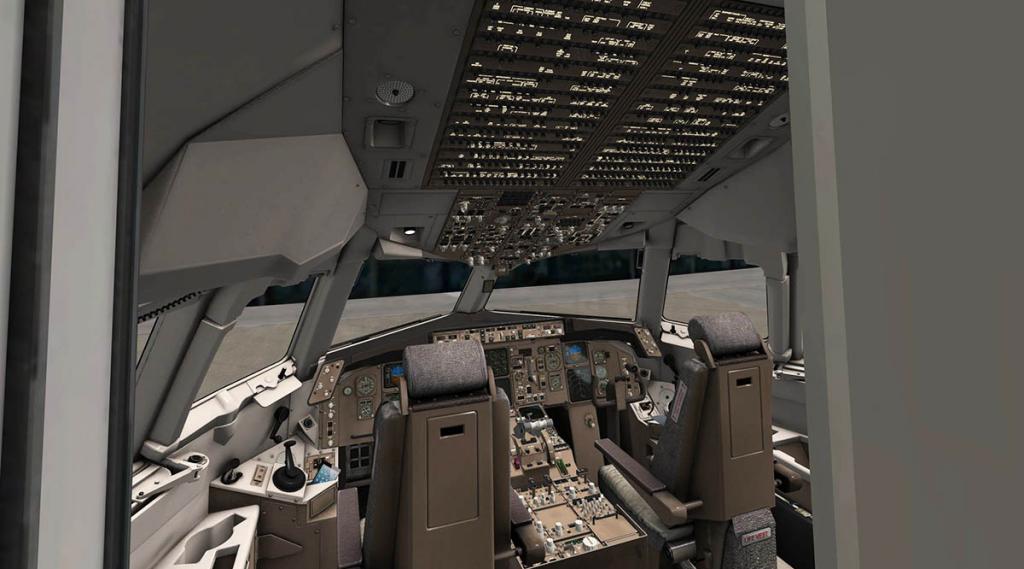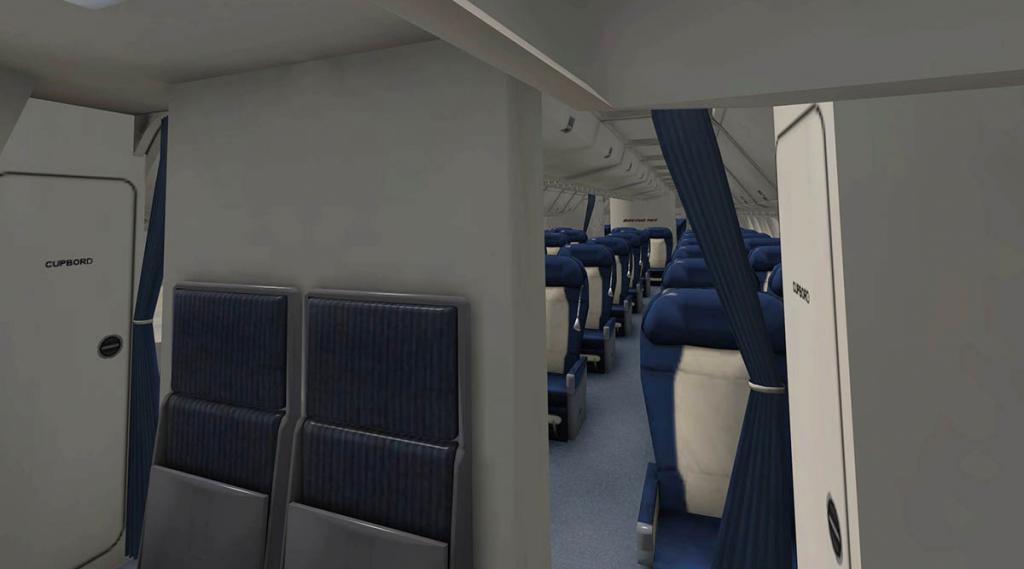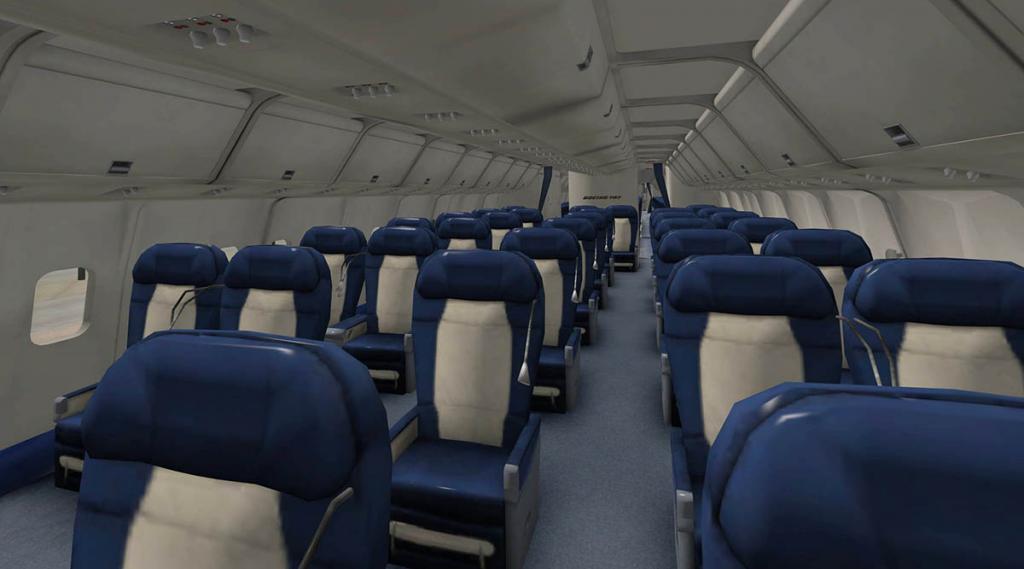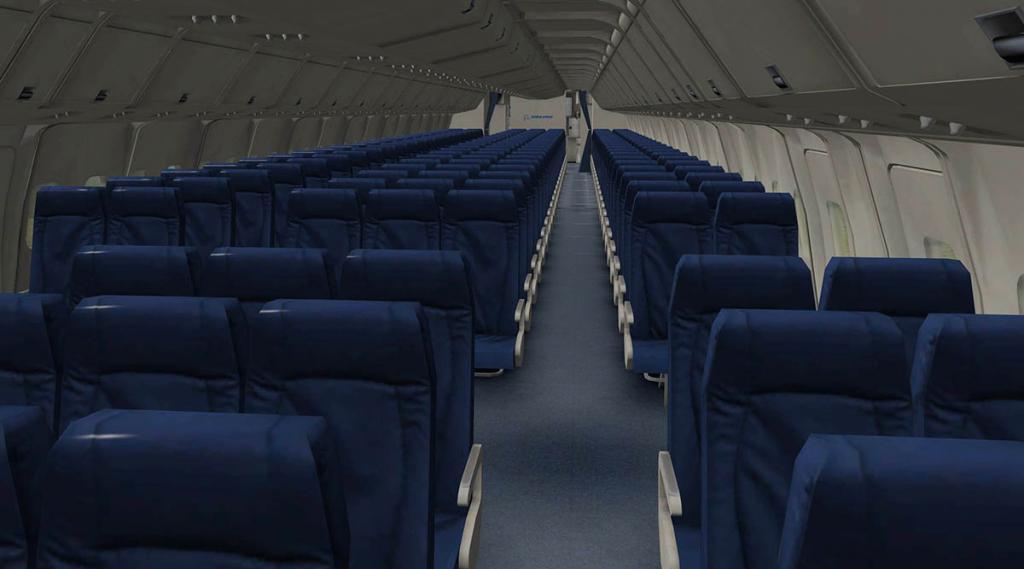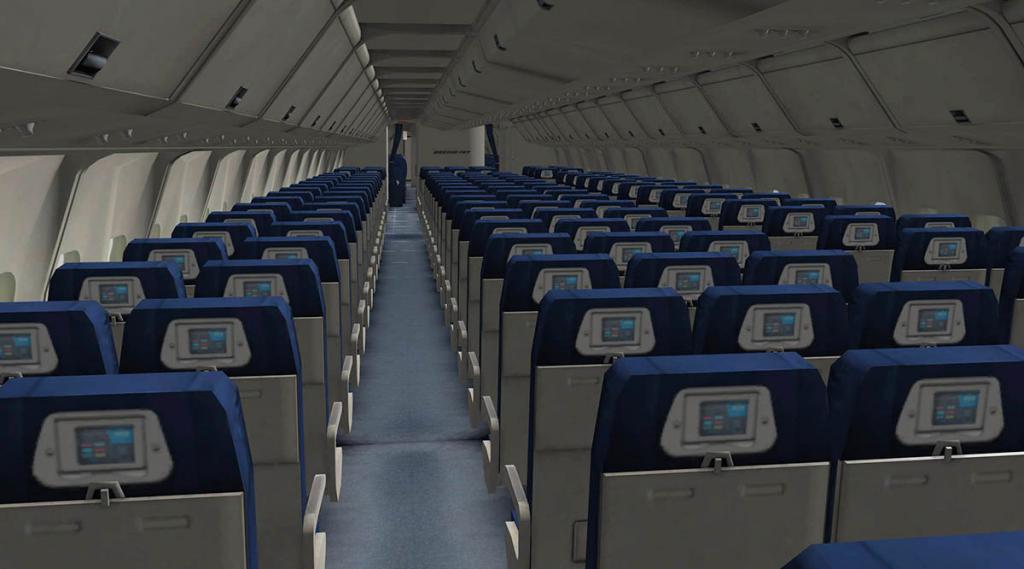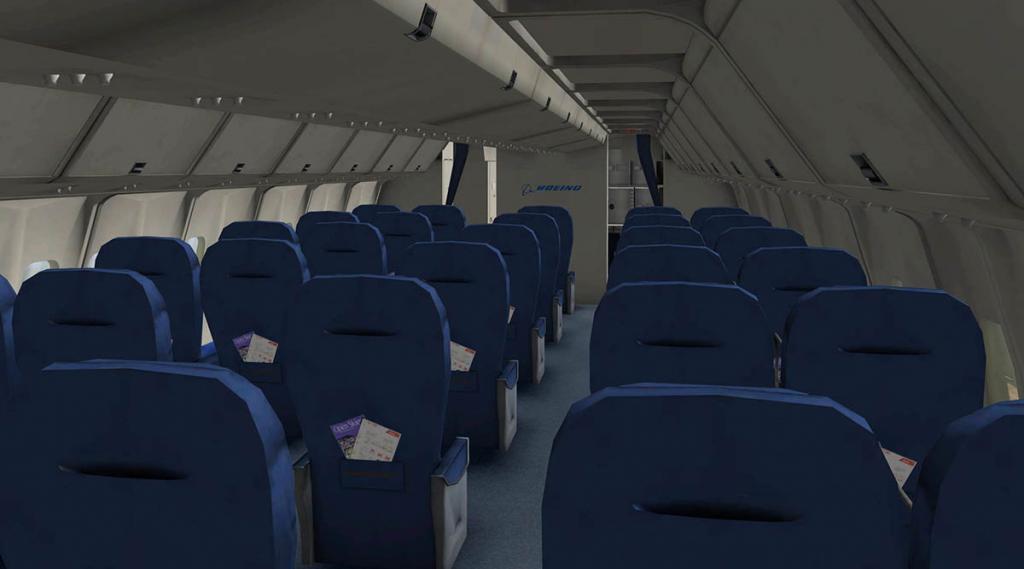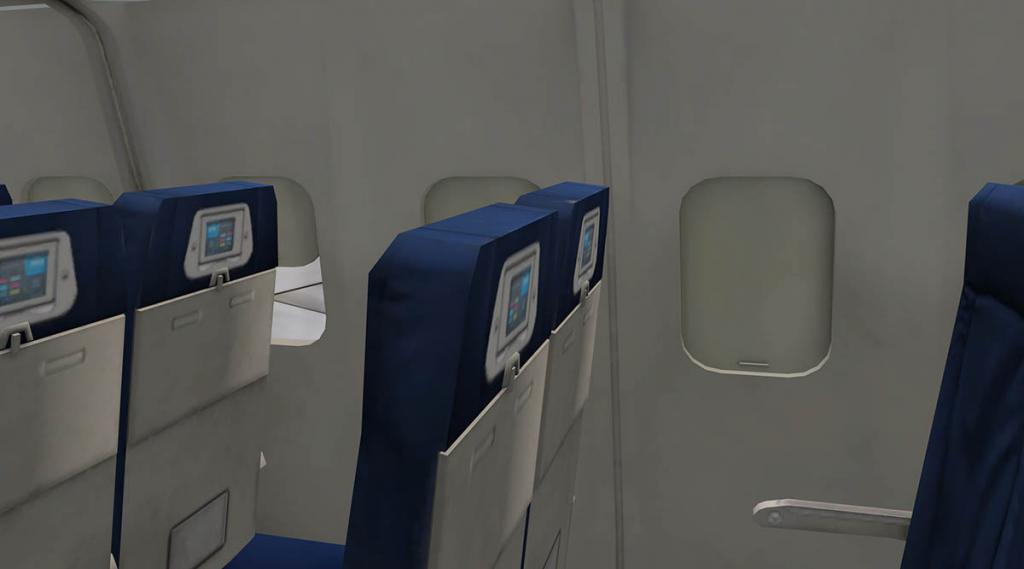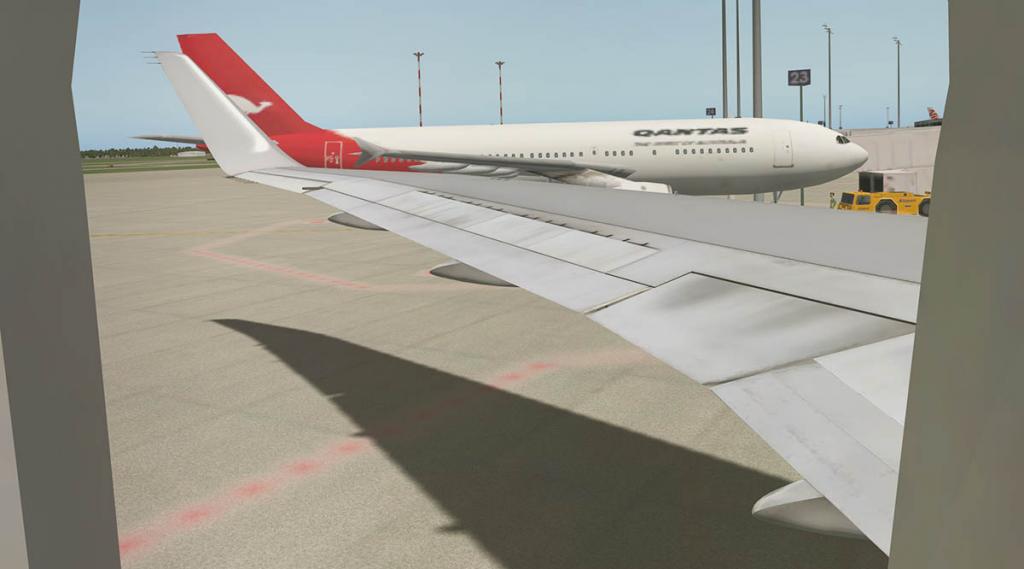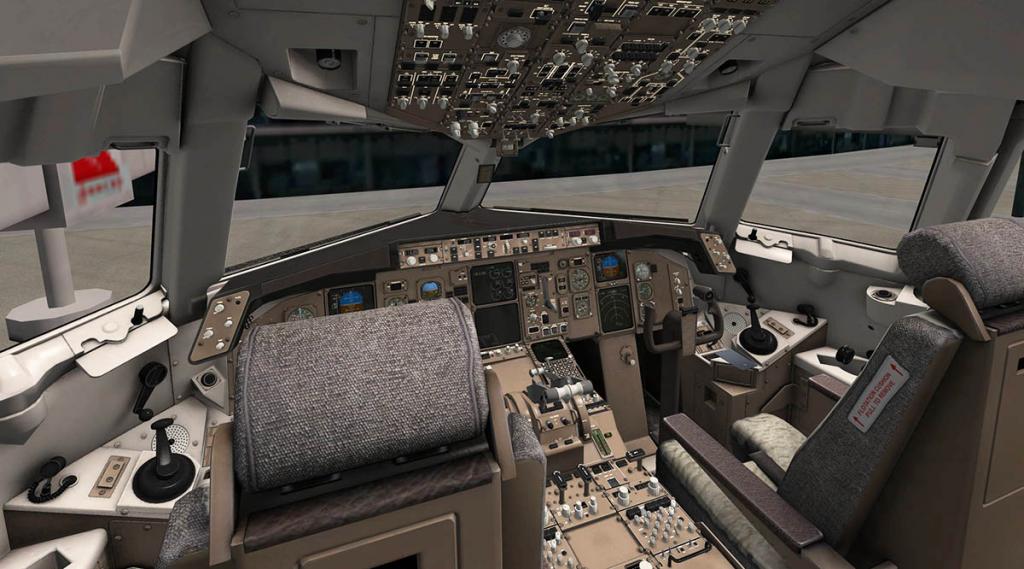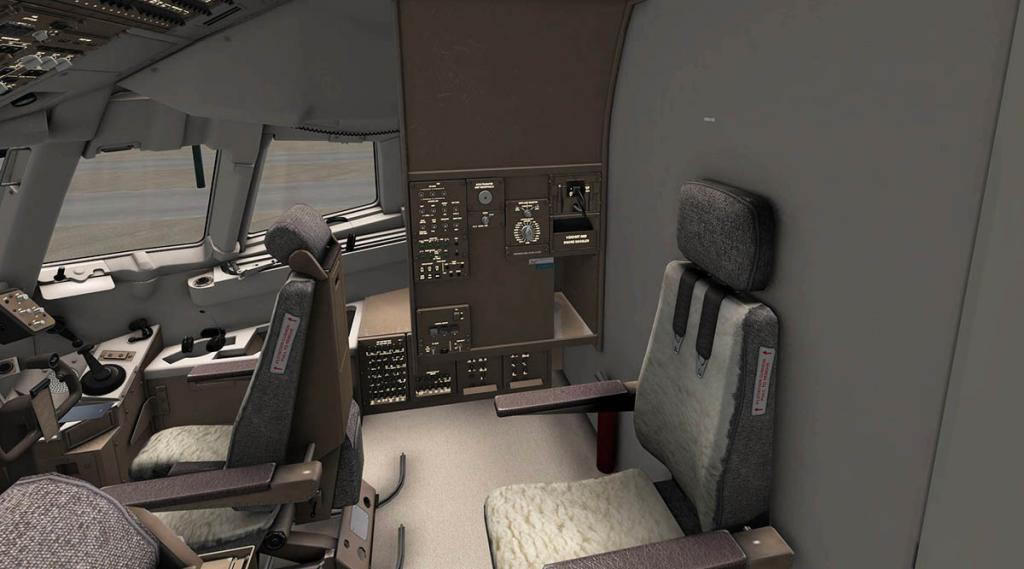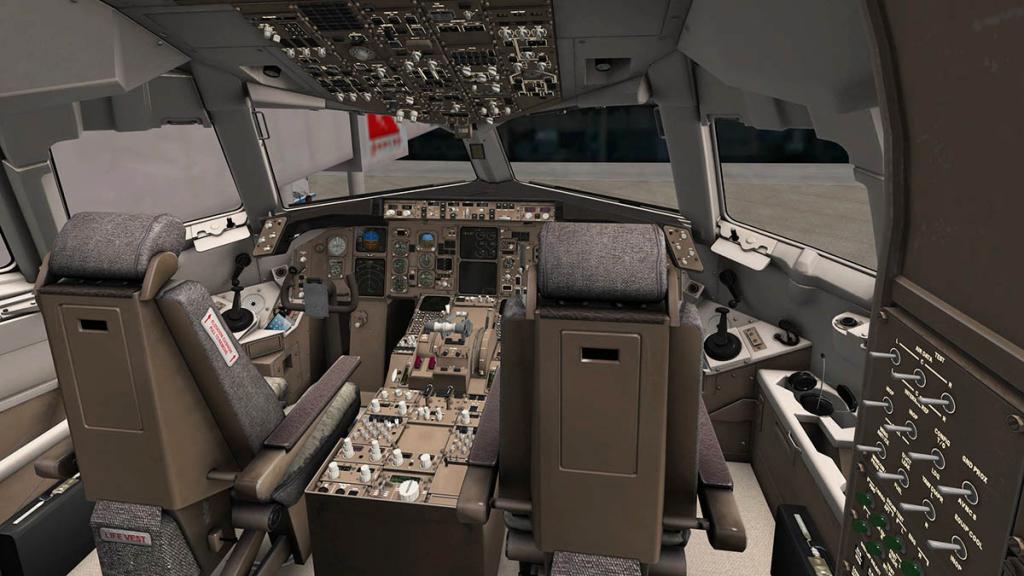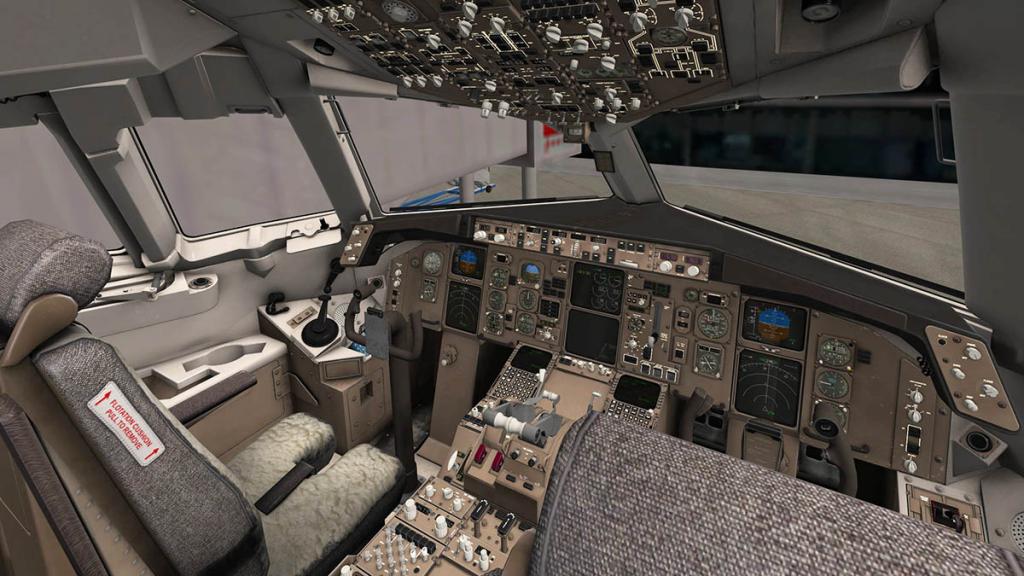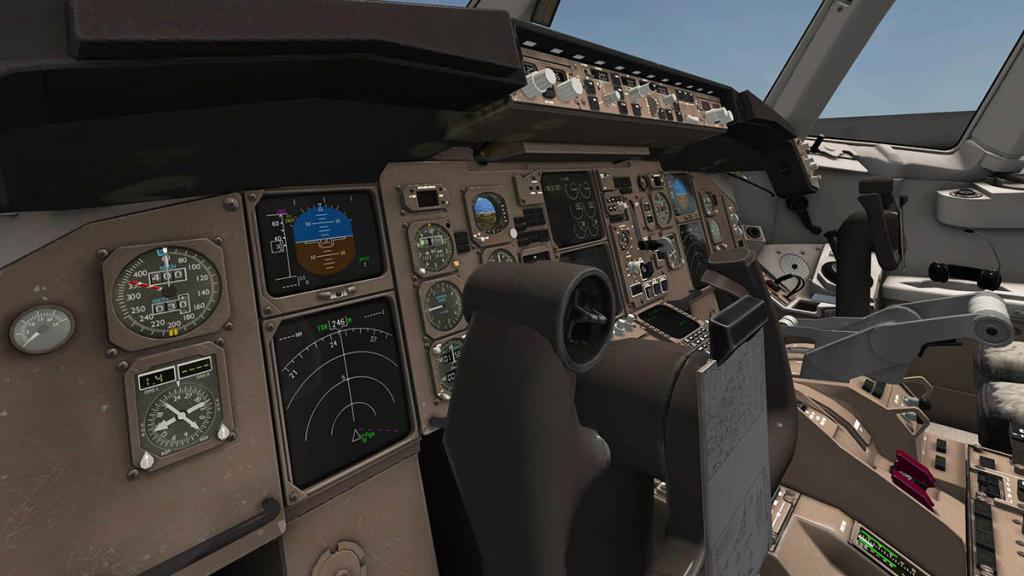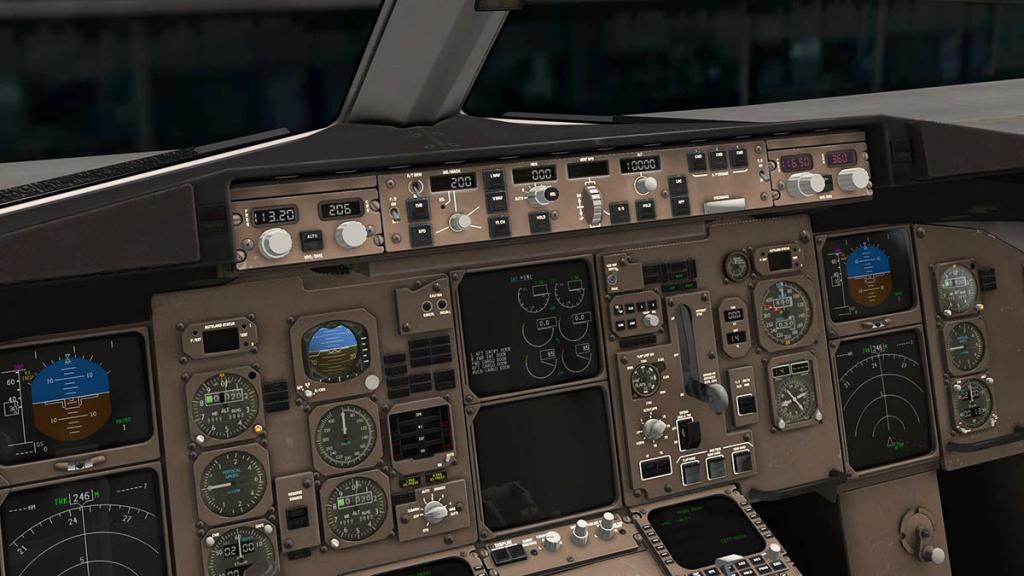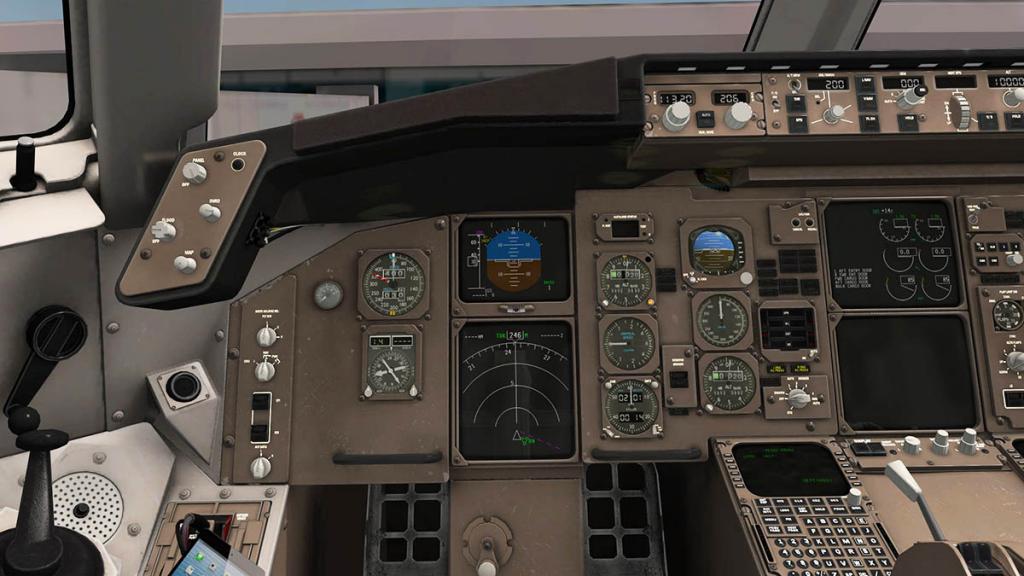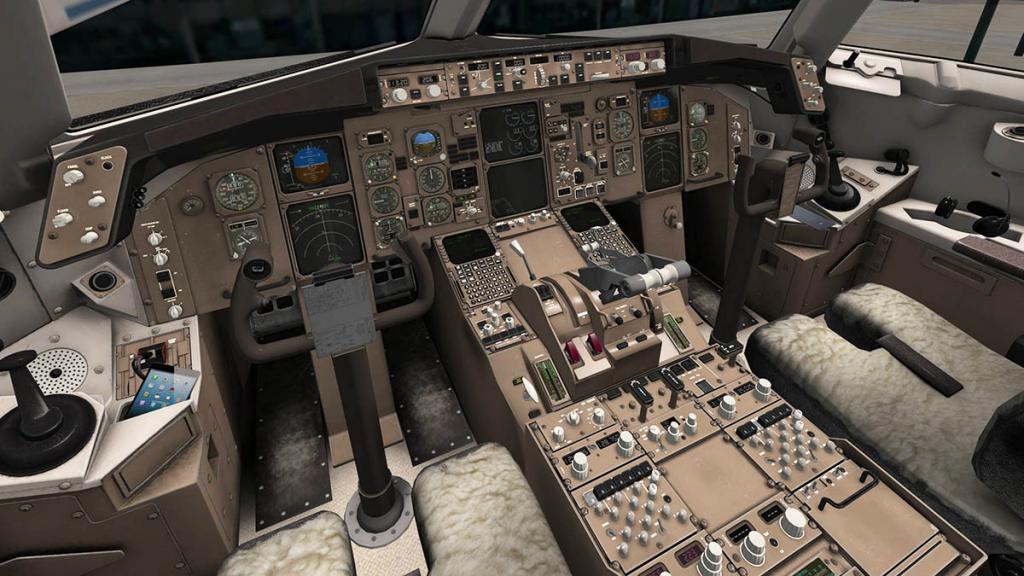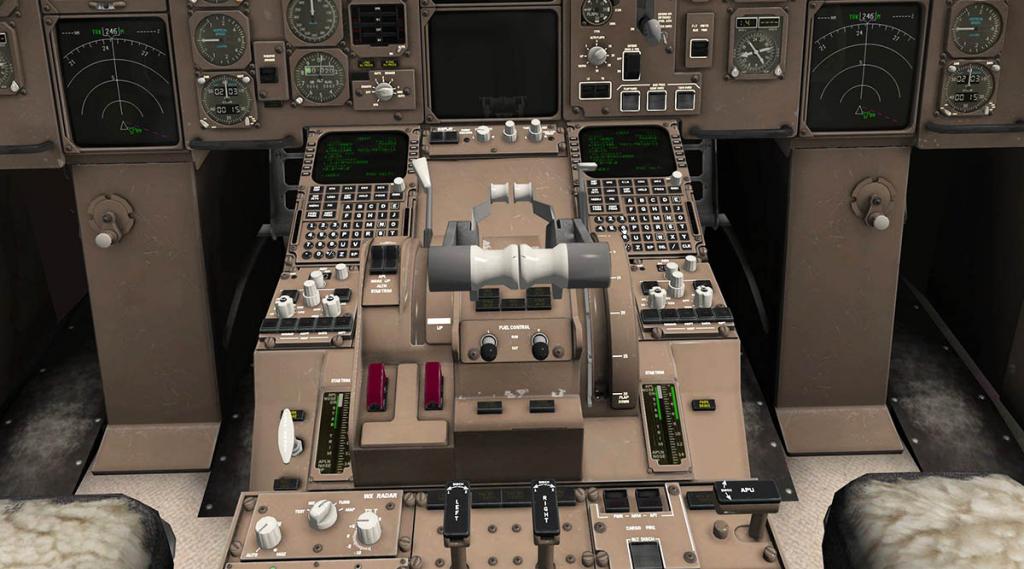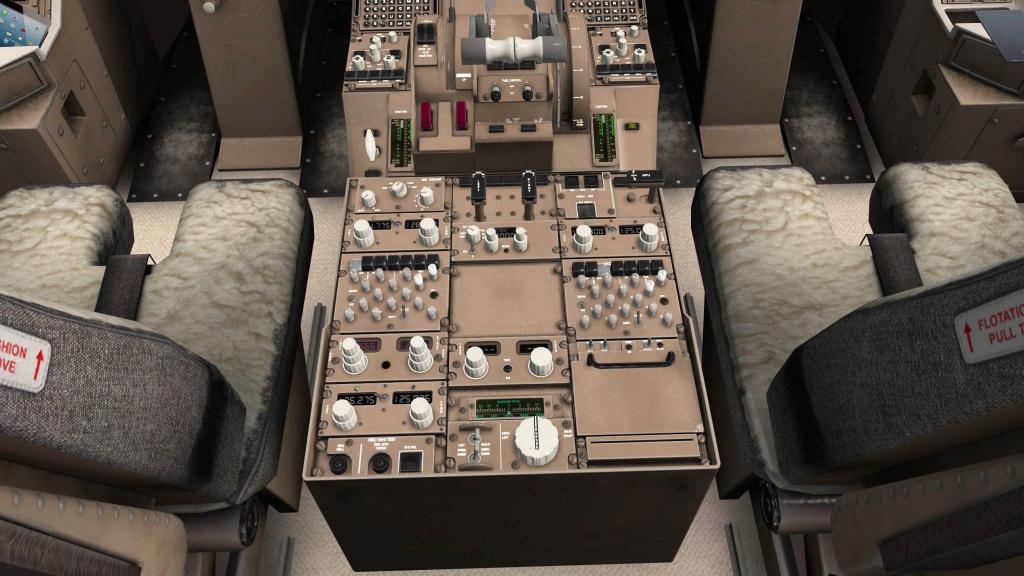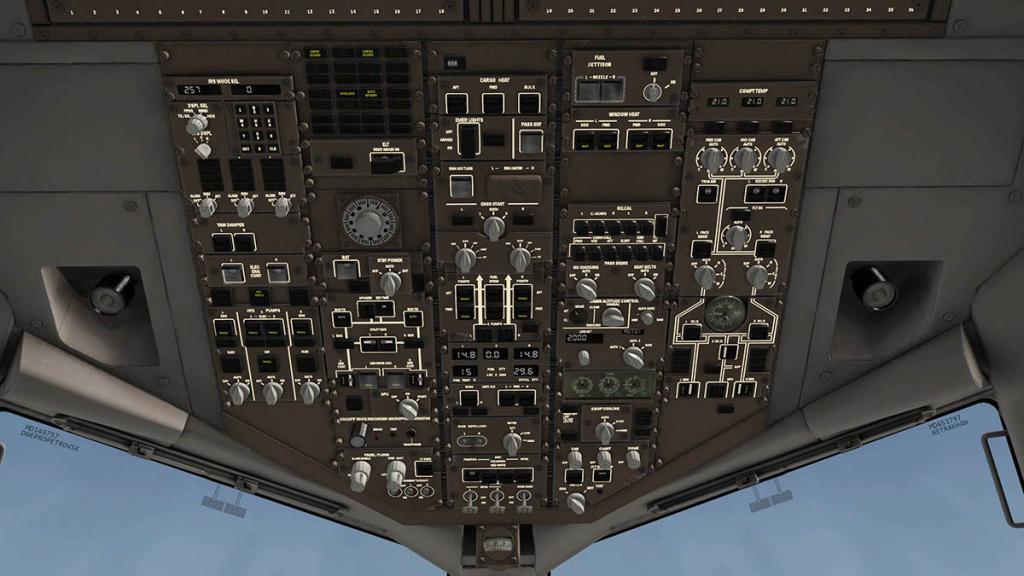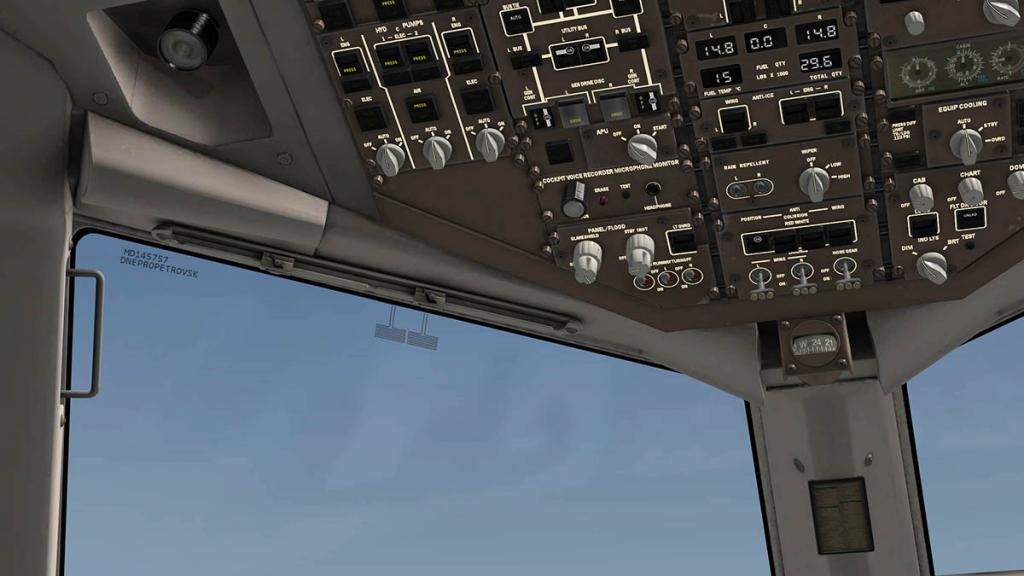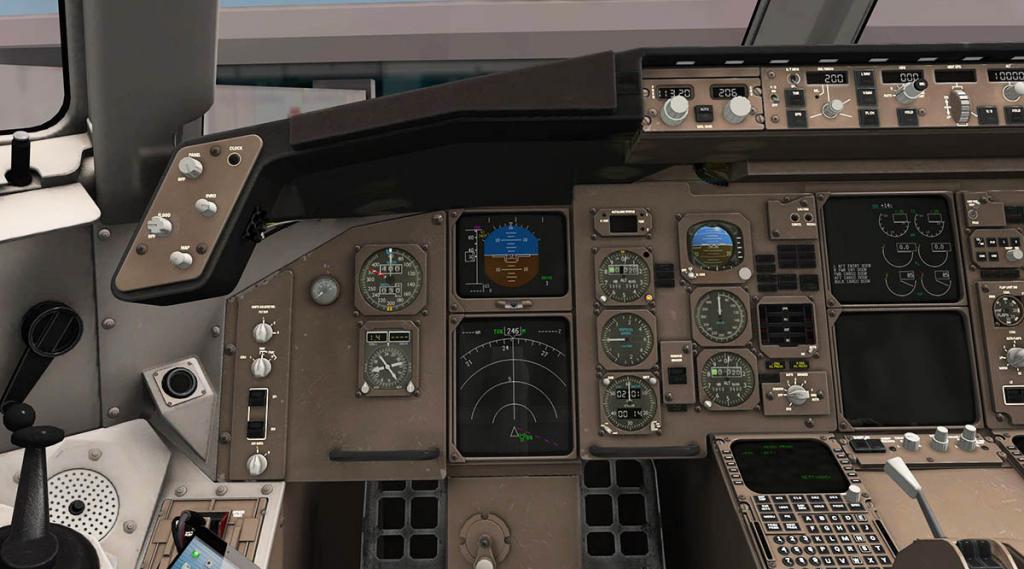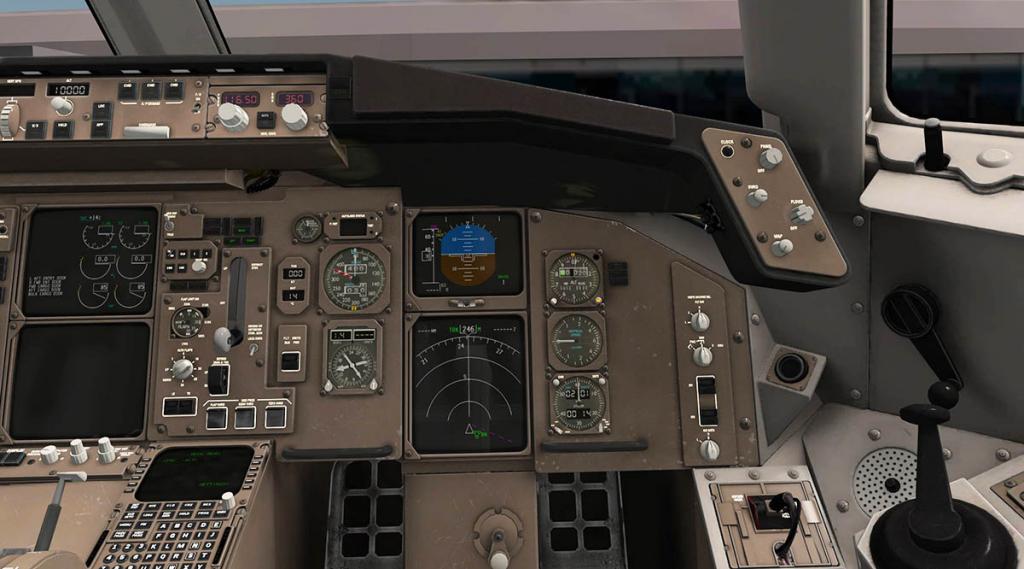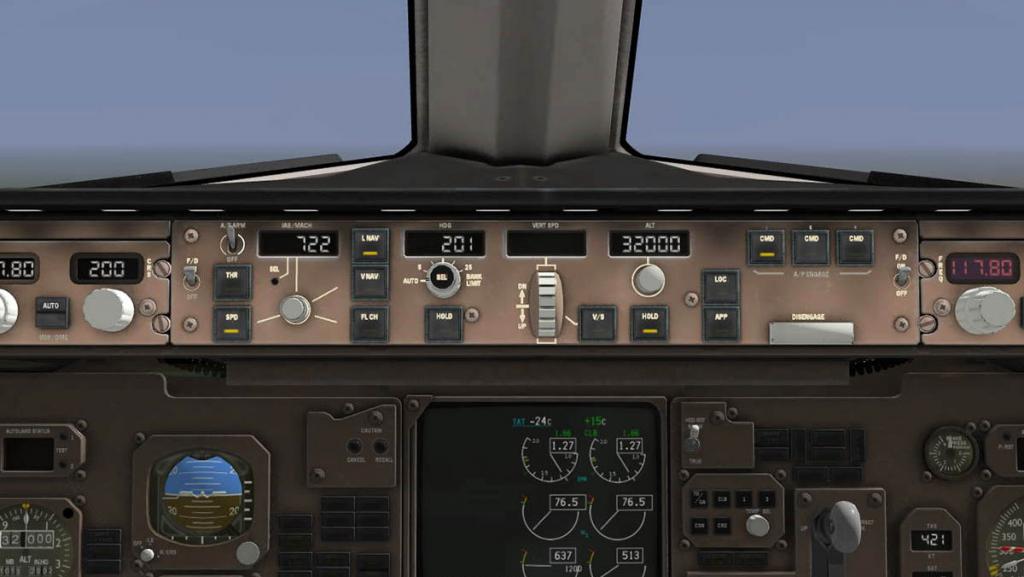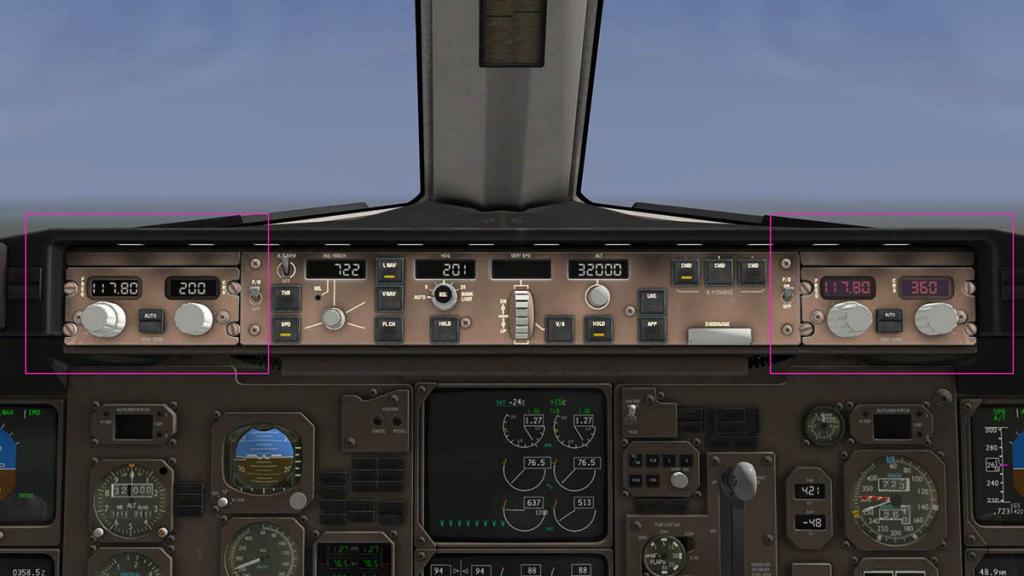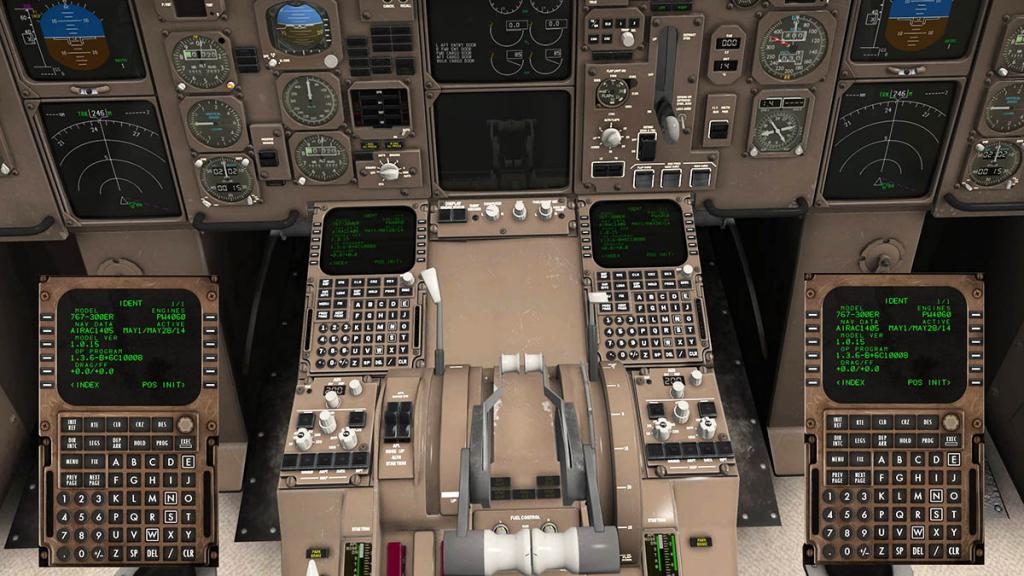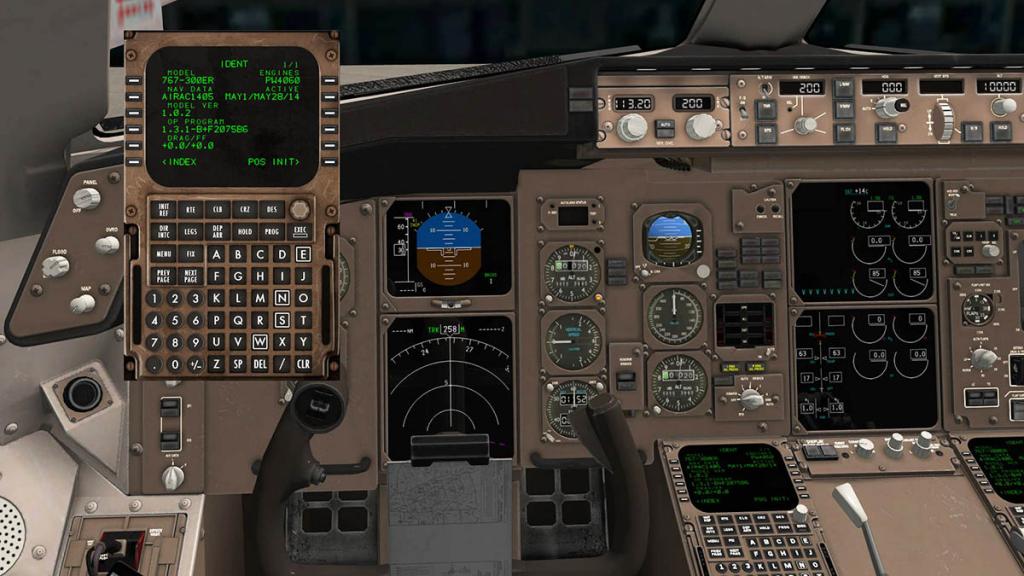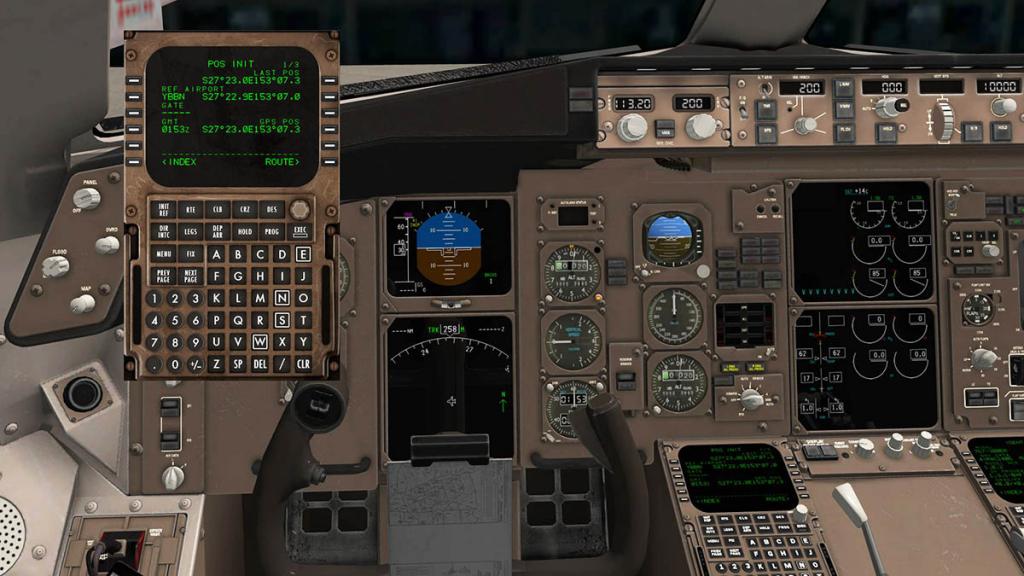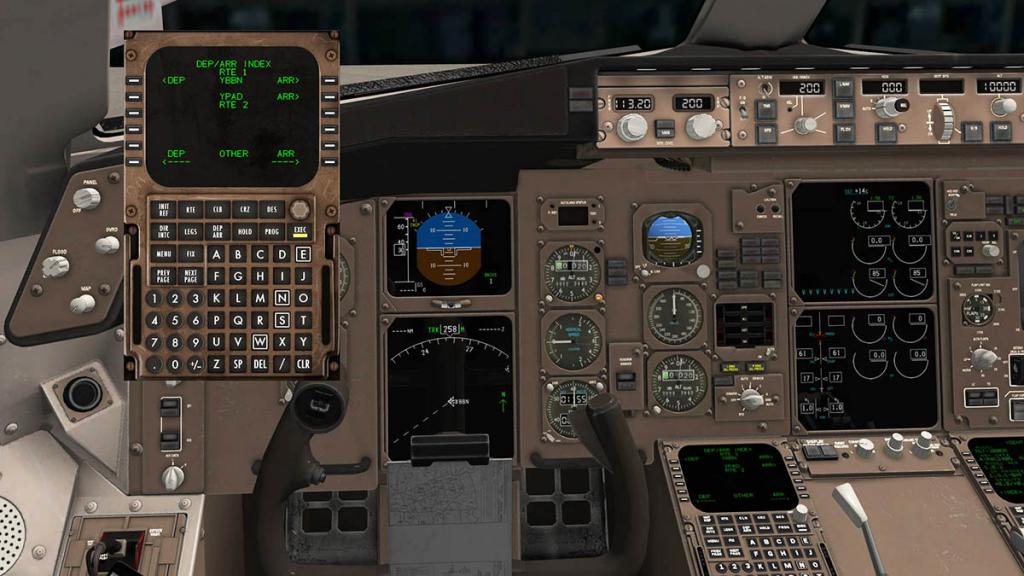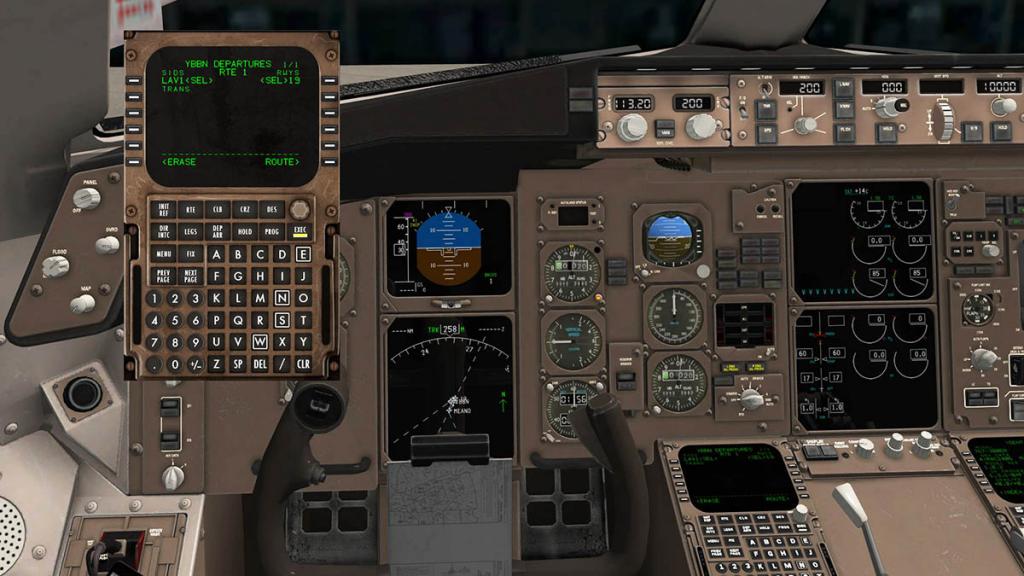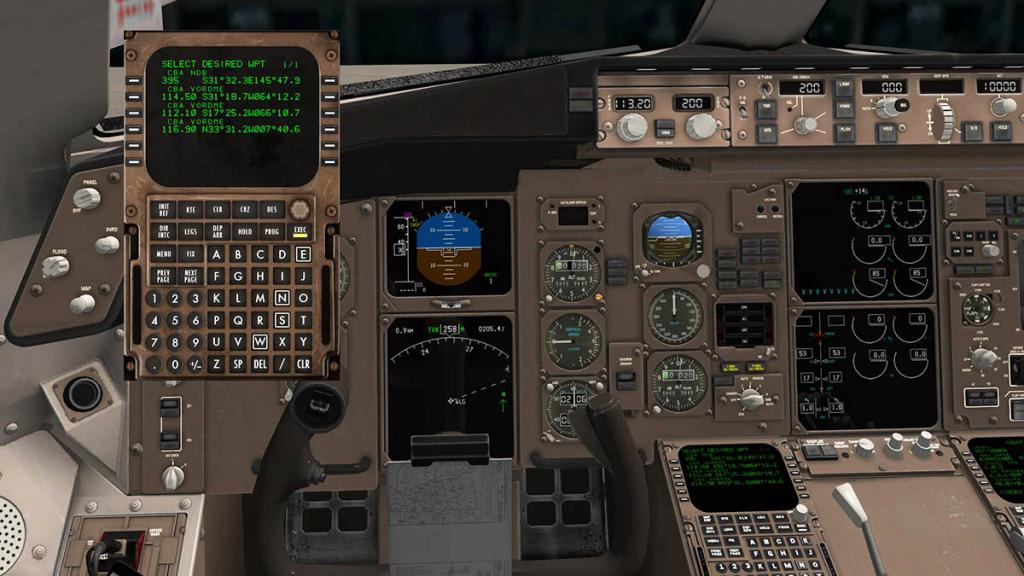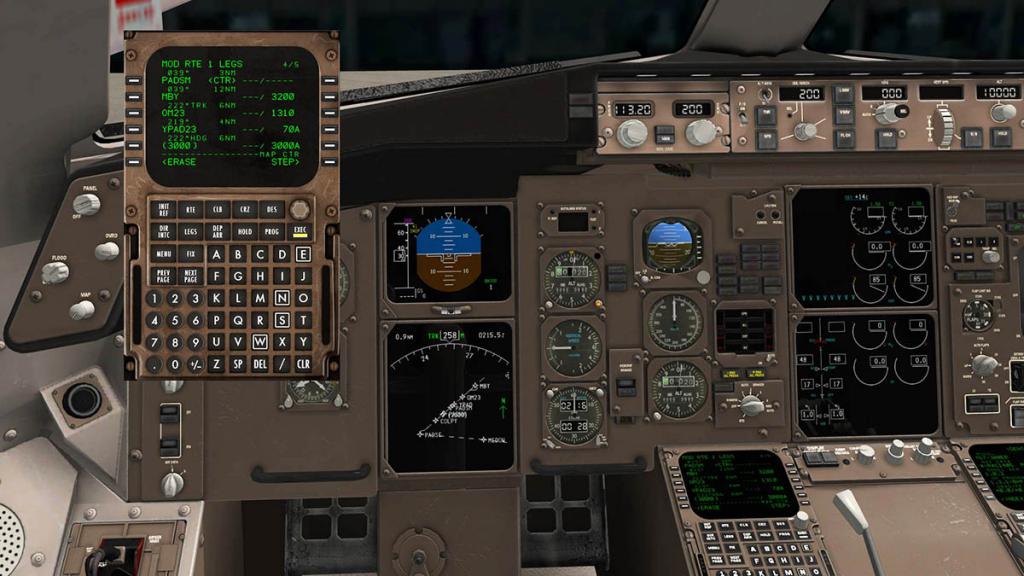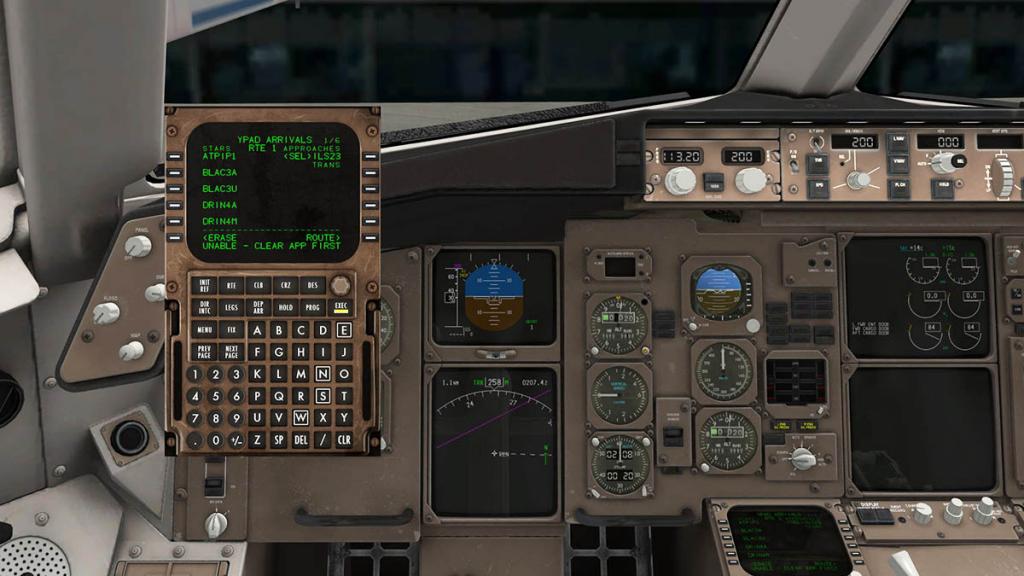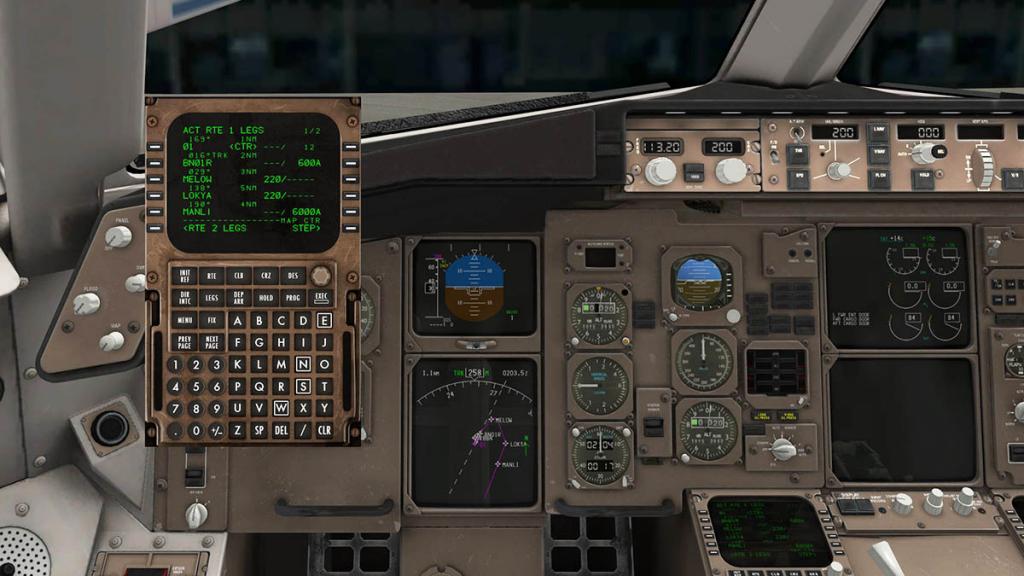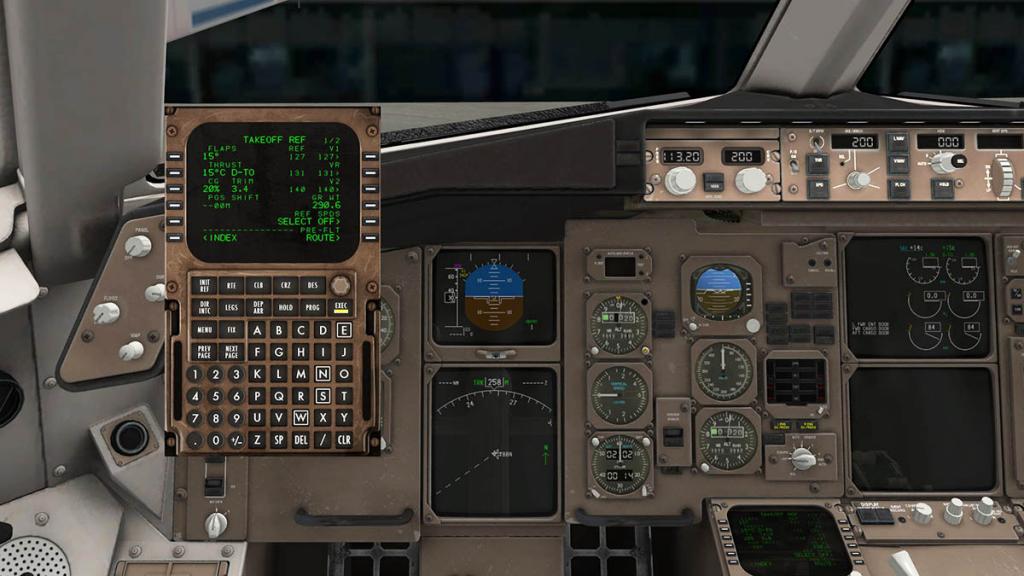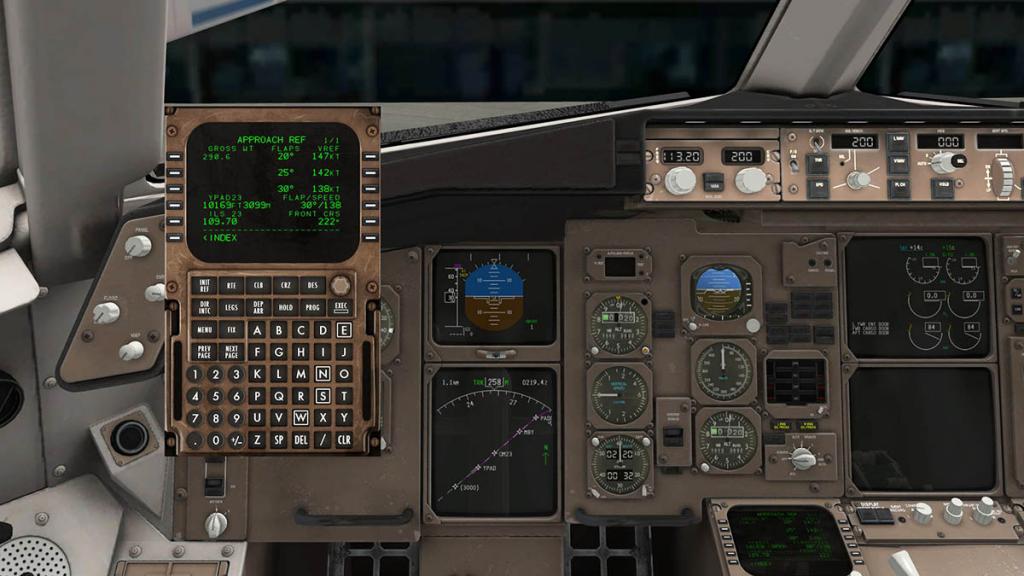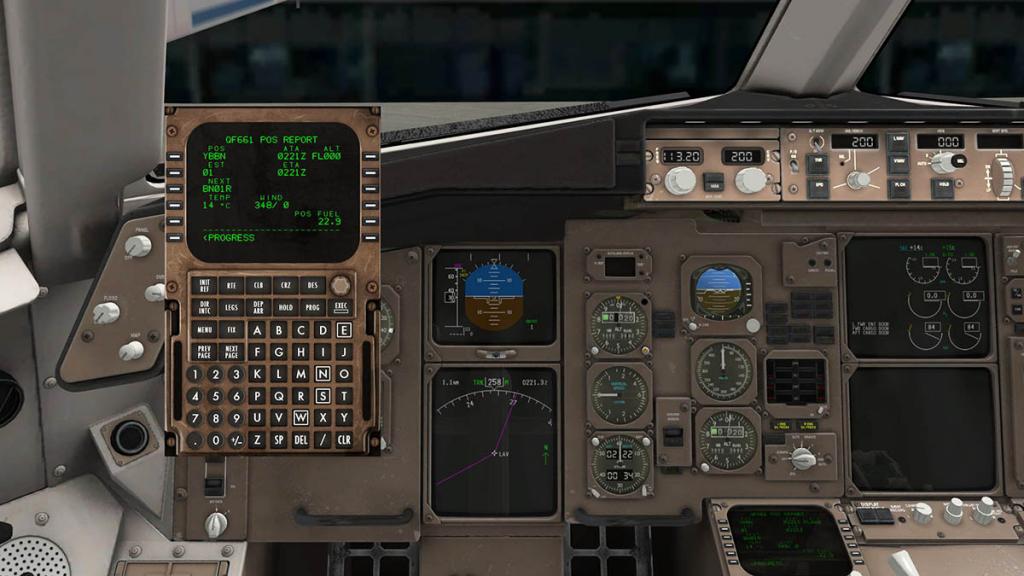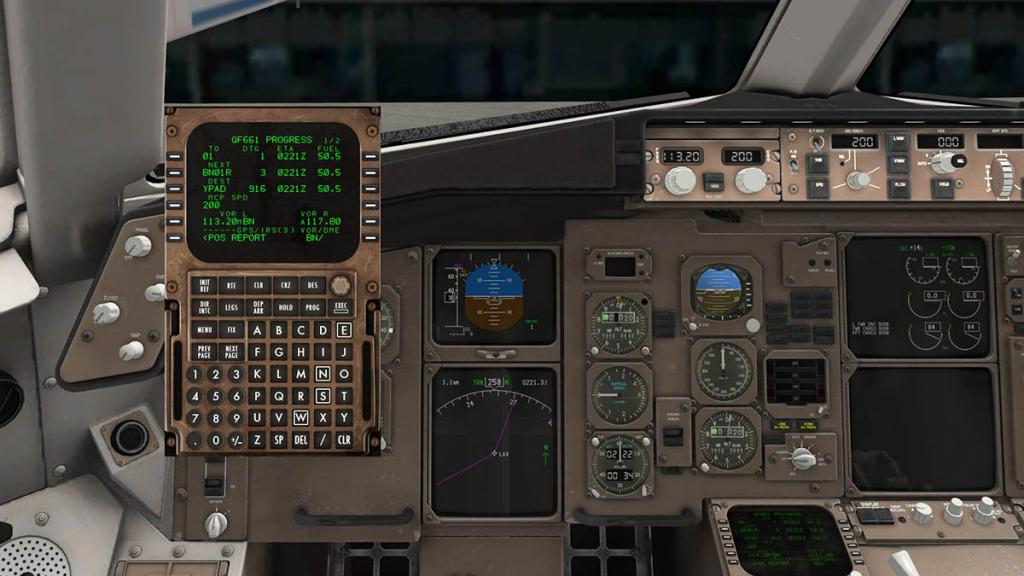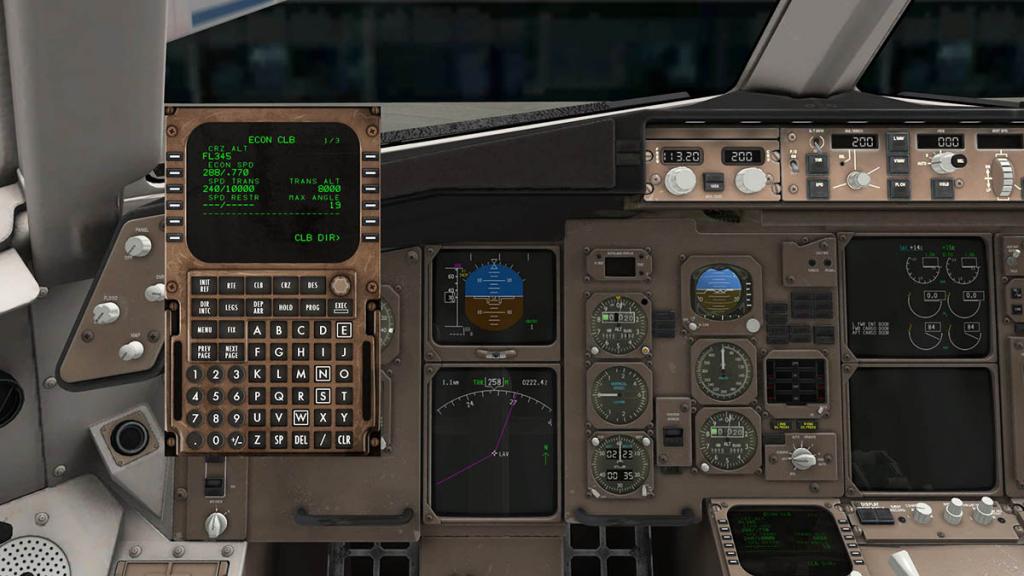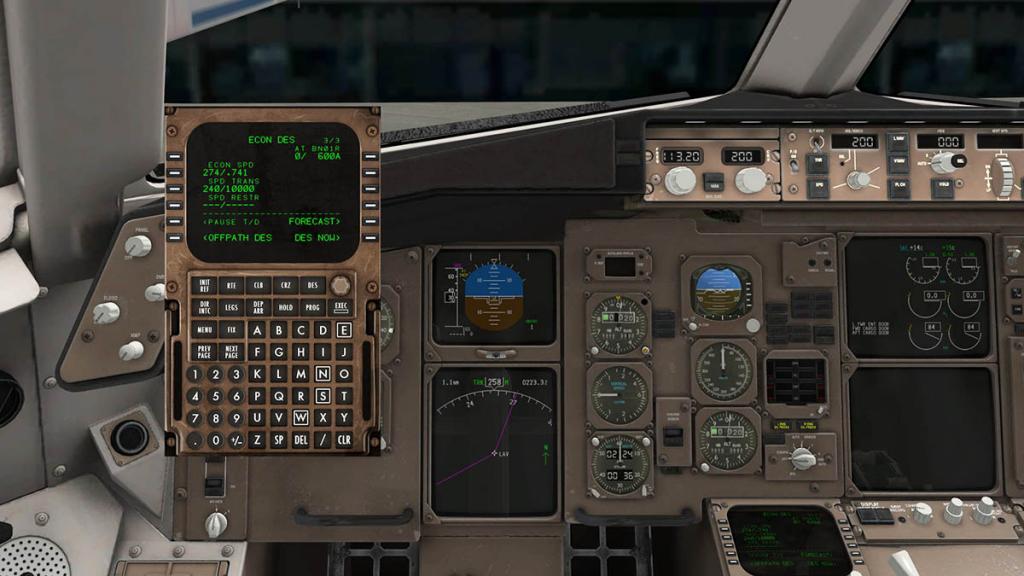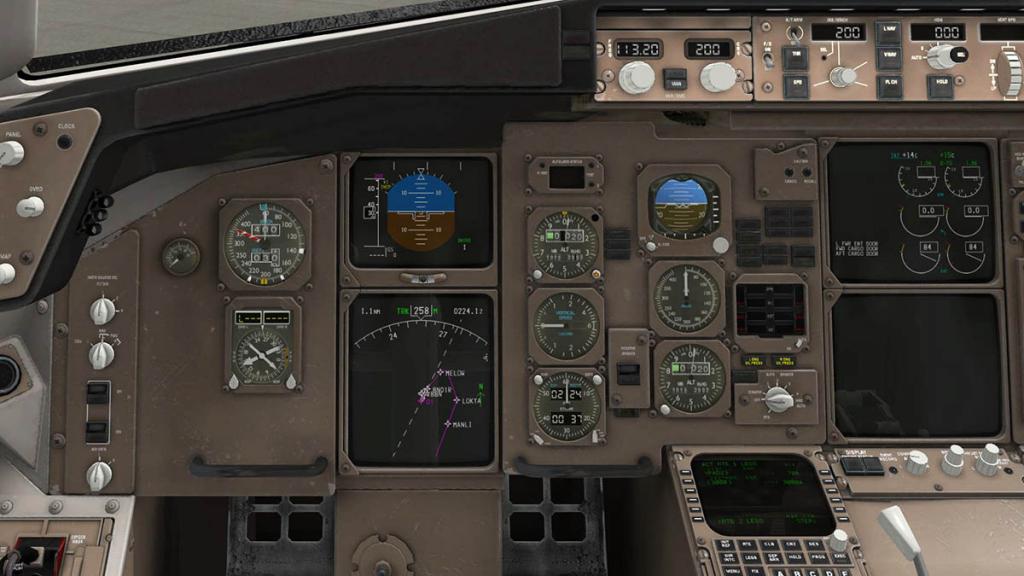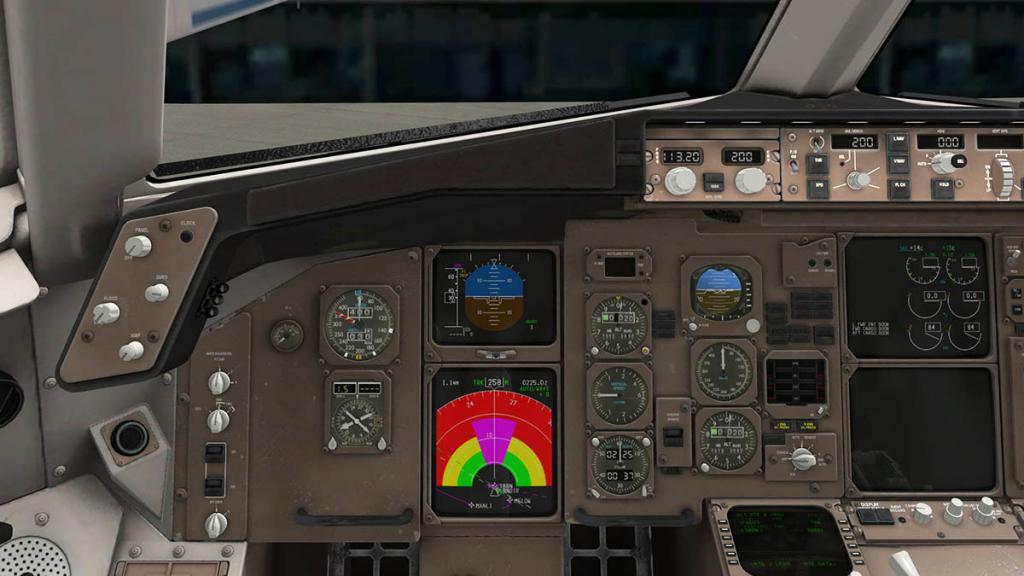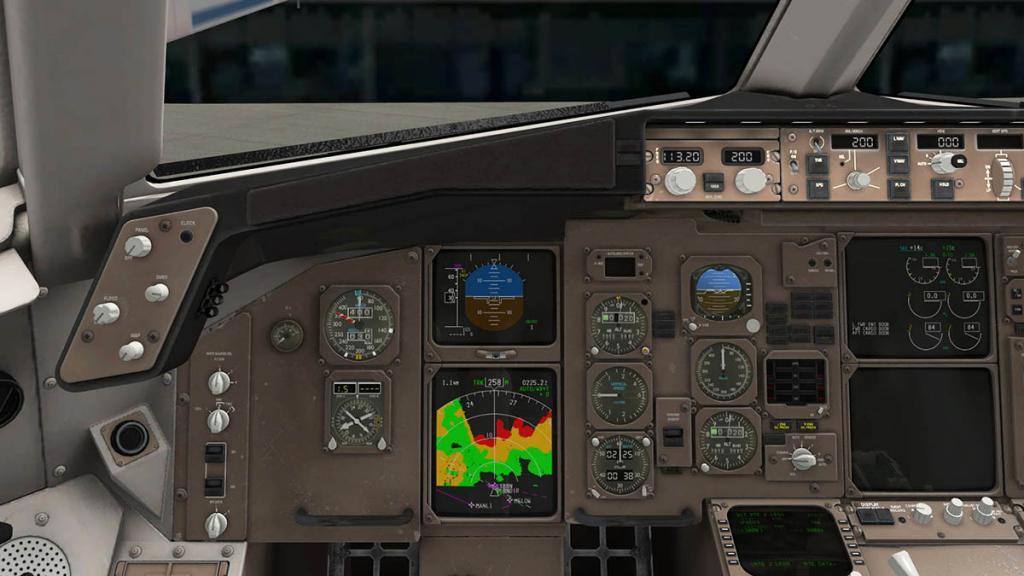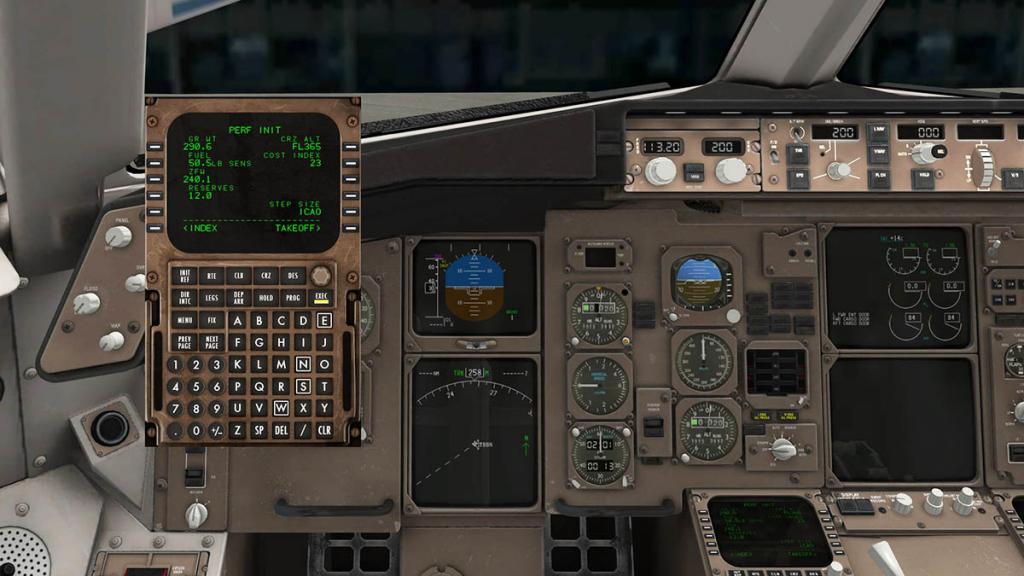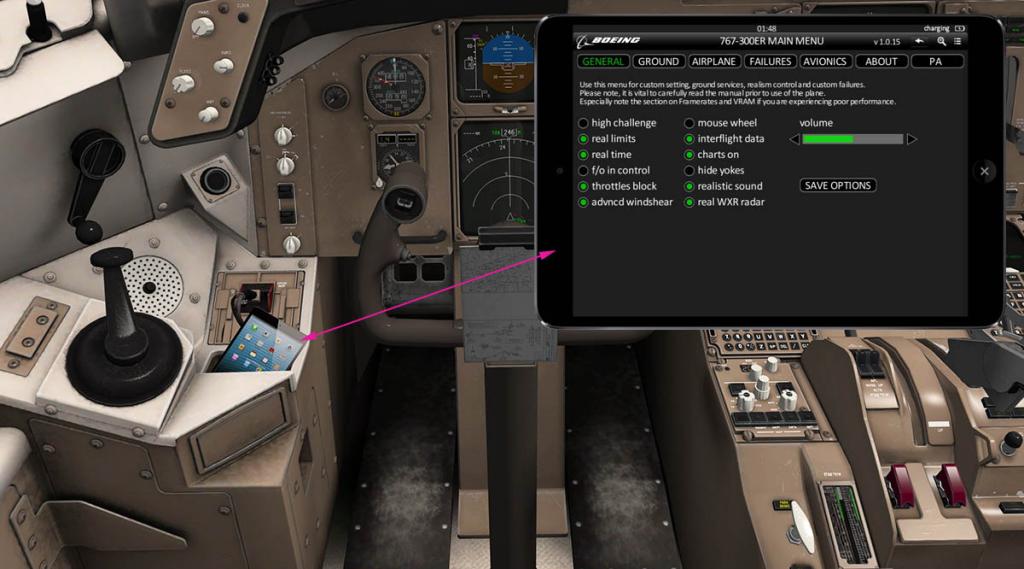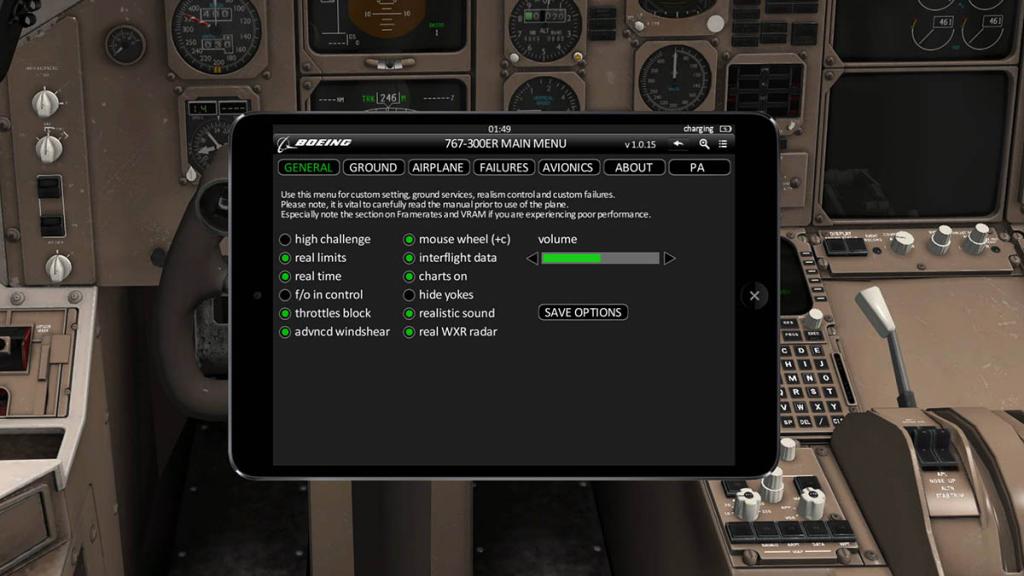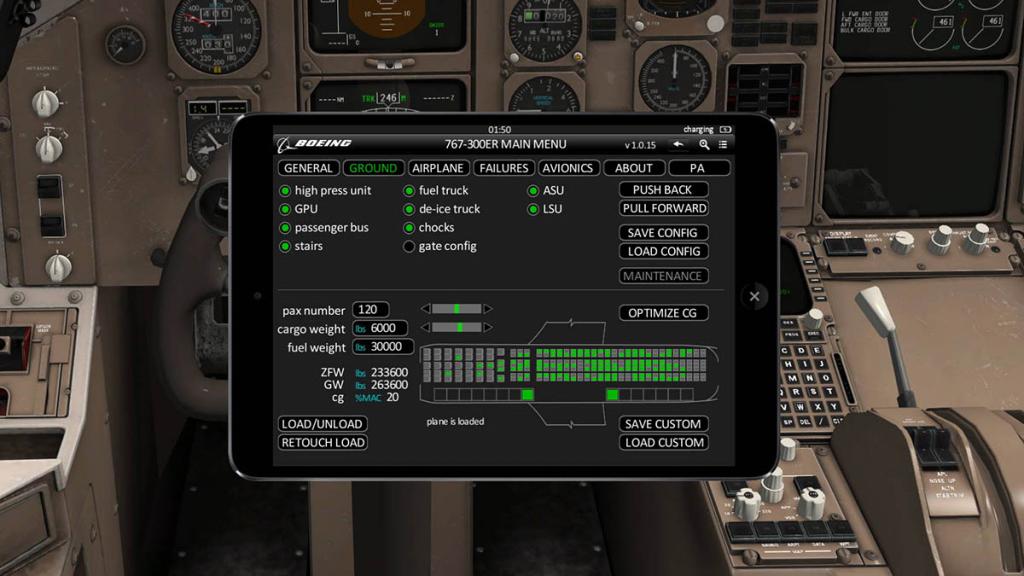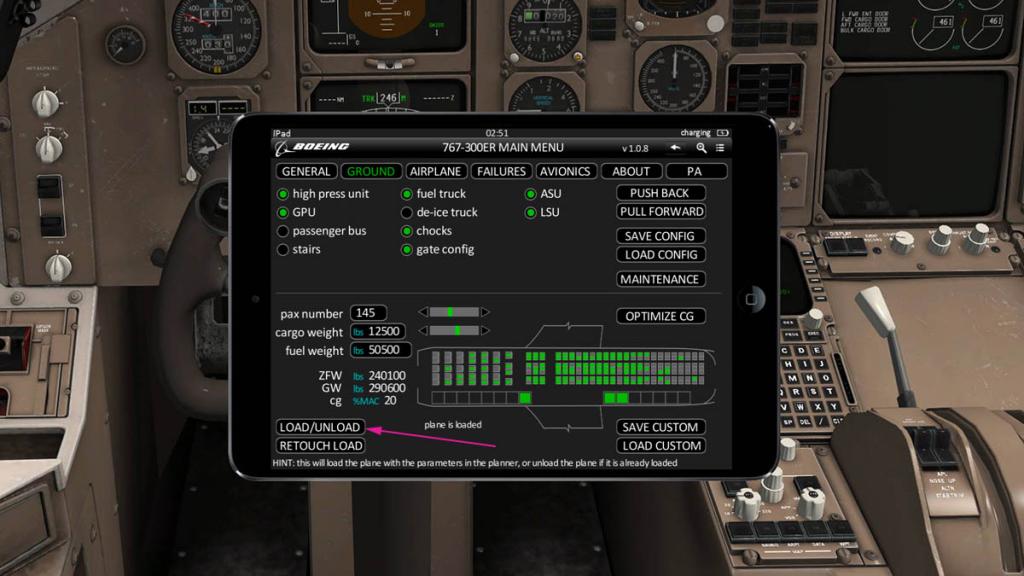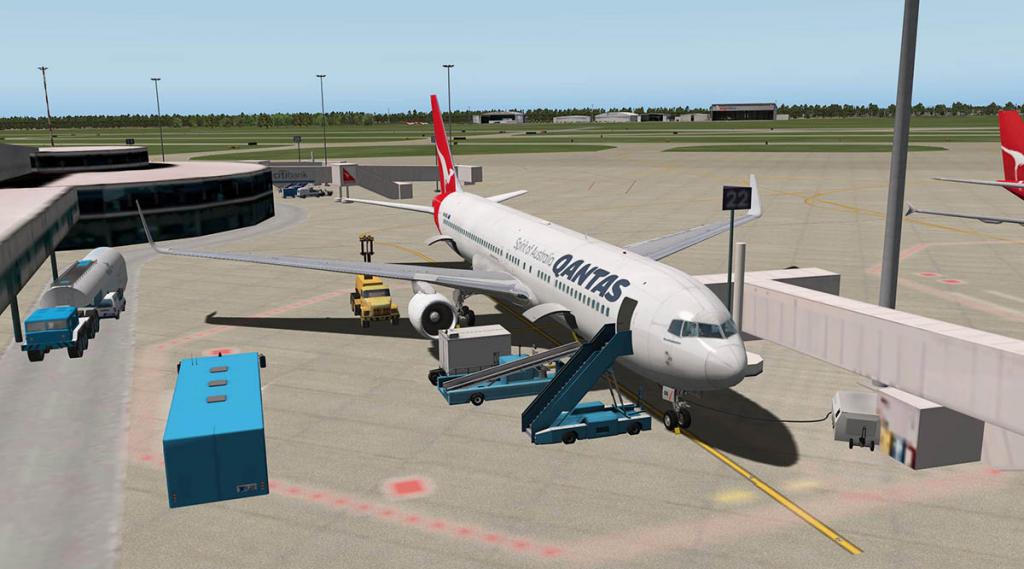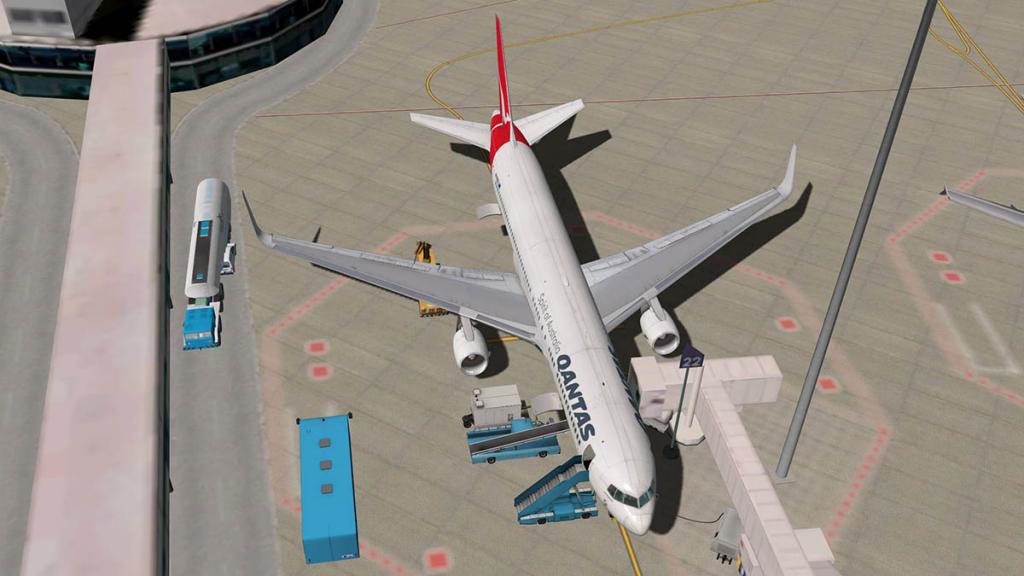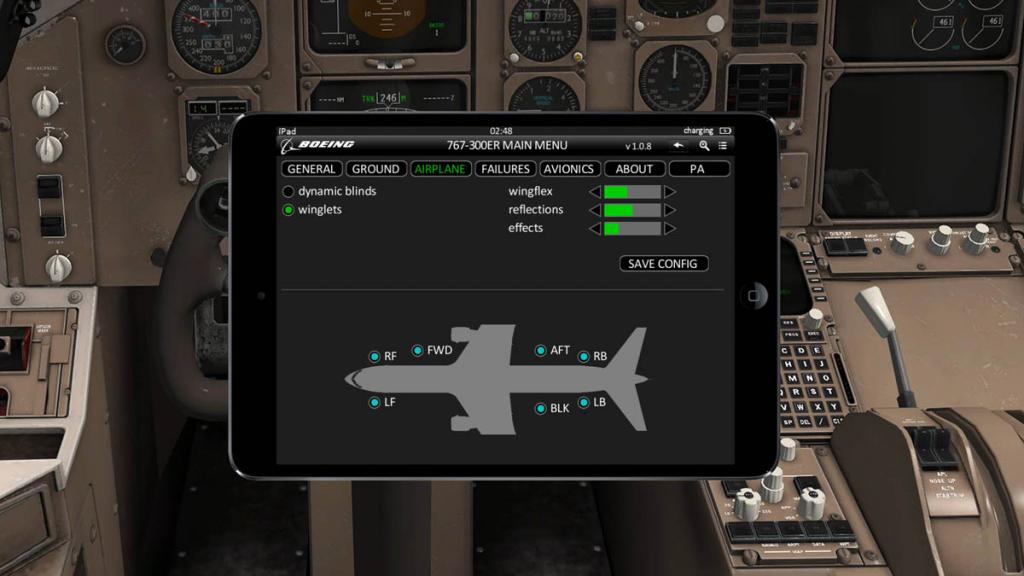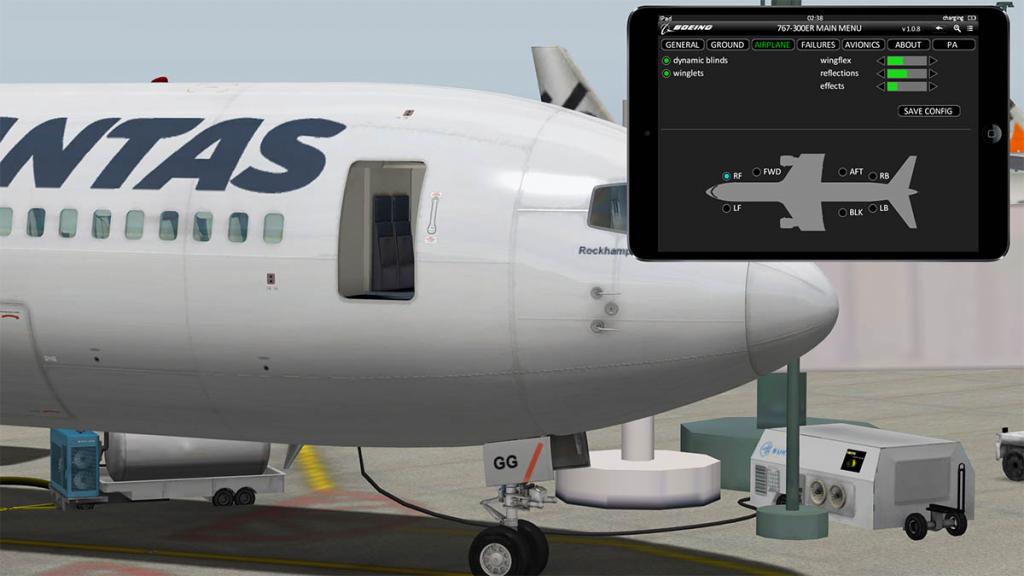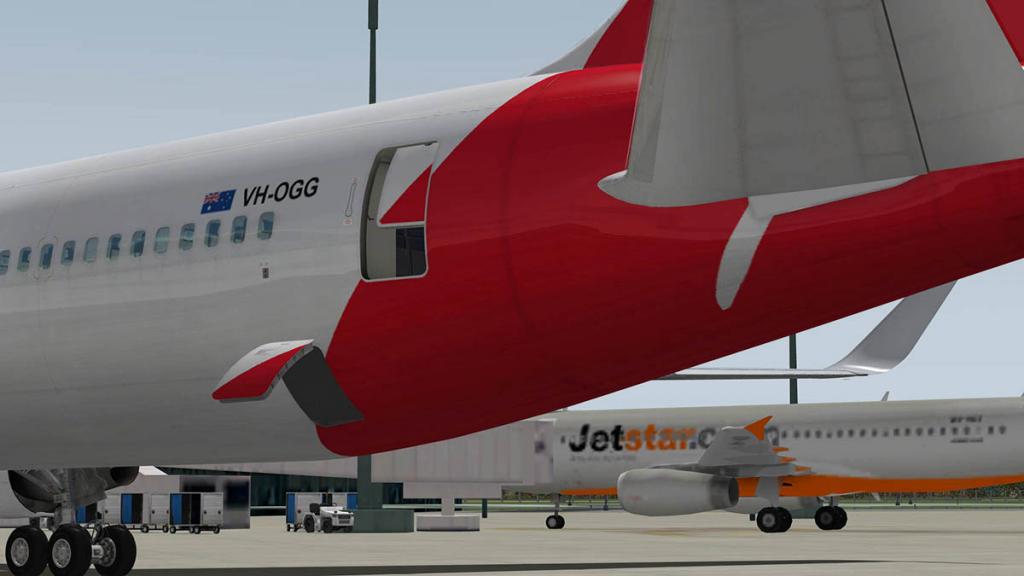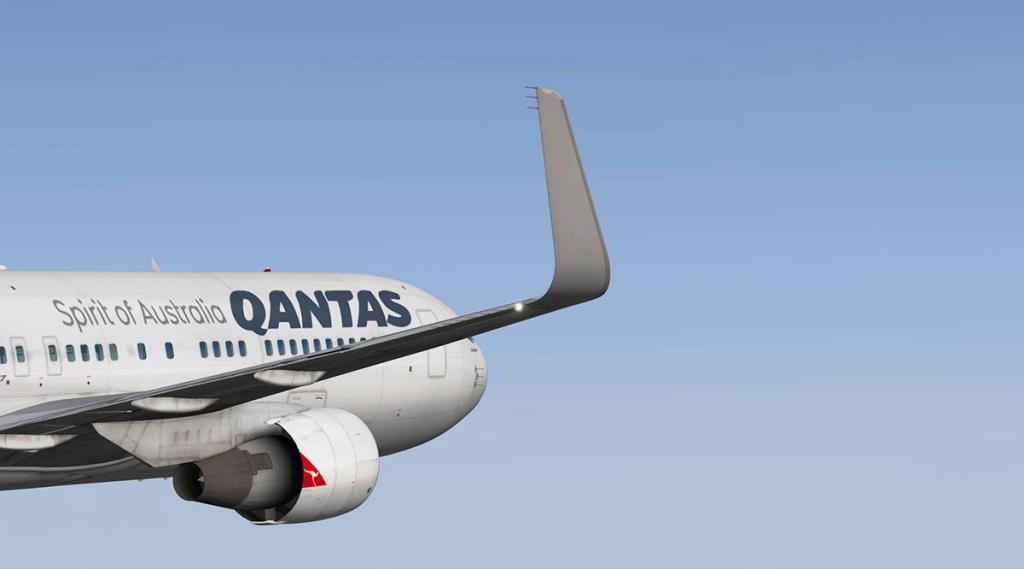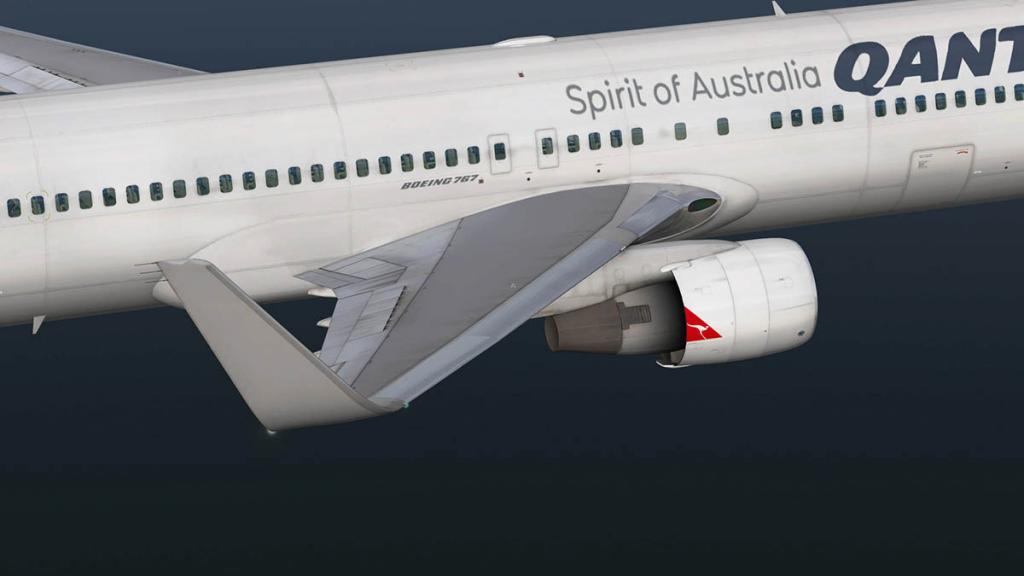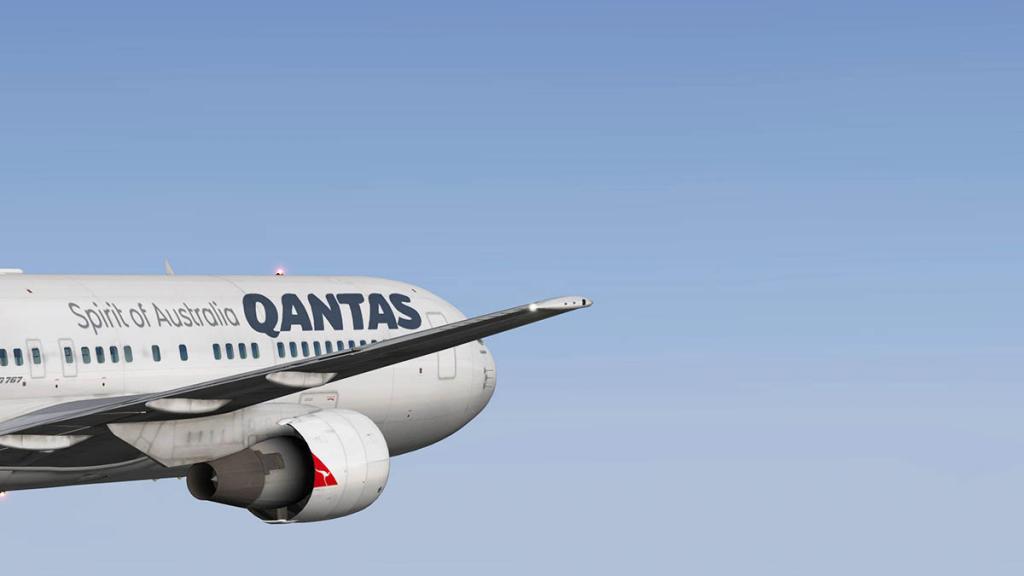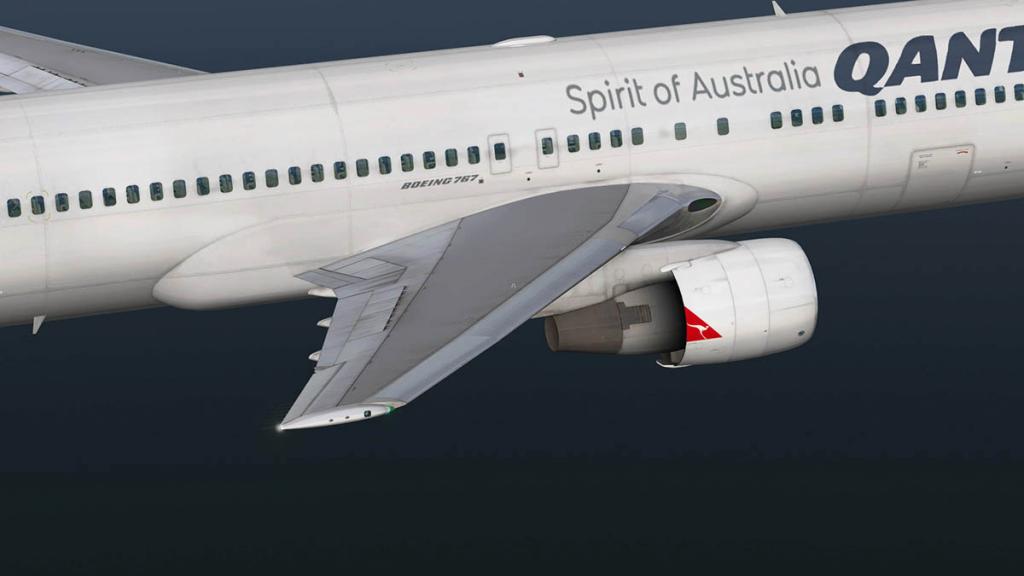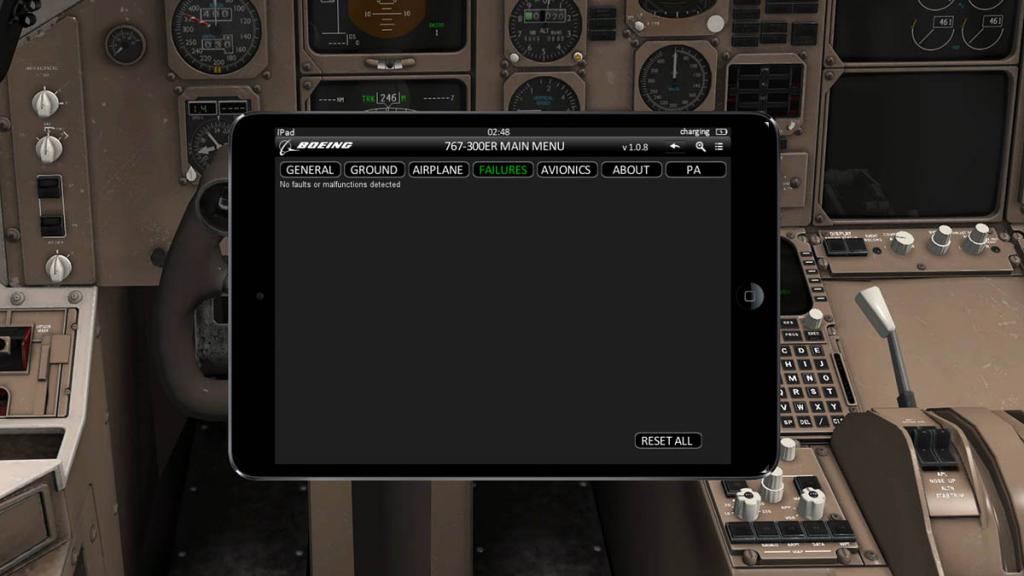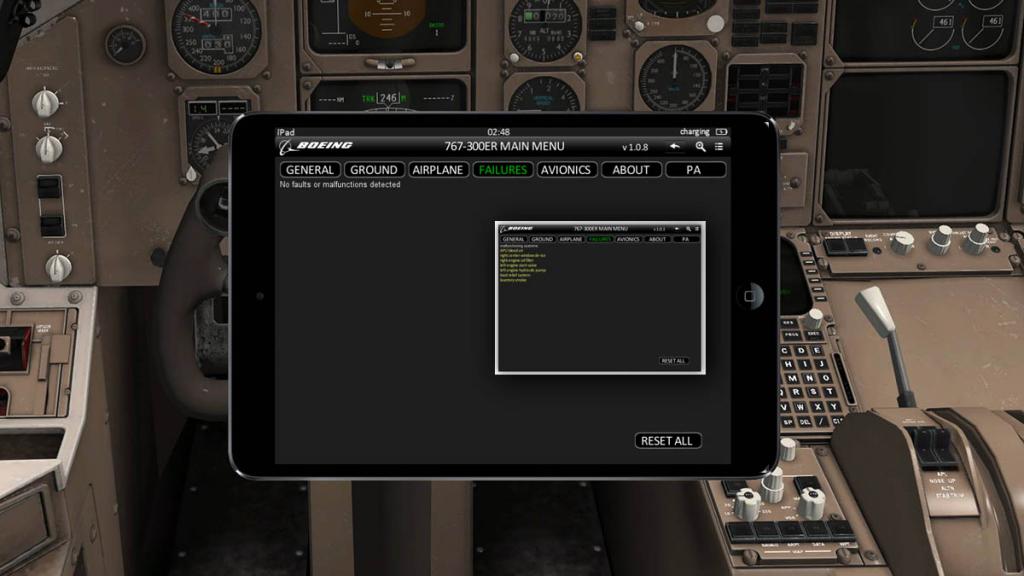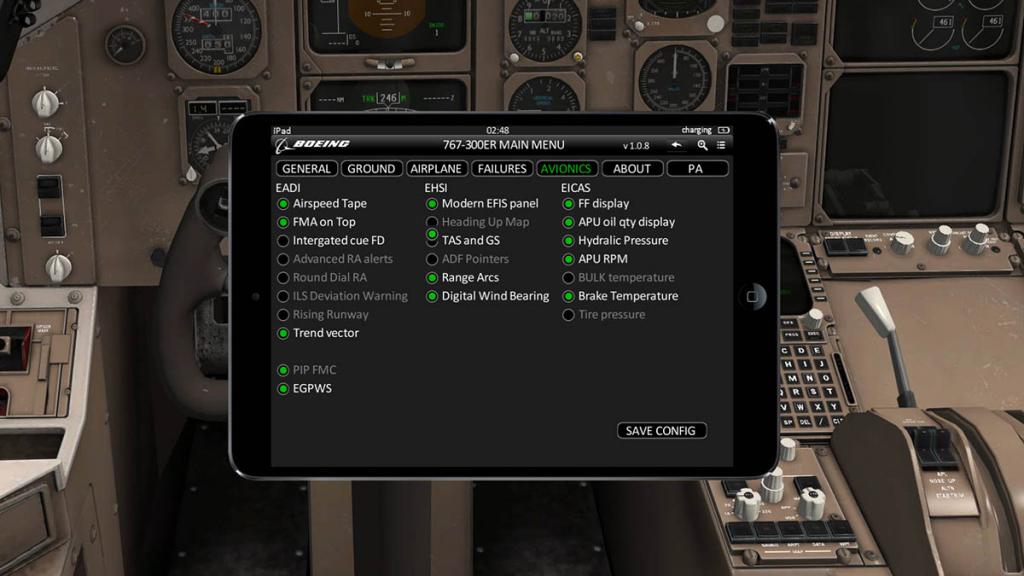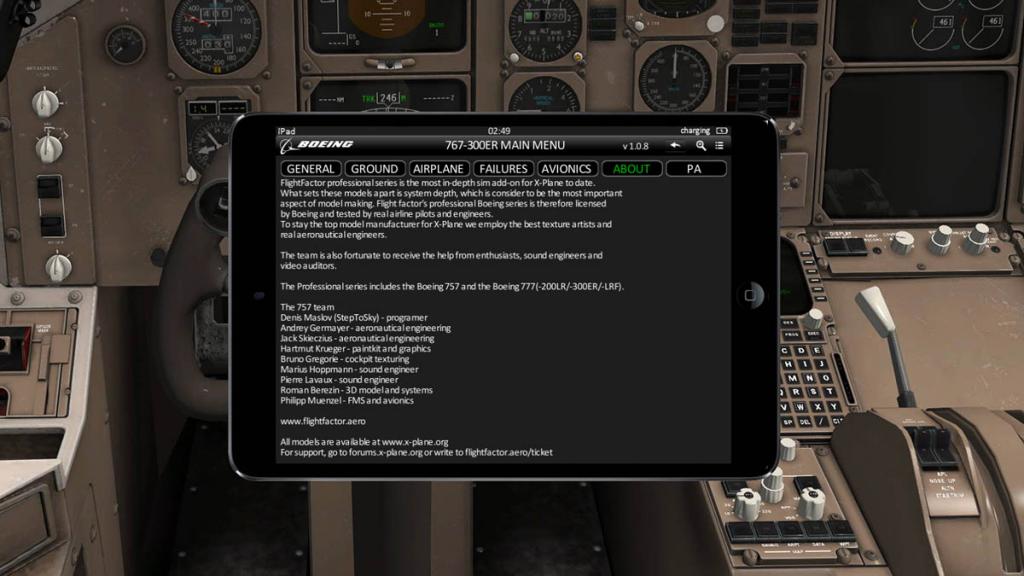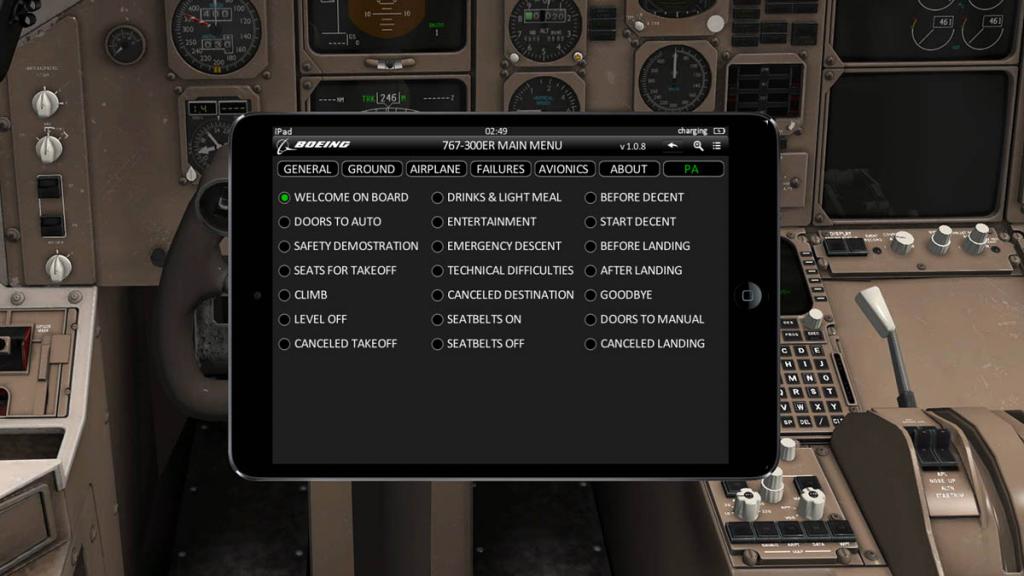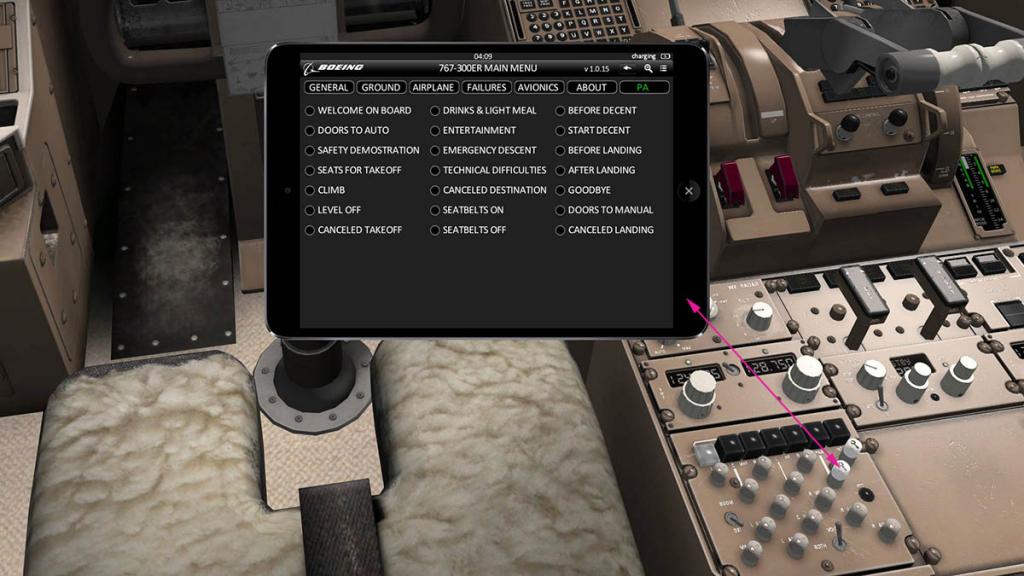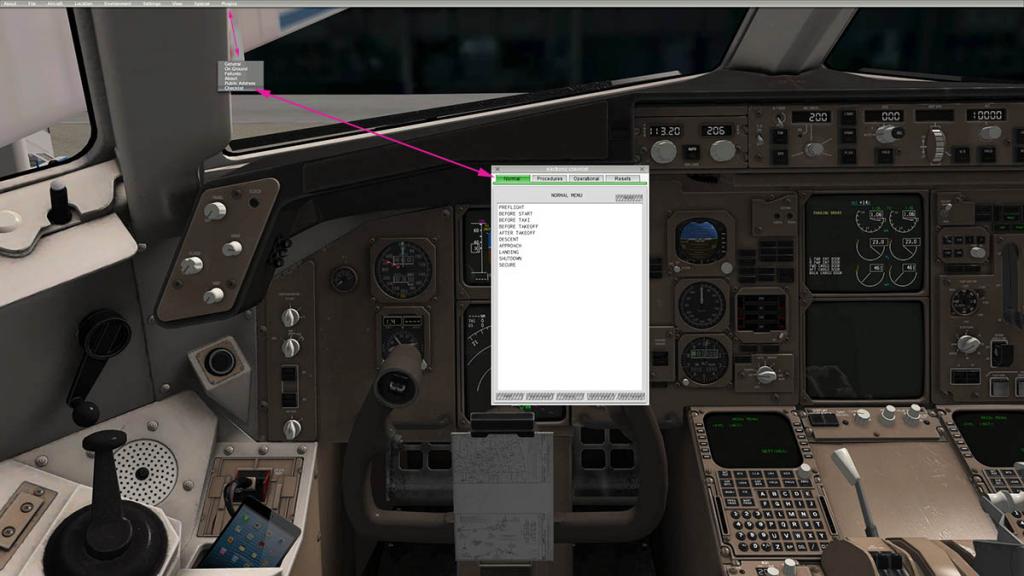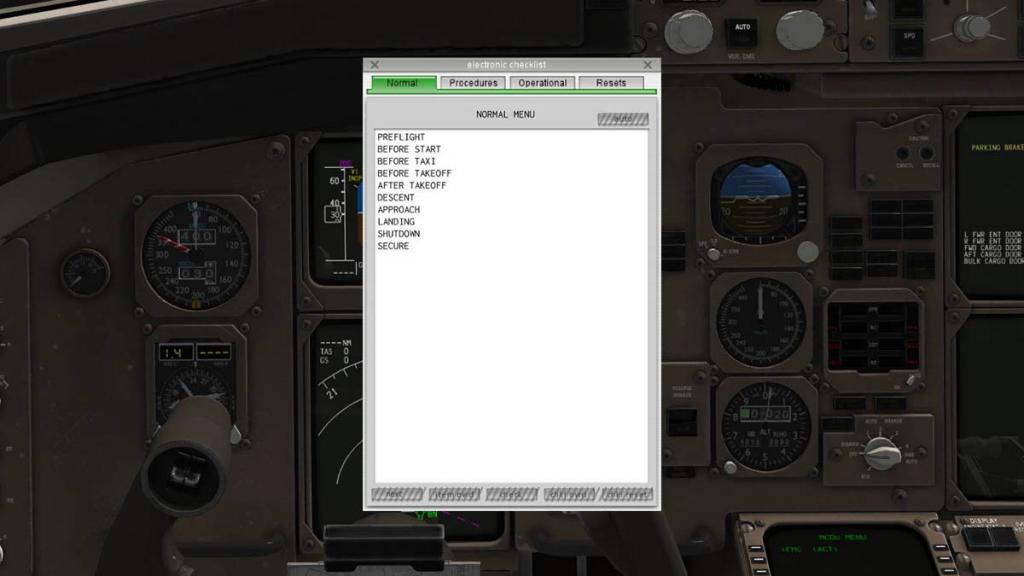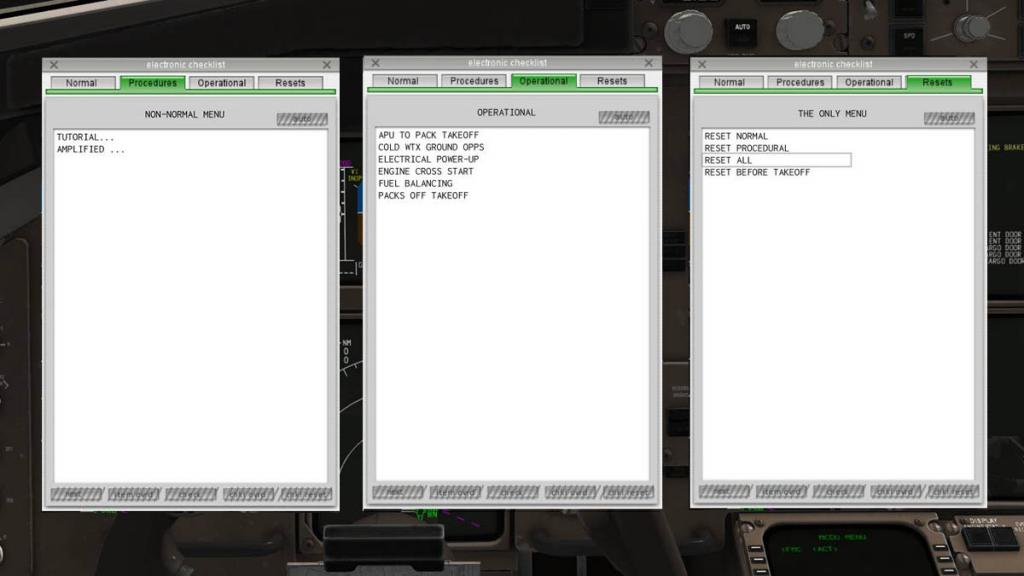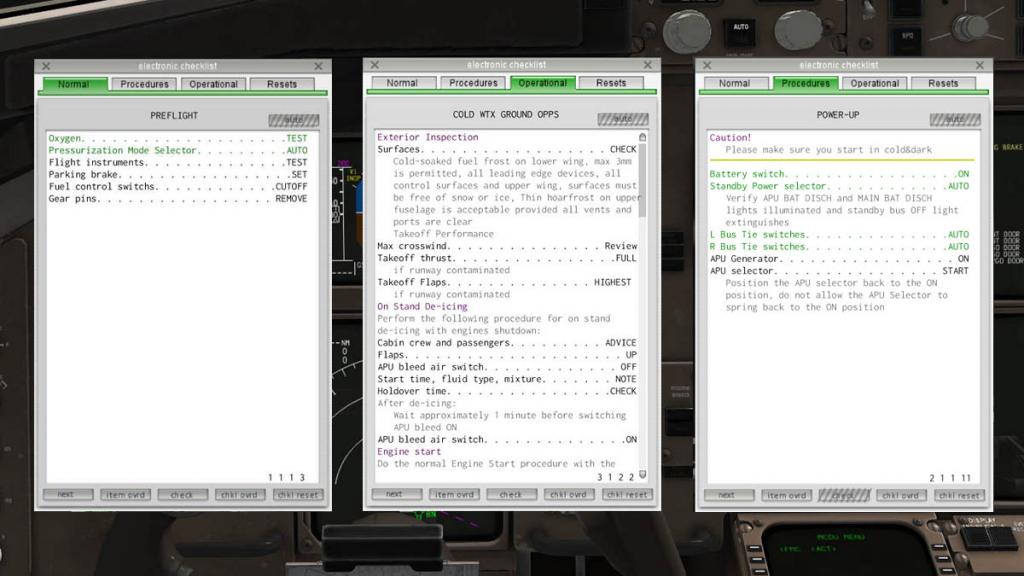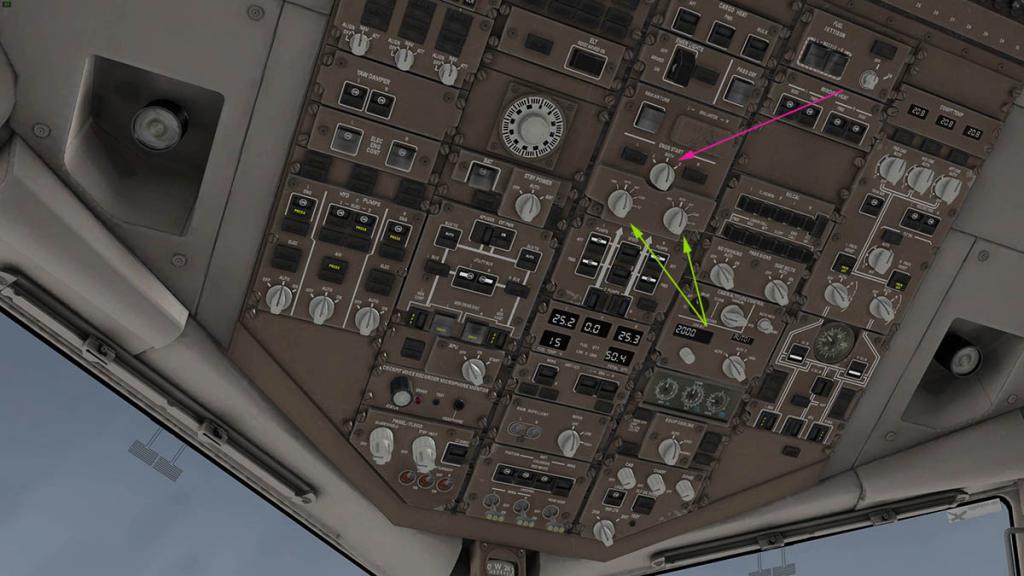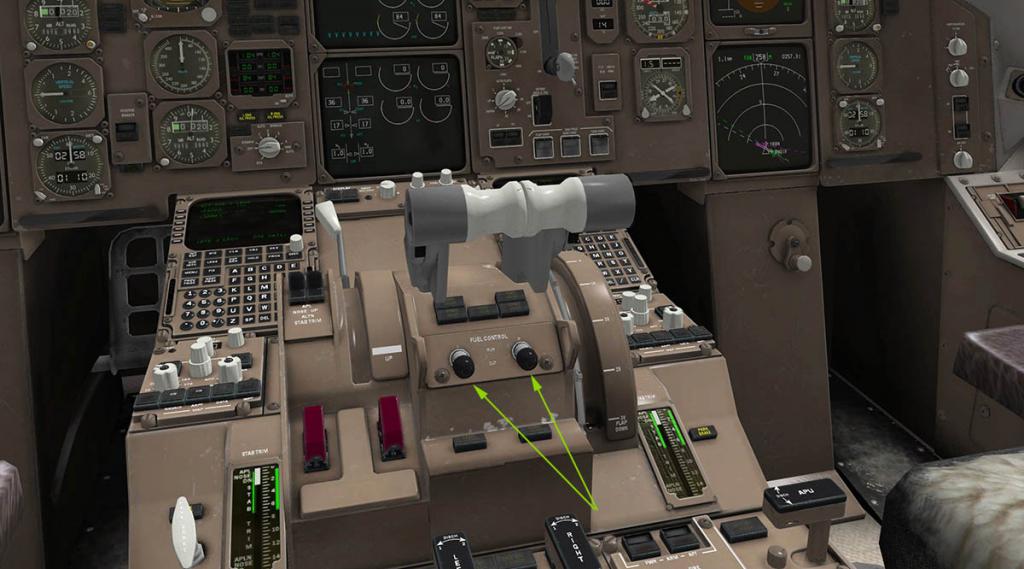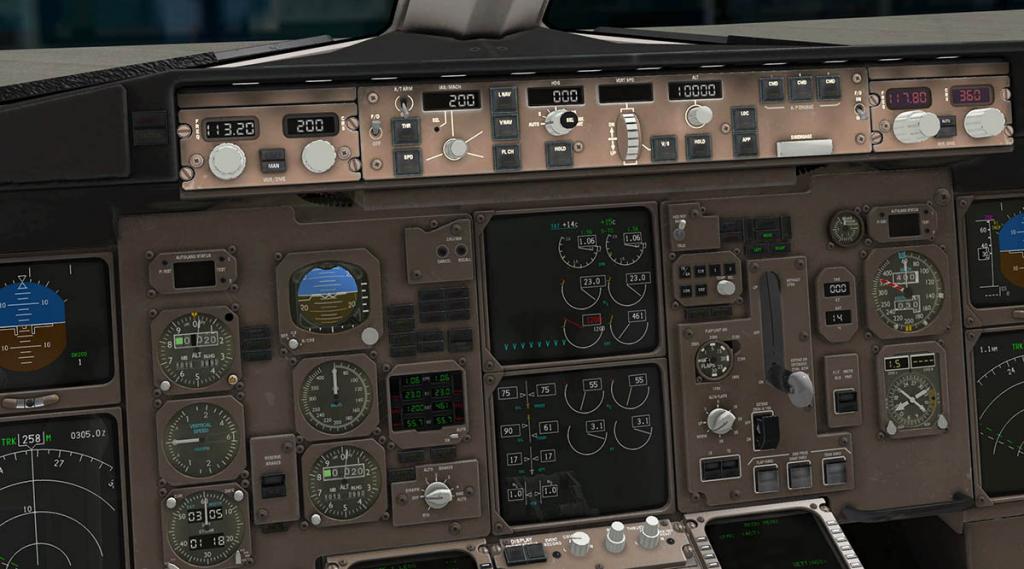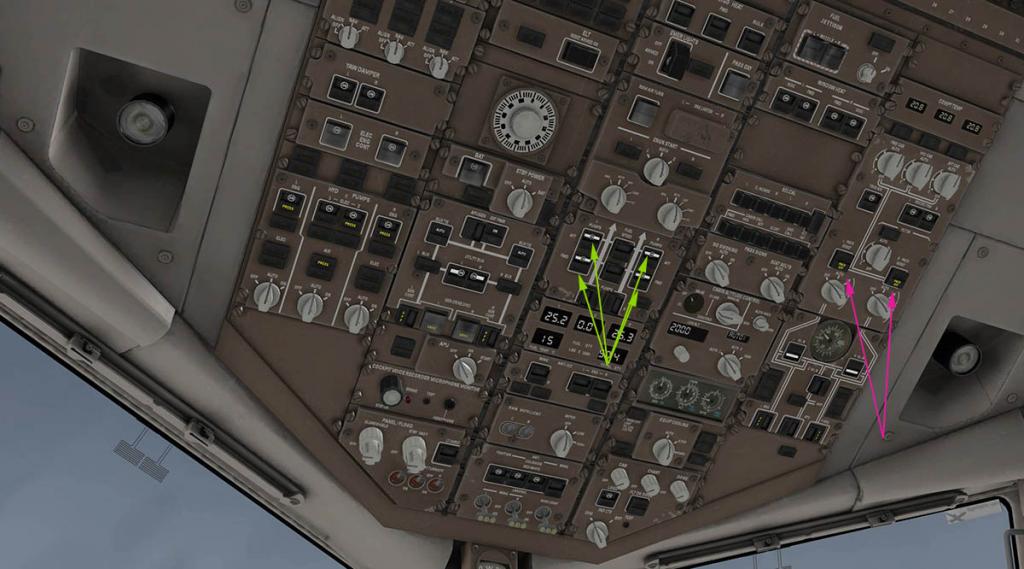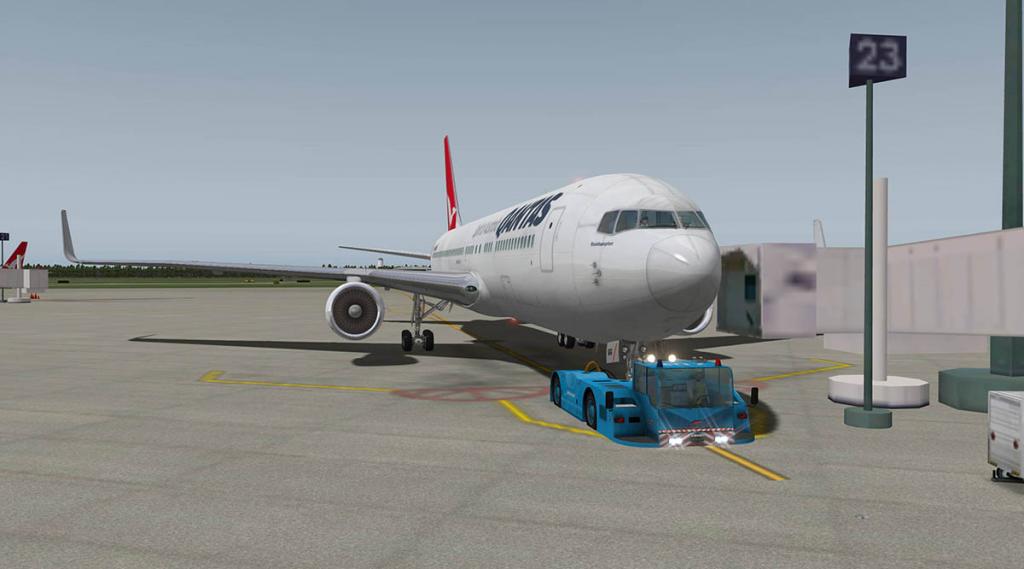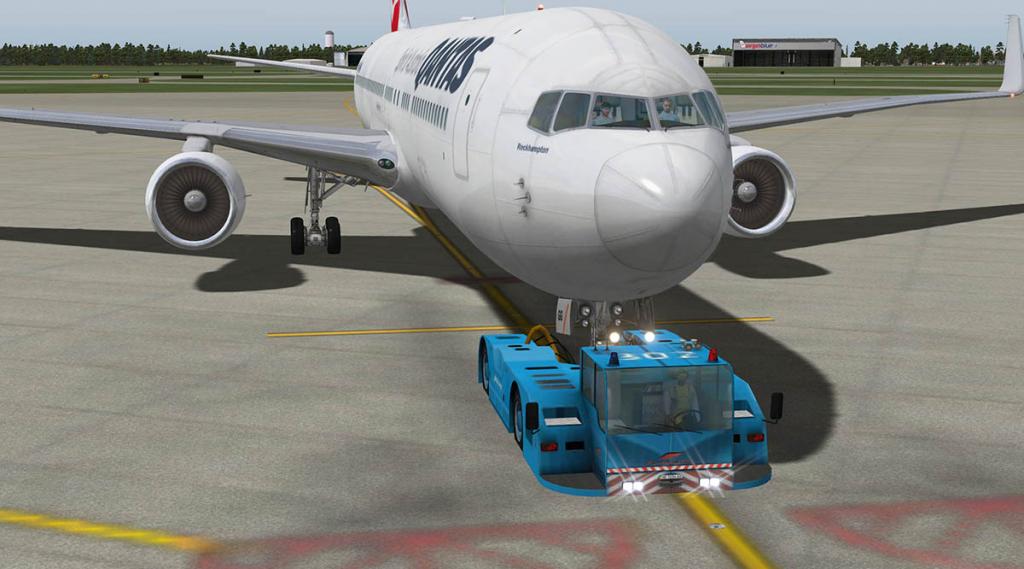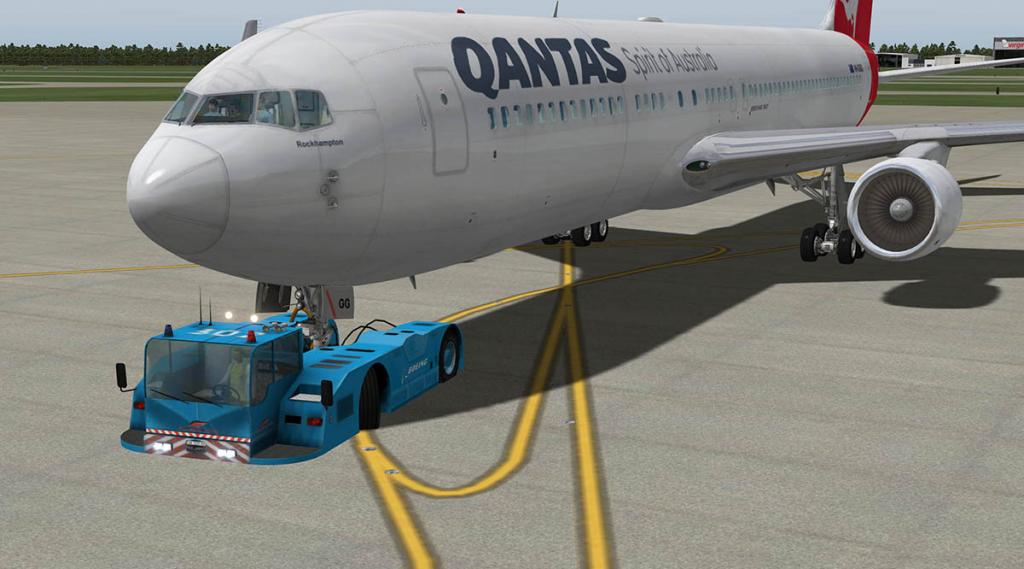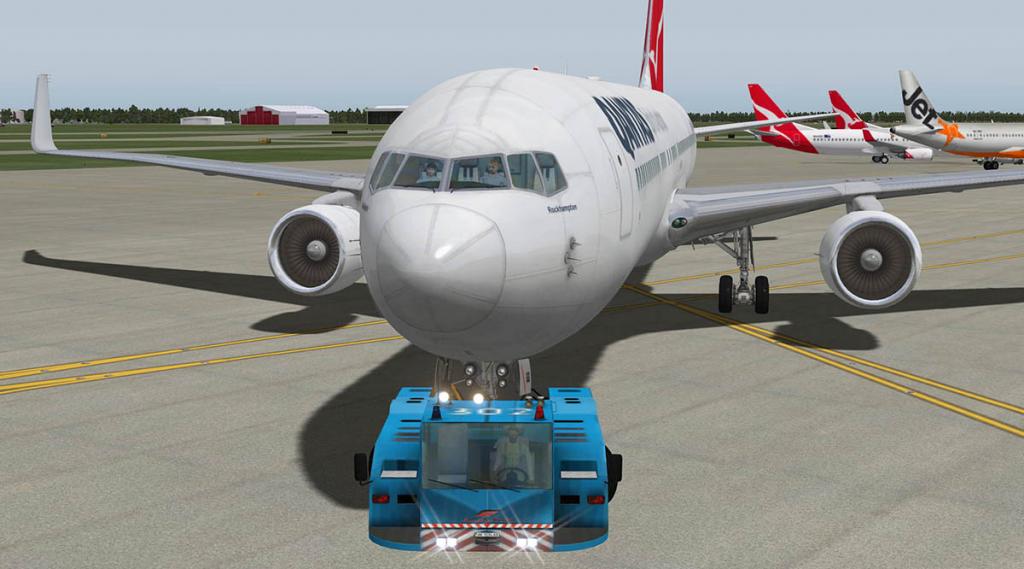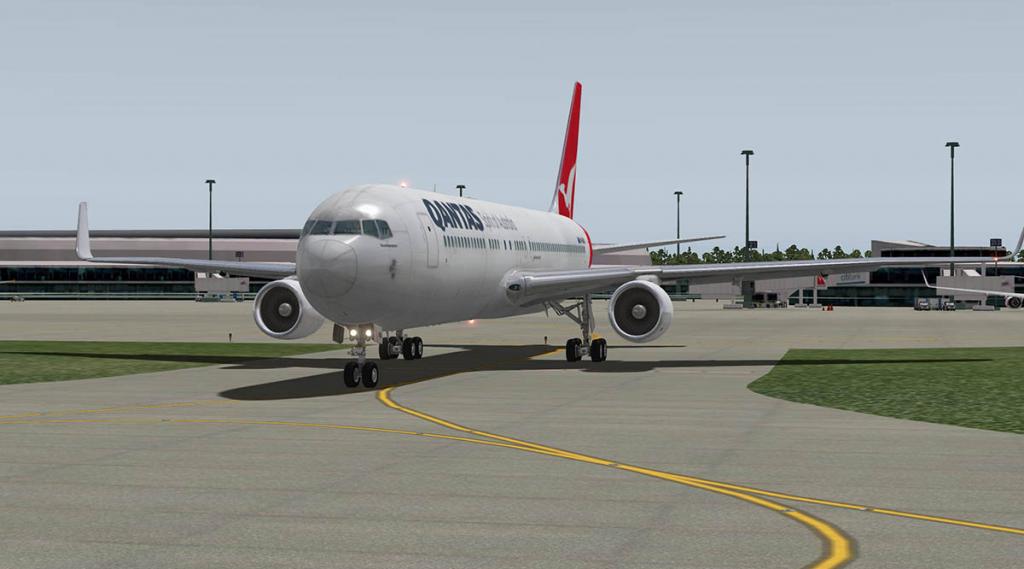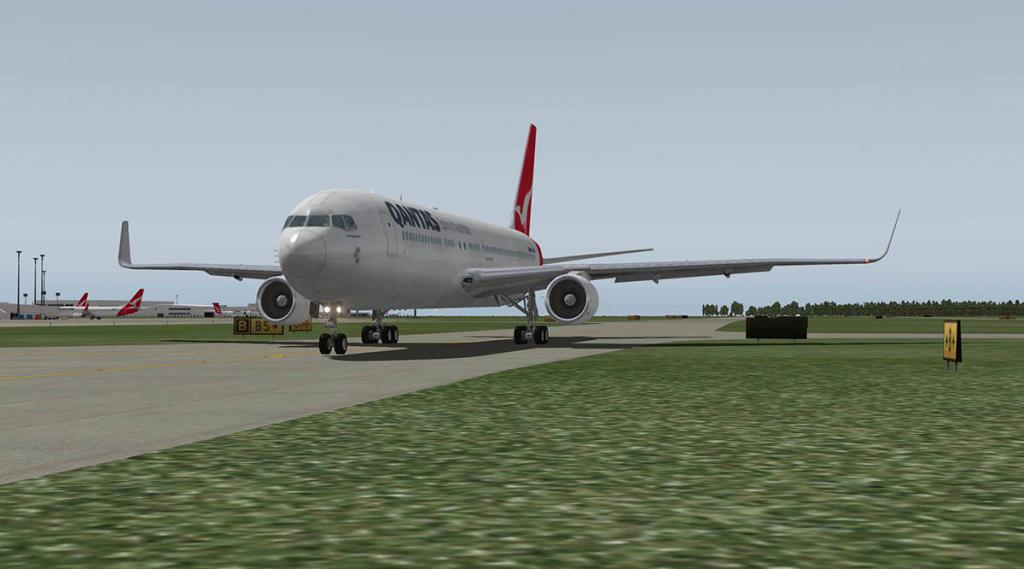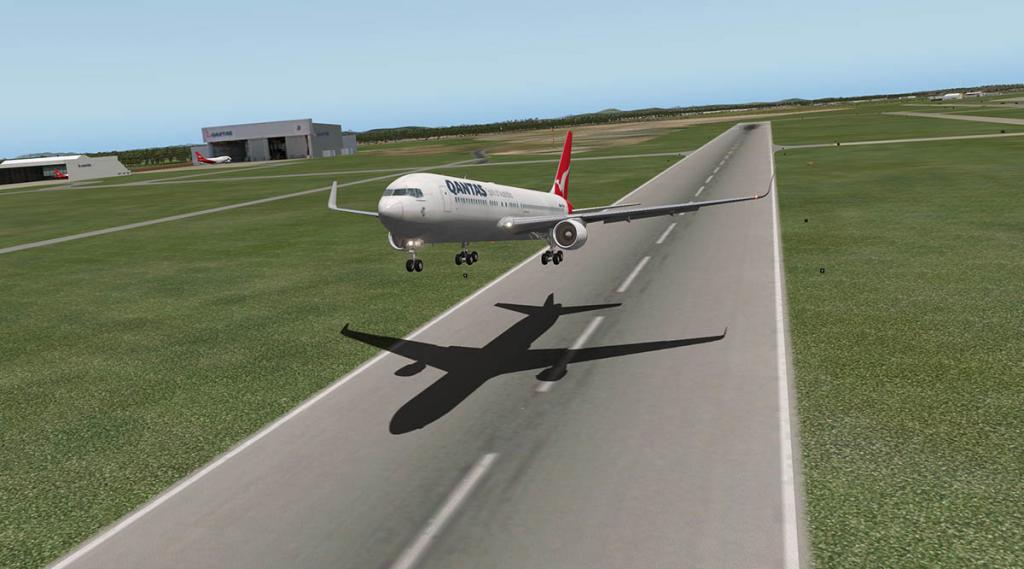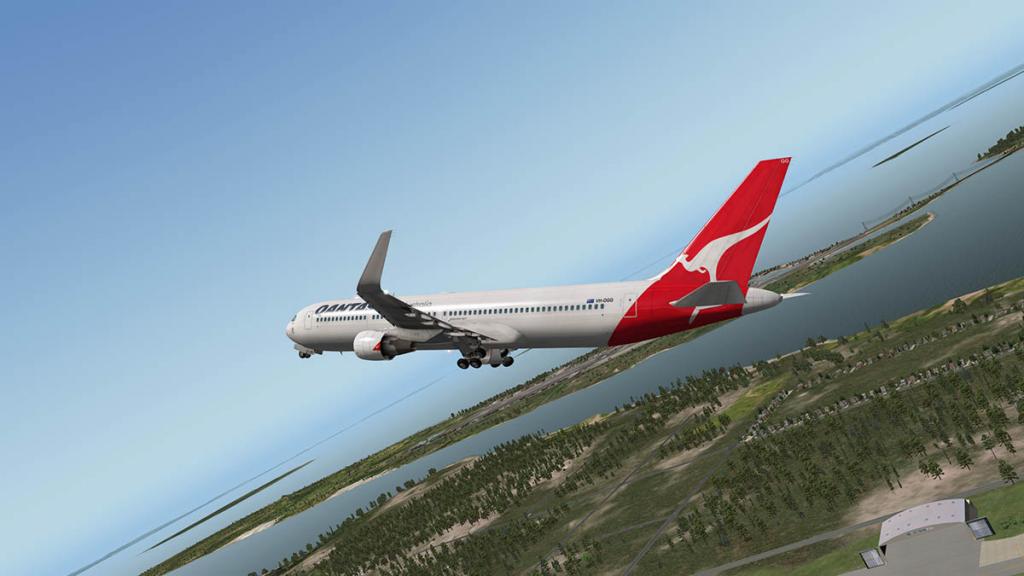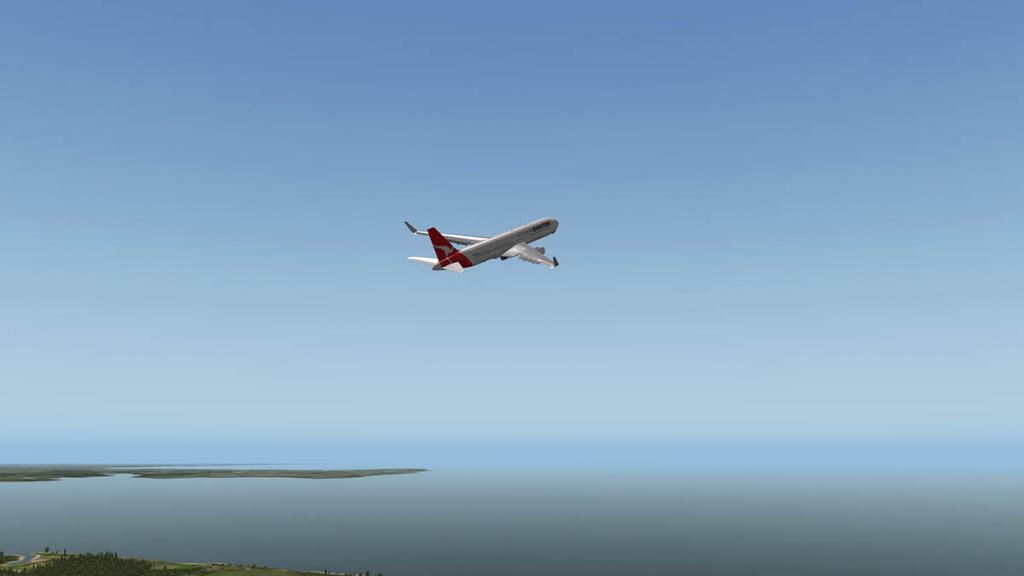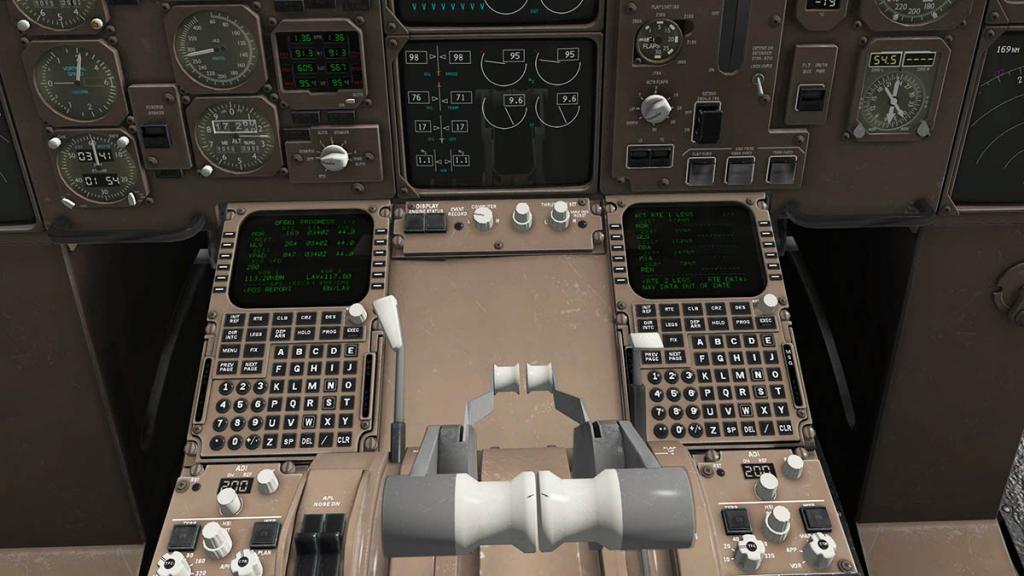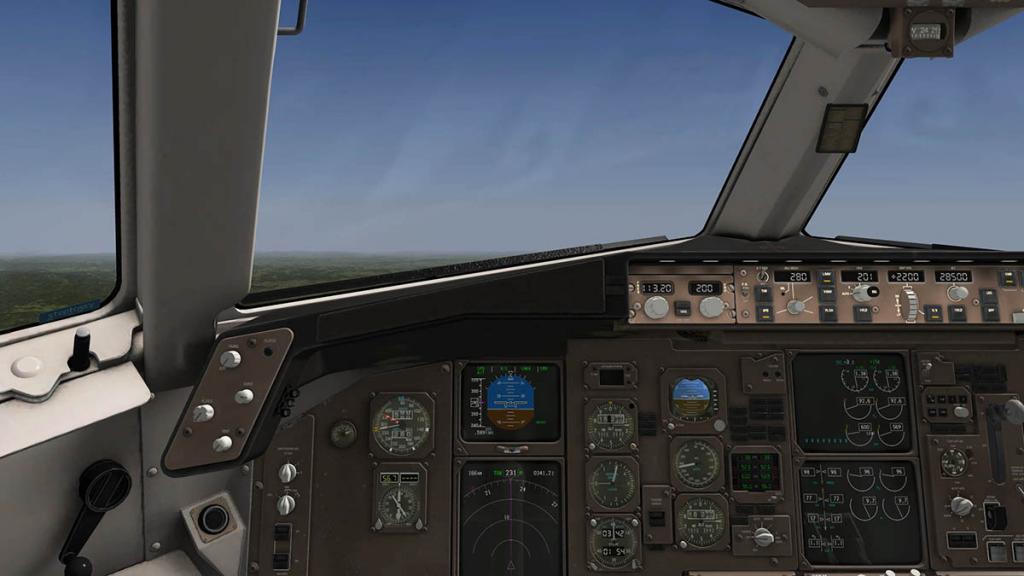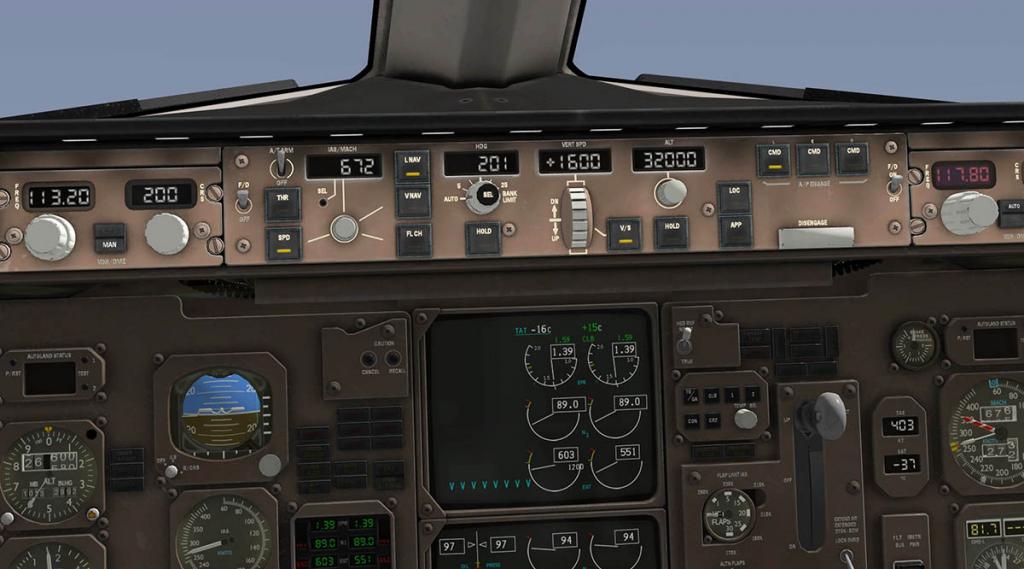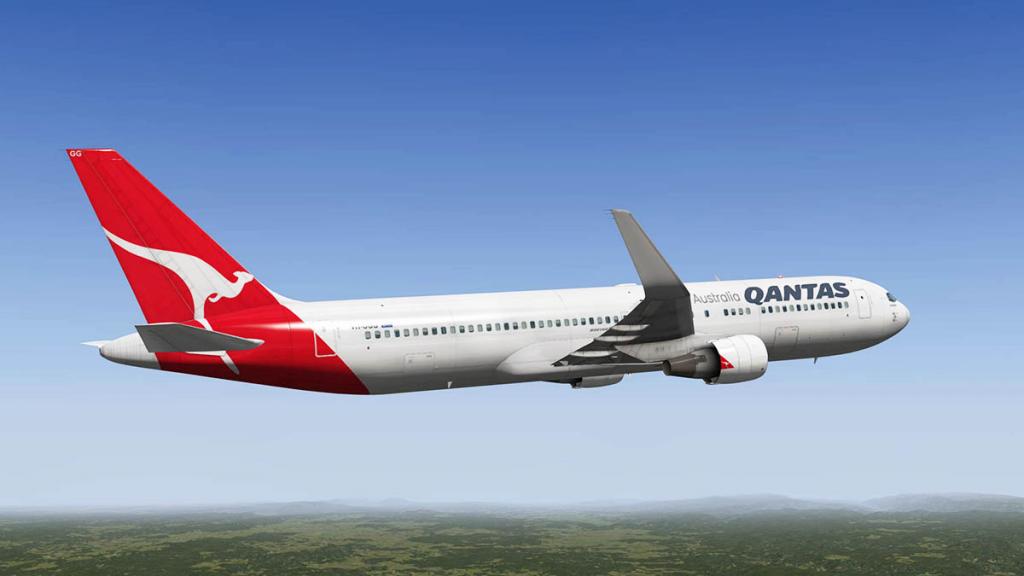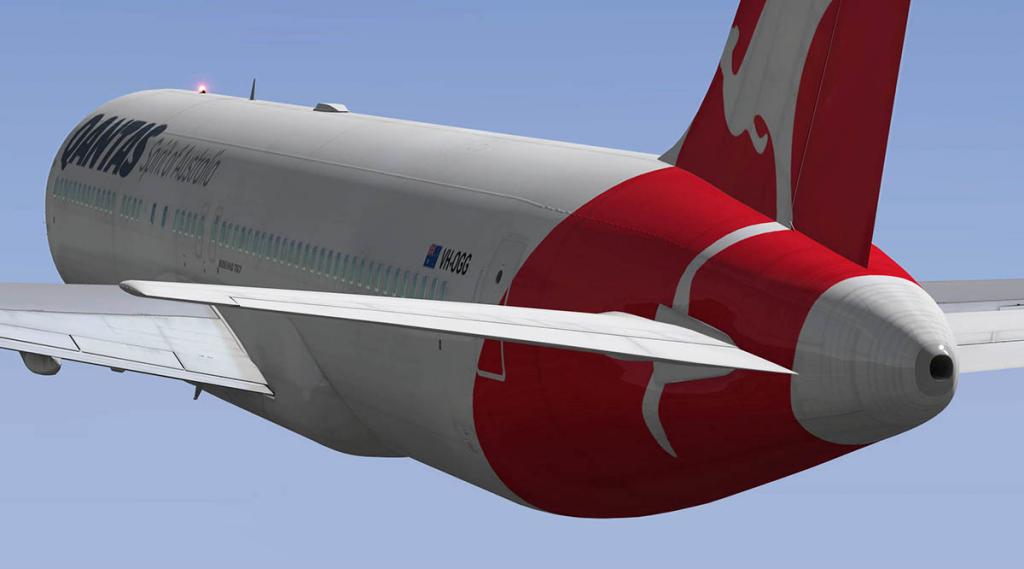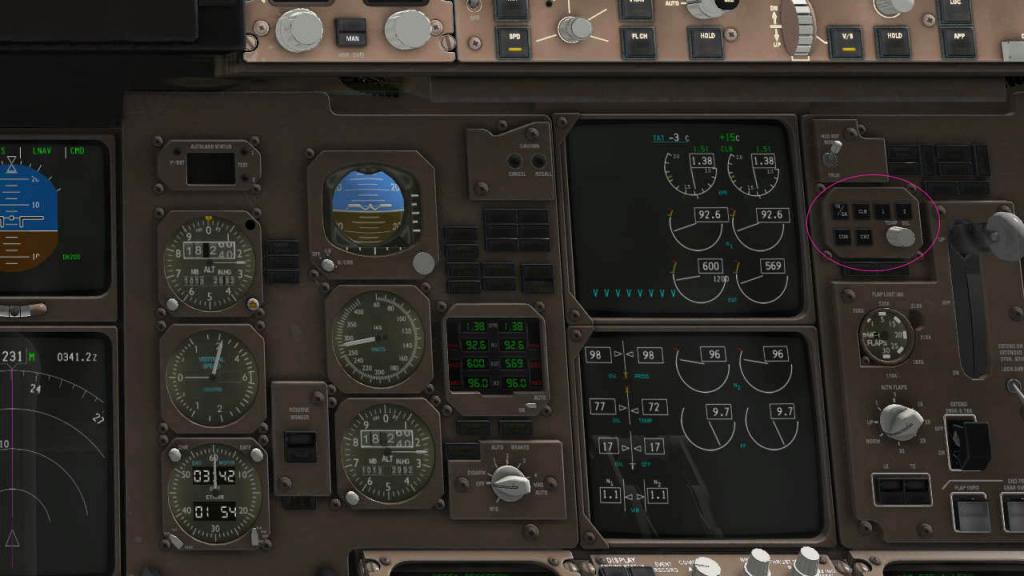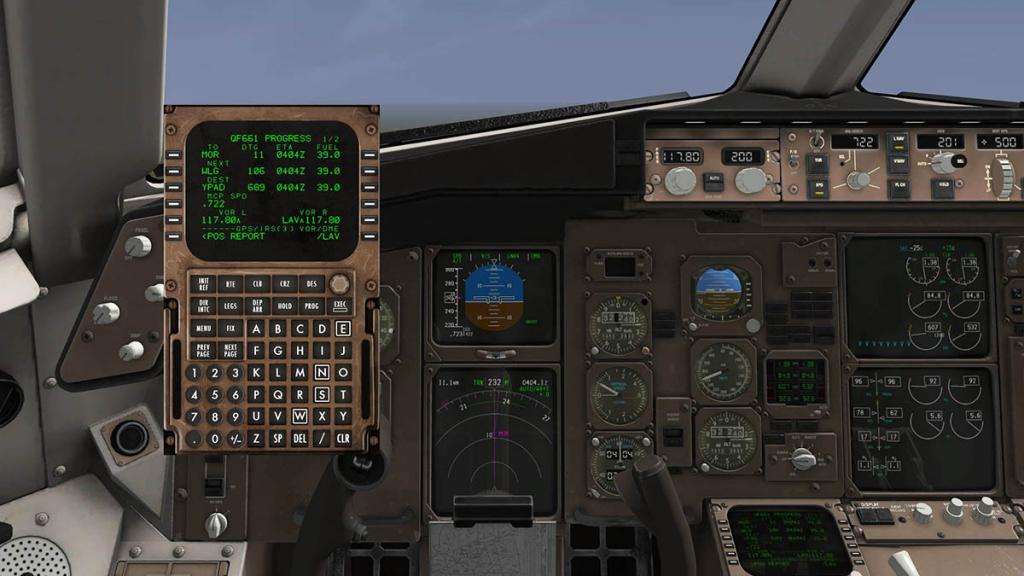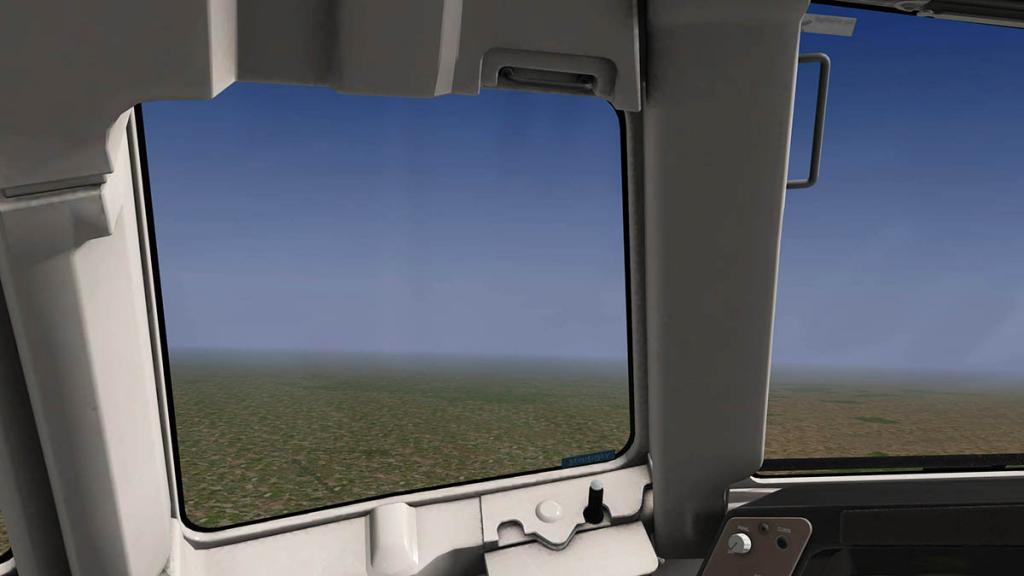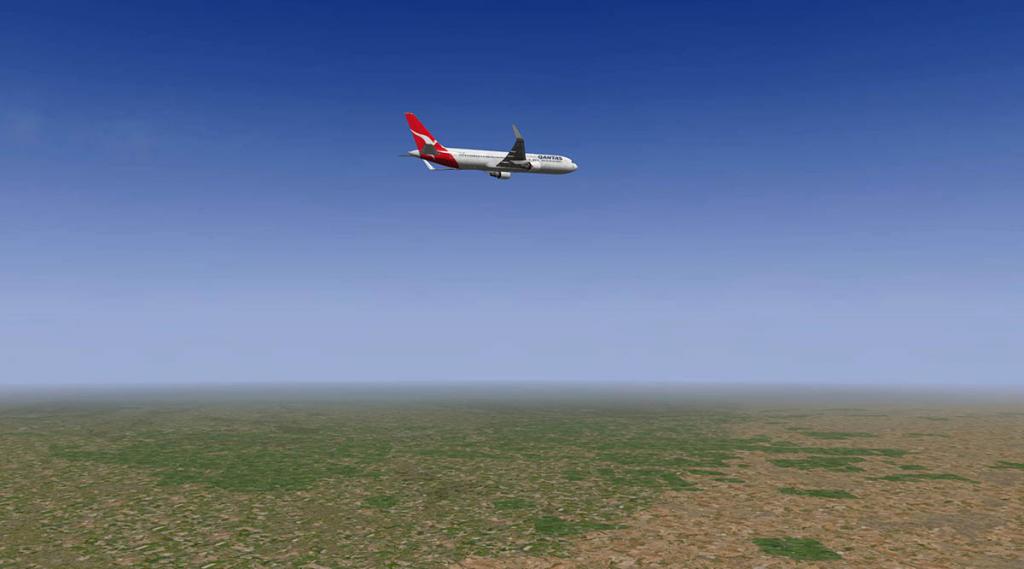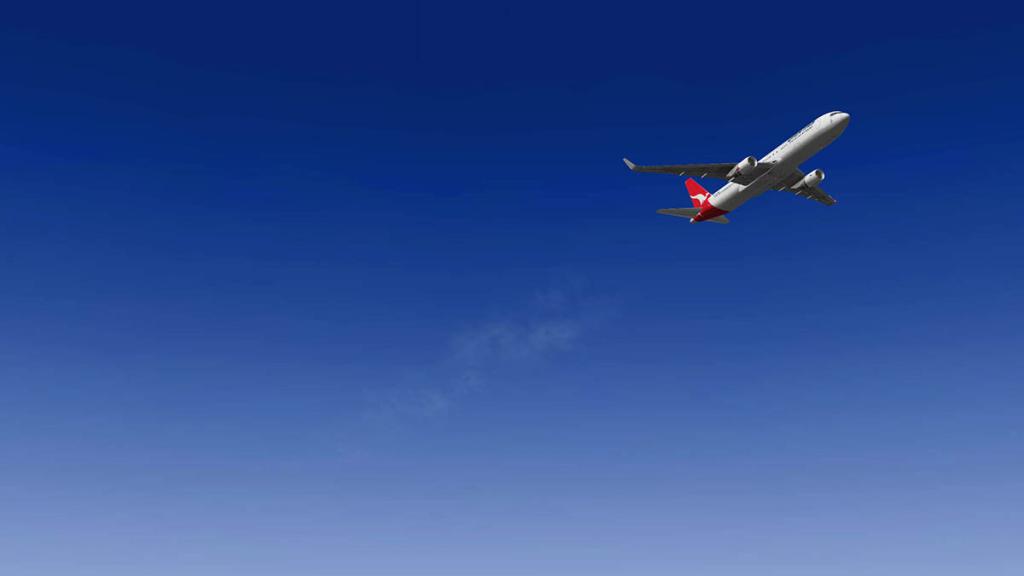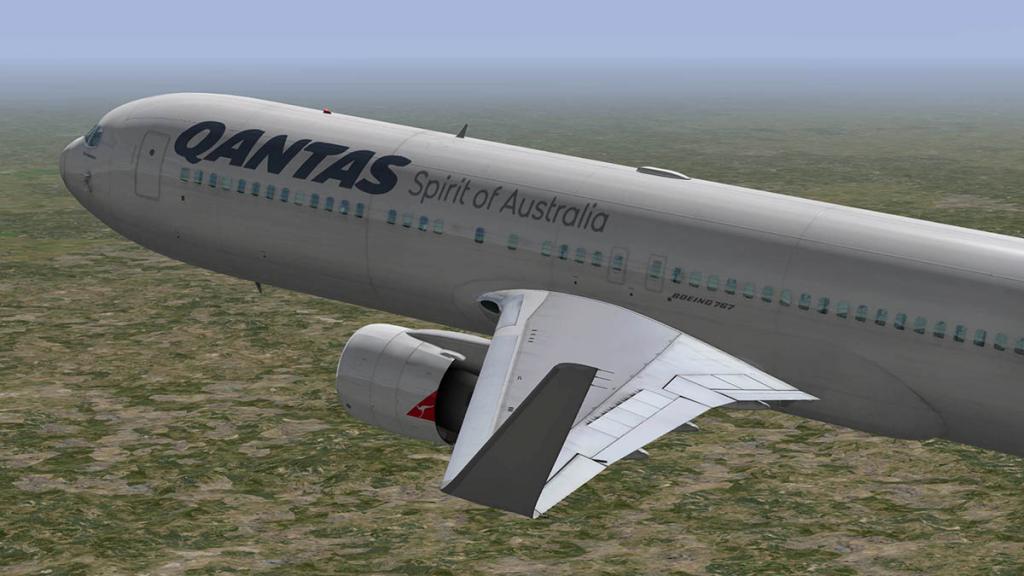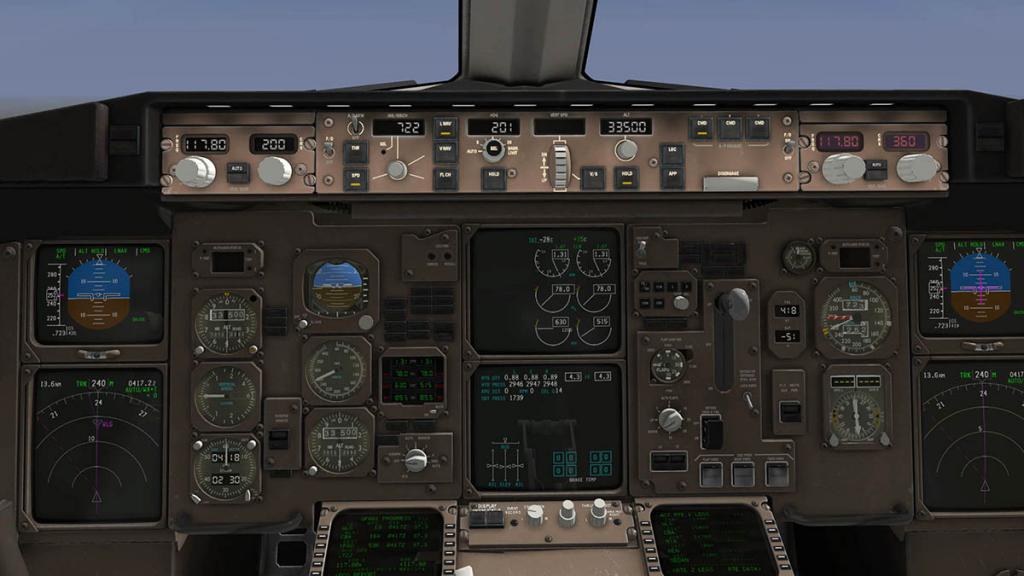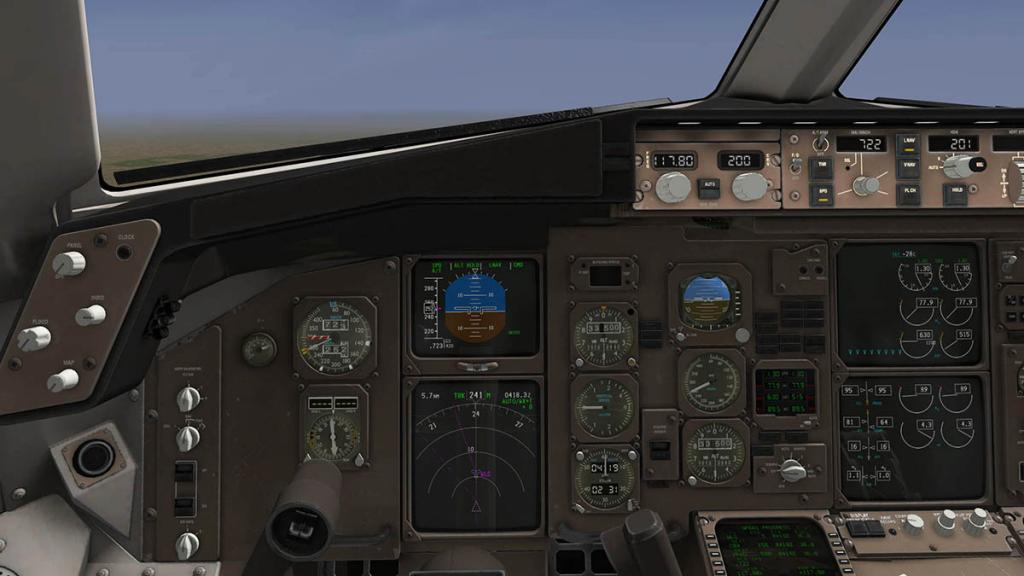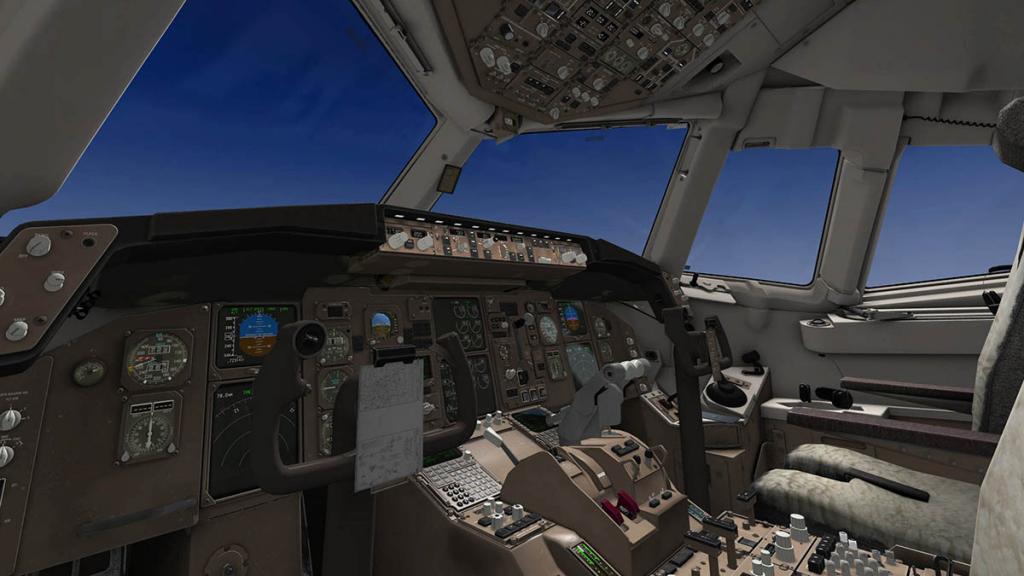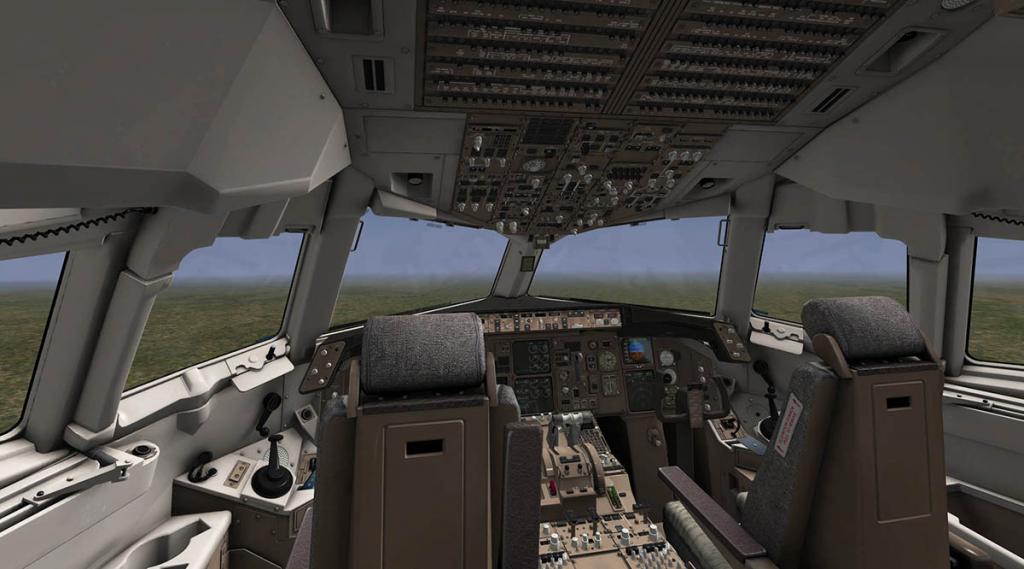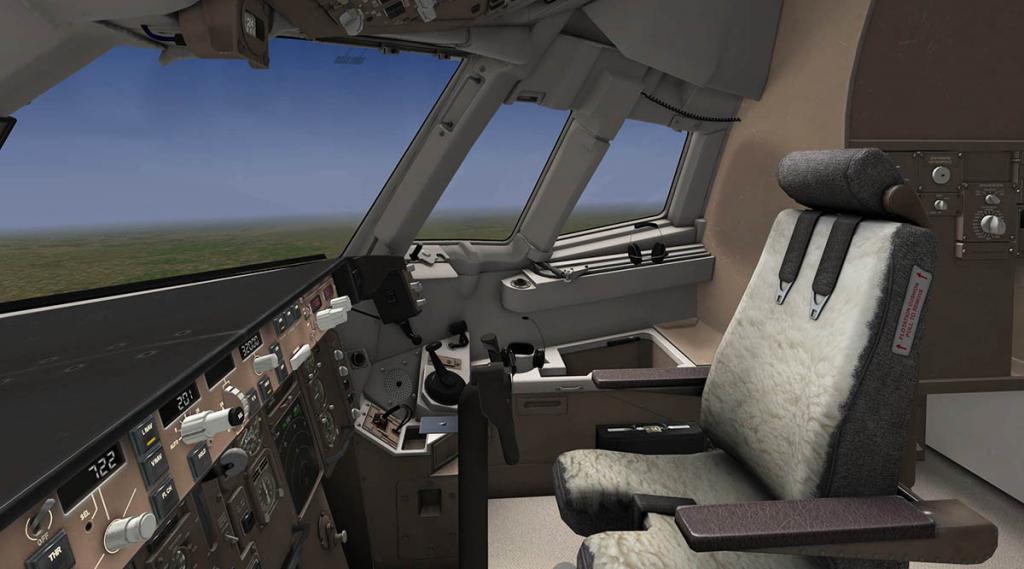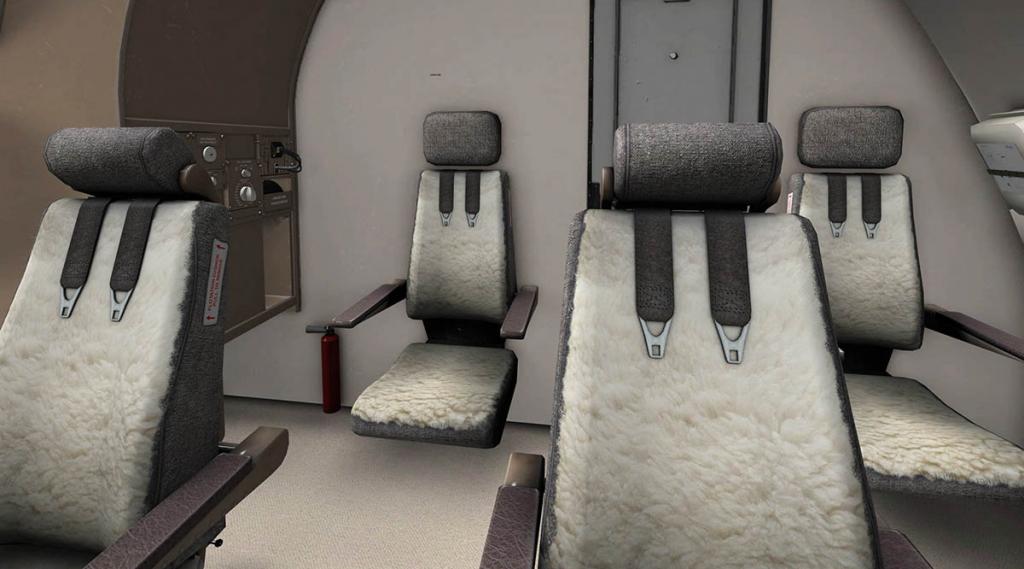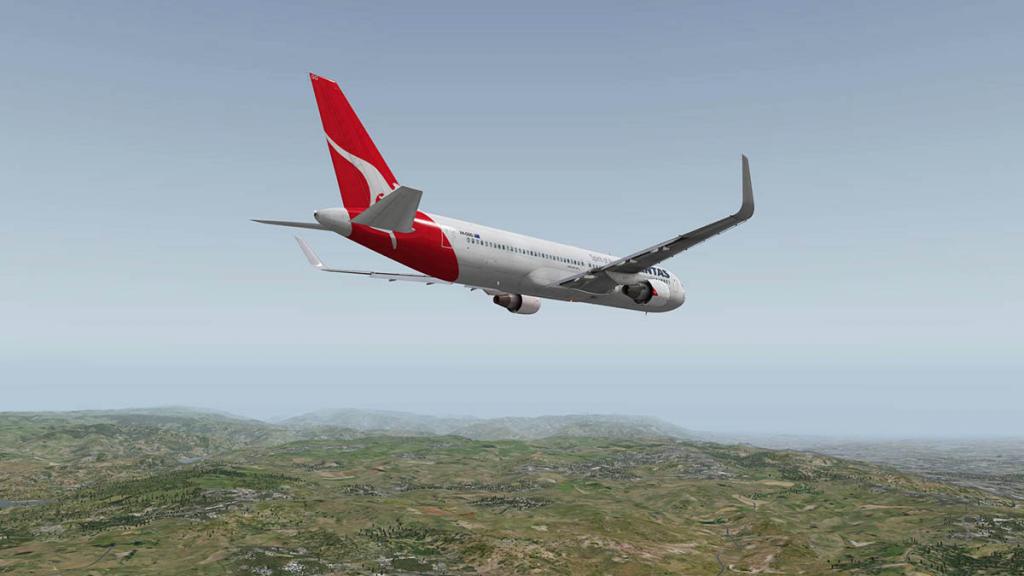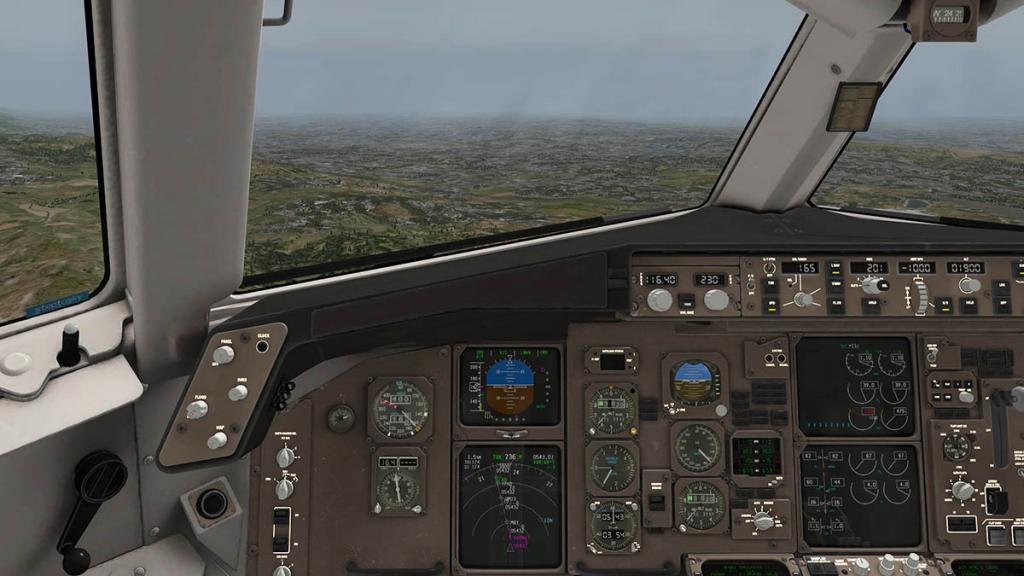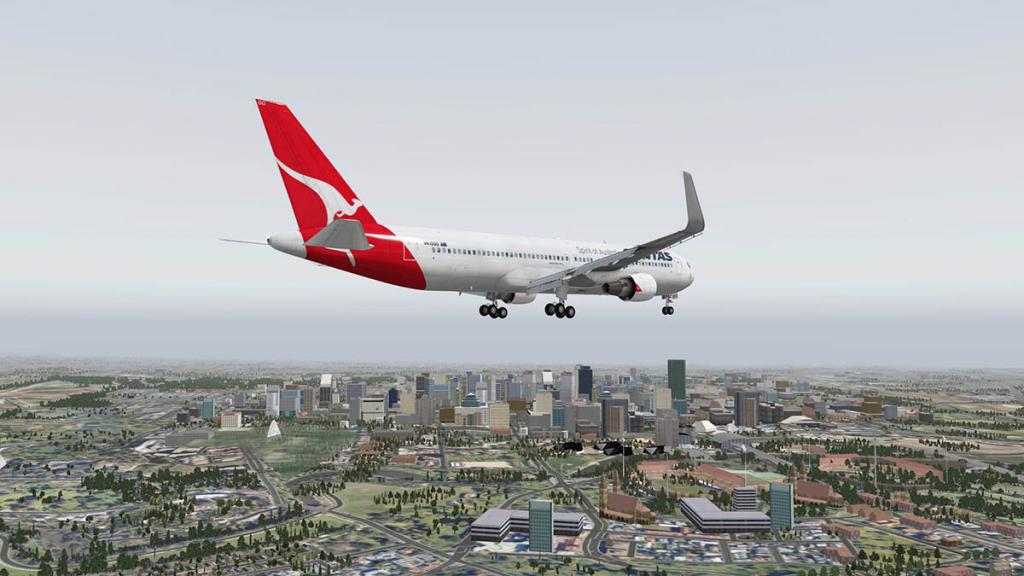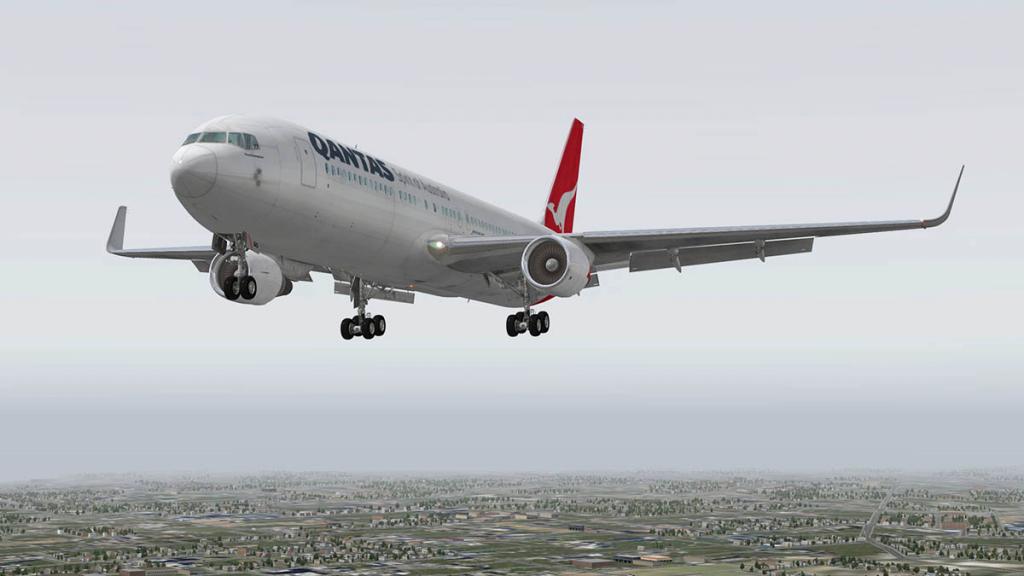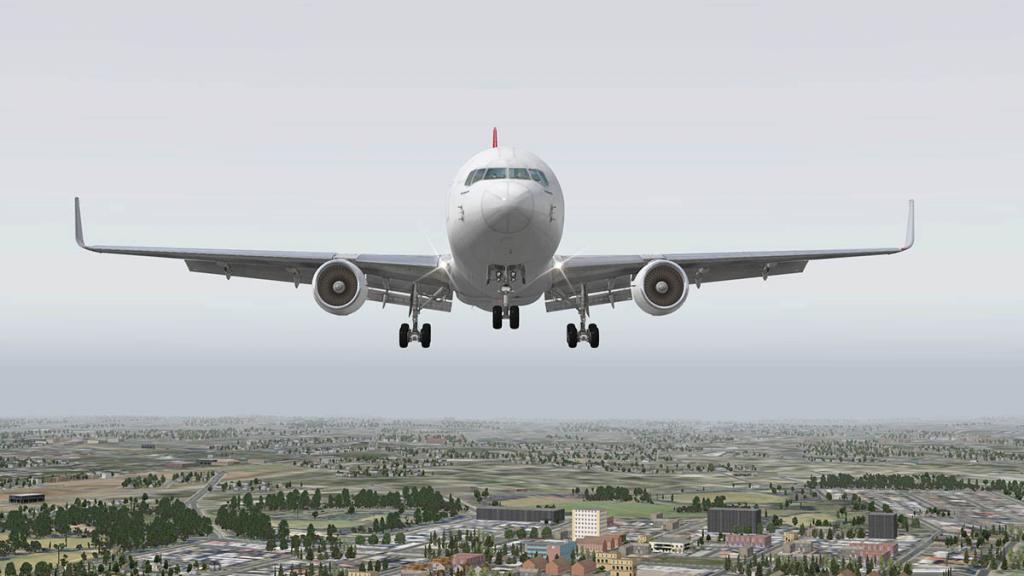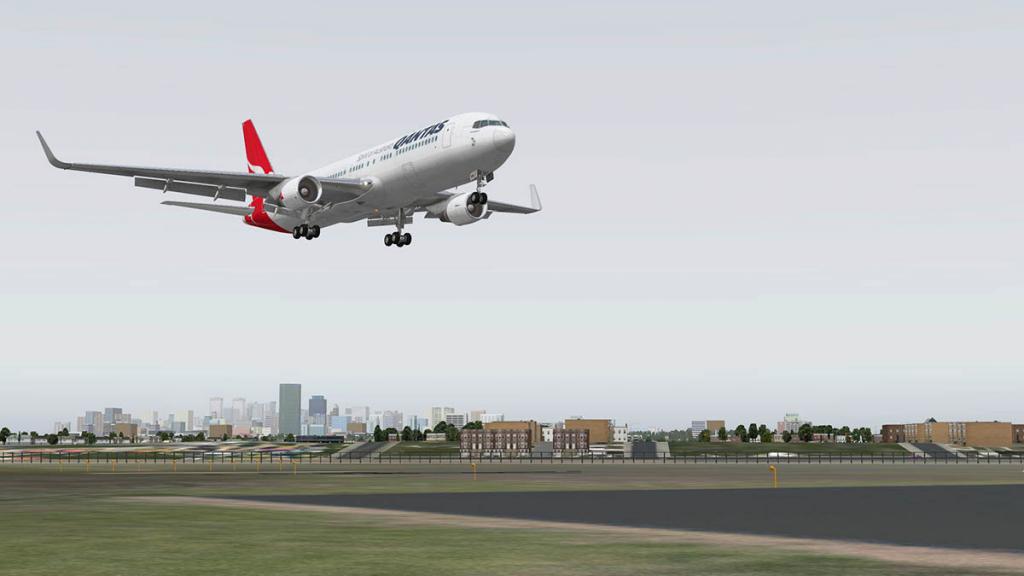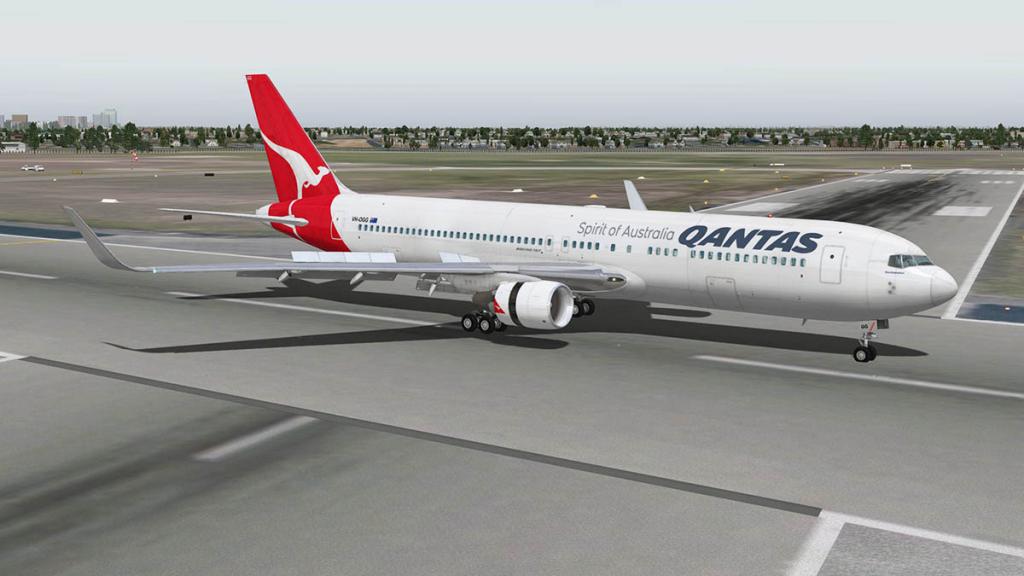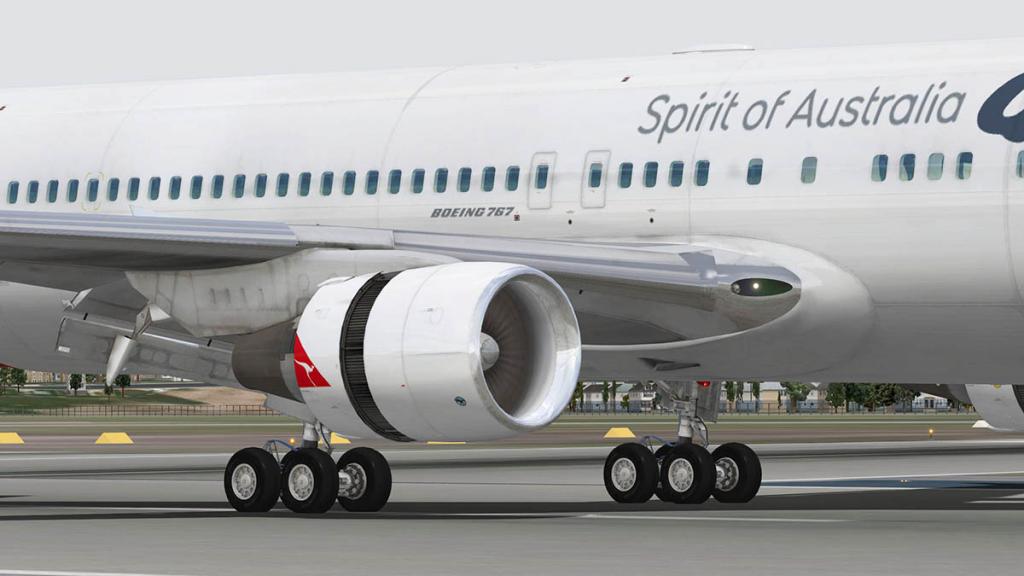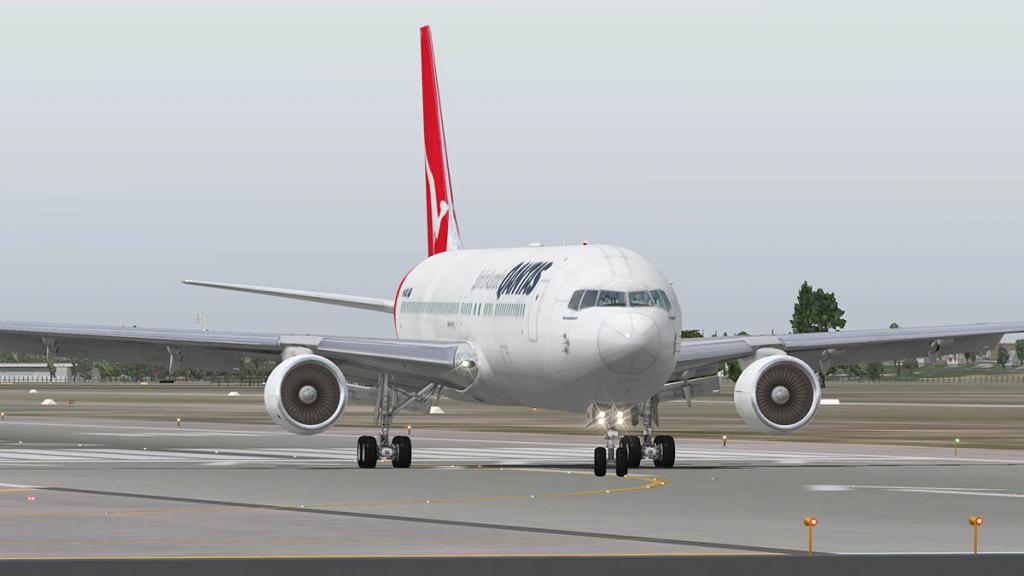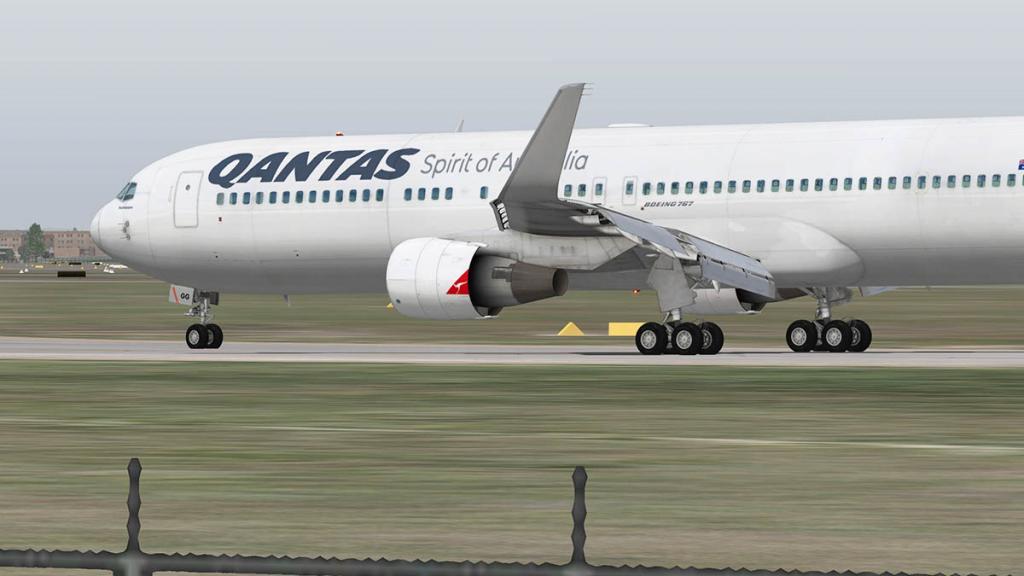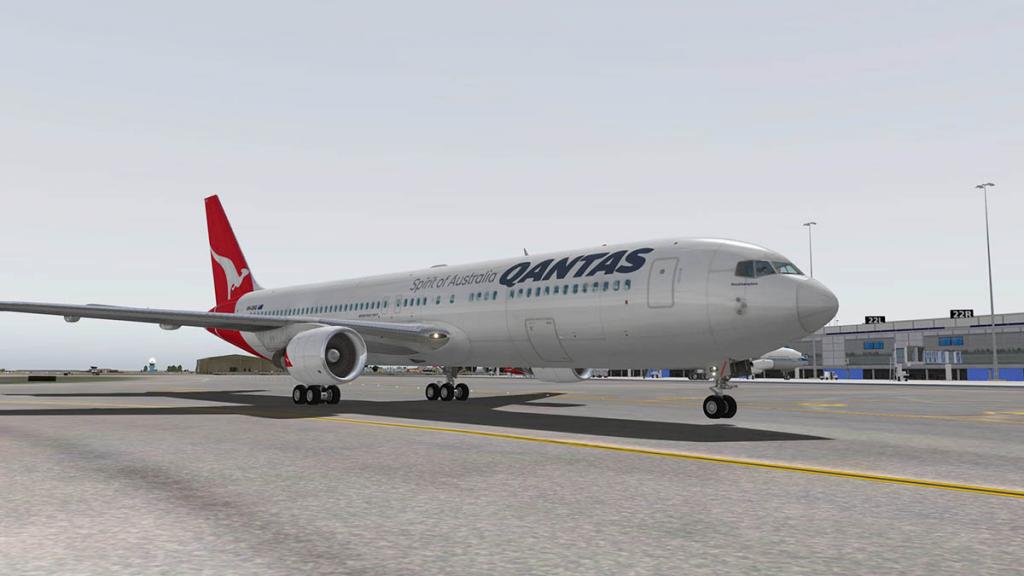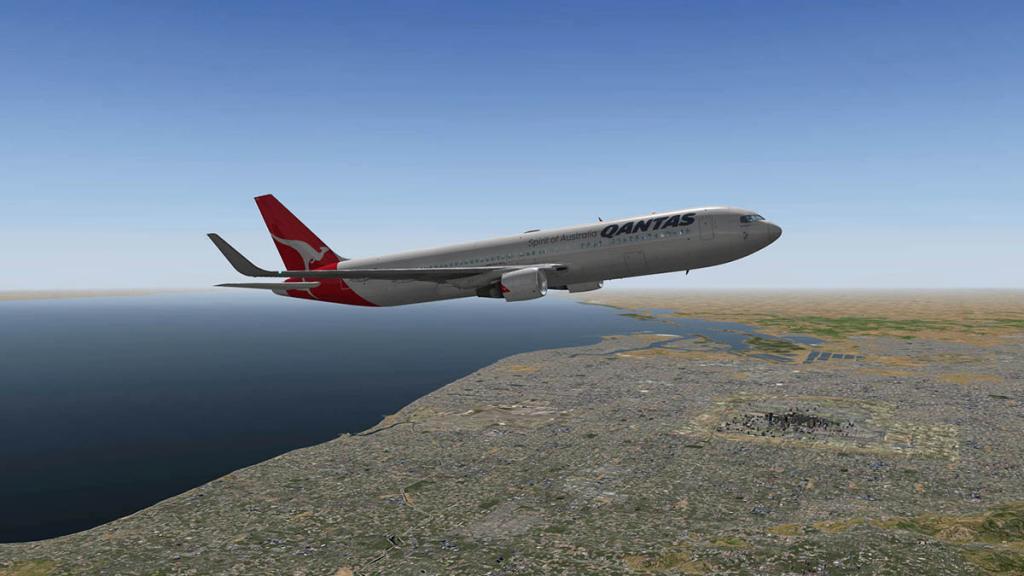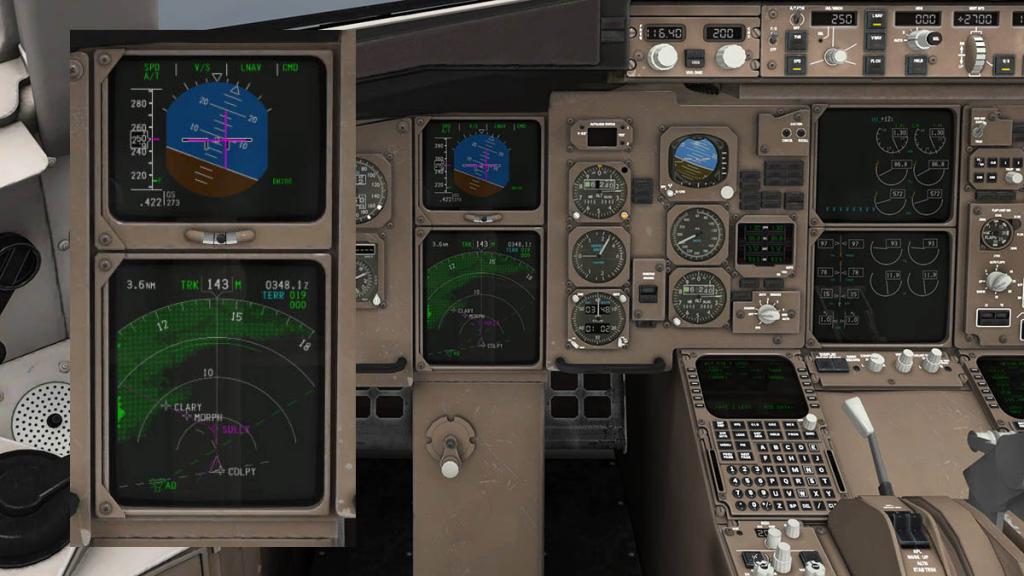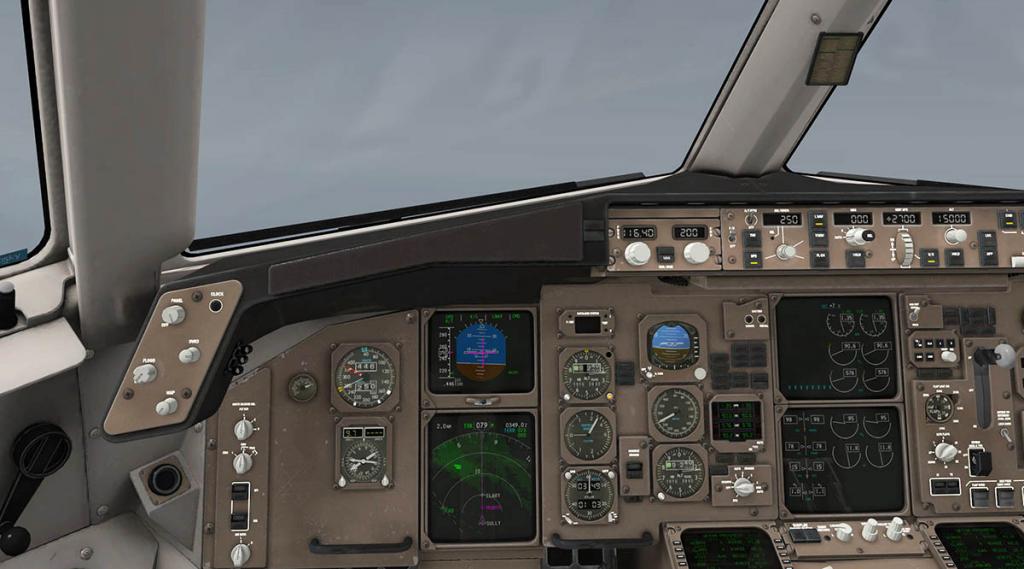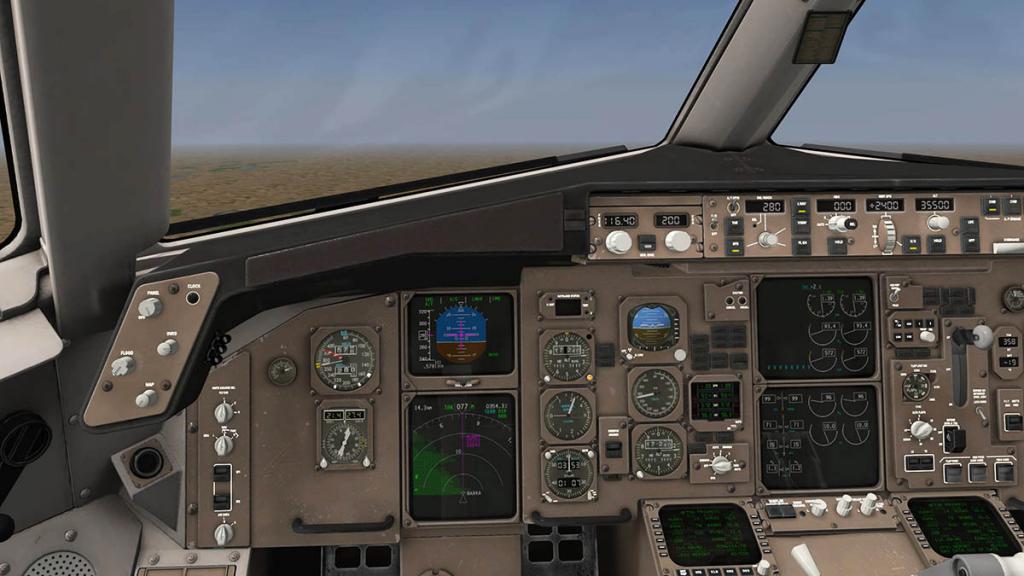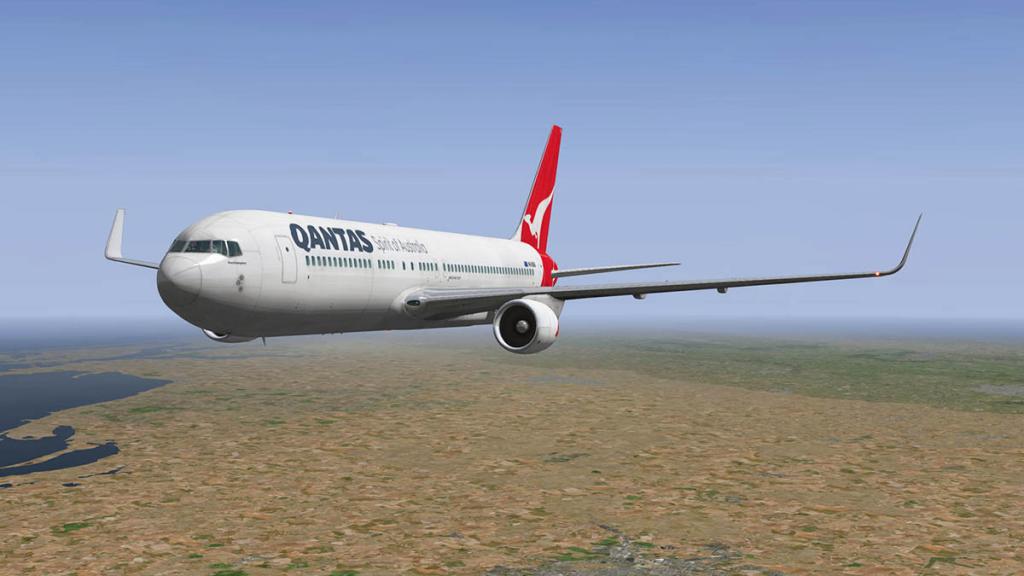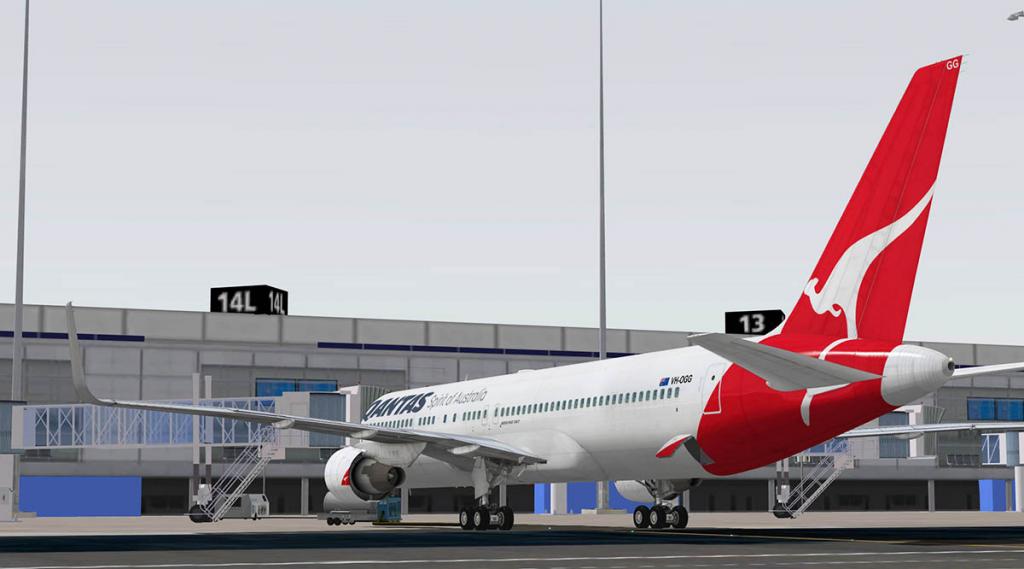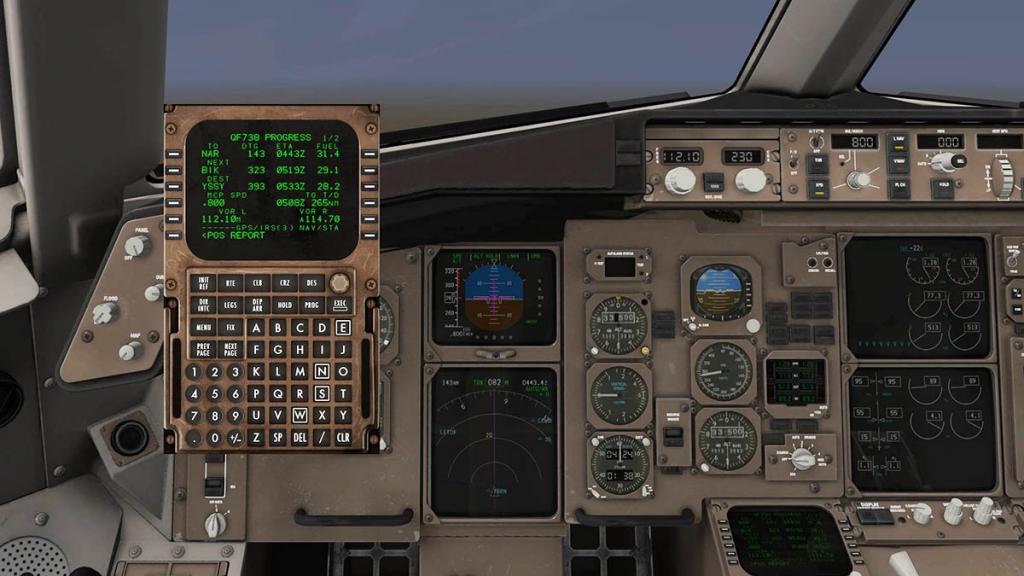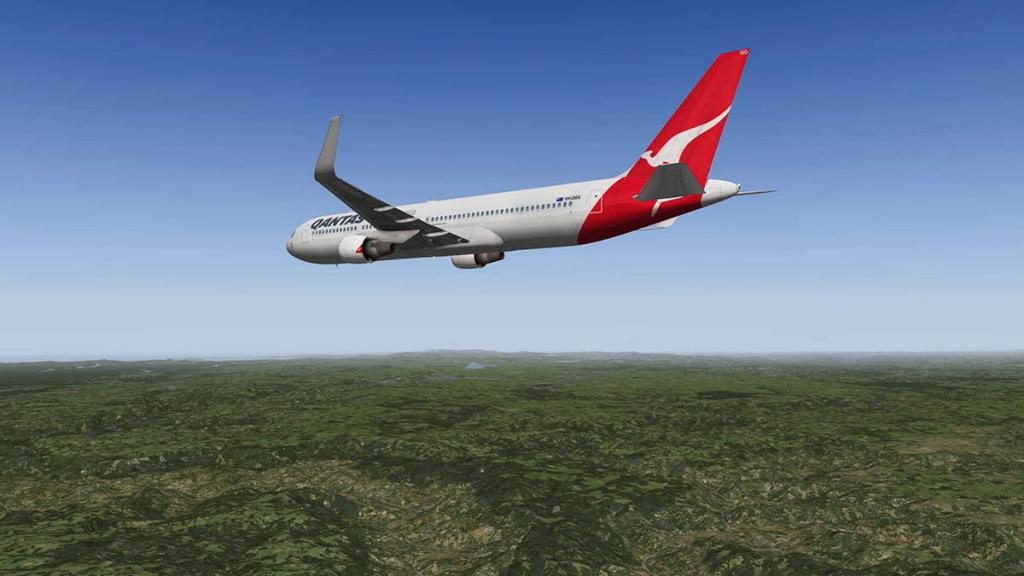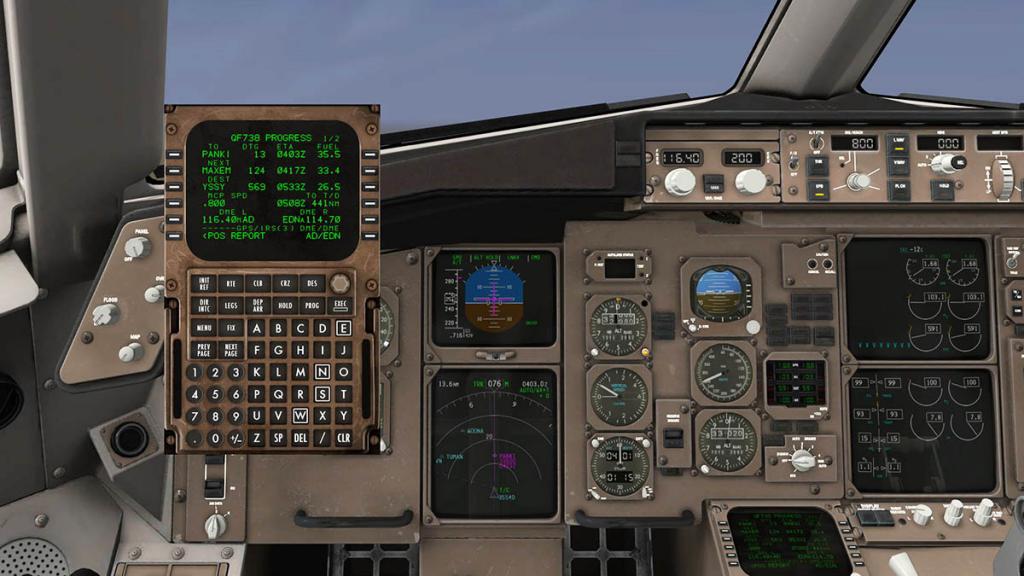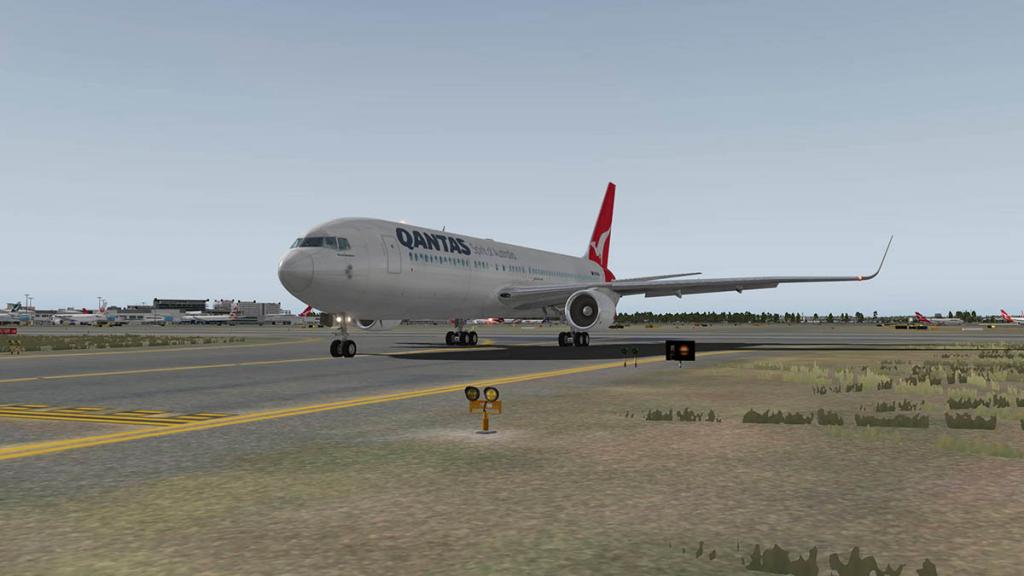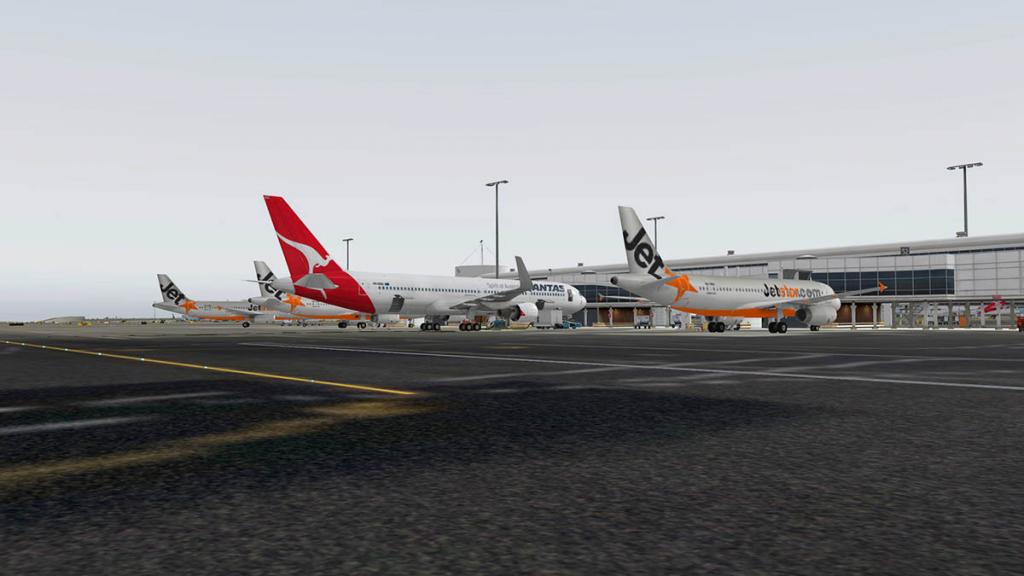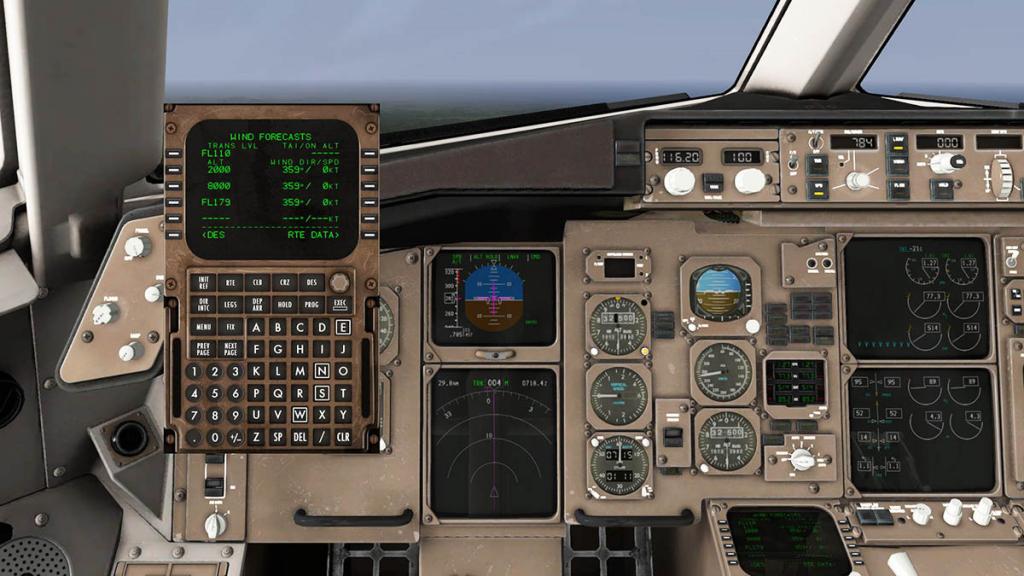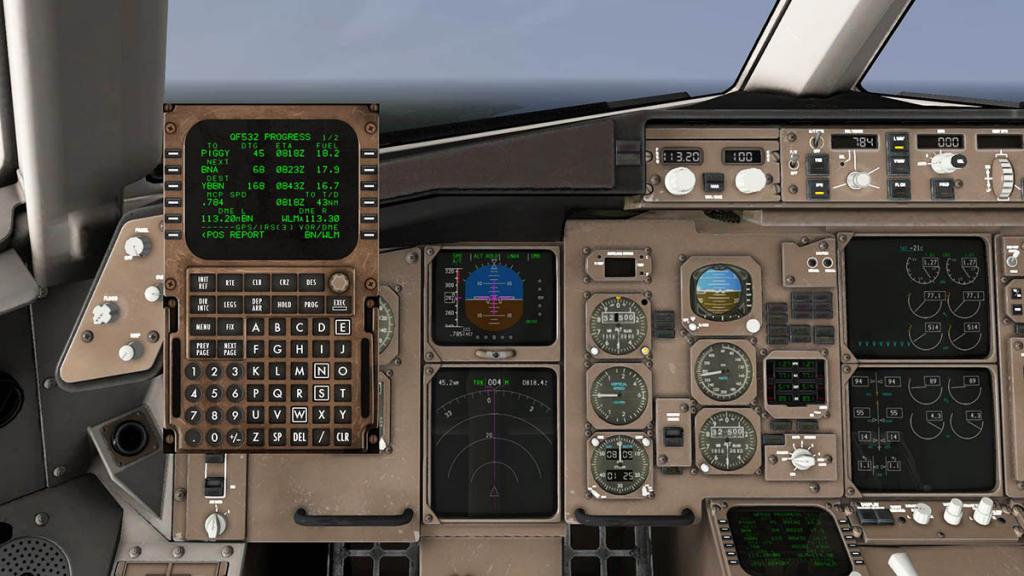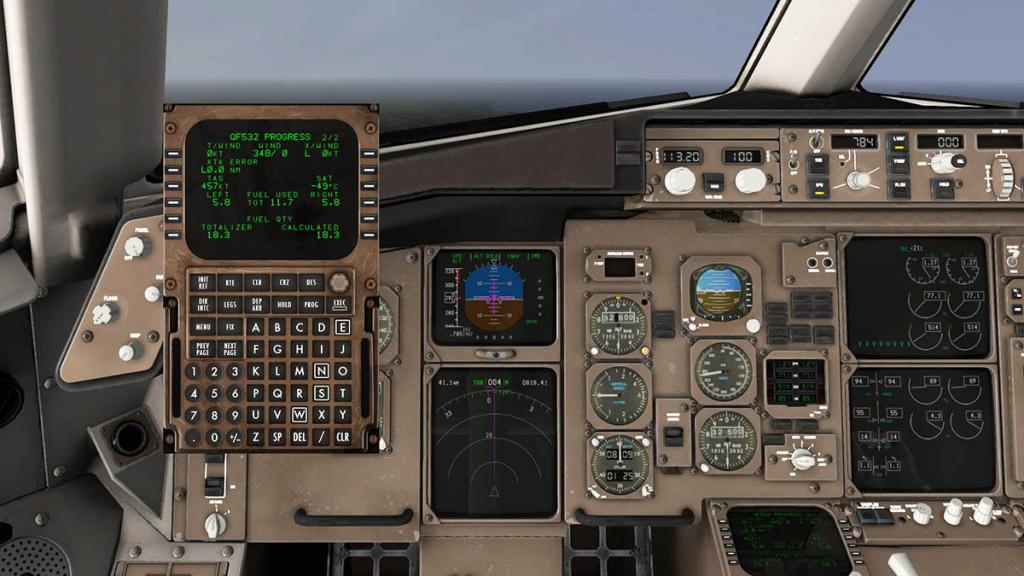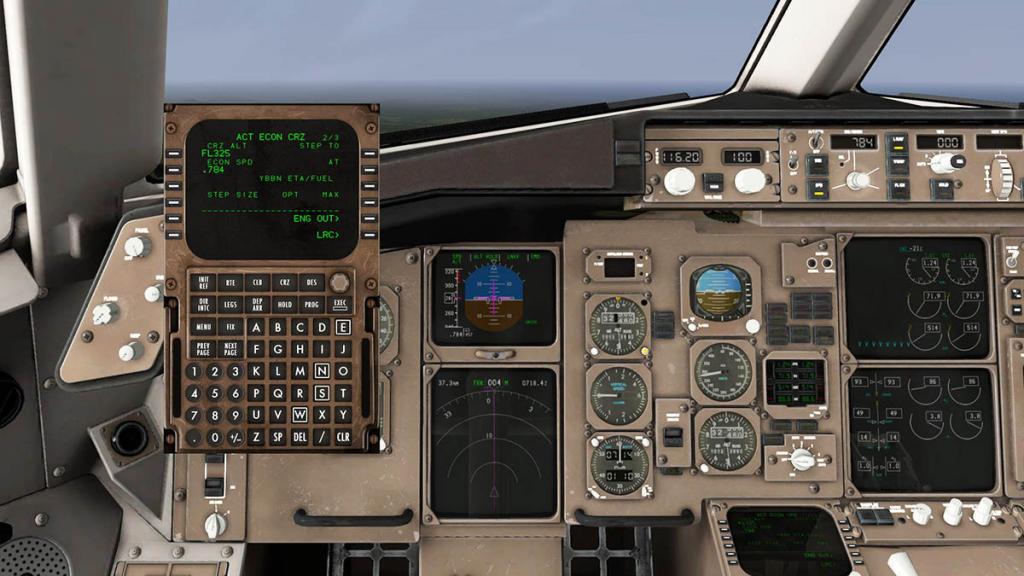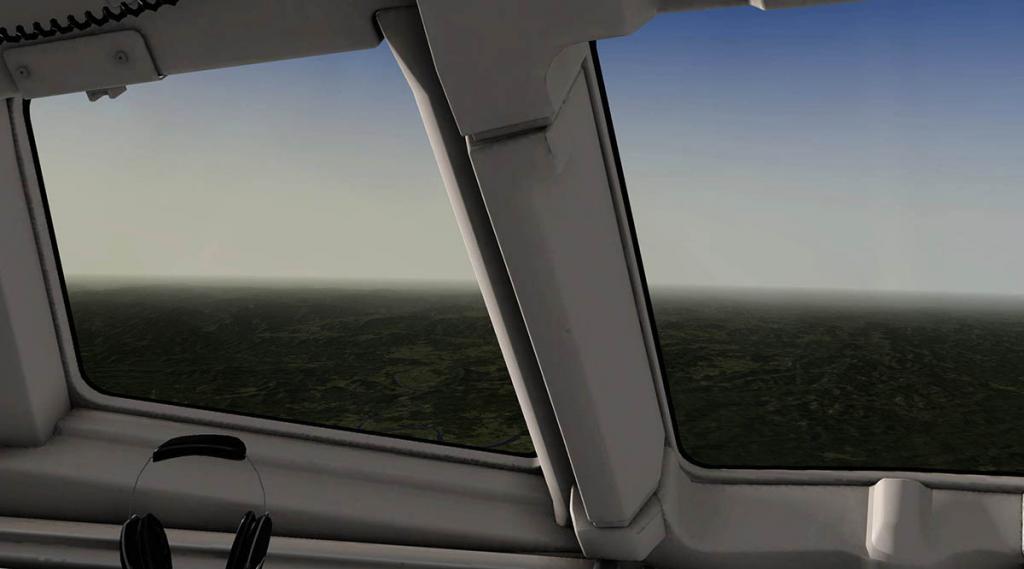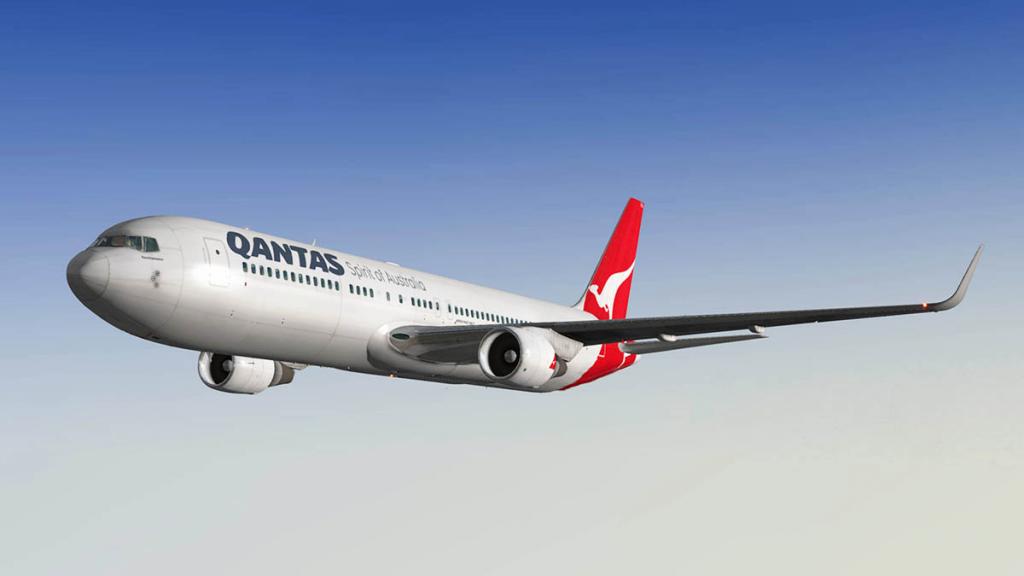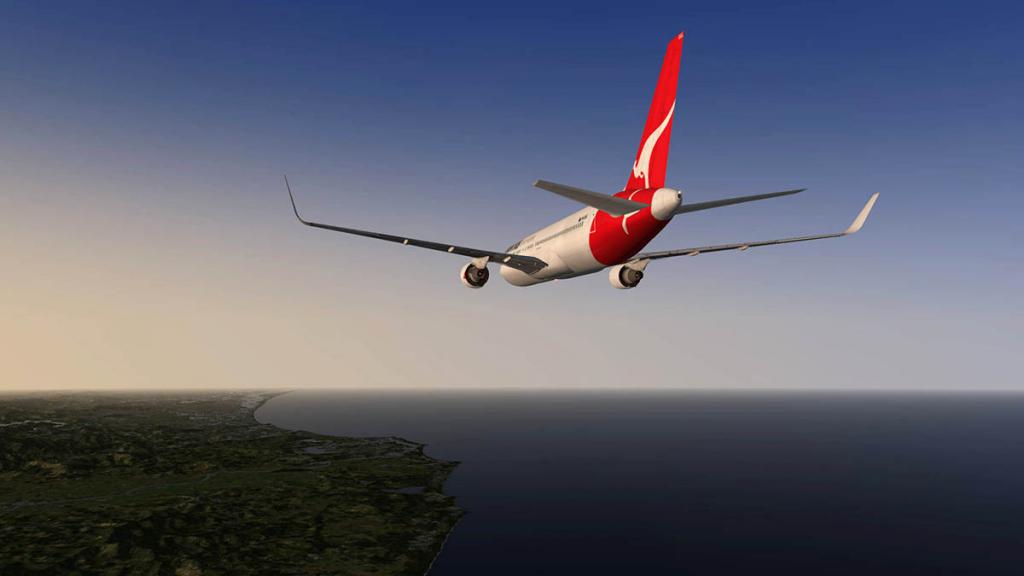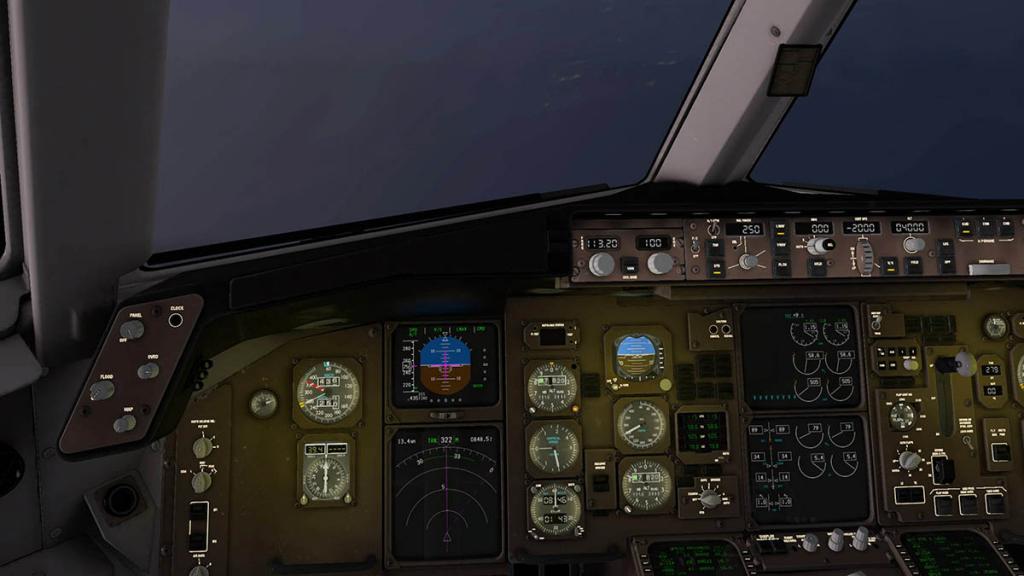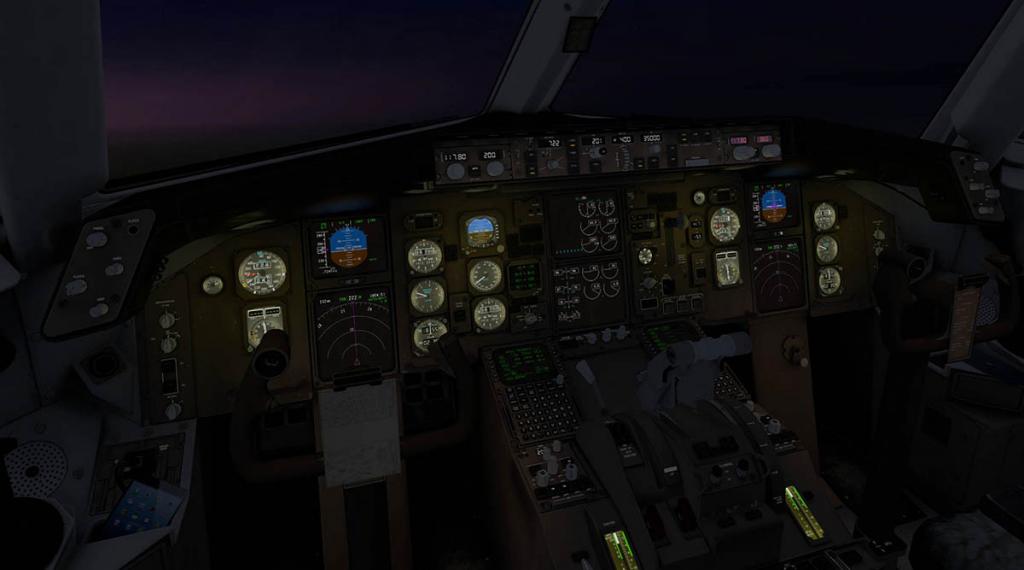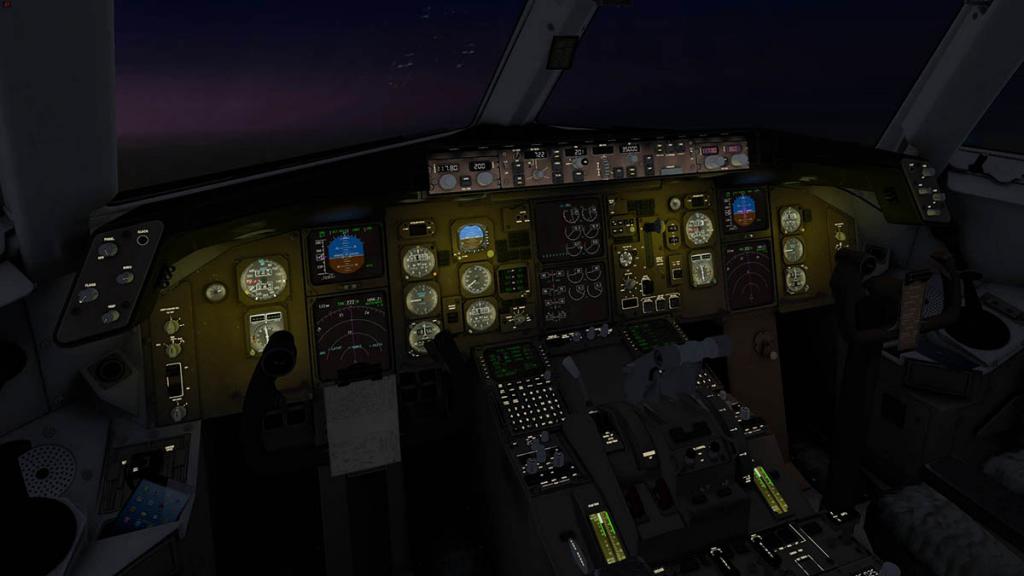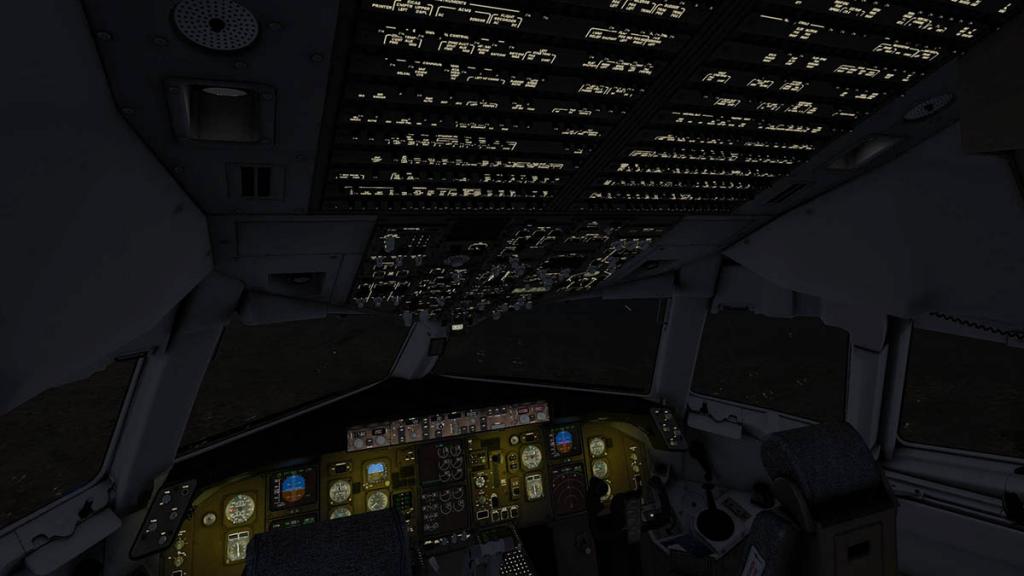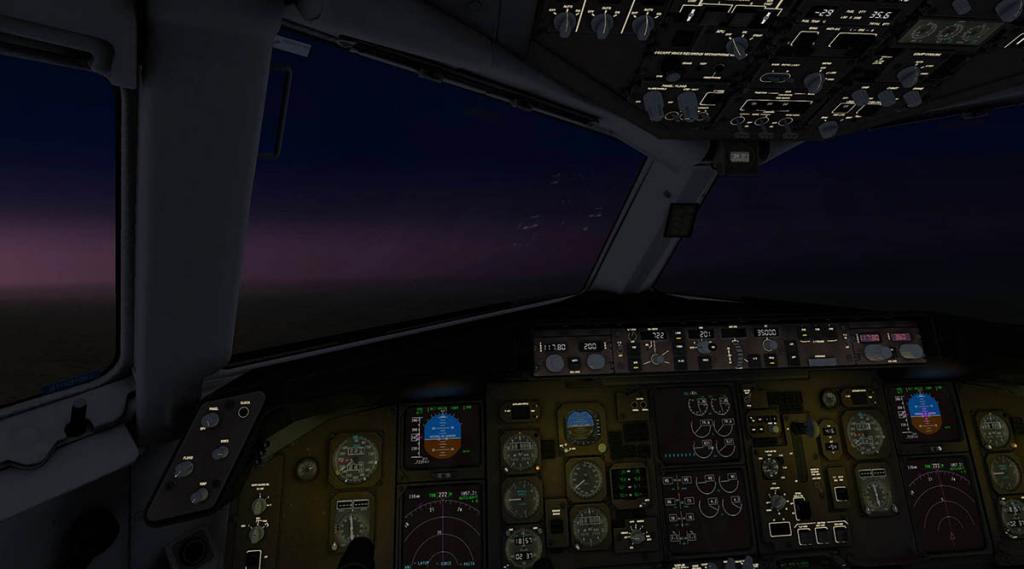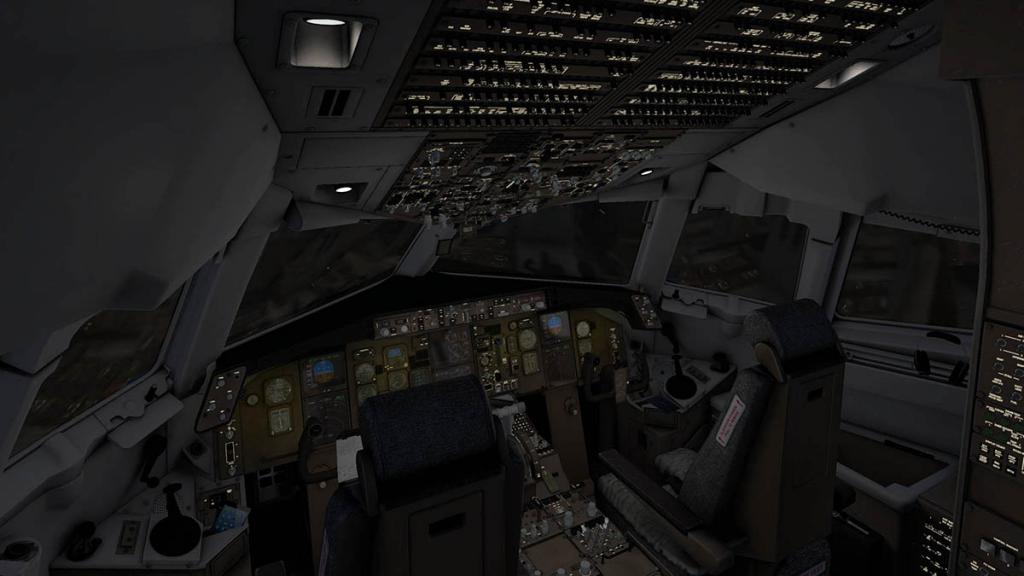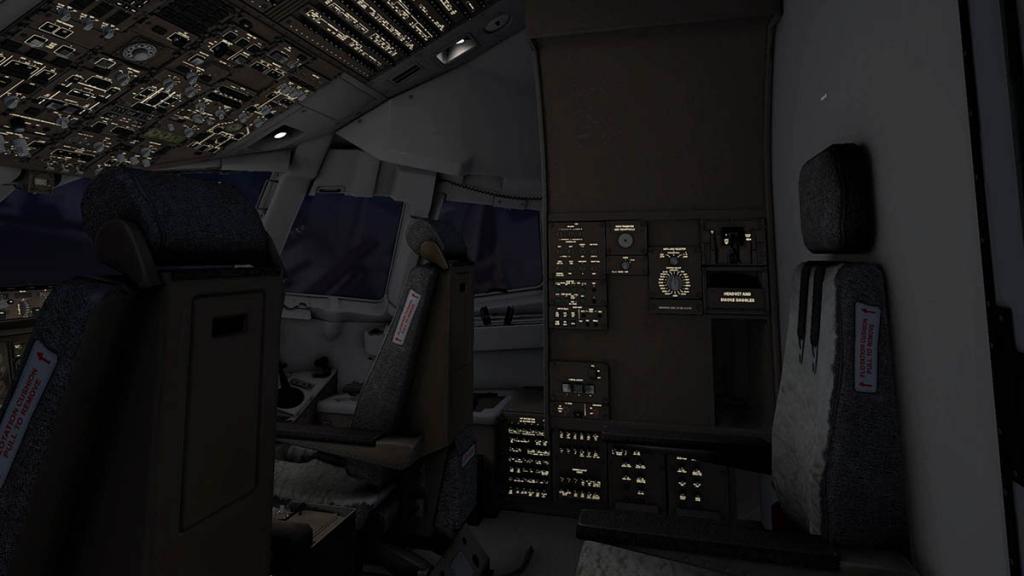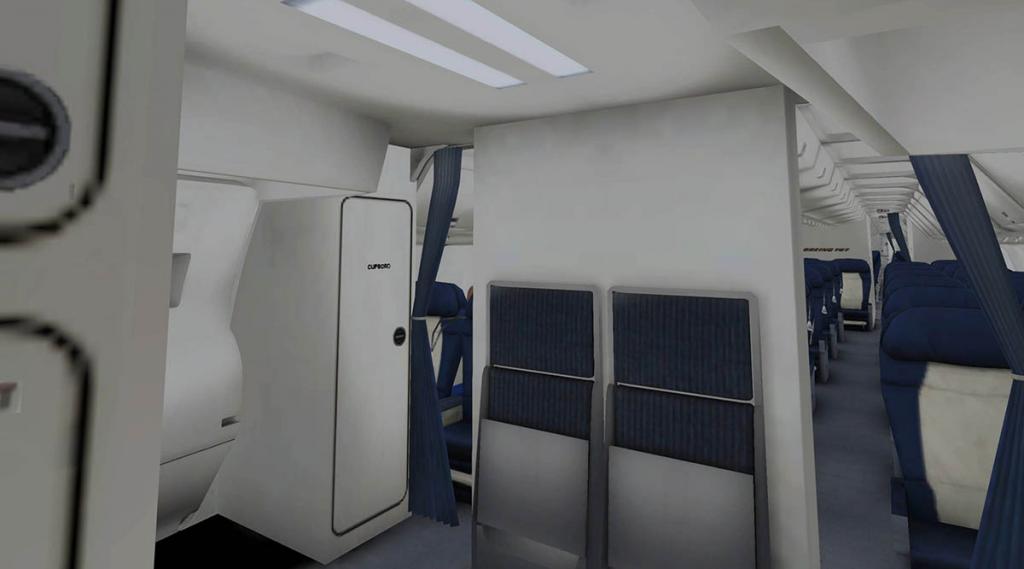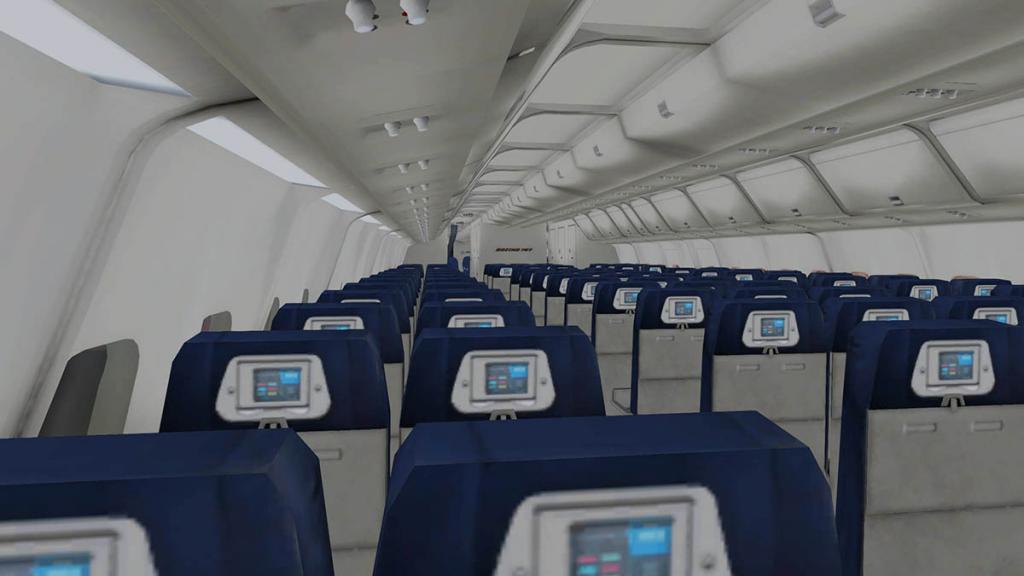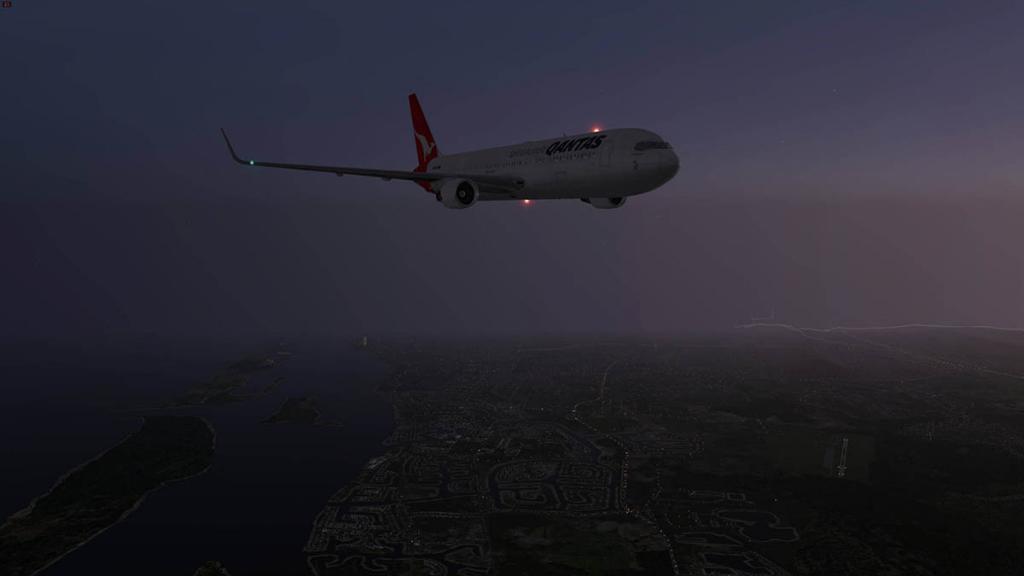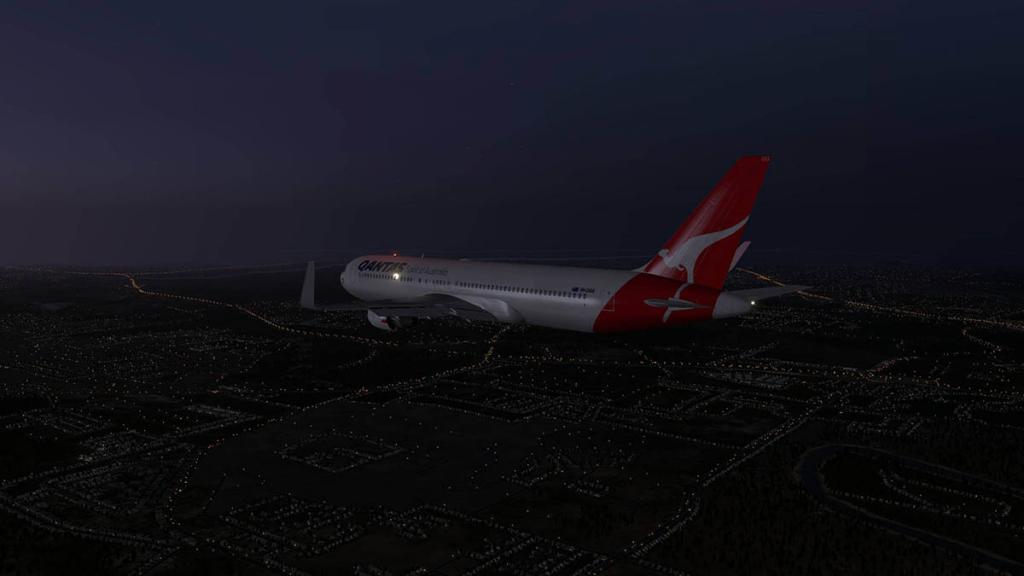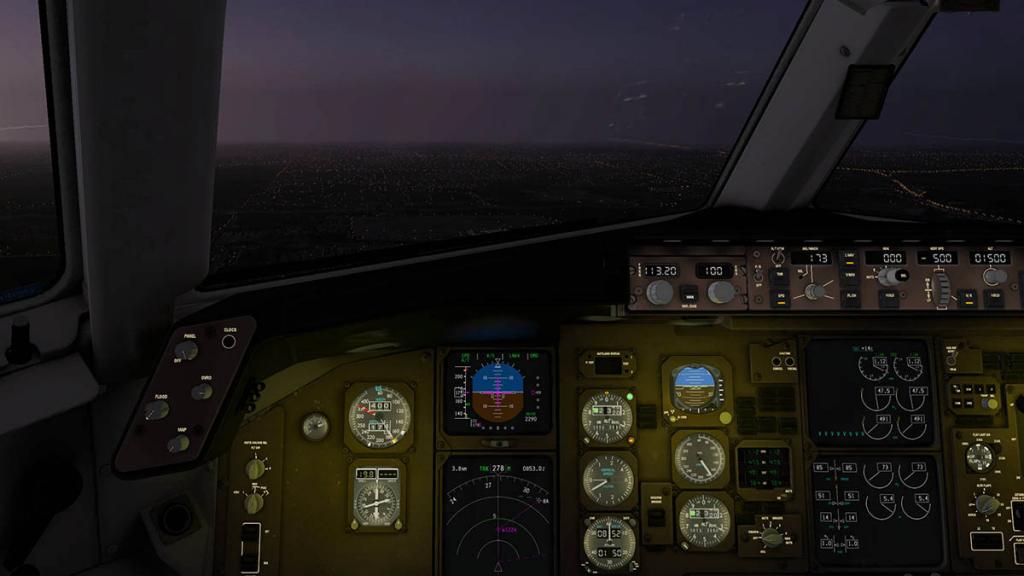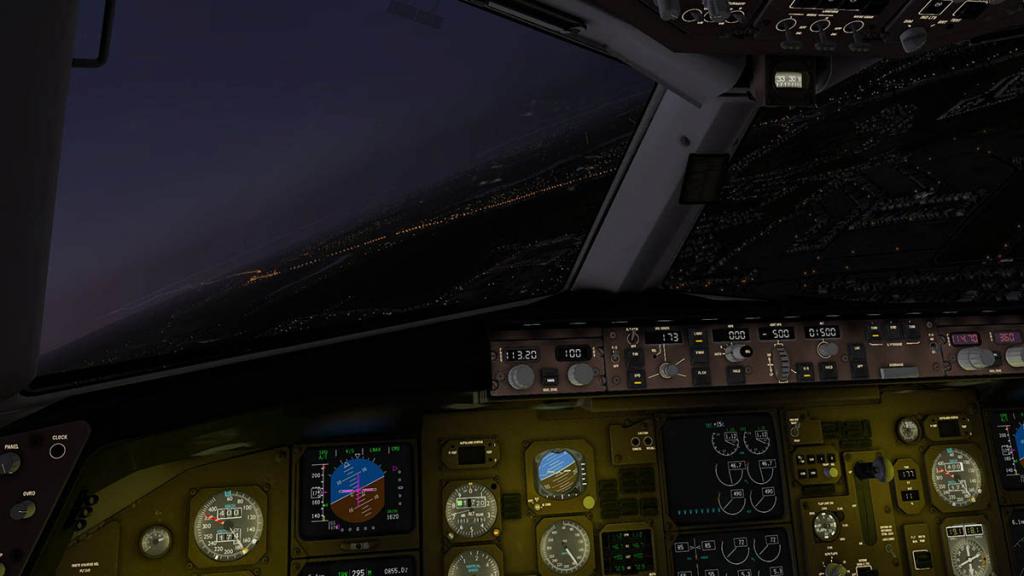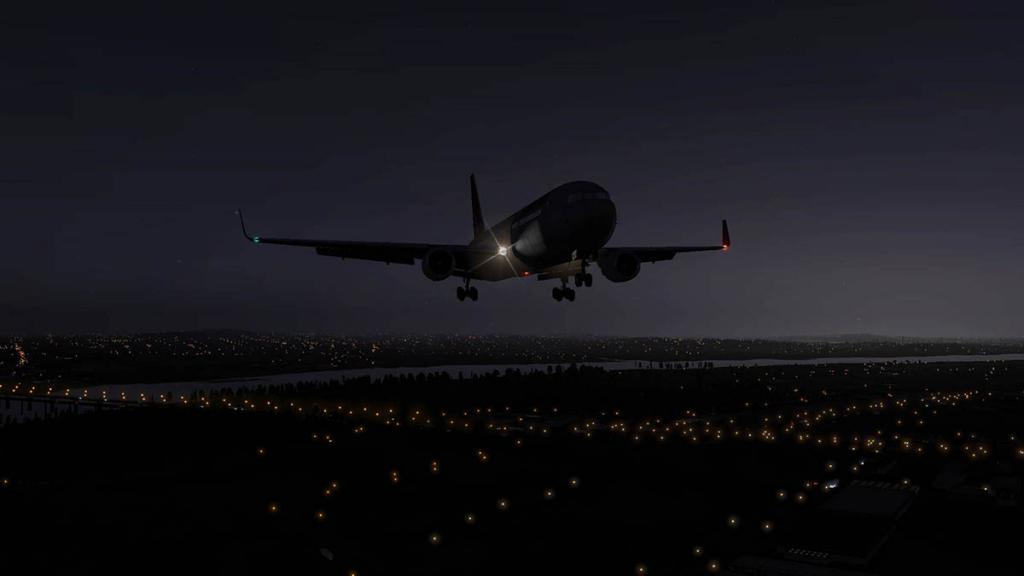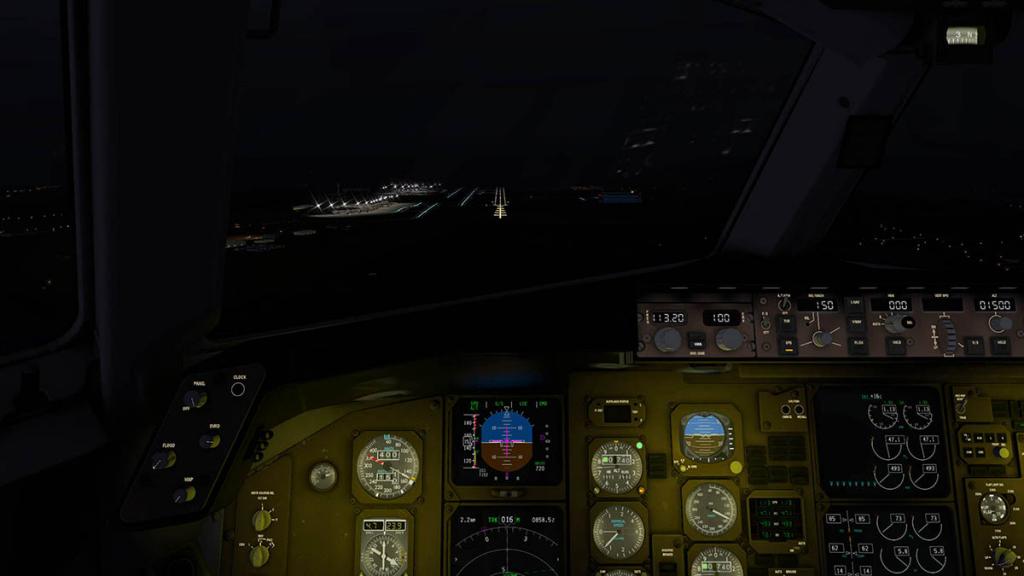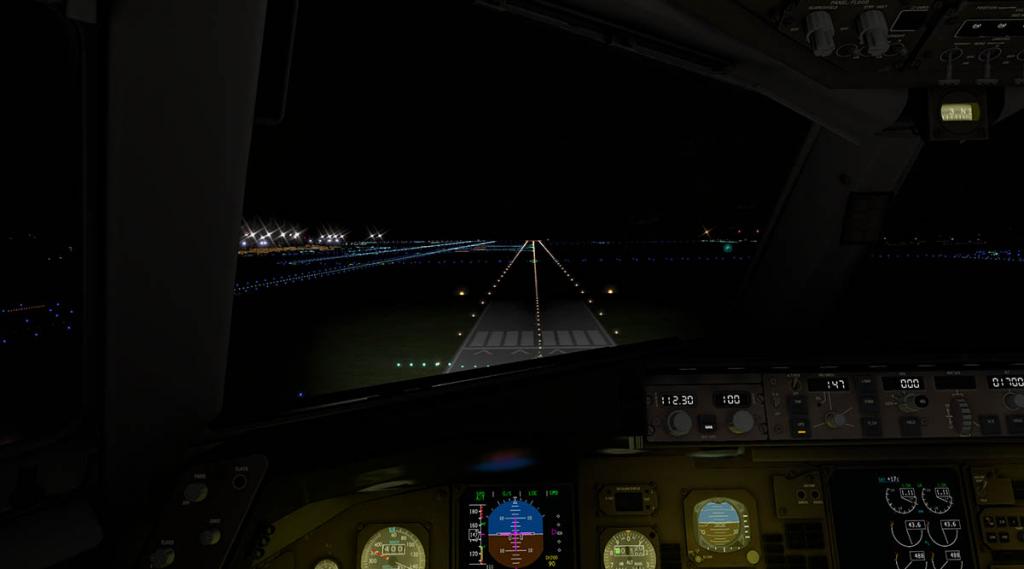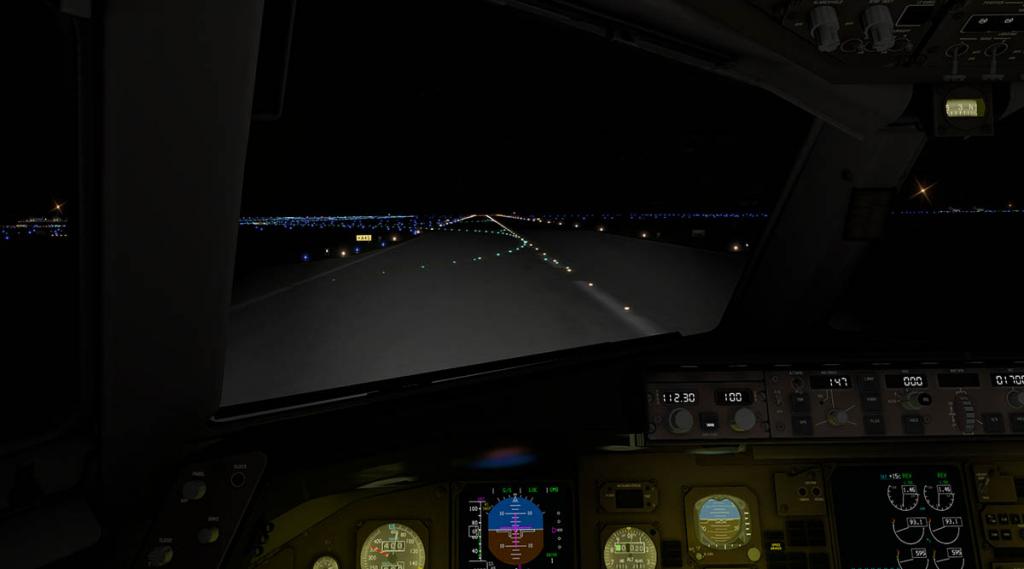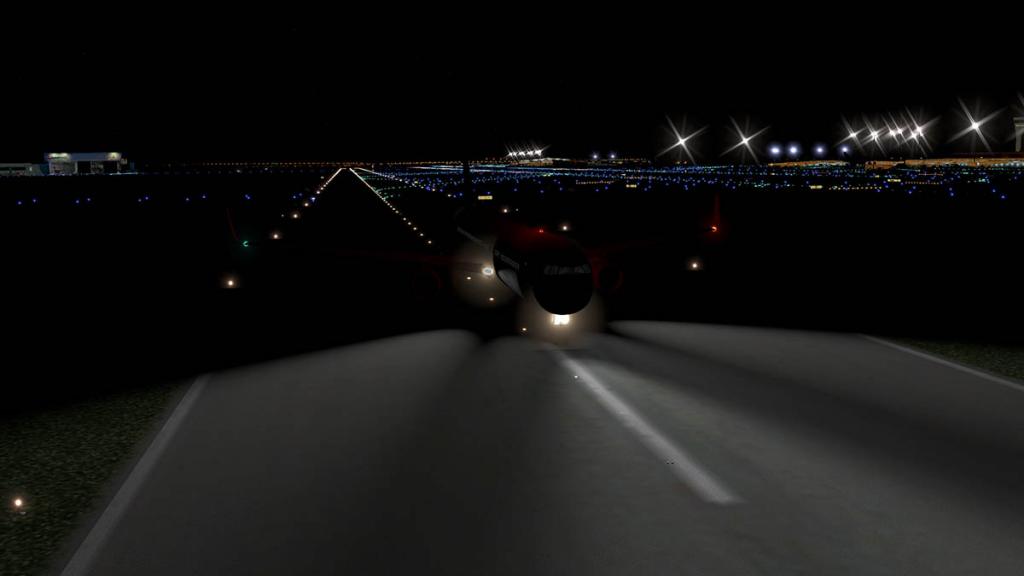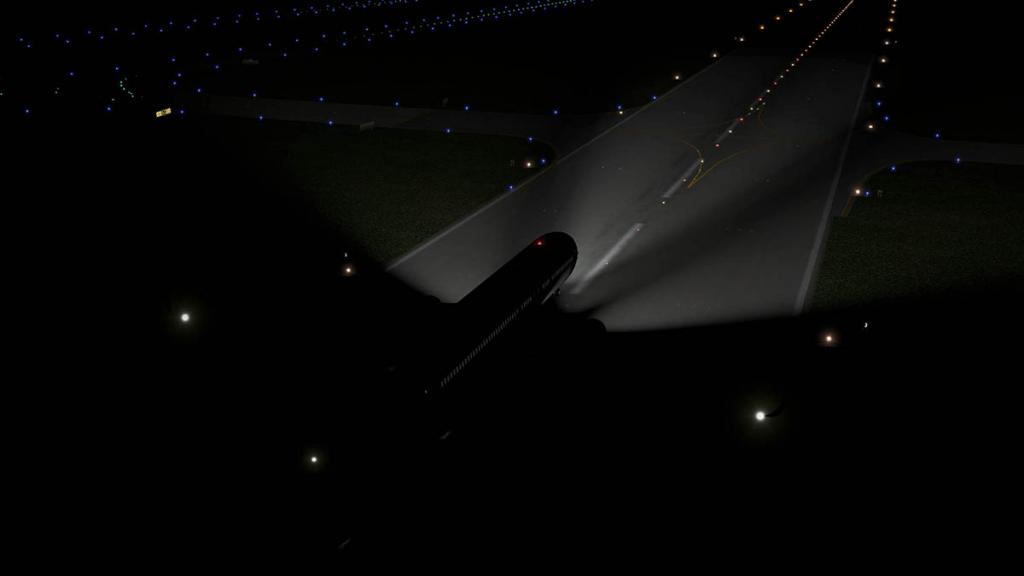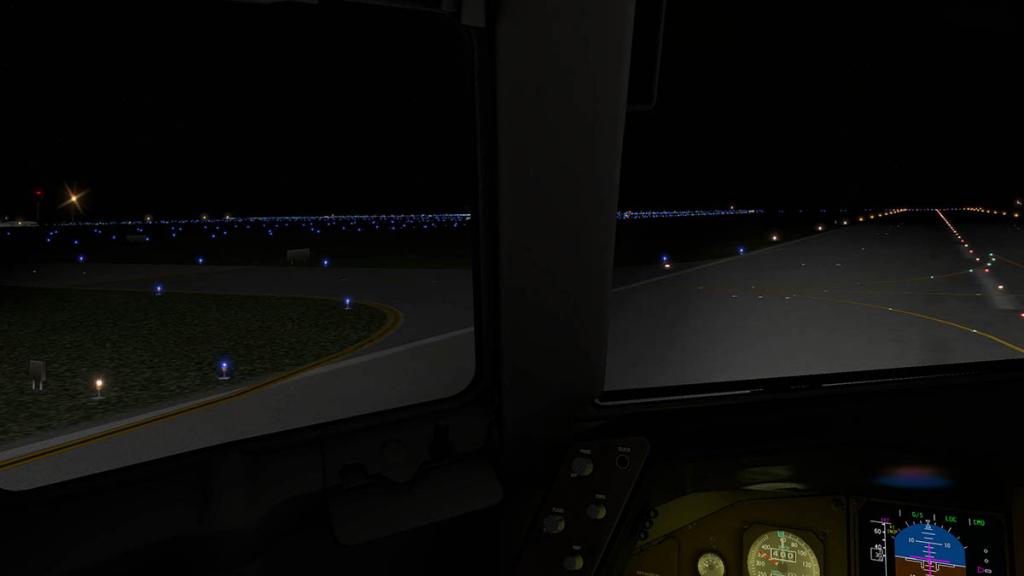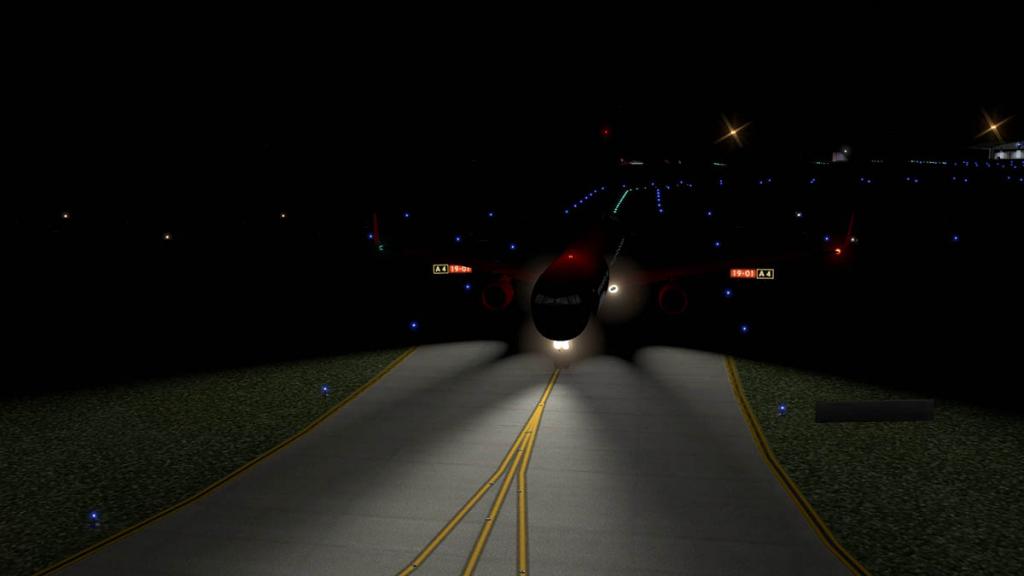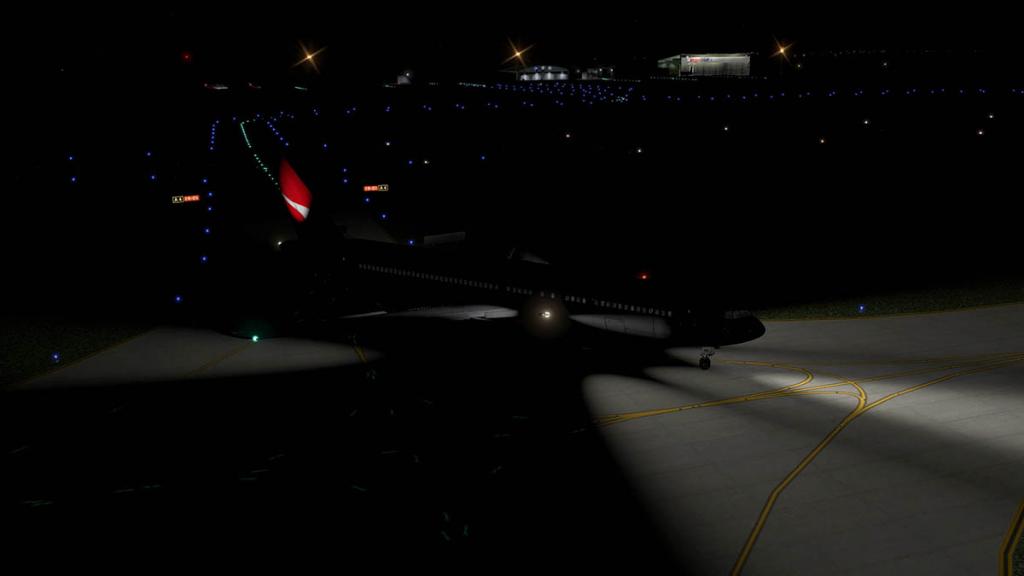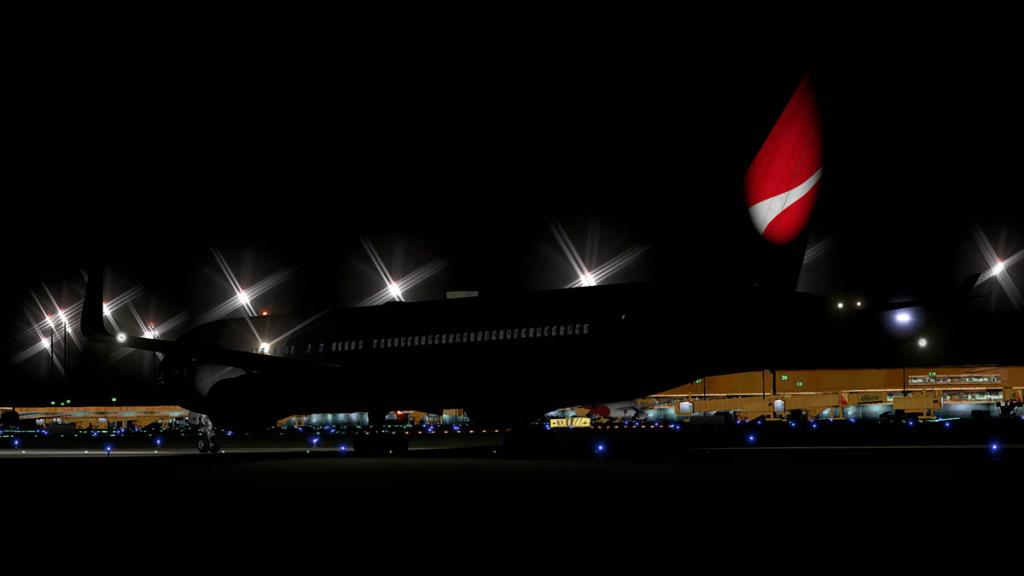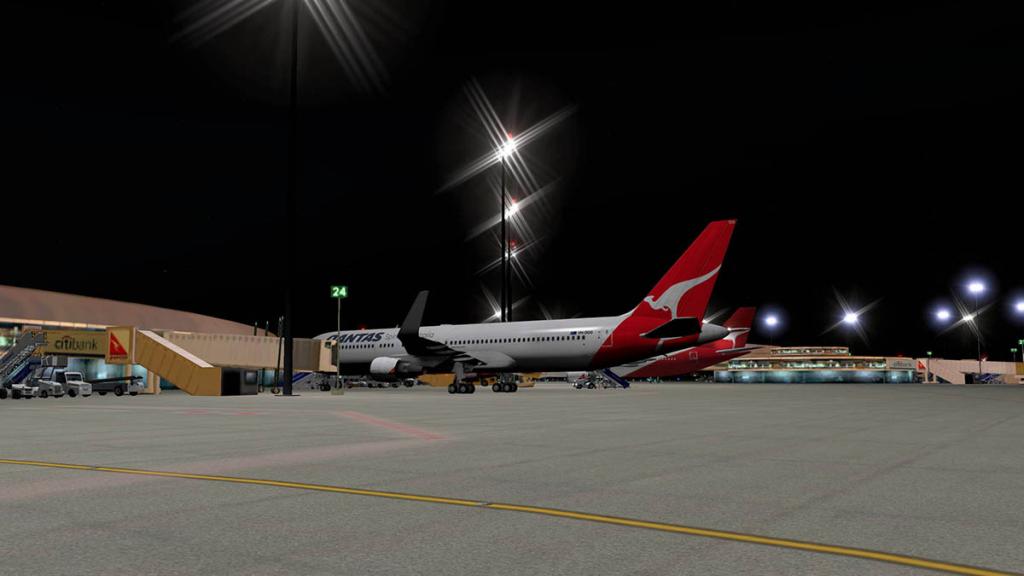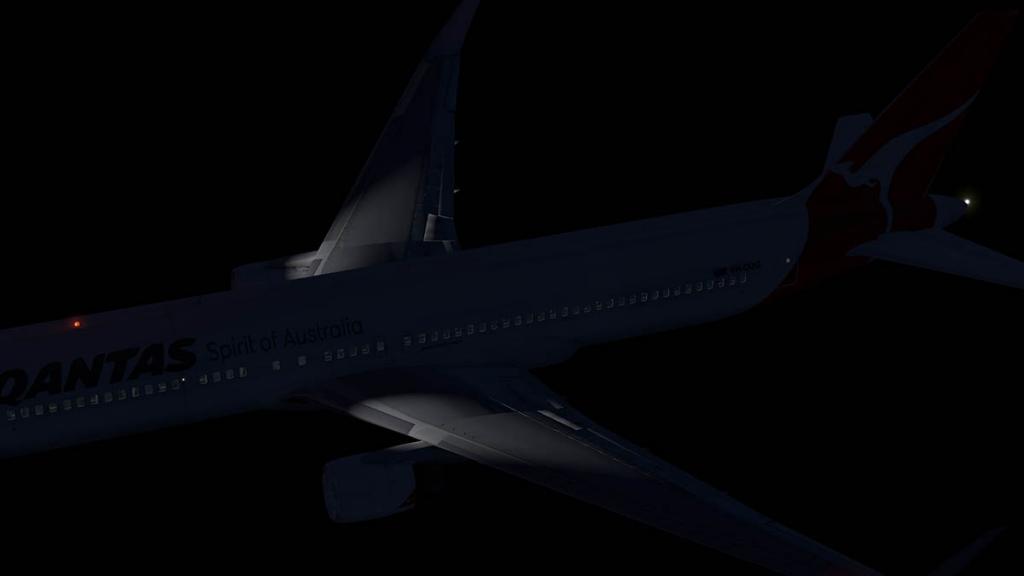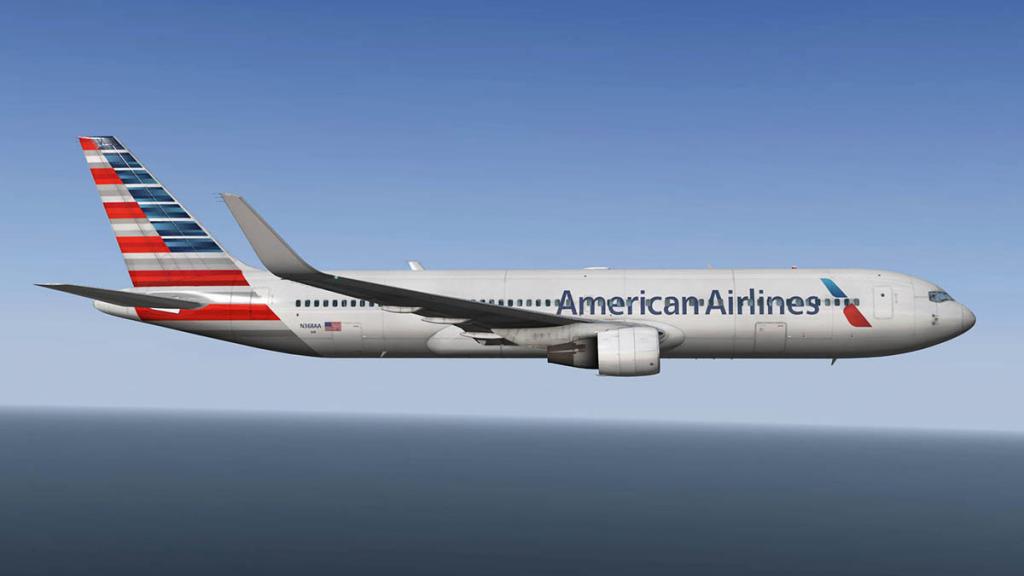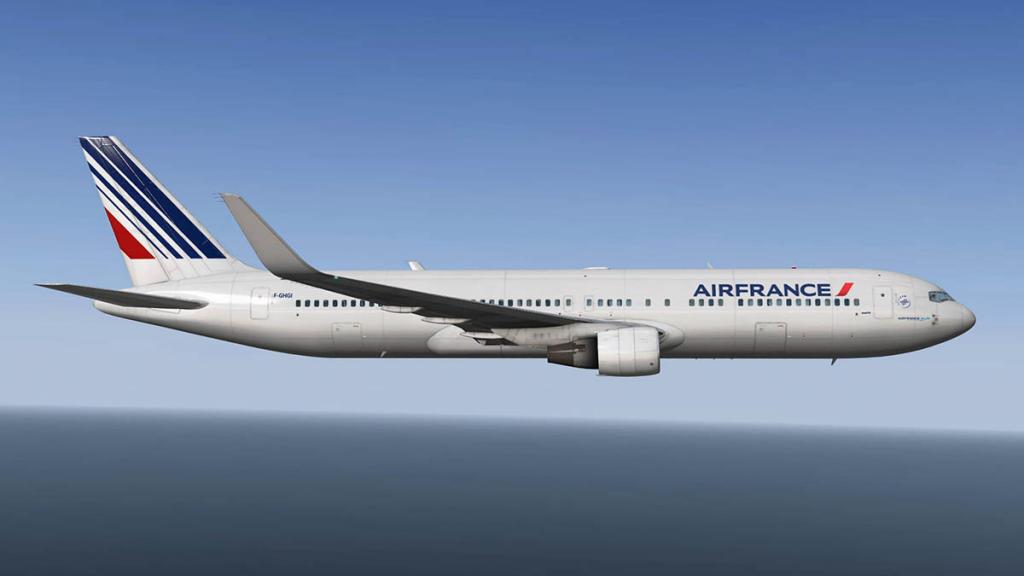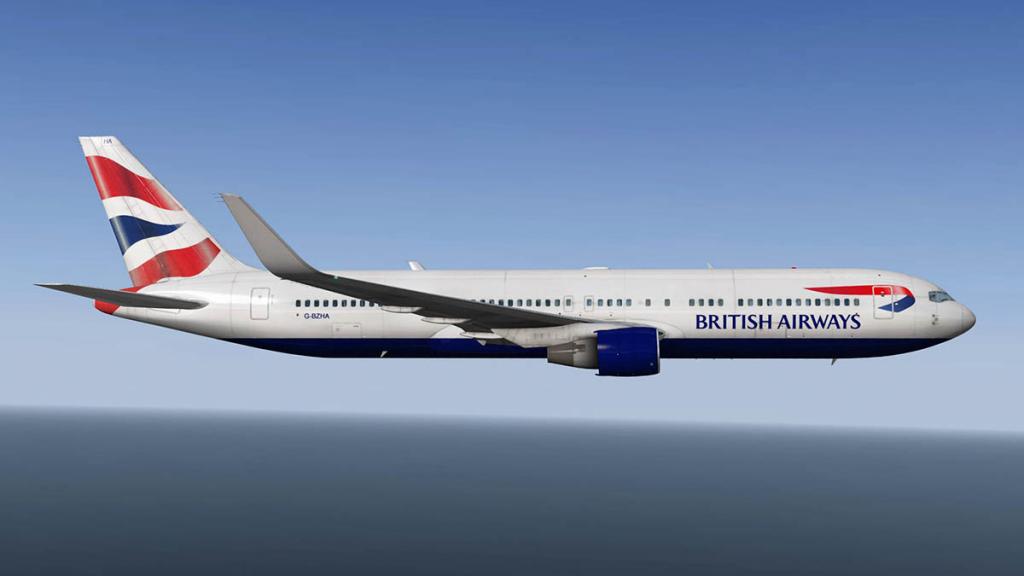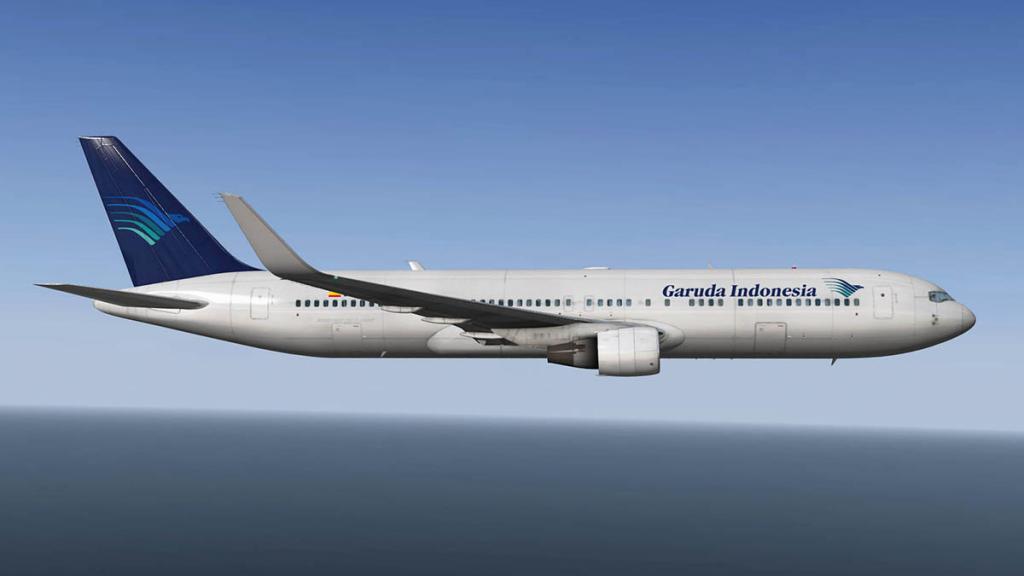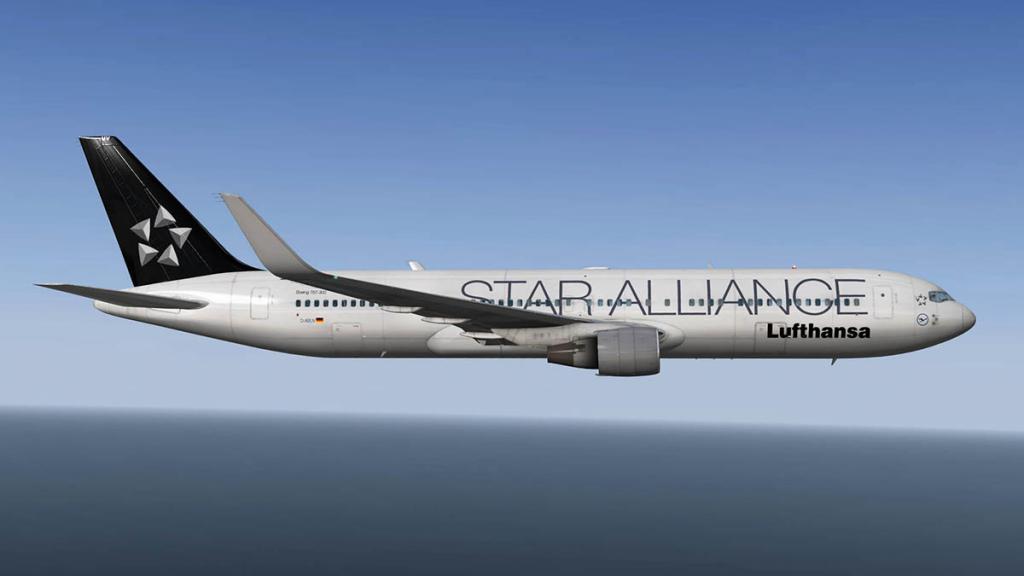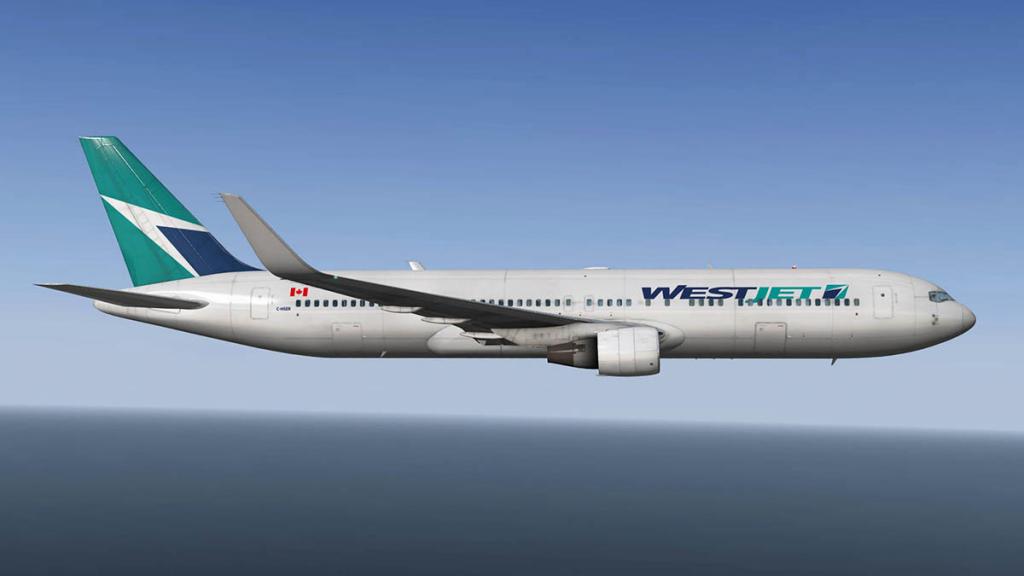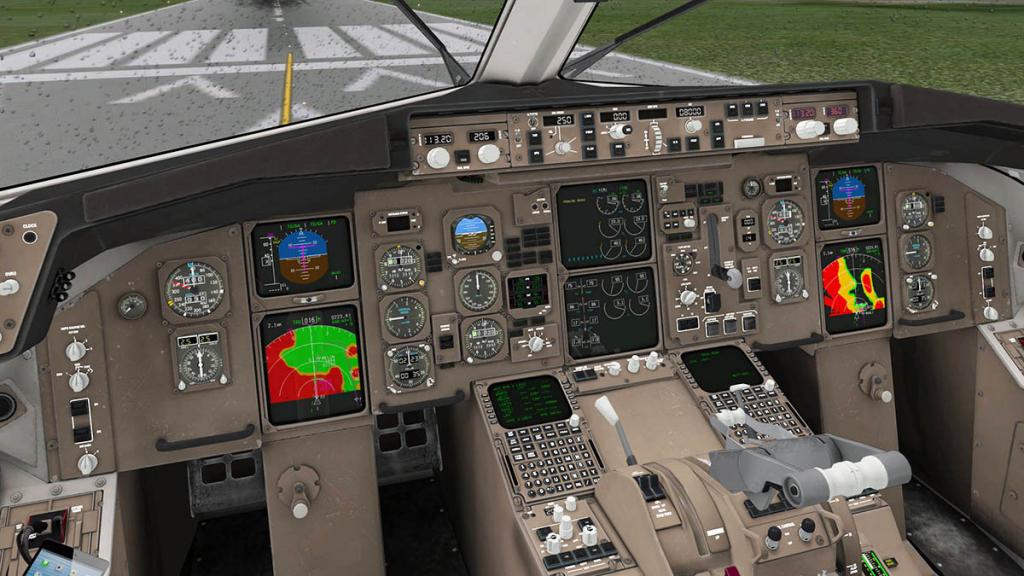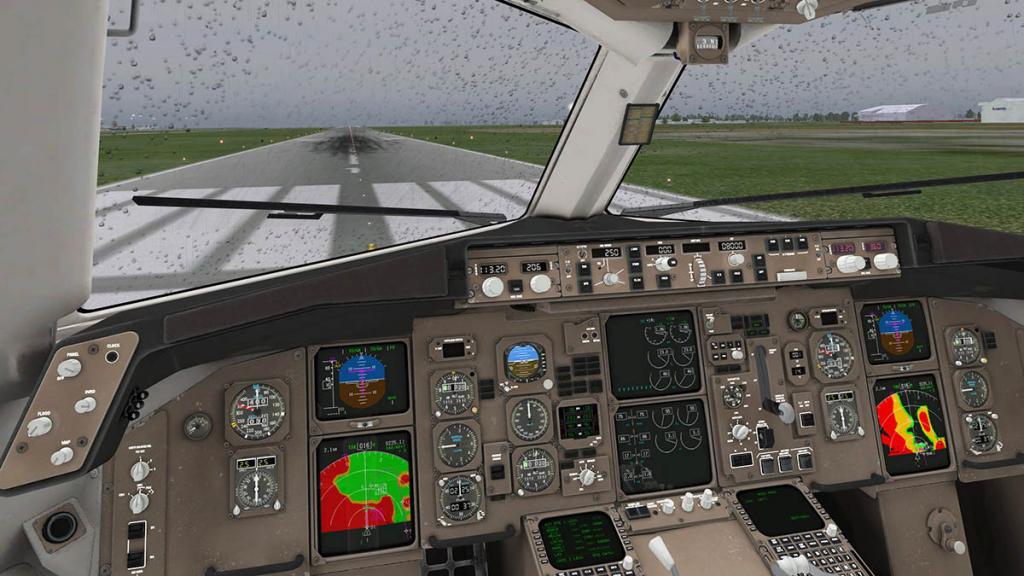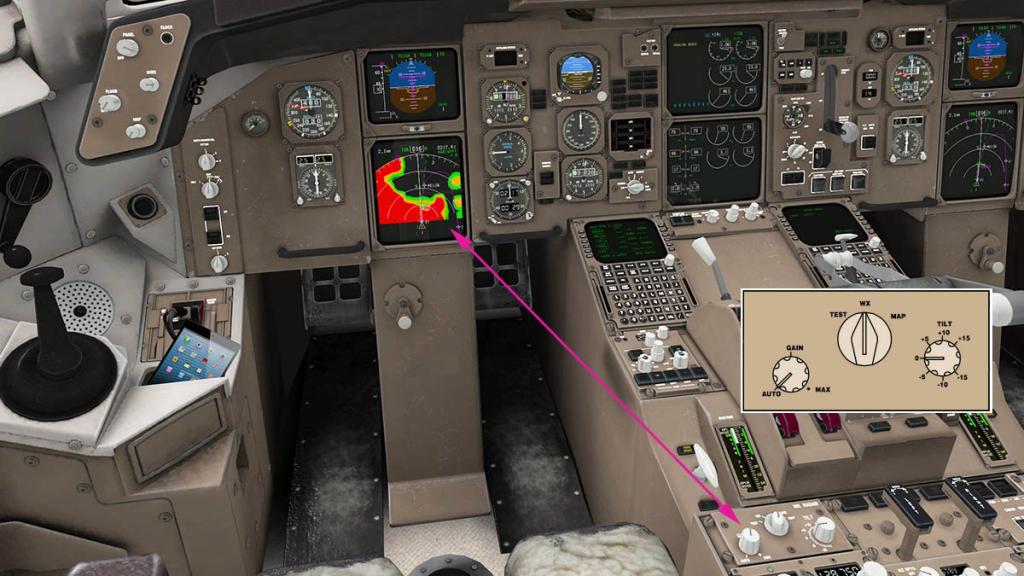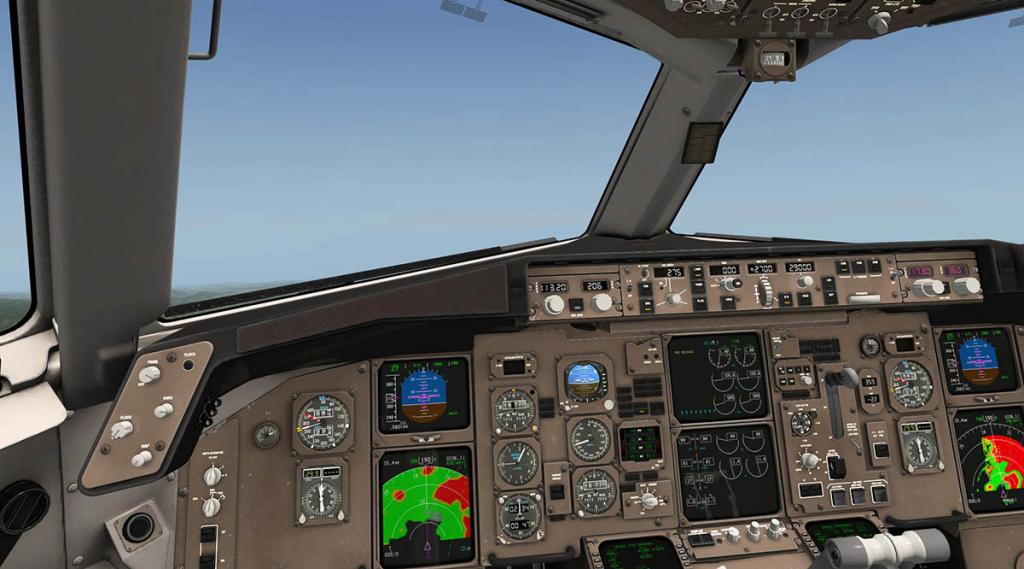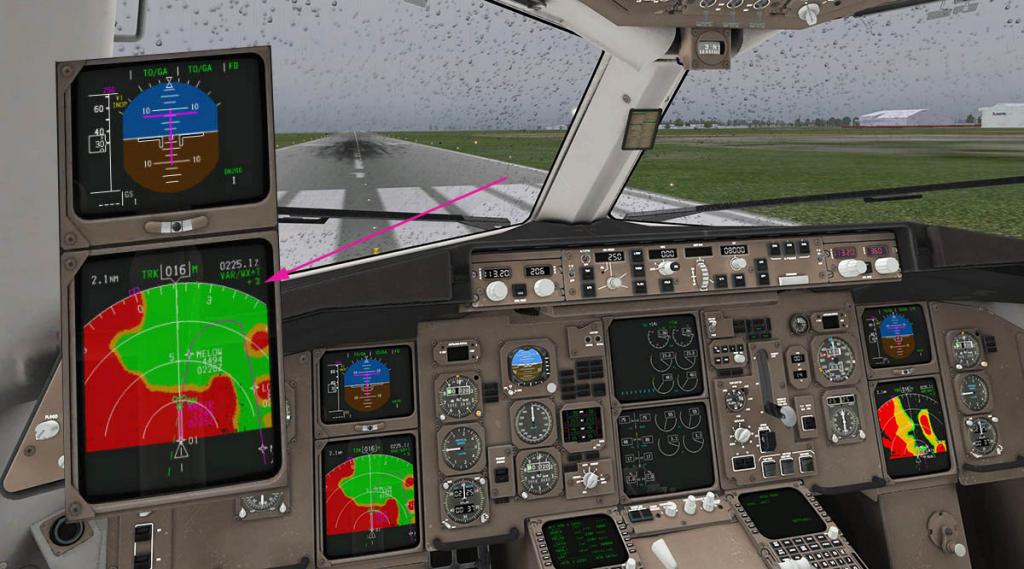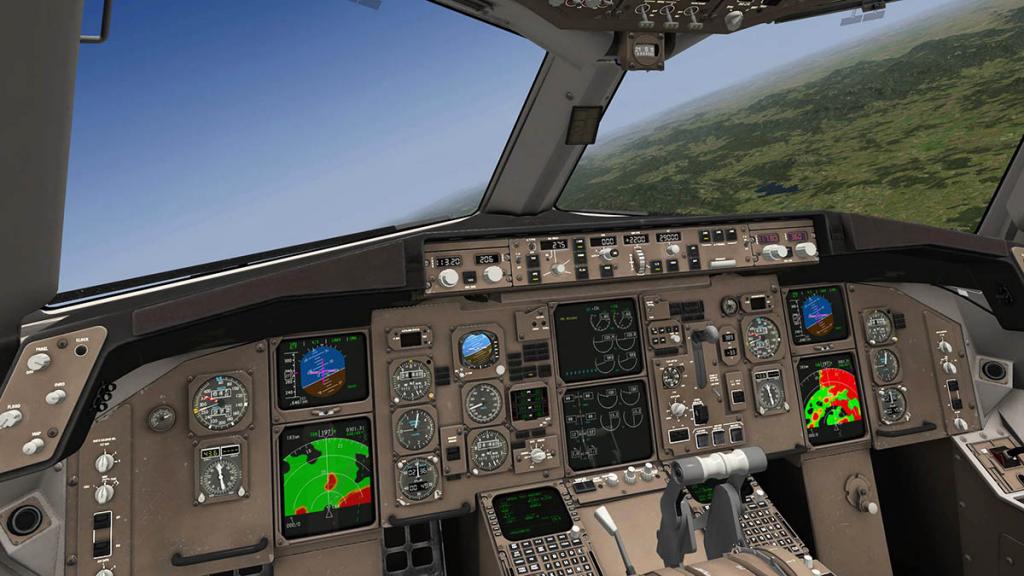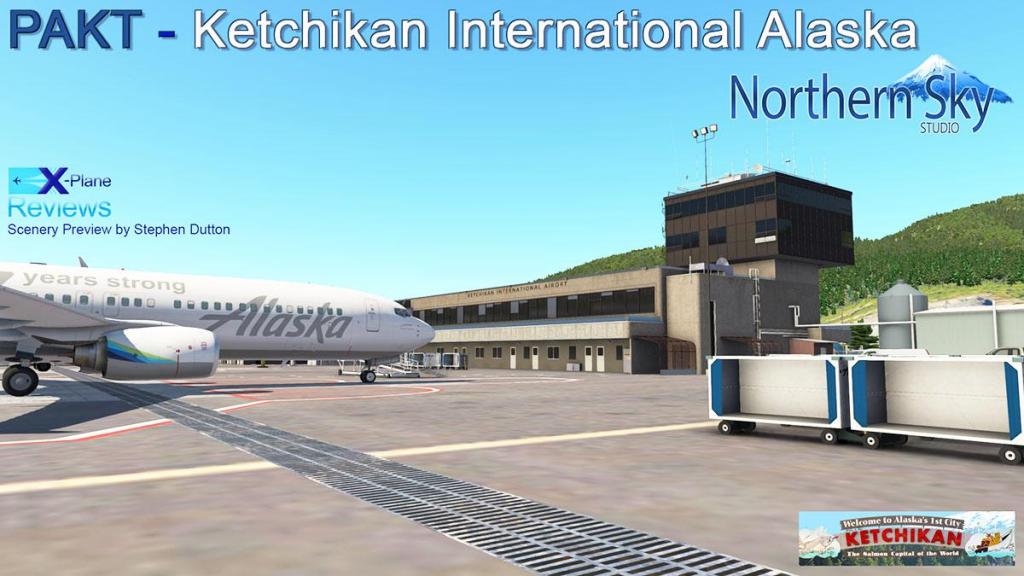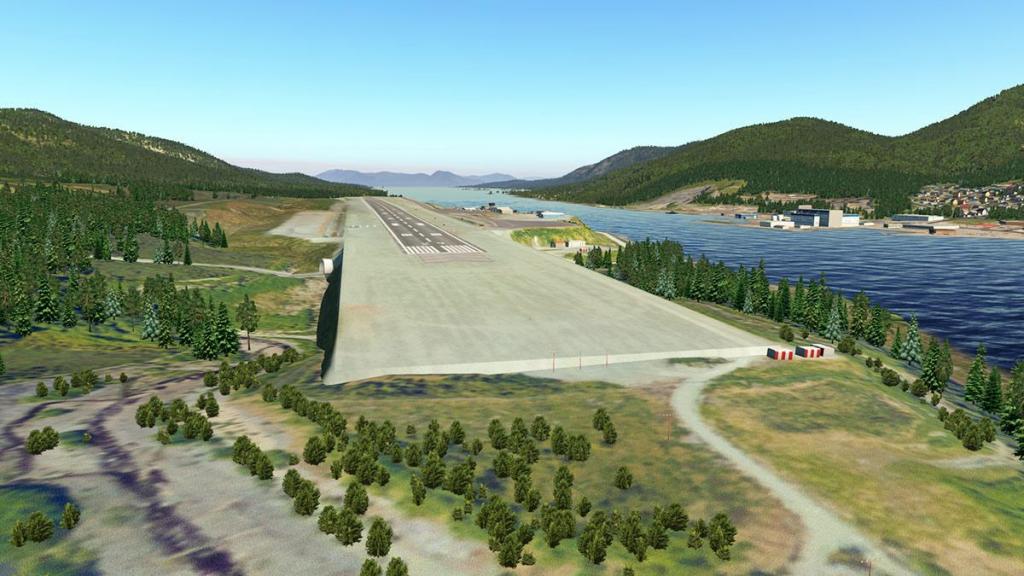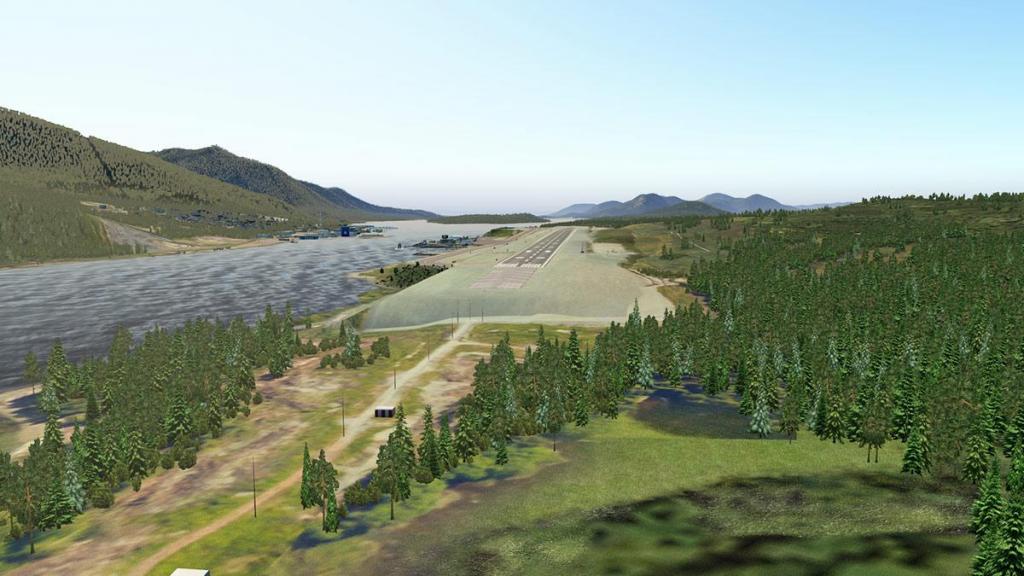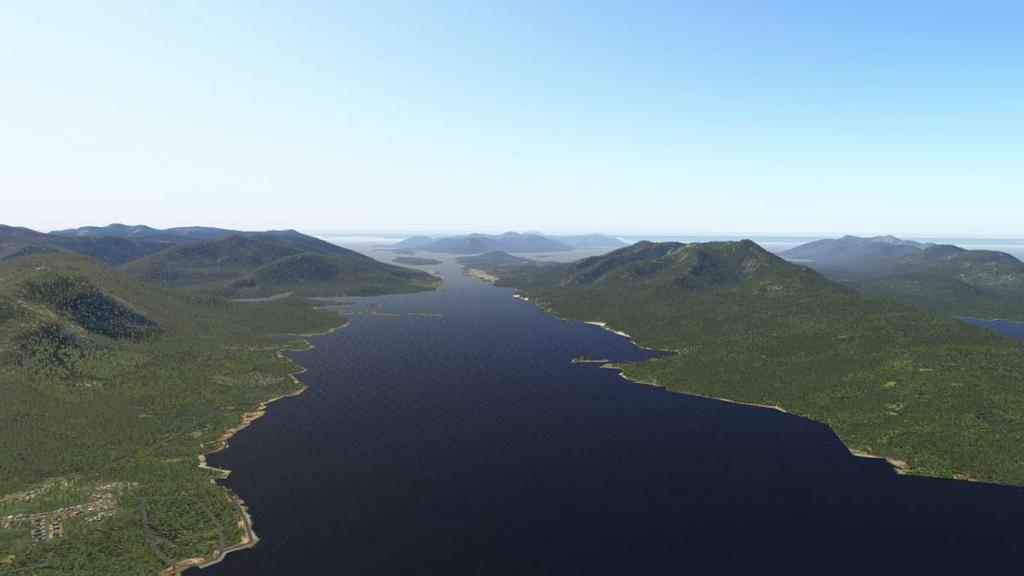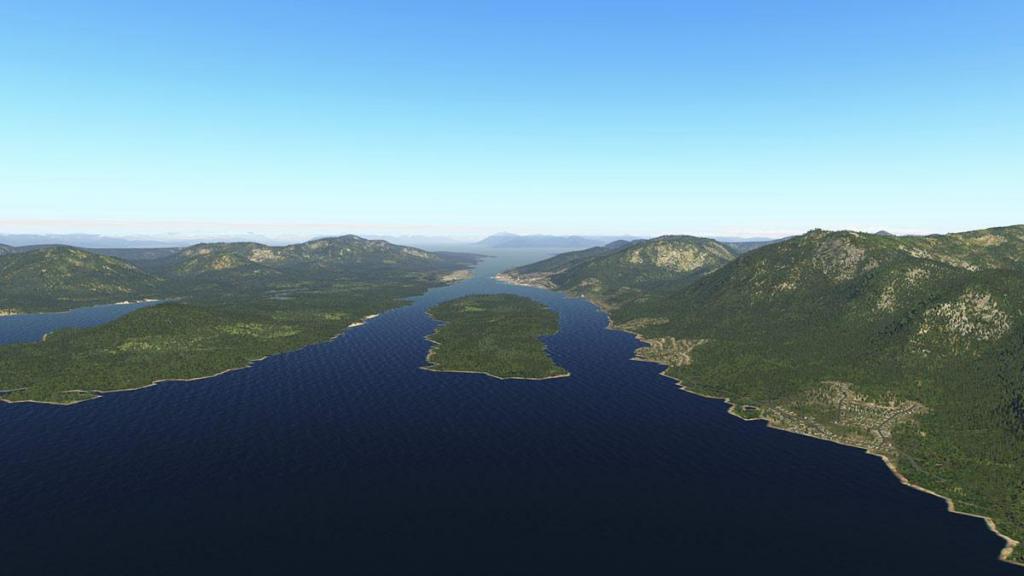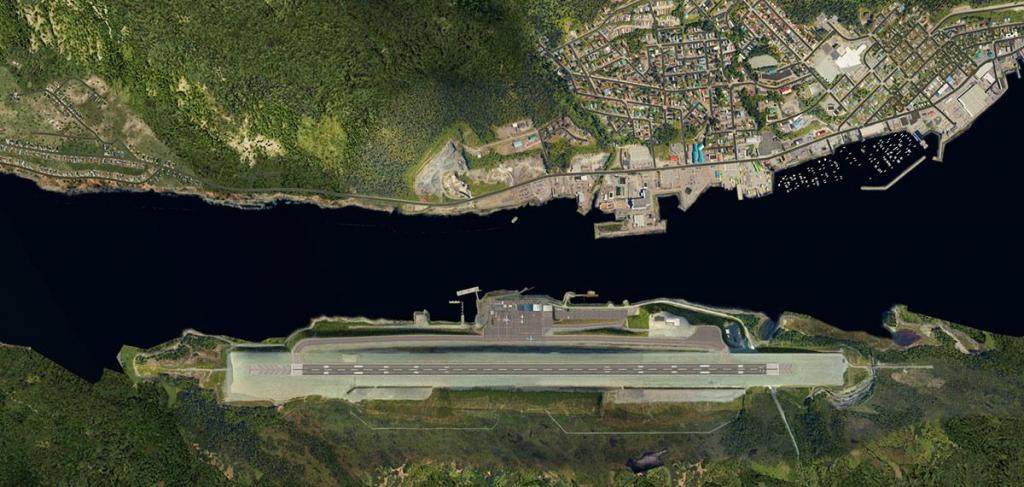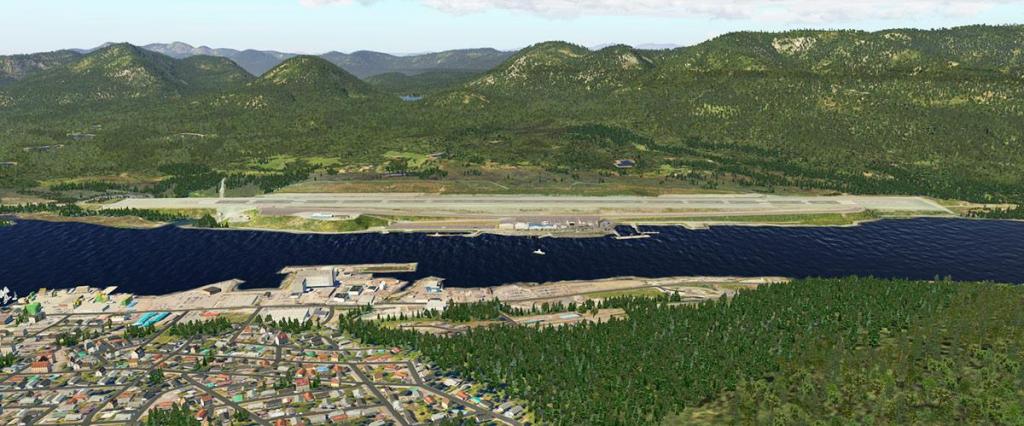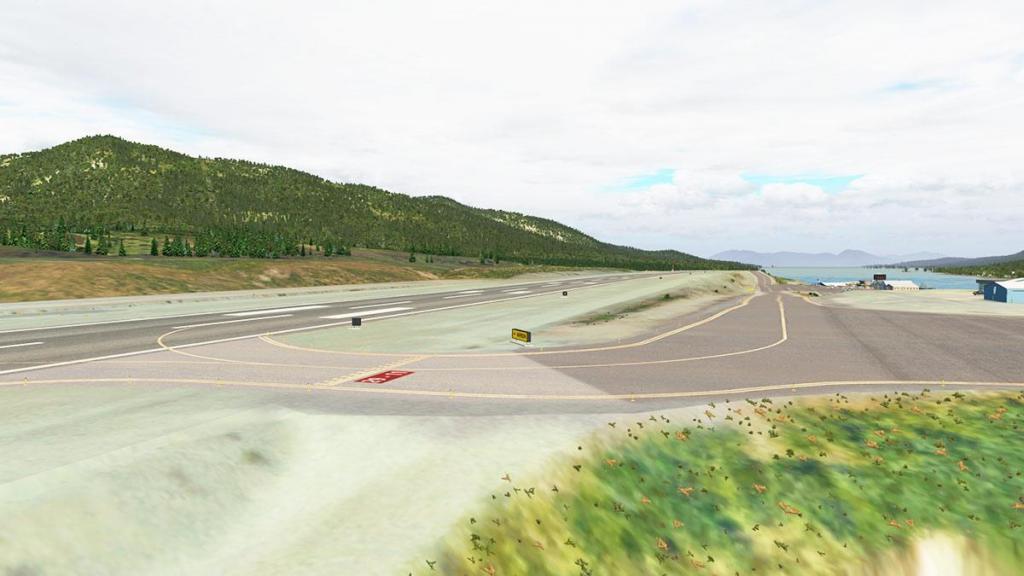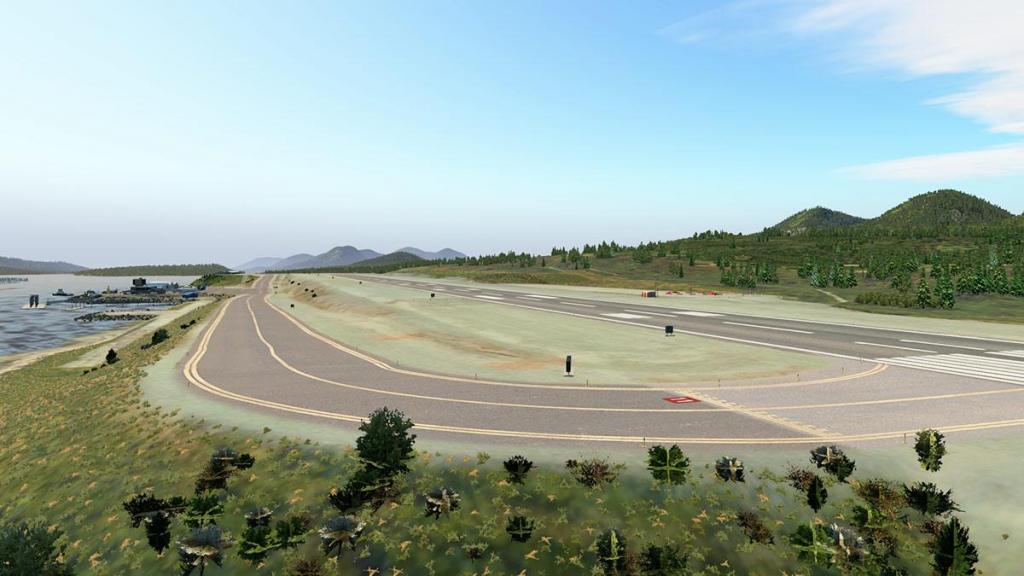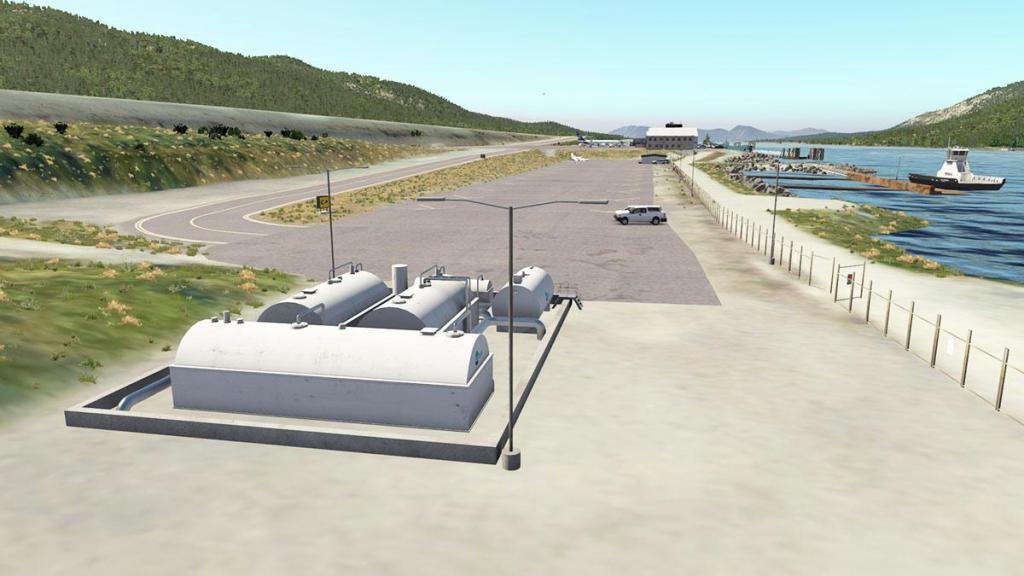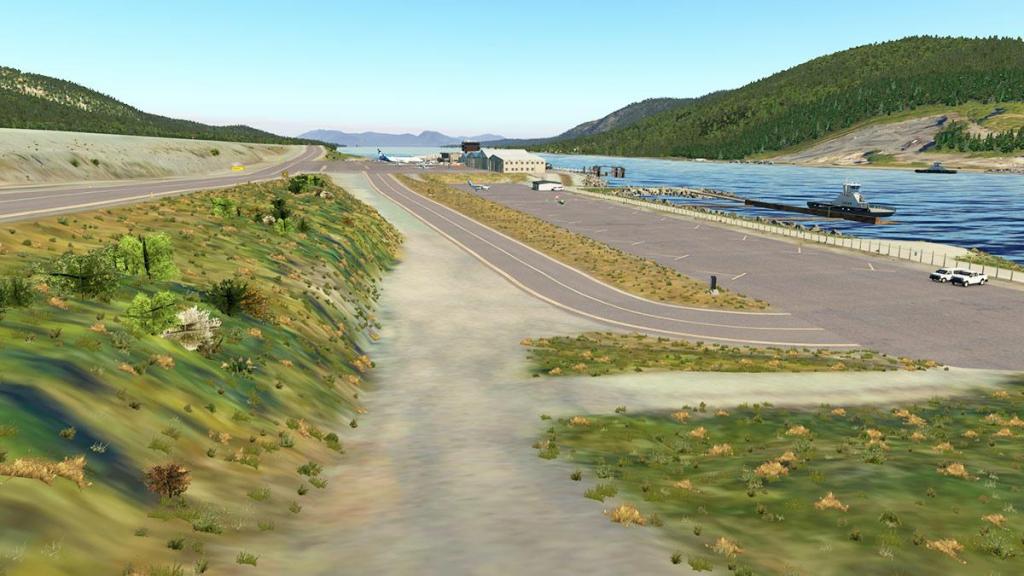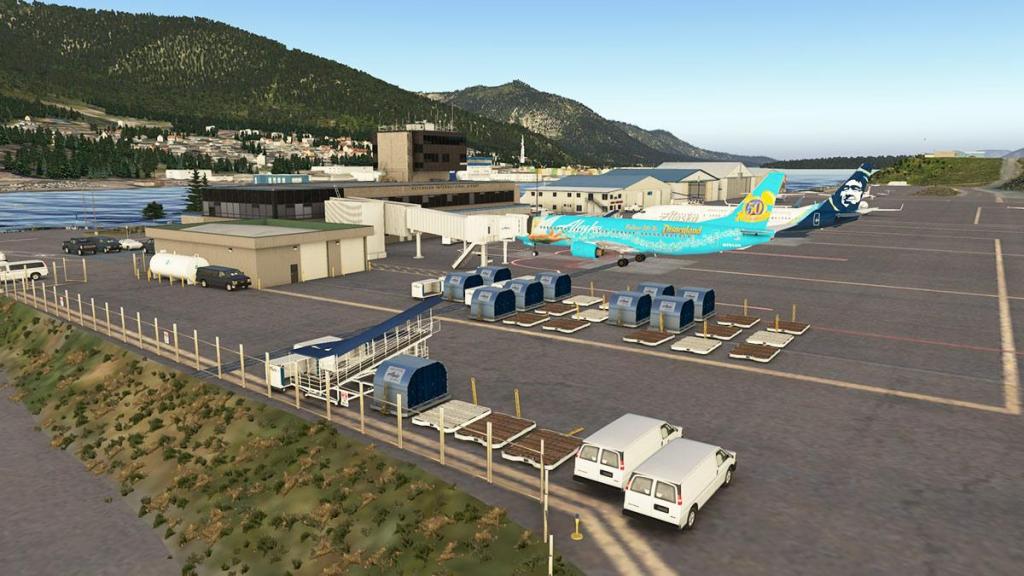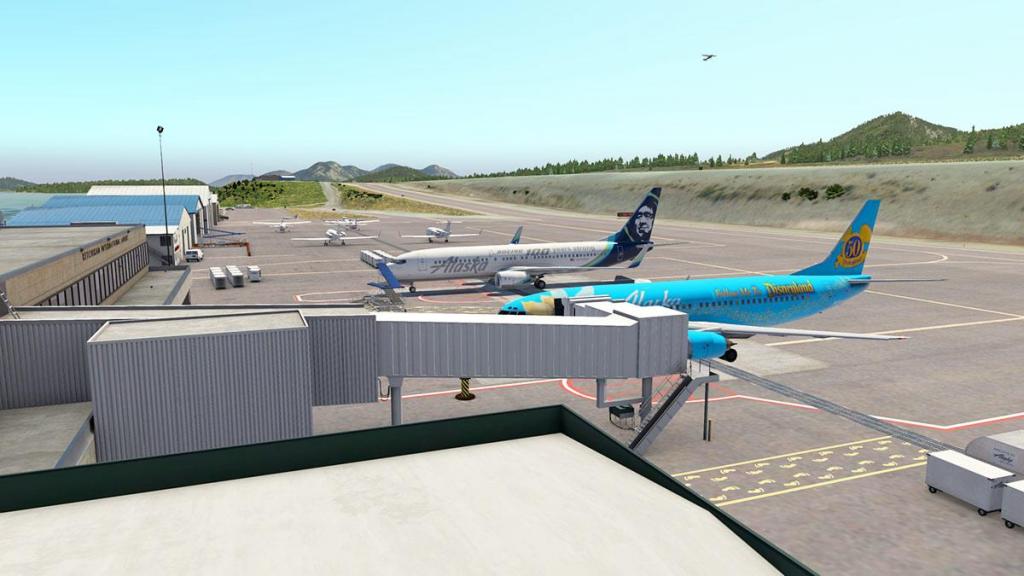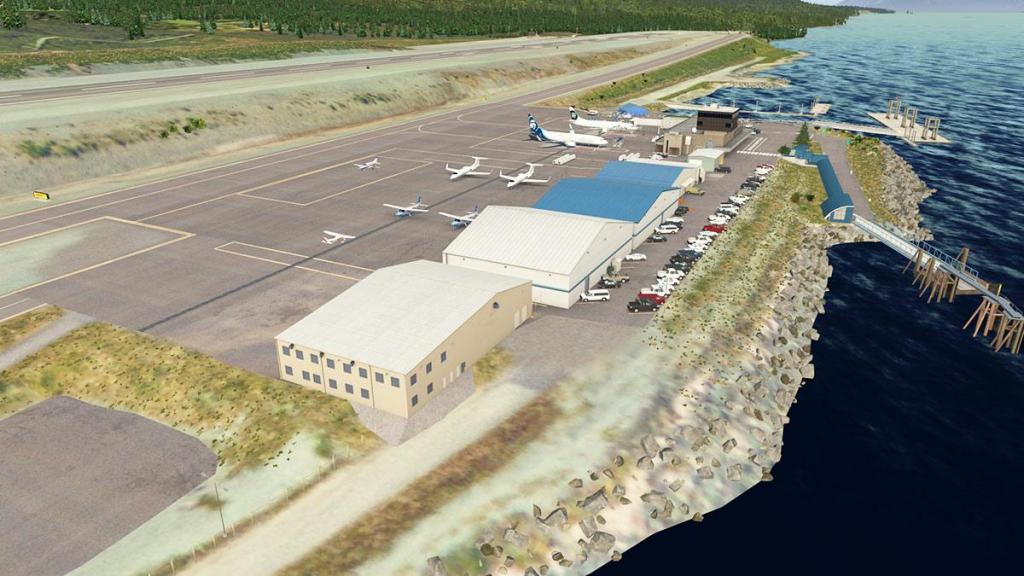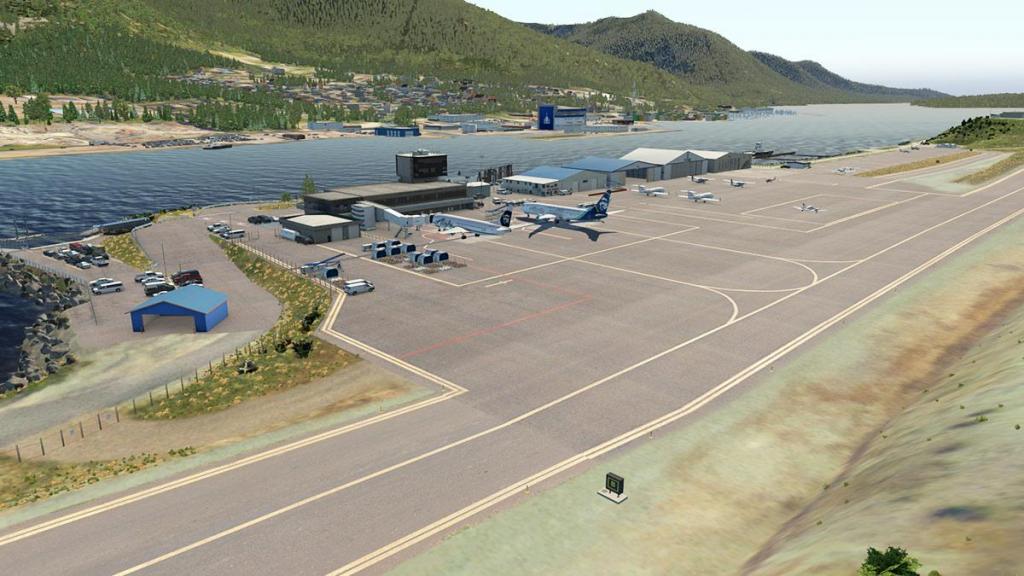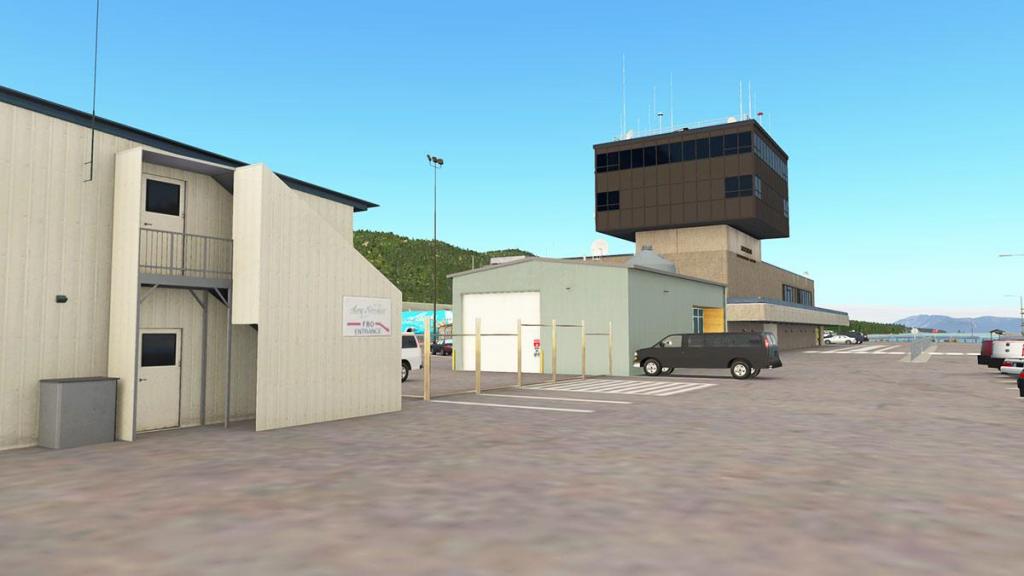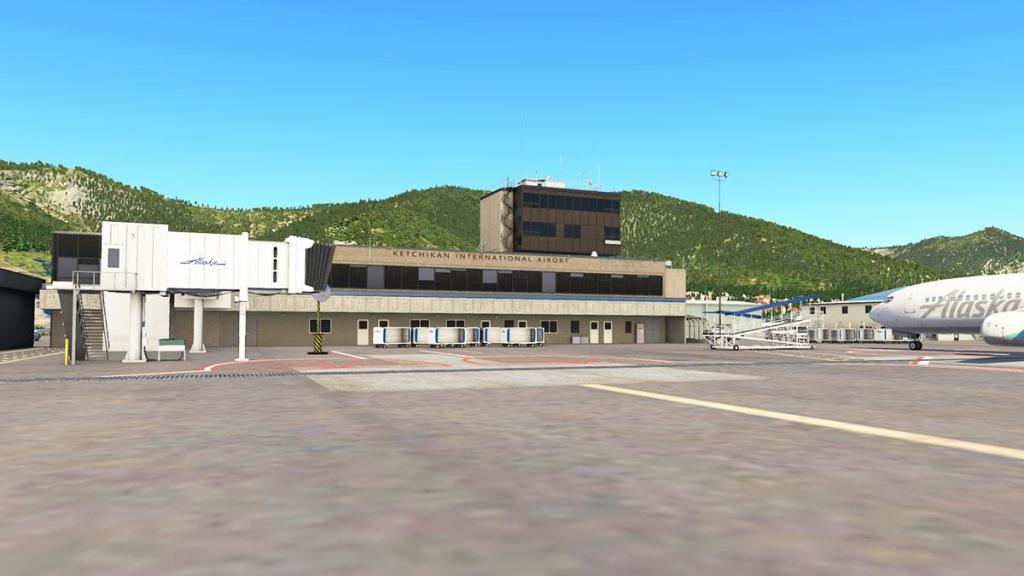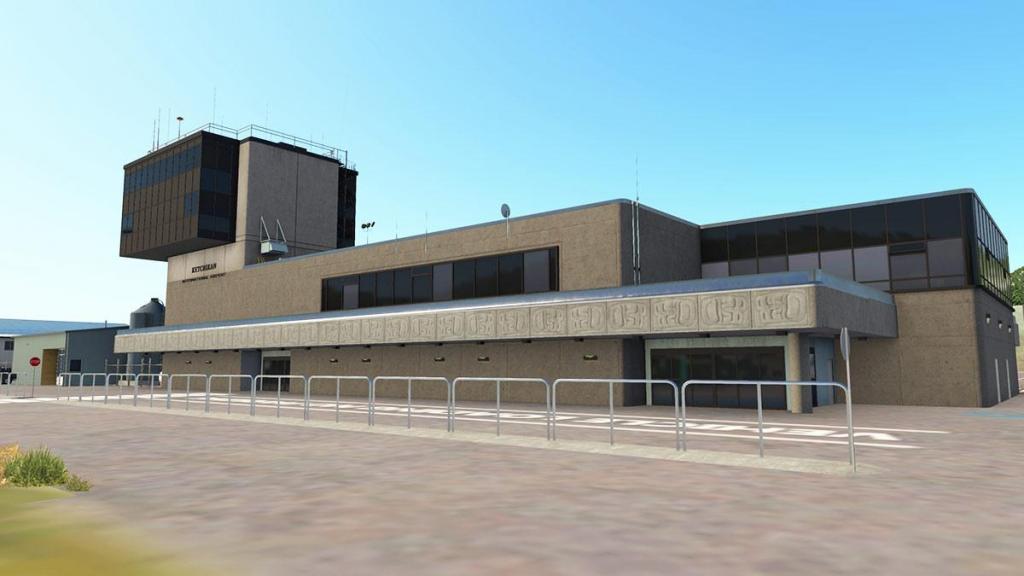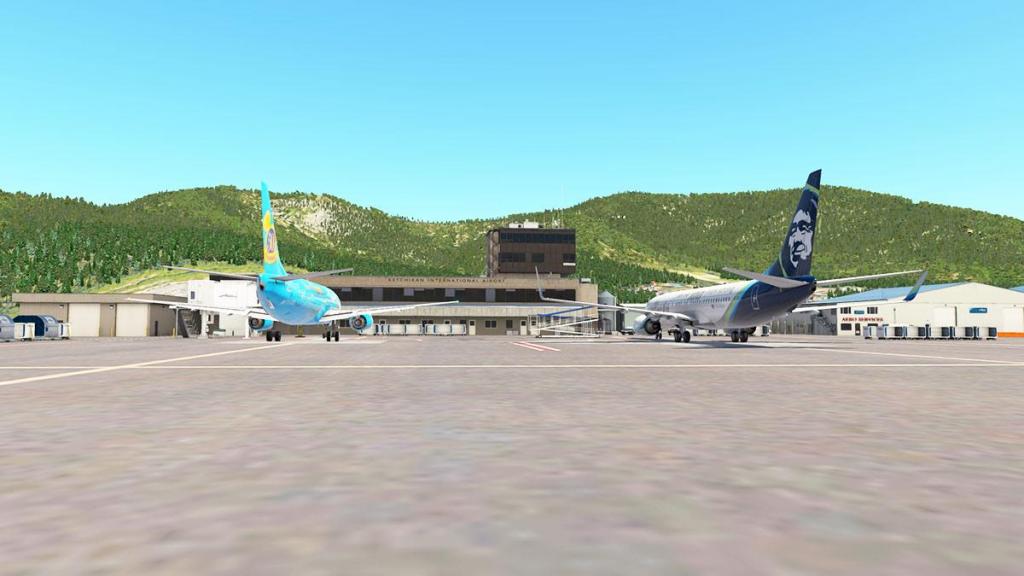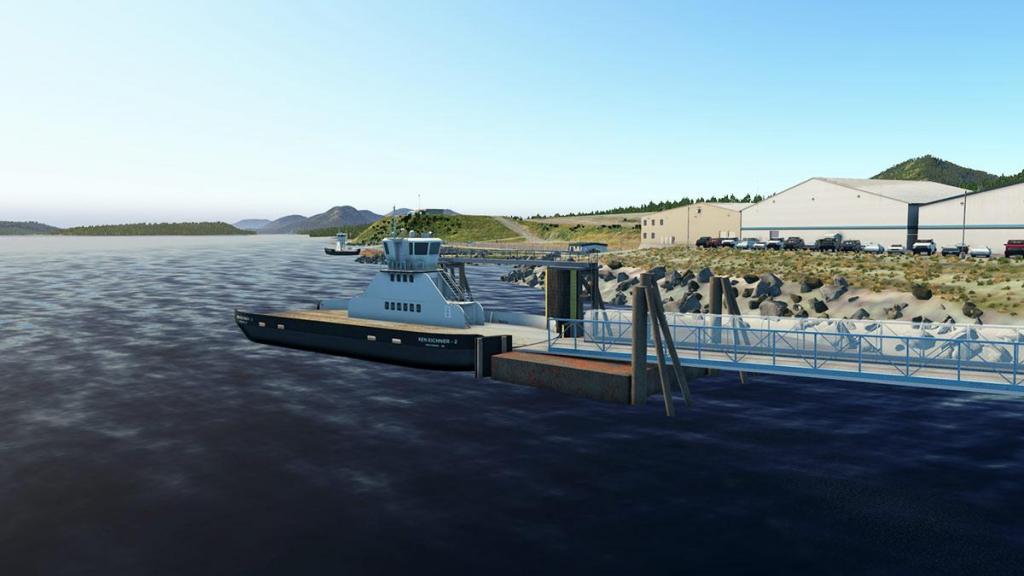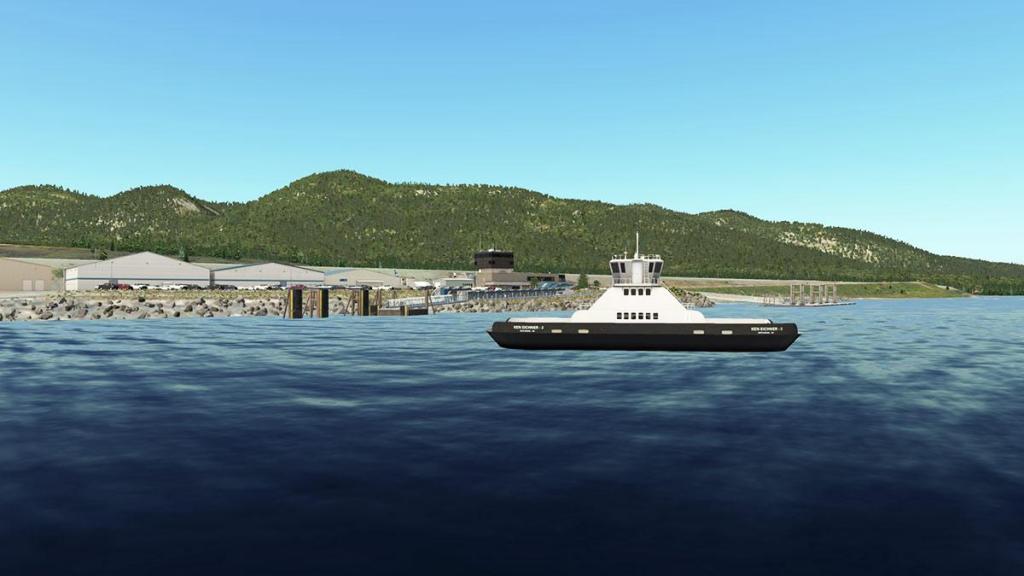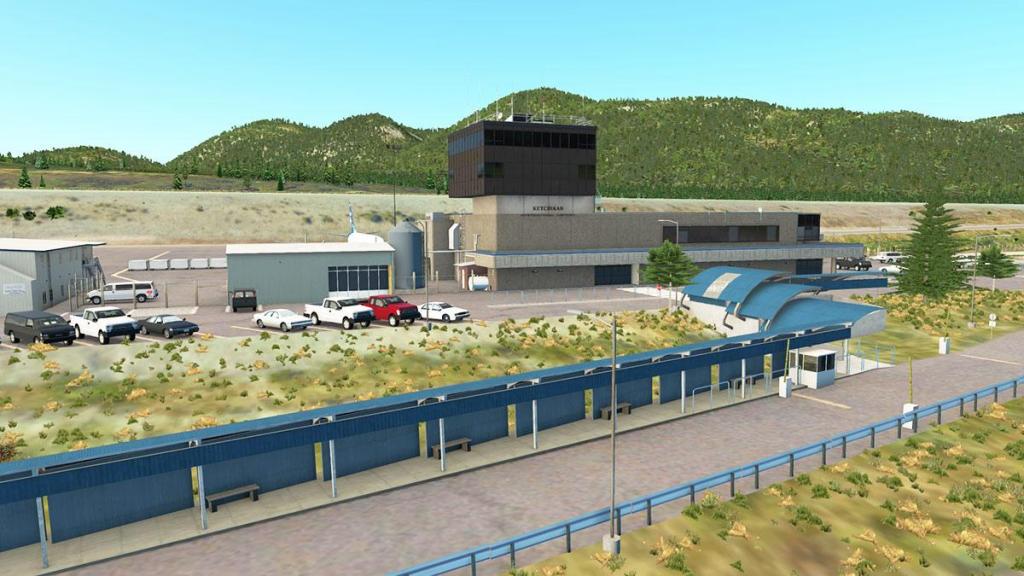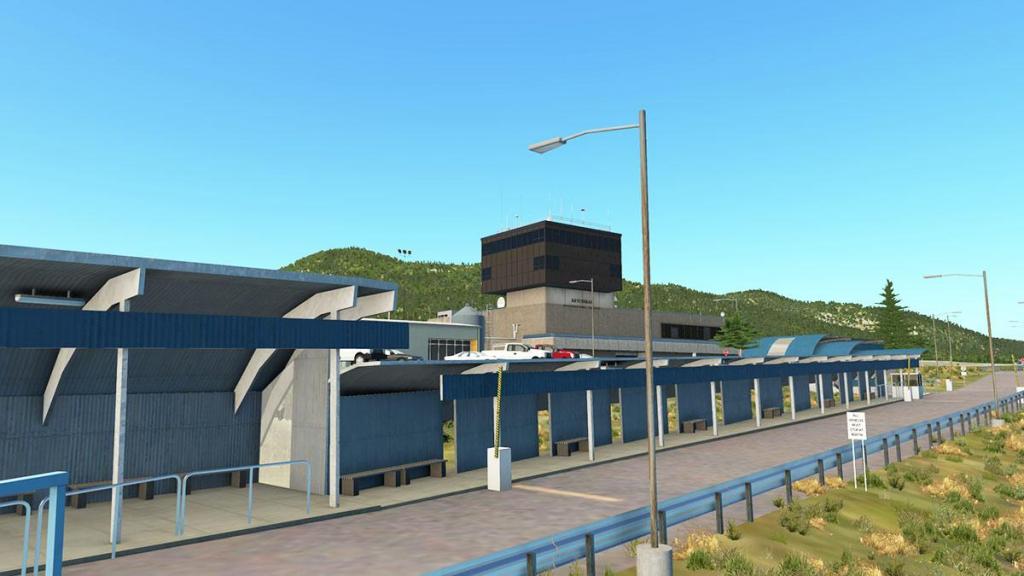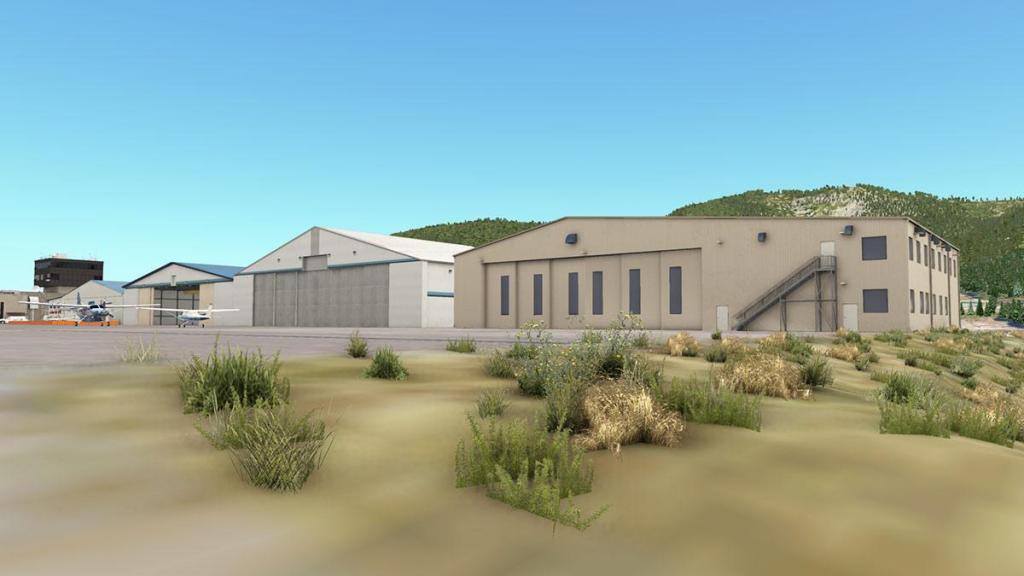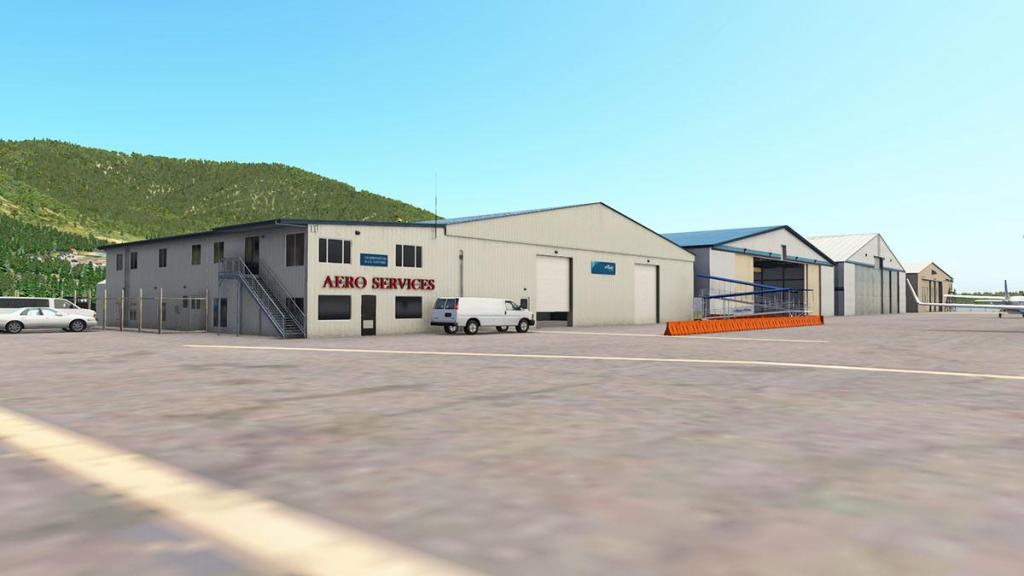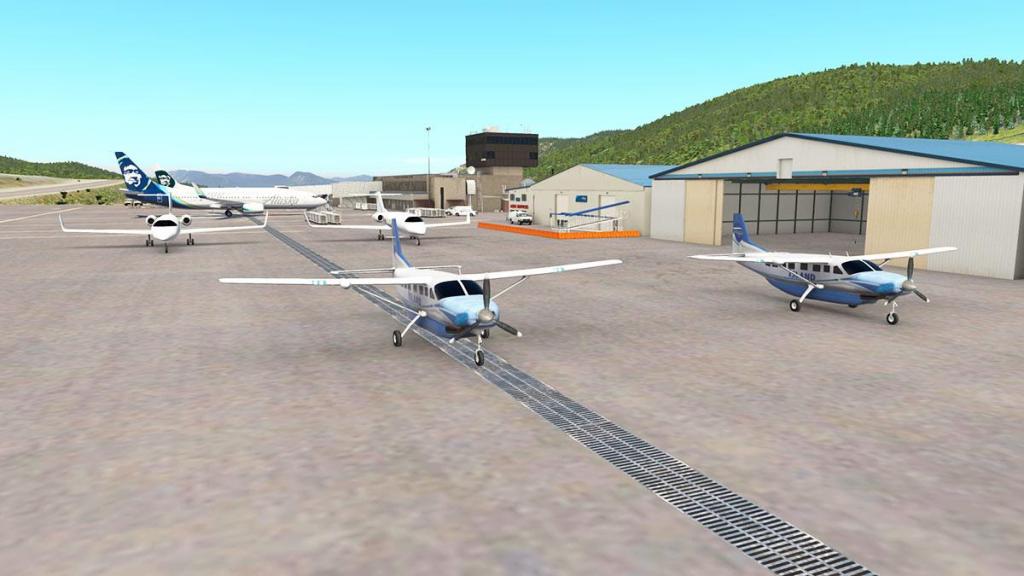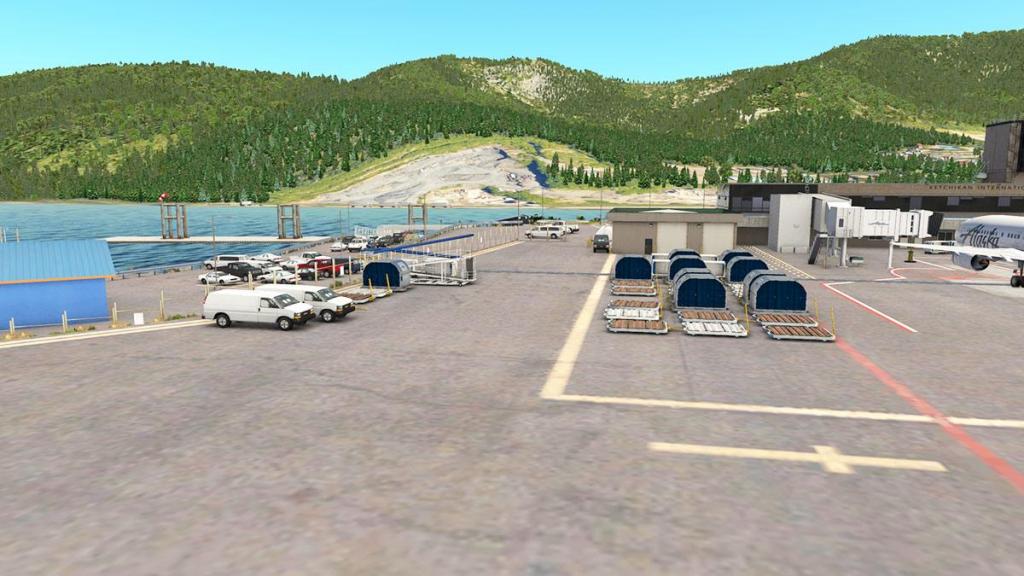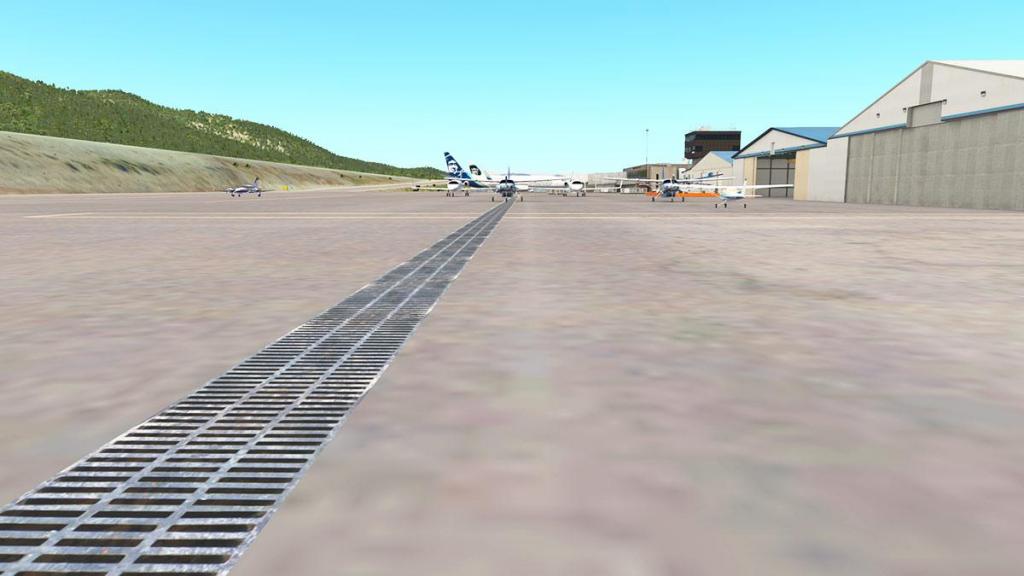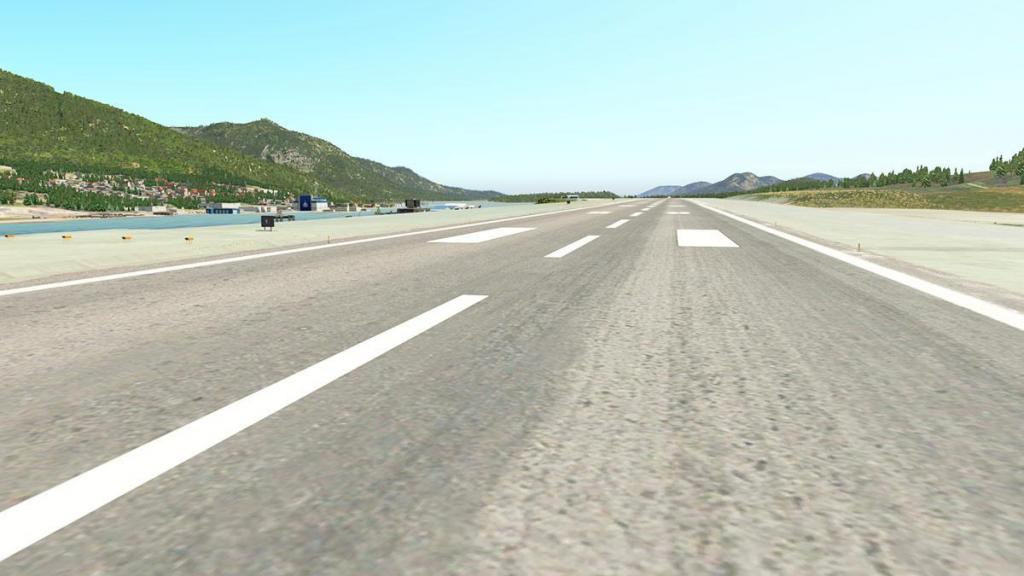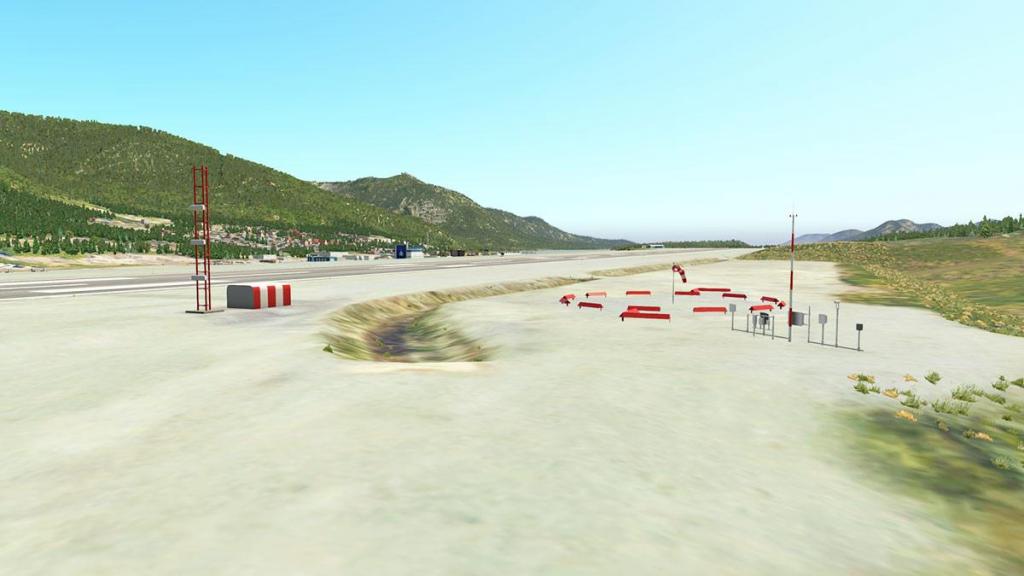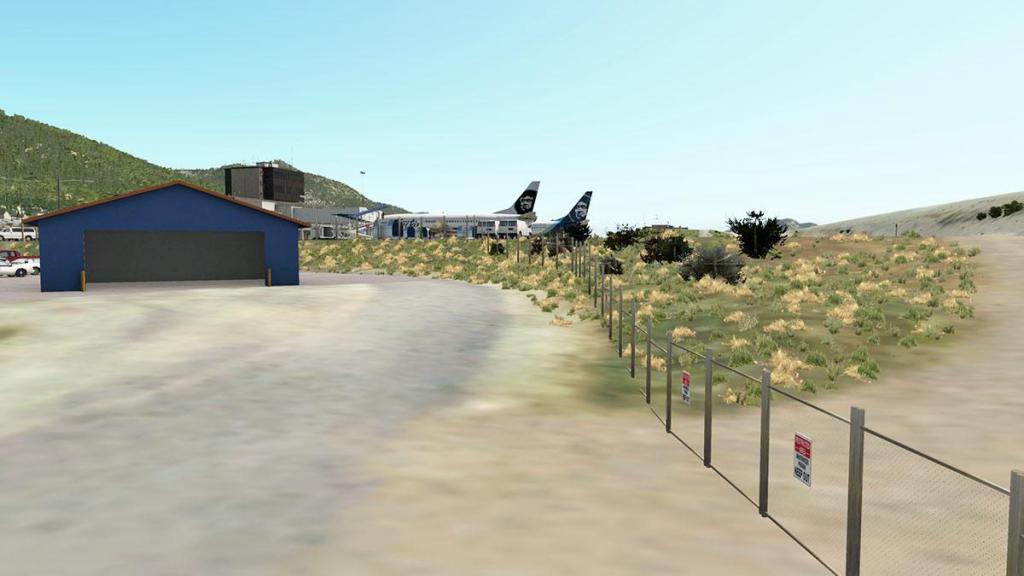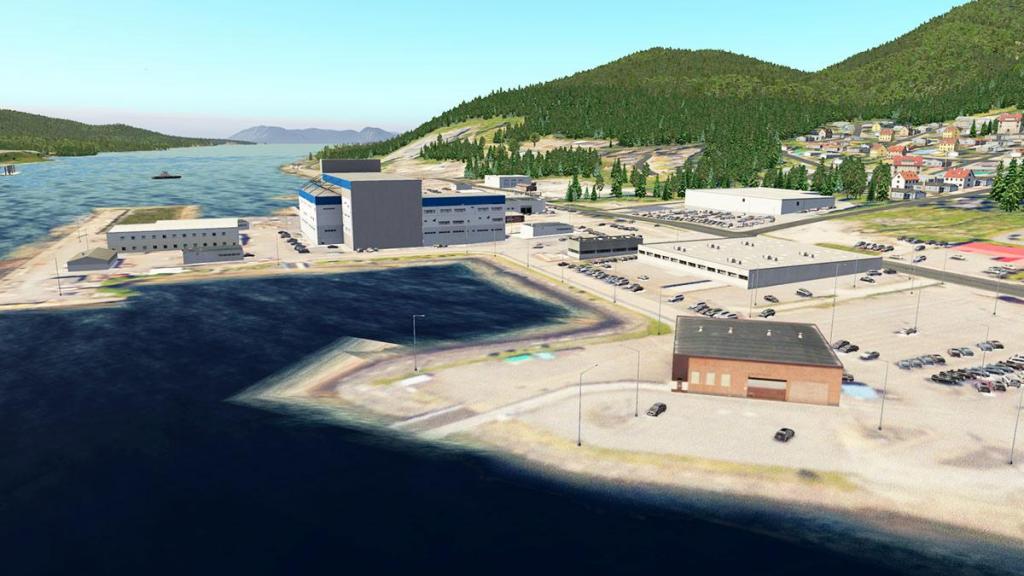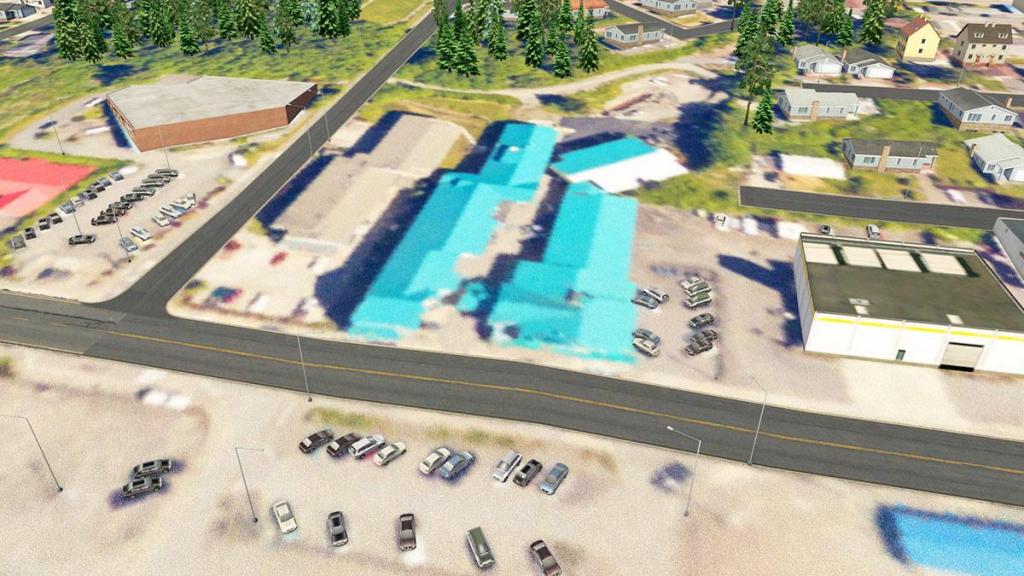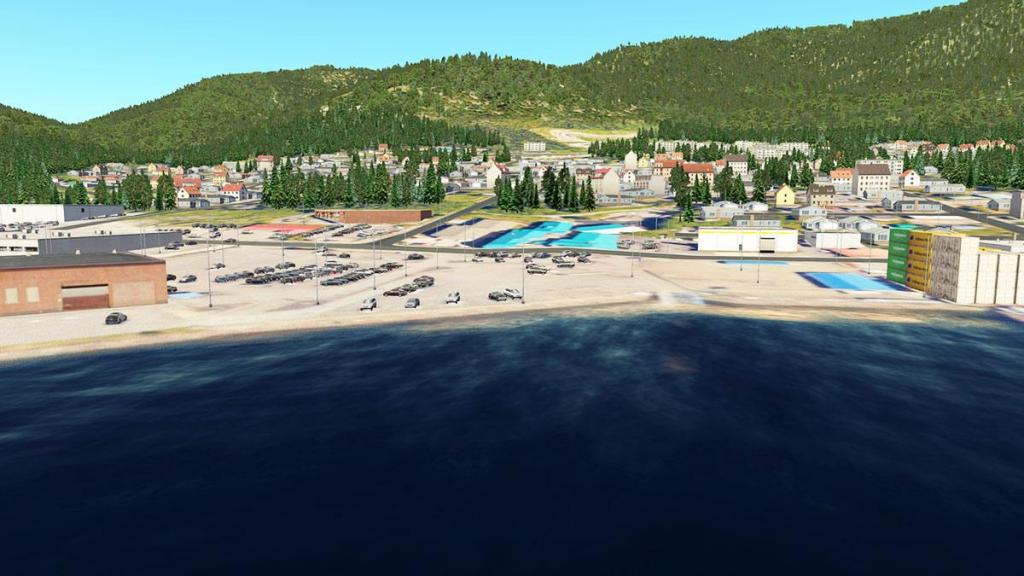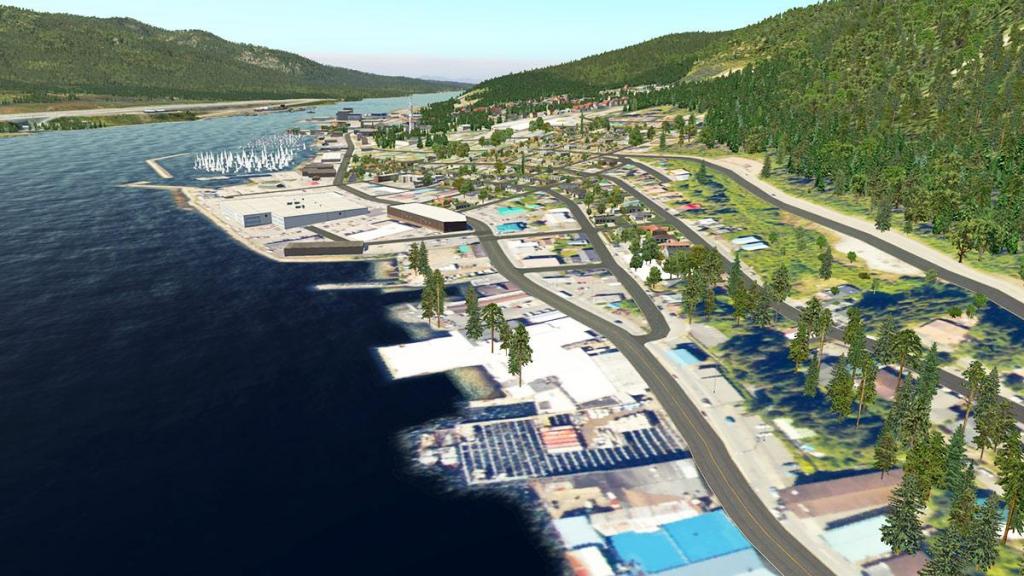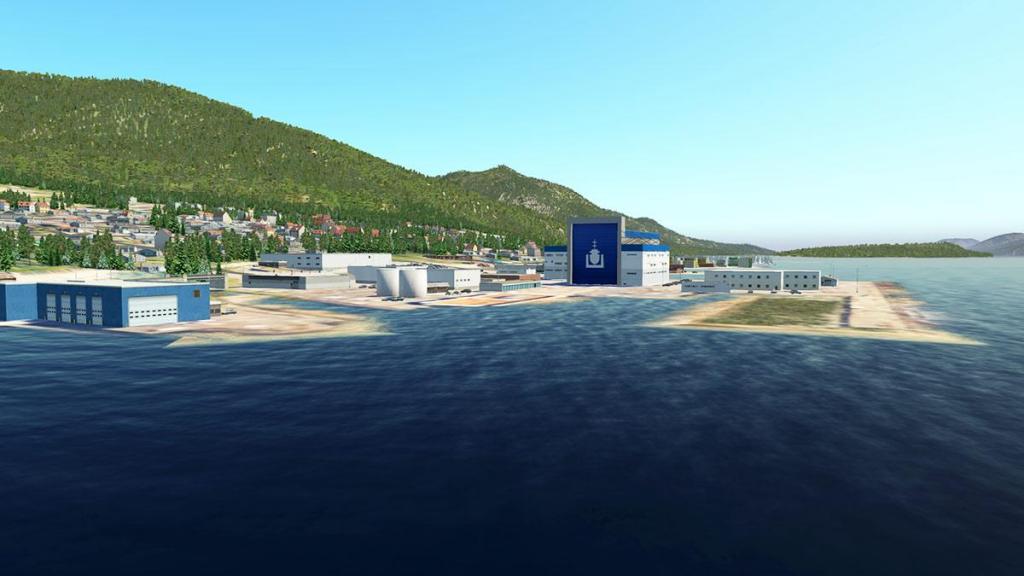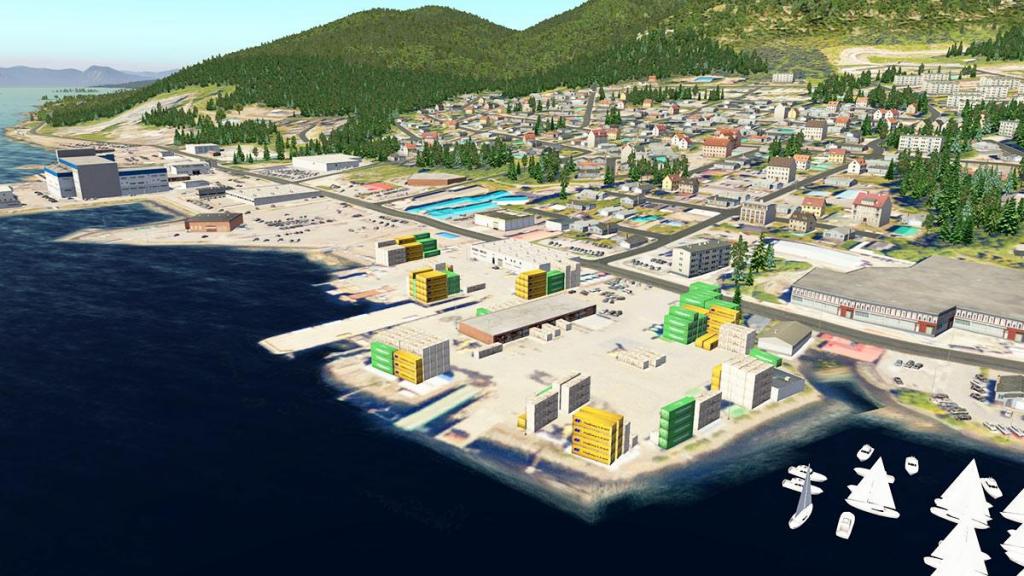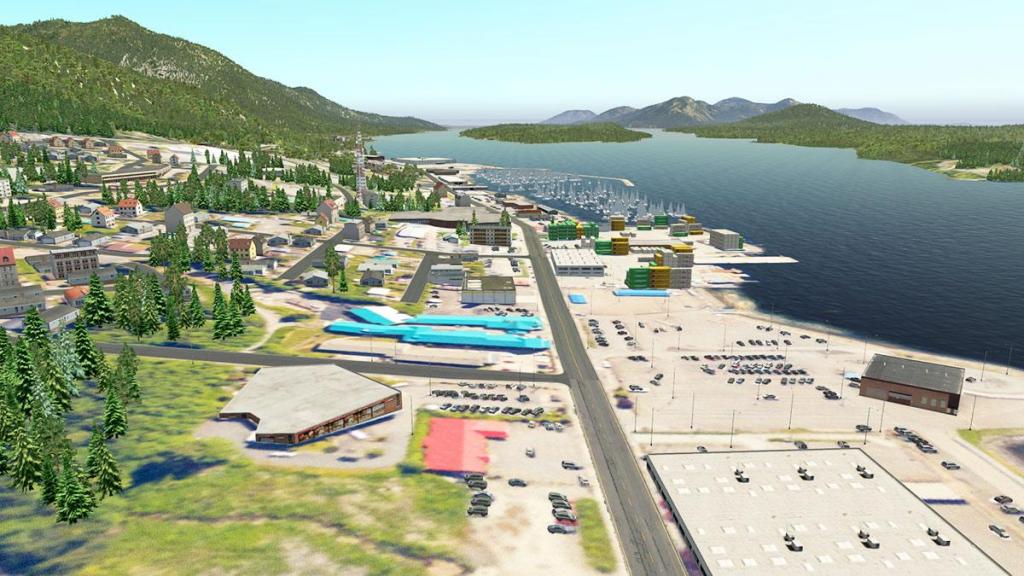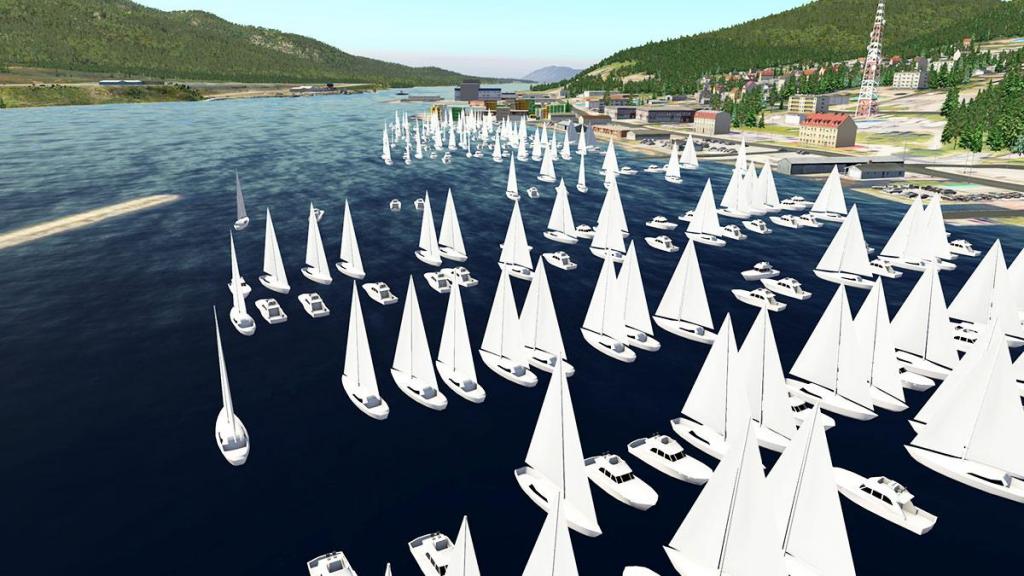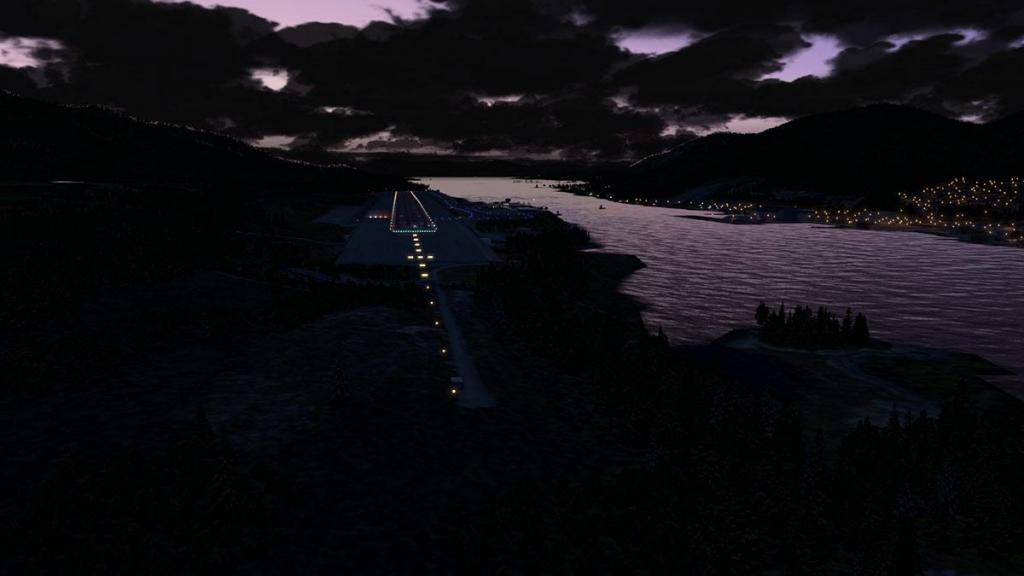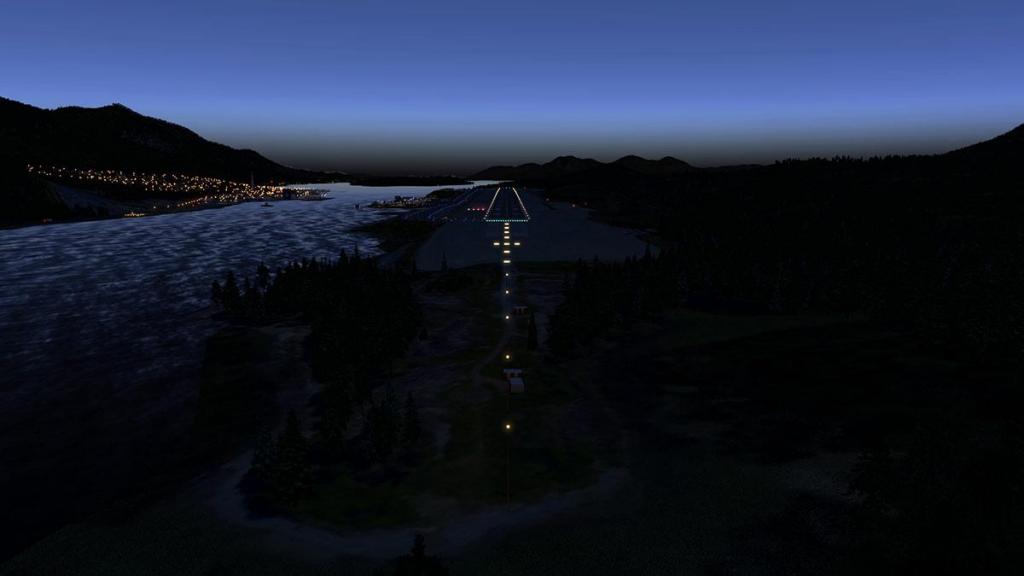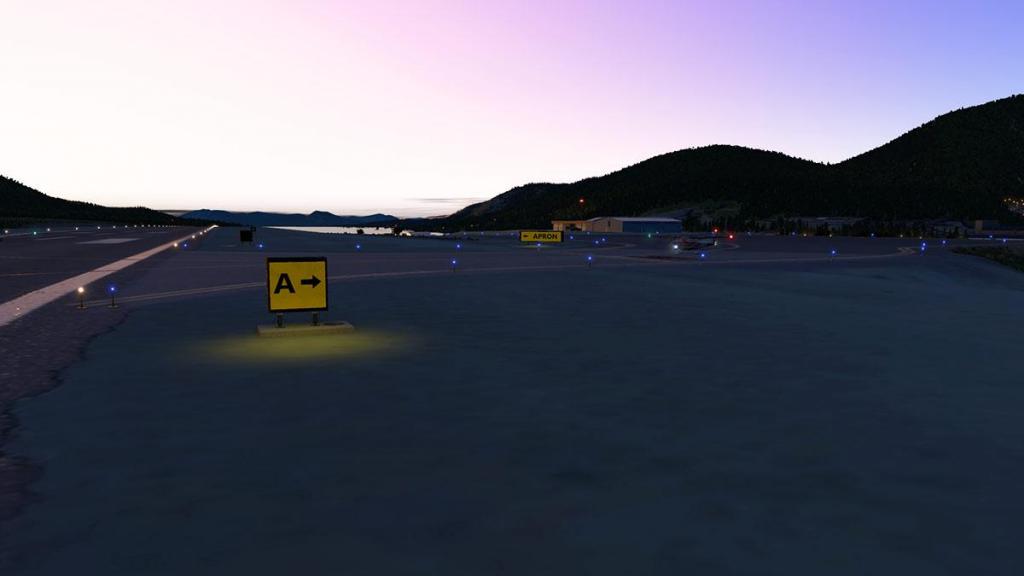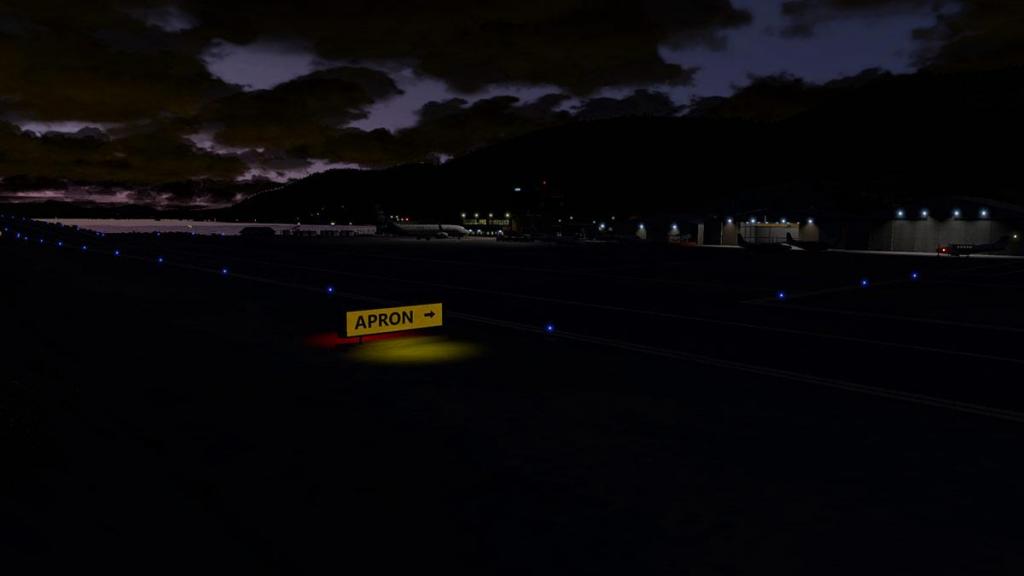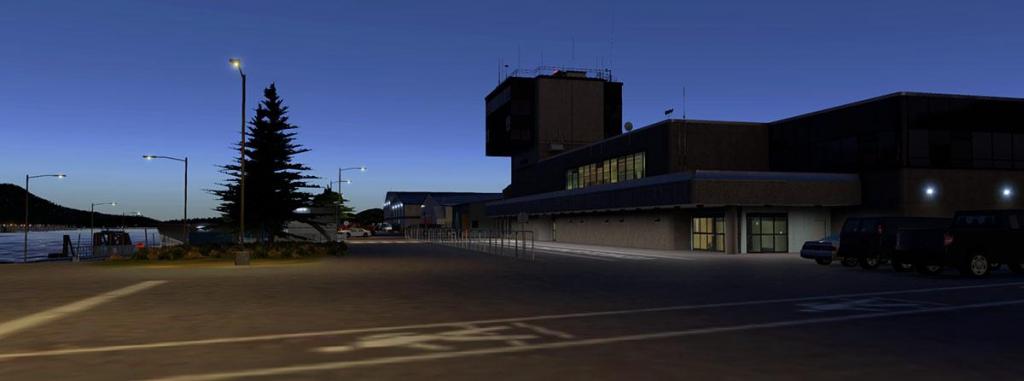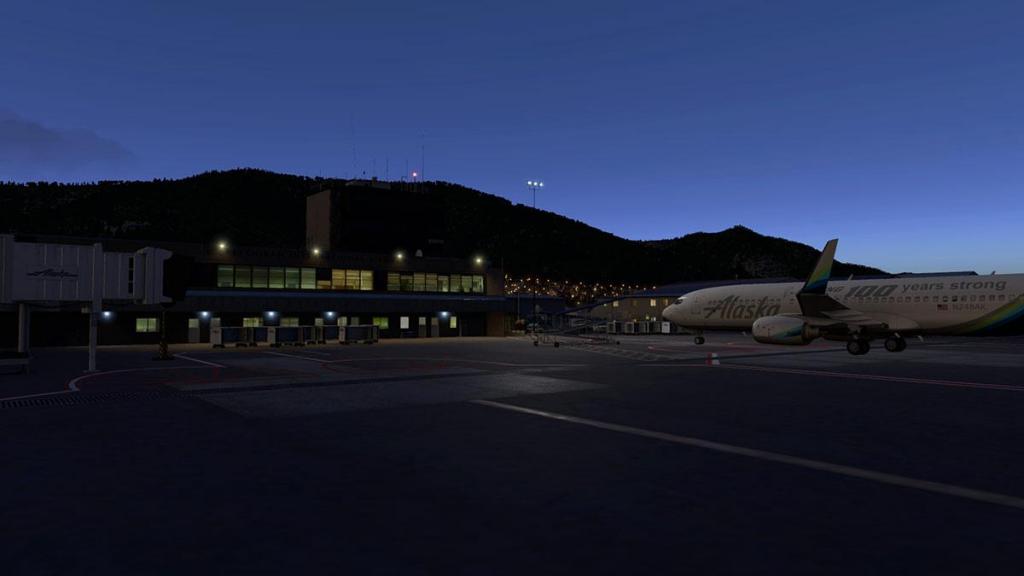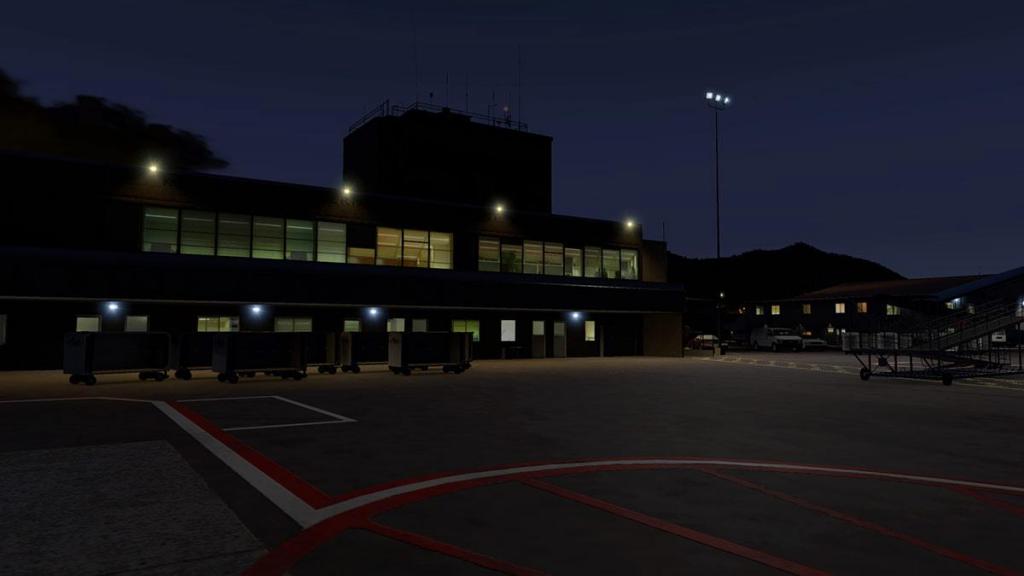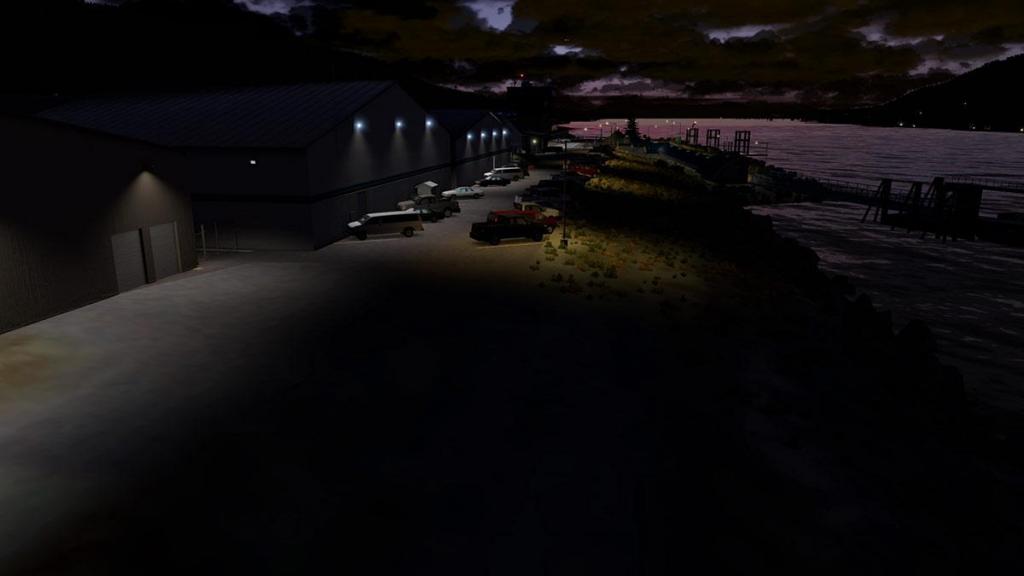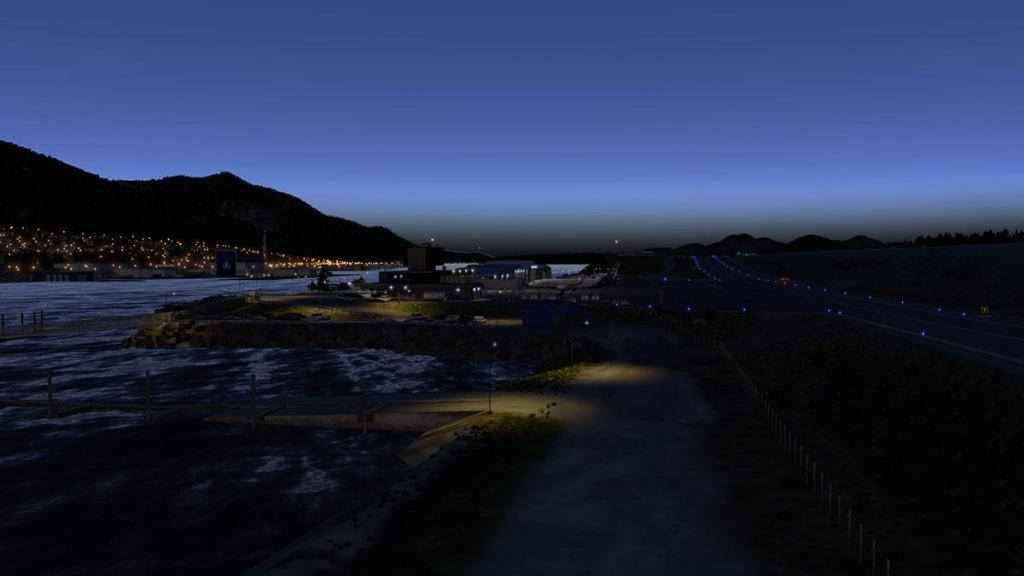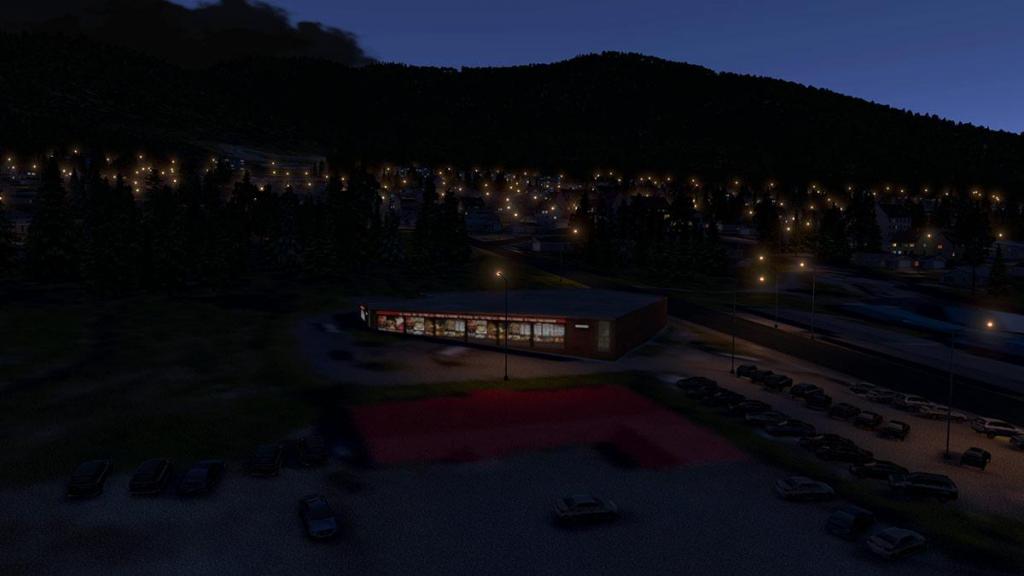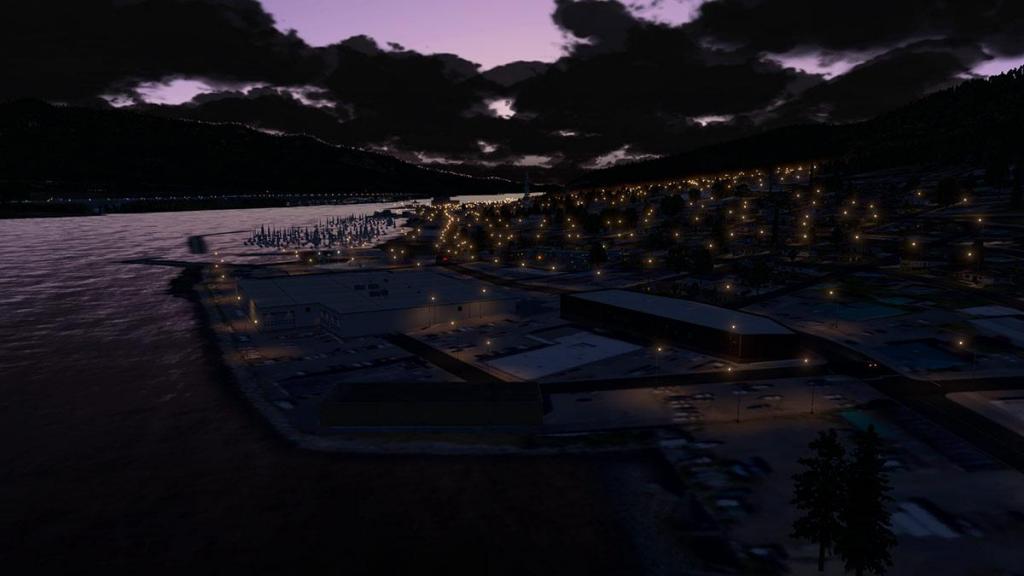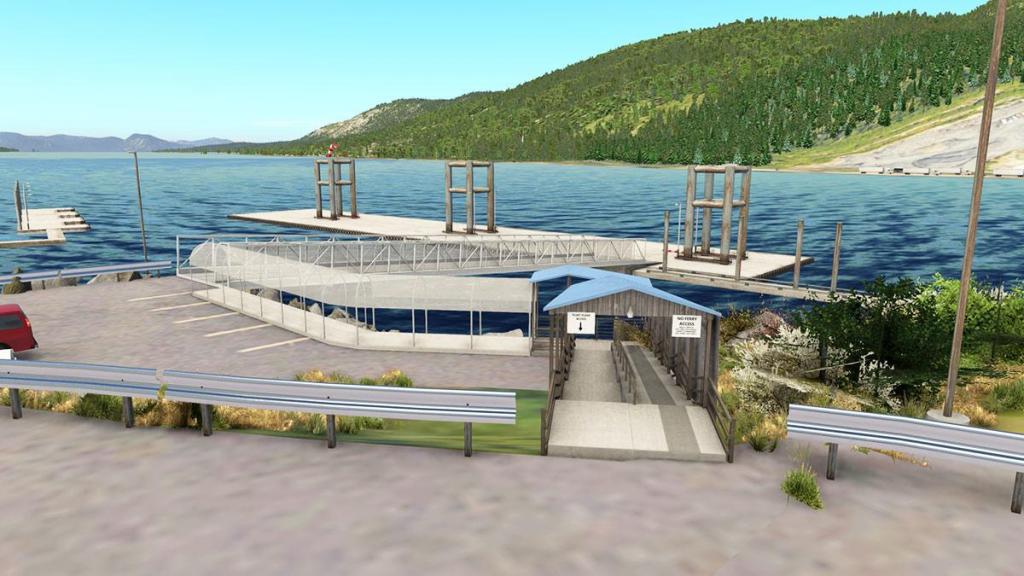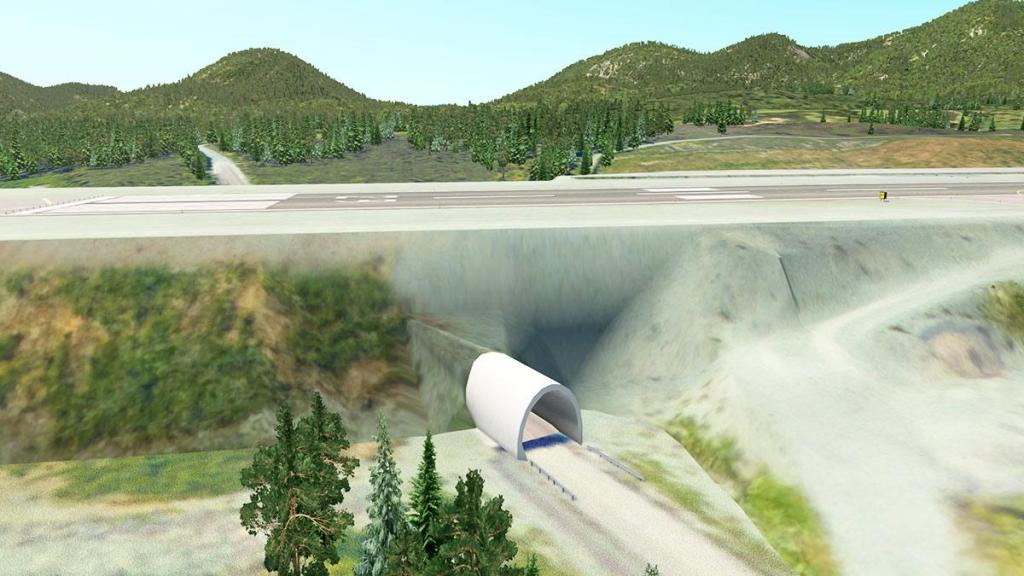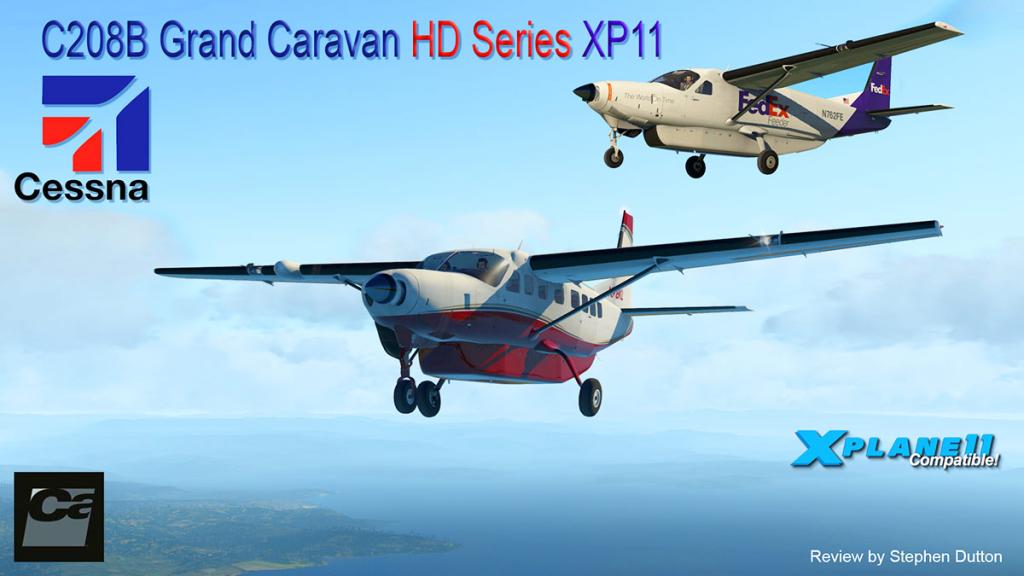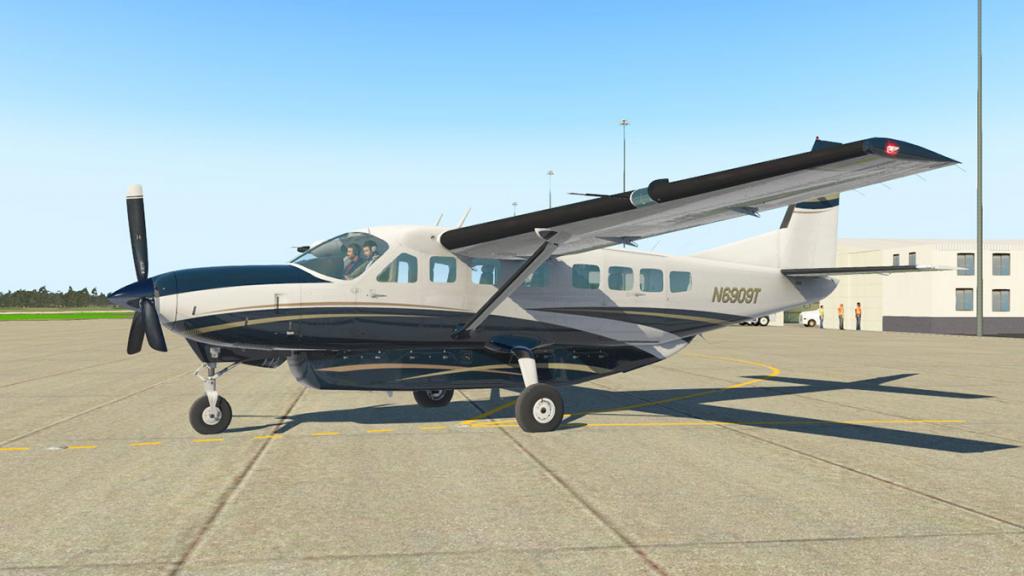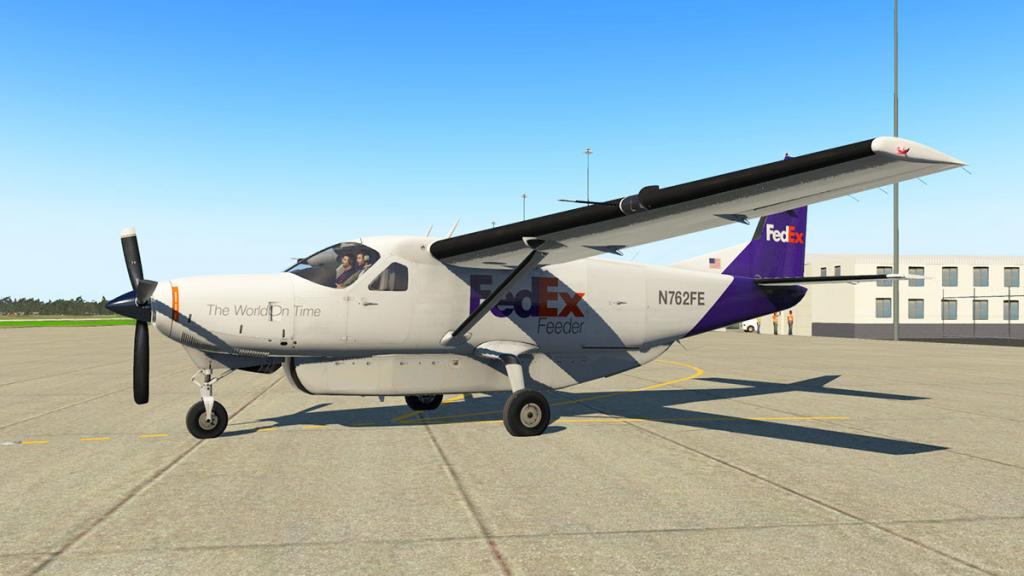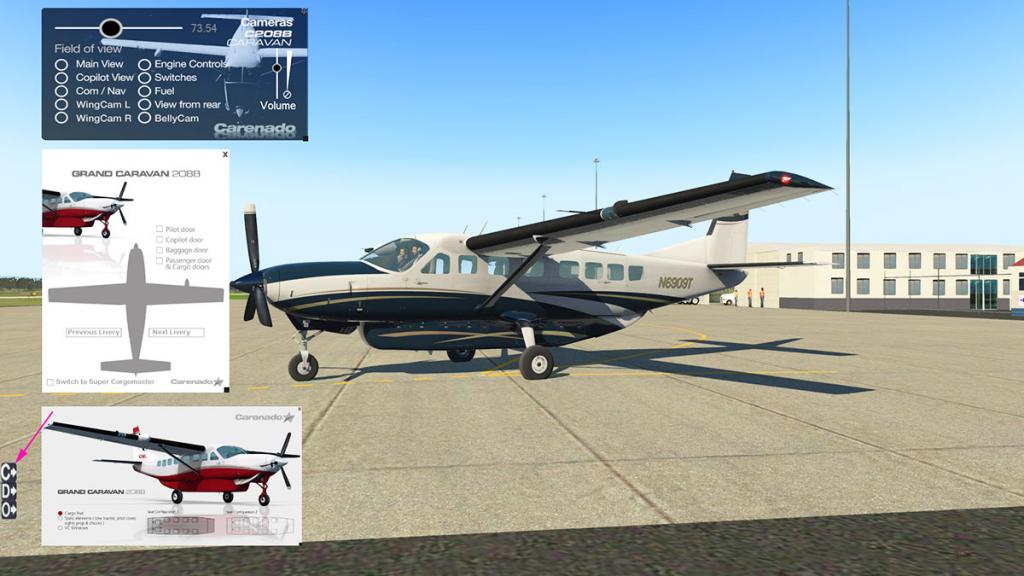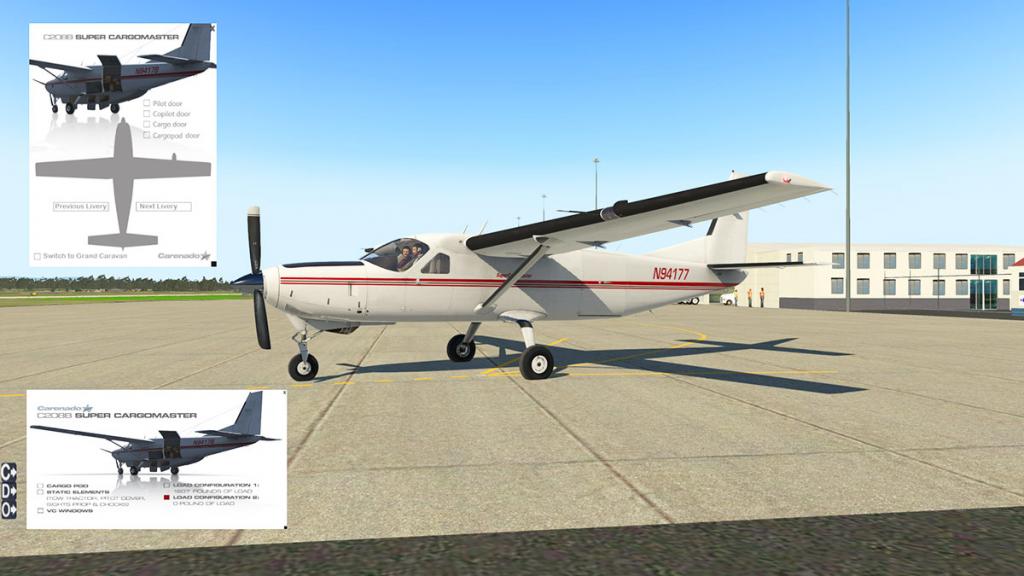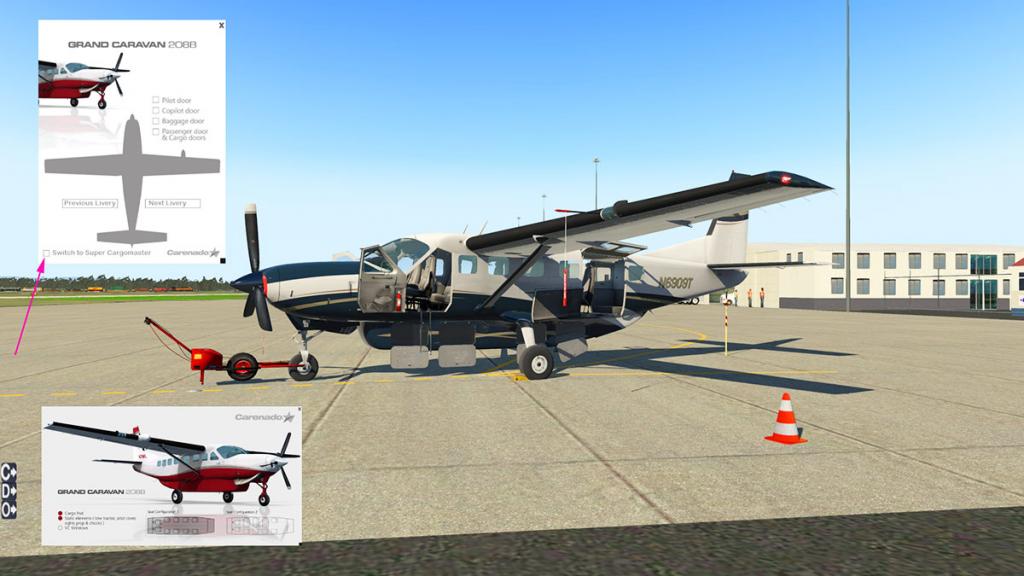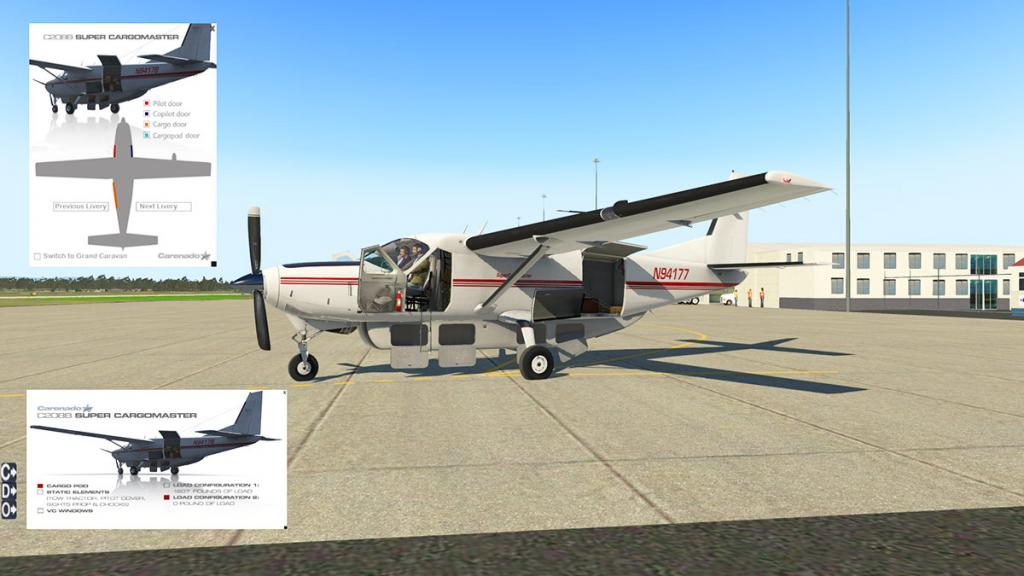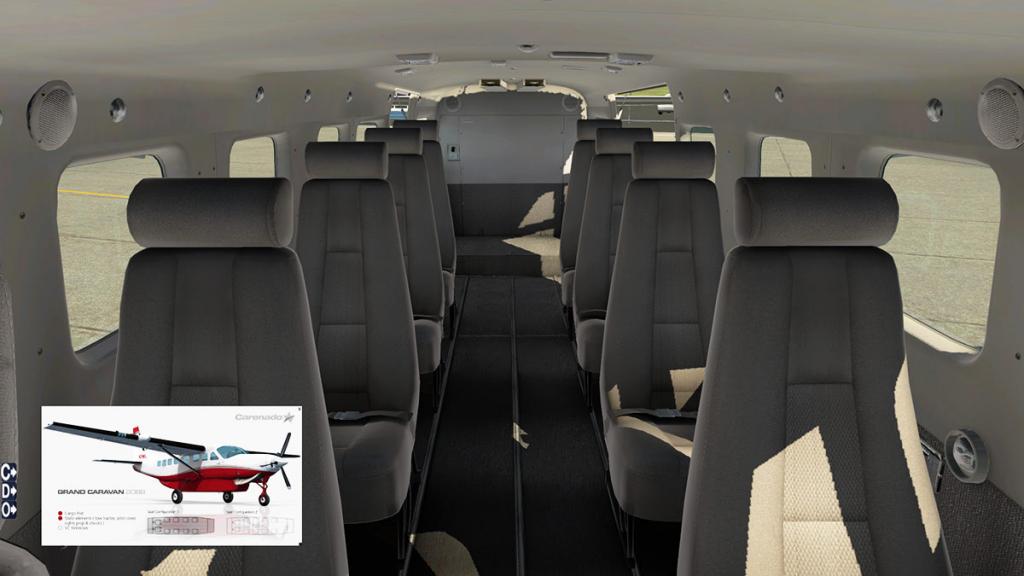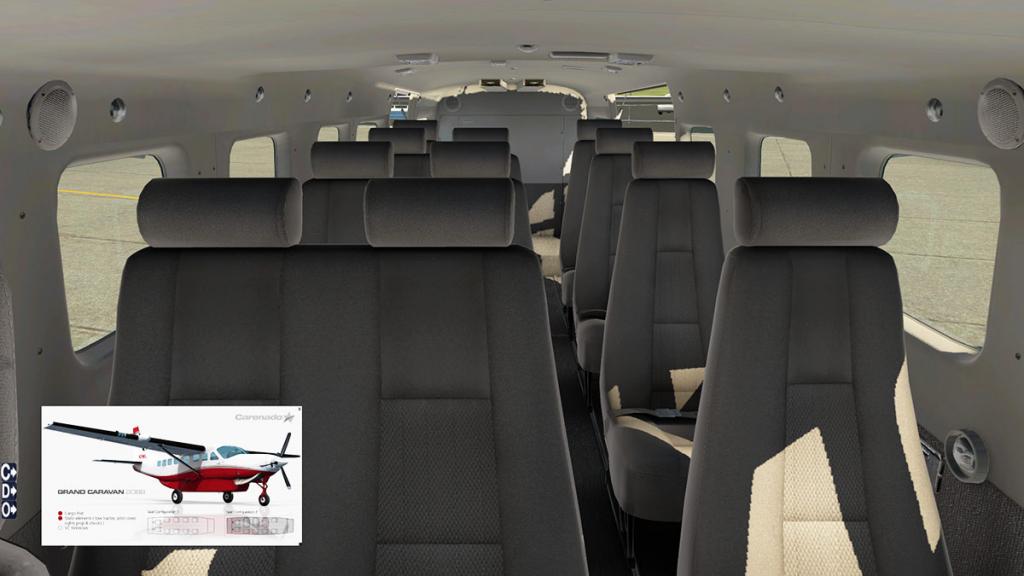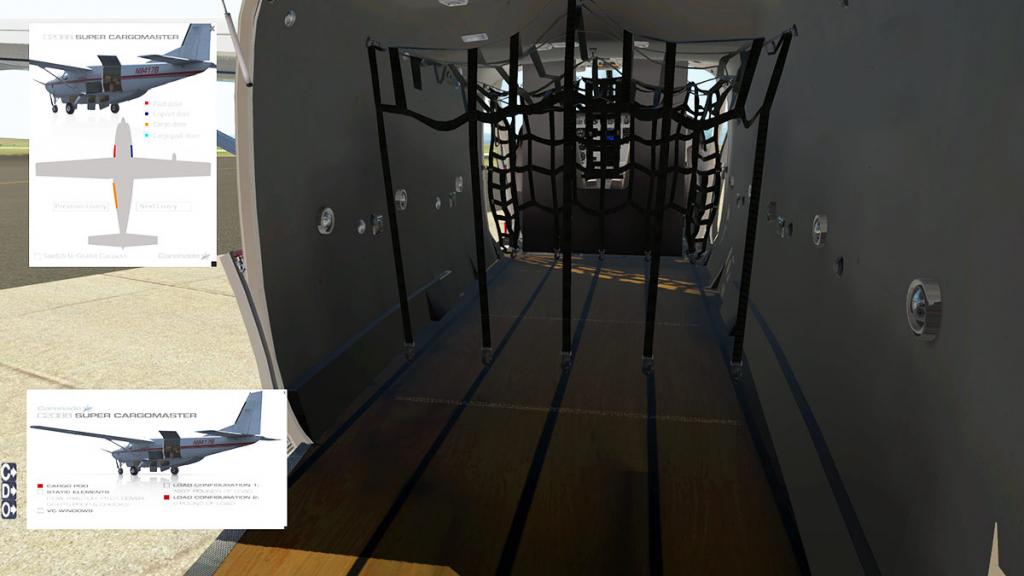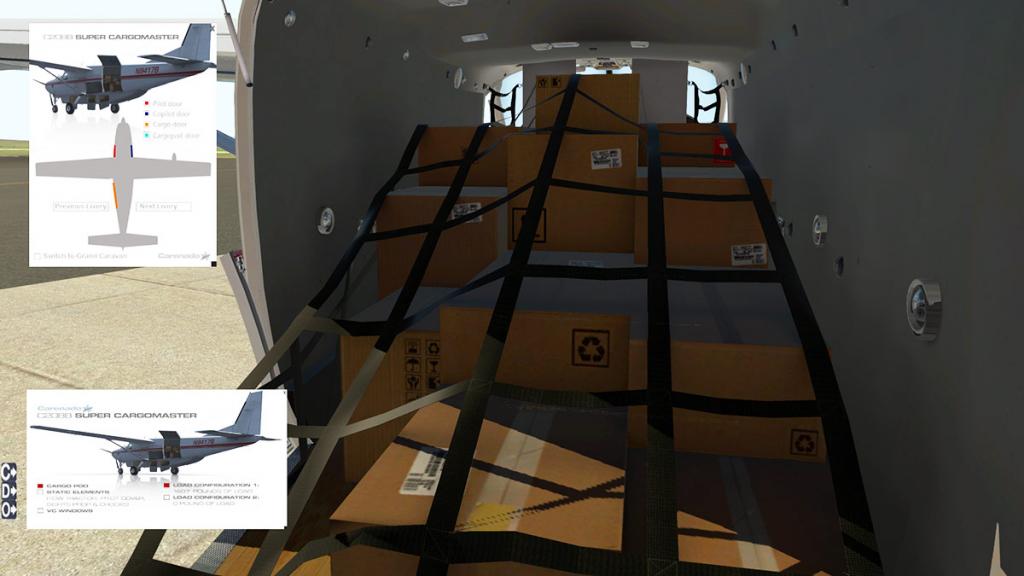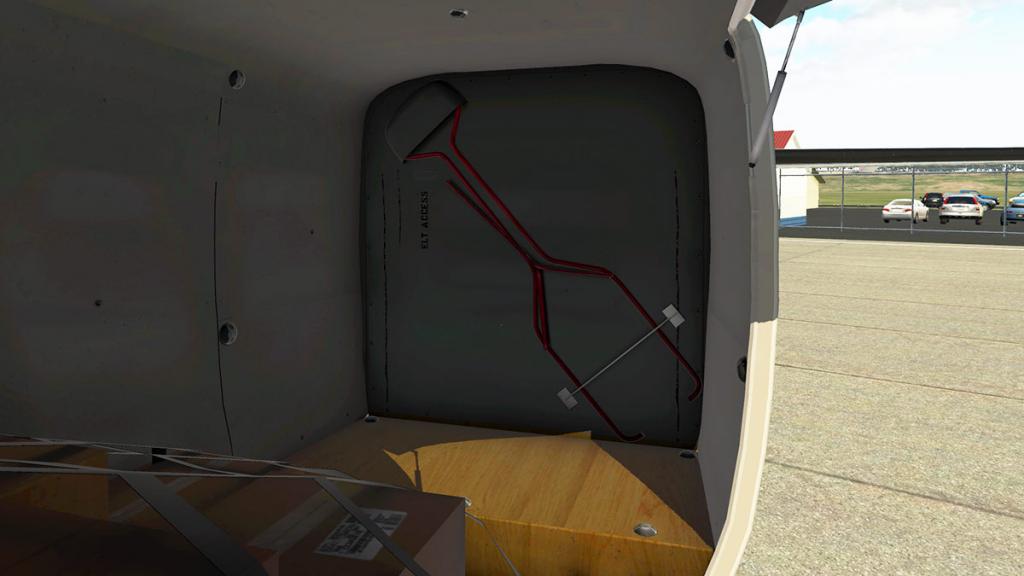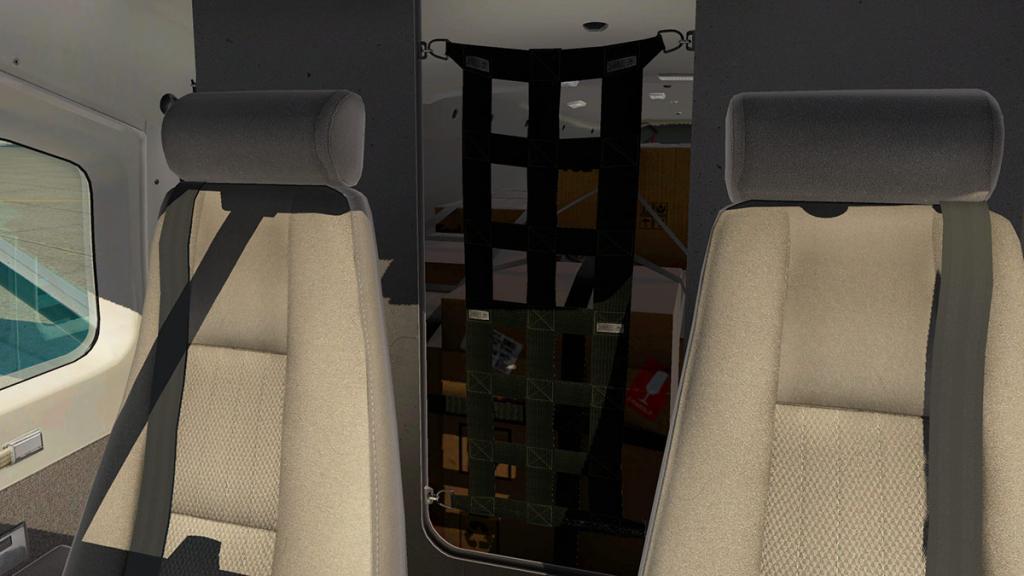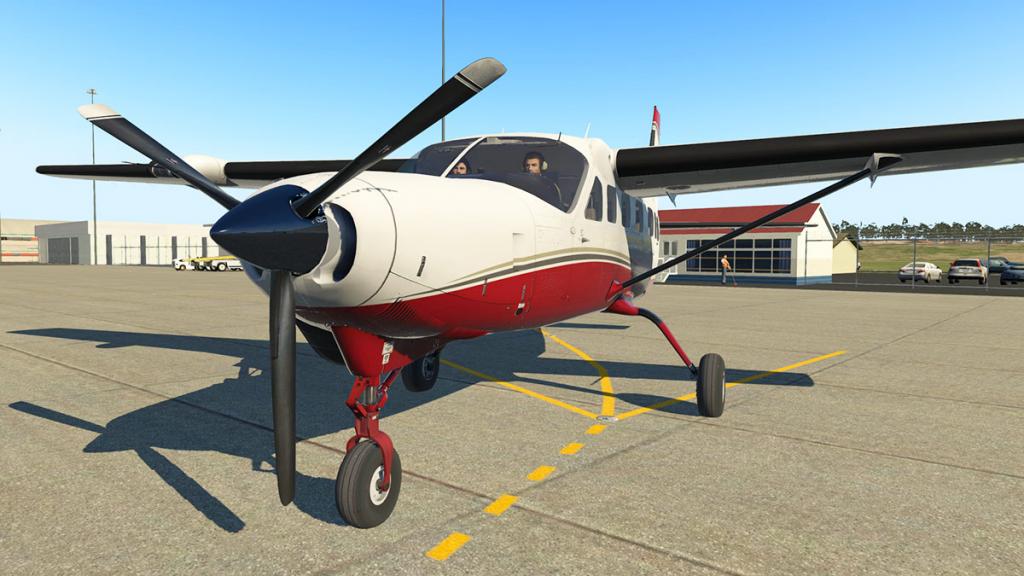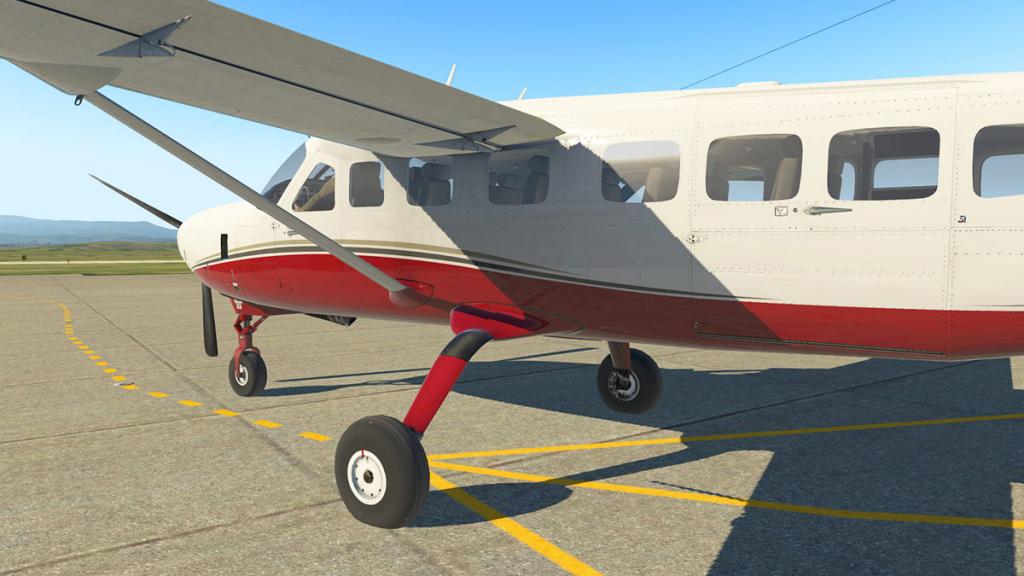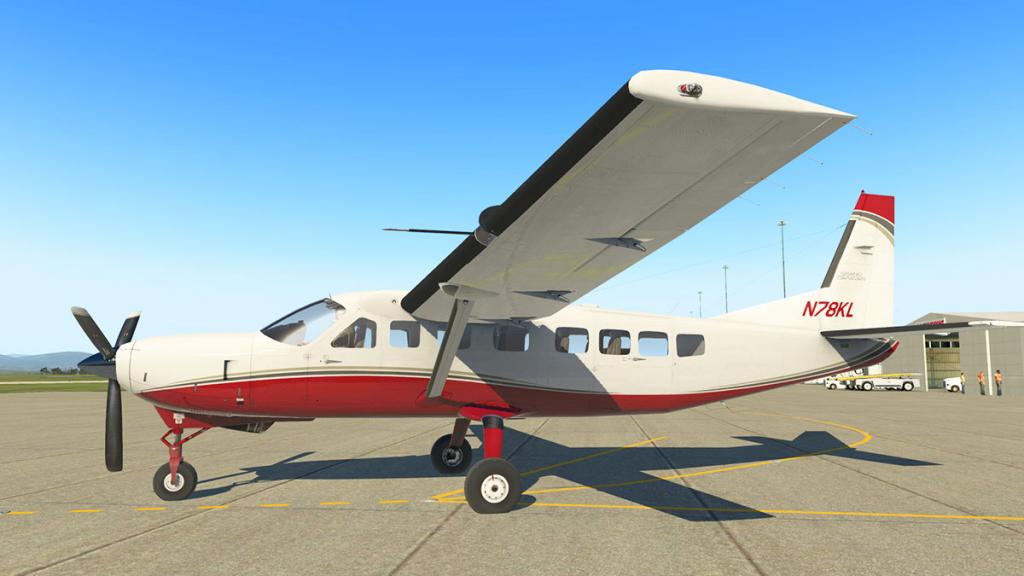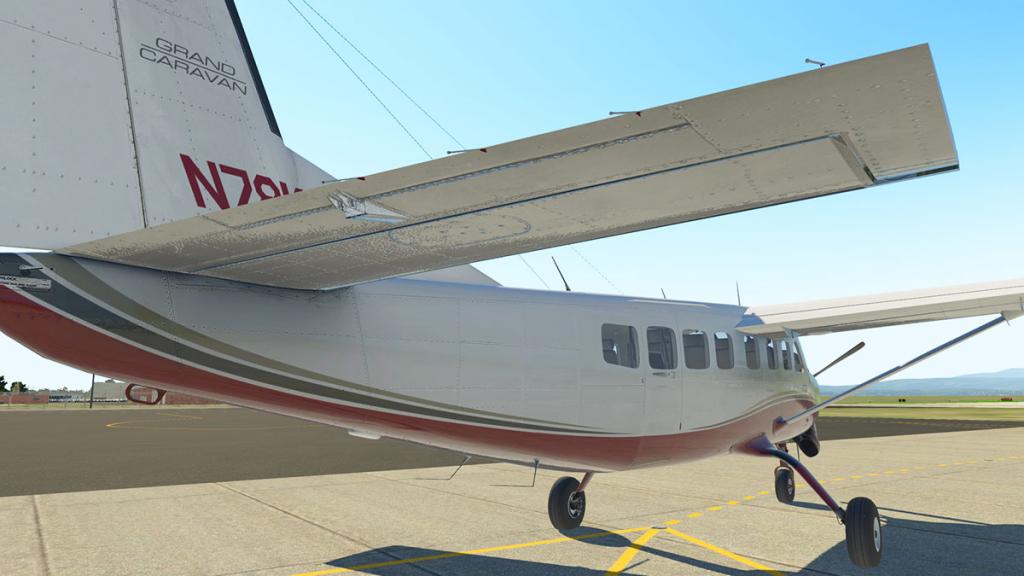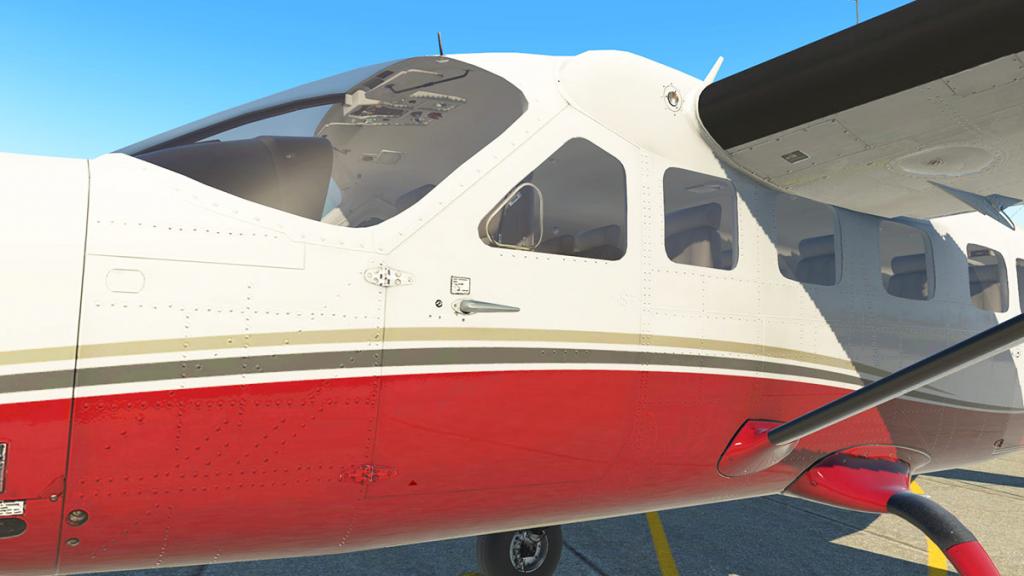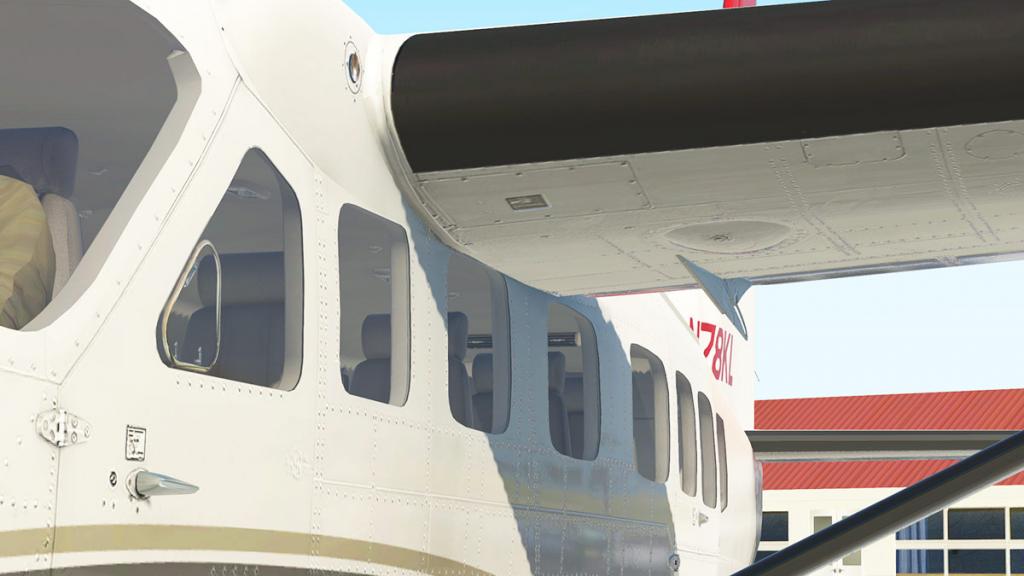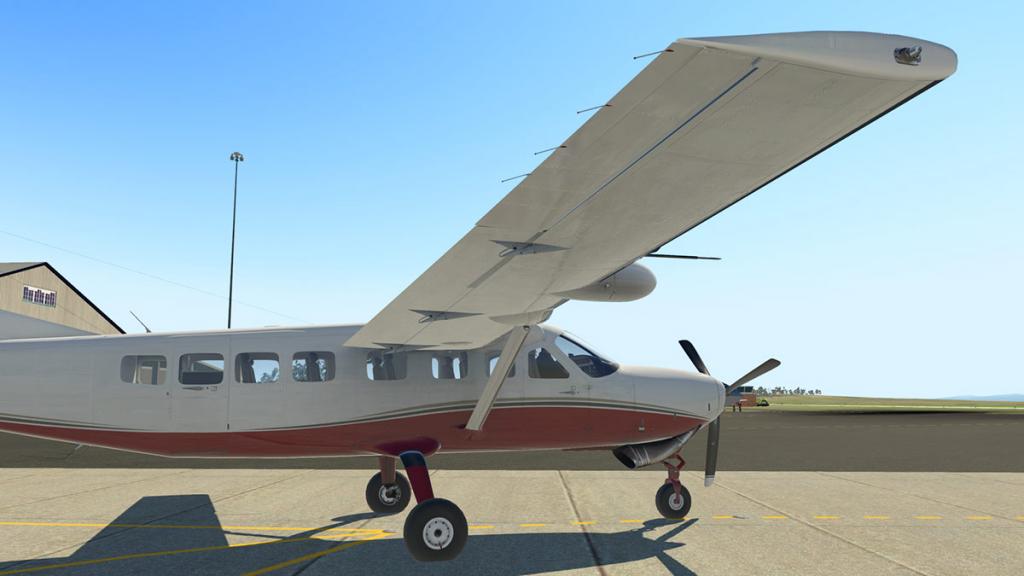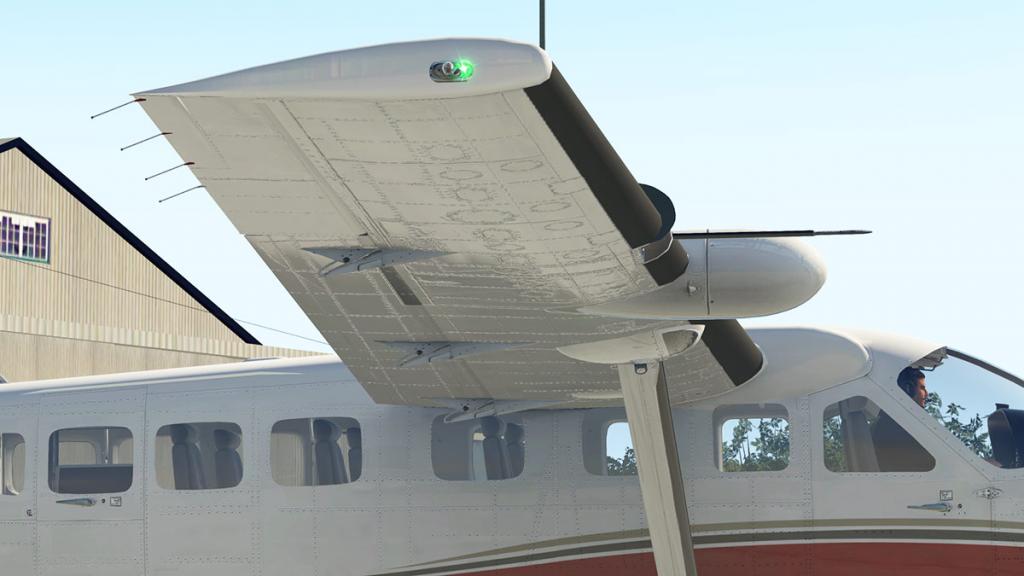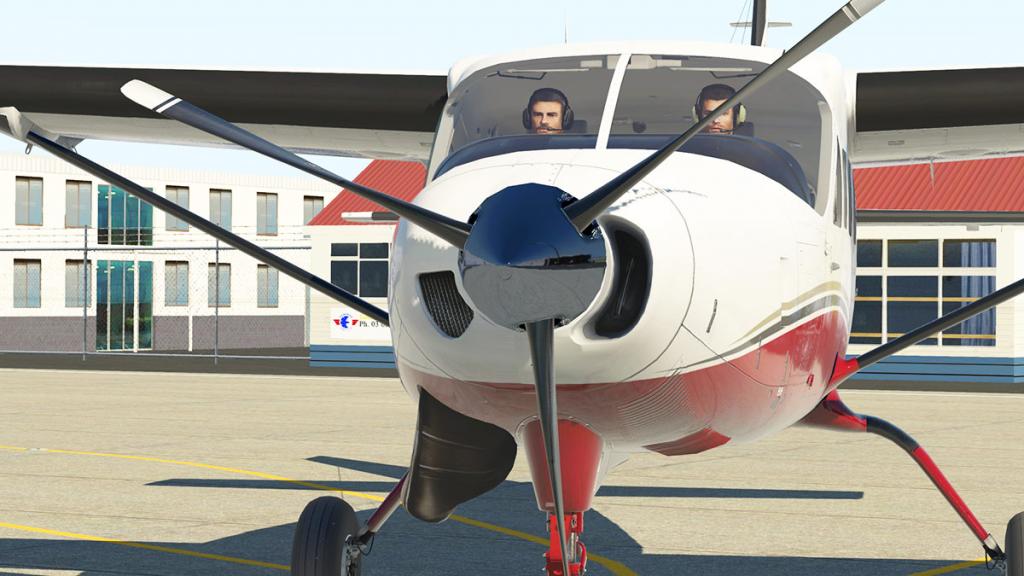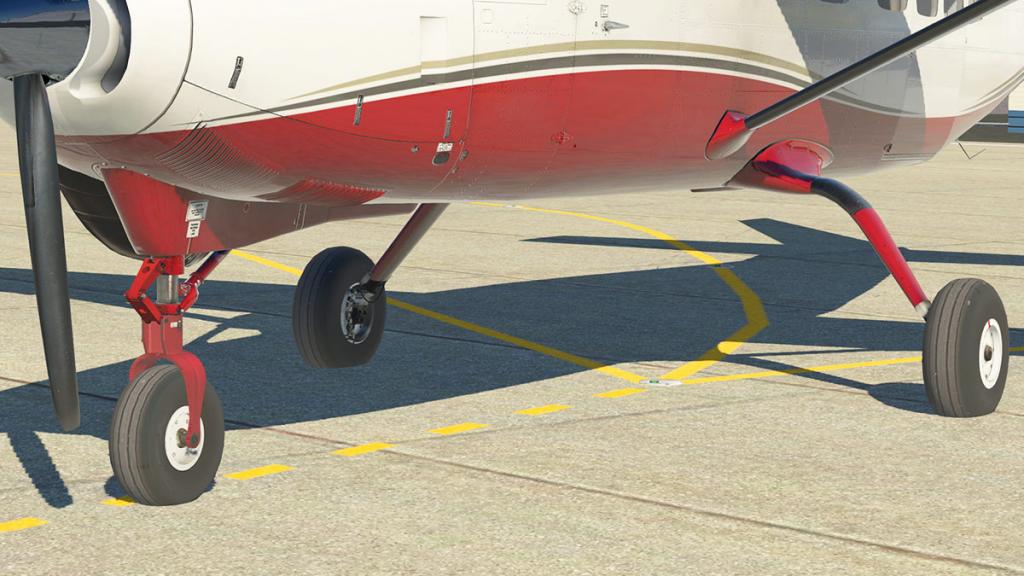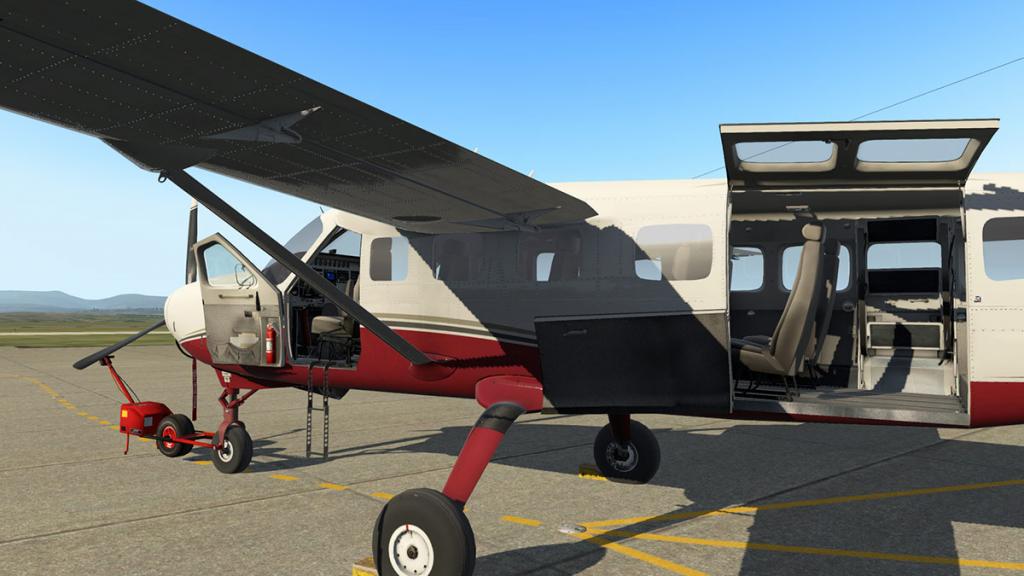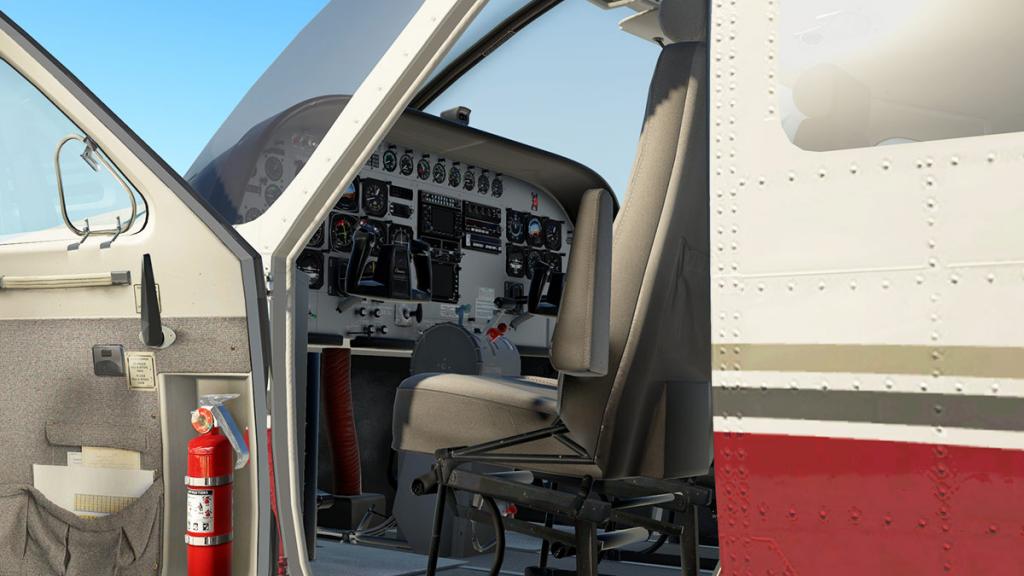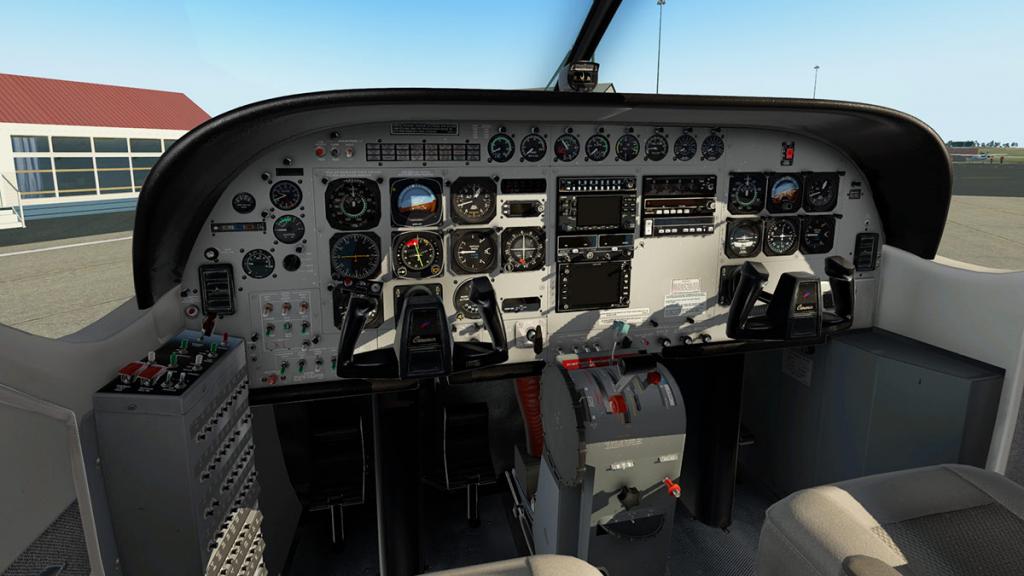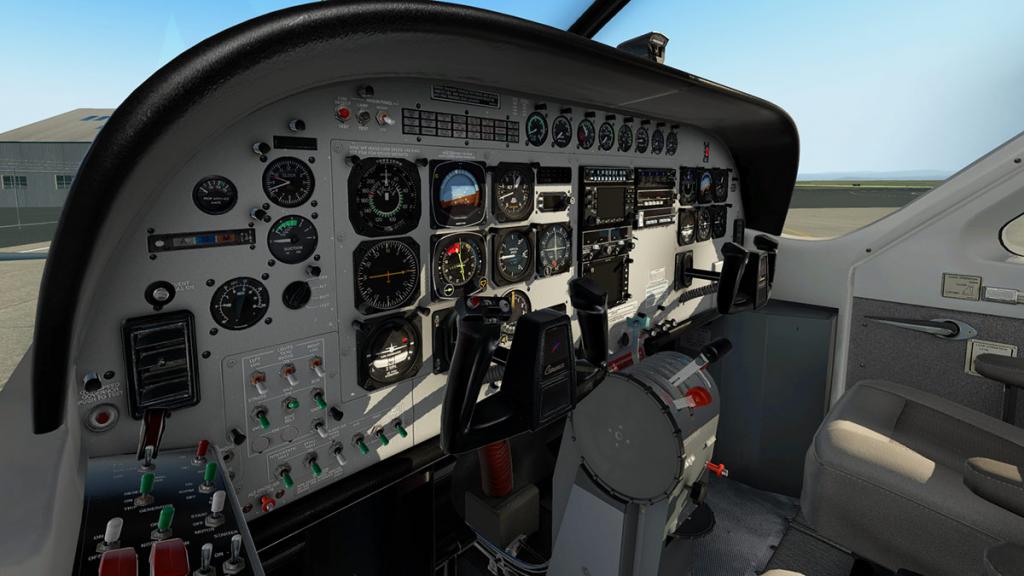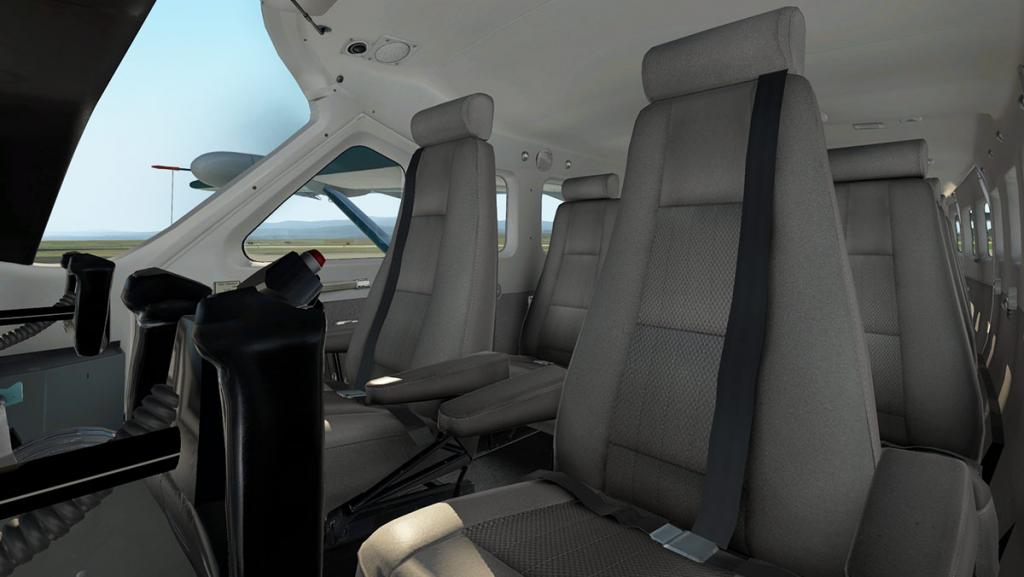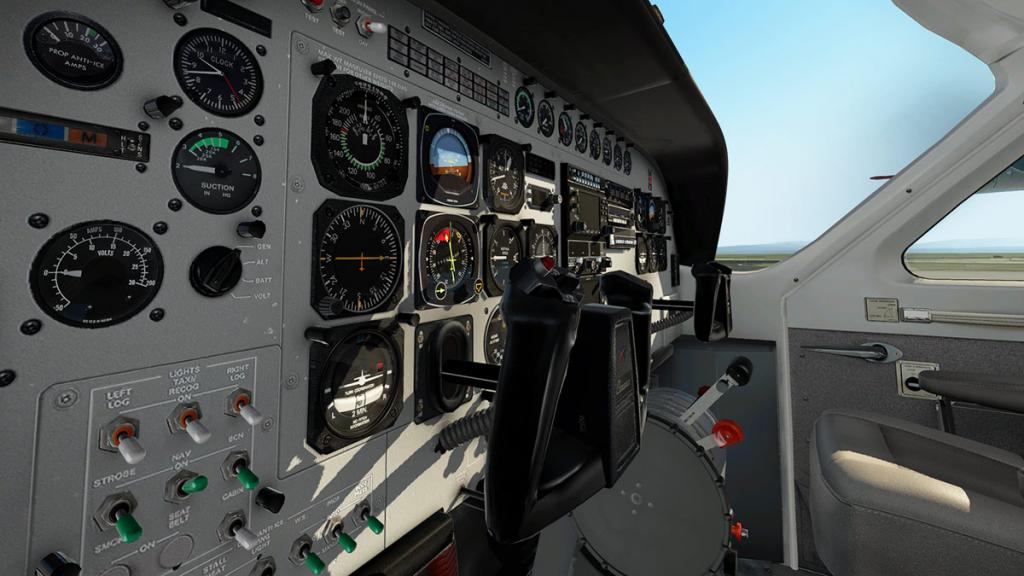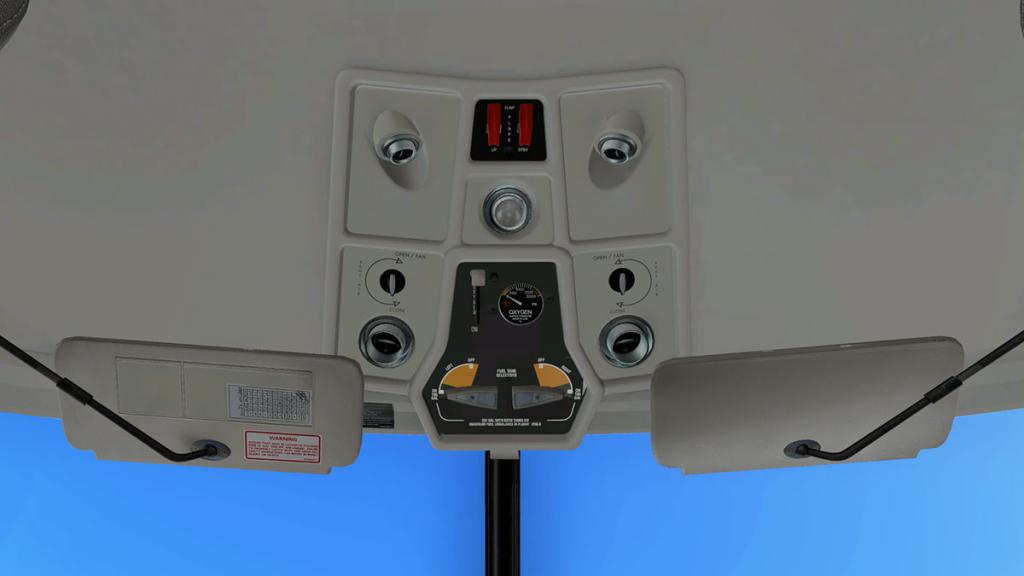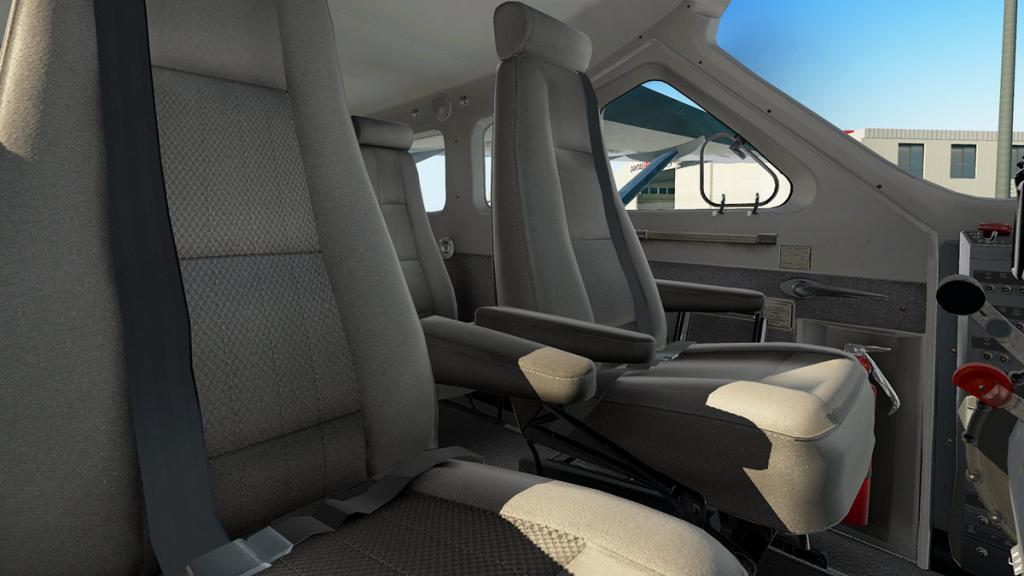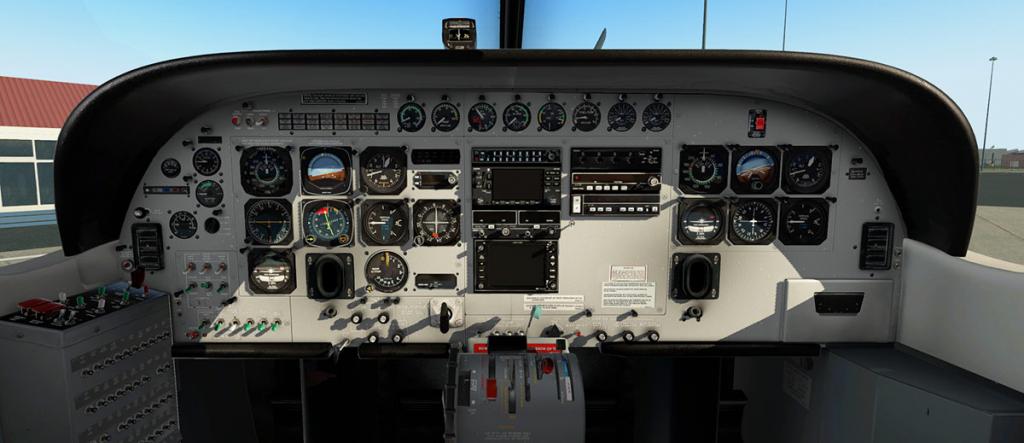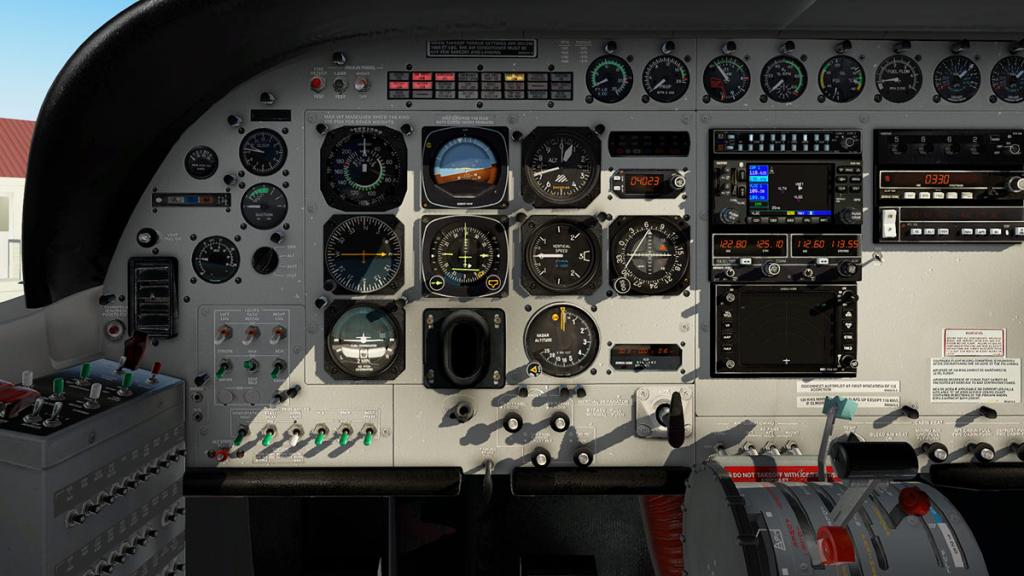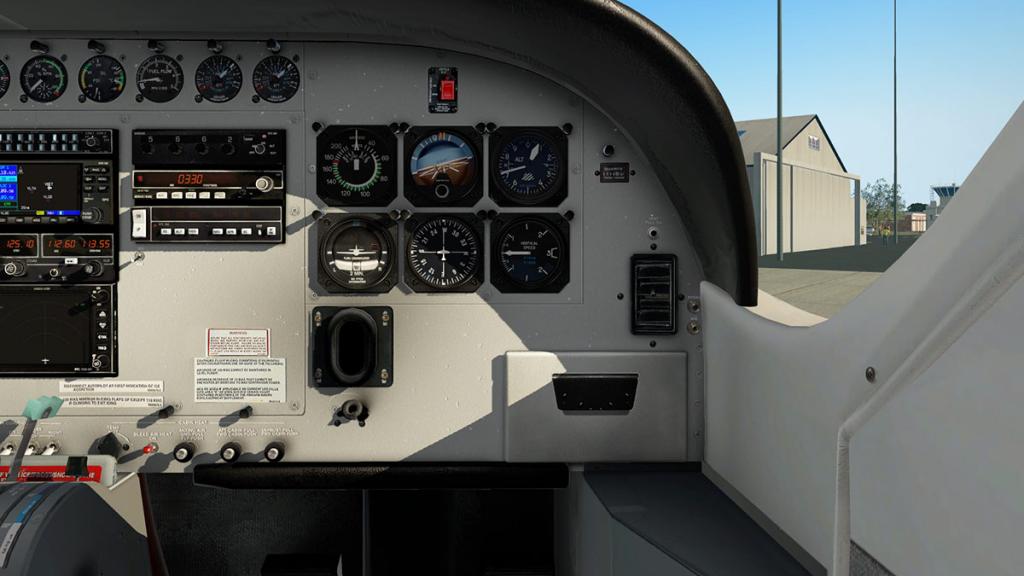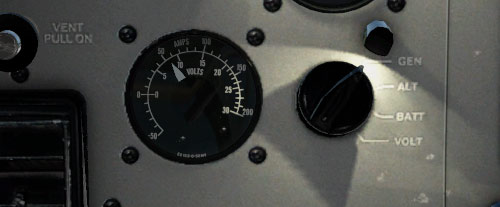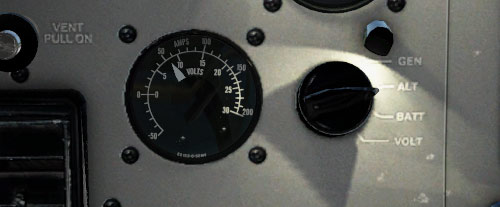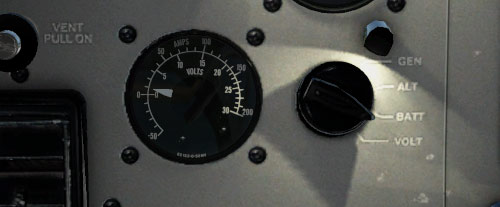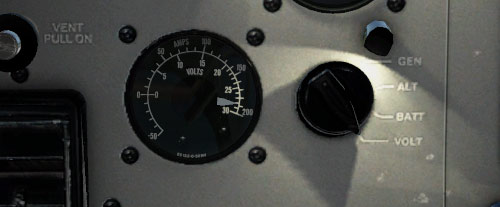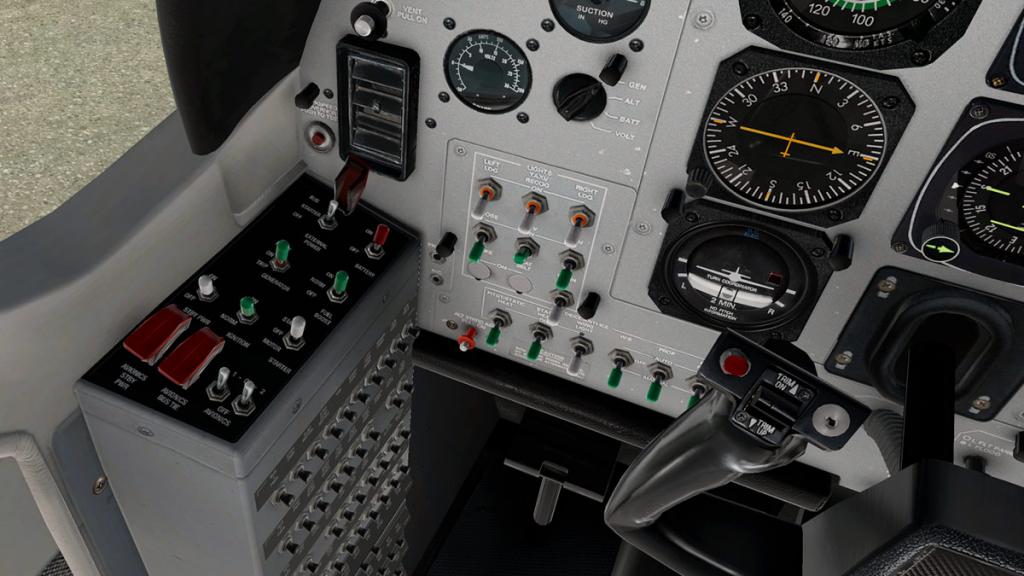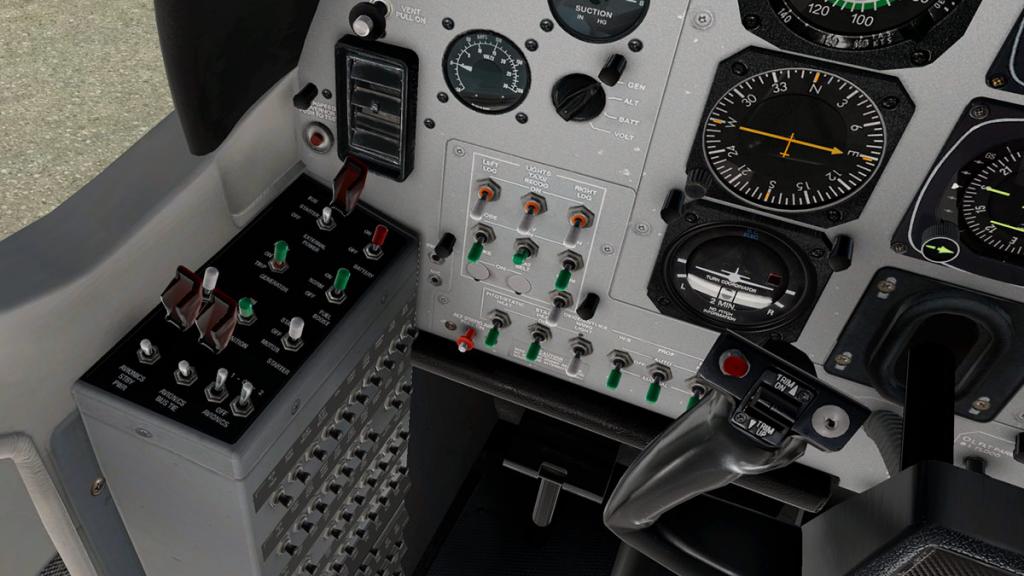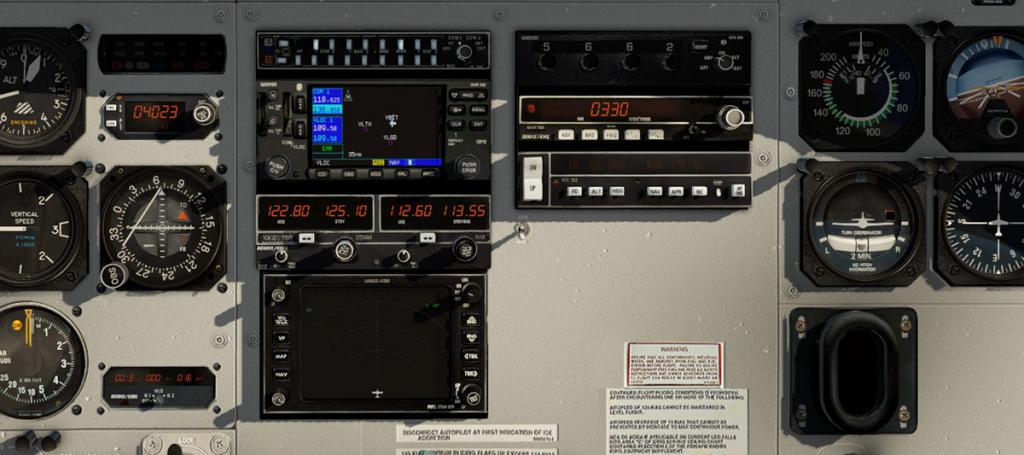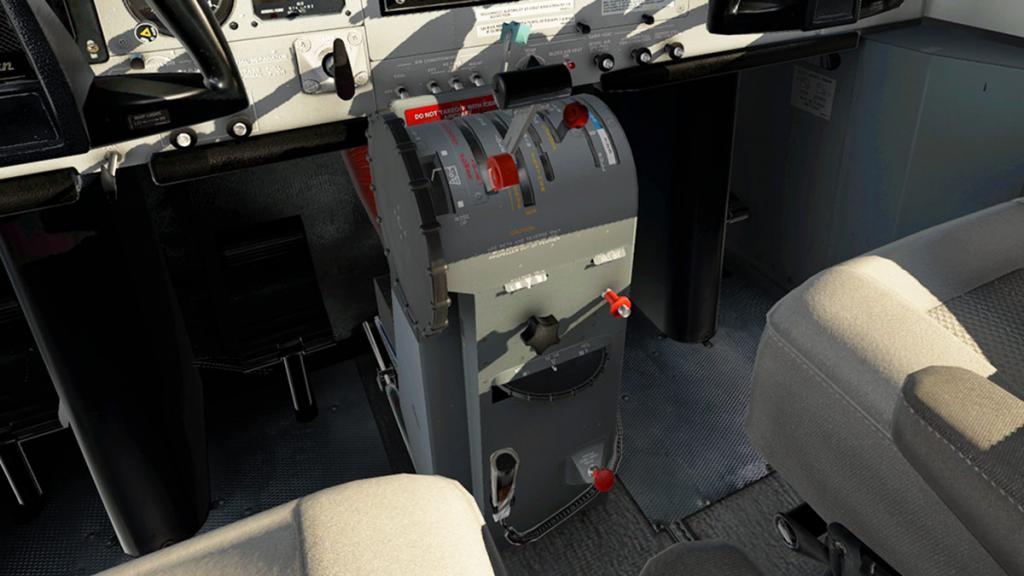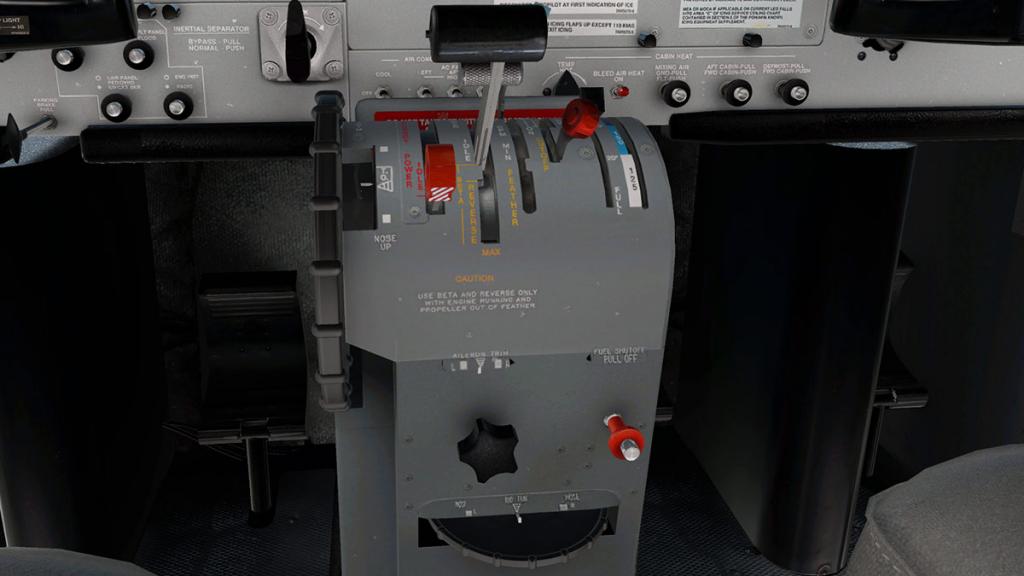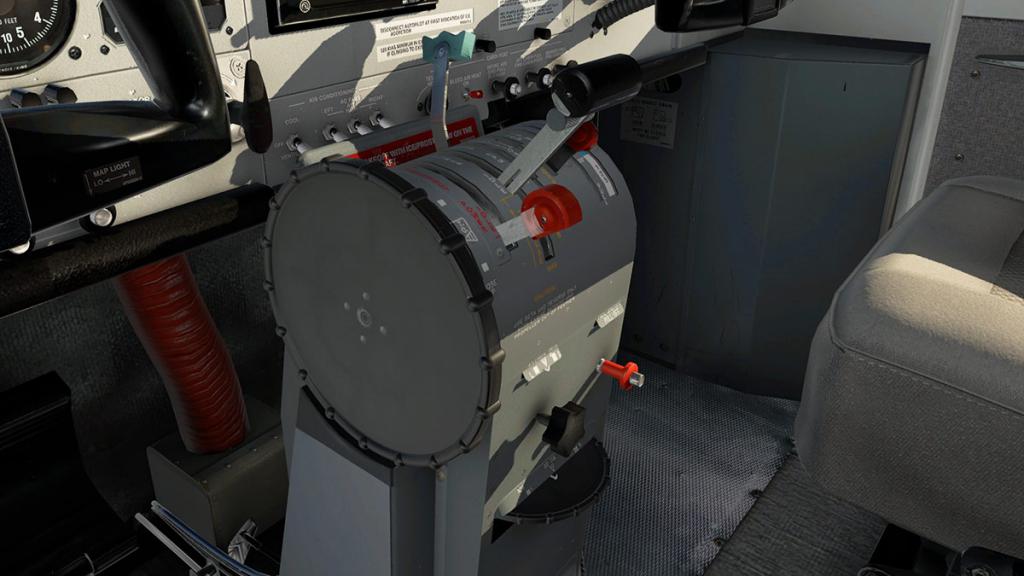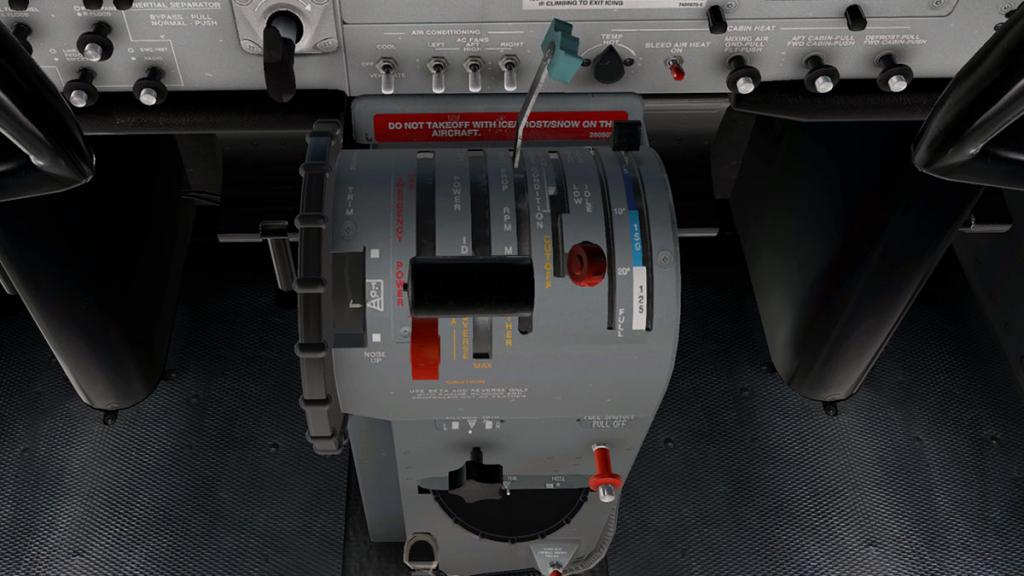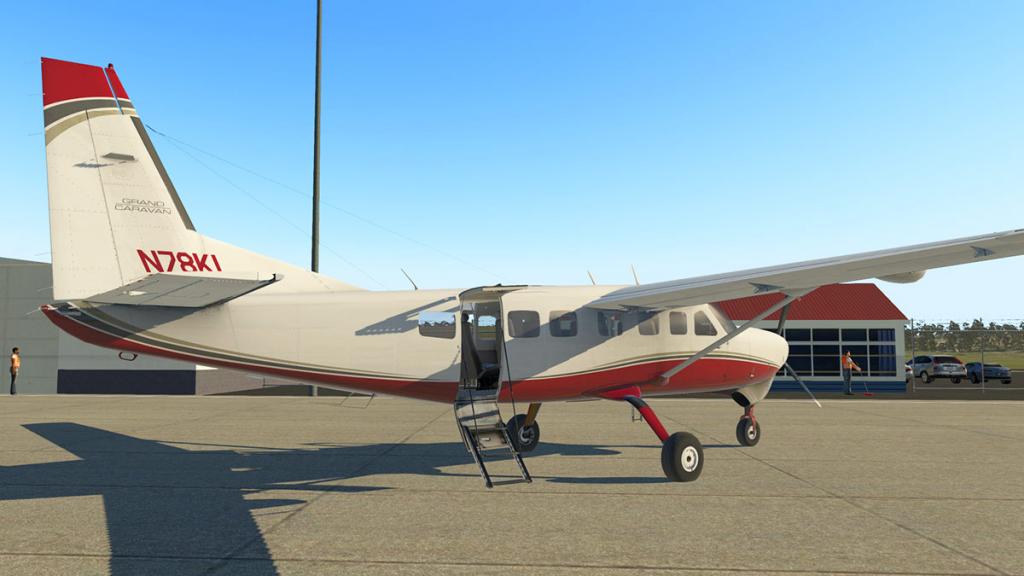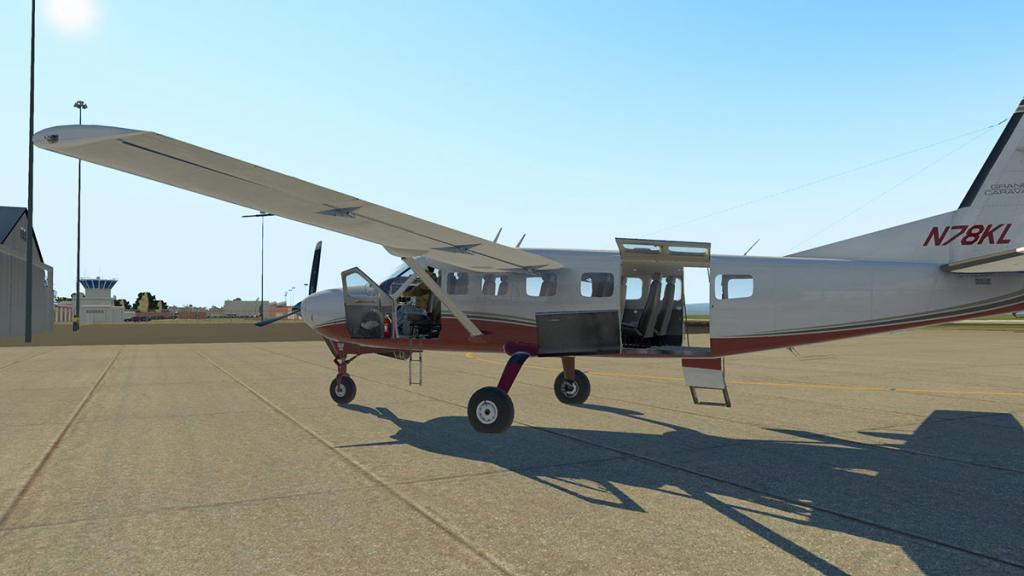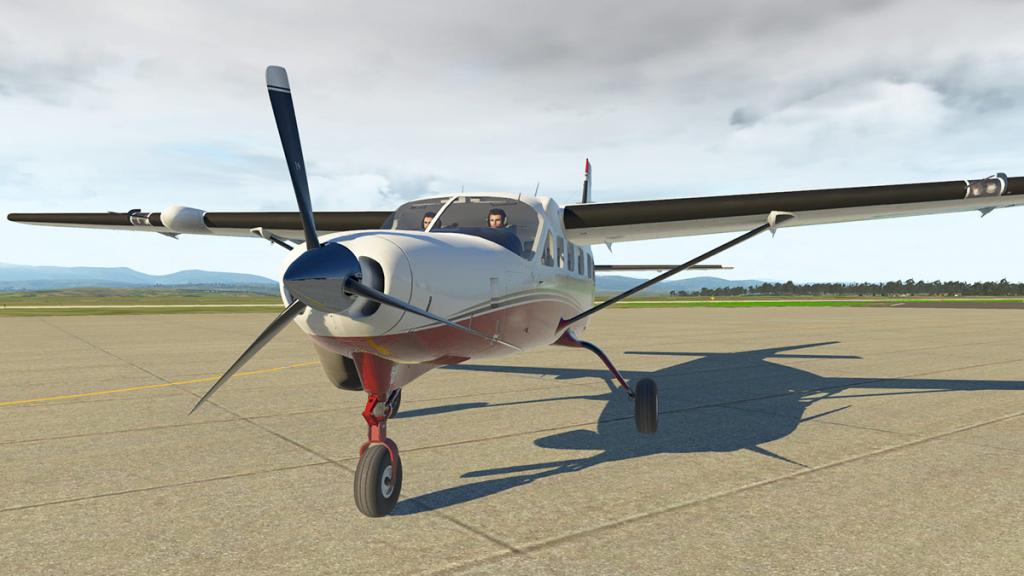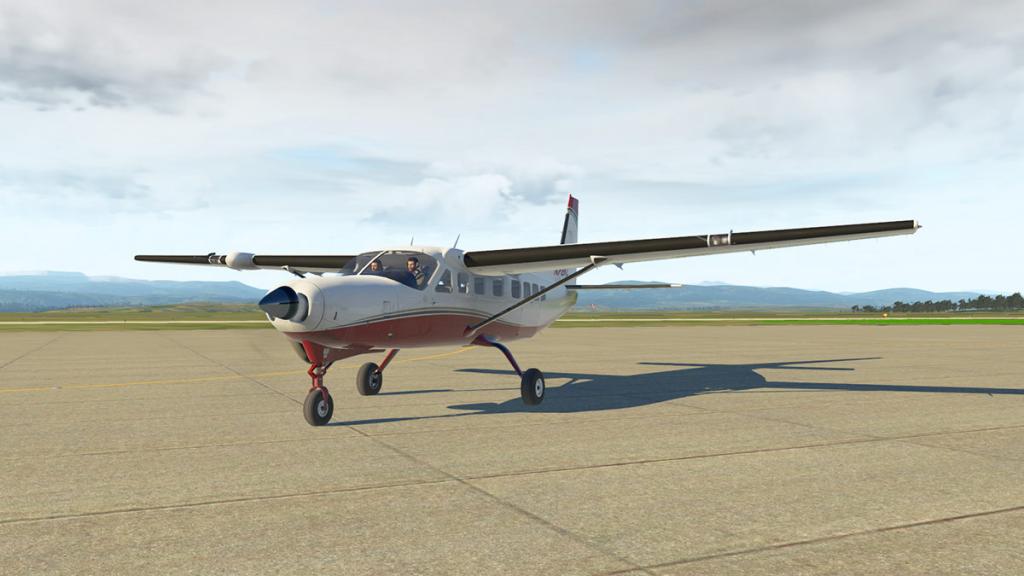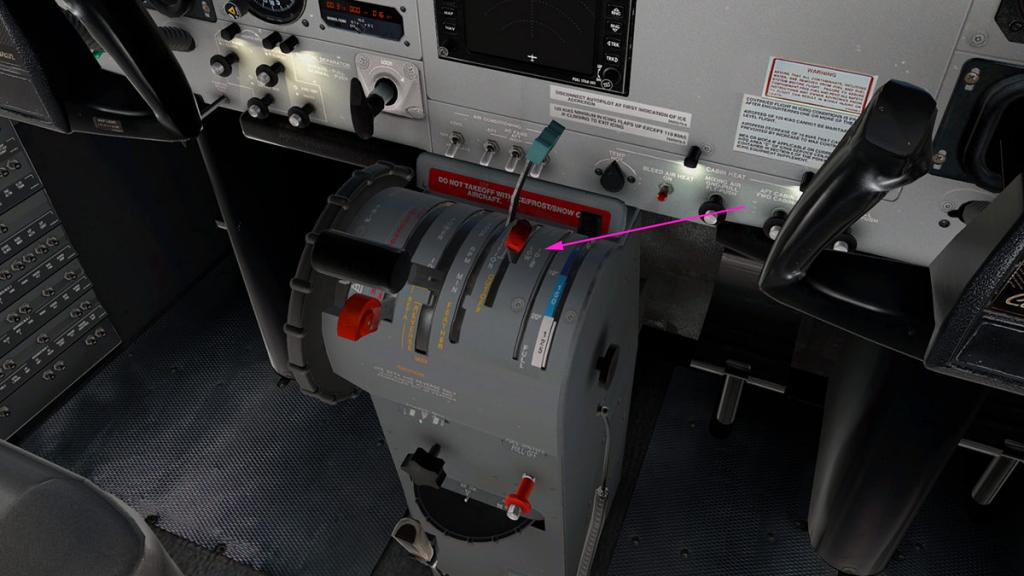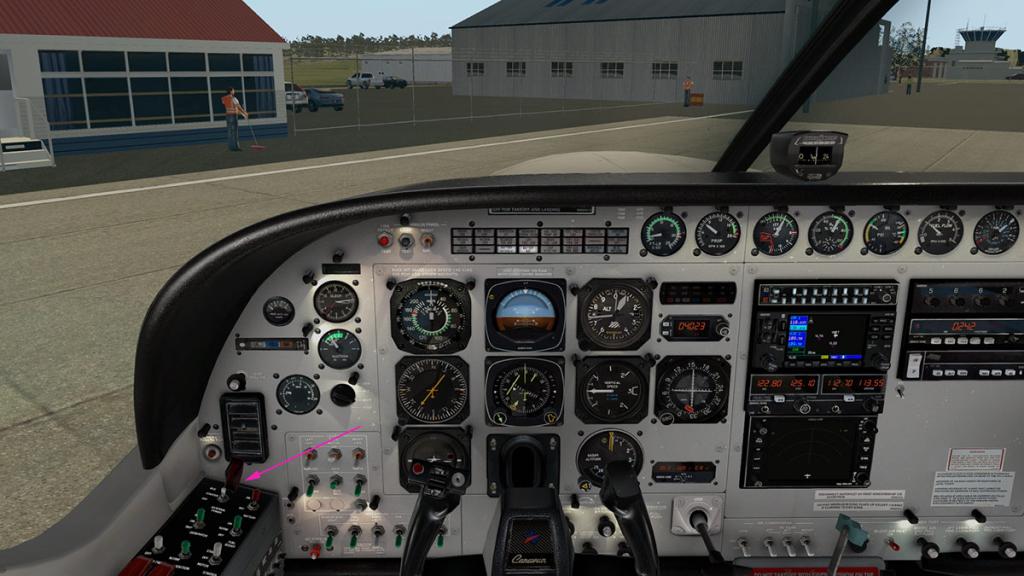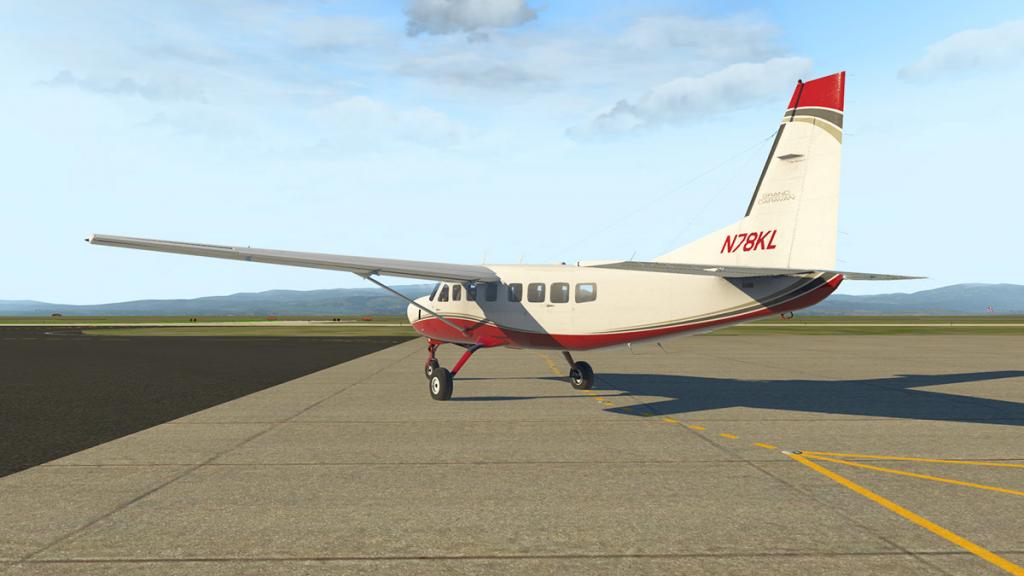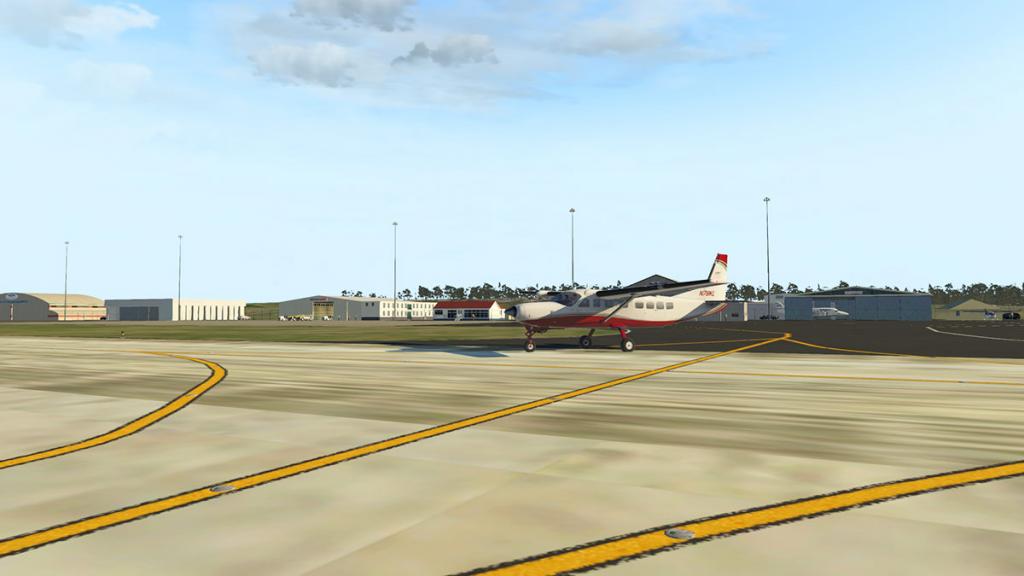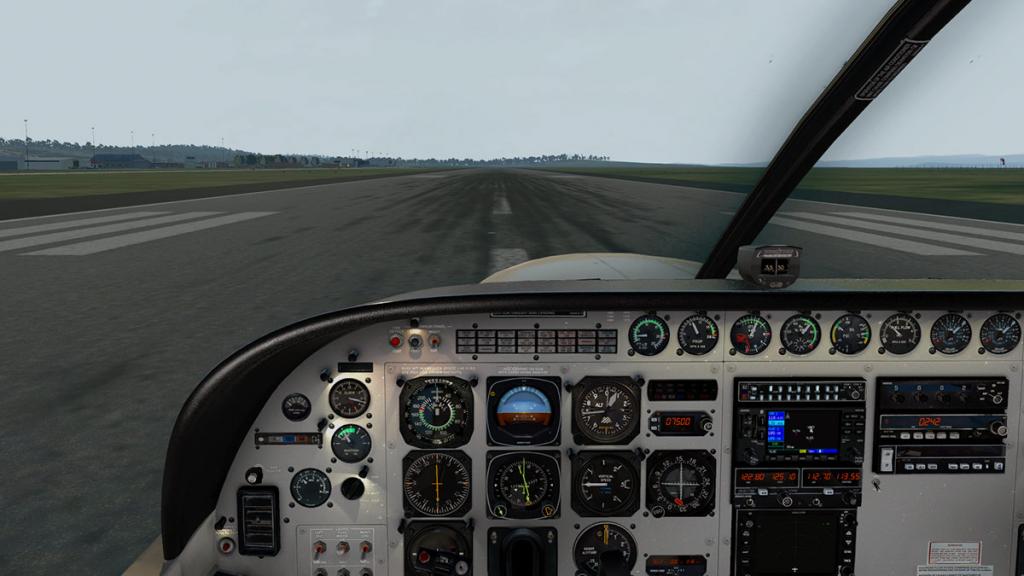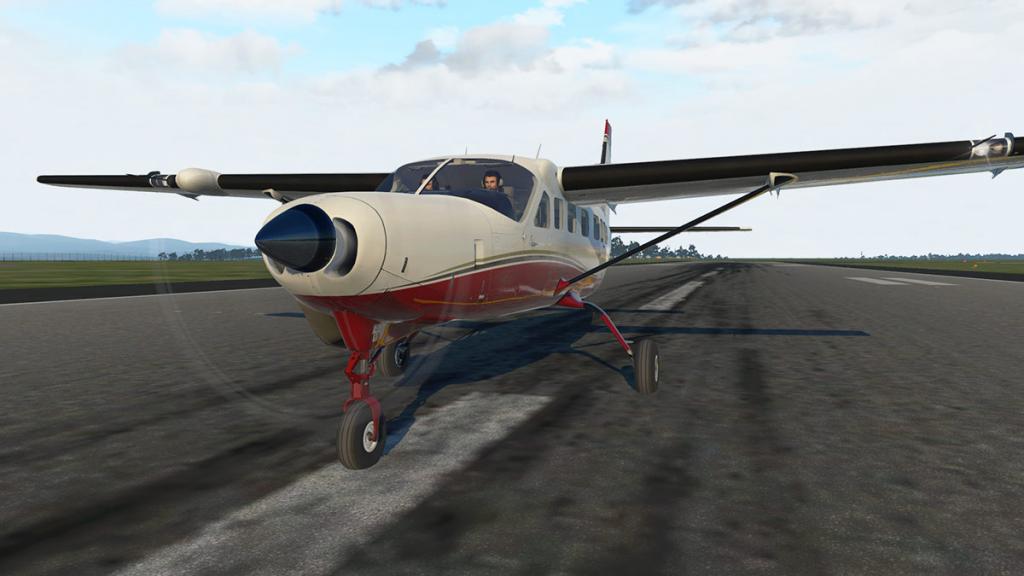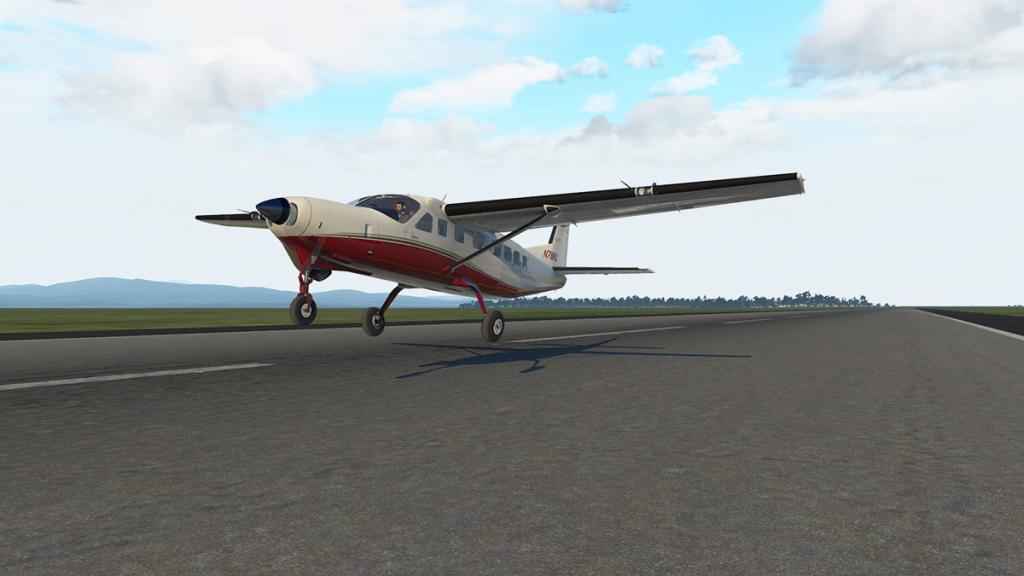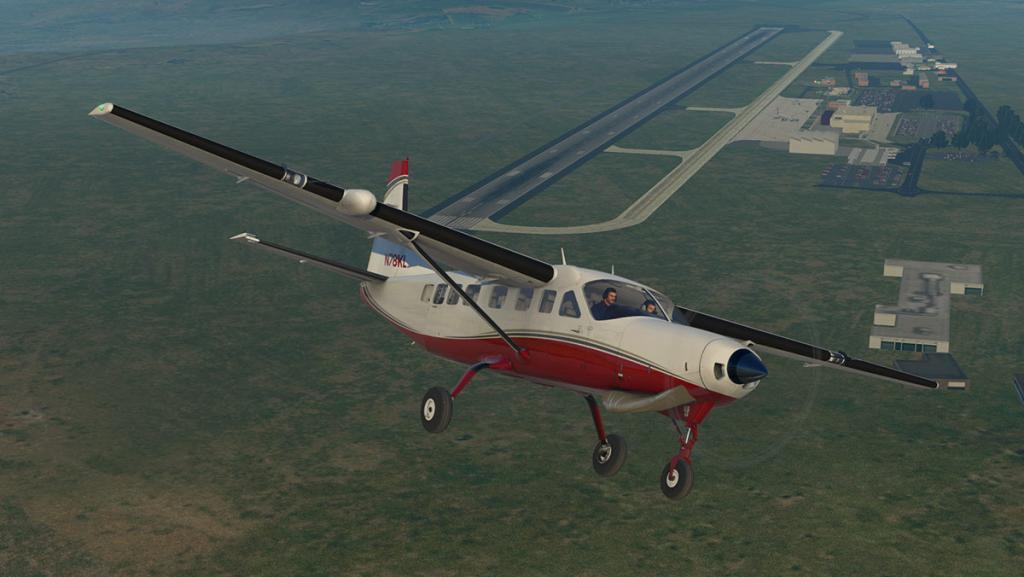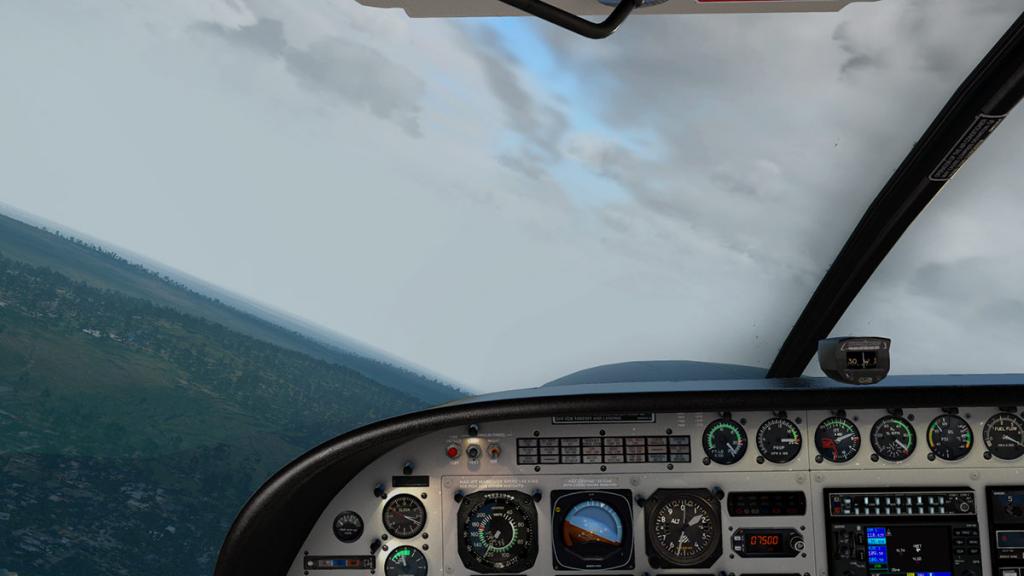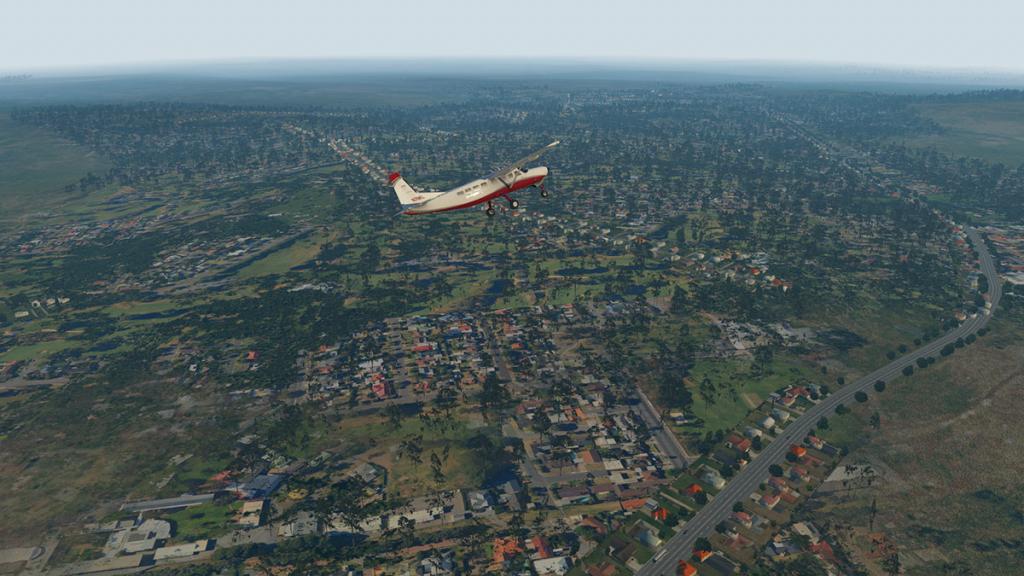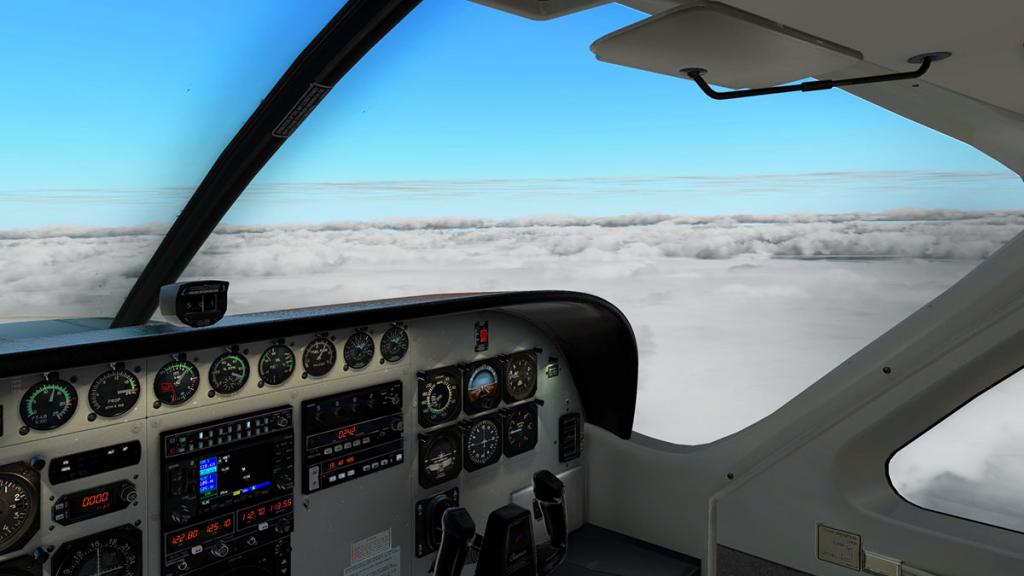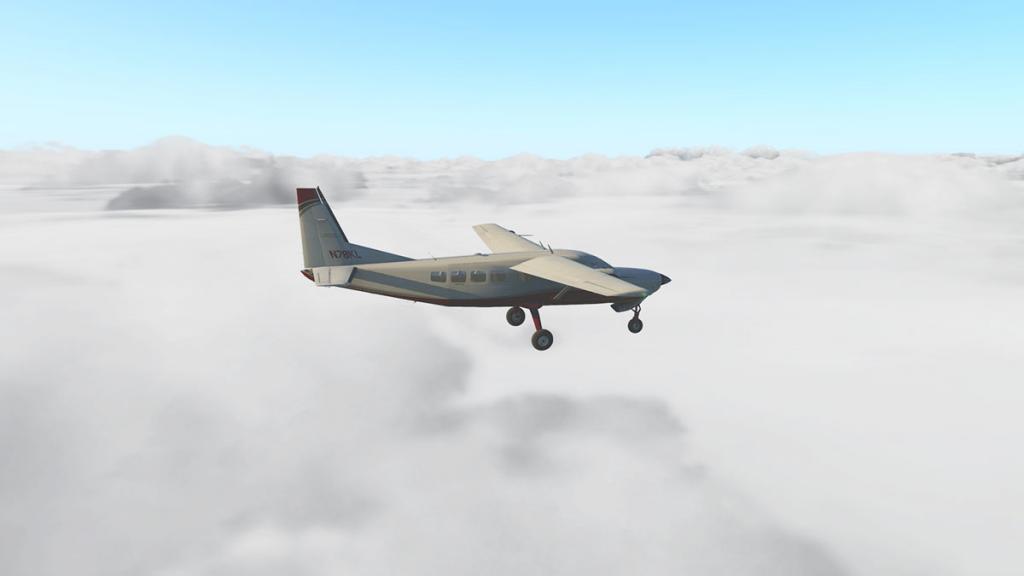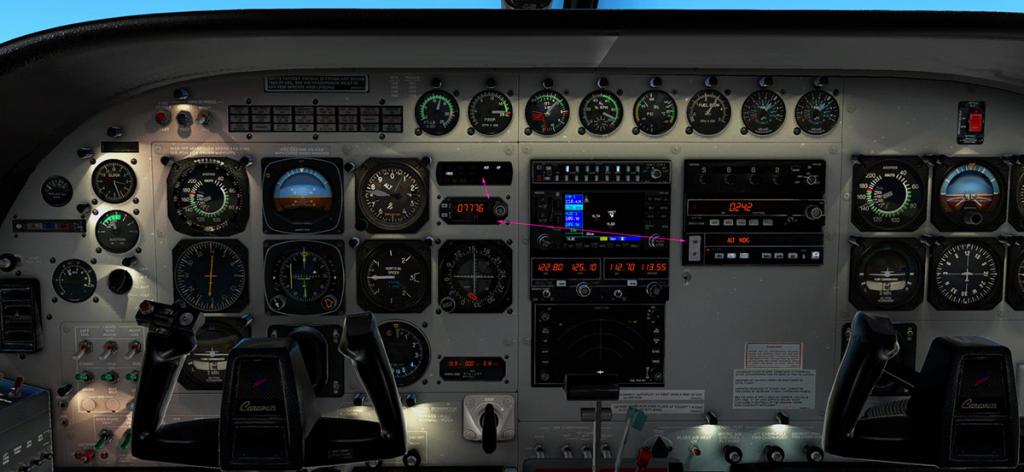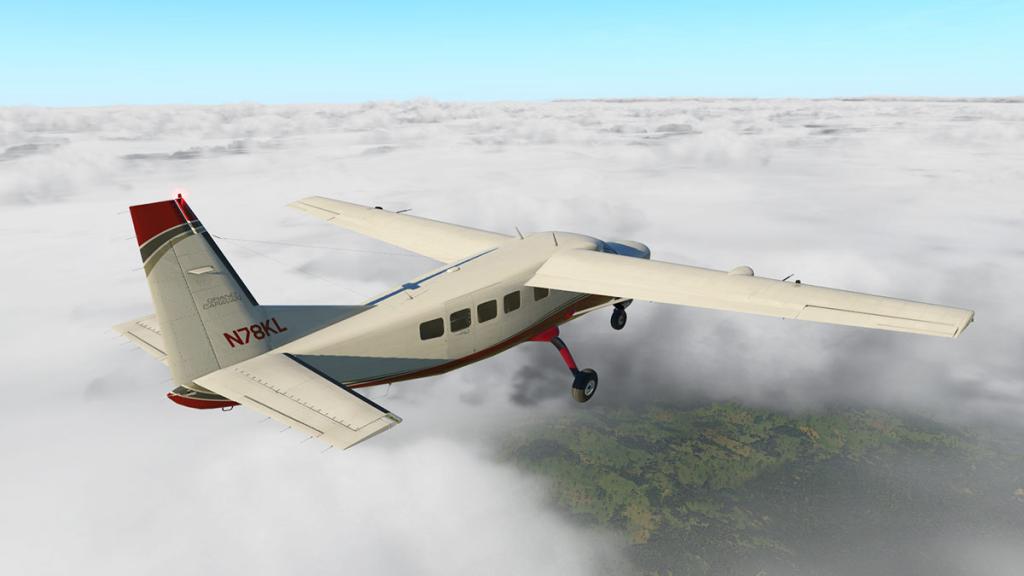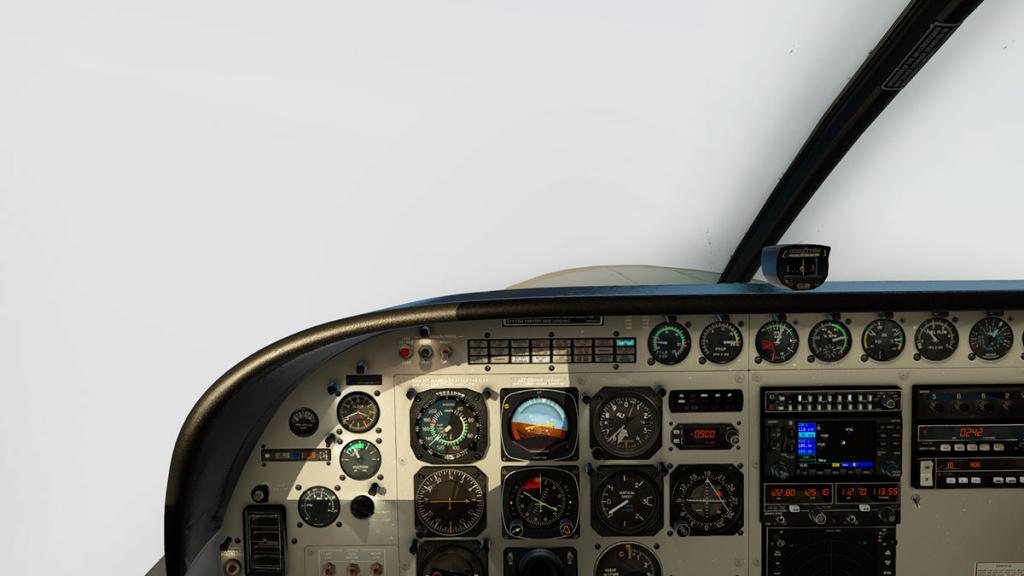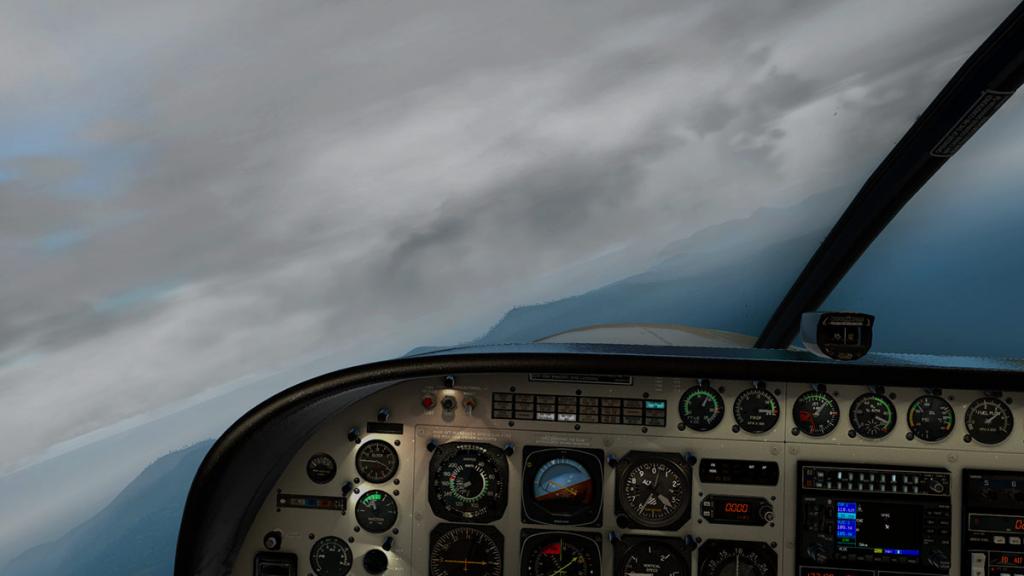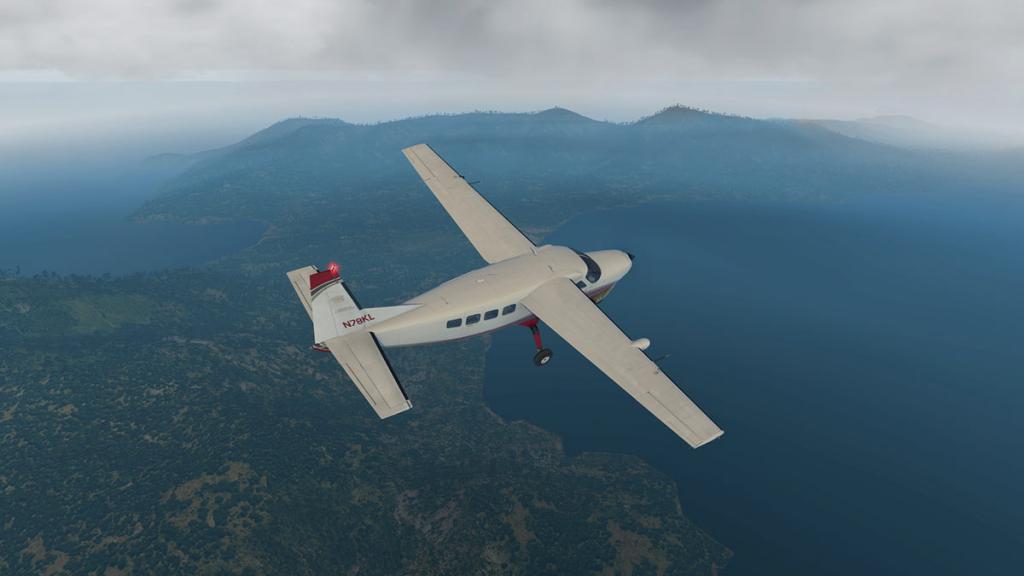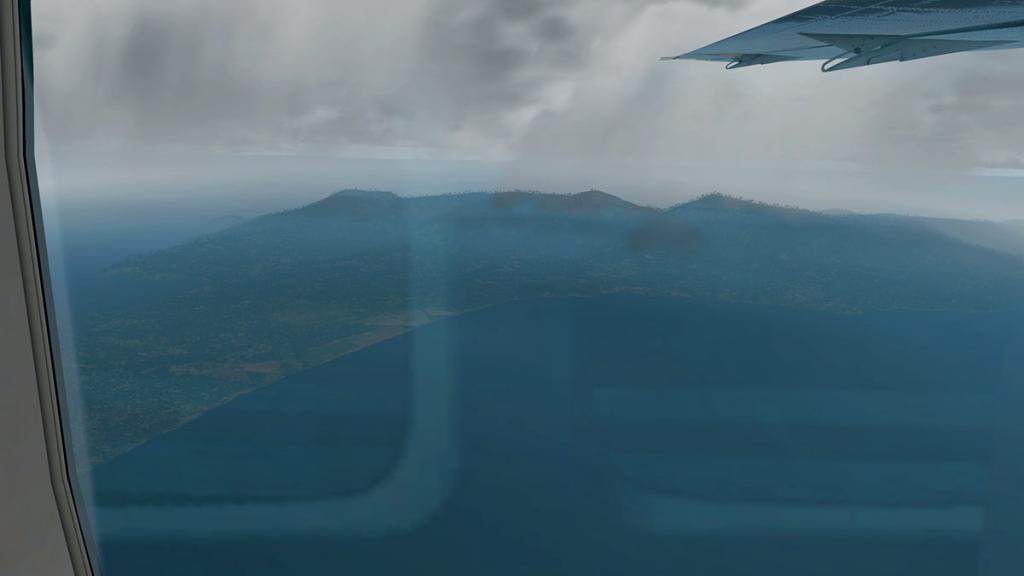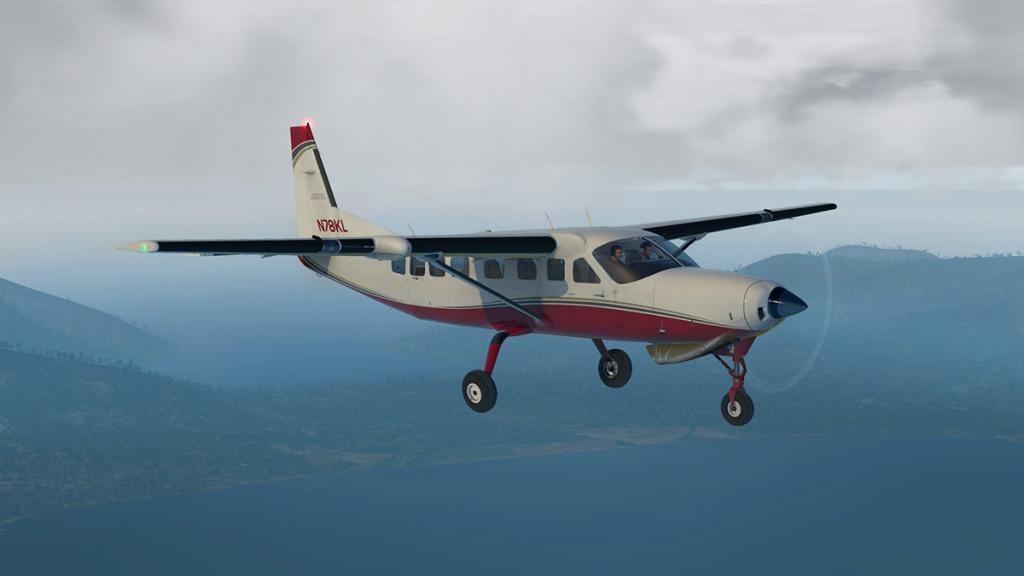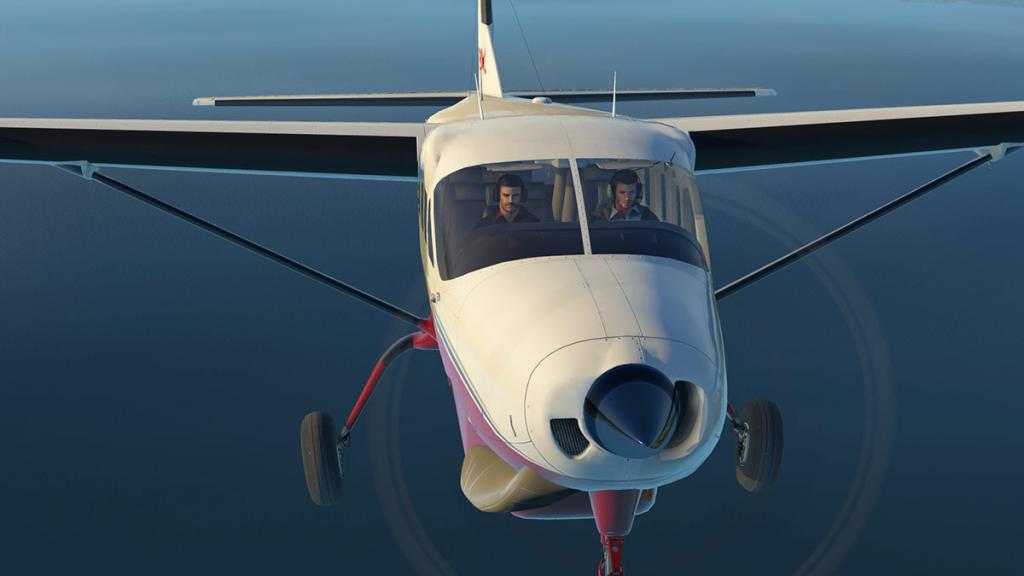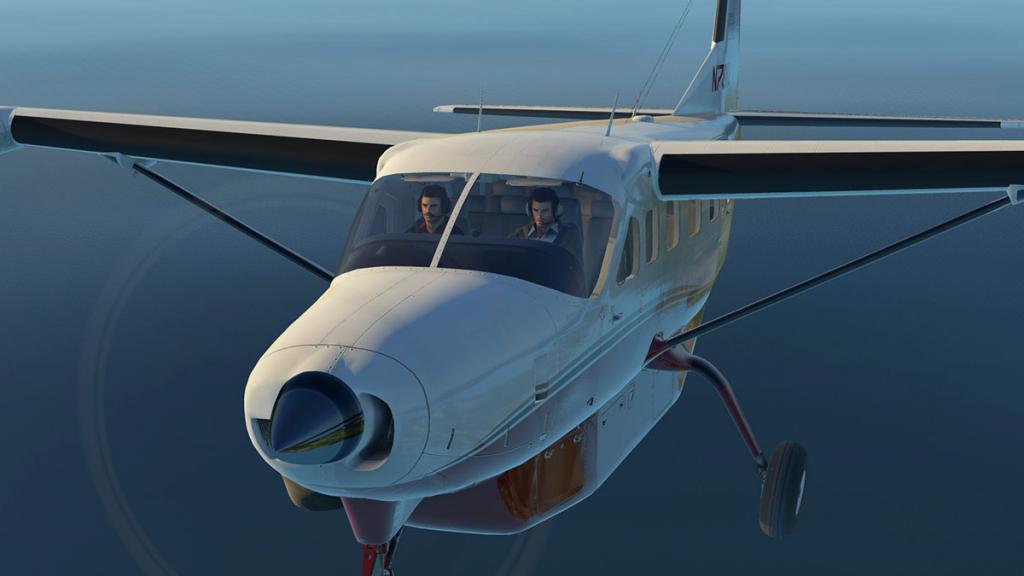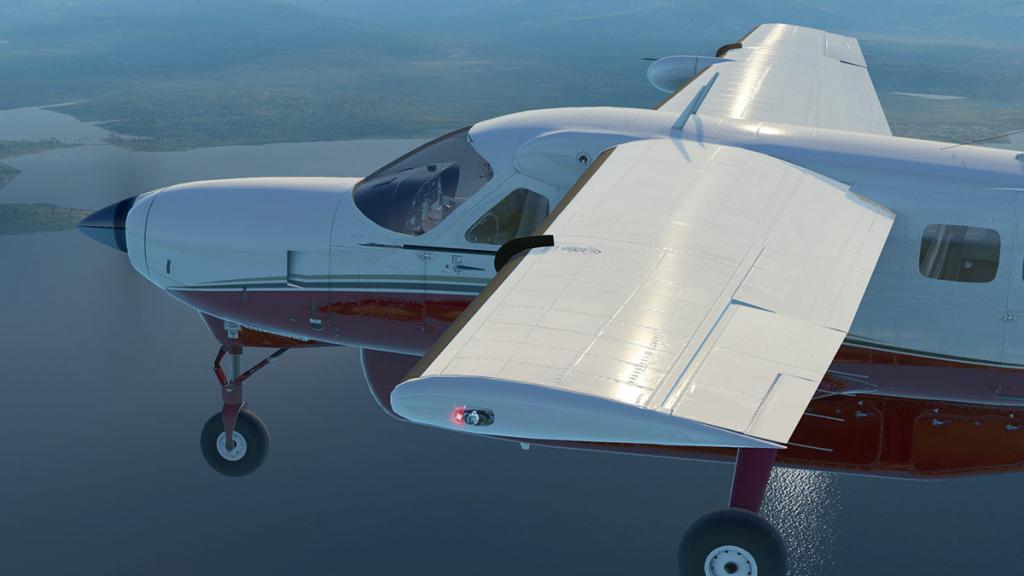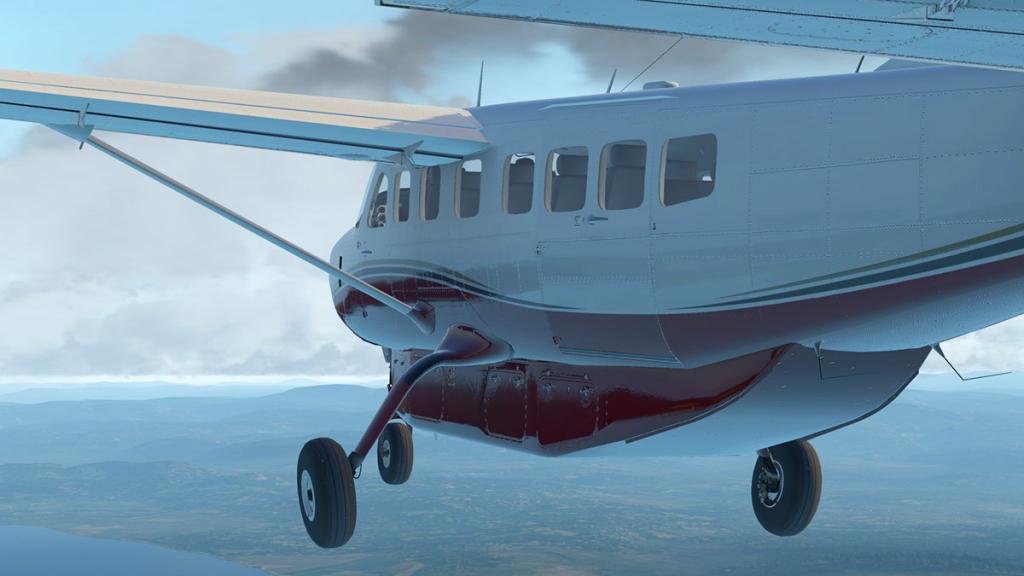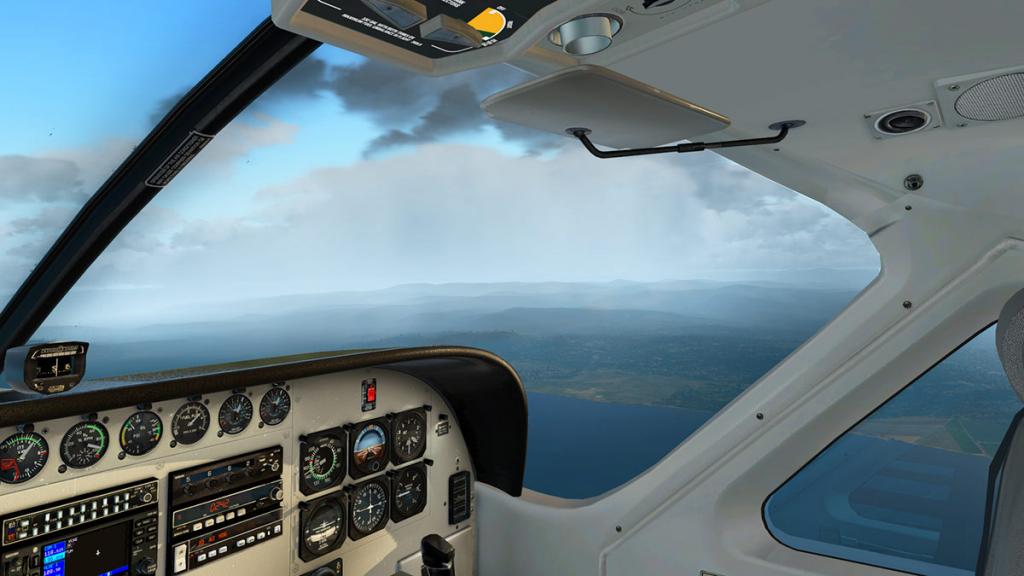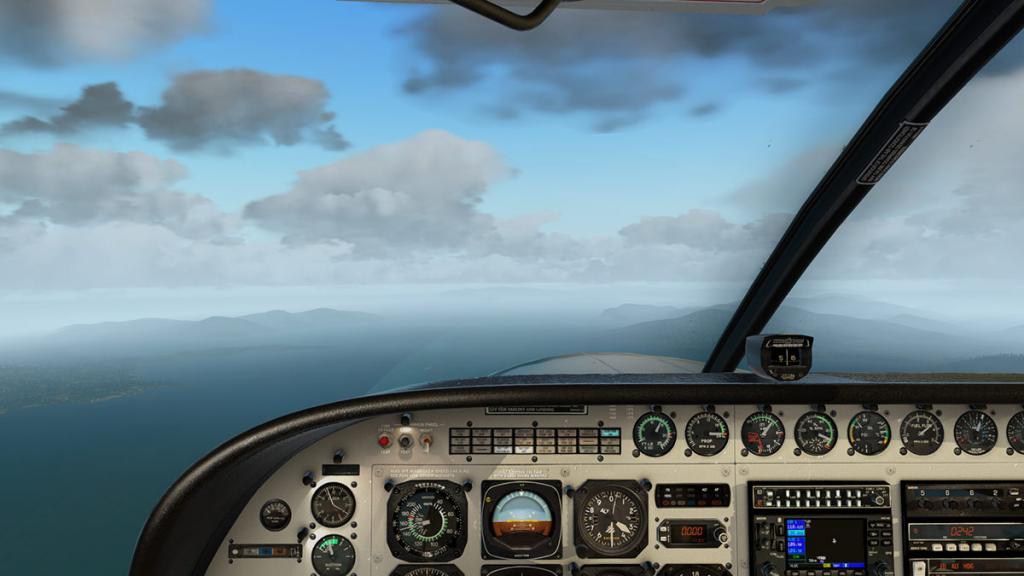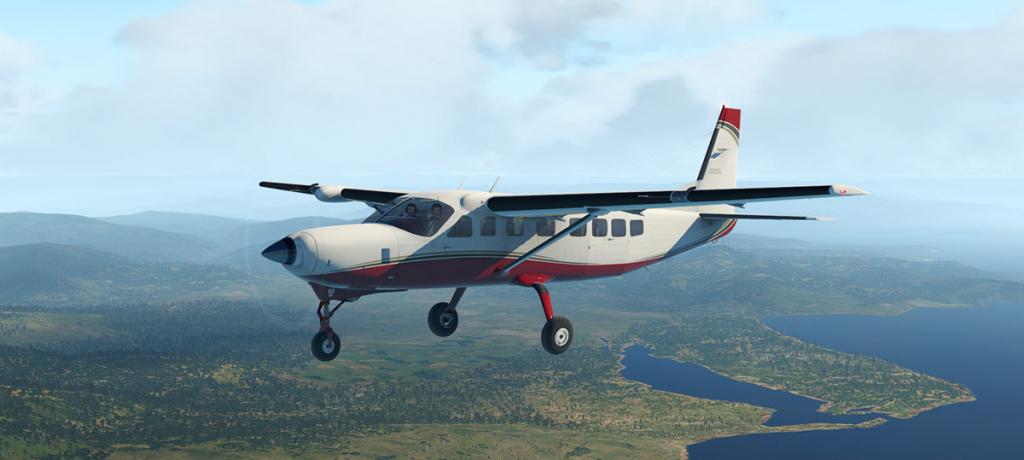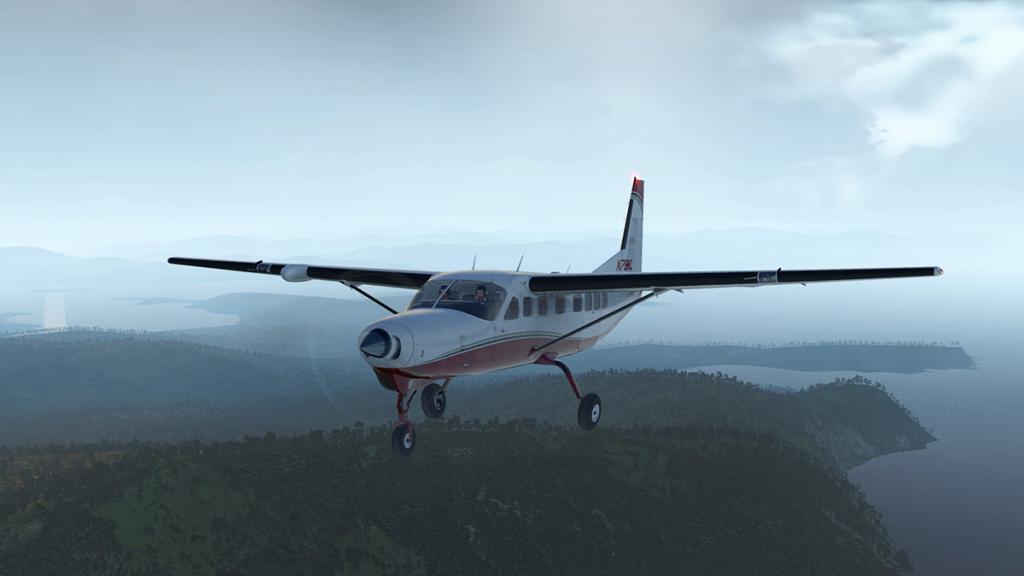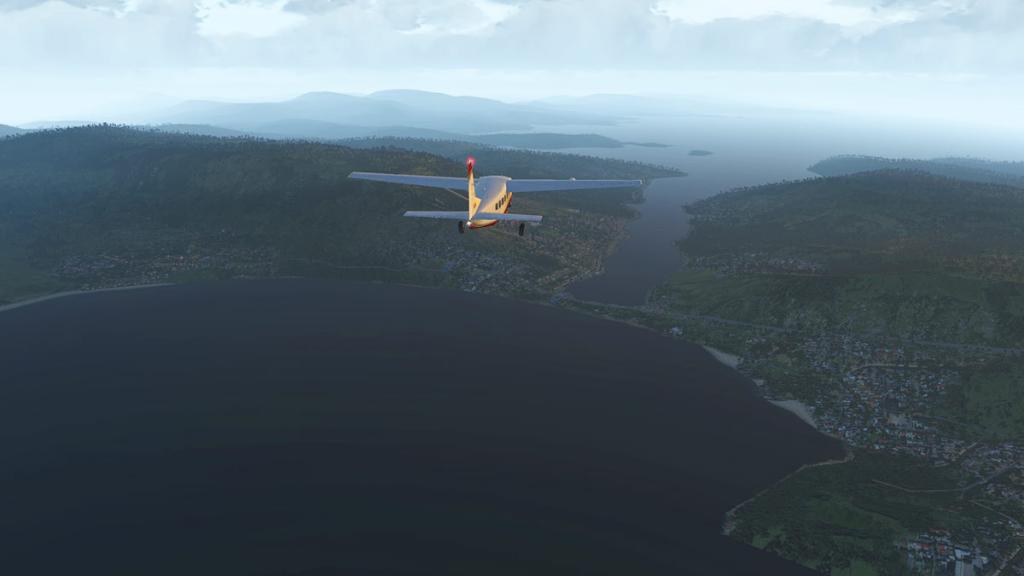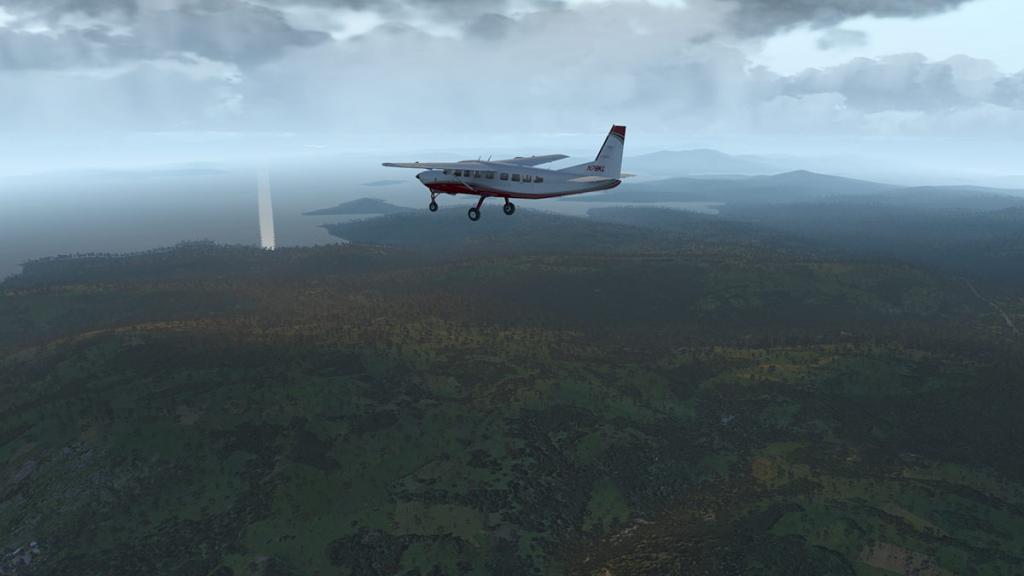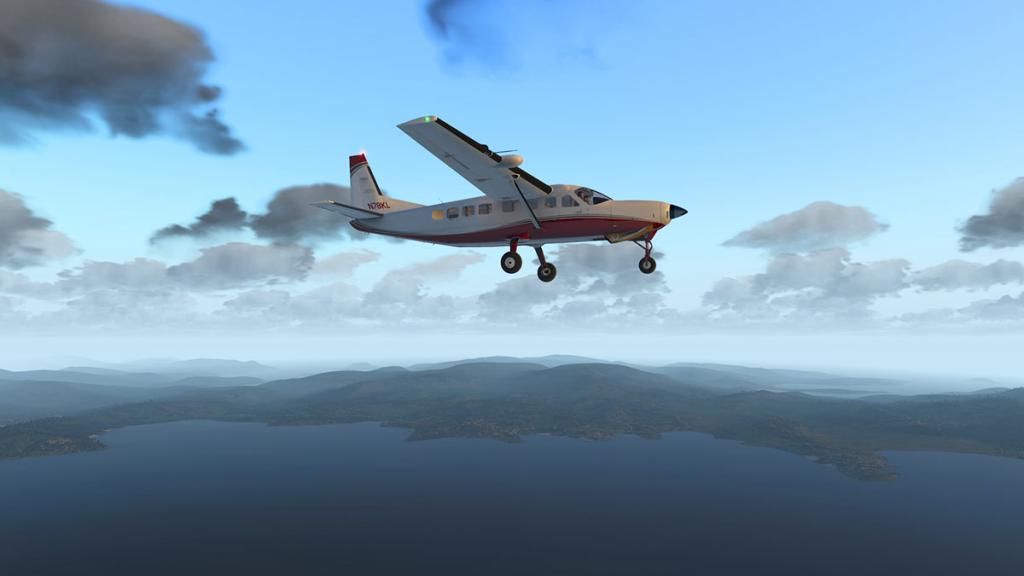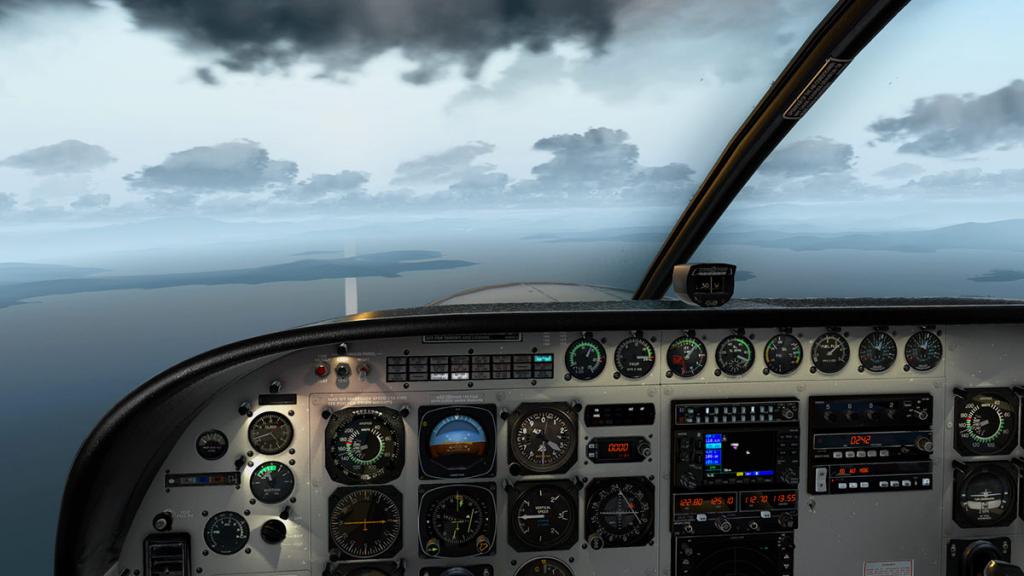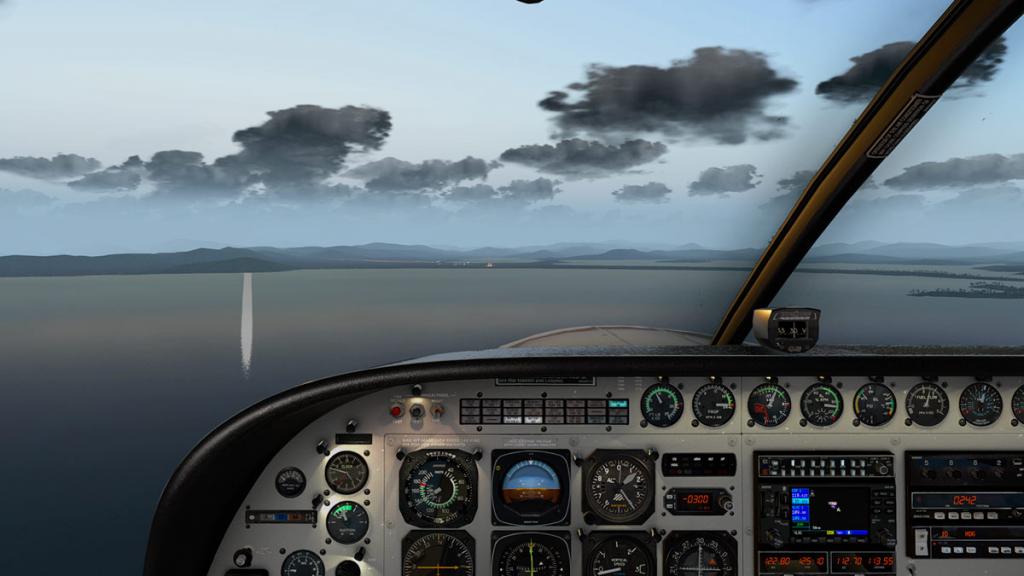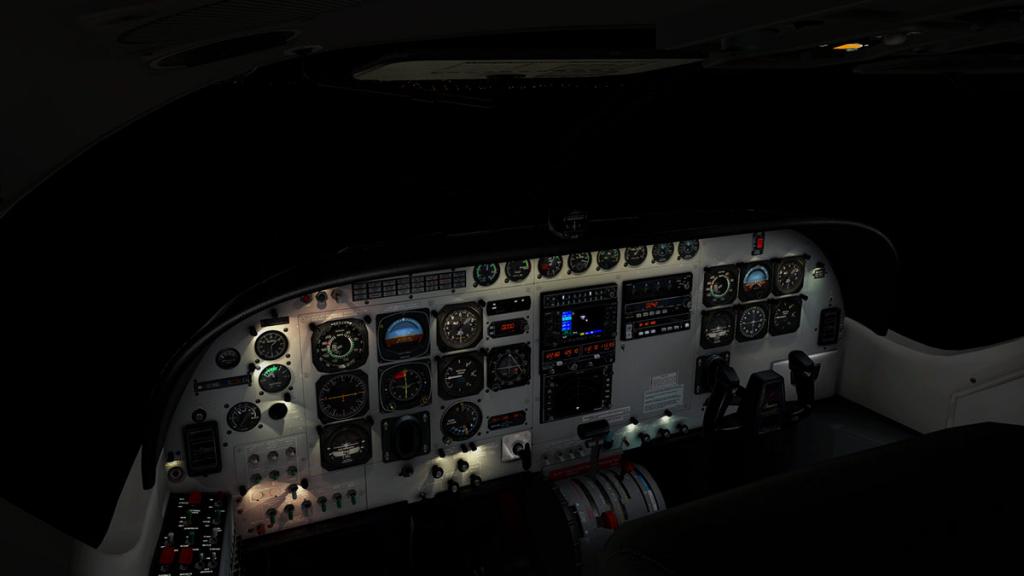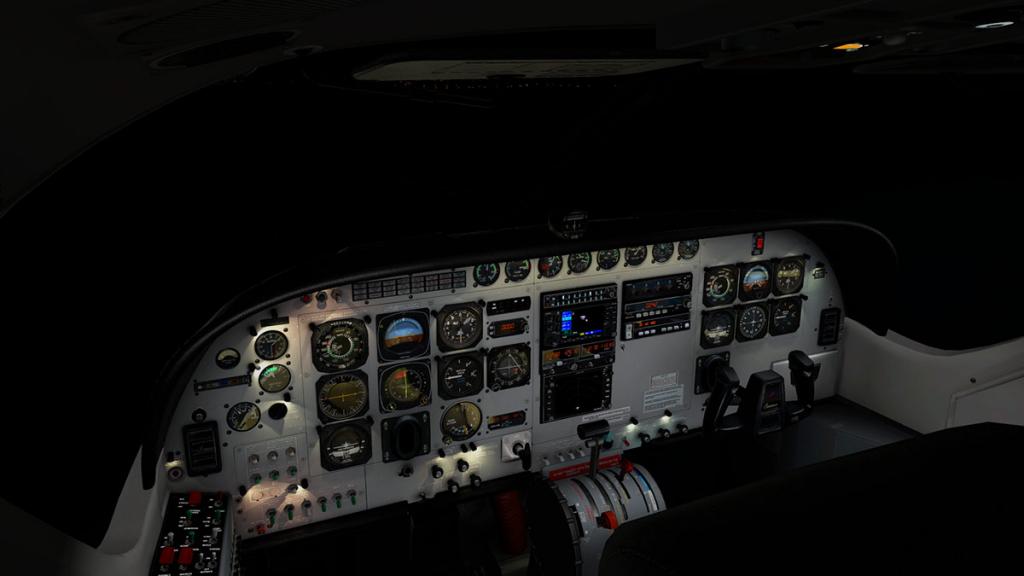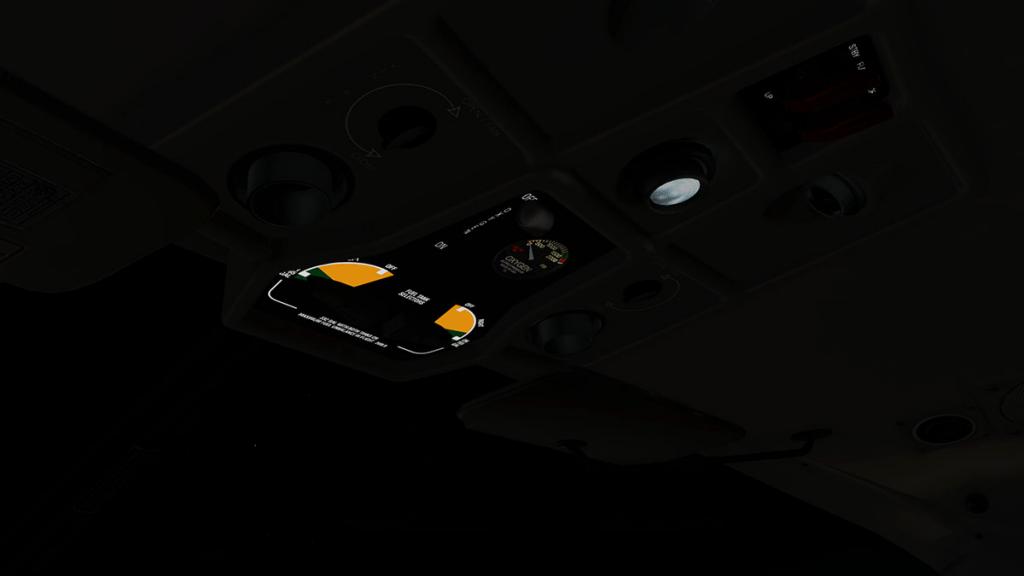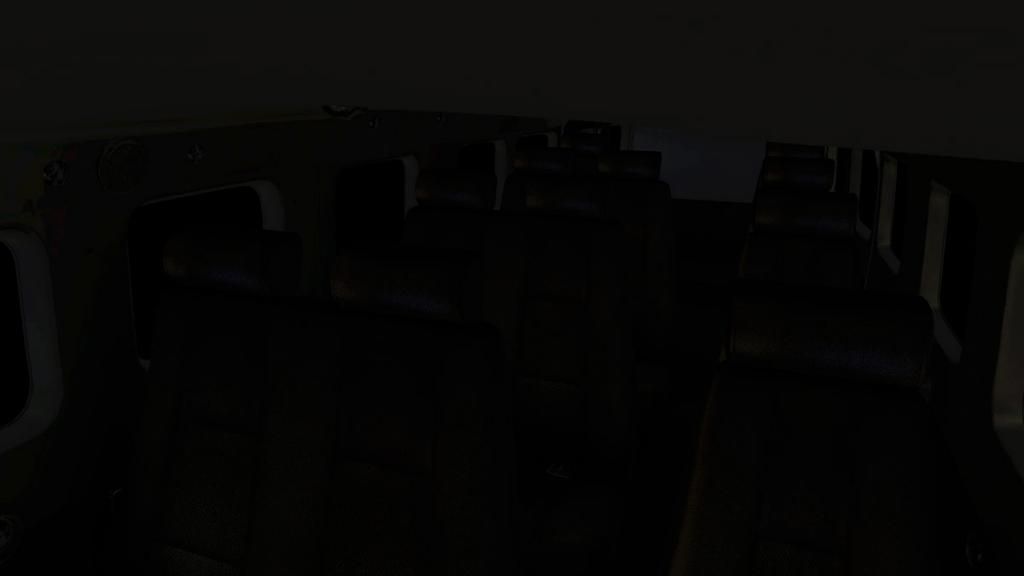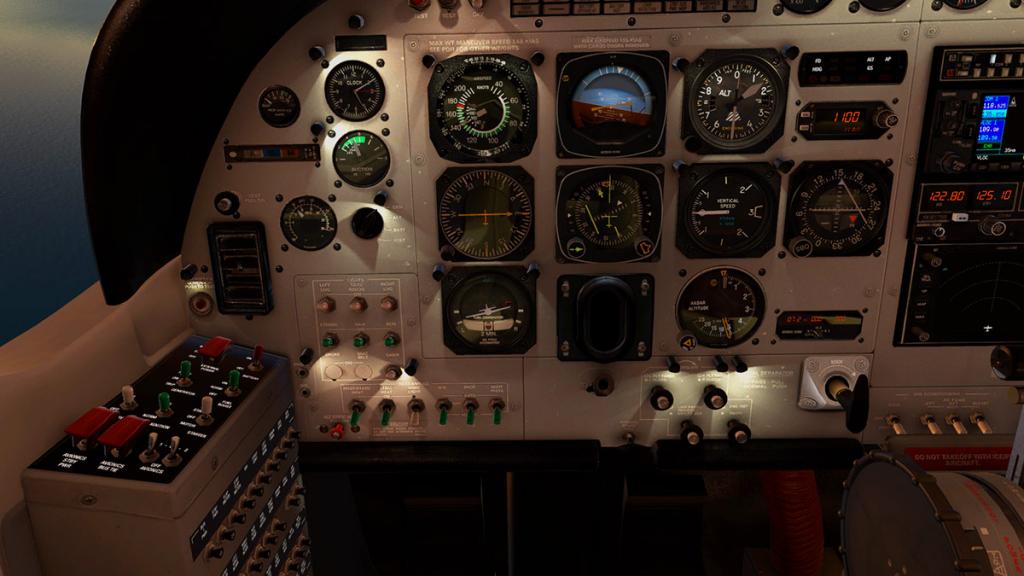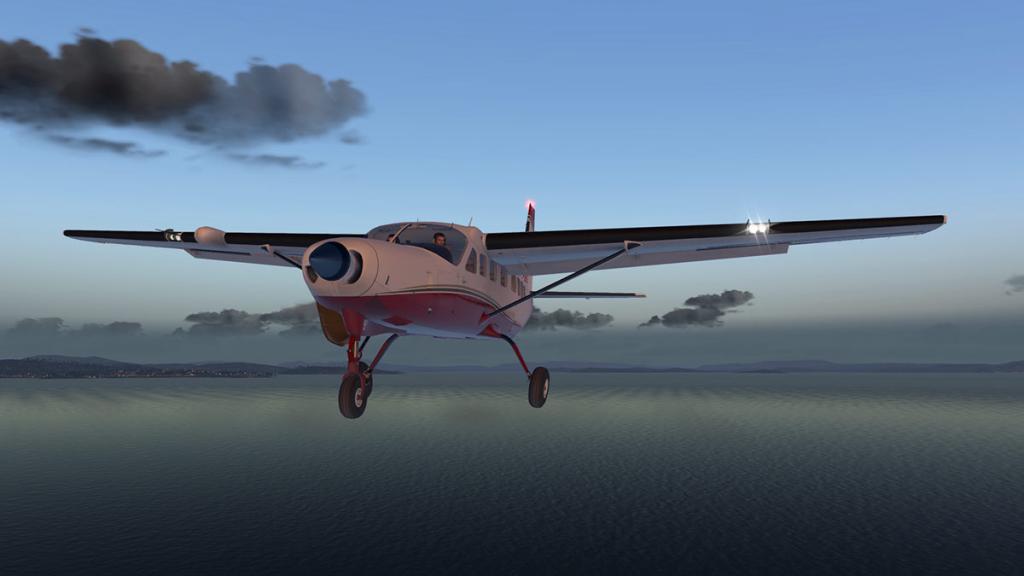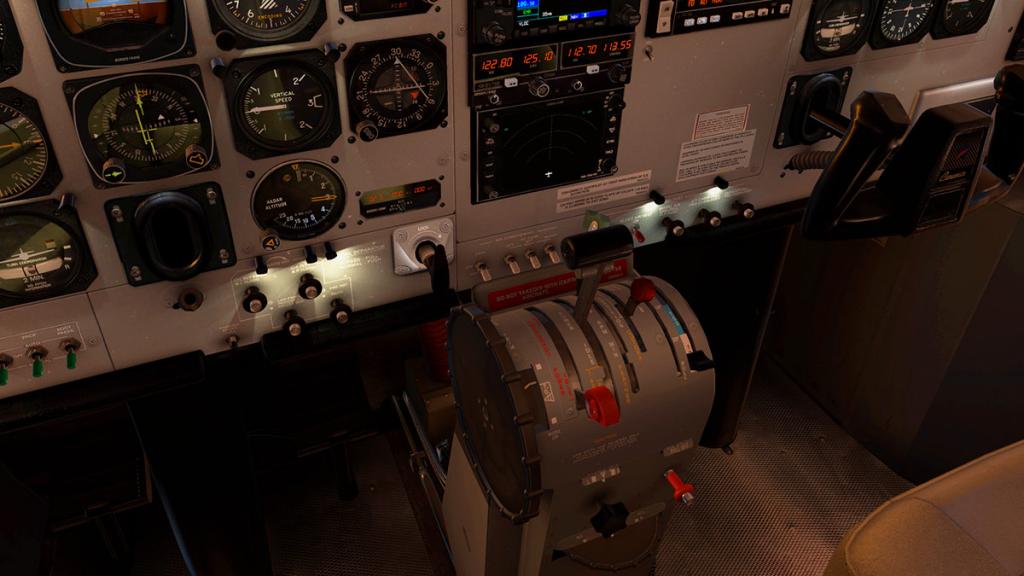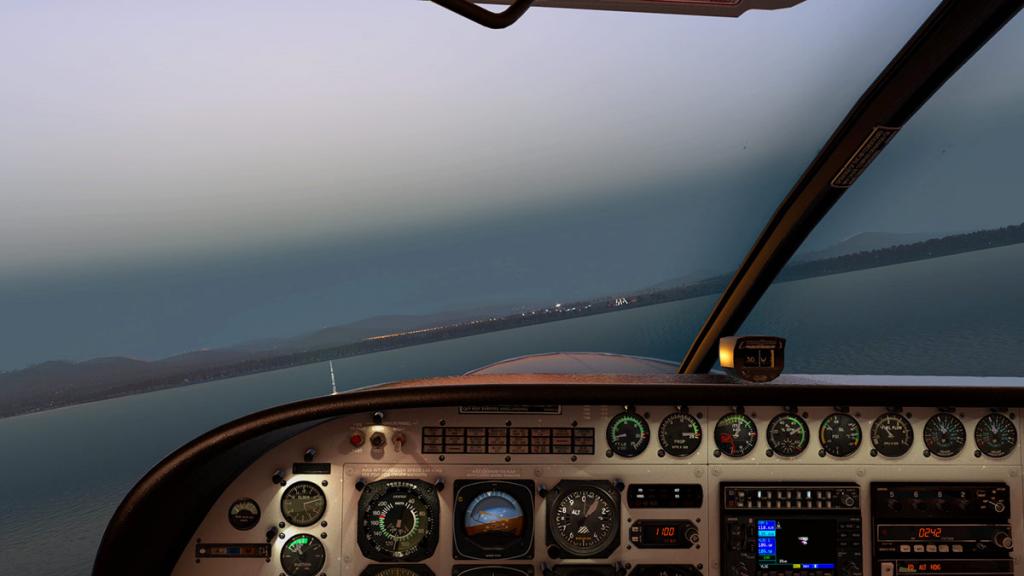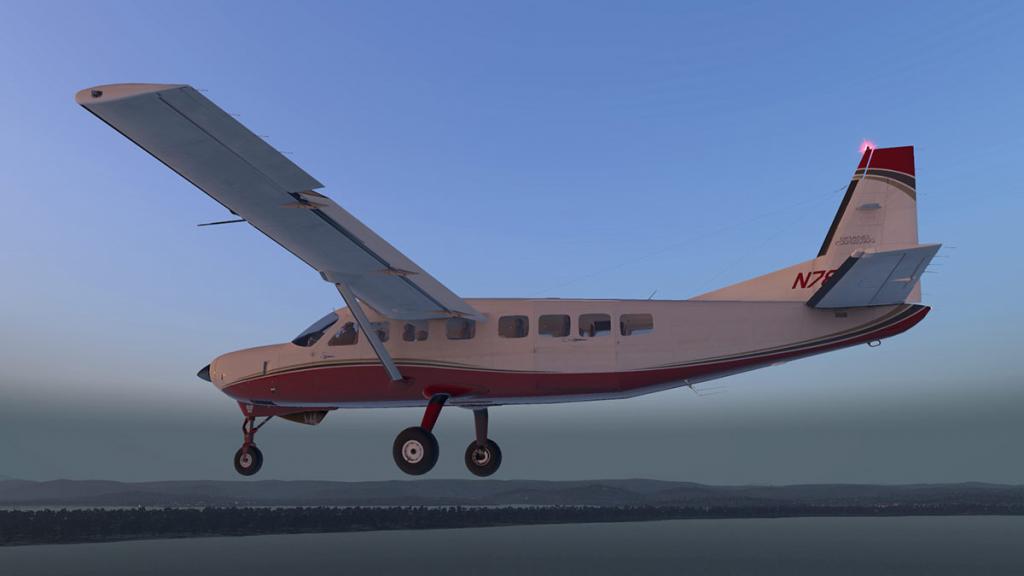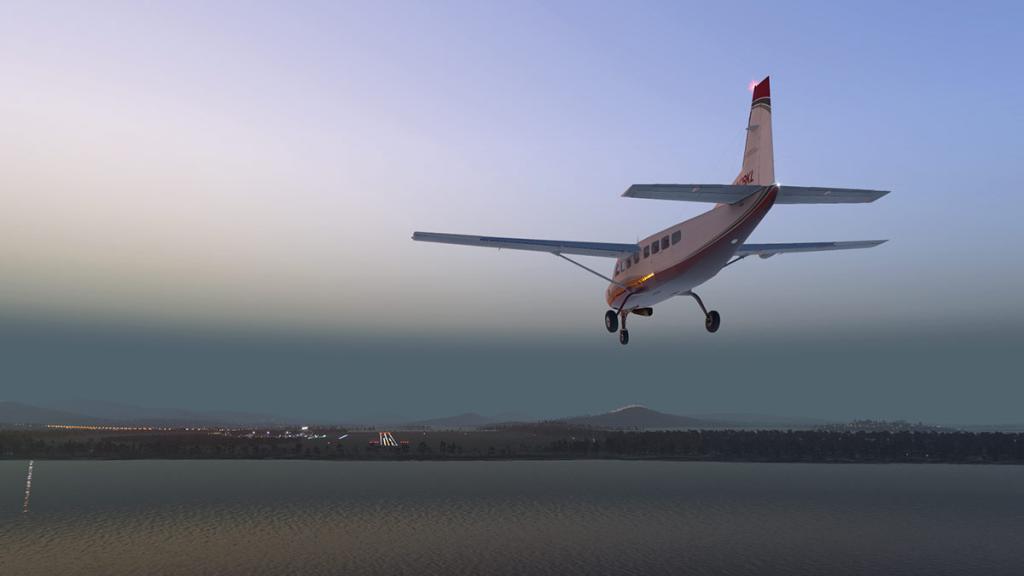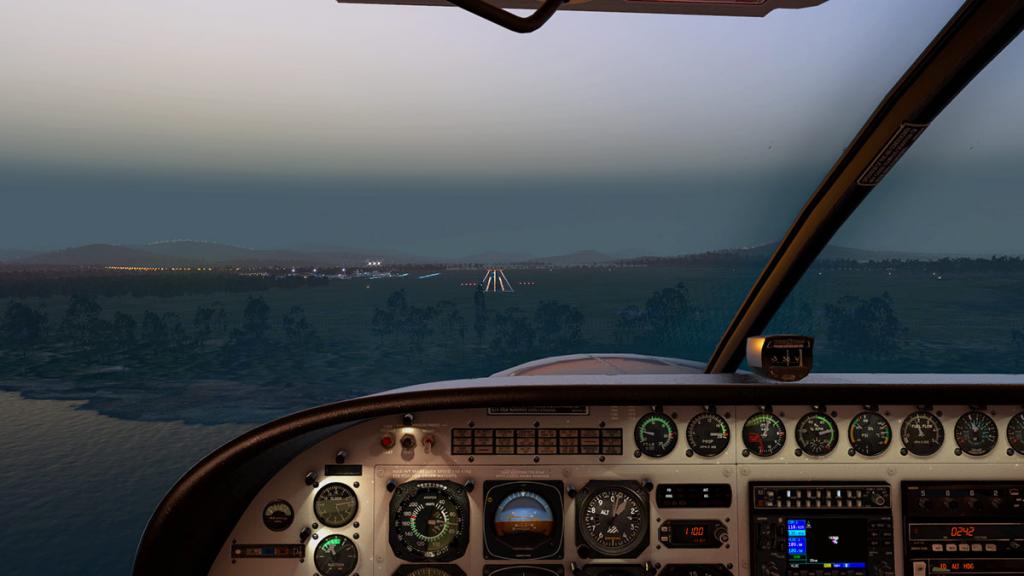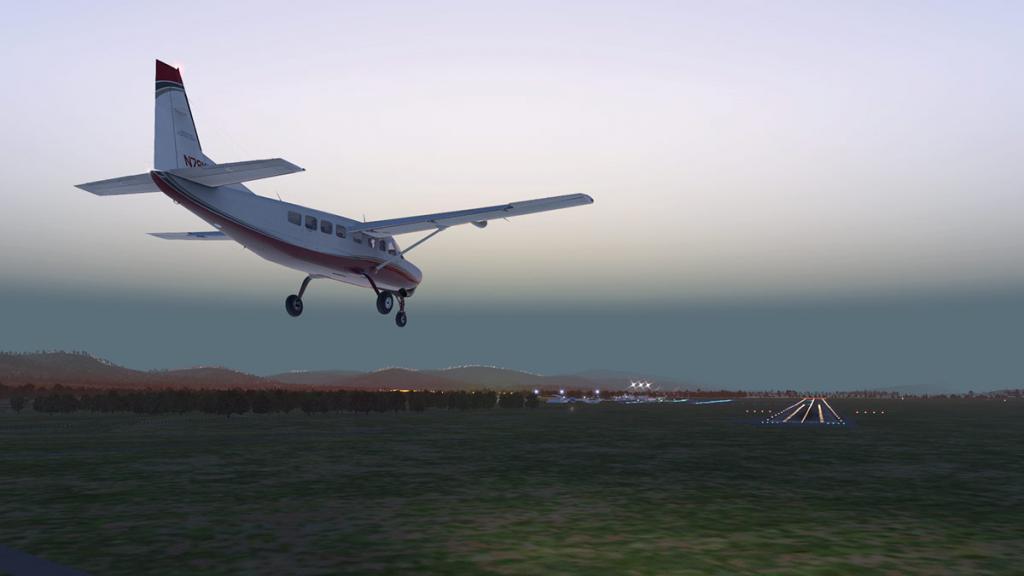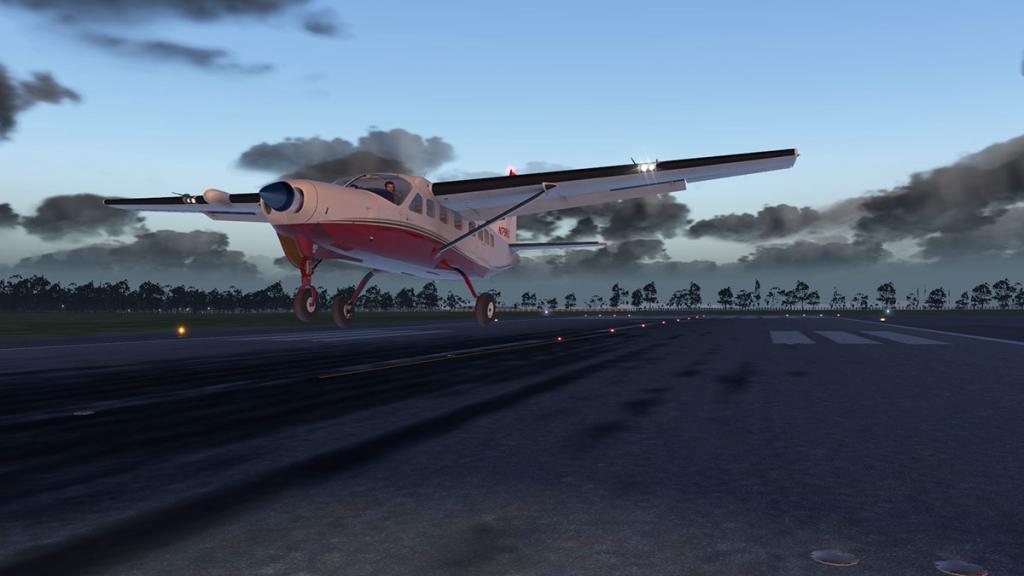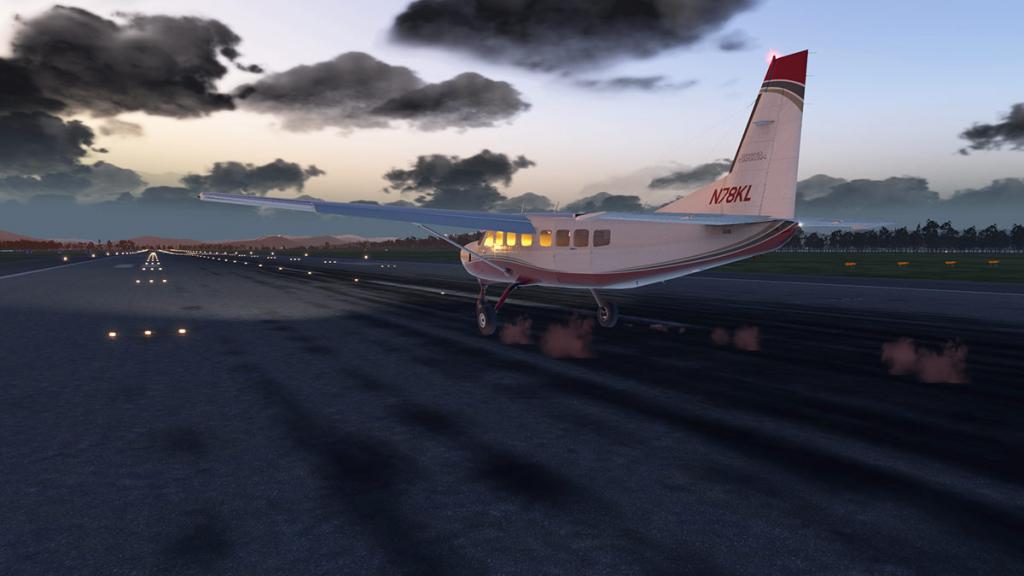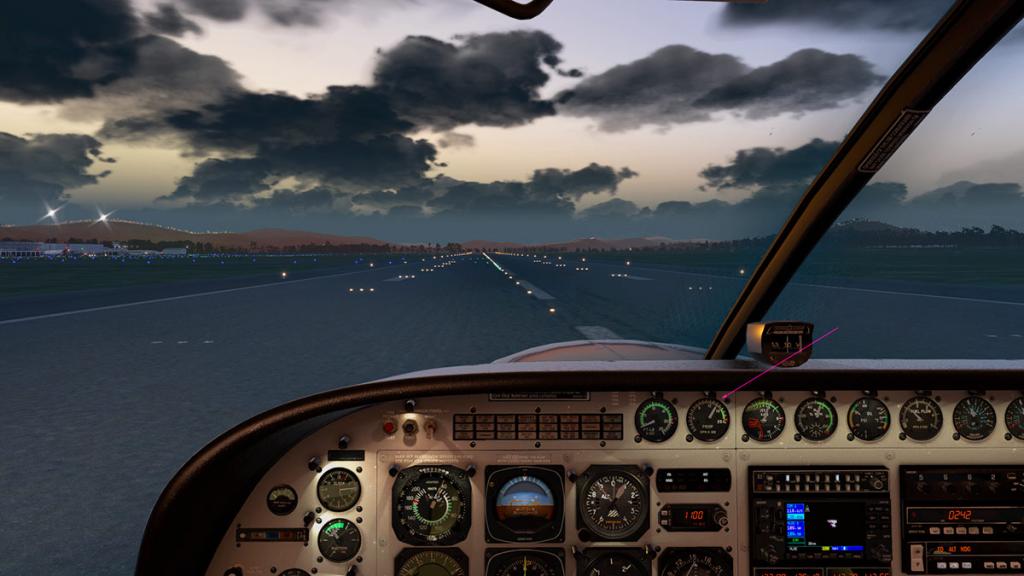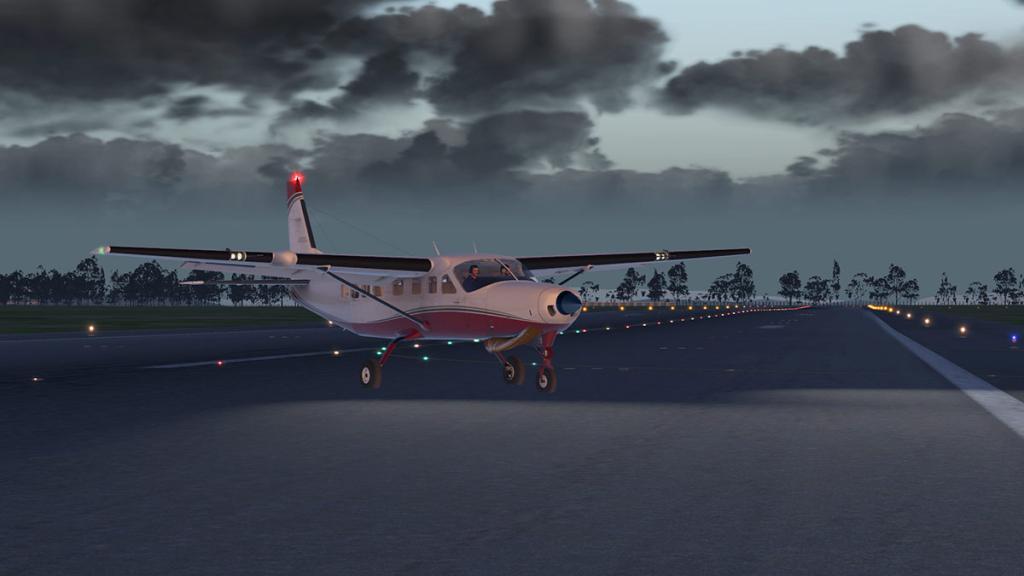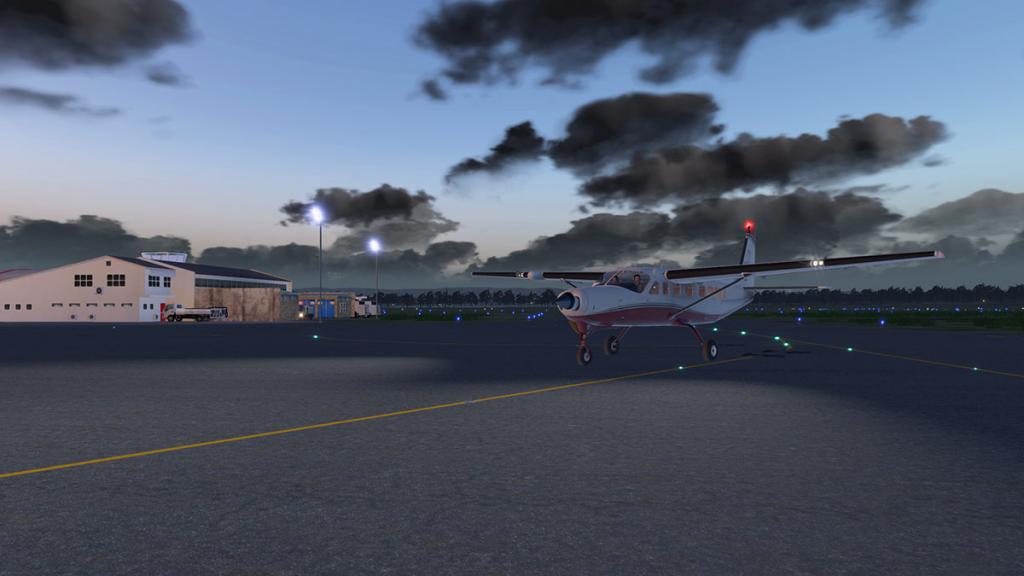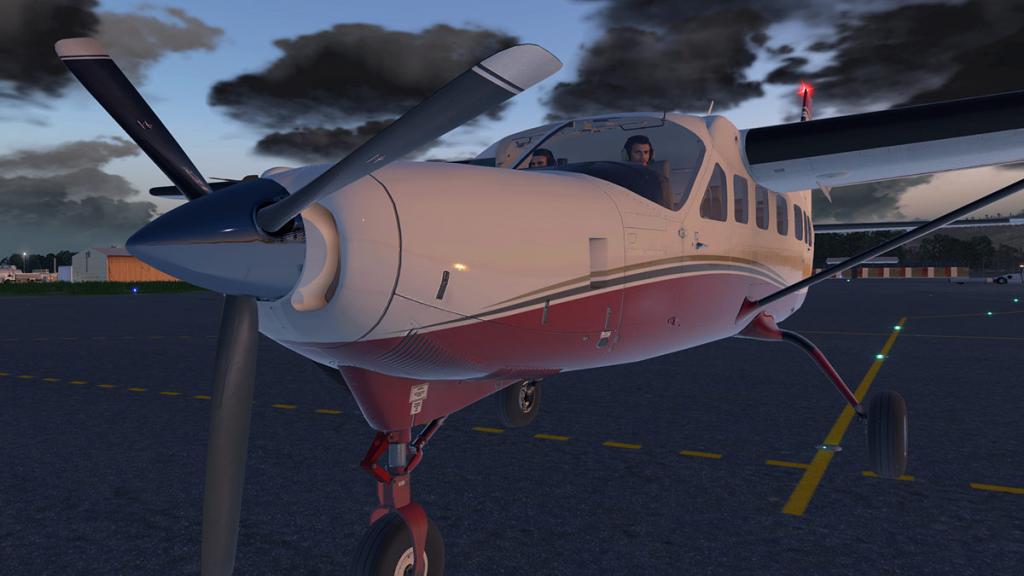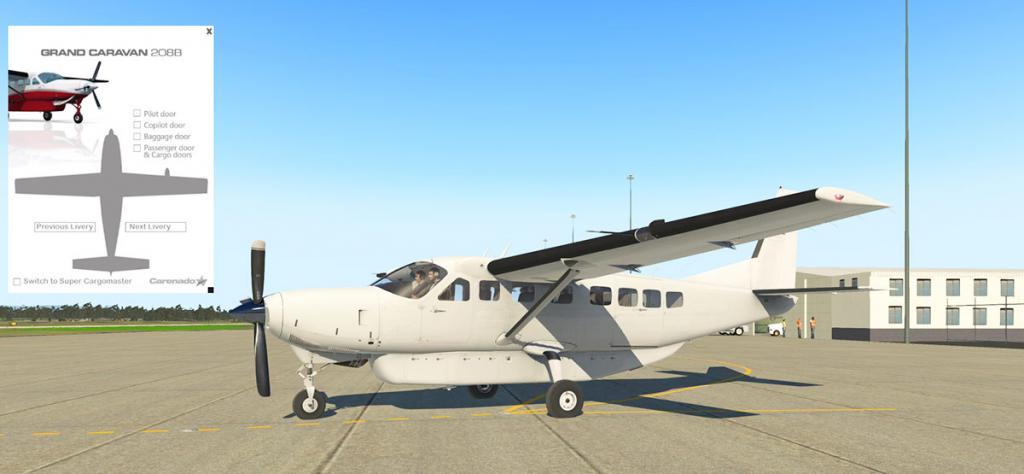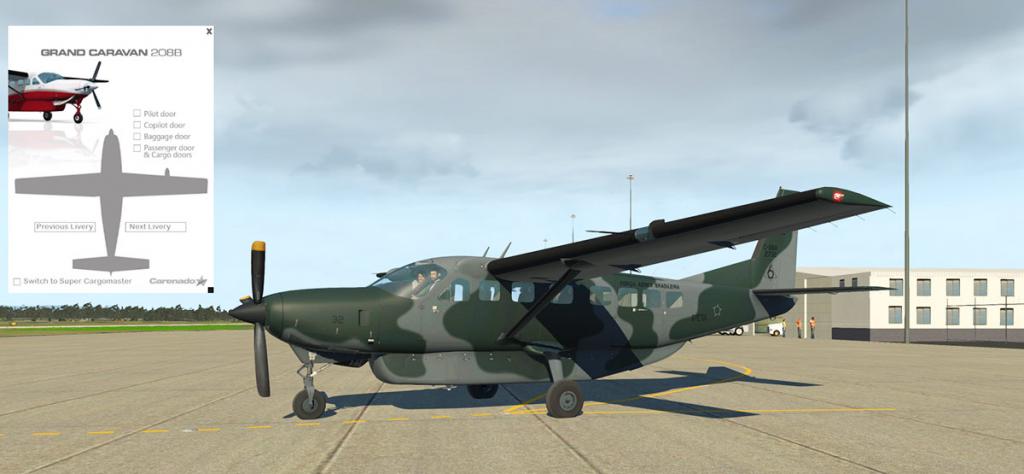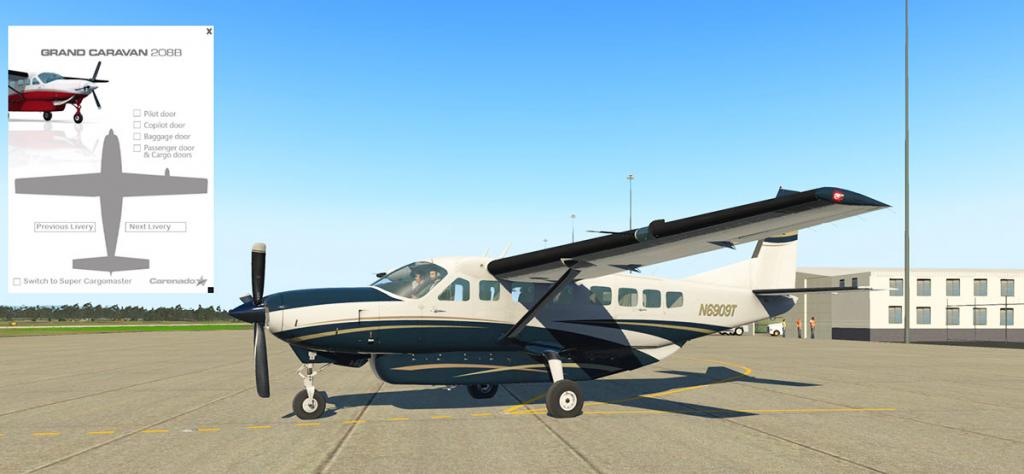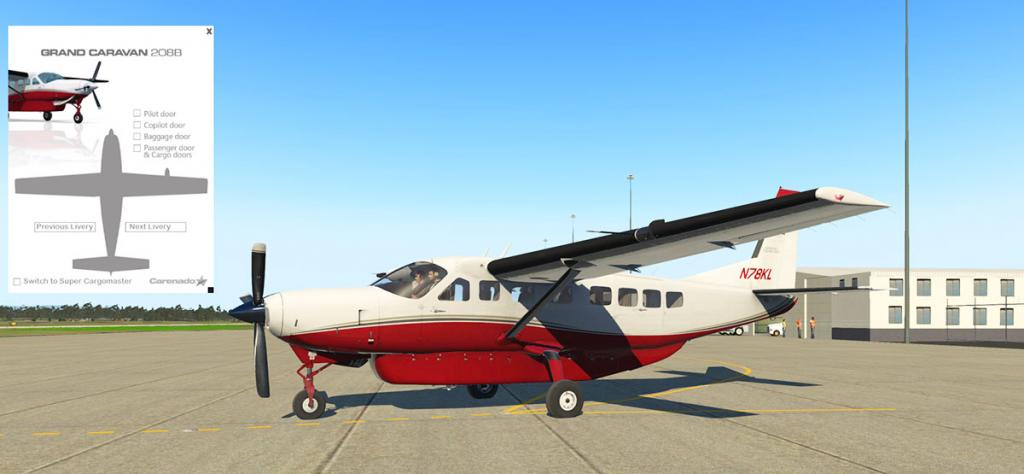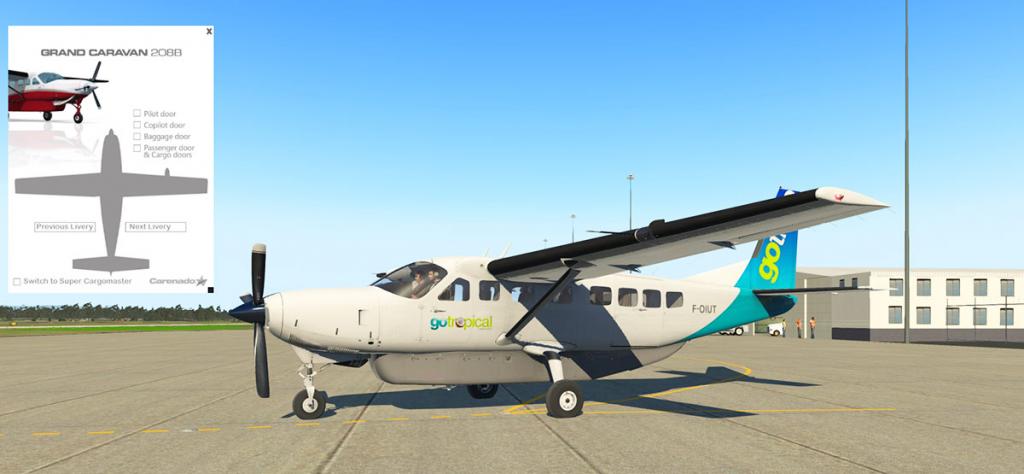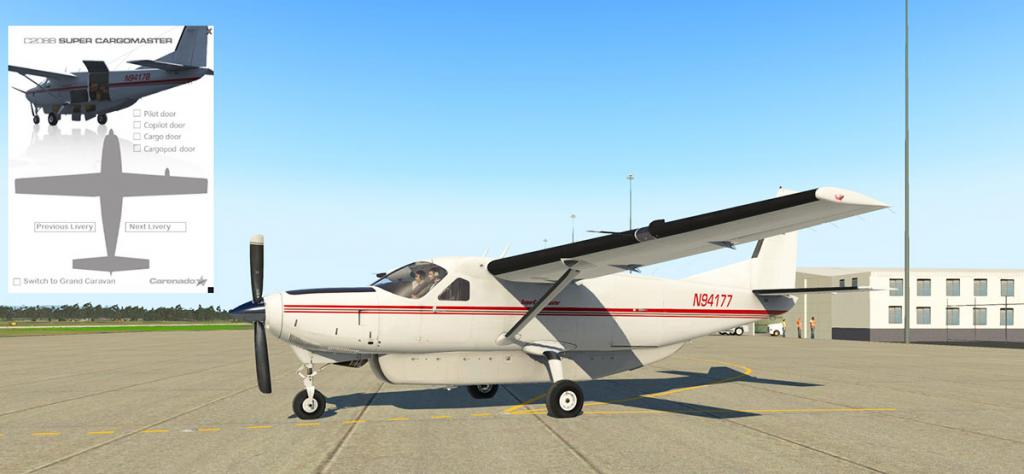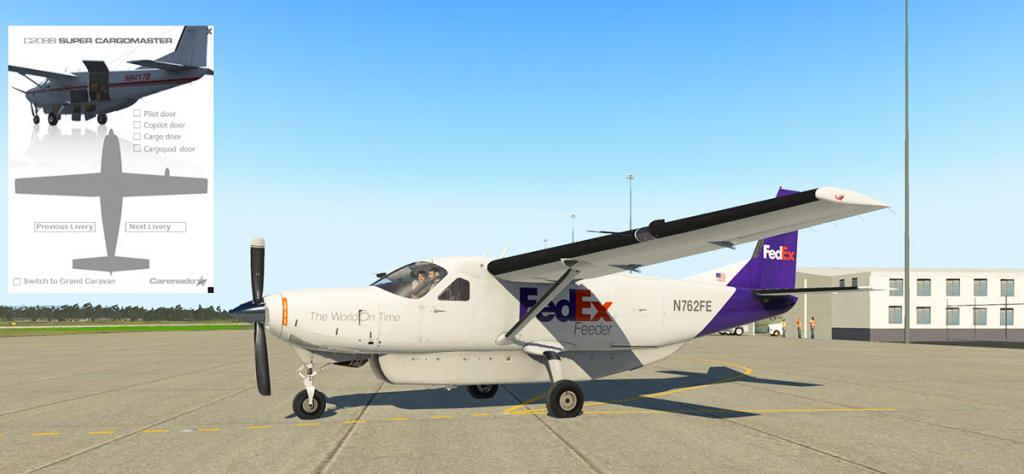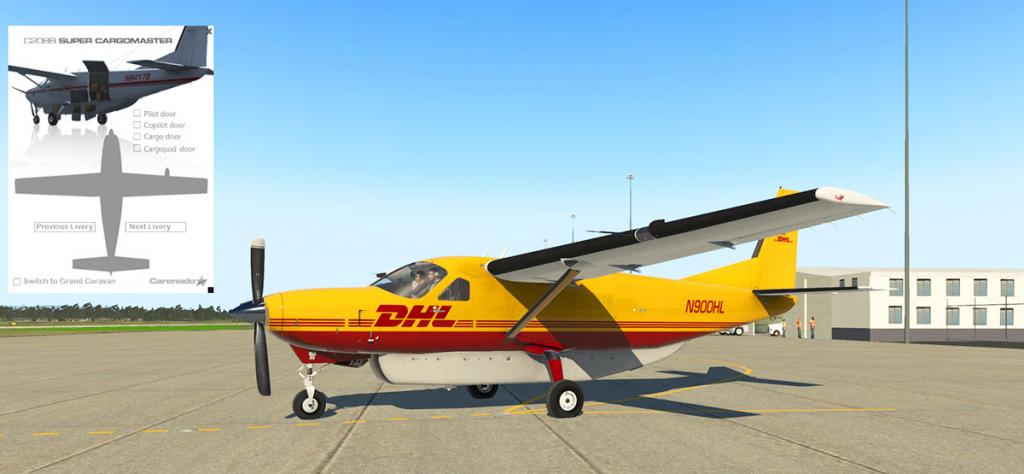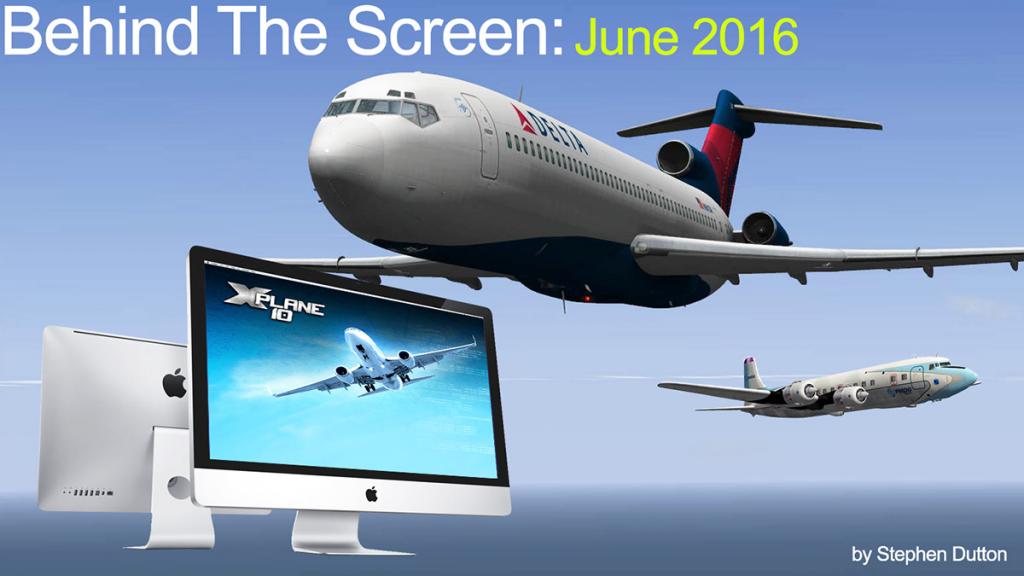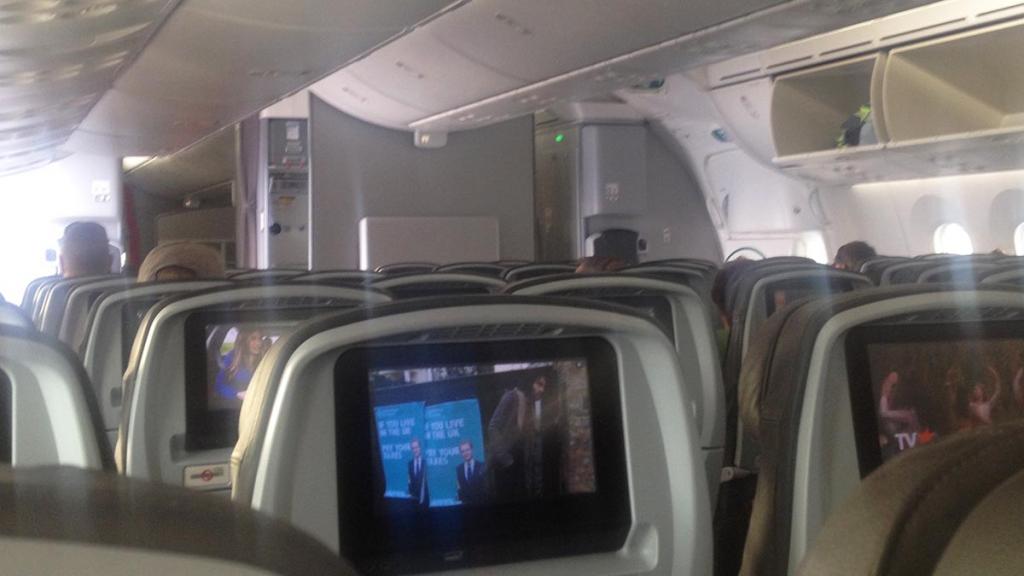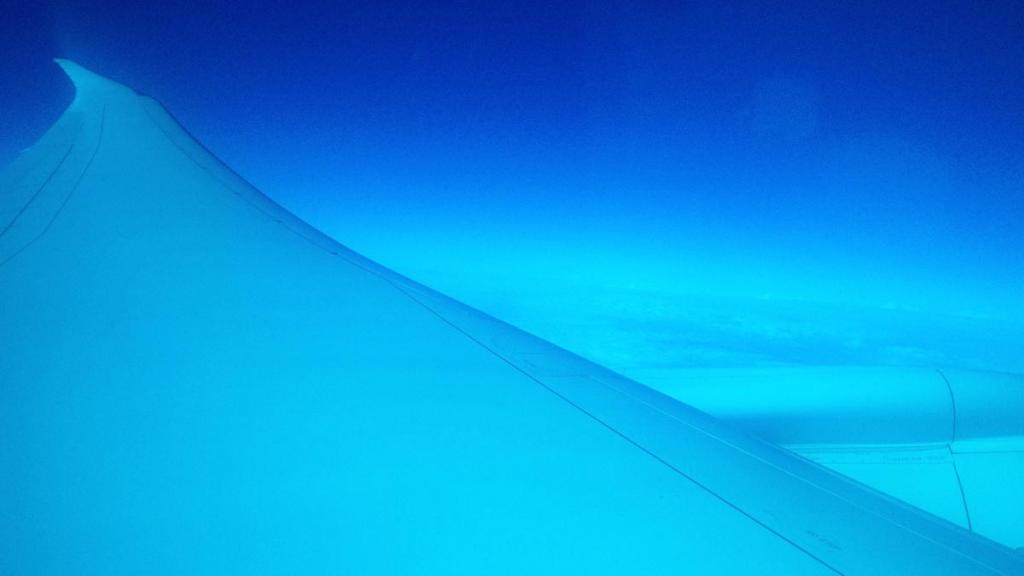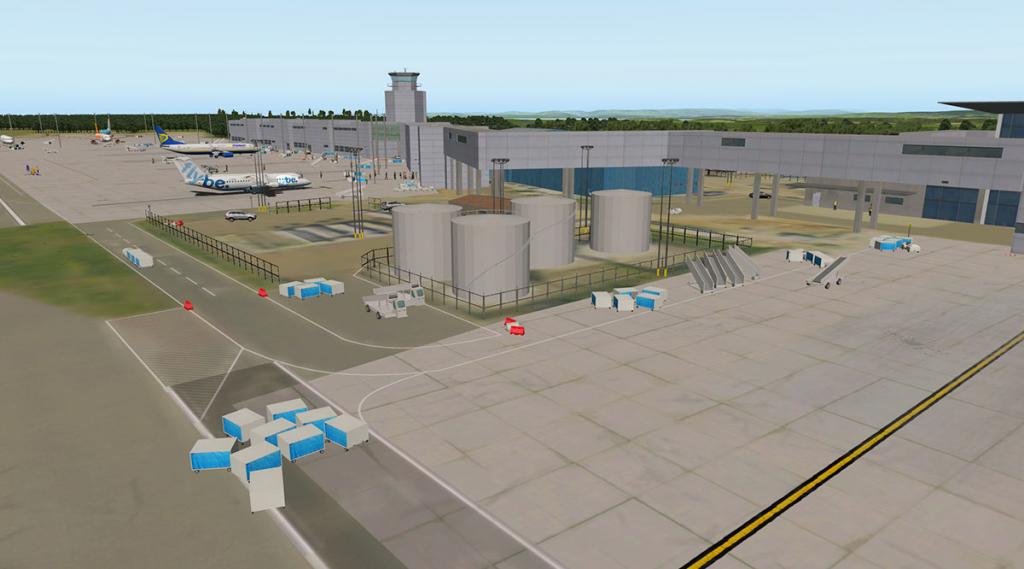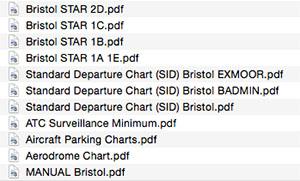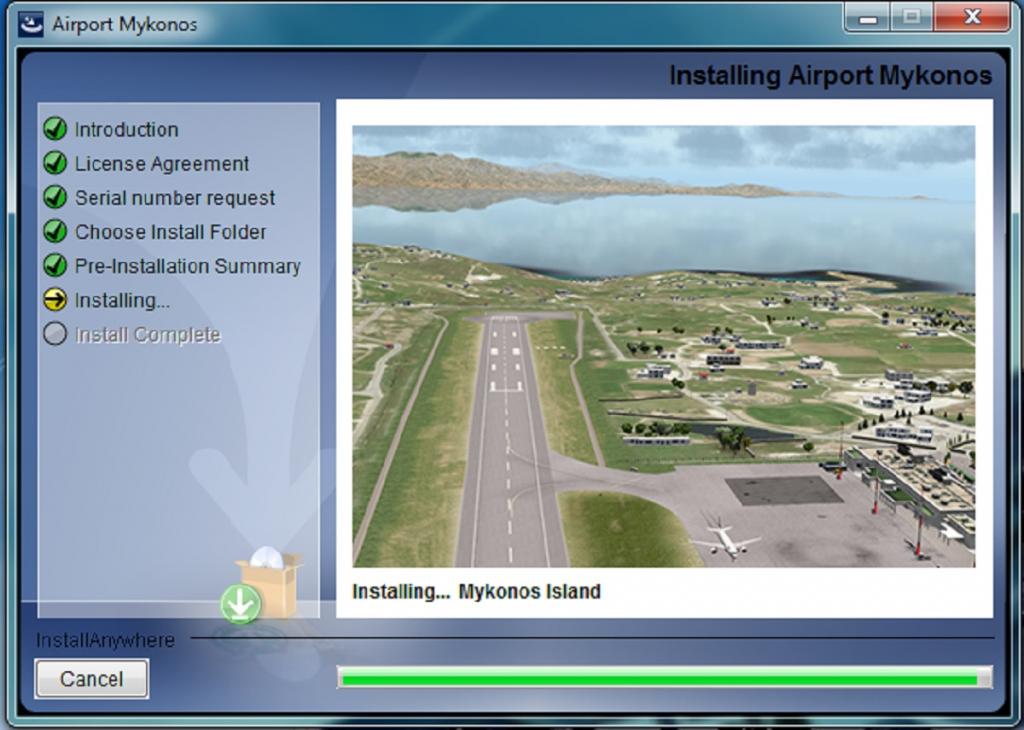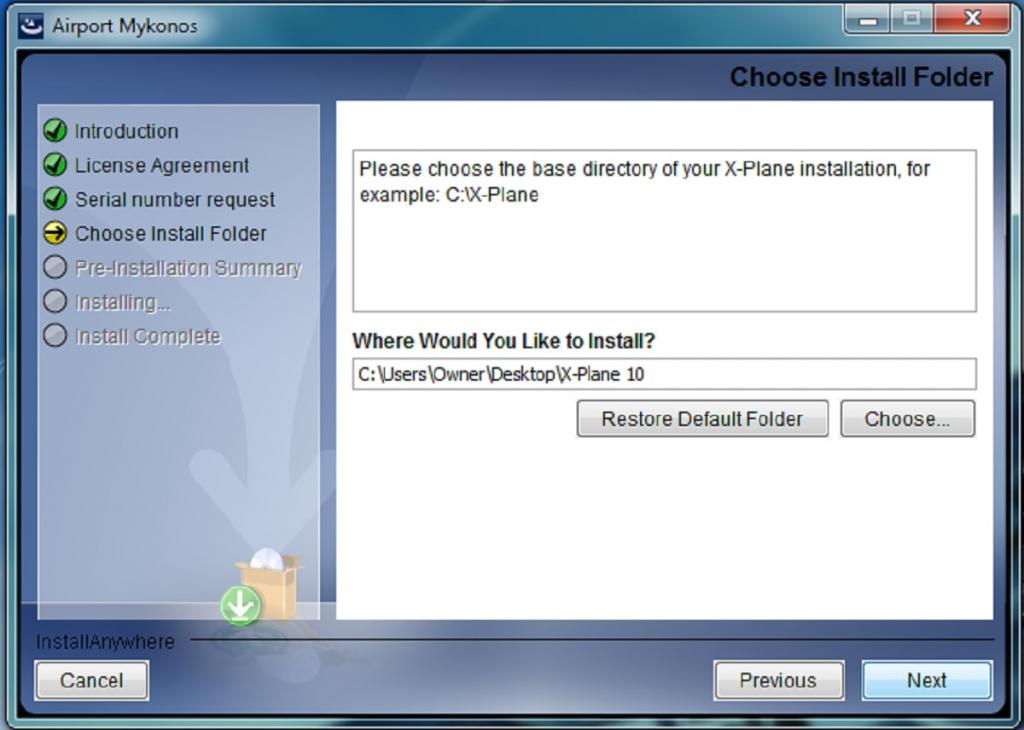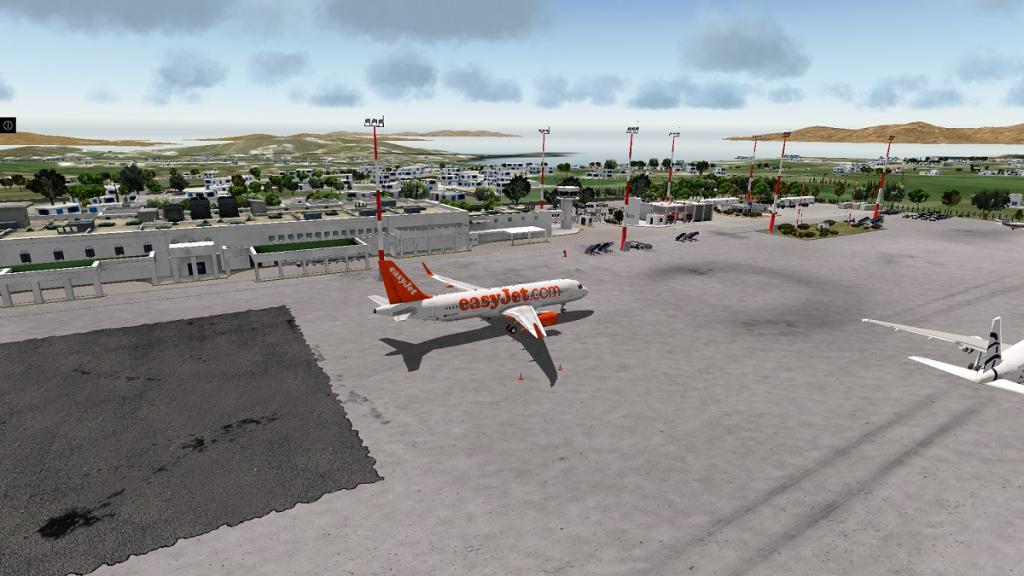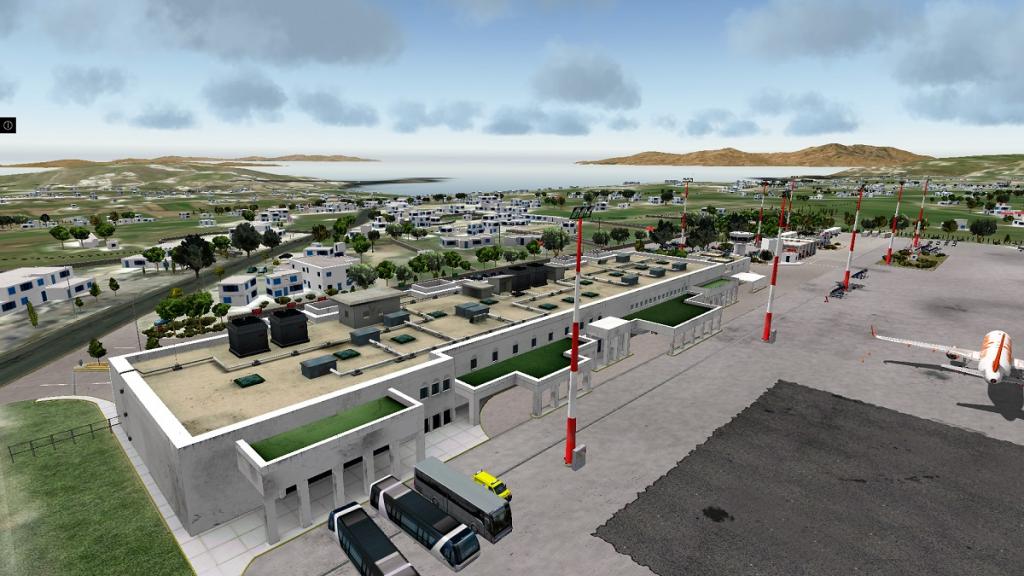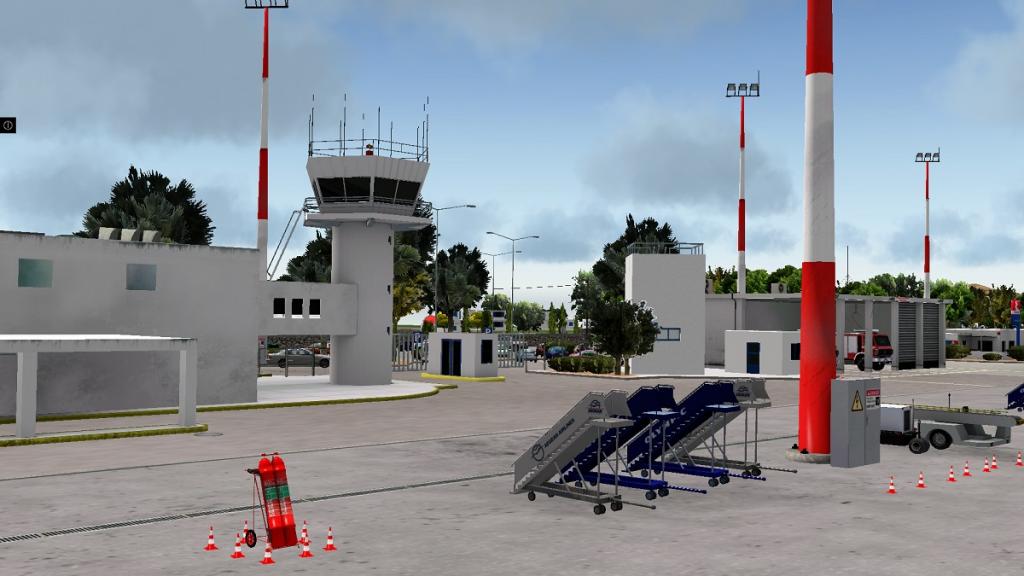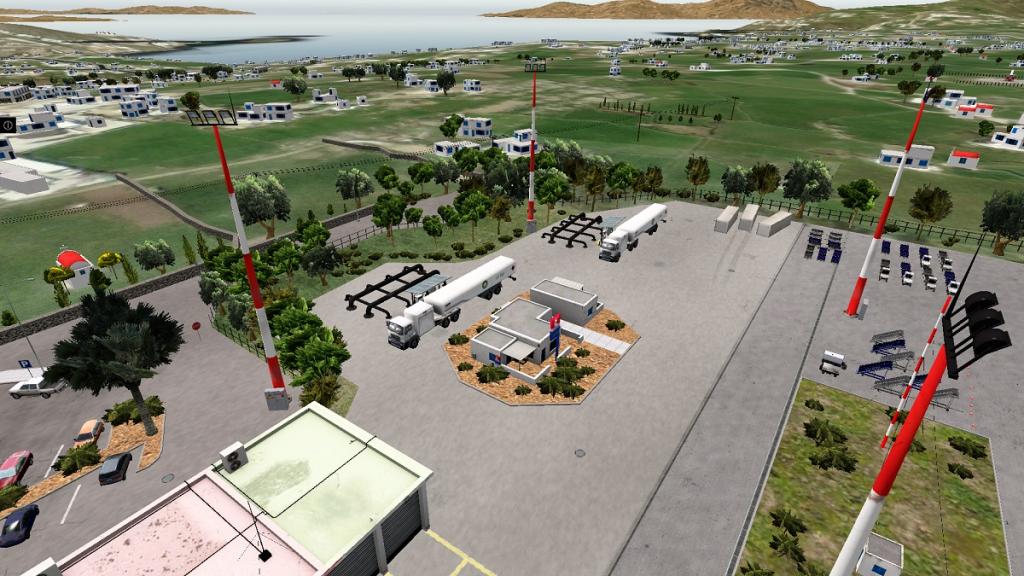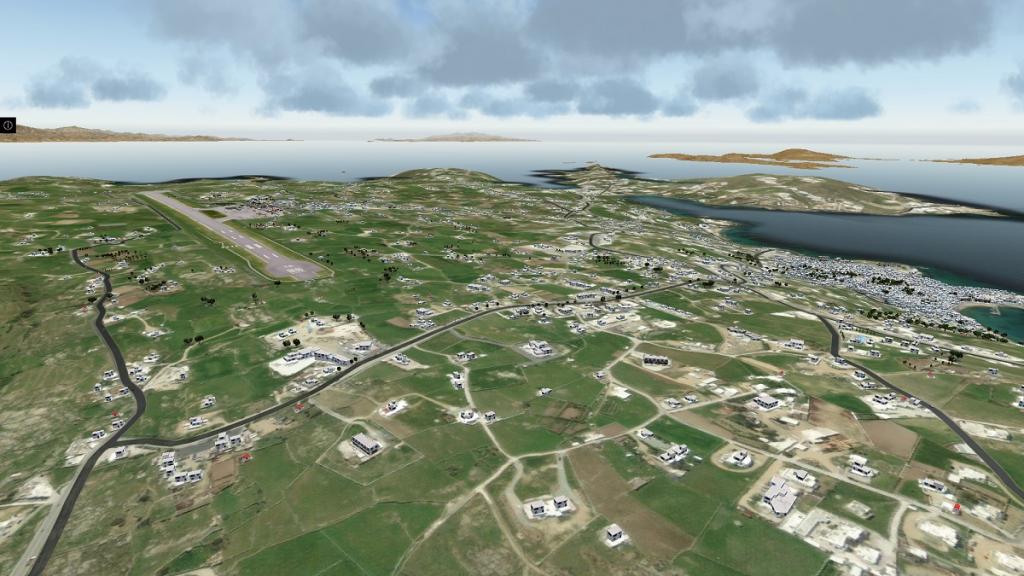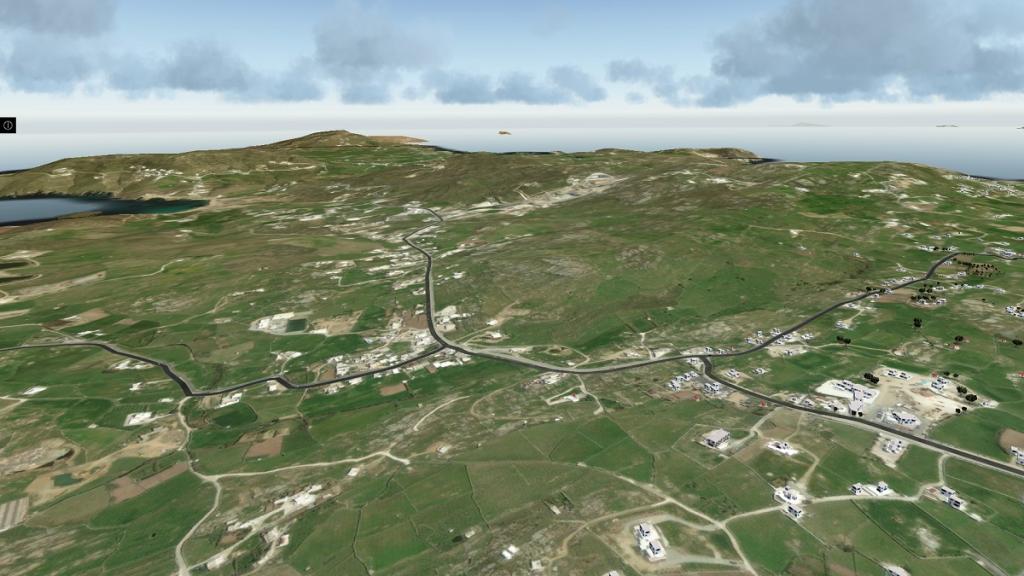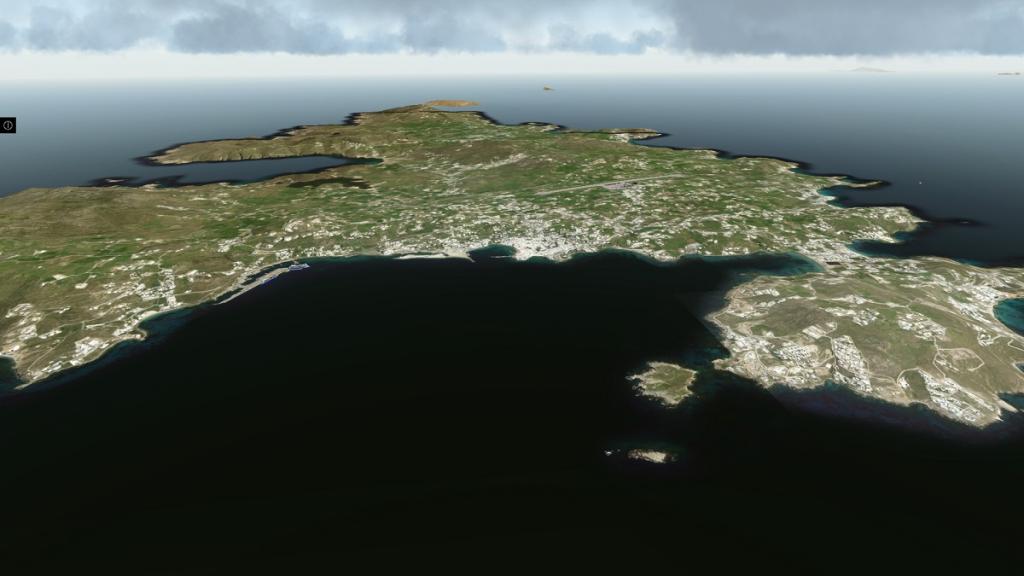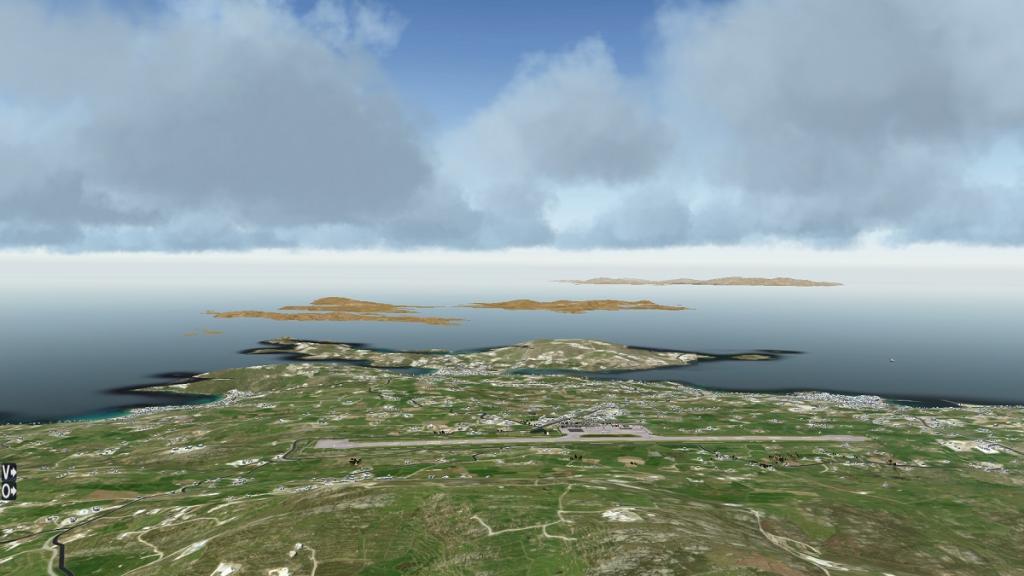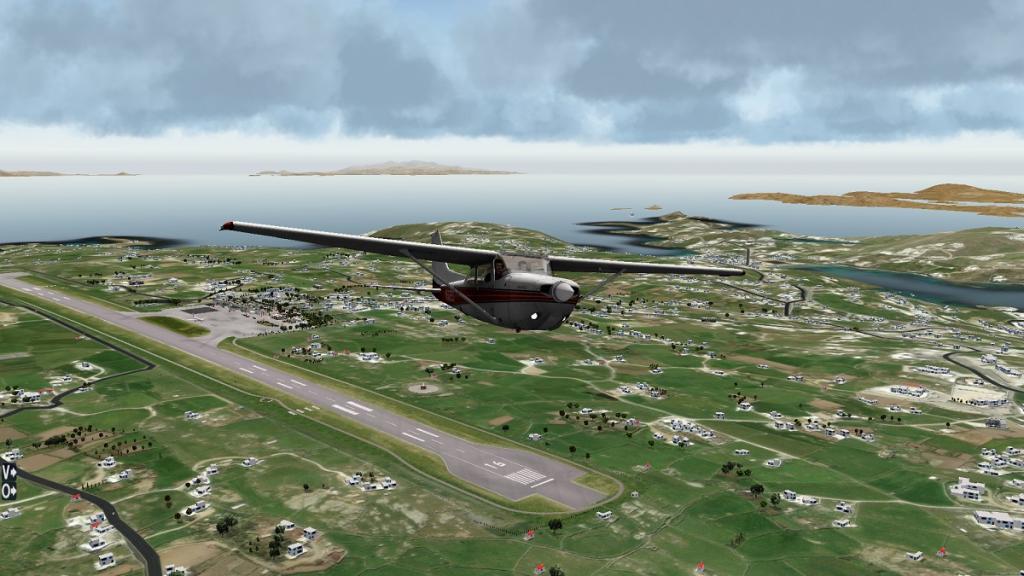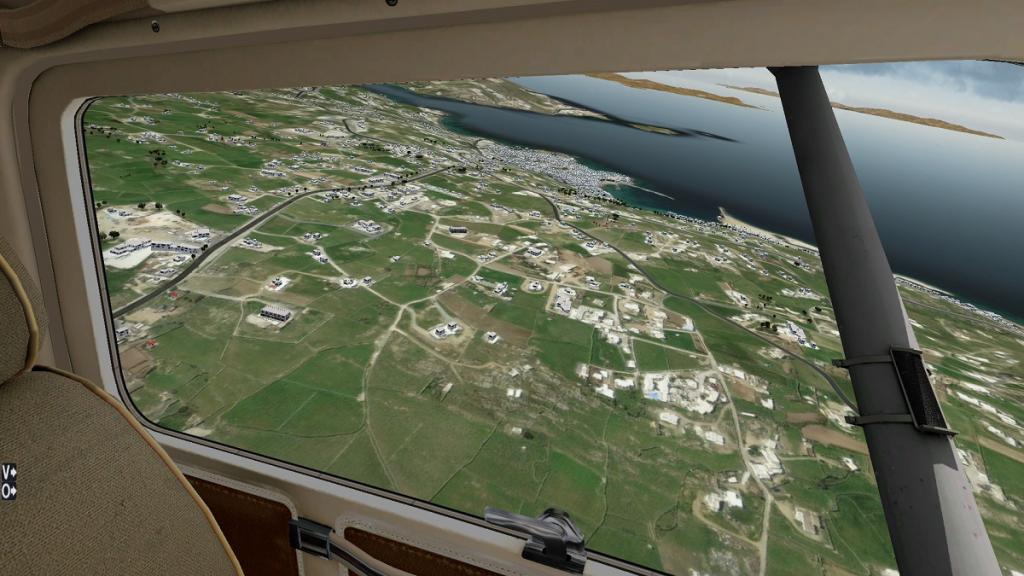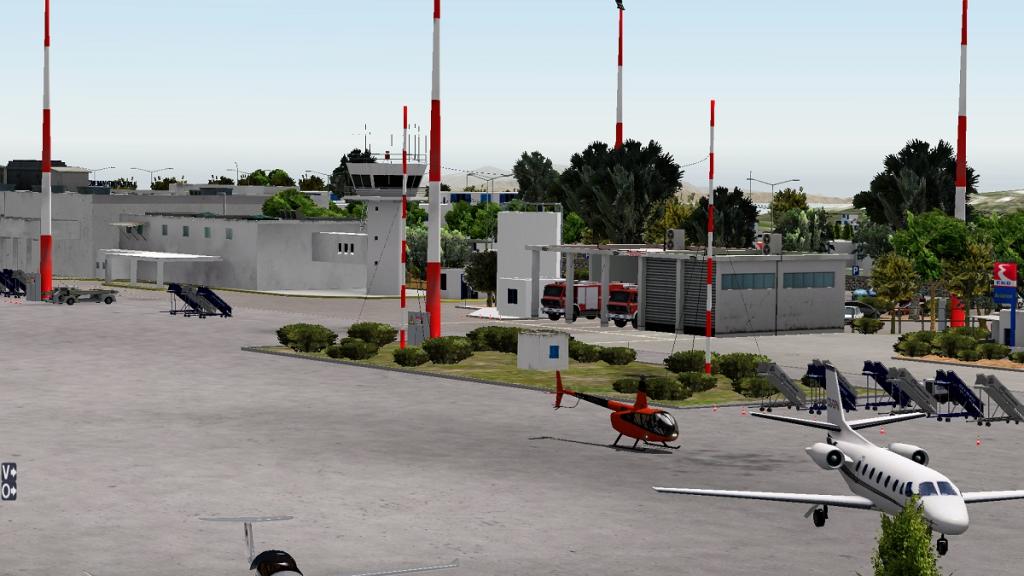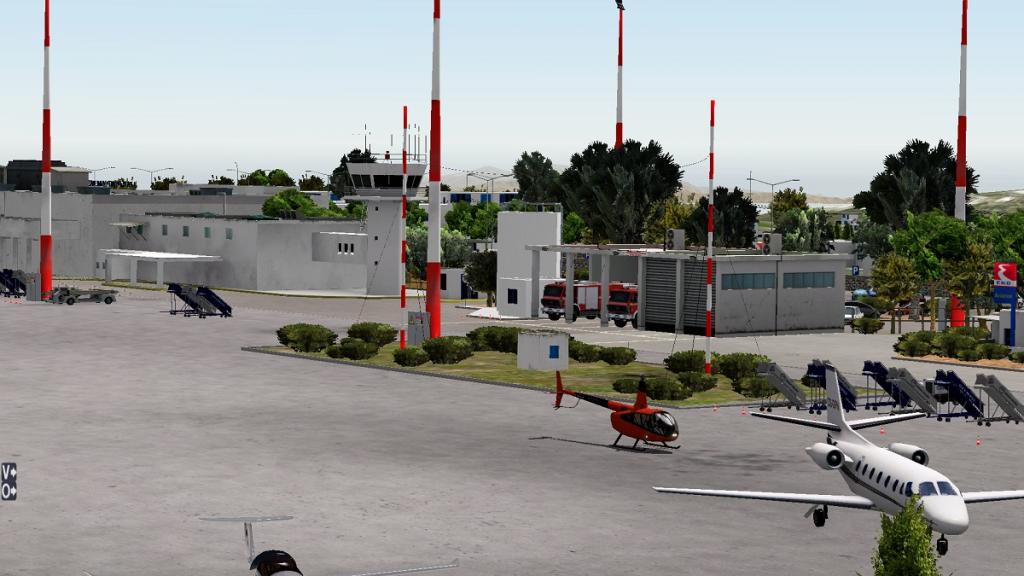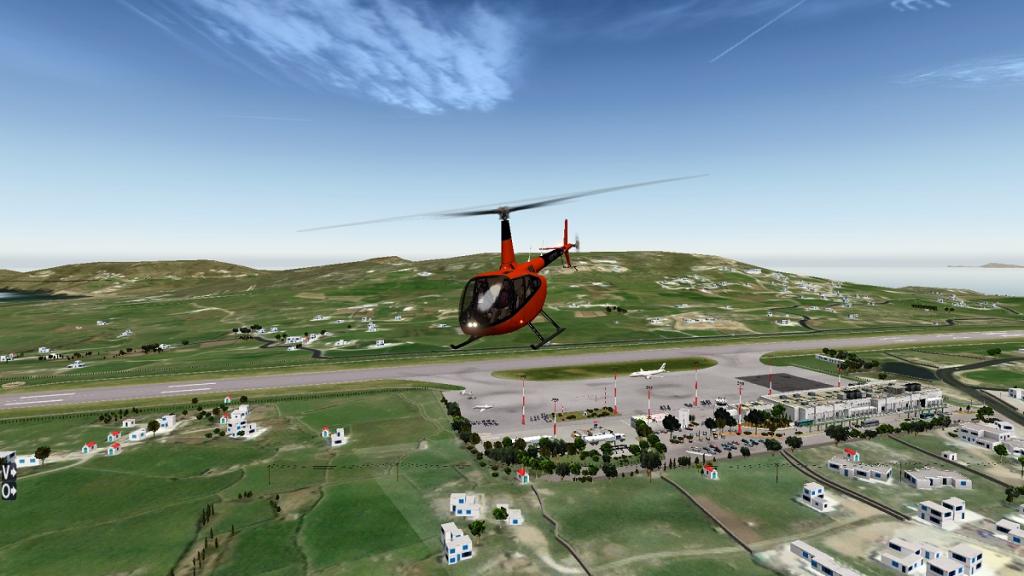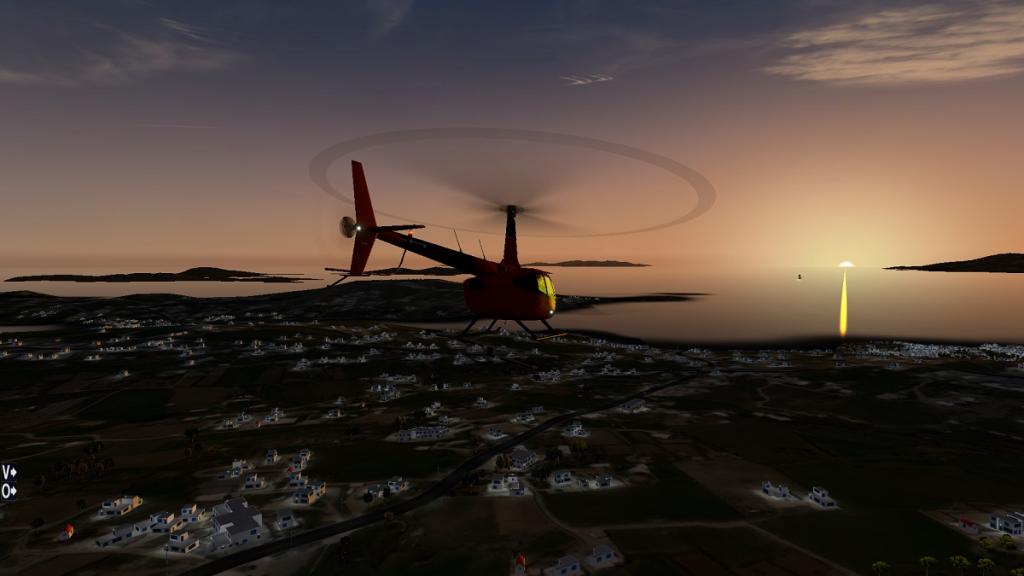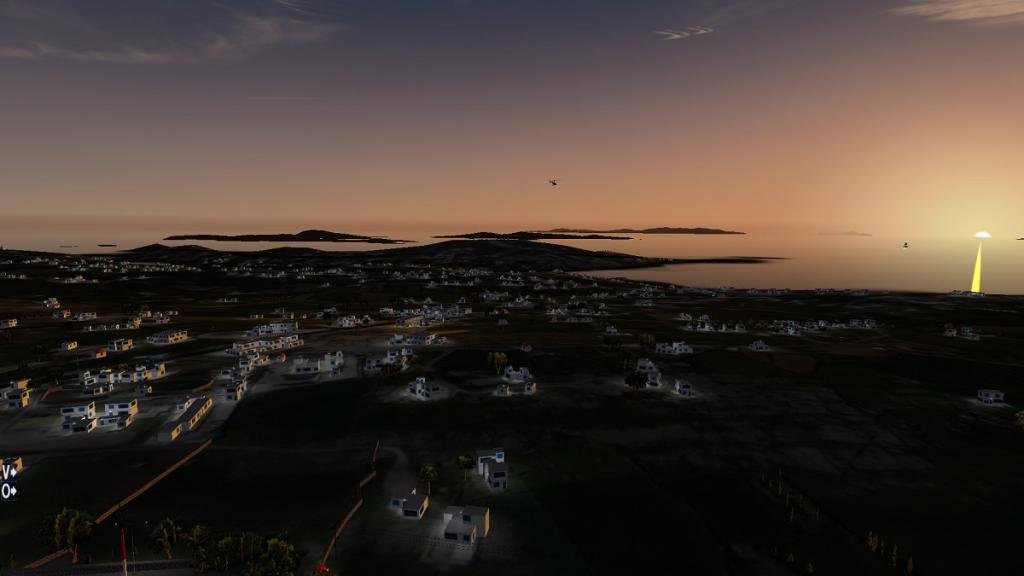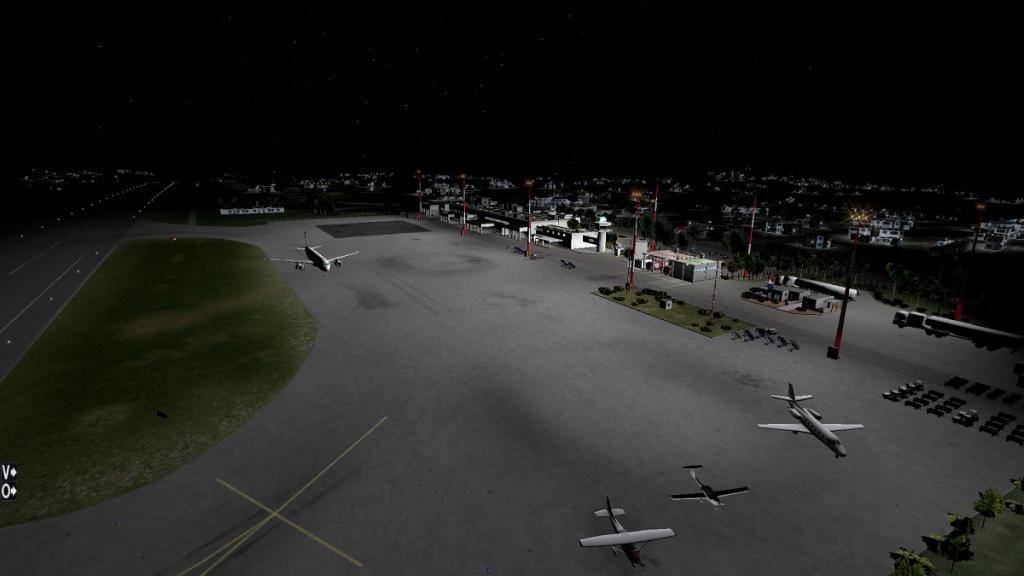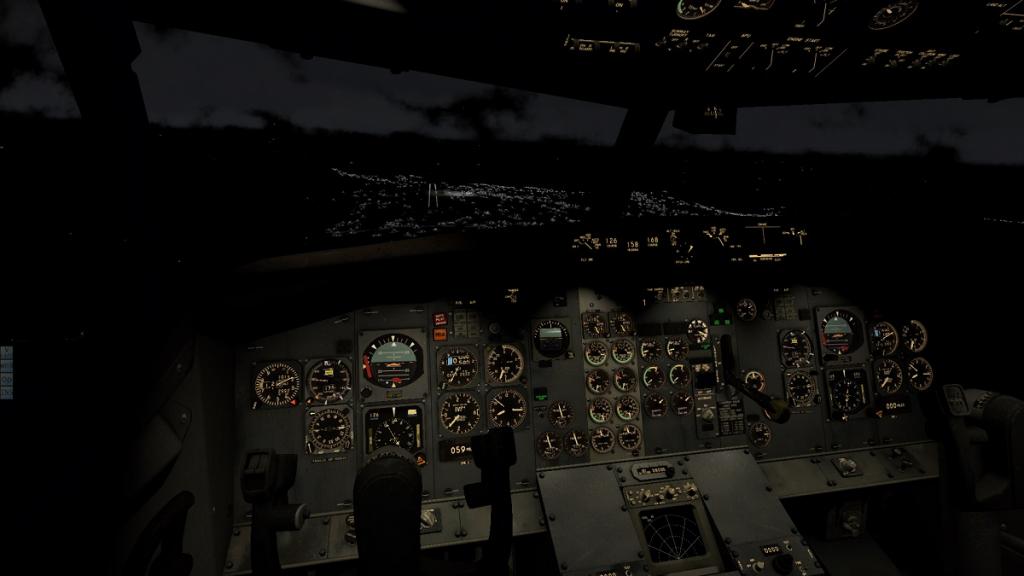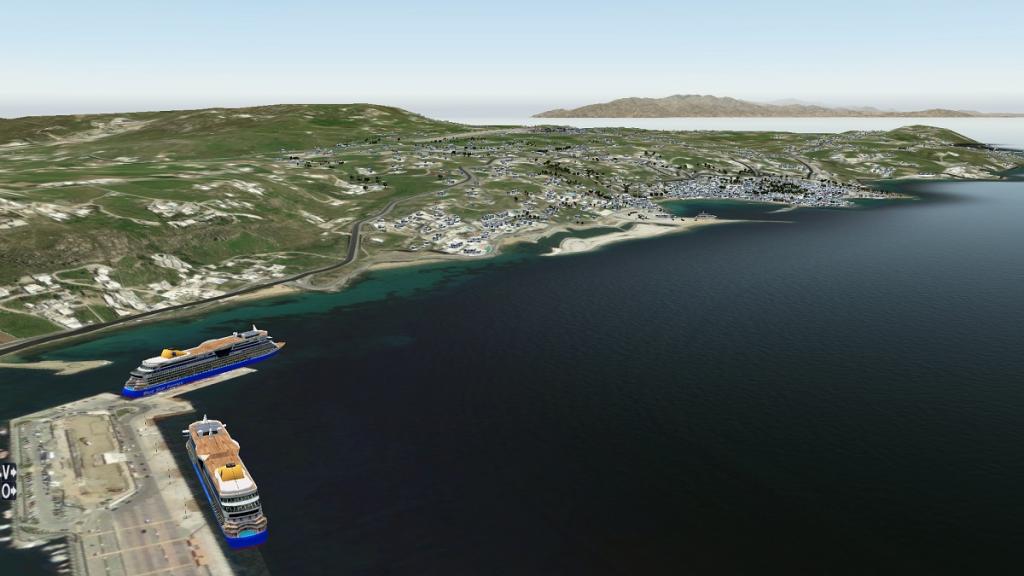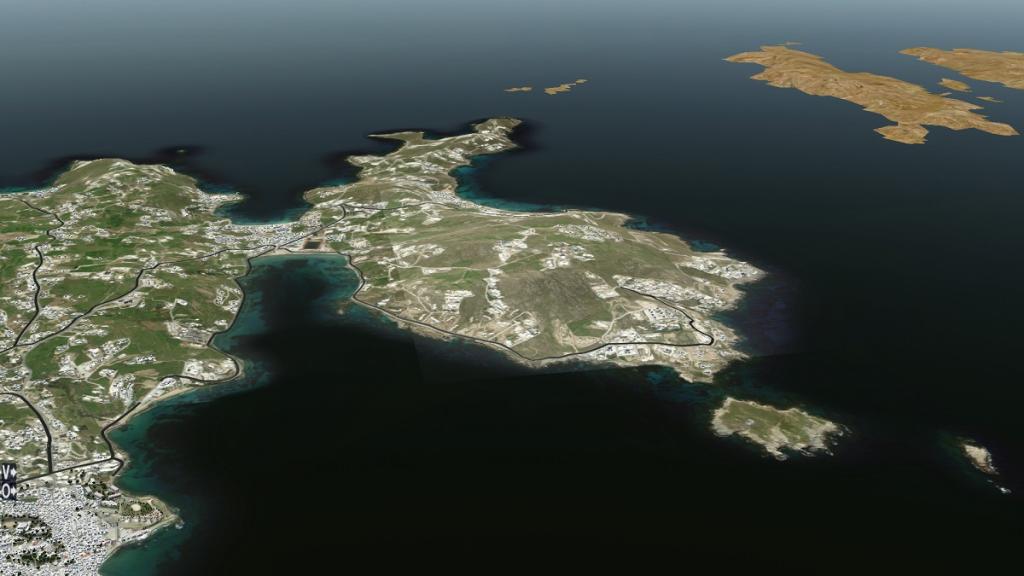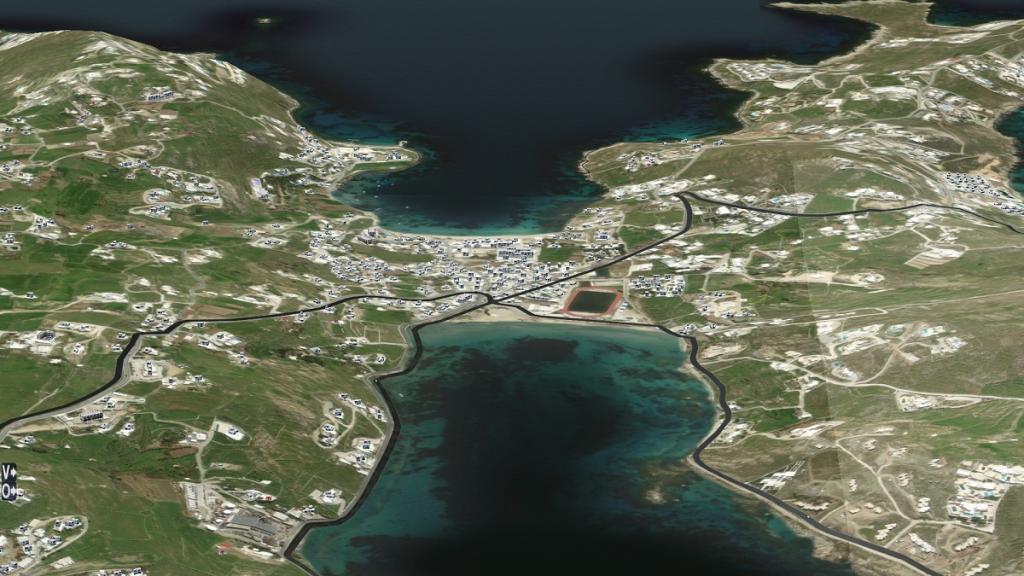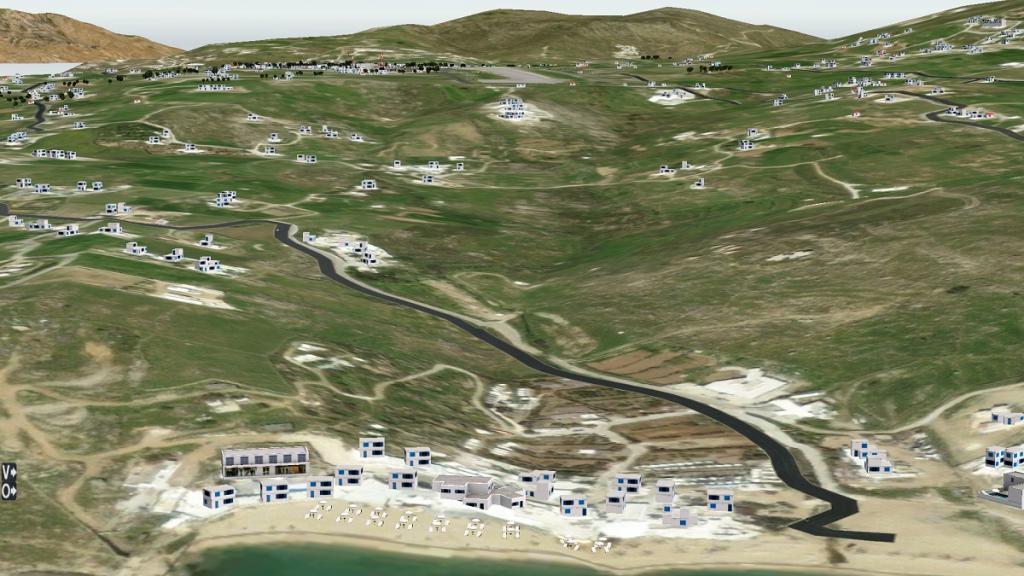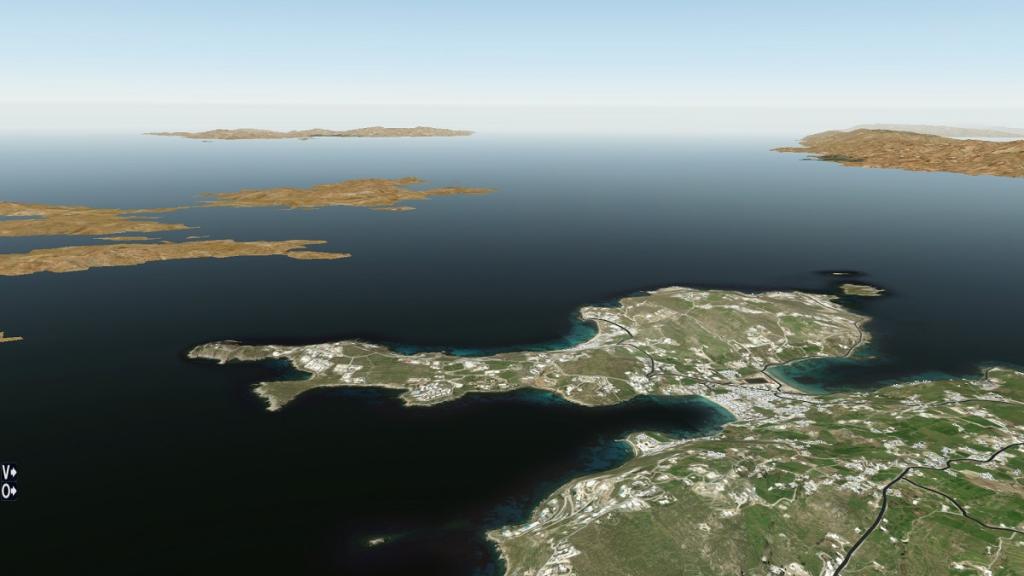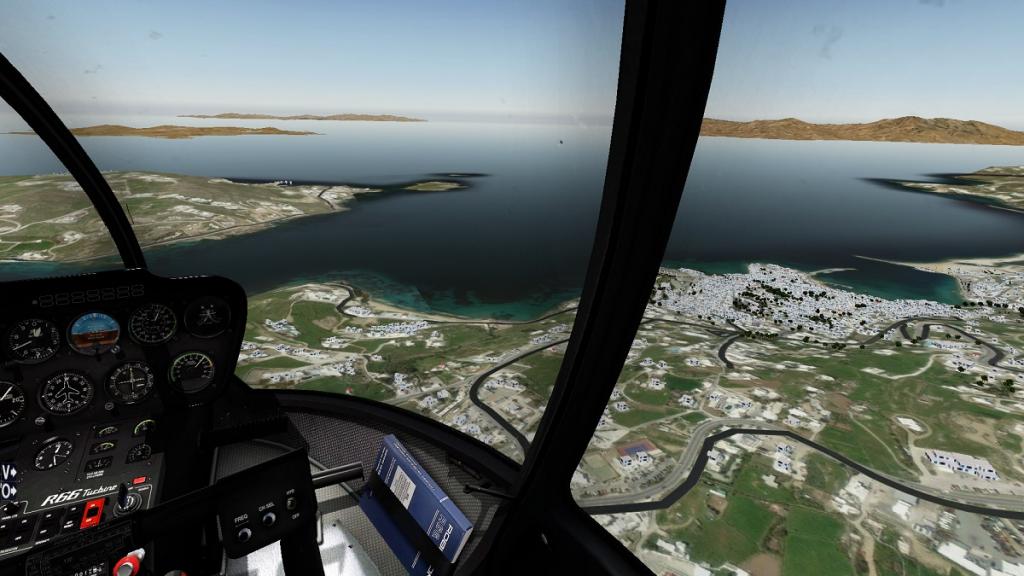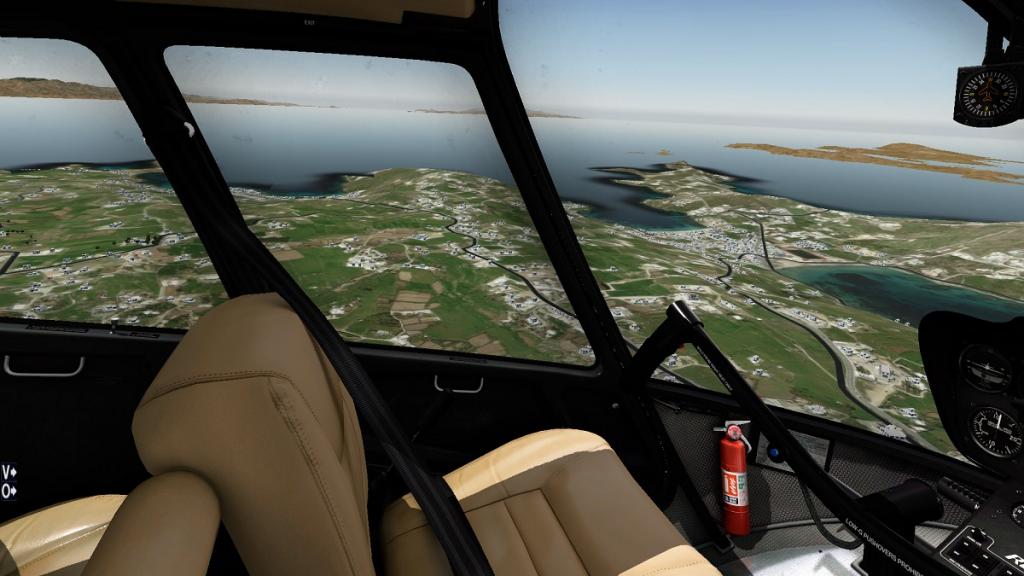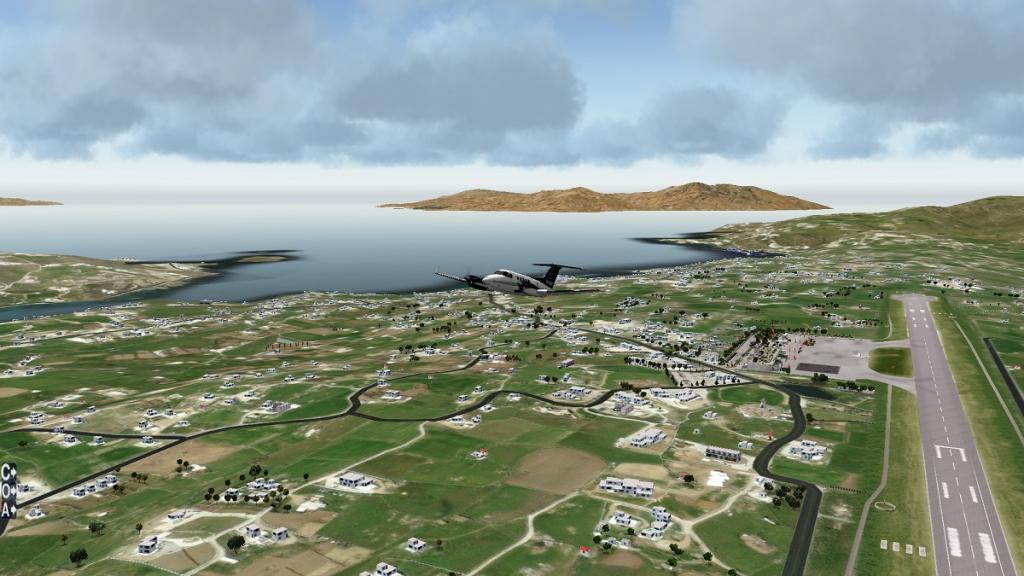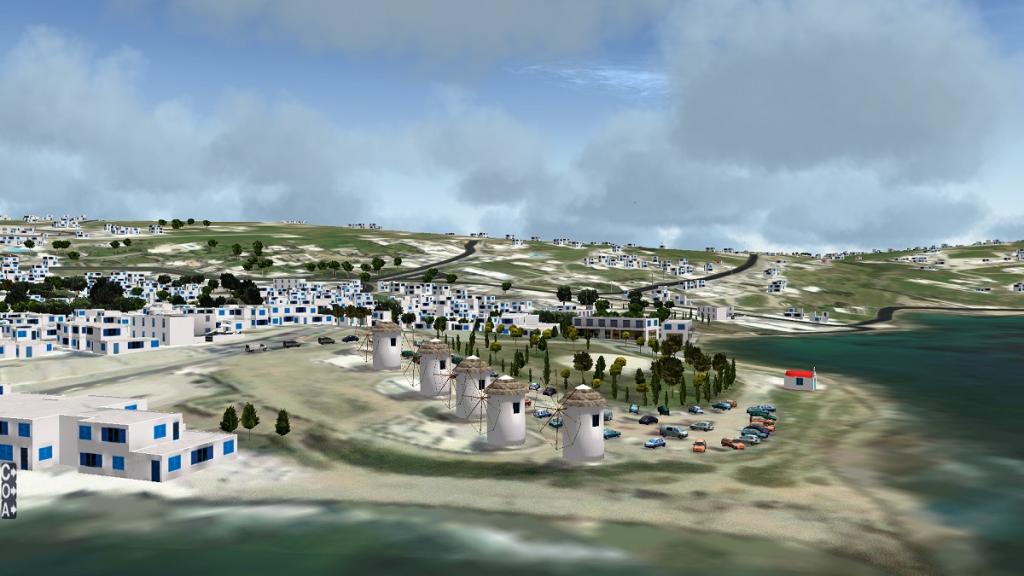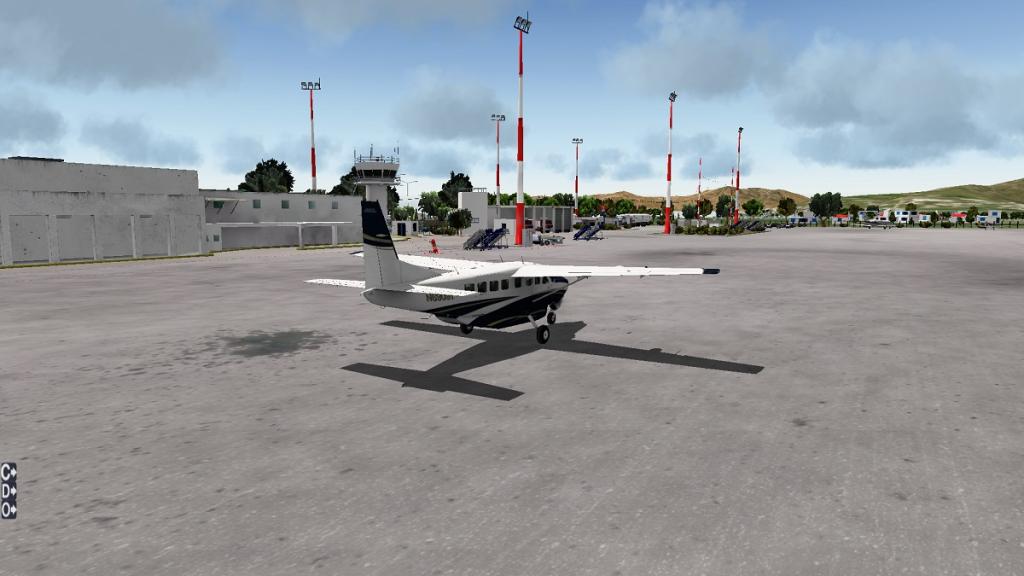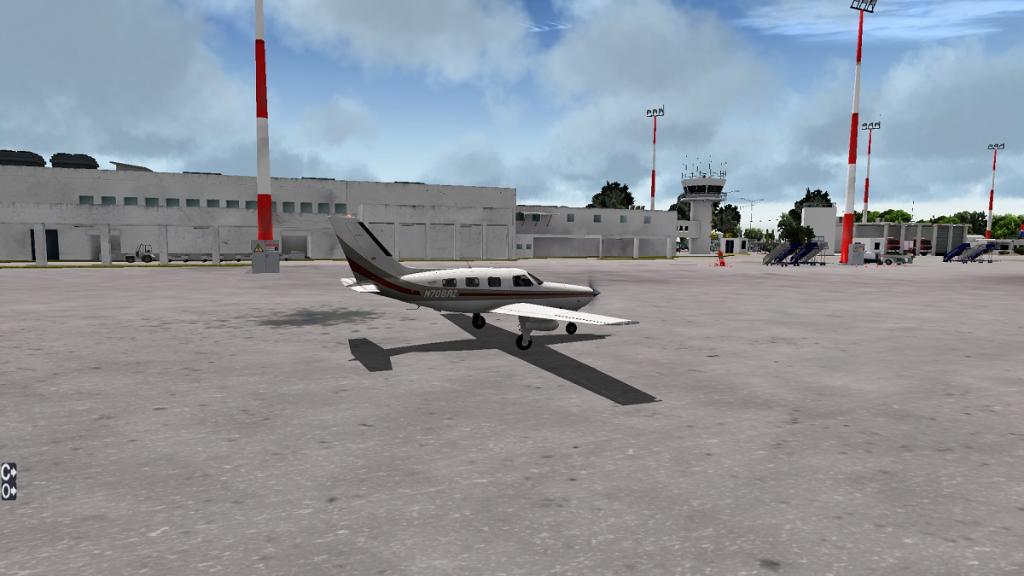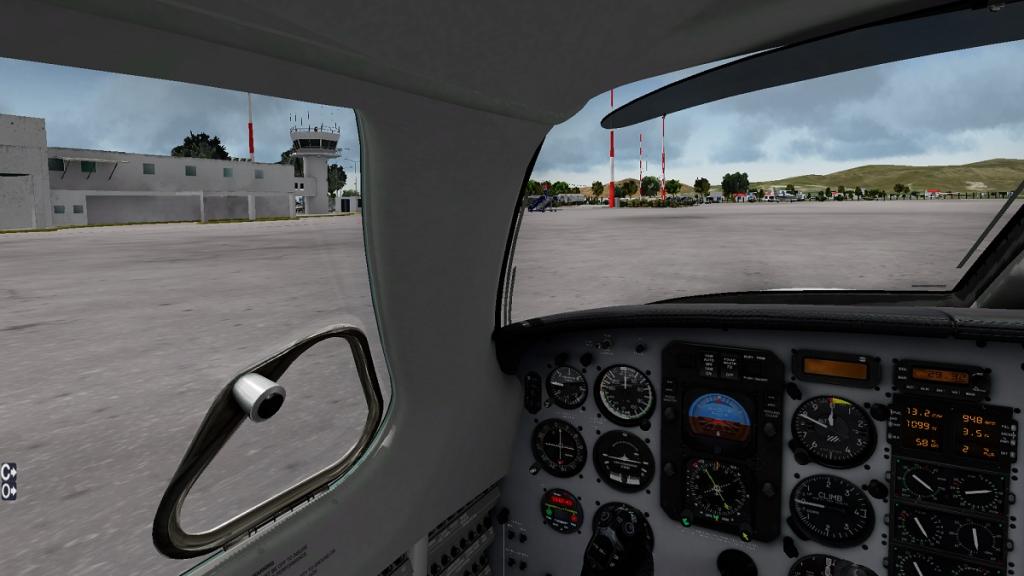Leaderboard
Popular Content
Showing content with the highest reputation since 10/07/13 in Posts
-
Behind the Screen : April 2023 On average over a 20 to 30 year commercial flying career, professional pilots will fly usually about 4 to 5 types of aircraft, first in the right seat, then a command in the left. I'm not counting their non-professional activities like private general aviation, gliding or even to the extreme of aerobatic flying. This is the core total of flying airliners, either domestic or international. Do pilot's have to be more flexible in today's aviation industry? that is a big question, because, say in the 60's you could fly aircraft types from the BAC-1-11, progress to a Trident, then a Vickers VC10, then a Boeing 707 or a Boeing 747 Jumbo, or even on to the supersonic transport in Concorde. That career road would be far harder today, as you would mostly jump between types of the same design, say start in a A319, move to a A320, then a A321 and now an A321LR, you are progressing, but mostly on the same type, not "Types' of aircraft. Same with the A350 or Boeing 787 Dreamliner. Progress to each aircraft type would mean going back to class, instruction, training and finally the hands on evaluation that you could handle the new machine, a jump from say the VC10 to a Boeing 747 would be a large challenge, but nothing like the jump from a VC10 to Concorde, of which most crews of the supersonic transport were nominated from. Today the line between a A320, to a A321, is not as large, and a conversion would be in weeks rather than the months like in the past. Compare that to X-Plane, or with being a reviewer. God knows how many "Types" of aircraft and let us even include even the "weird" strange machines at that. Obviously I have lost count, but a thousand over 12 years is a rounded off figure, maybe even more than that, so you have to be pretty adaptable. Like driving a car, aviation still has it's basics in controls and instruments, so you can be "so called", adaptable. But unlike driving a car on a road, aviation machines comes with a lot of different variations, weights and sizes, again you have to be adaptable. A lot of Simulator users will also mostly stick to one type, or a variation of that type, a lot won't even progress from say a Single-Engined aircraft to a Twin-Engined aircraft, never mind a Commercial Jet. Another crowd will only fly heavies, big airliners, but most will usually use the Two-Hour rule of flying a Boeing 737 (Zibo) or Airbus A319/A320/A321 (ToLiSS), fair enough. Me I do like variety, always have, call it a challenge if you will, I couldn't be a reviewer otherwise. But I do have my core "Top Ten" aircraft that I fly personally, a few General Aviation machines, but mostly Airliners, the bigger the better. Also there is the aspect of getting "back into the groove". You would think with all that reviewing experience and skills, that I would easily slide into the seat and fly the aircraft like a pro, yes... well no, it is not as easy as that. One big bonus of doing reviews in that when a new aircraft or type is released, you do what I call a "Deep Dive". Reviewing in detail allows you to spend a lot of time on that aircraft, sometimes weeks, study it, understanding all those minute details. Then to learn to fly it correctly... then pass on the information of what has been learnt to you the users of the X-PlaneReviews site. You would think that in say six months when the same aircraft from the same developer comes around with an update, with all that intimate knowledge learnt earlier, I should simply slide into the same seat and fly it again perfectly like the total professional I am, except that is very far from the truth. I even make copious notes, the Concorde review notes went for sixteen pages, yet I still need to revisit and revise them all every time to step back into that cockpit. And here is the thing... My first flight back in that seat is usually atrocious, totally laughable... a professional, mostly a joke in watching my efforts. At least I don't have a check captain sitting over my shoulder rating my poor flying abilities, and ready to give my career the total thumbs down. Let's be clear, that is with the complex complicated detailed aircraft we are talking about here, sure I can pilot a GA around a circuit or two with my eyes closed, but something happened in X-Plane around eight years ago when basic PlaneMaker aircraft went to Plugins. Now the systems are real world duplication, so is now the way you also fly the aircraft in real world conditions in the Simulator. Triggers... notes can give you triggers, and then you fly the aircraft and then release all that the stored information in your brain, it does come back to you quite easily, but some machines do have their peculiar idiosyncratic natures, not only in their systems, but their flying characteristics as well, say the Dash Q400... One flight will release the learnt peculiar tricks on using and handling the machine, the notes help, but going over the learnt procedures and you will soon fall back into that aircraft category groove. I'm an odd one as well. I just won't jump in and go flying (unless there is a reason), I go through the whole set of procedures from "Go to Woe", more so with an update (or upgrade) to cover the changes in the new updated/upgraded version, the differences between the Old and the New. That second flight (basically the review flight) is usually "Back on Song", not flawless, but back in tune with the aircraft, the third flight has to be flawless, if not there is something wrong or something has been changed? The only thing about this process, it is time consuming, two flights take time, three flights is in days to do a review, but you internally and personally have to know you have everything right, in the interaction between yourself and the aircraft before reviewing. That is why I don't like a lot of VideoJocks, watching them power through procedures and incorrect flying, and missing SOP's (Standard Operating Procedures) makes me cringe by in the amount of mistakes made, some are very good, and yes even I can learn from a real line pilot doing video Simulations, but most are "Cowboys", and have bad habits that are being passed on to the unsuspecting junior (learning) Simulator users in picking up and using the same poor methodology. Okay, I come from the strict school of being serious, and a lot of users reading this will say, Hey, lighten up, it's supposed to be "Fun" it's only a "Game", but my approach is strictly professional, if you want to "Fool" around and wizz upside down in a A320 (yes looking at you Austin Meyer) then your looking at the wrong personality type, to me "Professional", means being very good at what you do and to not fool around with a 80 Ton aircraft. Simulation was created as learning tool for real world pilots, we are just lucky, and if you have enough computer power, to be able to do the "EXACT" same things as the real world pilots do, that for me is where the excitement comes from, and my on line experiences. Out of the "Thousands" of aircraft I have reviewed, a few go into my own personal hanger, the ones that are very special, but also fit my own personal flying needs, I keep the list to like I mentioned to around ten aircraft, but it is about four to five of those aircraft are what I use consistently, again these aircraft are also required to have a shakedown regularly, and the same process of a "trigger" flight and then a regular flight are required to get me again "Back in the Groove". I know these aircraft intimately, and yet I still need to reset my brain to fly them correctly, lose one or two that has happened with the X-Plane 11 to X-Plane 12 transition and you feel a bit lost without them (both will be released for X-Plane 12 within the next month). Again I will stress that regular repeatable flying is still required to keep your skills in prime shape, yes it is more (even relaxing) fun than the serious approach of reviewing aircraft, but still serious in the way you approach in flying the aircraft professionally. To make it "Fun", is to set up a few scenarios, I have two. The first is a real world day's flying, usually three sectors between regularly used airports (quality sceneries), In Australia say the "Triangle". Brisbane to Melbourne, Melbourne to Sydney and finally Sydney back to Brisbane, all in a days work and following real world services. It's more tricky than you think to fly on real world times and turnarounds with the same aircraft type. Exhausting as well, but that is what real world pilots do everyday, but it is fun to coordinate the lot together... The second is real world airport hopping. Start a service from say Barcelona and fly to Copenhagen, then from Copenhagen to Dubai (combining European to International with different aircraft types), then Dubai to Hong Kong, then Hong Kong to Los Angles and so on... if you wrap up a sector in say New York, then the next time you fly you restart in the same place, say, New York to Copenhagen, and hey, you have flown around the world with real life timetables and the same aircraft types used on the real world routes... both above scenarios are based on real world flying, but for me a fun factor as well. But all learnt during these travels, goes back into the reviewing, and the consistent practise on aircraft types means your skills are kept at a high level. This April "Behind the Screen" edition, looks a bit into how I fly and do reviews, but also shows you the amount of practise it requires to keep your flying skills at a high level, same as the real world pilots... I like to think so, dedication is everything in life. See you all next month. Stephen Dutton 2nd May 2023 Copyright©2023 X-Plane Reviews5 points
-
News! - Announcement : Boeing 787-9 coming from FlightFactor FlightFactor announced last month that a completely new aircraft to add into the line up of a B777, B767/B757 twins, A350 and the Airbus A320 Ultimate is coming from the development house. This aircraft is the Boeing 787-9 Dreamliner and details are noted that the B787 will reach new heights in complexity, usability and have a variety of features. We are also taking our 3D and texturing to the next level with ever more detail in and out of the cockpit. The first cockpit renders have been produced... It is the first all new aircraft from FlightFactor since the A320 Ultimate, but FlightFactor note the B787 will be closer to the B757/B767 in design than use the Chromium Embedded Framework (CEF) than on the same A320U aircraft... either way there will be a lot of expectations and a quality delivery expected on this aircraft as the CEF development was a long and testing one, but also the coming B787 at a study grade level will be a big shot in the arm for X-Plane with the MSFS onslaught. FlightFactor also noted "v2 plans for other models are simultaneously on the way, we just don't want to reveal it all at once! " that will be the v2 Boeing 777 and the v2 A350. I would expect the v2 B777 even before the end of 2020, but not the v2 A350 as the v1 just went with a serious upgrade with version Advanced v1.6 just being released, so that aircraft will certainly be a mid or late next year release, but an upgraded Boeing 777 (the current version is now seriously old) will keep the punters more than happy until the Dreamliner arrives. Overall FlightFactor has noted that with this aircraft it wants to take simulation to the next level.... exciting times. Images courtesy of FlightFactor ______________________________________________________________________ News by Stephen Dutton 15th September 2020 Copyright©2020: X-Plane Reviews (Disclaimer. All images and text in this review are the work and property of X-PlaneReviews, no sharing or copy of the content is allowed without consent from the author as per copyright conditions)5 points
-
Aircraft Modification : Rotate McDonnell Douglas MD80 Series IAE V2500 Engine The McDonnell Douglas MD80 Series MD-80 was the second generation of the DC-9 family, originally designated as the DC-9-80 (DC-9 Series 80) and later stylized as the DC-9 Super 80 (short Super 80). It was a stretched fuselage, enlarged wing, and was powered by higher bypass Pratt & Whitney JT8D-200 engines. The MD80 Series made its first flight on October 18, 1979, and was certified on August 25, 1980. In response to the environmental concerns that began in the 1970s, Pratt & Whitney began developing a new version of the JT8D engine, designated the JT8D-200 series. Designed to be quieter, cleaner, more efficient, yet more powerful than the earlier -15, -17, -11 and-9 series on the DC-9. The -200 Series power-plant was re-engineered with a significantly higher bypass ratio (1.74 to 1) covering the 18,500 to 21,700 pound-force (82 to 97 kN) thrust range and became the standard engine in powering the McDonnell Douglas MD-80 series. This is the engine on the Rotate McDonnell Douglas MD88. It's a long thin (still low) higher-bypass engine with clam-shell reversers. Mango Studios have done a modification (MOD) to change this JT8D-200 engine to the later bulkier IAE V2500 Series engine. The look and feel of the V2500 modification is really well done, with high quality 4K Textures and new PBR (Physical Based Render) effects, the quality and installation is simply excellent. Internal exhaust detail is totally authentic, with the correctly fitted outer fins for the correct airflow around the engine pod. The V2500 does not have the clam-shell thrust reversers, but the same arrangement like on the A320, were as the full cowling door opens for the thrust reversal. This aspect is very nicely done here as well, nice operation, with great internal detail of the air vent grid and internal mechanism. This IAE engine was installed on the next stretch of the MD80 Series, third generation of the DC-9 family in the MD90. The engines were notably mostly installed on the MD-90-30 Series with the IAE V2525-D5 engine, with the option of upgrading to the IAE V2528 engine. The V2500 Series is a two-shaft high-bypass turbofan engine built by International Aero Engines (IAE) which also powers the Airbus A320 family. This engine also has an option to add 3,000 lbf for use in Hot & High conditions if needed by activating a switch in the flight deck. The V2525-D5 is fitted with different mounting hardware and accessory gearboxes to facilitate the rear MD-90 T-Tail installation, than say the under wing pylon of the A320. First look at the larger style of the IAE engine and as the MD90 Series had later the enhanced MD-90s glass cockpit, you could say it is the Boeing 717 aircraft, but it's not, as the 717 (MD95) had Rolls-Royce BR700 family engines installed, not IAE Engines. Important to note that with this modification, there are no IAE Engine sounds, strangely odd as Mango Studios are well known for their Sound Packages, and the quite different IAE engine note would have been a nice feature, but it has been noted by the developer IAE sounds are coming real soon. The performance of the Rotate MD88 is not changed either, so any power (V2525-D5 111.20 kN (25,000 lbf)) and fuel-efficiency benefits of the IAE are not available with this installation. Installation Tutorial It is a slightly tricky installation, to switch the original JT9D-200 to the IAE V2525-D5. In the downloaded "IAE V2500 Engine Model" pack there are four three folder items; liveries, objects and a paintkit (psd)... there is also a manual supplied. First you have to "duplicate" the original Rotate-MD-80 aircraft, and add into the title "IAE" From the package objects folder you transfer the 12 files to the MD-88 IAE "objects" folder, and replace (overwrite) the noted 4 files with the new files. Now for the tricky bit... You have to go and open up the X-Plane-planemaker application (in your X-Plane root folder), and open up the MD-80-IAE aircraft (acf) file. Under the banner menu "Standard" is the "Objects" selection. You have to scroll to the bottom of the objects tool, and then using the "ADD" button, insert THREE new layers... Far right on each layer is a slot to insert the file, with the selection button to the left of the slot... then insert the three new objects (V2500_I.obj, V2500_r.obj, N1_fast.object) in the MD-80 IAE "Objects" folder... into the correct slot, then "Save" (File) the changes. If correctly done, then the new IAE powerplant should be seen on the main planemaker page... and the MD-80 IAE aircraft is now ready in the X-Plane Configuration menu. Although there is a folder called "liveries", they are actually only the MOD files FOR the liveries, not the completed new livery. So you will still need the original "livery" to add in the MOD livery files... Each livery folder includes four files; md80_cola_der.png, md80_cola_izq.png, V2500_l.png, V2500_r.png and all four are transferred to the said livery "Objects" folder... Again you will be asked to overwrite two of the object files. You have to do this same process for ALL the liveries provided. Note the livery "Delta retro" is in fact Delta Old, or the default livery? Five livery conversions are provided; Allegiant, Delta (Old), JAL, Lion and Scandinavian. All look excellent, and note how the larger engine can highlight the decals. If you want to update another favorite livery, there is a paintkit (photoshop) provided, the paint kit covers the L & R engines, so you also have to still add in two files "md80_cola_der.png" and "md80_cola_izq.png" to each new set of the new livery conversion into the same objects folder. In the air the IAE V2500 conversion looks amazing! X-PlaneReviews - Rotate MD80 X-Plane 12 update review is here... Aircraft Upgrade Review : McDonnell Douglas MD-88 Pro X-Plane 12 by Rotate Summary This is a modification to change the Rotate MD80 (MD88) from the original install JT8D-200 engine to the later bulkier IAE V2500 Series engine as found on the Airbus A320 Series. The IAE engines were notably mostly installed on the MD-90-30 Series with the IAE V2525-D5 engine, with the option of upgrading to the IAE V2528 engine. Mango Studios have provided a modification kit to change the over the engines by duplicating a Rotate MD80 aircraft and installing the V2500 engine via X-Plane planemaker application, it's not too hard to do, and the tutorial is above. Also provided are MOD files to change five liveries to match the new engine installation and paintkit to do your own changes on other liveries. This modification really gives you a more modern looking MD Series aircraft, sounds for the IAE are coming soon as well to highlight the package from Mango Studios, that will also be noted here when available. Simply... a big yes, I love the Rotate MD80 in X-Plane 12, this conversion gives you another engine version to widen the aircraft's appeal and only for less than US$6, so a big yes, yes and it comes more flying options with the Rotate MD80 Series... winner, winner. _____________________ Yes! the Mango Studios MD-80 IAE V2500 Engine Add-on is currently available from the X-Plane.Org Store here : Mango Studios MD-80 IAE V2500 Engine Add-on Price is US$5.99 The Rotate MD-88 Pro X-Plane 12 is required for this add-on. Requirements The Rotate MD-80 is required for this add-on. Download Size: 415 MB Current version: Initial Release (May 9th 2024) Documentation Manual provided by Mango Studios is a bit basic, hence the Tutorial here in this review Manual.pdf _____________________ Aircraft Modification Review by Stephen Dutton 9th May 2024 Copyright©2024: X-Plane Reviews Review System Specifications: Windows - 12th Gen IS1700 Core i7 12700K 12 Core 3.60 GHz CPU - 64bit -32 Gb single 1067 Mhz DDR4 2133 - PNY GeForce RTX 3080 10GB XLR8 - Samsung 970 EVO+ 2TB SSD Software: - Windows 11 Pro - X-Plane Version 12.09rc5 Plugins: JustFlight-Traffic (X-Plane.OrgStore) US$52.99 : Global SFD plugin US$30.00 : RK Apps XPRealistic v2 - US$34.99 Scenery or Aircraft - LIRF - Airport Rome XP by Aerosoft (X-Plane.OrgStore) - US$25.99 (Disclaimer. All images and text in this review are the work and property of X-PlaneReviews, no sharing or copy of the content is allowed without consent from the author as per copyright conditions) All Rights Reserved4 points
-

Aircraft Comparison : Boeing 777 vs Airbus A350
AirbusMan and 3 others reacted to BernardoCasa for a topic
Aircraft Comparison : Boeing 777 vs Airbus A350 As you can see by the title, today we are going to compare the Boeing 777 and the Airbus A350 for X-plane 11, both Boeing and Airbus biggest twin-engine aircraft. The Boeing 777-200LR Worldliner is the long range variant from the 777 family, with a maximum range of 8,555 nm (15,843 km). This variant has increased MTOW, three optional auxiliary fuel tanks and wingtips. Equipped with GE90 engines it produces up to 230,000 pounds of thrust combined. Exactly 60 have already been delivered and its main operators are Delta Air Lines and Emirates, with each one operating 10 aircraft. The A350 XWB is Airbus newest aircraft. The A350-900 has a maximum range of 8,100 (15,000 km) and a MTOW of 280 tons. The -900 was designed to compete with the B777-200ER/LR and 787-10, and eventually giving airlines the option to replace their older A340-300/500 with a newer and more fuel-efficient aircraft. It is equipped with two Rolls-Royce Trent XWB engines each producing up to 84,200 pounds of thrust. The A350 family is considered to a success, with 930 orders and more than 360 already delivered, being its main operators Singapore Airlines (48) and Etihad Airways (54). FlightFactor Aero is well known for their study level aircraft, with system depth being their main focus, and the A320 Ultimate and 767 Professional being a good proof of that. With that in mind you would expect a high-quality add-on from FlightFactor with great systems, so in today's comparison we are going to discover if that is true when we talk about the B777 and A350. Now we are going to decide which long-haul aircraft is the best for you Exterior modeling Both aircraft will be using custom Delta liveries that can be found in Xplane.Org Boeing 777 Worldliner Professional At a first look the exterior model is quite nice even though it needs some improvements. The fuselage may look strange with that lines, however you won't notice them most of the time. The windows are transparent, showing the 3d cabin inside. Probably the best part of the exterior modeling are the GE90 engines, they look awesome. The fan blades have a very nice glossy touch. The engine running animation is very good too. The landing gear and wings are nicely modeled. In general, the exterior is good, even though some improvements are welcome, especially in the fuselage and empennage. However, you won't find many problems if you don't search for them. Airbus A350 XWB Advanced You will notice that in many cases the A350 is the opposite from the B777, and exterior modeling is one of them. Usually the first thing you notice when looking at the outside of a plane is the fuselage, and the A350 fuselage is well done, it has a glossy and reflective surface (due to the livery I am using, the fuselage doesn't appear to be glossy), transparent windows and very nice wingtips. Instead of having very good modeled engines like the 777, the A350 engine modeling isn't that great, in fact it is not good or bad, it is the minimum you would expect from a 50 dollars plane. The animations are very nice and realistic, but the engine modeling, especially when it isn't running, is far away from perfection. The wings are nicely modeled and they look very good from the outside, however, they look a bit strange from the inside. The landing gear is great and doesn't appear to have any modeling problem. As you can see, the exterior modeling is good, even though it has its pros and cons, and you won't be disappointed. Like the 777, the A350 also needs some improvements. Extra features In this section we are going to talk about other extra features like doors, ground services and many other things. Starting with ground service. Both aircraft have this functionality, with one being better than the other. You can use the 777 ground service by clicking the menu icon in the top right corner. There you will find the ground services vehicles and objects as the doors open/close buttons and many more. Note that the ground service is very simple and only the doors indicated by an arrow can be opened. The ground service feature is more extensive in the A350, even though it is a bit simple, and can be accessed through the Cpt Outer OIS. It is important to note that all doors can be opened, a great advantage over the 777 which increases the realism. The plane at gate option sets a stair at the 4L door. There is one thing that looks strange in both planes, the wing flex. In the 777 is a little bit weird in some situations, like deploying the speed brakes after landing, resulting in some strange wing moves. The A350 wing flex problem is different and you will notice it while taxing and applying brakes. Another problem from the a350 is the wheels animations, which appear to be too slow. The 777 has a kind of engine shake, which is very nice to see from the cabin. Cabin Both aircraft have a 3d modeled cabin, divided in economy, business and first-class. Usually a 777 economy class is configured in a 3-4-3 configuration, which isn't the case FlightFactor 777, equipped with a 3-3-3 configuration. The business class seems very old, and the first-class has a nice bar. The A350 cabin is more modern than the 777 one. The economy is also equipped with a 3-3-3 configuration, with every seat been equipped with IFE screens. Configured in a 2-2-2 configuration the business class has wider and more comfortable seats. The first-class in the A350 is also equipped with a bar, providing great luxury to the passengers. There is a very nice detail in both aircraft, which is the crew resting compartment. This is a place that pilots and flight attendants rest when it's the other crew members shift. The first photo is from the 777 and the second from the A350, respectively located in the front and back of the aircraft. As you can see, the cabins are pretty well modeled and look nice, but in the end, the A350 cabin looks a bit better. Cockpit Probably the most important section in this comparison, it's in the cockpit that everything happens. While reading this part of the comparison, you will notice that most of the similarities and opposites are here, starting with the cockpit door, only the 777 has a close/open animation. Boeing 777 Worldliner Professional Possibly your first thought about the 777 cockpit will be: It seems very outdated. Yes the textures and some of the 3d modeling aren't great, you can't deny that, but when you start flying the plane they don't seem that bad. The overhead panel is very nice, as well as the aisle stand panel, where the 3d modeling is good and textures aren't bad. The night lighting is very beautiful and distinctive in 777, making it a very nice aircraft to fly at night. Its green color isn't common between other planes. It has many light knobs, this way you can try many lighting configurations before finding the best one for you. Airbus A350 XWB Advanced At first glance, the A350 cockpit may look better than the B777, especially using textures replacement mods, which will be linked at the end of the comparison, however, there are many better-modeled cockpits out there. Everybody knows that the A350 is a very modern plane and all its 6 big screens will attract your attention while flying it. It has the Airbus style overhead panel, but its pedestal is different from any type of aircraft, having some similarities with the A380. The autopilot panel is almost identical to the A380. The night is very well done, and gives the plane a modern touch, more than it already is. Systems FlightFactor says that what sets their models apart is the system depth, so we can expect good systems, we can't compare the A350 ou 777 with the A320 due to the price difference, so good systems is the least we should expect. Boeing 777 Worldliner Professional Starting with the FMC. It is fully functional, you can plan your route, insert SIDS and STARS and make performance calculations. The FMC is well done and you shouldn't have problems with it. The only thing that could be improved is individual screens, so you could leave one FMC in the LEGS page and the other at the VNAV page. As you can imagine, all knobs and switches at the overhead panel work. All the essential switches are working in the aisle stand panel. Last but not least, autopilot, it has some small issues like not turning off the disconnect alarm, but it still manages to take your plane from A to B. Another improvement that needs to be done is adding individual NAV screens, with this feature you would be able to set one screen with map and the other with app, using different ranges. With that in mind we can conclude that the 777 systems aren't perfect, but still in a high standard just like expected. Yes, they need some improvements, but still manage to have the hard work done. Airbus A350 XWB Advanced Probably the most known issue in the A350 systems is the FMC, where you can't insert SIDS and STARs. This is the main problem involving the A350 but there is a tool that solves this problem. It is named SimpleFMC and when used in conjunction with Simbrief flight planning tool, will give you the ability to completely program your route. As you can see, the A350 has some issues involving route programming, even though it can be simply solved and FlightFactor announced an update to fix that (will talk more about this update later). However, performance calculations and weight configuration is very complete in the A350. The best way to do that is by using the Cpt Outer OIS screen. Almost all switches and knobs work, both in overhead panel and pedestal. The autopilot works perfectly and you shouldn't expect any problem related to it. It is important to note that the taxi camera isn't working. We can conclude that none of the aircraft systems is perfect. At the moment, the 777 systems are slightly ahead, which gives you the feeling of a more complete aircraft. However, the A350 is a newer plane, leaving many opportunities to improve and add many new features, and if this happens, the A350 systems may get better and more advanced than the 777 systems. Sounds Each aircraft has its particularities. Generally we can assume that the 777 are better than the A350 sounds, especially when you talk about the engines. Starting with cockpits sounds. Both aircraft have nice sounds here, probably the A350 ones are a bit better, even though none of them is bad. However, when we start talking about the cabin sounds, you may get disappointed. They are the same all the time, it doesn't matter if you are in the front or back of the plane, they won't change. The flaps and landing gear operation sounds are nice, just what you would expect. The engine sounds are the ones you will most notice while flying a plane, and they are the reason for the 777 have better sounds than the A350. While you are in the cockpit or cabin, both planes have good sounds, even though they could be way better. But when you change for the outside view you will instantly notice the difference. While both engines are idle you already can tell a difference, you may think that this is obvious because they are different engines, but the difference is already there. However, things start to get better when you accelerate them, both sound nice, maybe a little better in the 777, but when the engines are at full power you will notice that the A350 isn't very nice, emitting a low and kinda soft noise. The 777 is the complete opposite, at full power the engines are screaming and give you the feeling that you flying the real aircraft. Blue Sky Star, most known as BSS, provides a sound pack for the 777 at the price of 20 dollars, increasing your immersion with the aircraft. Will be linked at the end. Other features Here I will list things I didn't mention yet. Checklist: Both aircraft have a checklist that tells you exactly what you should do. Cabin Announcements: You will find this feature in both aircraft. There are more than 20 default announcements. Pushback: This feature is implemented in both planes, however, I recommend using the Better Pushback plugin. Conclusion As I said earlier, we would find the best long-haul aircraft for you. After reading my comparison you may have already decided the best one for you, but if you still can't choose one I will help by listing the main features. Boeing 777 Worldliner Professional -Very well modeled engines -Fuselage is good, but needs improvements -Has 3d cabin -Cockpit a little bit dated -Good systems -Better sounds (BSS package available) -Price: $59,95 Airbus A350 XWB Advanced -Better modeled fuselage -Beautiful 3d cabin -Better cockpit textures (using texture replaceament mod) -Ok systems -Good cockpit sounds, engines could be better -Price: $49,95 Note that FlightFactor said that would release an update for A350 this month and it would include the implementation of SIDS and STARS as well as a huge graphical improvement. This update would make the A350 way better. It would be nice to see BSS making a sound package for the A350, it would take the aircraft to a pretty high standard. If after all this you can't decide yet, you should take my advice. Both aircraft are equaly good, each one has pros and cons, and the best thing you could do is: buy the one you like more in real life, it is simple. Notice that you won't be disappointed with these two great aircraft by Flight Factor. I won't tell my personal choice because that may induct you. Greetings Thank you for reading this comparison! Feel free to leave your comment. This is my first review for this incredible site that has been making the best reviews for X-plane for a long time. I want to thank Stephen for giving me this incredible opportunity and providing everything I needed to make the comparison. ______________________________________________________________________ Both aircraft are available in X-Plane.Org Store here: Boeing 777 Worldliner Professional Price is US$59,95 Features: Officially licensed By the Boeing © Corporation Accurate dimensions based on 2D and 3D drawings supplied by Boeing © Professional systems - Fly the 777 like a pro Systems designed to work like the thing - Accurate flight model tuned by pilots - Comprehensive Manuals Fully Functional FMS - Plan your routes like a real pilot Custom designed Flight Management Computer, integrated with other plane systems Custom programmed LNAV logic for terminal procedures Custom designed Navigation Display Tterminal procedure database with RNAV approaches and transitions VNAV managed climbs and descends Takeoff and approach speed calculation Custom autopilot modes for autoland Optimum cruise performance and step climb calculation True-to-life radio navigation with procedural-, route-, and navigation support auto-tuning Custom programmed FMC navigation using GPS-, radio- or inertial navigation with individual position errors and management of actual and required navigation performance Magnetic, true and polar grid course reference Alternate airports, diversion and arrival management Ground proximity warning system using real sounds FMC can be used on external touchscreen or tablet, optimized for the new iPad Incredible 3D modeling - the best eye-candy Amazing virtual cockpit with crisp details - Dynamic reflections Custom 3D sounds and Announcements Add-ons: Push-back truck, Fuel Truck, Passenger bus and Emergency slides ... On-Screen Menus: Configuration and loading menu, Quick Zoom Superb night lighting in cockpit. Requirements X-Plane 11 or X-Plane 10.50+ - 64 bit required Windows, Vista, 7 / 8/ 10 (64 bits) or MAC OS 10.10 (or higher - OSX 10.9 will not work), Linux Ubuntu 14.04LTS or compatible (older versions are not supported) 2GB VRAM - (4GB VRAM Recommended)- 1Gb available hard disk space Current version : 1.9.12 (last updated Jan 30th 2018) ___________________________ Airbus A350 XWB Advanced Price is US$49,95 Features: Superb 3D Modeling Complete Virtual cockpit in high-resolution Fully animated in and out -High-Resolution Textures Ground equipment support including stairs, loaders, passenger buses, GPUs etc. 3D people inside and outside the plane - Nicely modeled cabin Scroll wheel support for switch manipulation Advanced Systems Fully customized aircraft systems: electric, hydraulic, air conditioning, ADIRU Fully customized ECAM monitoring system with all screens and functions included Fully functional airbus style alert system with multiple status and procedural lists Fully functional interactive airbus electronic checklist system Airbus A350/A380 unique interfaces with dozens of screens and hundreds of function Fully customized and unique MFD (multifunctional display) system with most of flight planning pages implemented in a new graphical interface, as well as FCU and radio backups just like on the real plane Full OIS screen system with options, ground equipment control, passenger and cargo loading, and even a full user's manual inside the plane. Old style MCDU and fully functional aux instruments as backup Custom failures Advanced Fly-by-Wire and Flight systems Full FBW with Highly realistic implementation of the Airbus normal laws by QPAC -the most realistic fly-by-wire implementation for desktop flight simulation. Basic SID/STAR implementation using X-plane fms-files that you can create yourself and share with the community. "What you see is what you fly" flight path indication on the ND (i.e. curved trajectories with the turn radius properly computed based on speed and angular turn distance.) Implementation of all Airbus AP modes, except some non-precision approach modes (Selected and managed modes, speed constraints respected, "at or below" constraints in phase climb, "at or above" constraints in phase descent.) Full PFD and ND displays with fully independent display and different data sources for the captain and copilot displays. Independent autopilots Custom 3D Sounds Custom 3D stereo engine sound system Hundreds of system and in-cockpit sounds Interactive flight attendant helper Seven Liveries included in the package Airbus Carbon, Air France, Airbus House colors, Qatar, Lufthansa, United Airlines Requirements X-Plane 11 (latest version) Windows - Mac - Linux - 64bit Operating System Required 1Gb+ VRAM Minimum, 2Gb+ VRAM Minimum. 8Gb RAM Version : 1.5.2 (last updated Apr 24th, 2019) ________________________________________ Aircraft Comparison by Bernardo Casa 21st April 2020 Copyright©2020: X-PlaneReviews Review System Specifications: Computer System: Intel Core I5-9600K 4,30GHz / 2x8 Corsair Vengeance RGB Pro 3200MHz - Gigabyte RTX 2070 - Z390 Aorus Master - Kingston A1000M.2 SSD 240GB Software: - Windows 10 - X-Plane 11.41 Addons: Logitech Pro Flight Yoke/Pedals/Throttle Quadrant - Logitech Extreme 3d Pro Joystick - Sound: Samsung Home Theater System J5500WK Plugins: Environment Engine v1.13 by xEnviro US$69,90 -Scenery Review : Seattle City XP by Drzewiecki Design - Scenery Review : Seattle Airports XP by Drzewiecki Design -KLAX - Los Angeles International 1.01 by MisterX6 (X-Plane.Org) Freeware -SBGL - by AxScenery (AxScenery) Freeware -A350 cockpit textures replacement (X-Plane.Org) Freeware -Better Pushback (GitHub) Freeware (Disclaimer. All images and text in this review are the work and property of X-PlaneReviews, no sharing or copy of the content is allowed without consent from the author as per copyright conditions)4 points -
Free Aircraft Release! : Concorde by Dr Gary Hunter Growing up in the sixties was a time of huge speed advances. The predictions were of New York in 3 hours and Singapore in 7 hours via Bahrain, and then we went far faster again... to the moon. Looking back now it all feels like we lost have something, yes we can afford to travel the world on a few thousand dollars... but the excitement and the sheer feeling of the momentum of advances in technology has now been reduced to smart phones. The real tragedy was that the machines that gave us our biggest breakthroughs were then never advanced forward, there was no Concorde Mk2 or Space Shuttle Mk2. And so there came no advancements on their ideas and weaknesses, like the noise and sound barrier on Concorde and the better insulation tiles for the Shuttle. Instead they were all consigned to museums and with that a negative backward feeling now exists. You know it can be better, as we lived through that now past era of huge ideas and advancement that actually came true and real. But you can still relive a little of what one machine of that era was, in the Concorde. Dr Gary Hunter created a Concorde for X-Plane9®, so yes this aircraft is old now even by X-Plane standards. It didn't fly very well either lately because of the advances of the simulator, so an update to v10.50 was carried out and the aircraft has been gratefully passed over to the X-Plane.Org to be released... yes that is right this Concorde is for free! And no matter which way you look at it this aircraft is still one of the very best looking machines ever built, The modeling is slightly old, but not enough not to make it feel totally outdated. The panel is from an era of X-Plane seasons past, and the instruments are quite blurry. But it is totally functional and does have a 3d Virtual Cockpit. There is also a great engineers station, and you need to watch those fuel gauges, they gulp down fuel like no tomorrow, but hey you are also covering the ground at a one mile every two and three quarter seconds! Full cabin as well with the all important speed Mach numbers and altitude. You are seriously moving at m2.2, you can feel the speed even over the smooth Atlantic Ocean, watching my moving map on my iPad, the aircraft is moving as you are watching it even at a high distance, the Nm counter is clicking over click, click, click fast as well... this is no sub-sonic slow ride to China or as in this ride... to New York. Distances of descent to any airport will need a bigger or longer distance with this machine as it is a long way down from 50,000ft or even 60,000ft if you are game. Liveries included: Blank or Eurowhite, BA Union, BA Landor, BA Flag, AF, AF Retro, Prototype and Singapore. New York and "Look Mum, no Flaps!" drop the nose and the speed to 195knts and you get that over familiar hawk look... The aircraft is surprisingly easy to fly on approach, but watch for a high nose in the air after landing. Concorde is back in New York! ______________________________________________________________________ There is a big thanks to the work of Dr Gary Hunter in creating this X-Plane Concorde, and now passing it over to Nicolas of the X-Plane.Org for you to download... for FREE!, yes just go to the link below (sign in first) and download this Concorde and go.... Supersonic! Yes! the My Planes (Dr Gary Hunter) Concorde is available for download here: CONCORDE Price is Free! Features: Accurate dimensions 2D and basic 3D Cockpit Object-based model, Very detailed model 8 liveries Cockpits have been totally redesigned. Go to the virtual cockpit and move to the center laterally (right arrow key) then translate backward through the aircraft (shift-pagedown key) to see the virtual cabin interior. All cabin windows are in 3D, and the cabin interior is modeled (seats etc). These differences are most obvious when using LIT textures as you can see inside the cabin more easily. Try circling the plane when flying in low level lighting conditions (sunset for example). Updated and tidied up the 3D virtual cockpit a little. The horizon is 3D now but its hard to notice so I may drop it in future versions. All fuselage doors are operable using keys 8 fuel tanks Full 3D Model Regular Concorde and Concorde 'B' included The model B was to have been the definitive airline version of Concorde, produced from airframe number 17 onwards. As production stopped at airframe number 16, the model B never actually took to the air, though much of the design work and improvements were retrofitted to existing Concordes. The most noticeable difference would have been the big wing of the model B, non-afterburning (more powerful) engines and a much greater range. This version also features an airbus style “glass” cockpit. ______________________________________________________________________ Overview by Stephen Dutton 6th October 2016 Copyright©2016: X-Plane Reviews4 points
-

Behind the Screen : March 2024
flightwusel and 2 others reacted to Stephen for a topic
Behind the Screen : March 2024 On the 4th of February 2024, there was a Developer's conference in Montreal for X-Plane Simulator platform. Here the best and most prominent developers joined together to work out not only the future of the X-Plane Simulator, but also to share their friendship in meeting their fellow workers in arms. Laminar Research was at the same conference as well. That should have been a huge advantage in working with the very people that do the core workings of the X-Plane Simulator, the setting was ripe for setting a future roadmap and an agenda for X-Plane from both sides of the Simulator... but the conference didn't end to that satisfaction. At the height of the conference, Laminar Research announced that they were going to create a product store within the X-Plane Simulator, a reflection of the same arrangement that is part of the MSFS 2020 (Microsoft Simulator) platform. This sudden announcement did not unite the developers to the Laminar cause, in fact it divided the conference, and in itself created a rolling discontent among the the attendees, certainly when the news hit the forums, all sorts of comments came out. Initially most users were very supportive of the internal store idea, yes another store, and one built directly into the Simulator, this aspect is a major plus.... but X-Plane is not at all structured like Microsoft's Simulator, it is not a large single central entity, but a Universe with many different revolving planets, and set at it's centre are two massive Jupiter sized planets called Laminar Research and the X-Plane.Org. Initially Laminar Research never dealt with the user side of the Simulator, it was (still is) the founder and on going developer of the Simulator. The X-Plane.Org grew out of the need for users to interact, create and support the X-Plane Simulator. In the early day's it was a sort of clubby meeting place to share and communicate all things X-Plane. I'm not saying that MSFS also has this same network of user sites and forums set around it and in giving support and communication to the platform, in fact every platform has it's own network. But the central core of development and selling product at MSFS is embedded directly into the system, it is even hosted and run as an online game. But X-Plane's in it's arrangement was more focused and generalised than the others. Someone noted that the X-Plane.Org is not the centre of the X-Plane universe, as other sites contribute to the platform, and yes I agree with that aspect in file sharing and product sales, like the Fly Away Simulation sites, but most are only sales sites (Orbx, Just Flight & SimMarket). But the X-Plane.Org is different in that it supports the Developers directly or even indirectly in the support of creating the products to use in the Simulator. Early days of X-Plane were mostly based around the PlaneMaker tool provided with the Simulator, mostly aircraft were then generic, but clever in a customised way. So the clubby .Org supported these products as they were mostly freeware based. But even in these early years, the X-Plane.Org struggled for support. Sites and platforms cost money to host and maintain. Free is all very nice, but it doesn't buy you servers and software to run it all, and very quickly the site required money to support the ever expanding user base. Donations was an early trial, but failed as they were not very consistent and worse in not really giving enough financial support to the .Org site. The solution came with Nicolas Taureau, and he set up a store to sell the now more quality based "Payware" products, but the funds also supported the .Org in succession and allowed it to thrive and grow into the big utility it is today. Most of this important support is not aggrandised or visually translated, as is Taureau's personality, understated is more to the point, but important is the support of the .Org system to the X-Plane platform, of which X-PlaneReviews is also a benefactor. So now you have the X-Plane Universe, with Laminar Research and the X-Plane.Org running in parallel or in orbits around each other, Laminar in not wanting the commercial side of the Simulator, bar of selling a few cups and T-Shirts. And the X-Plane.Org system supporting the developer and user base. So what happens if you move the financial base of developers and sales of the X-Plane Simulator directly to the new store? in reality, you are blowing the X-Plane universe apart, and I really don't think that a lot of users realised that the amount of the support funding of the X-Plane.Org, developer support and loads of other auxiliary items that was generated by the X-Plane.OrgStore... and neither did Austin Meyer's, head honcho of Laminar Research. All he saw was a store in MSFS and the money he could generate if he installed inside X-Plane the same system as Microsoft, a good idea financially, but structurally unsound for his own creation. We have to understand, and oddly the original mission of X-Plane was for it to be a platform of experimentation of all things aviation. That is the core of PlaneMaker as well, although that aspect was left behind more than a decade ago. In wanting far better functionality and higher quality Simulation, it had move on pass the basic origins of PlaneMaker to plugin based custom products. This now is really the contention of the issue and where the money goes to. Obviously Laminar Research want to expand beyond being just the gatekeeper of X-Plane. So there are currently a lot of issues created by the announcement of 4th February 2024. Certainly it has the promise to unstable a very balanced current system, and the ramifications are enormous if Laminar Research get this idea wrong, and creates questions... but what of a store with very few products to sell? Would they in the future also financially support the user base... they made a very big message over the decades of not getting or even involved at all in this aspect, but they would be either the demise of it, or even damaging it beyond repair... if that scenerio was possible, could it also damage the X-Plane model as a simulator entirely? Kill the very goose that lays the golden eggs... I'm doomsaying again, but this time not without reason. So we are at a threshold, not a runway one were X-Plane gets to land safely beyond the fence and onto the hard solid runway. Since the 4th of February announcement, there has been no forth coming new announcements or details from Laminar Research, except for a few flashy images on the X-Plane website and social media. Obviously the next announcement will be the launch of the store, and it's insertion into the X-Plane Simulator. It will be very good, as Laminar are very good at these sort of things. But there is far more required than opening a store, but of the quality of the stock inside of it. Loyalty to Nicolas Taureau is also extremely strong, and why not. He has supported and cultivated the core product of the Simulator for more than over a decade, and make no mistake here in not doing it selfishly for just for the product to sell, but to give talented developers the resources and support they needed to acquire the skills we take for granted, and with the excellent products we all use. How this current store scenario plays out will be important to the future of the Simulator, hopefully we will have an answer by Q3 as announced for the opening of the LR Store in the 3rd quarter of the year... one thing is very sure, the X-Plane Simulator we used only last year, will be a very different to the one we will be using at the end of 2024. There was no edition of BtheS in February 2024, as I went of a well earned holiday, break.. or a cruise around the South Pacific. Obviously the 4th February announcement traveled with me, but I did get a well deserved change of scenery and a big sea refresh. But my demur was already more brighter before the departure, in fact since late 2023, when X-Plane through version 12.0.9, and behaved itself. A second South Pacific X-Plane related revisit to Tahiti in the same region was simply sheer coincidence, but translated the same to the X-Plane Simulator in how it mirrors the real world. Now we are looking forward to X-Plane 12 v12.1.0... the v12.1.0 update is expected to be a landmark release outside of a formal version change. Most of the focus is on graphics, including the nasty Anti-Aliasing (MSAA) Improvements, Water improvements, RCAS (Robust Contrast Adaptive Sharpening), Bloom effects and better particle effects. Systems include a better G1000 functionality, Stormscope, Traffic Map and Airport METAR flags... a new STEC ST-360 Autopilot is also included, new tools include better screenshot effects, which suits us really well... it is quite a list. With everything, then this post Easter holiday will be one of the most interesting yet, and the version v12.1.0 was highlighted with great reception at the FS Weekend in the Netherlands. Expect a beta release within weeks. Importantly those on-going v12.1.0 is more better system refinements, in shifting the heavy workload from your Graphics card over to the Processor. We expected this aspect for the release of X-Plane 12, but it will come now about mid-term in the X-Plane 12 version run. The changes will not magically fix your framerate, as heavier graphics will equalise out the benefits of less load on the Graphic Card, but it will overall make the X-Plane Simulator more efficient. I was a little annoyed about this aspect as I invested heavily in the processor side in my last system upgrade with the earlier announcement, then finding that Laminar was leaning even more heavily than ever onto the Graphic card side, so more expense was required to beef up that hardware side, now they are going back to the original focus, it is annoying and expensive as well to cater for these changing whims. Another change over the month was the upgrading of scenery for X-Plane 12. Finally the slow dribble has started to be a better flow from scenery developers, Aerosoft particularly was very active in releasing replacements and improvements to scenery that have been a long time dormant, and obviously we need more to come, a lot more. Although noted as an ever constant developing Simulator, X-Plane 12 will hopefully reach a mature point with the release of v12.1.0. Then that aspect bringing in even more resources for users to experience. So Q2 has a lot of potential to be one of the best period of 2024 for some big quality releases, even if it dribbles into the Northern Summer. But developers need a better more mature Simulator to bring quality releases to the Users, that aspect was something quite lacking over the last few years... it is time for X-Plane 12 to turn the corner... and that is said on April Fools day! See you all next month. Stephen Dutton 1st April 2024 Copyright©2024 X-Plane Reviews3 points -
Classic Aircraft Review Updated : Aircruiser 66-75 v1.1 by Hangar 23 Very early classic aircraft are very interesting, more so when they are so rare. This aircraft is about as rare as you could could imagine, only 23 of them were built between 1930 and 1938. But they have a significant place in Aviation history, only to be replaced by the United States federal regulations that prohibited single-engine transports on United States airlines, virtually eliminating future markets for the Aircruiser. Bellanca Aircruiser and Airbus were high-wing, single-engine aircraft built by Bellanca Aircraft Corporation of New Castle, Delaware. The aircraft was built as a "workhorse" intended for use as a passenger or cargo aircraft. It was available with wheels, floats or skis. The aircraft was powered by either a Wright Cyclone or Pratt or a Whitney Hornet engine. The Airbus and Aircruiser served as both commercial and military transports. The first Bellanca Airbus was built in 1930 as the P-100. An efficient design, it was capable of carrying 12 to 14 passengers depending on the cabin interior configuration, with later versions carrying up to 15. The Aircruiser's distinctive shape, gave it the moniker of "The Flying Ws" and this hardy design was still flying in Canada well into the 1970's . Is it a Bi-Plane, sort of, as the lower W is still a part aerodynamic surface. When you look at the design closely, it is extremely clever in holding up and bracing the main wing, as for also being a support for the landing wheels. The Aircruiser is a "Tail-Dragger", most were back in this 1930's period, but the early evolution of the multi-seat passenger aircraft is highly perceivable, back in the day, it was, still is a very innovative design. For an aircraft, it looks heavy, but sturdy is probably the best description Hangar 23 is a not really a new entrant to the X-Plane Developers affiliation, but a ex-TorqueSim developer. Still the Aircruiser is an interesting one in the choice of aircraft to debut their talents in doing their own Studio. Technical information of the Aircruiser is rare, but there are two surviving in existence, "CF-BTW," a 1938 model in the Ericson Collection in Madras, Oregon, incredibly the aircraft is still airworthy. The second is "CF-AWR" named the "Eldorado Radium Silver Express", built in 1935, and is under restoration at the Western Canada Aviation Museum in Winnipeg, Manitoba. Update v1.1... This review has been updated to version v1.1, this includes a set of changes that came out only a few weeks after this original release review was published, the changes are noted here v1.1 Installation The download for the Aircruiser is 1.18GB, with an installation of 1.38Gb. But the installation file/folder system is a slightly complicated. Hangar 23 has selected to put the main Aircruiser file within a folder of a folder? So the first folder is "Aircraft" followed by a folder named "Hangar 23" , with the actual "Aircruiser" aircraft folder inside, or buried in layers of folders? Honestly the first "Aircraft" folder is not required, so just install the "Hangar 23" Folder directly into your X-Plane "Aircraft" folder with the Aircruiser folder inside. All the installation notes are in the excellent manual, but the doubled up "Aircraft" folder creates confusion... Detail and modeling For an aircraft of this size, an installation size of 1.38Gb can only mean one thing, quality in detail. Remember this is a first time effort from Hangar 23, but the detail and quality is outstanding. Both an X-Plane 12 and X-Plane 11 versions are included in the package, but it is the XP12 version on show here with it's more exponential PBR (Physical Based Rendering) effects and lighting. And it really blows you away. X-PlaneReviews are usually quite lenient when the studio name is new, in overlooking sometimes even the obvious mistakes or poor areas of first time production... But already with the quality of work behind Ulrich, you go straight into the "Masters" level, but this is still a first release from Hangar 23 is just outstanding... and an highly impressive debut for the Studio! And all with an aircraft so rare... the beauty of Simulation is that iconic and classical aircraft can be recreated, their forgotten time, brought back and to live again, or in this case fly again. At the core of this Aircruiser Simulation is just that very aspect, bringing the past alive again for you to absorb and interact with. But this is outstanding work... all the wing braces and support wires are sensationally done, every bolt, castle nut and Cotter Split Pins, are modeled here in detail, leading edge panels are worn and authentic, the struts in detail are excellent, you have to admire it all. If you are a detail junkie, who loves to spend time investigating the quality of the work, then you will love this aircraft, as it's a museum piece brought alive. The massive top wing looks canvas, and you can see the frame that the material covers, it's a lovely formed wing as well. Actually two separate wings, attached to the fuselage. This was the golden age of innovation for aircraft, the transition from wood, canvas to metal, so you get sometimes the mixture of the two eras in the one development as the changes moved on forward. The detail is just gobsmacking. The panels are perfect and so are the bolts that hold them in place, windows and it's thick glass are worn and glazed to perfection... The Cyclone SGR-1820 it is rated at 760 hp, as is the giant three-bladed geared propeller, and all gloriously there to admire. The engines internal intricate detail of metal and brass pipework is very impressive. The Aircruiser is flat sided, there are no curves in the doors and the windows are more nautical portholes than aircraft, but it's all beautifully done, and it is all built like a tank! The two main landing wheels hubs, tyres are massive, but simplistic as well, detail is right down to large CirClip to hold the rim onto the hub. There are four doors that can be opened, two small high cockpit access doors, one left passenger door, and a very big odd A shaped cargo door... all four doors are so authentic to the design, with the Cargo door in two sections that folds. Honestly, it is like a flying shed inside, totally weird. The interior is impressively done, metal and wood dominate, SO much weight in the construction, how did this thing get off the ground? It's all metal piping and blocks of wood, many trees were felled in the creation of the interior, a far, far cry from the ultra clean, state-of-the-art LED lighting Airbus interiors... this is doing it rough. The passenger seats are a pipeframe, with a strung canvas seat, you wouldn't want to go to far on them. Pilot seats are a metal bucket, the pilot gets the luxury of a cushion, the CoPilot the hard metal base. The cushion is required not for comfort, but to be elevated to see over the extremely high instrument panel. The yoke is a big hefty iron thing, beautifully skillfully designed and modeled, you can hide it via a hotspot centre yoke. The side quadrant is again excellent, with the Throttle (T), Propeller (P) and Mixture (M) levers, notable that in 90 years the controls are still as relevant then as now. Lower rudder pedals are also big hefty iron contraptions, you need to be Popeye with his strong arms and legs to match, to fly the Aircruiser. Notable are the two trim winders, one left for pitch/elevator adjustment, and another on the forward roof for the rudder trim. Point to make is that there is no visual trim setting, so you don't know if they are both centred or not, but a guide is two full winder rotations each way. Note the old fashioned brake lever and flap selector handle. -v1.1- in the update Hangar 23 added in a visual marker on to both of the trim winder panels, it's only a small round brass tack, but it does show you your current trim position. Main instrument panel is amazing, this is simply a panel with inset instruments that is highly authentic. Note the boxed Whiskey Compass Again the layout is quite familiar... with a Standard Six layout. Top left is the Airspeed Indicator (MPH/KNTS), Vertical Speed Indicator (V/S), very basic Rate of Turn Indicator, below offset is a Directional Vacuum Gyro (Heading), Altmeter and Horizontal Reference (bank). Far left is a RPM dial, Manifold Pressure, and top right a CYL TEMP. Right panel has Volts, OAT (Outside AirPressure), Oil Temp/Pressure and Fuel Pressure... top Ignition Switch, Fuel Gauges (twin), PPH (Pounds Per Hour) fuel flow and a ELGIN clock. Lower left are a row of switches that cover Battery, Generator, Nav (lights), Landing (light), Starter, Coil Booster, Fuel Pump, Panel Lights and Cabin Light. Far, far left is the fuel tank cock; Both, Left & Right. It's all so impressively well done, the flaked tired black metal facia is very authentic to an aged old aircraft of this generation. - Update v1.1 - Added in the update were two instrument items both related to the "Carburettor Heat". A knob lower dash, and a gauge middle panel centre right. Menu There is a banner menu "Hangar23Aircruiser" that has two menu options; "Options" and "GPS Style" Options: There are six options, Autopilot Toggle, Strain Gauge Toggle, Real Autorudder Toggle, Steerable Tailwheel, Show Pilot and Use Clipboard. The Aircruiser comes with a very basic 2-Axis "Sparrow" Autopilot, basically a set "Holds" Pitch and Roll Rate. Second option is to add on a "Strain Gauge" or Trim indicator. Both are positioned lower centre panel We will go more into the "AutoRudder" in flight, but if you want to disconnect or activate the the AutoRudder you can do so via the menu option, you can also use the hotspot on the (front) Whiskey Compass to do the same action. The Tailwheel is steerable by the rudder pedals, but if you want a free castoring wheel, you can disconnect it via the "Steerable Tailwheel" option. There is the option to show or hide the pilot. He is fully animated in rudder and pitch (forwards & backwards) and seems to have his hands full in controlling the aircraft, he is very good here and well done. Next in the "options" menu is the "Use Clipboard". In the right side pocket there is a VR (Virtual Reality) clipboard (also clickable). This really the "Fuel & Weights" menu... as you can adjust the fuel and Pilots, Passenger, Cargo weights by scrolling them in. They can be set in Lbs or Kgs and the "Load", "Empty" (weight) and Full Gross weight can be seen. You can "Save" your settings, and then "Load" them. Another note is that between flights the Aircruiser will save and reload the same settings to the next flight, until you adjust them. Last two separate items on the "Options" menu are "Reset AP Tuning" (Autopilot on/off) and "Reset AutoRudder Tuning", resets the rudder position to central. An option not shown in the menus, is that if the power is switched off, then the chocks are positioned on the front wheels. The second setting of the menu tab is the "GPS Style", here you can select between the Laminar GNS 530 GPS, or one of the two RXP (Realistic) GNS 530 or GNS 750 GPS units if you have that external additional option. I don't have the Realistic option so that install is not visible here. The GPS units are position on the roof forward, with also a default custom style COMM radio above, and a Transponder panel below. - Update v1.1 - Introduced a set of "Floats" for the aircraft. There was actually a Float version of the Aircruiser, notably two aircraft were converted... noted here as a "Floatplane". The "Float" version can be selected on the "Flight Configuration" menu. "Huge" and chunky floats they are, there is no Amphibian variant (land wheels) The waterborne Aircruiser sits nicely on the water, also moves around on the fluids really well considering the size and weight of the machine. You need those extra huge extra tail fins to keep the aircraft straight. There are several ways to control the water rudder up/down movement. One (the easiest) is to set a keyboard command to "Toggle water rudder", or use the pull (up) or (down) slider on the floor, left behind the flap lever. Water rudder steerage is via your rudder pedals. Float detail is like the rest of the aircraft, exceptionally well done, lovely cleats and perfect cables ____________ Flying the Aircruiser 66-75 You can't at all see out of the Aircruiser, the long nose is way up there, blocking any view, as the tail is way back down there behind you. The only option is to lean very far left to try to see the ground. You would think the Aircruiser being so old-fashioned would be a pain to start, but it's quite benign and easy as long as you do the right procedure. Fuel on "Both", Fuel Pump on, then the most important switch, the "Boost Coil" switch to on. Mixture just to above the (Auto) lean red marker... then up the "Starter" switch, the prop will turn, then gradually fire into a running engine... Both the start up and shutdown of the Cyclone SGR-1820 is exceptional, no fast artificial start or shut down here, but it all comes with stutters and engine positions that are very noticeable, as is the churn of the starter motor against the pressures "clock", "clocking" of the starting engine, its a great and a very realistic re-enactment of the starting, and then the stutter of the engine shutting down, I loved it. I have a horrible history of trying to control tail-draggers, spinning loose tail-wheels have given me loads of grief. But not here though... as mentioned you can disconnect the tail-wheel to be free, if you love that uncontrollable chaos. But for the rest of us the tail-wheel acts through the rudder pedals, but also through the usual "Tiller" yaw. This makes the Aircruiser very easy to manoeuvre around on the ground or on taxiways. Braking and the toe-brakes work normally as well. For once you not fighting the aircraft on the ground to go into the direction you want, but the view internally is hard work to keep it all on the narrow taxiway. So you have a habit of visually taxiing externally until you understand the aircraft more. Very important is to adjust the rudder trim 50%, or a full winder turn to the right. The SGR-1820 is a very powerful force on takeoff, the asymmetric thrust is huge, it pulls you so hard to the left, that even full rudder is required off the line... The Aircruiser for all it's massive weight is sprightly off the line, your working the pedals to find the right balance to keep the aircraft straight, it does thankfully nicely change direction tail-wise to your inputs, very quickly the tail is up at 40 MPH, and there is tons of lift from those wings, at 60 MPH+ and your now flying. The point from "off the line" to "Airborne" is very short, so no flaps are required, time to adjust your direction is short as well... so once off the ground I was already veering right away from the runway, I didn't try to correct it, but just went with the flow and climbing turn, then leveled it all out straighter when higher. With practise with your rudder inputs you could keep it in more of a straight line out... it's a total feel thing, a feel for the aircraft. Pitch trimming is nice, but I recommend a keyboard input than the badly positioned side wall-winder, same for the rudder trim on the roof... You have so much power, the Aircruiser is super fast for an aircraft of this size and age... it's a very physical aircraft to fly, you use the rudder all the time, then finally finding the right amount of input to keep the aircraft in a straight line, a tough idea, with the amount of asymmetric thrust coming at you all the time. The 66-75, as featured here, could produce up to 730 hp from sea level through 5800 ft, where then the power built higher to ~760 hp Maximum speed is 144 kn (165 mph, 266 km/h), (but it feels far faster), Range is an amazing 608 nmi (700 mi, 1,130 km), and the Service ceiling is 22,000 ft (6,700 m), but the average cruising altitude is around 10,000ft, still fast and high for a 90 year old design. Hangar 23 has provided a tool, called the "AutoRudder function", a sort of A.I. tool to take the strain out of flying the Aircruiser. On the ground the rudder control functions as usual. So it was important to properly trim the aircraft prior to takeoff and landing. In flight, the autorudder system then takes control of the rudder, and will attempt to keep a slip angle as dictated by the yaw axis of the joystick. This allows the pilot to slip the aircraft even while the autorudder is active, such that even crosswind operations become possible with the system active. In other words it flies like the X-Plane tool when you have no yaw axis joystick, the wings are connected to the rudder. This gauge will merely prompts the pilot on the direction of trim needed to take load off the “servos”. Unlike the autopilot, the autorudder does not disconnect under a high strain, nor is it dependent upon the aircraft’s electrical system to operate (Cable operation). When activated (via the menu, or Compass) the autorudder has a visible gauge, located on the yaw trim handle base plate. If you are going to deactivate the autorudder during normal flight, first adjust the rudder trim according to the strain gauge, otherwise a very sudden and very unpleasant disconnection will occur. It works very well... but switched off the AirCruiser has a habit of yawing left, almost going around in circles.... You can try to trim it out? but it's hard to find a neutral flight, I did find a position input that worked, slight right rudder and slight stick right as well, but it's tiring for any distance, short or long... the AutoPilot is not much better, tricky to use is to centre the heading. You adjust via the "Roll" or "Up/Dn" switches, as per the three lights, red (left), white (centre) and green (right). But there is a delay in the operation that can make you over trim, I never quite mastered it... so again even on the Autopilot, I went into a slight bank in left handed circles and couldn't the aircraft fly in a straight line unless under manual control. It's the sort of tool that all of a sudden you will understand it and get it right, with time and persistence. This system is like the Sperry Type A-3A. You will need to trim the aircraft perfectly, so the heading is as close to where you want to go and level, flying as straight as you can, then turn on the AP, trying to trim later while the Autopilot is active is a far harder situation. -v1.1- In the update a lot of attention was given to pitch stability and improved rudder response, also this adjustment also works better with the "Sparrow" Autopilot, in both manual and automatic orientations the aircraft felt far more stable, more directional, than with the past banking action... certainly a big improvement in this area. Lighting Lighting internally and externally is basic, which is to be expected. There is one switch for the instrument lights, and another switch for the cabin lights, two spider-web looking ones forward and two roof lights rear, it all looks quite nice at night... The GPS install looks bright and also odd in this old cabin, but it's very well done and easy to use. Externally there are only again two light switches... Navigation, red, green and white tail, the other light is a left wing mounted Landing light, that look and is quite effective. There are no strobes or beacon lights on the aircraft... Flight notes by Hangar 23 notes "DAY - NIGHT* - VFR... *Poor visibility and the antiquated aircraft lighting scheme will present additional challenges during night flights". In other words it is not really an aircraft to be flown in the dark... Sounds... are a bit of a mixed bag. Overall they are excellent, the startup is an aural experience, and so is shutdown, external engine noises are very good right through the range of power outputs, that's the good. The poor is the buzzy interior sounds, that have a sameness of a consistent droning buzz with no fluctuations, even over a short distance I was distracted or even bored with the noise, The Aircruiser maybe really like that in the air, but I didn't really connect with them. The lower power outputs (on the throttle) are however better. Notable is the Aircruiser engine’s 16:11 gear ratio, for the propeller spins slower than the engine, but all readouts and aural sounds are based on the engine and adjustments should be made according to engine state rather than calculated propeller RPM. -v1.1- There was a lot of attention to sounds in the v1.1 update... there was improved cockpit sound origins and changed FMOD engine sounds (which both will be updated incrementally going forward as improvements happen). The developer was at least very responsive to comments, this area certainly needed more better aural sounds. Time to head back to Shoreham (EGKA). A tricky place to lineup, for the mass of trees around the field. All the runways are hidden from view... .... if the system is active on final approach, the autorudder will check if the rudder trim has been appropriately set for the upcoming power reduction. If the trim is not suitably centered, the system will intervene and reset the rudder trim to near center. This may be noted by the clicking of the trim’s chain drive, as well as a mild rolling tendency during finals. Myself I turned the automation off to feel the aircraft on the approach phase, plus a single wind of the rudder trim, to reset it as it was on the takeoff phase. The handling felt normal, as did the approach. If however the autorudder is active, then it will disconnect on landing. Nose up to rub off the speed, as there is no "white flap use zone", I guessed in setting the flaps to below 100 MPH, actually below 90 MPH, and you get a slight lift on each extension... but the transition now down to 80MPH with now a slight descent into Shoreham it all felt perfect. The flap lever or floor handle is extremely well done. It's both a brake handle and Flap handle in one. Over the coastline, and there is still no visual on the runways. Then finally the field is in view.... so I drop, in also trying to miss the treeline. ... but I realise I am too high, and becoming too fast in trying to get down to the grass strip. It's still a very good try.... but I have to abort and climb out! I will note the throttle inputs. If the Aircruiser is trimmed (correctly, or well). The Throttle control is very, very good, as you can control the height via the power. Full power to climb out was excellent (after that slight delay), but I found the Aircruiser to be quite normal in the approach/landing phase as any other heavy single-engined General Aviation aircraft. However you have to be aware of the weight around you with using the throttle power, and that tendency to yaw right with the huge power increase, but you soon adapt to the characteristics and the personality of the aircraft... fun? yes immensely, also a challenge to get the skills right in this cockpit. I didn't want to lose sight of the field layout, now I had found it. So it was a tight turn around back to the other opposite threshold. But be aware that too tight a bank and the Aircruiser will slip badly and lose height towards the lowered wing, there a sweet spot to find in the bank and before the slip starts to emerge, all this is required to get the best rotation of the aircraft. Lower and slower this time.... and it feels right. Then slowly descend, descend "keep it steady" and I touch around 65 MPH, I am not to worried about the speed, as the Aircruiser on grass will dramatically drag itself slower. Toe brakes are still the best tool to stop the aircraft rotating hard right, then left on you, as this happens once the tail goes down, it's tricky, but with practise it works in keeping you straight... I'm down, and arrested before the end of the grass strip... not bad I say. Liveries There are six liveries, one Blank (default), and two liveries that are blank white, but one has a metal nose cover, and another has the same metal nose cover & metal tanks. All are nostalgic except the off soft purple Landmark? _____________ Summary Extremely rare aircraft are always interesting, this Bellanca Aircruiser or Airbus, is one of the rarest as only 23 aircraft were built between 1930 -1938, it is also the famed "The Flying W" and this hardy design was still flying in Canada well into the 1970's. Hangar 23 is a not really a new entrant to the X-Plane Developers affiliation, but a ex-TorqueSim developer. And this unusual rare aircraft is their first project for the newly-named studio and the X-Plane Simulator. The Aircruiser is available as two separate packages for both X-Plane 12 (as shown here) and X-Plane 11. The quality here with the Hangar 23 Bellanca aircraft is very much on show, as it is highly developed and polished. Modeling is absolutely first rate and the detail is highlighted by this experienced and mature developer. As the aircraft is so rare, the detail in the reproduction is simply outstanding, to the point of recreating an era from a long time ago, and with a couple of modern tools thrown in as well, but not to the distraction of the authenticity of the original aircraft. Obviously this is a project of a labour of love, but still delivered with quality and polish. It is old fashioned in design, but the Aircruiser comes with so modern helpers like a "Sparrow" 2-Axis Autopilot, a custom AutoRudder feature, and GNS 530 GPS, and the option for Realistic RXP GNS 530 or GNS 750 GPS units. Tail-Wheel control can be via X-Plane style commands or free-castoring, that makes this aircraft easy for first time Tail-Dragger aircraft learning. Other options include Strain Gauges, Steerable Tailwheel, a fully animated Pilot and Clipboard with a Weights & Balance menu. The Aircruisers unorthodox design does make it a challenge to fly, but I have had far worse and more difficult machines to cope with in the past. The helpers of course help, but once you master that huge powerful force forward, the "Shed" like design is oddly very nice and involving to fly. I usually despise Tail-Draggers, but loved the Aircruiser quite a lot, no, a really lot more. The quality performance and well thought out physics, do bring the totally unique experience alive. Added was a significant update a few weeks after the initial release. This was v1.1, and it included aircraft "Floats", brass markers for the trims, carburettor heat knob and gauge, better sounds and better flight dynamics with improved pitch stability and rudder response. Also added for convenience was the Skunkcrafts Updater. It is certainly a huge credit to the skills of the developer of what they have delivered here, certainly it is a very unique Simulation, but totally authentic as well, Secondly the release also shows off X-Plane 12's excellent dynamics and quality lighting. The Aircruiser 66-75 is very rare, but you can absorb yourself in this 1930's Golden Era of Aviation, and this aircraft is highly relatable to the same machine created over 90 Years ago.... Highly Recommended. ________________ The Aircruiser 66-75 v1.1 by Hangar 23 is now available from the X-Plane.OrgStore!... Here: Aircruiser 66-75 Price is US$29.95 Requirements X-Plane 12 and X-Plane 11 (2 separate packages) Windows or Mac (Linux not supported) 8 GB+ VRAM Recommended Current version: 1.1 (Feb 15th 2024) Download Size: 1.2 GB (each version) Aircraft download is 1.18Gb, and unpacked, then installed in your X-Plane Aircraft folder 1.38Gb. Authorization on startup is required Documents X-Plane Aircruiser Handbook.pdf The provided manual is excellent, a lot of detail, installation, setup and flying tips... even Limitations and Operations. Designed by Hangar 23 Support forum for the Aircruiser 66-75 ________________ Windows - 12th Gen IS1700 Core i7 12700K 12 Core 3.60 GHz CPU - 64bit -32 Gb single 1067 Mhz DDR4 2133 - PNY GeForce RTX 3080 10GB XLR8 - Samsung 970 EVO+ 2TB SSD Software: - Windows 11 Pro - X-Plane 12.09rc5 (This is a Release Candidate review). Plugins: Traffic Global - JustFlight-Traffic (X-Plane.OrgStore) US$52.99 : Global SFD plugin US$30.00 Scenery or Aircraft - EGKA - Shoreham - Brighton City Airport by NKdesign (X-Plane.orgStore) US$15.00 ________________ Update Review by Stephen Dutton 12th March 2024 Copyright©2024: X-Plane Reviews (Disclaimer. All images and text in this review are the work and property of X-PlaneReviews, no sharing or copy of the content is allowed without consent from the author as per copyright conditions) All Rights Reserved3 points
-
Aircraft Review : Gulfstream 550 by AKD Studio In the utopia world of elitism, then a 110 ft Mega yacht is high up on the scale. But there is still another level again that says I'm far richer and more powerful than you. Welcome to the world of business jets and in reality only one word here fits in with cache. That word is "Gulfstream". The Gulfstream world of this upper exclusive club is again segregated with the latest G800 being the current Blue Ribbon holder. But the G600/G700/G800 Series was built upon the last series of G500/G550 Series, that series evolved out of the Gulfstream V as the GV-SP. Complicated? well these business class aircraft do have a complex heredity. Niches, mostly at the whims of their exclusive customers creates variants of variants to satisfy their exclusive needs, but one thing that will always win out is range and speed. But let us not forget the real reason you have a Gulstream in this upper echelon of society, money and wealth. A variant of the Gulfstream V or GV-SP with a new flightdeck display system, airframe aerodynamic and engine improvements and the main entry door is moved forward, this aircraft is marketed as the G-550. Presented here is a Gulfstream G550 version for the X-Plane Simulator and the price is US$31.95, but in that you will get both an X-Plane 11 and X-Plane 12 versions. Oddly there are very few Gulfsteams in X-Plane, a few but not one really worthy of our talents, so obviously we welcome a quality aircraft to fill in that empty void from first time developer AKD Studios Compared to the Gulfstream V, drag reduction details boost range by 250 nmi (460 km) and increase fuel efficiency. Maximum takeoff weight (MTOW) is increased by 500 lb (230 kg) and takeoff performance is enhanced. A seventh pair of windows is added and the entry door is moved 2 ft (0.61 m) forward to increase usable cabin length. The PlaneView flight deck features cursor control devices, Honeywell Primus Epic avionics, standard head-up guidance system by Rockwell Collins and enhanced vision system by Elbit, improving situational awareness in reduced visibility conditions. Initial long-range cruise altitude is FL 400-410, first hour fuel burn is 4,500–5,000 lb (2,000–2,300 kg) decreasing for the second hour to 3,000 and 2,400 lb (1,400 and 1,100 kg) for the last hour. Flight hourly budget is $700-950 for engine reserves, $250 for parts and 2.5 maintenance hours. It competes against the Bombardier Global 6000, which has higher direct operating costs and less range but a more spacious cross section, and the Dassault Falcon 7X with fly-by-wire flight controls, better fuel efficiency and a wider but shorter cabin. More importantly Range is an astounding 6,750 nmi (7,770 mi, 12,500 km), the aircraft is a transcontinental, trans oceanic capable aircraft. First thoughts are on that extraordinary 93 ft 6 in (28.50 m) wingspan. Without doubt there is a notable talent here. But the G550 from AKD Studios is still a first project. As noted it is very good, but not at or to that extreme level that you would expect from say Aerobask. There are a few areas still here that are under fine development that can only come with experience, then add in the current X-Plane Beat phase (B9). First impressions are of a clean but currently basic aircraft. The modelling is actually excellent, shape and contours are quite perfect, love those huge fine wings with vortex generators, in fact the vortex generators are positioned on every surface which is an eye for detail. But there is still that absolute finer detail missing. Most notably around the windows with no screws or rivets.. the huge oval double the size of normal cabin windows needed that little (far) more attention to get their huge size looking right, the internal band does not fit well, and the glass needs more detail to stand out. I am not trying to nitpick here, but this level of this category it requires ultra detail. Powerplants are two Rolls-Royce BR710 C4-11 turbofan engines, 15,385 lbf (68.44 kN) thrust each. The pod design is lovely in shape and proportions, but they feel again slightly unfinished in the finer detail, mostly at the thrust reversers, exhaust. Ditto the tail, again beautifully modeled but missing the finer detailing. The nosewheel is exquisitely crafted, an amazing amount of small detail, down to links and nuts, but again feels slightly unfinished... with the lighting that has no glass. Twin rear assemblies are trailing link, a normal gear arrangement on these executive jets. Again all the modeling and detail is first rate, but the unfinished look and it looks even more pronounced here on the main gear, is it just needs that something more to perfect. Cabin The entrance is via a tunnel like area, into a world of teak wood and gold highlights. This generation of Gulfstream jets gives you a lot of space inside as they are 43.11 feet long by 7 feet wide by 6 feet tall giving it a total cabin volume of 1669 cubic feet, they are the crème de la crème of cabins in size and fitouts. They can carry a crew of four, 2 pilots, 0–2 attendants plus 14–19 passengers plus a payload 6,200 lb (2,812 kg). This cabin is HUGE. The layout here is two sets of club seating (eight chairs) and two large rear sofas. The forward tables are both animated and fold out, but the tables hidden away show the excessive space is highly noticeable, so you feel there are two chairs or a row missing (crew seats?) so the layout doesn't feel quite right. There are some nice gold highlights, and cabin fittings are well done... but there are no window shades (very rare in this category) and the window surrounds are not fitted correctly and very noticeable if by any window. In fact there is not a lot of functionality in the cabin as most switches are all static, except for the high downlighting switches. Going through to the rear there is a nice bathroom with enough gold to satisfy any Arab Sheikh, not sure they would want to use this toilet though? In the very rear is the baggage compartment which is well done, but there is currently no external hatch (noted as a WIP). The galley/buffet forward is extensive and well done with some nice highlights, at least there are not items sitting around waiting to be thrown around the cabin as most do. The cabin is very good and even very nice, but in this jet category the competition in this area is extremely high, as noted you feel that more seating is required and a bit more functionality to compete at this level, but for a first development it is very good overall. One odd thing is that there are no cockpit doors to separate the office from the cabin, a poor oversight? Another oddity is that there is a significant step up into the cockpit, so you feel there is a small step missing. Cockpit Most private jet cockpits are small, even cramped and the G550 is no exception. The G550 cockpit is very fitted out, even the highlight of the aircraft... looking in closer it feels a bit in not being totally finished. Mostly in areas like animations (movements) and hollow vents. Both well made pilot seats don't move and are positioned slightly too far back, the armrests are not animated either. The third crew seat behind the Co-Pilot is not workable either... and so on. Forwards and the instrument panel is huge as there is so much detail here, that you get your money's worth delivered here alone. There is an extensive Overhead Panel and you also have a very large even bulky centre console. Power on.... Yokes are excellent, thin and tawny. There are the options to have the yoke clipboards, both on, both off, or even the choice of either pilot yoke. Symmetry Flight Deck The Gulfstream Symmetry integrated flight deck is based on the Honeywell's Primus Epic integrated avionics system, the Symmetry Flight Deck is one of the most advanced in business aviation. There are four huge displays Active Matrix Liquid Crystal Display (AMLCD) that use the Next Generation Flight Management System (NGFMS). Basically they breakdown to the two external PFD (Primary Flight Displays), and the two inner MFD (Muliti-Functional Displays). Notable here is the detail of the Gulfstream specific glareshield "Display Controller".... this system allows you to interface with the PFD and MFD and set settings. It is basically a simple push-button controller and easy to access and set. Selections include; PFD, MAP, SENSOR, FLT REF, TEST, CHKLIST - SYSTEM, 1/6 - 2/3, TRS, NAV, HUD. By my estimation about 60% of the system is currently working? But this is a very deep system, I suppose more detail will come with updates. Upper left buttons select the system area you want to access, and the right display has selection buttons to access the item, it is complex, but easy to use in the same instance. Once you work out where each selection is (or have a printed guide) then the system is easy to use. Here you can select 2/3 of the PFD (or have the engine or data readouts left 3rd of the screen) or use FULL which gives you the full basic flight instruments Artificial Horizon top and the Horizontal Situation Indicator lower. Artificial Horizon, Speed and Altitude tapes, Bank roll scale and roll pointer, Vertical Speed markers, Pitch markers, ILS bars and AOA (Angle of Attack) guide. There are 3 HSI selections with 120/180/360º options. The left panel systems is separated into two sections selected from the "Display Controller" (DC) , "Upper" and "Lower". DUI 1 is the PFD, DUI 2 is the MFD. These sections can be changed to show other system items, including; AC/DC Power, APU/Bleed, Brakes, ECS/Press (Environmental), Eng Start, FLT Controls and traffic. Selections are done by pressing the corresponding button to the line. The same sections can be selected in either panel via the Upper or Lower DUI. MFD : The twin centre displays (DUI 2) have Left and Right main panel displays, Left is the Engine Outputs, Right is (Top) Centralised Warning Panel (CWP) or Caution Advisory Panel (CAP), (Bottom) Checklist You have also a main panel have the same menus, you can change them from the DC, but also directly by the in-built menus. Provided are; Map Data, Aircraft Centre (Heading or Plan modes), Hdg, Prev, Next, World and Map which is also a systems menu? Both menus allow you to show Map data (Airports, VORs, NDBs...) as noted there is also a large system menu for each screen, including; AC Power, DC Power, Doors, Fuel, Hydraulic, MAP, CMC, ECS/Press, FLT Controls, Summary. And either display can be used. It is very complex set of menus and required a fair bit of study, but it quite comprehensive as well that covers all the G550's systems. Notable is that currently none of the displays pop-out, but they are quite complicated with an interactive interface that created to mimic a pointer. Overhead Panel (OHP) is really well set out and easy to use. Digital numbers are all used in the readouts. Systems covered are; the Electrical system with all its buses, Full Fire Protection system, the full Hydraulic system, Gulfstream Fuel system and APU system and start up timing. Standard X-PLANE FMS system is at least easy to use, but I would have preferred the authentic Honeywell Avionics. Pedestal is excellent. Top are the backup instruments in a G5 Tape/Artificial Horizon and centre heading instrument, the Gear lever and gear position panel is far right. The main twin-throttles and rear reverser levers are a lovely chrome design, look nice, nice to use. Set each side are the standard Air-brake and Flap levers (UP-10-20-? but could be 30º). Rear pedestal is all radar and radio panels, nicely done is the use of a FMS frame to hold the Radio settings, a simple but clever way of doing it. The Automatic Flight Control System (AFCS) is positioned in the glareshield contained each end by each "Display Controller" system. AFCS is dual system, fail-operational, for both the Autopilot (AP) and the Auto Throttle (AT) subsystems. This is accomplished by hosting each system in a different modular avionics unit with two lanes in separate processors. The purpose of the AFCS is to provide Flight Director (FD), AP yaw damper and trim functions. The autoflight system receives computed lateral (roll) and vertical (pitch) steering commands from the FD system for the autopilot and for display on the Primary Flight Display (PFD). In the event the AP is disengaged the pilot can manually fly the steering commands presented on the PFD. The AP and AT systems make up the subsystems of the autoflight system. Menu/Tablet ADK uses the interaction with a tablet for menus. There are two, both placed for each pilot on the window frame. There are eight menu tabs; Fuel Payload, GND (Ground), AviTab, METER, PERF (Performance) Calculator, Checklists and Audio Volume. FUEL : Here you can set your fuel load (Kgs and Lbs), Set Cargo, Set Payload, Passengers, and even the passenger weight. The changes are shown in fuel load, GW (Gross Weight) and ZFW (Zero Fuel Weight. You can see internally into the cabin as well. Three options are also available; Reset Data, Set, and Random. Shown here is reset on the lower left, and loaded on the lower right. GND : There are a few options "Ground Handling Page". On the Static Elements there is a GPU (Ground Power Unit) AC, but also noted a DC Unit and a ASU, but these last two are not currently working in the menu? And there are Chocks and a passenger car. You can open the main door, again a WIP progress Cargo door. Open ALL Doors and Close ALL Doors. Both the static elements Passenger car have separate menus. GPU, flags, pitot covers and chocks are all presented, but no inlet or exhaust engine covers? The stairway is excellent with a drop down section and beautiful chrome rails. The Tesla 3 car is a bit odd? It is first not to scale and second the wheels don't rotate, so it sort of moves around like in a fairground. ADK have tried to do the same passenger delivery and return as with the Hot Start Challenger 650, but hasn't pulled the idea off as well, a rethink of the idea is needed here? AviTab : AviTab (Plugin Required) is available and a nice to have. METAR : This tab will give you the latest METAR (METeorological Aerodrome Report) weather report by entering your current ICAO. I found it crashed (froze) so I can't say it worked? PERF (Performance) Calculator : There is a two page comprehensive performance calculator that can take data from the FUEL and METAR pages and fill in the required data, including : (Takeoff) DATA, AIRPORT INFO, TAKEOFF SPEEDS, FLAP LIMITS, (Landing) DATA, AIRPORT INFO, LANDING SPEEDS and FLAP SPEEDS. SETTINGS : In settings you can set the various aircraft options, including; IRS Alignment (Time), Refuel (Time), Hide Yokes, Pause on TOD (Top of Descent), EFB Units (Kg/Lbs), Aircraft Temp units (Cº/Fº), Aircraft Weight Units (Kg/Lbs), Sync (Baro), Nosewheel (Roll/Yaw/Tiller, Tail Registration, Kill Objects and optional Yoke Clipboards. CHECKLIST : There is a very good checklist that you can also check off (green), navigation is easy and so is the resetting of the lists. SOUND : Sound panel is currently quite basic, with sliders for (Master) Volume, Exterior Volume, Interior Volume, Co-Pilot Volume and Radio Volume. __________________ Flying the Gulfstream G550 Start up is easy. APU power on, then the Bleed (APU) and "Isolation", then you select Master Start and Crank (Ignition).... ... selecting START, you flip up the cover and select the right or left engine you want to start... then when the HP (High Pressure) gets to around 16%, you flip up the corresponding FF (Fuel Flow) lever on the "Fuel Control" panel below the throttles. All engine start is FADEC (Full Authority Digital Engine (or electronics) Control) controlled. Notable are the excellent readouts for the voltages, every selection you make (even the switching on the Bleeds) is registered on the APU or voltages readouts, it looks and feels extremely authentic as is also the engine start up procedures. Start up engine sounds are also absolutely excellent, very impressive, you really feel those RR engine at your back and externally by the aircraft which are both very forceful, throaty and purposeful... impressed. Once the engines are running, you clean up the OHP (Bleeds, Start, Crank and APU), and then you are ready to go. Warnings in C-Caution and W-Warning are related to the Centralised Warning Panel (CWP), and a really big feature is in testing the controls and seeing your actions on the FLT Controls panels. Another feature I like is the brake pressures being in your face... here are my foot brake pressures being on show, a full regular (pinky finger) brake pressures are also registered, but have no effect on slowing the aircraft, so it is all down to the footwork, but I love the readouts. It is busy here today at LUX (Luxembourg Airport - ELLX). Finally after a departure of a Cargolux B747F, I can line up on runway 06. Power up those two two Rolls-Royce BR710 C4-11 engines and your moving... fast. You get that awesome roar in your ears and your just gone! ELLX runway 06/24 is as bumpy as hell but you can cope here, 165 kts and you rotate (Flap 10º)... You have to be seriously careful in not to over-rotate, it is very easy in doing that and in setting the take-off trim quite low, this baby wants to climb! In fact the G550 has an enormous climb rate of 3,650 feet per minute and almost straight up... You have to love this... a Gulfstream and X-Plane 12, Heaven. Well you can stay in heaven for a very long time at a 6,750 nmi (7,770 mi, 12,500 km) range, with a High Speed Cruise: M0.85 at 41,000 ft (12,497 m) or the standard Long Range Cruise: M0.80 at 41,000 ft (12,497 m), and you can cover the ground with a Service ceiling: 51,000 ft (16,000 m) God that is almost as high as Concorde... impressive isn't it. Lighting Cockpit lighting has about 12 adjustment knobs, but setting the different lighting options is a bit hit or miss, mostly it all works, but like a lot the different choices breaks down to that most work, but a lot don't... it feels all a "bit last minute to get it done ready". I'll explore more then add back in later into this section... overall it looks like this, when sorted though it should be really good as the basics look good. Cabin lighting is the same, buttons under each lighting panel only work the odd light, or even the set of lights on the next panel... I don't know if there is roof lighting or any galley lighting? External lighting is not refined either... main land and taxi lights are a bit overexposed, however there is nice navigation, beacon and strobe. Ice (wing lighting) is basic, the wheel-well lights work but the tail lighting doesn't. There is also a "Pulse" effect on the main landing lights? Overall again the external lighting is all a bit hit and miss. There is a CAS (Traffic alert and Collision Avoidance System) that works with (in my case) Traffic Global, I never got the A/T (Auto Throttle) to work? and a note from the developer says it's coming in an update, doesn't matter here anyway as most Private Jets flying is usually using the manual throttle. Cruising at FL400 (40,000ft) is the only way to fly halfway round the globe. TOD (Top of Descent) and it is time to go down. The G550 can climb high, very high. So you tend to be a bit more excessive in the rate of descent. Here I'm using a rate of 2,700 fpm to go down, and in doing that steep rate the aircraft will protect itself by deploying the airbrakes automatically, but be aware also to retract them later as they don't auto close. I pass EVRA-Rika, Lativa while still screaming down at 2,500 fpm, but you need not worry as everything rubs off very quickly in both speed and altitude. The one thing you realise are that these Gulfstreams are incredibly versatile thoughout all their performance profiles. Sounds I am liking. Audio here is not overly excessive or even brilliant, but with the long distance cruise you can do with this machine that you can arrive without a headache, so no repeatable loops or droning (thank god). Being a long distance hauler that is important. In time I would expect more and better sound detail, but for now they are fine. X-Plane 12 is quite spectacular when it wants to be... a far, far cry from X-Plane 11. First 90º turn to the centre line from EVRA RWY 18, yes it is as brilliant in feel as it looks... Second 90º turn to the centreline of the approach... Riga is not a particularly hilly or mountainous approach but you do have a GPWS (Ground Proximity Warning System) if you need it. Final lineup to RWY 18... Again Spectacular. Full flap (30º) your approach is around 130 knts... Flap detail and operation very good by AKD, in feel lowering the flaps doesn't throw you around either, so it is a smooth approach phase. Final, final approach speed is around 125 knts, you don't get thrown around either with the size of this Private Jet of which can happen in smaller machines, it feels more like a commercial aircraft than a light jet. (Shaking my head) Spectacular machine isn't it... I struggled to get the G550 nose up correctly for the flare, honestly I need to find the right point on the pitch trim to get that phase right, practise as usual will always help. I get the pitch I want in the end and it is nice touch landing at around 118 kts, very close to the stall speed around 115 knts. Powerful thrust reversers are nice, but they need a bit more detail than just showing the cans... I didn't get the ground airbrake on landing because I couldn't find the selector, it is a "Arm" button far rear of the centre console under a flap? The full landing configuration is shown on the PFD, I really still can't get over how much I like this visual FLT arrangement. Hello Riga, Latvia.... but where can I go next, this Gulfstream gives me a lot of great global options. _____________ Liveries There are only five liveries with the package, but a full list is being created on a Google Doc site. A paintkit is included. I have selected a few off the Docs page here. AKD livery is the default. Included in the package are AKD House, N345LC, NetJets N528QS and the two Polish Airforce. _____________ Summary In world of the elite, then the word of Gulfstream is the biggest token you can play in this upper exclusive club. The Gulfstream G600/G700/G800 Series was built upon the last series of G500/G550 Series and that series evolved out of the Gulfstream V as the GV-SP. Here we have the previous generation in the G550 which was discontinued in July 2021, but this aircraft is still a major global trotting machine with both oceanic and transcontinental in range, it can fly high as well to an almost sub-orbital 51,000ft. First an almost disclaimer on the review and the aircraft. The Gulfstream G550 is a first time project by AKD Studios and obviously they have to pick an extremely complex aircraft to start with, add in a release in the middle of a new X-Plane 12 Beta run (B9) and you can expect a lot of bugs and weird things with the aircraft. It's not like that at all in context, in fact it flies very well. But there are many areas here also not finished or refined, that includes also the missing manual with the aircraft that reflects here in less technical detail to be covered and features that can be missed. Impressive however the G550 still is. Systems are comprehensive and are excellent in operation, including the excellent Gulfstream "Display controllers" (menus) and all DUIs are covered by a four display screen arrangement that has the built in Gulfstream Symmetry integrated flight deck is based on the Honeywell's Primus Epic integrated avionics system. Custom CAS (warnings), Ice and rain protection system (X-Plane 12), IRS system and a full (menu) Electronic Flight Bag (EFB)... it's an impressive list. Modeling is very good but your not going to get extreme Aerobask quality here, but many of the areas are really just not only refined or even completed, annoying are the cabin window frames that are badly (or rushed) designed, the missing external cargo door and all the lighting inside and out feels again only half finished. But I'm looking more and far down the road here as the basics are very good, if excellent in areas, it is the old adage of what a difference a month could make to the project. Personally I absolutely love the Gulfstream G550. X-Plane has wanted a really excellent transoceanic Private Jet for decades and here it is, it is also available in X-Plane 11 and more importantly in X-Plane 12 in the same value package of just over US$30. For your money you get a lot of aircraft with it's Gulfstream related systems. in 2023 it will be certainly the power jet you need in the X-Plane 12 Simulator, like I said I love it, and now I just want a lot more of flying the machine to every corner of the Globe. ________________________________ The Gulfstream 550 by AKD Studio is NOW available here at the X-Plane.OrgStore GLF550 - Ultimate Business Jet by AKD Studio Price is US$31.95 This aircraft is X-Plane12 supported, but to note it is in Beta form. Requirements X-Plane 12 or X-Plane 11 - both versions included -Plane 12 or X-Plane 11 Windows, Mac or Linux 4 GB VRAM Minimum - 8 GB+ VRAM Recommended Download Size: 1 GB Current version : 1.0 (October 28th 2022) Download for the Gulfstream 550 by AKD Studio is 1.03GB And the final install in X-Plane Aircraft folder with the above loaded liveries is; 2.53gb. Authorisation is required. The AviTab plugin is also required to use this aircraft, and it is deposited in your X-Plane Plugins folder. Simbrief proflie is; https://www.simbrief.com/system/dispatch.php?sharefleet=256234_1658264083720 Documents Only the standard Laminar Reseach FMS manual is supplied. And no aircraft manual is currently available FMS_Manual Designed by AKD Studios Support forum for the Gulfstream G550 _____________________ Aircraft Review by Stephen Dutton 30th October 2022 Copyright©2022: X-Plane Reviews Review System Specifications: Computer System: Windows - S1700 Core i7 12700K 12 Core 3.60 GHz CPU / 64bit -32 Gb single 1067 Mhz DDR4 2133 - ASUS GeForce GTX 1080 8Gb - Samsung Evo M2 2TB SSD - Sound : Yamaha Speakers YST-M200SP Software: - Windows 11 Pro - X-Plane 12.00B7 (This is a beta review). Plugins: JustFlight-Traffic (X-Plane.OrgStore) US$52.99 : Global SFD plugin US$30.00 : RK Apps XPRealistic v2 - US$34.99 Scenery or Aircraft - ELLX - Luxembourg Findel Airport v2.1 by JustSim (X-Plane.OrgStore) - US$19.95 - EVRA - Riga International Airport v2 by JustSim (X-Plane.OrgStore) - US$18.50 (Disclaimer. All images and text in this review are the work and property of X-PlaneReviews, no sharing or copy of the content is allowed without consent from the author as per copyright conditions) All Rights Reserved3 points
-
NEWS! - Scenery Released : LICD- Lampedusa Airport and Linosa Island, Italy by Cami de Bellis Where is it? It's an Italian Island, but in reality it is nowhere near the Southern Italian coastline, more adjacent to Tunisia, Africa than Europe. Lampedusa is the largest island of the Italian Pelagie Islands in the Mediterranean Sea. The Pelagie Islands from the Greek pélagos meaning "open sea", are the three small islands of Lampedusa, Lampione, and Linosa, located in the Mediterranean Sea between Malta and Tunisia, south of Sicily. To the northwest lie the island of Pantelleria and the Strait of Sicily. All three islands are part of the commune of Lampedusa. Geologically, part of the archipelago (Lampedusa and Lampione) belongs to the African continent; politically and administratively the islands fall within the Sicilian province of Agrigento and represent the southernmost part of Italy. Despite pockets of agriculture, the islands are unnaturally barren due to wanton deforestation and the disappearance of the native olive groves, juniper and carob plantations. Fifty years ago much of the landscape was farmland bounded by dry stone walls, but today, the local economy is based on sponge fishing and canning, supplemented by tourism in Lampedusa. Here is another detailed Cami de Bellis scenery with the addition of complete terrain mesh for the entire islands of Lampedusa and Linosa by Maps2XPlane, yes the same Maps2XPlane that did the excellent islands coverage of Faroe and Savlbard. So obviously you have a great combination of skills and quality scenery here. Features Highly accurate scenery for LICD- Lampedusa Airport and Linosa Island with all buildings modeled. Over 160 custom objects all with Ambient Occlusion Custom Terrain Mesh for the entire island of Lampedusa and Linosa by Maps2XPlane Custom Overlay/Autogen Scenery based on CDB assets by Maps2XPlane" Photo real textures on buildings, vehicles, trees… Photorealistic ground textures based on a satellite image 50 cm. Detailed airport objects and GSE vehicles Custom textured taxiways, runways, and apron Custom surrounding buildings Custom airport lights HD Custom Overlay High-resolution building textures – all in 2K and 4K Excellent night effects World Traffic 3 compatible Native characters and vehicles created specially Ground traffic The terrain mesh is complemented with custom overlays: dense vegetation and country-typical autogen, as well as custom road networks with dynamic traffic. Two heliports, for those fans of helicopters. One at the beautiful Linosa Island, and the other on the US Loran Station Base. This LICD scenery is X-Plane 12 only Images of LICD- Lampedusa Airport and Linosa Island are courtesy of Cami de Bellis ________________ Yes! LICD- Lampedusa Airport and Linosa Island by Cami de Bellis is Available now from the X-Plane.Org Store here : LICD- Lampedusa Airport and Linosa Island Price Is US$18.90 Requirements X-Plane 12 (not for XP 11) Windows, Mac or Linux 8 GB+ VRAM Recommended Download Size: 2.7 GB Current version 1.0 (January 11th 2024) ________________ NEWS! by Stephen Dutton 12th January 2024 Copyright©2024: X-Plane Reviews (Disclaimer. All images and text in this review are the work and property of X-PlaneReviews, no sharing or copy of the content is allowed without consent from the author as per copyright conditions) All Rights Reserved3 points
-
I always read your reviews before buying a new plane. You've been with X-Plane for a long time and I thought I would write to give you another perspective as a new user and former commercial pilot. I finally thought about getting MSFS at the end of the summer after being out of general flight simming for a long time (been into DCS the last few years), but I read many posts from users who are switching to X-Plane from MSFS because of the better physics, etc. So, I downloaded the free trial at the end of Sept. and was completely blown away. DCS has great maps and blowing stuff up is a lot of fun, but it's really just a small sandbox. X-Plane gives you the whole world with both VFR and IFR. It took weeks to understand scenery, plugins, the directory structure for airplanes and fms files, LittleNavMap, Simbrief, etc. But I have to tell you, it's been an extremely rewarding experience. AutoOrtho is a game changer and will only get better. It's hard to put into words how impressed I am with it combined with Simheaven. For example, I flew low over my old university, UBC in Vancouver, in the C172 and there's a cairn on a small grass area between buildings that has a red engineering E on it. Simheaven knew there should be a small structure there, and while it didn't have the engineering cairn in its object database, it put a small monument instead. That's still incredible being computer generated from satellite pictures. I'm sure that level of detail can be found for most of the world - can't get that in DCS. The next day I took off to Alaska in the Toliss A340 and with the save situation feature I first practiced the approach in good weather then repeated it many times with worsening weather and at night. Tons of fun. There's something for everyone. X-Plane 12 isn't perfect, but to somebody new who is willing to put in the time with scenery and addons, you can't get a better experience flying VFR and IFR in study-level airplanes. Yes, everything should be fixed quickly by Laminar and we shouldn't need plugins to fix things like dark cockpits, but if you can download and install a fix in minutes then I'm not going to complain. Luckily, I didn't have to go through the initial teething process the first half of the year, but now it's ready for mainstream and I'm sure more and more users will be making the switch. Keep up the good work and hopefully you'll be refreshed in the New Year.3 points
-
Aircraft Review : F-104 FXP Starfighter by Colimata This is the first operational fighter aircraft to fly a sustained twice the speed of sound. It is of course the Lockheed F-104 "Starfighter", or otherwise known as a "Missile with a man in it". The F-104 is a pure machine built for pure speed, it looks fast... Supersonic fast, just a long pointy fuselage, with those small straight, mid-mounted, trapezoidal wings, and a high stabilator (fully moving horizontal stabilizer) which was mounted atop the fin to reduce inertia coupling, it was the ultimate interceptor aircraft. Of course NASA loved it, the USAF not so much. But an iconic aircraft it still was. The F-104 is an American single-engine, supersonic air superiority fighter which was extensively deployed as a fighter-bomber during the Cold War. Created as a day fighter by Lockheed as one of the "Century Series" of fighter aircraft for the United States Air Force (USAF), it was developed into an all-weather multi-role aircraft in the early 1960s and was produced by several other nations, seeing widespread service outside the United States than within. Clarence L. "Kelly" Johnson, vice president of engineering and research at Lockheed's Skunk Works, visited USAF air bases across South Korea in November 1951 to speak with fighter pilots about what they wanted and needed in a fighter aircraft. At the time, the American pilots were confronting the MiG-15 with North American F-86 Sabres, and many felt that the MiGs were superior to the larger and more complex American fighters. The pilots requested a small and simple aircraft with excellent performance, especially high-speed and high-altitude capabilities.[4] Johnson started the design of such an aircraft upon his return to the United States. In March 1952, his team was assembled; they studied over 100 aircraft configurations, ranging from small designs at just 8,000 lb (3,600 kg), to large ones up to 50,000 lb (23,000 kg). To achieve the desired performance, Lockheed chose a small and simple aircraft, weighing in at 12,000 lb (5,400 kg) with a single powerful engine. The engine chosen was the new General Electric J79 turbojet, an engine of dramatically improved performance in comparison with contemporary designs. Colimata is a well known X-Plane developer of considerable skills. His main claim to fame has been the extraordinary Concorde FXP project, complex but truly original to the most famous airliner ever built. Colimata is not immune to fast military jets either, as his earlier projects were the FA18-F Super Hornet and the MiG-29 Fulcrum. This F-104 however is all new, and available only for X-Plane 12. First the F-104 Starfighter by Colimata comes in three different variants, the FXP G, the FXP S and the FXP 21C (21st century). You can see what variant you are flying by the menu notice in the X-Plane Banner. ‘G’ F-104G was the most-produced version of the F-104 family, a multi-role fighter-bomber with a total of 1,127 aircraft built. They were manufactured by Lockheed, as well as under license by Canadair and a consortium of European companies that included Messerschmitt/MBB, Fiat, Fokker, and SABCA. The type featured a strengthened fuselage, wing, and empennage structures; the larger vertical fin with fully powered rudder as used on the two-seat versions; fully powered brakes, a new anti-skid system, and larger tires; revised flaps for improved combat maneuvering; and a larger braking chute. Upgraded avionics included the Autonetics NASARR F15A-41B radar with air-to-air, ground-mapping, contour-mapping, and terrain-avoidance modes, as well as the Litton LN-3 inertial navigation system (the first on a production fighter). Here the "G" is the most authentic and the base version of the F-104 package. "S" F-104S was upgraded for the interception role, adding the NASARR R-21G/H radar with moving-target indicator and continuous-wave illuminator for semi-active radar homing missiles (initially the AIM-7 Sparrow), two additional wing and two underbelly hardpoints (increasing the total to nine), the more powerful J79-GE-19 engine, and added were two additional ventral fins to increase stability. The M61 cannon was sacrificed to make room for the missile avionics in the interceptor version, but was retained for the fighter-bomber variant. Typically two Sparrow and two (and sometimes four or six) Sidewinder missiles were carried on all the hardpoints except the central (underbelly), or up to seven 750 lb (340 kg) bombs (normally two to four 500–750 lb [230–340 kg] bombs). The F-104S was cleared for a higher maximum takeoff weight, allowing it to carry up to 7,500 lb (3,400 kg) of stores; other Starfighters had a maximum external load of 4,000 lb (1,800 kg). Its combat radius was up to 775 mi (1,247 km) with four external fuel tanks "21C" or 21st Century. It is the most modern variant which can be seen immediately from the cockpit instruments with the digital displays. It doesn't exist obviously, as there is no real "21C" but F-104's do come with digital instruments as shown in the video. Debatable here is there should be a YF-104A variant, this is the NASA No.818, and this aircraft was flown for 19 years as a flying test bed and a chase plane. The Colimata F-104 comes in that original skin metal only livery. The airframe was all-metal, primarily duralumin with some stainless steel and titanium as part of the structure. The fuselage was approximately two and a half times as long as the airplane's wingspan. The wings were centered on the horizontal reference plane, or along the longitudinal centerline of the fuselage, and were located substantially farther aft on the fuselage than most contemporary designs. The aft fuselage was elevated from the horizontal reference plane, resulting a "lifted" tail, and the nose was "drooped". This caused the aircraft to fly nose up, helping to minimize drag. As a result, the pitot tube, air inlet scoops, and engine thrust line were all canted slightly from centerline of the fuselage. The Colimata F-104 is beautifully done, it glows in the X-Plane 12 sunshine, the light bouncing off the metal realistic skin. You can feel the "Skunk Works" talent here, in the way they created and crafted these formidable machines, metallurgy at it's finest. The panels and rivet patterns are beautifully crafted, and of course those razor sharp wings... notable this is the "S" variant. The wing design was extremely thin, with a thickness-to-chord ratio of only 3.36% and an aspect ratio of 2.45. The wing's leading edges were so thin (.016 in; 0.41 mm) that they were a hazard to ground crews. Hence, protective guards were installed on them during maintenance. The thinness of the wings required the fuel tanks and landing gear to be placed within the fuselage, and the hydraulic cylinders driving the ailerons were limited to 1-inch (25 mm) thickness to fit. You can see the different types of metal here to absorb the engine output heat, and the built in fuselage Speedbrake doors Flaps are "Barn Door" deep, and note the extremely large aileron for supersonic control and manoeuvrability. Notable is the Boundary Layer Control System (BLCS) at the rear side of the wings right above the flaps. Compressed air is taken from the compressor of the engine and injected in the airflow right above the flaps. This improves lift by reducing the probability of turbulent airflow above the flaps. This way reasonable landing speeds were achieved. Because the vertical fin was only slightly shorter than the length of each wing and nearly as aerodynamically effective, it could act as a wing-on-rudder application, rolling the aircraft in the opposite direction of rudder input. To offset this effect, the wings were canted downward at a 10° negative-dihedral (anhedral) angle. This downward canting also improved roll control during high-G maneuvers, common in air-to-air combat. Under the fuselage are both the central ventral fin, and this being the "S", the twin empennage structures. The maw of the jetpipe exhaust is excellent, not only externally, but deep internally as well in finite detail. The stabilator is also razor thin, and has a very wide tilt angle, all set in a T-Tail configuration. The undercarriage is a simple three wheel setup, basically very basic in a system to fold up into the tight fuselage. Extremely well executed here by Colimata with metal hydraulic piping the highlight, and all of the internal bay detail is a feast for the eyes, links and joints are also perfectly created, and note the taxiway lights mounted internally on the outer bay doors. Single nose wheel is again simple, with the single landing light on the front strut, again the internal bay detail is excellent, notice with the way the twin doors frame and clamp the strut when closed. Glass is excellent as well... a deep dark green tint, shows off the thickness of the glass, and reflections are perfect. The canopy opens to the left side, and you can see the mottled glass detail... the frame is extraordinary in it's perfect detailing. Externally there is a well developed "Cold War" style pilot, he is not animated, but looks authentic. Cockpit This is the ultimate "Cold War" warrior, the next generation up from the Second World War fighters. The detail is very black, but worn, highly realistic and authentic. Colimata has done a really great workmanship in getting the details right, right down to the worn text, that needs a second glance to read it. Bit of trivia... the original F-104 had a Stanley C-1 Ejection Seat, and this seat ejected downwards through the floor at 500ft, this was to clear the high T-Tail for a safe ejection from the aircraft... later F-104s used the Martin Baker Q7 seat, this seat was now powerful enough to clear that troublesome tail. Here it is the later Q7. The ejector seat works! so don't pull the hoop unless you want to vacate the aircraft, oh and get rid of the canopy first as well.. The simple stick has no operational buttons or switches, but can be hidden via "hotspot" on the base. The three different G, S and 21C instrument panels are all quite different with their layouts. It is best to study them all and then select the one you like, as each have a very different role. I'm going to stay with the original "G" layout. It is a complicated panel layout, and you would need a little study before serious use. The manual provided "Quickstart", is in my mind a little bit too under detailed for the complexity here, you need the areas to be broken down and explained, this is only a "Quickstart" so a better manual as noted might follow, it is needed. Dials and gauges are beautifully created and reflective, very realistic. Centre seven dials cover (anti-clockwise) AirSpeed, Angle of Attack, Vertical Speed (V/S), Artificial Ball Horizon, Turn and Bank rate, a Position & Homing Indicator (sort of Heading Indicator) and Altitude. Left is a G-Meter, Radio Altimeter, and right are the engine RPM, Temperature, Oil Pressure, Fuel Flow and Nozzle Position, the Whisky Compass is upper left glareshield... sticking out far right is a intricate clock/chronometer. Lower panel is the Engine Start and Landing/Taxi lights far left, then the Weapons panel, landing gear switch is here as well. Central is the huge RADAR system, that covers both AIR to AIR mode and AIR to GROUND mode. Right lower panel is the Cabin Pressure, and internal and external fuel gauges. Oxygen is far right. Side panels are again quite different between the variants. On the "G" the layout is smaller and less detailed, highlight is the lovely white stubby throttle lever, the Flap position indicator is set behind, but you can also hide the throttle if you want to. Left side has radio, fuel switches, Radar position lever (nice) and Stability Control. Right side has Oxygen Regulator, IFF (Identification Friend or Foe), IN Inertial/flightplan (note here, this panel tends to move around, on the 21C it is lower left Instrument panel) and ECM. There are various types of displays between the G and S/21C. Here there is no flightplan screen on the G, but on the other variants. The G has a "Range Timer", the S the fully interactive flightplan panel. The autopilot is very basic, in a set the aircraft and "HOLD" the situation in Altitude and Mach, you can TURN left or right via the lower switch. But it is in the extreme detailing that you get here, something simple like opening the canopy is a marvel to watch, the catches are all animated and reassuring that the canopy will be safely locked down at Mach 2, they click and clank as well... it's all beautifully done, and more importantly VR (Virtual Reality) ready, with the goggles on, you will be immersed in a Cold War environment like no other. Menu The menu GUI is accessed on the X-Plane banner Menu under the aircraft title, the CHECKLIST window is here as well. There are Eight tabs to select on the menu; MAIN, SETTINGS, ROUTE LOADING, EQUIPMENT, WEAPONS, FUEL, DOORS & GROUND and STATUS. If you have Colimata;s Concorde they are all quite familiar in design and use. MAIN tab is a welcome screen. SETTINGS: Covers PRO Mode. This mode changes the aircraft from simple (aerodynamics and systems) to the PRO mode, where you get access to everything, but be aware the already difficult F-104 is far more harder to fly and use. SOUND, Includes Engine Volume internal and external, cockpit fans, G-Suit sounds and Oxygen mask sounds, RADAR, HD Resolution and Simple mode or heavy shadows, MORE includes, Simple Air-refueling, Cockpit lamp glow and Intake doors... here you can have the optional variable (moving) intake doors on the "S" and "21C" variants. Before we go any further. You will find that most systems here on the Colimata F-104 are very X-Plane default based, so if you know how X-Plane systems work, then you will easily understand how to set up and use the F-104. ROUTE LOADING: Here is a Flightplan Loading tool. flightplans are stored in the X-Plane "Output/FMS plans" folder and can be accessed and loaded via this tab. Obviously they have to saved in the .fms format. EQUIPMENT: There are four options on the "Equipment" tab... Selecting the Air Re-Fuel Probe, Radar Warn Receiver.. which is located top right instrument panel, Chaff Flare Dispensers... which are both located on each side of the rear exhaust pipe, and the Rocket Motor! WEAPONS: Weapons are selected via the X-Plane "Flight/Weight&Balance/Weapons menu, standard X-Plane default settings. The list is huge at a mix of 22 armaments and fuel tanks for the 10 stations on the aircraft. Overload and you get a RED weight indication "Caution Very Heavy Aircraft". FUEL: If you add on Fuel tanks in the "Weapons" menu. Then the tank(s) selected will appear in the Flight/Weight,Balance & Fuel Menu to add in more fuel onto the aircraft, again watch the weight as the F-104 is very easily overloaded. A point to make is that if you "Drop" the both wing-tip tanks then you get the "Stubby" wing version of the F-104 Lower menu the page notes your RANGE, in High altitude flight, Mix Altitude flight and Low Altitude flight... Also if your route is loaded, it will note the distance available in NM (Nautical Miles). Also noted if your AIR REFUEL is switched on or not. DOORS & GROUND: This menu gives you options on the ground. You can reveal the RCA AN/ASG-14T1 ranging radar. Put a very nice ladder on the right side of the aircraft, Open/Close the Canopy. There are also four bays you can access... lower right Electronics bay, the left lower Cannon Bay of which is the 20 mm (0.79 in) M61 Vulcan auto-cannon, Top forward is the Avionics bay, and behind it is the Ammunition bay... lower left rear is the RAT (Ram Air Turbine). Centre selections include, a load of flags, pins covers and chocks. There are far too many to even count! Note the lovely wing edge covers and authentic engine inlet covers. Lower D&S menu covers two static items in vehicles. A military Heavy Duty Tanker and GPU (Ground Power Unit) STATUS: The final menu tab is the "Status" of the aircraft. This is a one look view of the total status of the F-104. Included is Fuel and your current Range, System status in Oxygen, Hydraulics, Pneumatics, Fuel (system), Landing Gear, Elevator (Trim Position), Aircraft Weight and required Approach, Final and Touchdown speeds. CHECKLIST As noted also on the menu bar is the F-104 Checklist tool The first page is a "walkaround" diagram, it's not animated by set views, but just a guide around the aircraft. The menu window is moveable and scaleable around your screen. There are thirteen checklists from Pre-Flight to (engine) Shutdown. Then four "Emergency" pages and five "Custom Content" pages for your own use. Navigation is via the two PREVIOUS and NEXT buttons. Altogether it is a very comprehensive and detailed menu, certainly very well done by Colimata... Easy to use and has loads of current required data avalable. _____________________ Flying the Lockheed F-104 Starfighter The Startup sequence will not find a battery switch inside the cockpit. Electric energy is only available as soon as the GPU is connected externally. Complete the cockpit checks, then make sure that the Fuel Shutoff switch is in the ON position. Engage a starter switch. Switch 1 on uneven days, Switch 2 on even days. The engine will start spooling up. Now click on the lower right side of the throttle to bring it from OFF to IDLE position. With this the engine will continue its spool up and the dials start to revolve. This is a very "Ground Crew" aircraft start, you almost want to stick your hand up out of the cockpit and twirl your hand. Engine start up sounds are seriously "Amazing", first the startup compressor, then that familiar whine out of the J79 turbojet, it fills the air in the cockpit (always have the canopy open), the starter switches will go off automatically, when the engine is above 40%, then engage the Generators GEN1 and GEN2. You don't want to close that canopy yet, but to hear the noise, absorb your surroundings. Let of the brakes and a slight throttle and your rolling.. You soak up the feeling, this iconic jet aircraft. Now quickly it is also time to get down to business, and you pull down the canopy... ... suddenly your immersed in another world, a tightly contained space, a cold-war scenario, and the F-104 feels of what it is, a Skunk Works project to go very fast. You need a very long and wide runway to takeoff, those petit fine wings don't give off much lift, so you need a lot of air around them to make them work. Hold the brakes, then put up the throttle to full thrust, yes you will need everything you have for the initial push... You get a dragons ROAR! out of the rear, and when you let the brakes go, the F-104 bounces with the forces, it moves, but slowly at first then gradually gains speed, you need a lot of runway to get enough to get around 200 knts, there is a marker you can adjust for your rotate moment, tracking needs full concentration in keeping the Starfighter tight and straight to the lift point. Even then the lift is slow, worse you have to have a very steady firm hand to keep the F-104 stiff and clean, if not the nose will bounce... Immediately you clean up the flaps, more clean lift is now required, speed as well, more lift... then your climbing out. Gear up next, and the undercarriage all folds into the fuselage and gives you a very nice shiny clean underside, the gear animations are extremely well done by Colimata, very professional. Shredded of it's earthly bounds, the Starfighter will now seriously climb, so you tone the throttle back a bit, rate of climb here is 48,000 ft/min (240 m/s) Initially... fast, really fast, needed as you can fly as high as 73,000 ft (22,000 m), almost in space, SR71 territory (84,000ft). Some points here. The F-104 bounces around a lot, not wind mind you, but just nervy. The nose jiggle is very disconcerting. You can tone this down a little via the X-Plane settings to dull the controls out a lot, then to perfect the trim and it can really help, problem is? that flying like this even for a short time is very tiring, you are working consistently hard all the time in just flying the aircraft. It does get better with familiarity, but the F-104 is not an easy aircraft to fly. The Autopilot is of only a minor help, or relief, so your workload is high in here. A trick is to use the AOA ‘Angles Of Attack’ equivalent gauge. It does not show the exact angles, but a scale that informs you about how near to the maximum AoA the aircraft currently is... the so trick is staying within the boundaries. There is also the APC "Automatic Pitch Control" system which provides additional safety. If AoA value limits are exceeded too far it will even ‘kick’ the stick forward to get back to safe levels, but not when landing gear is down. There was a special version of the F-104 was that ‘NF-104’. It was equipped with a rocket motor in addition to the jet engine. In the 1960s the NF-104 broke many records and it was used in the training for the X-15. The motor can be switched on and off, and the thrust can be set between 50 % and 100 %. The rocket provides thrust for 90 seconds. The rocket panel is only visible if the "Rocket Motor" is selected, situated on the left side. Since air is super thin at high altitudes, the conventional flight controls will loose authority. For this an RCS ‘Reaction Control System’ can be activated. It provides controllability in very thin air. There are both controls for the actual rocket motor, and the RCS system. Re-heat the J79 turbojet, then flick the switch and your head slams back like in the "Right Stuff", and your climbing like.... well "Hell, hang on" actually... dials are twirling and you really can't make any sense of them, you are just along for the ride! Passing through 65,000ft and that air is now extremely thin, and your controls don't respond as they should... the F-104 is EXTREMELY hard to fly up here, slight movements you will are all you need, but if you lose it, then there is no coming back... and you will simply spiral away to your death. It took a few high-altitude flights to get the feel of it all right and to get the use of the RCS system, exhilarating, certainly. Worse is that at these extreme altitudes the jet engine will switch off, and it is required to be restarted during the reentry. If the jet engine nozzle stays open, close it via the emergency engine nozzle handle before the restart attempt. This is not a Air-superiority fighterjet, an agile, lightly armed aircraft and ready to eliminate any challenge over control of the airspace. Even turning is an effort for the F-104, you bank, but you will still take a very wide circumference to go to your new heading. The word "Interceptor", says it all, and in reality it is all the F104 can really do, go fast, go high and "Intercept!" First you climb as high as you need. There is a marker on the Artificial Horizon to get the 15º climb angle perfect, then up you go, almost to 4000fpm... ... now at a high altitude, you can let the F-104 loose, on goes the burner again and your soon pushing a mach, then m.1.5. The aircraft is a handful to keep in a straight bullet line, turning... only for the faint-hearted. I can see and feel why it was called the "Widowmaker". Yes the Starfighter is bullet, but more X-15 than fighter jet. The Autopilot takes ages to settle down on a course and altitude, but in time will hold the aircraft with a "hands off the stick" relief, turning is tricky with the turning knob "left-Right", again it works, but difficult to put the aircraft on a straight heading again, so you readjust with ENGAGE off, then when at a set altitude and heading, then (Re)ENGAGE the Autopilot... and hopefully it will HOLD either the speed or the altitude, you can't have both. The F-104 ships with a sophisticated RADAR system covering AIR to AIR mode and AIR to GROUND mode, in the AIR to GROUND mode can require quite a few computer system resources. It is therefore possible to switch it from HD ‘High Definition’ to a lower definition. Furthermore the interpretation of the AG ‘Air to Ground’ image can be complex. Therefore the system comes with a "Standard-Simple mode" and a "Complex" mode. In "Complex" mode we see the same landscape from above but with ‘RADAR shadows’. If the RADAR beam is blocked by an obstacle, everything behind is in its ‘RADAR shadow’ and will then be displayed black. In AIR to AIR mode or AA mode, we can track and lock on to other aircraft. The available ranges are 20 nm, 40 nm and 80 nm. The RADAR beam sweeps 45° on both sides in the ‘G’ variant and 60° in the ‘S’ and ‘21C’ variants. To lock an enemy aircraft the target line can be moved left or right. When the target line is aligned with the target aircraft, press the ‘lock’ button or use the custom command. When the aircraft is locked (on target) the symbology on the display changes. We then see a circle that represents the distance to the target. The smaller the circle diameter the closer we are to the target. It shows direction and altitude to the enemy jet relative to our aircraft. The system is very good, but needs time to study and work it all out. To be honest I only had the "Quick" guide for information, and you really need a detailed depth of information to use it. Nightlighting Very night fighter... that is the feeling inside the "Starfighter" cockpit, there are a lot of instrument adjustments, but the knobs are spread around both sides of the instruments. Three separate knobs covers the instrument lighting; INTERIOR INSTRUMENT, INTERIOR CONSOLE (sides) and INTERIOR FLOOD. The lighting is the instrument backlighting and two spot lights each side of the pilot. All set at full BRT and it is all a bit overwhelming in the brightness... So the trick is to tone it all down, even below the halfway marker, then it becomes all "Very Nice". Externally you have some very (very) nice rotating beacon's top and lower, and Navigation lights, that can be set to FLASH or STEADY. As noted there are two landing lights on the inner gear doors and a single nose taxi light. Landing is probably one of the trickiest treat of them all. The wings here are relatively small, and therefore they need substantial speed to keep you airborne. The ‘BLC’ Boundary Layer Control’ system above the flaps is of great help and the engine is very powerful in case we need to get out of critical situations. So you need to engage the burner to prevent sinking or even stalling, or for a worst case scenario, for a go-around At the lower speed, the flaps and with the gear lowered the roll rate is also significantly reduced, in other words the stick and rudder responses are dull, laggy. It keeps you on your toes to get the speed right at around 200 knts - 190 kts, that's very fast, with not much control response. If your clean and straight, then all you want to do is plant the aircraft, no groundeffect or lift to help you here, it is a carrier shot in reverse. Touched down should be around 150 knts. Even before the nose hits the ground, you release the "Chute", no reverser thrust here to slow you down, but the "Parachute" is extremely effective, you don't (or even dare) touch the brakes. I recommend to set a key command to deploy or lose the chute, your too busy to look down in the cockpit for the hard to find white "DRAG CHUTE" handle. At taxi speed, you let go of the "chute", then flip the catch and open up the canopy... now you can "Breath". We have to be very clear here, that the Starfighter F-104 has some very, very unsual flying characteristics, this is not a forgiving aircraft, rewarding yes, but totally unforgiving... to fly the aircraft well, it would need a lot of commitment and focus, as it is though all its different flight phases, the one aircraft that changes personalities consistently, it is your job to understand each one of them and master the differences, for the novice, not really, even the usual pro's will find it a challenge, but a major repect to those with the "Right Stuff". In the release I had (early) there was only three liveries; The Metal default, a German Luftwaffe and an Italian Air Force. More liveries will be available for download at no additional cost. __________________________ Summary The first operational fighter aircraft to fly a sustained twice the speed of sound. It is of course the Lockheed F-104 "Starfighter", or otherwise known as a "Missile with a man in it". The F-104 is an American single-engine, supersonic air superiority fighter which was extensively deployed as a fighter-bomber during the Cold War. Created as a day fighter by Lockheed as one of the "Century Series" of fighter aircraft for the United States Air Force (USAF), later it was also a NASA test aircraft. Loved more by international Airforces than the American ones. It was created by the famous Lockheed "Skunk Works", and in performance and design it has a the same particular traits as the later SR-71, just to go exceedingly fast. F-104 Starfighter by Colimata comes in three different variants, the FXP G, the FXP S and the FXP 21C (21st century). Known for his excellent Concorde FXP project, Colimata is also not immune to fast military jets either, as his earlier projects were the FA18-F Super Hornet and the MiG-29 Fulcrum. This F-104 however is all new, and only available for X-Plane 12. The F-104 is sensationally designed and developed here, in reality X-Plane, and X-Plane 12 gives this aircraft one of the best positions in Simulation, the top and the best, a very high accolade. It's top notch stuff, the best you can invest in. The quality and detail is excellent, nothing is missed here, that is from the shiny metal skin to the worn but highly detailed cockpit and instruments, super detailed 4k textures and complex landing gear and brake chute. Features are as long as your arm, with an extensive menu. With panels that can open up (Electronics bay, gun bay, avionics bay, radar dome and canopy), ladder, full tags, wing covers and chocks, featured GPU and Fuel trucks, and an NF-104 Rocket and Reaction Control System. There are extensive weapons, with highly replicated "Cold War" era weapon and radar systems, the later 21c has modern glass instruments and avionics. It is extremely tricky to fly, as was the original "Widowmaker", but that is a major part of the attraction to this sort of Simulation, so what you will put in, is what you get out of the aircraft, it is demanding, but highly rewarding as well as it brings out the best of your "Right Stuff", those generation of pilot's that pushed the extreme boundaries of speed and space. This Starfighter aircraft allows you to experience that era and fly something very unique, an icon, a classic... the best of it's time. __________________________ Yes! - the F-104 FXP Starfighter by Colimata is NOW available from the X-Plane.Org Store here : F-104 FXP Starfighter Price is : US$45.00 Requirements -Plane 12 Only Windows, Mac and Linux 8 GB+ VRAM Download Size: 941 MB Versions 1.01 - December 1st 2023 Developed by Colimata Support forum the F-104 FXP Installation Installation of F-104 FXP Starfighter XP12 is done via a download of 825 Mb... With a total installation size of 1.17Gb. There is one basic Manual pdf (45 pages) Review System Specifications Windows - 12th Gen IS1700 Core i7 12700K 12 Core 3.60 GHz CPU - 64bit -32 Gb single 1067 Mhz DDR4 2133 - PNY GeForce RTX 3080 10GB XLR8 - Samsung 970 EVO+ 2TB SSD Software: - Windows 11 Pro - X-Plane 12.08b3 (This is a Beta review). Plugins: Traffic Global - JustFlight-Traffic (X-Plane.OrgStore) US$52.99 : Global SFD plugin US$30.00 Scenery or Aircraft - KTCM - McChord AFB - Seattle - Boeing Country 10.5 by Tom Curtis (Sorry not now available) ___________________________ Classic Aircraft Review by Stephen Dutton 1st December 2023 Copyright©2023: X-Plane Reviews (Disclaimer. All images and text in this review are the work and property of X-PlaneReviews, no sharing or copy of the content is allowed without consent from the author as per copyright conditions) All Rights Reserved3 points
-

Scenery Review: PAWG - Wrangell Airport by Northern Sky Studio
rudeboy1988 and 2 others reacted to Dominic Smith for a topic
Scenery Review: PAWG - Wrangell Airport by Northern Sky Studio By Dominic Smith Introduction Tucked away amidst Alaska's stunning landscape, Wrangell Airport (PAWG) stands as a vital hub to the awe-inspiring natural beauty of America's wilderness frontier. Primarily serving as a general aviation terminal, this airport is an essential lifeline for the community of Wrangell. With its backdrop of rugged mountains, lush forests, and endless waterways, the airport encapsulates the raw allure that Alaska is renowned for. My first meaningful encounters with Alaskan airports, specifically Wrangell and Ketchikan, were thanks to Tom Curtis' memorable Final Frontier and Inside Passages packages. These weren't just ordinary scenery additions for me; they were the linchpin that tethered me to the X-Plane realm, even when FSX was a compelling alternative. There's something about Alaska that mirrors the untamed beauty of Scotland, albeit on a grander scale that staggers the imagination. Following their impressive release of Kenai Airport, Northern Sky Studio is back with their take on Wrangell Airport. Available for both X-Plane 11 and 12, this package aims to capture the unique charm of this Alaskan locale. But can it live up to the high bar set by their previous release? Let's dive in and find out. Installation Upon completing your purchase, you'll discover two versions of the scenery in your account—one tailored for X-Plane 11 and another for X-Plane 12, the latter being the focus of this review. The downloaded package tips the scales at just above 2.5GB, expanding to nearly 3.4GB once unpacked. Within it, you'll find two primary folders: one dedicated to the airport and another named 'terrain'. The installation procedure is as straightforward as they come, as it’s simply a matter of dragging and dropping the relevant folders into your X-Plane 12's Custom Scenery directory. For those with an eye for detail, an additional orthophoto file is available. This will add another 2.5GB to your download but enhances the area with photographic scenery. While not a requirement for this package, I also chose to install X-World America, a separate but optional download, that is recommended by the developer. Documentation The documentation that comes with this package is, to put it plainly, rather sparse. It consists of a one-page PDF that provides just the essentials; guidance for installation and a list of optional add-ons that can enhance the scenery, as mentioned above. While this minimalist guide does cover the installation basics, it leaves much to be desired for those of us who crave a deeper understanding of the airport and its surroundings. There's a noticeable absence of historical context, airport charts, or even a simple map of the area. For simmers keen on learning more about the intricacies of Wrangell Airport or seeking additional context, the provided documentation leaves a lot to be desired. If you're hungry for more information, Google is your friend for digging deeper into the history and layout of the airport. First Look Upon first glance from the skies, the scenery is nothing short of majestic. The snow-capped mountains in the distance serve as a dramatic backdrop, lending a sense of awe and scale that is hard to describe. It's an expansive landscape that truly makes you feel like a small speck in a grand tapestry of nature. The sight of the surrounding area, sprinkled with small islands near and far, evokes a sense of nostalgia. It's reminiscent of my earlier days flying through Tom Curtis' sceneries in X-Plane 9. A trip down memory lane, if you will, to simpler but happy times. The optional orthophoto download proves to be a valuable addition. Not only does it enhance the realism, but it also replaces X-Plane's default ground textures, which often fall short in conveying the proper scale, a crucial element for a scenery like this. As you make your approach, the runway extends invitingly just beyond the mainland, a captivating sight for any pilot. The surrounding ortho scenery retains its sharpness, even at low altitudes, enhancing the overall experience. Near the runway threshold, the area takes on a rustic atmosphere, marked by scattered broken trees that add character to the landscape. The custom runway textures deserve special mention for delivering a realistic look, complete with weathering effects like cracks, oil stains, and rubber marks. The carefully placed foliage along the taxiways is also well-judged, adding a touch of realism without overloading your system's VRAM or affecting framerates. Northern Sky Studio has complemented the default X-Plane signage with their own custom signs, which are crisp and easy to read. These additional signs display essential frequencies and taxiway instructions, offering pilots an extra layer of guidance. The airport also hosts a diverse range of ground vehicles, from standard fuel and catering trucks to a specially modelled fire engine. A static De Havilland Beaver, complete with an extra pair of floats, is a delightful sight, as are the animated flags, which add a lively touch to the scenery. The airport is also populated with the typical clutter you'd expect at a place like Wrangell, such as cones, bins, and ladders. Maintenance buildings and hangars are carefully modelled, conveying a good sense of realism. One hangar in particular even offers an inside look, revealing a static aircraft and various maintenance gear. The Alaska Seaplanes hut is another nice addition, as is the well-populated car park at the rear…or front, depending on how you arrived at the airport. Main Airport Building The airport's main building, much like Kenai, is the highlight of this package. The exterior has been modelled with a meticulous attention to detail, mimicking the appearance of white corrugated metal, which lends it an authentic air. Stepping inside reveals a terminal bustling with life, a feature that has become something of a signature for Northern Sky Studio. If you recall my review of their Kenai Airport scenery a few months back, the interior detail of the main airport building, was without doubt, its standout feature. Wrangell, while not quite reaching those dizzying heights, comes incredibly close. The interior is animated with 3D models of passengers and staff, adding a real sense of life and atmosphere to the building. From seating, an ATM, a drinks machine, and a wall clock to bins and a map of the "Inside Passage", every detail is accounted for. Further Afield Venturing beyond the airport, and there’s yet more to see, as the package also includes a nicely modelled representation of Wrangell's central area. Situated in the northwest corner of Wrangell Island, the urban section is another testament to the developer's attention to detail. While the ortho scenery near the airport remains impressively sharp even at low altitudes, the textures in Wrangell's urban core could benefit from a higher resolution. They tend to look a bit washed out when flying at a lower altitude, which is a bit of a letdown. However, it's worth noting that they are still a significant improvement over the default X-Plane 12 textures. For the most part, the ortho provides a good solid foundation for building placement, but it's not flawless. A few structures appear to be out of alignment or even out of place. Not a game-changer, but worth mentioning for those who appreciate the finer details. The dock area is a focal point, made even more vibrant by a container ship that adds a touch of industrial character. Around the dock, you'll find various small boats, most likely in for maintenance or storage. It's a scene that almost begs for human interaction, but which is sadly missing here. The scenery rounds off with a series of piers and jetties, each teeming with boats of various types, from luxurious speedboats to more modest wooden vessels. The addition of breakwaters adds that final touch of realism to this part of Wrangell. Night Lighting Let's get this out of the way, the runway at Wrangell is as dark as a winter's night in Scotland, staying true to its real-world counterpart. If you're contemplating a night landing, I'd advise against it, unless you fancy a game of aviation roulette! The runway may lack illumination, but the surrounding area doesn't suffer the same fate. Streetlamps dot the vicinity, casting a warm and dynamic light on nearby buildings. It's a small but impactful feature that adds depth to the night-time experience. The main airport building serves as a well-lit oasis amid the airport's limited runway lighting. The interior lighting strikes a perfect balance, as it’s neither too harsh nor too subdued. So, while night flights may be off the table, the terminal provides a cozy, well-lit space where you could comfortably pass the time, perhaps even with a good book…just not the Shining! Finishing off our night-time tour is the container ship docked at the harbour, bathed in dynamic lighting. The stern and aft are particularly well-illuminated, adding a dash of spectacle to Wrangell's nocturnal scene. While the scenery presents an inviting vista during favourable weather conditions, one can't help but ponder how different the experience would be in more adverse conditions. The contrast between a sunny summer day and the harsh realities of an Alaskan winter could be like night and day, adding layers of complexity and challenge to the flying experience. Performance Running on what I'd describe as a midrange setup, Wrangell Airport delivers a performance that's pretty much on the money. My tests showed framerates hovering between 30 and 60 FPS, and that's with most settings cranked up, except for antialiasing, which I kept at a modest 2x (though I bumped it up to 4x for screenshot purposes). VRAM consumption was well-behaved, never exceeding 7GB, even at my go-to resolution of 1440p. I did notice that as the sun dipped below the horizon, the framerate tended to linger more towards the 30 FPS mark. This isn't a Wrangell-specific issue; X-Plane 12 seems to struggle with maintaining consistent framerates during the twilight and nighttime hours. While I've seen some improvements in this department over recent months, X-Plane still needs to iron out these framerate dips during the visually demanding periods of sunset and night. Given the level of detail that this scenery offers, it’s a credit to the developer for managing to keep things as smooth as they have. Conclusion Northern Sky Studio's Wrangell Airport for X-Plane 12 is a highly commendable piece of work, offering a balanced blend of stunning aerial views and meticulous ground-level detail. The main airport building stands as a testament to the developer's skill, with an intricately modelled exterior and a bustling interior that brings a virtual slice of Alaska to your X-Plane world. While it may not quite reach the heights of their previous Kenai release, it certainly stands as a strong offering in its own right, providing an authentic Alaskan experience for X-Plane enthusiasts. The package does have room for improvement though, most notably in its documentation and some minor building alignment issues. However, these are minor gripes and should not detract from an otherwise stellar package, especially considering the low asking price. Beyond the airport, the package includes a detailed representation of Wrangell's urban core, adding value and immersion to your Alaskan flying adventures. Optional ortho imagery and dynamic lighting in this area, only go to enhance its appeal, despite some resolution limitations. In conclusion, if you're an X-Plane enthusiast with a love for Alaska, Northern Sky Studio's Wrangell Airport is a highly recommended addition to your virtual hangar. It impressively balances visual richness with performance, ensuring a rewarding flying, or even just sightseeing experience. ________________________ PAWG - Wrangell Airport by Northern Sky Studio is now available from the X-Plane.Org Store here: PAWG - Wrangell Airport Priced at $16.95 Features Both X-Plane 12 and X-Plane 11 versions included The most detailed replica of airport buildings and vehicles EDGE, REIL and Taxiway lights can be enabled on 122.600 COM1 Custom hand-placed autogen High resolution ground textures / Custom runway textures High resolution building textures Compatible with all X-Plane 12 features Custom mesh for the airport area (Ortho4XP) All materials created for full PBR Shading and occlusion (texture baking) effects on all airport buildings High-resolution building textures Custom orthophoto for the airport and surrounding areas World Traffic 3 compatible Not compatible with a default mesh Requirements X-Plane 12 or X-Plane 11 Windows, Mac, or Linux 8 GB+ VRAM Recommended Download Size: 2.7 GB Current version: 1.0 (October 16th, 2023) Review System Specifications Intel i5 10400 – 32GB RAM - Nvidia Asus RTX 3060 – Windows 10 Home 64 Bit __________________________________ Scenery Review by Dominic Smith 25th October 2023 Copyright©2023: X-Plane Reviews (Disclaimer. All images and text in this review are the work and property of X-PlaneReviews, no sharing or copying of the content is allowed without consent from the author as per copyright conditions).3 points -

Scenery Review: FHSH - St Helena Airport for XP12 by Cami De Bellis
Cami De Bellis and 2 others reacted to Dominic Smith for a topic
Scenery Review: FHSH - St Helena Airport for XP12 by Cami De Bellis By Peter Allnutt Introduction Like me, you might get a twinge of recognition when someone mentions St. Helena, feeling that you should know where it is or something significant about it. Admittedly, it's been a while since my school history classes, and my memory didn't quite hold up. St. Helena is a tiny and remote island in the South Atlantic Ocean, famous as the final exile place of Napoleon in 1815. With a population of around 4,500, the island welcomed its first airport in 2016 and is the subject of this review. Commercial flights began servicing the airport in 2017. Before then, reaching the island required a five-day voyage by ship from Cape Town due to its seclusion. Pilots face considerable windshear challenges when landing on runway 01, influencing special operating requirements at St. Helena. Keep in mind, due to the airport's unique location, pilots must have an alternative landing site in their plans, in case landing at St. Helena becomes untenable. For safety reasons, when an incoming aircraft is more than halfway to the airport, all other flight activities, including takeoffs and approaches, are put on hold to ensure a clear path for the arriving plane. Purchase & Installation You can pick up this scenery package from the Org Store for a reasonable $16.95. It doesn't just cover the airport; it encompasses the entire island of St. Helena, with approximately 80 custom objects and an enhanced terrain mesh. The download size stands at roughly 1.5GB and, once unzipped, it expands to around 2.7GB. Within the package, you'll find three folders, each of which needs to be copied to your Custom Scenery folder in X-Plane. No keys or activation is required, making the installation process refreshingly straightforward. Documentation Included with the package is a concise document located in the “FHSH- St. Helena – Airport” folder. It outlines the installation process, lists the features, and offers an informative section pointing to online resources about the island and its airfield. The document also describes a method for enhancing the default X-Plane map with more detailed data. However, be aware that subsequent X-Plane updates may revert these changes, meaning they will have to be repeated. FHSH - St Helena Airport St. Helena Airport nestles on the eastern side of the island, on Prosperous Bay Plain. The runway stretches impressively, with the southern end elevated to reach the necessary length. Its unique location atop formidable cliffs, introduces the challenge of windshear, thus requiring pilots to undergo specialized training before landing in St. Helena. Within X-Plane, the airport melds seamlessly with the undulating terrain that extends beyond the airport's primary structures. The terminal buildings, depicted with great attention to detail, both inside and out, bustles with life. Intrigued visitors populate even the most hidden corners, including one particularly enthusiastic spectator on the first floor viewing area of the main terminal. The control tower, too, boasts a nicely modelled exterior and interior. Beyond the main terminal lie various smaller edifices, including a finely modelled VOR. Dotted around these structures are numerous smaller items, from satellite dishes to storage tanks, all of which maintain a newness befitting an airfield less than a decade old. The sole exception is the runway, which bears the marks of some rather intense landings. The car park, mirroring its real-life counterpart, features landscaped gardens, and further along, a fire training area complete with a mockup plane and a storage tank facility. Though both are reasonably well modelled, the plane at the fire practice area could have benefitted from a touch more detail. Cami’s rendition of St. Helena strikes a fine balance, injecting life into the scene without overdoing it. The scenery retains a sense of calm, even as commercial aircraft arrive and depart, encapsulating the airport's serene atmosphere. St Helena – The Island Cami’s enhancements to St. Helena extends beyond the airfield to revitalize the entire island with photorealistic ground textures and an improved terrain mesh. The upgrade is a marked improvement over the default X-Plane 12 offering, bringing the island's rugged volcanic topography of peaks, ridges, and valleys to vivid life. The island's vegetation is portrayed with a sparseness that occasionally belies the ground textures’ suggestions of greenery, a slight mismatch that reflects a broader issue within X-Plane rather than this package alone. Longwood House, Napoleon’s final abode in exile and now a museum of notable poignancy, receives a nice custom model. Despite its significance, the house is a stark standout in the scenery, with the surrounding area not quite matching its detail. Jamestown's waterfront comes alive with Cami’s 3D touch, featuring bespoke buildings and a docked ship, lending character to the port. The inclusion of a fictional helicopter pad here, and another by Longwood House, provides opportunities for local flights. Yet, their presence feels as though it could have been better as an optional feature, particularly since the pad near Longwood House is already occupied if static aircraft are activated in X-Plane. While buildings across the island show a tendency towards repetition, and attempts at reorientation don’t quite solve the issue, this stands as a minor quibble, perhaps more indicative of X-Plane’s limitations than any shortfall in the scenery pack itself. Night Lighting When night falls, the airfield dons a vibrant display of lights. The runway gleams with a full array of illumination, mirroring the well-lit terminal, its accompanying structures, and the car parks. Venturing away from the airfield, the lighting takes on a more understated quality, echoing the modest and dispersed nature of the island's population. Interestingly, the port maintains a lively ambience after dark, hinting at a nocturnal bustle. Performance During my testing of this scenery, I encountered no issues affecting performance. Frame rates remained consistently high and stable, devoid of any noticeable lags or fluctuations. To give you an idea of my setup, I'm running X-Plane on an Intel i9 10900K with 32GB of RAM, coupled with an NVIDIA MSI RTX 3090 Suprim X graphics card, all on a Windows 10 Home 64-bit system. Conclusion I’ve enjoyed exploring and flying around St. Helena Airport by Cami De Bellis / CDB Sceneries and Maps2Xplane. While the presence of more diverse vegetation and a wider array of generic buildings would enhance the scenery, these are minor points. In any case, they seem more indicative of X-Plane’s limitations than any shortfall in the scenery design itself. The airport and its surroundings, including Longwood House, are depicted with impressive accuracy, and the bespoke models, around eighty in total, contribute to a relaxed and authentic atmosphere. Although the island's seclusion means you might not fly in or out regularly, piloting your favourite GA aircraft or helicopter over this picturesque landscape is an experience not to be missed. ________________________ St Helena Airport for XP12 by Cami De Bellis is now available from the X-Plane.Org Store here: St Helena Airport by Cami De Bellis Priced at US$16.95 Features: Highly accurate scenery for FHSH -St Helena Airport with all buildings modeled. Over eighty custom objects all with Ambient Occlusion Terrain mesh created and modified to fix bump terrain and set and correct the topography of the Airport’s area Custom Terrain Mesh for the entire island of Saint Helena by Maps2XPlane Custom Overlay/Autogen Scenery based on CDB assets by Maps2XPlane" Photo real textures on buildings, vehicles, trees… Photorealistic ground textures based on a satellite image. Detailed airport objects and GSE vehicles Custom textured taxiways, runways, and apron Custom surrounding buildings Custom airport lights HD Custom Overlay High-resolution building textures – all in 2K and 4K Excellent night effects World Traffic 3 compatible Native characters created specially The terrain mesh is complemented with custom overlays: dense vegetation and country-typical autogen, as well as custom road networks with dynamic traffic. Two fictional heliports, for those fans of helicopters. One at the beautiful Longwood House, and the other on the shores of the island’s main port; Ruperts Wharf. Requirements: X-Plane 12 (not for XP11) Windows, Mac, or Linux 4 GB VRAM Minimum. 8 GB+ VRAM Recommended Download Size: 1.5 GB Current version 1.0 (August 28th, 2023) Review System Specifications Intel i9 10900K – 32GB RAM - NVidia MSI RTX 3090 Suprim X – Windows 10 Home 64 Bit __________________________________ Scenery Review by Peter Allnutt 10th November 2023 Copyright©2023: X-Plane Reviews (Disclaimer. All images and text in this review are the work and property of X-PlaneReviews, no sharing or copy of the content is allowed without consent from the author as per copyright conditions.3 points -
Scenery Review: FHSH - St Helena Airport for XP12 by Cami De Bellis
Cami De Bellis and 2 others reacted to Dennis Powell for a topic
Cami, outstanding work. Not just the airport, but the whole island. I loved the review, and seeing so many familiar faces from the CDB Library. An airport needs a bit of life in my humble opinion, and you set the perfect balance. I'm also impressed by the amazing skill you have at creating the 3D buildings, not just the exterior, but interior too. Just amazing work.3 points -
Aircraft Update Review : McDonnell Douglas MD-11 v1.08 by Rotate Up at dawn, time to load the freight... we are at Leipzig/Halle Airport EDDP, for a routine flight to the UPS Facility at Philadelphia, US, KPHL. God it's a "Beast" of an aircraft is the McDonnell Douglas MD-11, but Airhaulers love the "Diva". Those ghost pilots that fly at night, unseen, unknown, but moving tons cargo around the world for your livelihoods or self-indulgence. You start the centre positioned No.2 Engine first to provide power and air-conditioning and other AUX systems, then pushback on time (note the BetterPushback issues have now already been fixed). Then once out of the bay, you can start the other two General Electric CF6-80C2D1F high-bypass turbofan engines, rated at 52,200–61,960 lbf each. I'm not going to shy away from the reality. To get the DC-11 ready for flight, there is a lot of filling in of data and setting up of the route. There are a few helpers in the menu. But overall the developers approach is to make this aircraft as realistic and authentic as possible, that is good obviously, but a bit daunting if you are not familiar with these machines and their complex Honeywell Pegasus MCDUs. The instrument panel and DU (Display Units) have very different layouts as well, their operation are also different from most other flightdecks. But these aspects are also the attraction to the aircraft, you are flying and mastering something entirely different, that is also the seduction of the MD-11. The focus with the release of X-Plane 12 in it's beta phase... a Version 1.05 beta (September 26th 2022) allowed the Rotate MD-11 aircraft to function in the new Simulator version. Then two updates followed with v1.05 (October) and v1.06 (December) and both were focused on X-Plane 12. The final DC-11 (official) release for X-Plane 12 was the v1.07 update in March 2023. For a comprehensive look at the aircraft, here is the X-PlaneReviews review of the XP11 release; Aircraft Review : McDonnell Douglas MD-11 by Rotate If you are a "hauler" in these "Heavy, Heavy" aircraft, say a B744F, B748F and the MD-11F. The critical phase is just after you leave the runway. You need to climb (obviously), but with a really heavy aircraft, brimmed with Cargo and Fuel, then you need to coax the machine into the air, then have the skill to keep it up there. You pitch is critical, too low and you lose height, too high and you stall, badly and literally fall out of the sky. Between the two barrier zones to a perfect climb-out, and you usually do it very carefully and slowly... the MD-11 is totally like this. Once settled in at 12,000ft you, then have more flexibility on setting speed (usually for me around 295 knts) and an altitude climb-rate (1800 fpm), down to 1,000 fpm from 26,000 ft up. You would never go to full cruise altitude either, usually say 32,000 ft for the first 500 nm to burn off weight in fuel, then step up 2,000 ft at a time to your cruise altitude, here 36,000 ft, you step the speed as well, from m.76, to the cruise speed of m.82. I learnt these tricks/skills well on an underpowered Boeing 747-200 F with 46,300–54,750 lbf of thrust, compared to the 66,500 lbf thrust of the latest GEnx-2B67 on the B748F and the 52,200–61,960 lbf available here. Before we get into the update... In doing reviews you are also evaluating the current situation of the Simulator as well (X-Plane12.07r1), and how it interacts with your flying. There has been a lot of development around the weather this year in X-Plane 12 by Laminar Research, some changes were really bad very early in the year, but with lots of improvements of reading GRIB forecasts which are based on the National Weather Service (NOAA) since v12.06. But real world simulations are getting very good in X-Plane... Here I was approaching the European Coast and the weather was getting quite nasty. Navigraph have this year added a weather component to there excellent "Charts" application, and you can see the weather topographic mappings, look outside of the MD-11 and I have the same precipitation areas around me... I needed to climb, but instead stayed at FL320 until I saw a gap (shown on the topographic) to finally climb from below the weather, to be on the top (FL360)... I was impressed with not only the exact weather mirrored on the Application, to the weather situation around me, and to take advantage of that... it also shows how X-Plane in this area is also getting very close to the real weather situations we crave, admittedly there is still more development needed for upper level Cirrus clouds and shading, but the improvements are there to not only see, but to feel as well. Update v1.08 But to the business at hand, the latest v1.08 update. There is again a massive list of fixed and improved areas on the XP12 MD-11 in this update, but first three new additions. Added into the MD-11 cockpit are two EFB (Electronic Flight Bags) or tablets, one positioned each side of the pilots. You can adjust the angle of the EFBs to your personal preference, but you can't hide them. Power switch is lower left corner. There are eleven tabs to select from. They are an amalgamation of the MD-11 Menu, and AviTab (Plugin Required). The list is HOME, W&B, GndOps, Fails, Man, Chart, Maps, Apts, Rtes, Data and Notes. All HOME (Options), W&B (Weight & Balance), GndOps (Ground Operations) and Fails (Failures) are all direct copies of the same Menu items found in the Plugins/Rotate MD-11/Aircraft Menu. Basically they have been repositioned there in the tablets for convenience. The other seven tabs are the various AviTab tools set differently. MAN - Manuals This MAN option allows you to navigate folders to find Manuals or Tutorials within the Computer's file system, here set in Windows, and you can display pdfs on the screen. Its clever, handy but pretty basic as well. Chart - AviTab You can insert a navigation chart or other document in the AviTab "charts" folder (X-Plane 12/Resources/plugins/AviTab/charts) and have it appear in this tab... It will also show pdf files, ideal for loading in SimBrief "Briefings". Basically this option would be used if you didn't have a Navigraph or another chart account. Maps Is the standard AviTab Maps function. Apts - Airports Airports is the standard AviTab function to get airport information, and if you have a Navigraph account and access to their charts Rtes - Routes This is the "Route Wizard", A tool to compute a route for you to enter into the aircraft's FMC. First you add in your Departure Airport, then your Arrival Airport and it creates a route for you. Data You use the "Data" tab to authorise accounts, like for Navigraph and ChartFox, both charts can be viewed in the "Apts" (Airports) tab when selected. Notes This tab uses the AviTab "Notes" Function... Honestly I can't get it to work, there are no manual notes and the Rotate Developer doesn't know either... but the idea is to write down notes, but how do you save them? it is supposed to be for VR (Virtual Reality) users. Basically most users are very familiar with AviTab functions and tools, and having it built in well in here is obviously a bonus to the pilot. The last two additions to the v1.08 update, are both for those long distance pilots that move away from the Simulation. There are two options now to pause the Simulator... the first is to pause the Simulation on a "Master" warning alert, the second is again to pause the Simulation before T/D or Top of Descent. The list is split between "Improved" Areas and general fixes. In the improved focus there has been a lot of attention on the ATS (AutoThrottle) in the Servos behavior, in the AFS (AutoFlight) there is improved altitude capture, speed on pitch guidance and better system stability and accuracy. There is also better lateral guidance for NAV/VOR/LOC modes and improved LAND sequence guidance. For engines there is better N1 trim and thrust precision and and engine drag near idle. The VNAV descent prediction has also had attention, drag prediction for non-clean configurations, and finally there are Improved navigation lights textures. I do really like the nice strobe effect, not one strobe but two in sequence. Rotate is always very serious about bugs, finding those nasties in there and improving the Simulation. The list here is very long... 35 fixes that covers a lot of areas, we can't cover every item here, that would drive you nuts, so we will take only the important items. There was a radio bug in the VHF2 Channel, in that it could receive but not transmit, it's been fixed. Flight Mode Annunciations (FMA) has had attention as well, in Altitude mode blinking during capture, and PROF TO (Profile) reading during climb. There was some negative values in the altimeter tapes that have been corrected, a bug in the PERF page predictions. Finally a rounding error in some lat/lon readings (mostly Oceanic coords). There was a discrepancy between active and shown flight plans... fixed. And a problem with direct bearing to AT/B restriction during descent calculation. Also speed used for flight path prediction below speed transition altitude was not working properly. speed tape logic has been refined, and a bug in Vspeeds boxes color codes has also been rectified. On hardware, there was a bug in the start lever sounds, and intermittent repose of TCA hardware handles, toe-brakes didn't work either without a joystick plugged in. The wingflex has also been refined a little better, and for XP11, the wingtip glass (floating) has also been fixed. My thoughts with the UPS flight are actually few, but worth noting. The LWR Cargo TEMP LO warning (yellow) is still (very) persistent, even though Rotate acknowledged the bug very early in the release phase. My other thoughts are with a lot of current classes of complex aircraft, as there is no SAVE feature for the aircraft. Using the default "Situation" save creates a not very realistic return to the cockpit, and a major reset to make the aircraft flyable again. So you are restricted to do a flight from block to block in one go to get a smooth Simulation. Biggest offender is the non-working ATS (AutoThrottle), that refuses to reset, and the gymnastics when you restart the Simulation... it can be reset to fly correctly, but you will need patience and skill to do so. My point is this is very long-haul flying, and sometimes for ten hours in the left seat, and sometimes you have to break up the simulation, of which you can't do here, it also hates the replay and the X8-X16 speed changes with the complexity... And I loath the ghost throttle simulation, there should be an option to hide the distracting animation. The rear rest cabin still has extremely low-res textures and a non-working toilet, and the cargo loading feature, while well done, is still restricted to 4 containers that disappear when loaded, you need better here if you are a serious cargo hauler. MD-11 is a seriously nice machine in the air, one of the best simulations in X-Plane 12. Internally it is a very nice environment, again with the long hours you have to have change from the left seat options, like a snooze in the third rear seat, or a break in the rear... Great to watch is the excellent fuel management system on the MD-11. It has a fully automatic aircraft balance system, like Concorde it pumps fuel forward after takeoff to keep the CG (Centre of Gravity) within limits, shown upper left on the Fuel page display. In flight the pumps are always switching on or off, you don't just have a Tail Tank, but an Auxiliary tank as well. All fuel tanks are simulated here, including the separate outboard and inboard wing compartments, 18 fuel pumps, 16 valves, 5 manifolds and the 4 fuel feed valves... The full system is modeled for as a physical model for fuel flow and thermal behavior. There are also Automatic and manual modes. Quantity, pressure and temperature for each of the fuel tanks are computed separately. All this data is processed in the custom Fuel System Controller, where logic for most of the sub-systems have been written to simulate most of the system’s functions, including fuel scheduling, cross-feed, CG management, ballast fuel management, anti-ice re-circulation, tip transfer, fuel dump, and abnormal operation. Manual mode, failures and electrical dependencies are also simulated. It's altogether very authentic and realistic. Interesting on the MD-11, is that you can only set your departure Takeoff details, but not the Arrival/Approach settings. This is done as you reach your TOD (Top of Descent) phase by pressing the TO/APPR button. Then you set your Flap position and speeds. Secondary is setting your Arrival Radio Approach Frequency, here at Philadelphia, KPHL, Rwy 27L... the Freq is 109.30 IGLC, but you have to wait until it is available from the list to insert. So you insert the ILS Freq 109.30, then you are taken to selection page to select the correct frequency, here LK6 as it has just shown up on the list, selecting the correct frequency will then insert it into the ILS/CRS box, adding in the Course º degree and the ILS name "IGLC. This is a change in selecting from the list, instead of just earlier inserting the ILS Freq late into the the flight. I'm now over Pennsylvania, tracking into JIIMS4 STAR, but I had to make an adjustment to the flightplan with an extra way point VC177 to make a cleaner rounded turn to finals on Rwy 27L. Going into the final turn it's time to drop the gear! "Chunk, Clunk,Clunk" and its down and we are ready for landing. You press the upper large centre APPR/LAND button centre FGCP to ARM the approach phase (as noted this also arms only the LOC if you selected that option) If you have activated the ILS Frequency correctly it will show lower left in the PFD with the set Flap degree, you can also now set the APPR screen in the ECP, for better approaches. Notable is the auto selection of "Single" or "Dual" landing (Land) selections (green banner top right PFD) , it will flash the selection it will use then LOC it in. I'm sitting at 175 knts, but in reality the MD-11 is certainly a gut sort of aircraft in this phase like I found in the release review, the throttle response is very slow on resetting the speed, so you have to be ahead of the aircraft, sometimes by a long way, to get the right speed in the approach phase, same with the ILS landing phase in resetting the approach speed to the descent angle. Yes your always nervous, it's a tricky approach to get right, with a very heavy and fast aircraft rushing towards the ground. MD-11 as we were told, had the fastest VAPP of any civilian airliner. At MGLW (Maximum Gross Landing Weight), it was usually known to be landing at around 168kts.... and you are aware of that aspect and all that weight in the back. In landing again the MD-11 is very much like the Airbus, as there are landing modes, certainly the callouts are very good, with also "LAND and FLARE on the PFD... I was however seriously again very impressed on how I could just pitch the nose up nicely in the flare to touch the main gear down first. I'm on the runway, so you activate everything you can, in reversers, airbrakes and stand on the toe-brakes to stop the momentum of a landing weight of 204,331 kg, thankfully it all works... ... it's a real substantial beast of an aircraft, so mastering it with skill and ambition is certainly a challenge, but also the MD-11 gives back huge rewards for all the effort... If we are looking at substantial Simulations then the Rotate MD-11 is certainly it, not for the absolute novice, but certainly for the brigade of users that have Long-Haul experience and want a "Heavy, heavy" aircraft to master. Summary The release of X-Plane 12 in it's beta phase... a Version 1.05 beta (September 26th 2022) allowed the Rotate MD-11 aircraft to function in the new Simulator version. Then two updates followed with v1.05 (October) and v1.06 (December) and both were focused on X-Plane 12. The final DC-11 (official) release for X-Plane 12 was the v1.07 update in March 2023. This is the v1.08, with three new features and along with another long bug and fix update. Biggest addition is two EFB (Electronic Flight Bags) or tablets for each pilot. They have four tabs that mirror the Rotate MD11 Menu in... HOME, W&B (Weight & Balance), GndOps, Fails (Failures), the rest of the; Man, Chart, Maps, Apts, Rtes, Data and Notes tabs are the same tools as in the AviTab plugin (required). Other additions are to pause the Simulation on a "Master" warning alert, and the second is again to pause the Simulation before T/D or Top of Descent. There are thirteen improvements to systems, and 35 fixes that covers again systems and hardware intergration, it is a very extensive upgrade here in the fix department. But there are still a few areas that need attention, a warning light for the cargo hold is beyond annoying, the ghost throttle that requires a hide option is another annoyance. But most of all the MD11 needs a SAVE option as it is difficult (not impossible) to restart mid-flight, or if you have a CTD, it is simply too complex to rebuild the systems to work effectively from the standard X-Plane Situation save. I will again state if you are going to think if purchasing the aircraft, is it just too far in it's complexity? I'm not going to waver from the fact that this is noted as a "Study" aircraft, yes you need a skills and heavy aircraft skills to fly it. But once you understand the systems and preferences, it is simply a brilliant aircraft to fly, and a very good simulation, if one of the best currently in X-Plane 12 (also available for XP11). Being a Long Hauler, I obviously really love this aircraft, and with any chance or free time it is one of my prime simulations to fly. The images in this review highlight the the brilliant look and feel the aircraft delivers in X-Plane 12, a top simulation, and a prime simulation for those serious Cargo Jockeys out there. _____________________ Yes! the McDonnell Douglas MD-11 v1.08 by Rotate is currently available from the X-Plane.Org Store here : Rotate MD-11 Price is US$83.95 The feature list is HUGE, so if you want to read it, then open the text file. Feature List.txt 5.83 kB · 147 downloads Requirements X-Plane 12 or X-Plane 11 Windows 8 or Mac OSX 10.12 or newer (using Rosetta for ARM Processors) , Linux Ubuntu 64b 18.04 or newer 4 GB VRAM Minimum - 8 GB+ VRAM recommended Current version: 1.08 (November 1st 2023) You can download this updated v3.0 Updater free here; SkunkCrafts Updater Standalone client AviTab Plugin is now required. Navigraph Subscription only on a monthly or yearly basis or EUR 9.05 / mo or EUR 81.64 / year Designed by Rotate Support Forum at X-Plane.org or http://support.rotatesim.com/ Full v1.08 changelog is here; Changelog v1.08.txt _____________________ Aircraft Review by Stephen Dutton 7th November 2023 Copyright©2023: X-Plane Reviews Review System Specifications: Windows - 12th Gen IS1700 Core i7 12700K 12 Core 3.60 GHz CPU - 64bit -32 Gb single 1067 Mhz DDR4 2133 - PNY GeForce RTX 3080 10GB XLR8 - Samsung 970 EVO+ 2TB SSD Software: - Windows 11 Pro - X-Plane Version 12.07r1 (This is a release review). Plugins: JustFlight-Traffic (X-Plane.OrgStore) US$52.99 : Global SFD plugin US$30.00 : Skunkcrafts Updater Scenery or Aircraft - EDDP - Leipzig/Halle International Airport by JustSim/Digital Design (X-Plane.OrgStore) - US$20.00 - KPHL - Philadelphia International Airport by StarSim (X-Plane.OrgStore) - US$24.00 - Full review available here: Scenery Review : KPHL - Philadelphia International Airport by StarSim (Disclaimer. All images and text in this review are the work and property of X-PlaneReviews, no sharing or copy of the content is allowed without consent from the author as per copyright conditions) All Rights Reserved3 points
-

Scenery Review: Telluride Regional Airport UHD by X-Codr Designs
RobdeVries and 2 others reacted to Dominic Smith for a topic
Scenery Review: Telluride Regional Airport UHD by X-Codr Designs By David York Introduction I'm delighted to bring you this review of XCodr Design's Telluride Airport scenery package, designed specifically for X-Plane enthusiasts. While the focus of my comments is on the X-Plane 12 rendition, it's worth noting that the scenery also performs well on the available X-Plane 11 version. Situated at a soaring altitude of 9,070 feet atop Dove Creek Mesa, Telluride Regional Airport (TEX) holds the distinction of being the highest-elevation commercial airport in the United States. Covering an expansive 542 acres, the airport features a single runway—TEX 9/27—which has an asphalt surface and dimensions of 7111 feet in length by 100 feet in width. Known for its challenging landings due to fierce mountain winds, especially in the winter, this runway is both one of the most dangerous and most beautiful to land on in America, according to Uncover Colorado. The surrounding terrain itself exceeds elevations of 14,000 feet. The landscape at either end of the runway is equally dramatic. Off one end, the terrain plunges a sheer 1,000 feet down to the St Miguel River in the valley below. At the opposite end, the terrain rises steeply, culminating in the sloping meadow that houses the Telluride Mountain Resort. A softer, engineered stop has been installed at the base of this slope to prevent serious runway excursions. Since its initial planning by the City of Telluride back in the seventies and its opening in 1984, Telluride Airport has been a collaborative venture between the tourist industry, as well as federal and local governments. Owned and operated by the Telluride Regional Airport Authority, the airport boasted 9,412 operations in 2019 and is home to twenty-seven based aircraft. It is primarily served by Denver Air Connection, offering scheduled daily flights to Denver, Colorado, and Phoenix, Arizona. Additionally, there's active charter traffic, with at least five Charter Services available. Finally, general aviation use is not only busy but also enthusiastic, making it a source of pride for those who fly out of Telluride, as per Business View. Why this Scenery? For those who relish day-to-day challenges, flying in the mountains is hard to beat, and Telluride, as a winter destination, promises the kind of excitement and realism one could desire in a flight simulator experience. As someone who has been a skier, the nostalgia of the ski slopes adds another layer of attraction for me. Despite now living in the south, I find myself yearning for the sight of ski runs and fresh powder, especially when I can experience it without the financial burden usually associated with it. Though it's not quite the same as landing in Nepal, the approach to Telluride's plateau-based airport offers a unique character that you won't find in eastern U.S. destinations. If you opt for an autopilot landing, you may even get a glimpse of the canyons below—but be warned! You'll need to stay alert for sudden wind changes and other environmental factors. Installation The scenery pack you'll need is titled 'XP12_Telluride Regional Airport Package.zip,' or its XP11 equivalent if that's your target system. The file size is a mere 2.98GB, but once installed, it will occupy over 7 gigabytes on your hard disk. This doesn't include the 'Living Scenery Technology' plug-in that is also required. The main archive is specific to Telluride and its surrounding areas, featuring the Regional Airport, the town, and resort areas. If you're new to Xcodr Designs, you'll also need to download the Xcodr Library, available in versions for both XP12 and XP11. The 'Living Scenery Technology' plug-in is essential for Xcodr products and can be downloaded from X-Plane.org. Install this plug-in in your X-Plane plug-ins directory, which you'll find in your base X-Plane directory resources folder (<X-Plane Root Folder>/Resources/Plugins). Unzip and copy the X-Codr Designs Library folder into the Custom Scenery Folder/Directory of your chosen X-Plane version. Extract the three scenery folders from the 'XPnn_Telluride_Regional_Airport_Package.zip' into the Custom Scenery directory folder. These folders are Telluride_Regional_Airport_Z_Mesh, Telluride_Regional_Airport_Y_Overlay, and Telluride_Regional_Airport_Ski_Lifts. This archive also includes your Scenery Manual. A quick note for new users: don't forget to check the 'scenery_packs.ini' text file to ensure the order list is correct. All scenery, particularly the airport, should be listed above the 'Global Airports' entry. The overlay and mesh files, in this case: SCENERY_PACK Custom Scenery/Telluride_Regional_Airport_Y_Overlay/ SCENERY_PACK Custom Scenery/Telluride_Regional_Airport_Z_Mesh/ should generally appear towards the bottom of the list but can be placed either above or below the global airport’s entry. If you have old scenery from previous installations of this package, make sure to delete them; otherwise, they may be overwritten as they bear the same name. Once you're done with these steps, no further activation is required. Just load up your version of X-Plane, and Telluride will appear in your list of available airports. Although the installation process involves quite a few steps, they are pretty standard for any scenery setup. That said, it's worth noting that the developer could have provided a small script to automate what can be a tedious and error-prone process, making for a more seamless installation experience. Documentation The documentation that comes with the package is concise, providing all the essential information you need to get started. While it does contain some outdated information, such as references to Great Lakes Airlines, which ceased operations in 2018, it's mostly current, spotlighting Denver Air Connection as the main scheduled service. The provided manual offers a succinct yet insightful introduction to both Telluride and its regional airport. They even include advice that Telluride isn't a destination for novice pilots, serving as a helpful caution and an exciting challenge for those with more experience. Some simmers might appreciate more narrative details for a richer understanding of the area, an addition that could also serve as a clever marketing strategy. Though the documentation does an excellent job of outlining the package's features, it could be enhanced by visuals like charts, graphics, or FAA airport diagrams. Such additions would provide a more comprehensive guide to the Telluride experience in X-Plane. In summary, the documentation is practical and to the point, providing the essentials for starting your Telluride journey in X-Plane while leaving room for enrichments that could make it even more user-friendly. Exploration Walkthrough Flying in this scenic area comes with a number of caveats—such as wind, obstructions, and altitude—that make it different from taking off at sea-level. Factors like fuel-air mixture and take-off distance will need to be adjusted accordingly. For those interested in the specifics, this type of operation is often referred to as 'Mountain Flying.’ As you prepare for landing, you're greeted with an awe-inspiring spectacle. Several plateaus are visible in the middle distance, the San Miguel River meanders in the valley below, and the Telluride Mountain Village is straight ahead, with rugged mountains continuing to rise beyond. The Ortho scenery is absolutely breathtaking and amplifies the simulation experience immeasurably. Take note of the moderately high fence at the edge of the plateau, your touchdown point needs to be clearly visible; there's no room for mistakes on this runway. Once you touch down, you'll taxi toward a rather modest set of well-modelled structures, including the terminal. It's a fair taxi distance to the ramps at the opposite end. Upon reaching the taxiway entrance, you proceed to either the gate area or a parking spot. Once you shut down your aircraft, you can indulge in a 360-degree sweep of the scenery; mountains surrounding you and the Telluride Resort above in the distance. The terminal itself is compact yet well-placed, with the public entrance situated conveniently above and to your right, just behind a wire boundary fence. While the interior of the terminal isn't modelled, the external details make up for it to some extent. For those accustomed to more detailed offerings like those found at Kenai, AK, this might be an area where future updates could add value. In terms of accuracy, the detailing around the terminal largely aligns with what one might observe through Google Earth. For instance, the larger entrance roadway into the main parking lot adds a touch of realism. Features like the mailbox and dumpster further contribute to this effect, although additional signage could provide an extra layer of authenticity. Outside, you'll find a paved area surrounded on three sides by well-presented hangars and other outbuildings. The textures used in the modelling are professional and offer excellent detail, complete with visible wear and tear. Up the hill behind the hangars, you'll notice a large fuel bunker by the access road—a nice touch! The airport is populated with static aircraft, attesting to the activity in general aviation, but the presence of charter services is less prominent than one might expect from a Google Earth survey. As you venture away from the airport, the quality of the provided ortho scenery becomes increasingly apparent, justifying the data investment. The animated, operational ski lifts contribute significantly to the overall immersion, offering a dynamic element to the setting. The vista from the lodge is nothing short of breathtaking. While the view does lose some of its impact if you turn around inside the lodge, this minor detail hardly diminishes the overall splendor of the landscape. The town, hidden in the valleys beyond the runway and plateau, is artistically well-done. You have to venture to the edge of the plateau to get a proper view of the artistic presentation of the town and streets. Switching to a winter setting in the simulation adds even more detail; the ski hills are more prominent in the snowfall, and both the apron at your feet and the mailbox at the back of the terminal receive a nice covering of snow. Night Lighting As dusk turns to night, the sky is graced with a beautiful red hue from the setting sun, set against a broken layer of stratus clouds above. The existing signage, limited as it is, becomes more prominent and readable once illuminated, enhancing its realism. The runway lights add the essential touch of authenticity for a winter night. In the distance, all the ski runs are lit up, lending the entire view a high degree of believability. It's evident that no detail has been overlooked in the simulation of Telluride. Scenery & Aircraft Performance Navigating the valley revealed some frame rate challenges, likely due to my hardware limitations. This suggests that those with higher-end graphics hardware will be able to fully appreciate the scenery's intricate details. In terms of aircraft performance, adjustments to fuel-air mixture and take-off distance could add an extra layer of realism, enhancing the high-altitude experience. While I'm not a qualified pilot, these observations aim to enrich the flying experience. The immersive wind and traffic sounds notably elevate the overall simulation. Conclusion Telluride Airport by X-Codr Design really is a feast for the eyes, boasting high-quality modelling and artwork that make the download size well worth it. While there's room to elevate the experience further, such as adding interior details to the terminal or enhancing the representation of charter services, these are opportunities for growth rather than shortcomings. The developer's emphasis on scenic beauty truly shines, providing a visually stunning experience that is a joy to explore. Enhancements in the business and commercial aspects could add another layer of depth, particularly in the context of an active resort area. Such additions would only elevate what is already a compelling simulation experience. What stands out the most is the package's performance on even modest systems, along with the inclusion of useful plug-ins and libraries. These features, coupled with the sheer joy of flying in the Colorado mountains, make this package a fantastic experience that can be enjoyed year-round. In summary, this package already offers an immersive and visually stunning experience, and with a few more touches, it could reach new heights of simulation realism. ________________________ Telluride Regional Airport UHD by XCodr Design is now available from the X-Plane.Org Store here: Telluride Regional Airport UHD Priced at $21.95 Features Highly detailed and realistic rendition of Telluride Regional Airport Ultra-detailed, high-resolution buildings Ultra-detailed, high resolution ground textures Lots of airport clutter, i.e. baggage cart, chocks, tie down cables and tires, etc. Integration with X-Plane 12 weather effects Accurate taxi routes, airport flows, and ramp starts Detailed rendition of nearby Mountain Village Ski Resort Animated gondolas and ski lifts using Living Scenery Technology Custom model of all major hotels Custom ski resort homes Night lit ski routes (visible from the airport and when in the pattern) Animated 3D skiers using Living Scenery Technology Custom Ortho4XP Mesh realistic runway slopes Thanks to Oscar Pilote for creating the amazing tool Ortho4xp) Custom overlay scenery based off Alpilotx’s UHD Mesh V4 scenery (used with his permission) Requirements X-Plane 12 or X-Plane 11 (both versions included) Windows, Mac, or Linux 4GB VRAM Minimum. 8Gb+ VRAM Recommended Download size: 3GB. Current version: XP12 - September 6th, 2022 XP11 - 1.51 (July 4th, 2019) Review System Specifications AMD FX-8350 - 16GB - AMD Radeon RTX 570 8GB - Windows 10 Pro 64 Bit __________________________________ Scenery Review by David York 27th October 2023 Copyright©2023: X-Plane Reviews (Disclaimer. All images and text in this review are the work and property of X-PlaneReviews, no sharing or copying of the content is allowed without consent from the author as per copyright conditions).3 points -
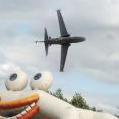
X-Plane 12 : State of the Union
virtualgaa and 2 others reacted to rcmarple for a topic
This certainly helps explain the "payware lag" that developers have had to contend with to upgrade v11 acfs to the brave new world of v12. Imagine having someone work for months fixing lighting/flight model or whatever, only to find it changes again? *** Message to developers - I DON'T MIND PAYING FOR UPDATES - keep at it 🙂 ***3 points -

Scenery Review: Antarctica Mega Scenery XP12 by HSimulators
Kiwiflyer and 2 others reacted to Dominic Smith for a topic
Scenery Review: Antarctica Mega Scenery XP12 by HSimulators By Nick Garlick Introduction I am both thrilled and privileged to return once more to share with you my insights and impressions on the newest addition to the X-Plane 12 scenery library: Antarctica Mega Scenery XP12 by HSimulators. As we embark on this new journey, let's turn our compasses southward this time, to the other forgotten extreme of our planet: Antarctica. The Antarctic, a desolate, icy wilderness at the southernmost part of the globe, has, much like its northern counterpart, been largely overlooked in the world of flight simulation. Despite its vast expanse, spanning over 5.5 million square miles and including the South Pole itself, Antarctica is practically non-existent in the default X-Plane landscape. As I previously highlighted in my review of HSimulators' Grand Arctic XP12, the default installation of X-Plane, unfortunately, offers only sparse coverage of the world's polar regions. Exploring beyond latitude seventy-four north or sixty south reveals a desolate void, filled not by the expected expanse of ice and snow but by featureless, open water. Thankfully, HSimulators once again steps into the breach with their Antarctica Mega Scenery XP12. Building upon the success of their Arctic scenery, this new package aims to provide a comprehensive solution for this neglected region of the world. It covers a vast area that includes not only the Antarctic mainland, but also numerous research stations, airstrips, and points of interest scattered across the continent. Having thoroughly enjoyed their Grand Arctic scenery, I was eager to see how HSimulators' latest offering would compare. Can it effectively fill the icy void in X-Plane's world, and will it manage to capture the harsh, but often breathtaking beauty of the Antarctic landscape? Join me as I explore these questions, and many others, in this detailed review of Antarctica Mega Scenery XP12. Installation & Documentation Considering the sheer magnitude of the Antarctic continent, the 7GB download size of the package comes as no surprise. Unzipping the files will have you carving out a hefty 31GB of space on your hard drive – hopefully, a testament to the scale and detail captured within this add-on. The installation process is as straightforward as they come, as it’s just a case of dragging and dropping the 'Custom Scenery' and 'Global Scenery' folders into your X-Plane 12 directory. HSimulators have, in this regard, stripped the process down to bare bones, making it accessible even for users new to scenery add-ons. However, this straightforwardness also presents a significant shortcoming. The absence of documentation included with the download is notable and quite disappointing. While the simplicity of the installation might mitigate this issue for experienced users, those new to X-Plane could find themselves at sea without explicit guidance. Moreover, the lack of accompanying information for the numerous locations featured in this package feels like a missed opportunity. Maps, charts, or even simple descriptions could have provided invaluable context to users venturing into these visually stunning, yet unfamiliar landscapes. Hopefully, HSimulators will address this issue in future updates. Scenery & 3D Objects Quality Any addition to the limited default scenery of the poles in X-Plane is always a noteworthy event, and HSimulators' Antarctica Mega Scenery XP12 definitely rises to the occasion. The expansive polar wilderness isn't merely a barren expanse of ice in this sim; the intricate terrain details breathe life into the Antarctic landscape. Indeed, HSimulators have skilfully painted a comprehensive picture of Antarctica, complete with visible mountains and plateaus that punctuate the ice. The coastal regions, in particular, are generally well-rendered, albeit with a few anomalies. Some shorelines might appear a bit inconsistent, and mountain spikes might be a tad conspicuous in a few spots. Still, considering the monumental task of recreating an entire continent's worth of diverse terrain, these minor aberrations within the custom mesh can be easily overlooked. When it comes to 3D objects, I would say that they are adequate and do a reasonably good job of conveying the objects seen at numerous bases. However, it's important to note that there is a degree of artistic license used in the design of these elements. Some objects that have been included may not exist in their real-world locations but serve to enhance the overall aesthetic and immersive qualities of the scenery. This is not necessarily a drawback, but rather an artistic choice that gives the scenery its unique character. Quality does vary though, with some objects being a lot better than others, with the living quarters at some of the bases being excellent examples. Some of the other objects, such as a few of the vehicles and smaller huts, could use improvement, as I noticed some subpar textures and unwanted shine on a few of them which looked rather unnatural. However, much like the mesh, the overall effect is quite pleasing. With the above taken into account, the overall impression of Antarctica Mega Scenery XP12 is of a barren and isolated landscape dotted with unique and interesting bases. Each base, with its unique set of objects and structures, lends an authentic feel to the harsh Antarctic environment. With room for improvement in some areas, HSimulators has nonetheless done a commendable job at delivering a scenery package that makes the unforgiving Antarctic landscape come alive in X-Plane 12. Key Locations The sheer breadth and diversity of this package is such, that it would be beyond the scope of a single review to explore each of the forty-four locations in detail. Instead, I have chosen to focus on eight select destinations that I believe exemplify the quality and variety of this expansive scenery pack. These locations, carefully selected from the array of available bases, stations, and airfields, offer a cross-section of the different settings and challenges you'll encounter in this Antarctic scenery. From the bustling activity of McMurdo Station to the icy runways of Williams Field, these seven locations each tell their unique story within the stark, beautiful landscape of Antarctica. Rothera Research Station (EGAR) - UK: Rothera Station, the UK's principal Antarctic hub, stands as a testament to human determination against the unforgiving Antarctic environment. The station's coastal location presents captivating vistas of stark white glaciers meeting the steel-blue sea, an experience that really stands out in the sim. As you navigate through the array of facilities, the immersive depiction of Rothera Station effectively captures the essence of its challenging climate and natural scientific intrigue. McMurdo Station (NZIR) - USA: As the largest and most complex Antarctic outpost, McMurdo Station presents a unique facet of Antarctic habitation within X-Plane. Numerous buildings, representative of the station's multifaceted operations, create a bustling hub of activity. Each structure, despite some not aligning perfectly with the custom mesh, adds to the realism and enhances the sense of being part of this essential survival outpost. Sanae IV (A22) - South Africa: In the icy expanses of Queen Maud Land, the Sanae IV base is a tangible testament to human presence amidst a stark, monochrome landscape. The sim presents an array of huts, snowploughs, and even a parked C130, giving a sense of real-world Antarctic operations. Dominating the scene is the large outpost structure with its integral helipad. Exploring this base in X-Plane 12 offers a unique insight into the challenges of surviving and working in this remote, icy wilderness. Neumayer Station III (EDDN) - Germany: Located in Antarctica's icy expanse is Neumayer Station III, Germany's primary Antarctic research facility. The station's elevated design, mounted on stilts to withstand snow accumulation, is captured quite effectively in X-Plane. The airstrip, including another static C130, plus several snowploughs and huts, add to the authenticity and intrigue of this remote location. The nearby radar dome further enriches the scene, providing a comprehensive and immersive experience for users. Halley VI Research Station AT11 (EGAH) - UK: Situated on the Brunt Ice Shelf, the Halley VI Research Station stands as a futuristic beacon amid the Antarctic wilderness. Its stilted, modular design, portrayed quite accurately in X-Plane, provides a sense of the innovative engineering necessary to withstand this harsh, shifting environment. Of all the locations in this package, Halley VI stands out as one of the most intriguing, not only for its detailed modelling but also for its modernistic, captivating design. Rodolfo Marsh Martin Airfield (SCRM) - Chile: This Chilean station, located at the edge of Antarctica, is a noteworthy addition to the sim. Its proximity to the shoreline presents an interesting contrast between the rugged airfield and the surrounding icy expanse. The airfield, with its simple yet functional features, exemplifies the practical necessities of life in this harsh environment. Williams Field (NZWD) - USA: As an essential airfield serving the McMurdo area, Williams Field effectively captures the vast and intricate landscape of this unique location. X-Plane does well in replicating the ice runway and surrounding facilities, delivering an insightful glimpse into the unique challenges faced by Antarctic aviation personnel. The scenery is teeming with numerous huts and maintenance vehicles, contributing to the sense of a bustling, fully operational outpost. Despite the presence of some minor graphical anomalies on certain objects, their impact on the overall experience is negligible. Palmer Station (NZ12) - USA: Located on the Antarctic Peninsula, Palmer Station provides a unique contrast with its coastal setting and smaller size. Its proximity to the ocean gives users a distinct Antarctic experience, differing from the predominantly inland stations. This variety makes it an intriguing component of the sim, highlighting the diverse geographic and operational challenges present in Antarctica. Conclusion In assessing Antarctica Mega Scenery XP12 by HSimulators, it's hard not to appreciate the sheer magnitude of the undertaking. The vast expanse of the Antarctic continent has been transformed into a tangible, explorable, and remarkably detailed environment. It's a change of scenery that X-Plane 12 users have long been waiting for. Performance-wise, the scenery is commendable as it offers excellent framerates no matter what the weather. The barren landscape of Antarctica, far from being a disadvantage, has contributed to making this a smooth-running addition to the sim. Even when exploring more densely populated bases, or navigating complex terrains, the performance remains consistently good, which is a testament to the efficient design and implementation of this scenery package. However, one disappointment is the lack of documentation accompanying the package. The absence of guides, maps or charts, and additional information on the various bases and locations, feels like a missed opportunity. It would significantly enhance the user experience and, I hope, is something that the developers will consider for future updates. At US$29, some might argue that the purchase price is quite steep for a scenery add-on. However, when you consider the geographical breadth of the package, over five million square miles of diverse Antarctic terrain, and the meticulous detailing of forty-four separate locations, it becomes clear that you're getting a significant return for your investment. While the inconsistencies noted in areas such as object detailing and shoreline rendering, along with the degree of artistic license employed in some parts, are worth acknowledging, they do not significantly detract from the overall experience. Given the size and complexity of the project, minor blemishes are almost to be expected. Importantly, they do not diminish the thrill of venturing into previously uncharted territories in X-Plane 12. In conclusion, Antarctica Mega Scenery XP12 is a daring and ambitious project that has largely succeeded in its goal. It offers a rare and exciting opportunity for X-Plane pilots to explore the often-overlooked Antarctic region. Whether you're captivated by the stark beauty of its landscape or intrigued by the challenge of its harsh conditions, this scenery pack is an invitation to a unique and compelling polar adventure. So, fire up your engines, adjust your flight plan southwards, and embark on an Antarctic journey that's sure to be both memorable and rewarding. _______________________________ Antarctica Mega Scenery XP12 by HSimulators is available from the X-Plane.Org Store here: Antarctica Mega Scenery XP12 Priced at US$29.00 Features Mesh terrain covering more than five million square miles (over thirteen million km2) Forty-four airports, heliports, and localities 3D Airports Tnt Rodolfo Marsh Martin - SCRM - Chile Amundsen - Scoth South Pole - NZSP _USA Sanae IV - At22 - South Africa Byrd Surface Skiway - BIRD - USA Progress Station - PGRS - Russia Zhongshan Station - China - Served by Progress Station Novolazarevskaya - AT17 - Russia Mario Zuccelli Station - AT13 - Italy Enigma Lake- AT-09 Nova Zelandia Browning Pass - AT02 - New Zealand Palmer Station - NZ12 - USA Concordia Skiway - AT03 - France / Italy Dumont d'Urville Station - AT04 - France Plough Island Skiway- PLGI - Australia Kunlun - KULU - China Davis Plateau - AT07 - Australia Davis Sea Ice - ATAU - Australia Druzhnaya 4- DRUZ - Russia Fossil Buff - AT10 - UK Halley Research Station - AT11(EGAH) - (discrepancy in navdata - EGAH) - UK Rothera Research Station - EGAR - UK McMurdo Station- NZIR - USA Kohnen Station - AT12 - Germany Marambion Base Station - SAWB - Argentina Marble Point Station - GC07 - USA Mawson Station - AT21 - Australia Mid Point Skiway - AT14 - France / Italy Molodezhnaya - AT15 - Russia Neumayer Station - AT16 - Germany Odel Glacier Skiway - AT18 - New Zealand OHiggins Station - AT19 - Chile Ohiggins Station HLPN - OGGN - Chile Patriot Hills - SCPZ - USA Willians Field - NZWD - USA Pegasus Field - NZWD - USA Phoenix Airfield - NZFX - USA Plateau Station - NZFX - USA Troll Station - AT27 - Norway 2D Airports (in development 3D) Petrel Station - SA47 - Argentina Perseu Temporary Airfield - PRSU Rumdoodle Station - AT28 - Australia S17 - JS17 - Japan Requirements X-Plane 12 Windows Mac or Linux 4 GB VRAM Video Card. 8Gb+ VRAM Recommended Download size: 7.5 GB. Current version: 1.0 (January 18th, 2023) Review by Nick Garlick 7th July 2023 Copyright©2022: X-Plane Reviews Review System Specifications: Windows 10, Intel 4790K liquid-cooled, overclock to 5GHz, 32GB DDR3 1600MHz RAM, Nvidia GTX 1070ti, Titanium HD Audio Card. (Disclaimer. All images and text in this review are the work and property of X-PlaneReviews, no sharing or copy of the content is allowed without consent from the author as per copyright conditions) All Rights Reserved3 points -
Aircraft Review: AOASimulations-T6A Texan II X-Plane 12 By Stuart McGregor Introduction The release of the AOA T-6A Texan ll was done in the change over twilight zone of a legacy version with its ground-breaking advancements that was achieved with X-Plane 11, which essentially is at the end of its commercial run, and the eagerly awaited X-Plane 12, which still had some way to go until it is in its final release state in December 2023. For us armchair pilots this can be a little frustrating in our 365, 24/7 on-the-go world, where patience isn’t a commodity you see a lot of these days, so I can only imagine the dilemma this gives commercial developers. Do you wait until all the i’s are dotted and t’s crossed in X-Plane 12, or do you continue creating and releasing in X-Plane 11, knowing the platform has been superseded by its younger brother? AOA Simulations decided not to wait to bring us their ‘Texan’, the T-6A Texan II. The aircraft was released for X-Plane 11, with a commitment of a free upgrade to X-Plane 12 for existing users when the simulator upgraded to the new version. That X-Plane 12 release has now happened, and to top off the T-6A package you get both versions for X-Plane 12 and X-Plane 11. In real life, the Texan is described as a single-engine turboprop aircraft and has been around since the late 1990s. It has been used as a training aircraft by several military organisations around the globe and more than 850 have been built to date. From what I have read, it is still very much the mainstay of the United States Air force and Navy when it comes to pilot training. It has a low wing cantilever design with the majestic Pratt & Whitney PT6A-68 1100 hp engine, tandem seating arrangement with ejector seats to allow the flight instructor and trainee to live every moment together, all topped off with a hefty four-blade constant speed, variable pitch prop. The Texan also has a retractable tricycle landing gear assembly, with many of the features being based on the original development aircraft, the Pilatus PC-9. However, don’t be fooled, because the Texan is indeed a very different aircraft in many ways. To explain this in greater detail, the AOA Simulations folks have included a very nice reference document in the manuals section of their package that describes the Texan’s development journey. This is well worth a read to see just how much it has changed from the original Hawker Beechcraft development PC-9. I personally always like additional features like this because in my opinion they bring a greater level of depth to the user experience and allow a more immersive environment when you know a bit about the aircraft, its history and how it came into being. Documentation I will be honest and say that military jets and combat aircraft are not an area I typically venture into very often, so when I had the opportunity to try out what looked a bit like a fighter jet with a prop on its nose, I was intrigued to find out more. My GA side was screaming, “Oh yes please!” The package in review comes in a 360MB download with the aircraft itself and a couple of liveries, as well as a few added extras in terms of documents. In the Manuals folder, you will find an alternative abbreviated checklist (X-Checklist plugin is required) to the one provided by default, a paper kneeboard checklist you can print, emergency procedures, a training flight tutorial with charts (KNGP to KRND), pictorial overviews of flight instruments, and if you are a MAC user, there is an explanation of a workaround if you experience issues when you first load the model. There is also a highly detailed 38-page User Guide to take you through every inch of the aircraft and that is a must-read if you really want to get the most out of the Texan. The developer has also included some contact details and links of where to request help if you get stuck. Sadly, I can’t offer any comment on how successful the MAC workaround is, as I use a PC, however it looks like the developer has put some serious thought into the issue which is good to see. The Aircraft The developers quote that their Texan has been in development since early 2020 and clearly a huge amount of work has gone into the aircraft. You get a real sense of the details and the hours of work by just reading the manual alone, so I believe it is fair to say that the Texan really does come fully loaded. I loved the fact that both the front and rear cockpits are fully functional, thus providing a unique flying experience from each seat, and it was nice to be able to have the choice. The internal details in both cockpits are well presented and bristle with features. The texturing is of high resolution and high quality, and I found reading the various dials and panels to be of no issue, even in VR, when using my Rift S. The developers even quote that the Texan has been optimised to maximise performance in VR, and I would have to admit, that when using my system, I had no issues and enjoyed a very smooth experience. When you first step into either cockpit, it is a bit daunting if you’re not used to military-style aircraft, however, the automated tutorial-level Checklist provided is very useful when navigating around the various systems. In my tests, I probably only scratched the surface of the instrument capabilities of the Texan, and you literally could spend hours and hours just working through your flows and testing out every feature, switch, lever, knob, button, panel, and fuse. As far as I could tell, everything shown works or is at least animated. If you are used to flying fast jets, I am sure the layout will come very naturally to you, however, I must admit it did take me a little time to work my way around. By the way…the ejection seat does work, so be careful with that handle!!! The unobstructed view that the glass canopy offers, is truly excellent, particularly in VR, and you really get a sense of just how compact and well-fitted everything is around you. The feeling of being in the cockpit was something I really enjoyed, and as I mentioned previously, just moving a few feet back to sit in the rear seat, adds a totally different dimension to the experience. The Texan comes with specially created FMOD sounds and the cockpit interaction sounds were nicely done, from the very subtle fuse click actions to the more distinct canopy locking mechanism. From the X-Plane main menu bar, you can access the dust lock removal option, as when in cold and dark, there are several covers protecting sensitive parts of the aircraft. Even these covers are well modeled, as they sway gently in the wind, a very nice touch and great attention to detail. From the outside when the canopy is open in cold and dark, there are no pilots visible, however, they both appear when closing the cockpit and removing the dust covers. The characteristic turbine whine as the engine starts up is very nice, and you really do have the sense of that mighty Pratt and Whitney engine roaring into life right beside or in front of you. As you move around the exterior of the aircraft, the engine tone changes as you would expect, and this is particularly noticeable when you throttle forward and set the Texan into action. The sense of power from the 1100hp engine and prop thrashing through the air as you accelerate down the runway is something you must experience to really appreciate it. The exterior details of the Texan are superb in my opinion and incorporate very high-quality textures, such as the hydraulic lines in the landing gear, through to the multitude of rivets across the shiny aircraft skin. During prefight, it is worth just taking a few minutes to walk around the aircraft and take in the quality of the modelling, and this is particularly impressive if you can do this in VR. You can literally walk up to the various parts and take a good look, reach out and almost touch the surfaces. There is a significant difference between the X-Plane 11 release version and the X-Plane 12 here. You will see far more detail added, and the surfaces are more highlighted than before, the result is a substantial and better overall realism to the aircraft. The developers really have done a wonderful job both inside and out, and in my opinion, the Texan is one of the best in terms of overall appearance, although I do still think it is a little bit of an oddball with the fighter-style canopy, dual seating arrangement, and that big old prop at the front. It does take a little bit of getting used to at first. Now, if you’re anything like me, when you get a new toy, the first thing you want to do is to try it out, so the thought of working through a full set of start-up procedures may not be top of your list. The good news is that very early on, the developers thought of us “impatient types”, and kindly provided a very nice simple 11-step process on page 5 of the User Guide to get up and flying, and this is very helpful. Now don’t get me wrong, at times there is a real sense of satisfaction about going through every step of your flow and eventually seeing the ground disappear below, however, at times I just want to start up and off I go. I like the fact that in the Texan you can do both and I did, although I must admit that just firing up and heading down the runway was my preference. This is perhaps a suitable time to mention that I am using a VKBSIM joystick and pedal set as my control inputs, and I found these to work very well both on the ground and in the air. As there are no toe-brakes with these pedals, I did use a small script to give me brakes and this worked well, although there is a stick forward option that you can use within the aircraft if you prefer. I had no complaints about the handling of the Texan, although care with the throttle is highly advised both when taxiing and when taking off. There is a mighty amount of power at your fingertips, so my advice is to use it wisely. As they say, ‘with great power comes great responsibility…’ and never a truer word was said in the Texan’s case. Remember this thing can do more than 300 knots when flat out!! The glass canopy really does give an amazing view, particularly in VR, however, if you are using flat screens the developers have included a couple of highly novel add-on features to enhance your views in the cockpit. The manual goes into quite some detail to explain what you can expect; however, the best way is just to try them out. These are actioned via buttons on the glare shield and using dedicated buttons on your controller, and the ‘Roll to See’ feature allows you to pan around while taxiing, as well as some interesting effects when doing aerobatics. The Target Track feature allows you to lock on to AI aircraft if you are flying in formation (a key skill by all accounts) and if you are familiar with other aircraft from AOA Simulations, you are likely to be at home with this feature already. As I do most of my flying in VR, these features are disabled so I didn’t spend a huge amount of time testing them out, however from what I did see, this is quite unique and adds another and different layer of immersion to the Texan. One final system feature I would like to highlight is the Flight Assistance system which allows various assistance features to be turned on and off. The button is a bit fiddly to find (highlighted in the manual on page 11) however there are eleven different features such as AOA indexer and brake cues, airspeed indication of gear and flap speed bands, wind direction and speed, through to braking using the control stick and many more. The basic idea is to make life as easy as possible for any newbie pilot or as realistic as possible by switching this off for those who would like more of a challenge. When you are new to an aircraft, this sort of thing really does help, as there is nothing worse than getting frustrated and giving up before you have even started. The lighting is basic, mostly indirect lights on the the panels and the two side wall lights on the separate consoles. You can move the instrument panel spot lights to where you want them to shine on. Externally the landing and taxi lights don't work unless you lower the gear, as they are positioned on the inner gear struts. As I mentioned earlier, the Texan is fully loaded with so many great details and features, and although this type of aircraft is not necessarily my “go-to” happy place in the sky, the more I flew it the more I came to appreciate just how good an offering this is from AOA Simulations, both in terms of the basic aircraft but also just how enjoyable the overall flying experience can be. If you also like lots of technical details, procedures and everything that goes with that side of things, then again, I believe the Texan has something to offer you. Final Thoughts The T-6A Texan II from AOA Simulations, under normal circumstances, is an aircraft I wouldn’t typically be flying, however, I am glad I had the opportunity, as it’s always good to try something new. When you factor in the excellent internal and external textures, the 3D modelling, the control and integration of features, the sounds, and of course the flying experience, I think it’s fair to say that the AOA team really has put out an excellent product. Available now for both X-Plane 11, and to be experienced in X-Plane 12, all the new features in the sim in combination with the Texan’s feature set, it is something quite special. A real synergistic masterpiece… So, should you splash out $40 on the Texan? Well as always that is down to you, your budget and what you are looking for. However, I truly believe that the Texan is well worth thinking about, especially if you have considered the fast jet challenge but have not been sure where to start. If it’s good enough for real-world pilots, then it certainly works for me! __________________________________ The T-6A Texan II by AOA Simulations is now available from the X-Plane.Org Store here: T-6A Texan II Price at time of writing US$40.00 Features: This model was developed using the official USAF 1T-6A-1 Flight Manual and SNFO (Student Naval Flight Officer) P-880 Aircraft Systems explanatory guide. Two default liveries, USAF and U.S. Navy TAW-5. 17 additional liveries will be available on the X-Plane.org freeware download manager. This is the T-6A model with federated (many small units combined into one system) glass display panels. The project has been in development since February 23, 2020 and is our most detailed model to date. The Model High quality 3D model with high-resolution, 4K PBR textures. Fully functional virtual front and rear 3D cockpits with more than 380 control manipulators. Everything works, fly from either cockpit. Both pilot and instructor models visible in cockpit views. Optimized to save FPS in VR. Ground equipment The Flight model Fully aerobatic, high performance dynamic flight model tested and approved by several former T-6A pilots. Single “Power Lever” control of engine and propeller enables "jet like" simplicity. Unique T-6 Trim Aid Device (TAD) is accurately modeled. This compensates for most engine torque effect with automatic rudder trim. Sounds Professional FMOD sound package by SimAccoustics Documentation Detailed 38 page User Guide and detailed avionics illustrated guide sheets available HERE ON OUR SUPPORT PAGE prior to purchase. Several checklists options to choose from including detailed checklist powered by Xchecklist freeware plug-in. Tutorial checklist and example Training Flight to get you up to speed with the aircraft. More details All panel displays are accurately modeled and powered by SASL plugin / lua code Complete electrical systems model. Every circuit breaker on both the battery and generator bus panels is functional. Individual systems can be isolated, failed and restored via its cockpit circuit breaker. Optional "AOA Extras" for student pilots or those who want to know a little more about what's going on with while the fly. Save load feature allows you to save some options once and they are the same on your next flight in the model. Default Laminar G1000 available to use with a custom database in the panel mounted GPS unit. Future developments This model is for X-Plane 11 only. It is not compatible with X-Plane 12. When X-Plane 12 is stable then a new version will be released as a free upgrade for existing users. Requirements: X-Plane 12 or 11 4 GB VRAM Video Card Minimum - 8 GB+ VRAM Recommended Download Size: 360 MB Current version: xp12 (March 1st 2023) Review System Specifications: Windows 10 64 Bit CPU Intel i9-9900k 64GB RAM Nvidia RTX 2080 Ti Oculus Rift S Aircraft Review by Stuart McGregor 3rd March 2023 Copyright©2023 : X-Plane Reviews (Disclaimer. All images and text in this review are the work and property of X-PlaneReviews, no sharing or copy of the content is allowed without consent from the author as per copyright conditions)3 points
-
Aircraft Update Review : Gulfstream 550 v1.10 by AKD Studio Since it's release back 28th October 2022 there has been 10 (including this one) updates to the AKD Studio Gulfstream 550, obviously four months and with 10 updates in that time period, it shows the huge amount of the development that has changed on the aircraft in those few months, a lot obviously, and the changelogs are long. I'm not going to note all the fixes here in this update review, but only the ones that are significant. I really liked the aircraft on it's release, but the G550 did however feel a little bit under developed, it is a new developer to the X-Plane platform as well in AKD Studio's so there is a lot to learn and refine, but the above changelogs shows the improvements are going in there and very quickly... Release review; Aircraft Review : Gulfstream 550 by AKD Studio After four months both the Gulfstream 550 and X-Plane 12 feel far better than they did back in October... as together they have both matured nicely. Externally there have been small changes, however not still on the front windscreen surround, as they are still missing the screws? but the side windows now show the glass reflections, and not a hollow hole, so the fuselage as a whole feels far better (the cabin windows here on the G550 are really big). Cabin window blinds/shades were added in v1.04, very nice. Biggest change in v1.10, is the addition of a cargo hold area, this is on a revised menu "Ground Handling" page noting now an opening rear door, set below the Main Door operation. Access can also be through the rear bathroom (new door) to the very well done cargo bay, I like the wire protected lights, a nice touch... you can also open and close the cargo hatch manually from the inside. More new features in v1.10 include both an AC and DC GPU's (Ground Power Units), and they are both well done, both available on the Ground Handling page. The "Fuel" or loading page has been upgraded as well. You can set your fuel load by the + or -, but also by scrolling on the REQ TOTAL to add in or off load fuel... When pressing SET you get now a well modeled tanker outside. You can also set the cargo weight (both Kgs and Lbs are available), and finally your Passenger load of up to 16 Passengers, weights are adjusted to the loading parameters. Pressing BOARDING, will activate a Tesla Car (It takes ages to turn up) and proceeds to deliver passengers and luggage to the aircraft... when done it goes away, to unload passengers you press the selection "Take Passengers to Terminal". If you had read the release review, we have seen this Tesla before, but at the totally wrong scale. It is now the right scale, but in reality it is all still a bit odd isn't it... I mean how would you get 16 passengers into a 5 seater Tesla? A Mercedes Bus would have been a better idea, the Tesla doesn't feel finished either? The Fuel truck has an annoying foible as well, it appears simply out of nowhere, then suddenly disappears again when the aircraft is refueled, so there is no animation to the jet or in leaving? Static Elements can now also be selected to appear on startup. Other external notes include... wheels now actually touch the ground! In v1.04 the internal lighting had an overhaul. There are sixteen individual sets of lights around the huge cabin, these can be all switched on or off manually at each light, or on the selections of the CABIN LIGHTS Menu page... Thankfully you can "Turn on all Lights", and do the same to turn them all off again... And very nice it all is in the cabin... there is a secondary lighting page that covers three areas, rear Bathroom and each side downwash lights... This gives you a more softer cabin feel, and lights up separately the bathroom. It does also help lighting up the galley area which was extremely dark before, and sort of the entrance, which I complained about in the release review. Oddly the Red on to the Green off selections are the opposite of the cabin lighting commands? Lighting is better, but it still doesn't quite all work? as separate galley and baggage area lighting is what is really required here, and you still some entrance lighting missing... the stairs have the inbuilt lighting elements shown, but it doesn't work... as light bleed into the cockpit with no door is a problem? External lighting was upgraded in v1.05. It is very good, if the main landing lights a bit over bright? There are Navigation, Strobe, Beacon (belly), Ice/Wing and wheelwell lights.. the tail light is too dull to be effective. Cockpit lighting is good, and it comes with a lot of adjustments, with glareshield dropdown lighting, yoke, overhead and side panel lighting. The only thing I didn't like, was that I couldn't dial out the footwell lighting... this made bright reflections upwards on to the instrument displays, so an all dark cockpit was not possible. While we are still in the cabin, the window frames are still quite average and they come with nasty gaping holes and badly fitted cabin (glass) windows. Yes while flying you do have to look through these badly made windows and I'm not in liking the view!... however the "Time to Destination" has been added to the Cabin Display. Don't get me wrong here, the lighting is now very good, but still needs more refinement to be effective, or totally realistic. Instruments The HUD (Head Up Display) now works... just touch it to drop it down. You have to adjust it, as the form and lettering is too thick and that is done via the knob above, it works, but it's not the best available, it also still feels like a WIP. "Banana" indicator is now working on the PFD. On the MAP/MFD you now have the Terrain Radar working as well. It is the DrGluck (Plugin v1.30+) tool and the plugin is required. The Terrain shows the Independent terrain display on both the left and right displays, and it also gives you a working Vertical Situation Display. I always had issues with the METAR report on the menu. Add in your ICAO code and the system would freeze, or CTD. Now it works, but not by pressing the PRINT METAR? but by doing a keystroke RETURN, still very odd? But at least you now don't freeze the Sim. Support for 8.33 kHz radios is now also available. Flying v1.10 Gulfstream 550 For updating the Skunkcraft's Updater now works with the aircraft, thankfully with so many updates it is a very useful tool. In v1.07 in December, a Manual was also delivered (by Ivan Luciani), seriously you had to wait two months for a Manual, and you wonder why reviewing is hard without developer notes. Look closely and you will find now there are pilots flying the aircraft, they are the default Laminar Pilots, but still a great addition. In v1.05, there was a lot of performance changes (a change over to SASL v3.15 was also completed) by AKD. I found the release aircraft not to bad to fly actually... but in the takeoff roll and climbout, it was even far better in this later version. Changes include engine performance, flight model and better airfoils. And the new wingflex is also very noticeable, mainly because it wasn't done before? It is worth noting that the engine performance and flight models, are tuned to each different X-Plane version, X-Plane 12 or X-Plane 11. Obviously the X-Plane 12 dynamics are better, as felt here. Added or refined is the rain effects (V1.03) on both forward windscreen and side cabin windows The AKD G550, is a quite complicated aircraft to fly, there is a lot of detail to cover in here with the Symmetry Flight Deck, and the specific glareshield "Display Controller" system. But it is well worth the effort to do so. I will admit I'm not crazy about the manuals? There is a lot of them in sixteen categories, but they are done in a drawing layout? Interesting in one way as the detail is very good... but odd in another. Specifications are; Range 6,750 nmi (7,770 mi, 12,500 km) range, with a High Speed Cruise: M0.85 at 41,000 ft (12,497 m) or the standard Long Range Cruise: M0.80 at 41,000 ft (12,497 m), and you can cover the ground with a Service ceiling: 51,000 ft (16,000 m) Flying 41,000ft at m.80 is the dream of living with the Gods, but you can easily do that with this Gulfstream, it is a great simulation with high numbers. Fixes on the the instrument panels are high; NavSource on Display Controller, squawk page in FMS3 radio panel, better RNP indicator on DU1/DU4 and fixed AoA indicator DU1/DU4, Stall warning system logic, Altitude mismatch on ALT tape and Autopilot FLCH mode. Note a confusing thing is using the Autopilot. Noteable is that the G550 does not have an Autopilot, hence the trickery here... To activate the Autopilot, which is set below the Speed selector... you press one of the screws on the left of the panel, hard to find if you don't know where it is, otherwise you get a yellow caution alert. At Mach 80, faster if you want to, you travel and arrive at your destination quickly, here I'm back at EVRA Riga, Latvia. You just like looking at the Gulfstream, because it is a very nice aircraft to look at... I still can't work out how to ARM the Airbrakes for landing, press the button, positioned rear the centre console, but it doesn't ARM? Nice 6º nose up flare, shows nice control in the flare, and you lower the power to sweetly touch the runway... nice and easy. Sounds haven't had much attention in the updates, but the reverse thrust is loud and powerful... Flaps are MASSIVE, and lower to the full 39º... The full landing configuration is shown on the PFD, and I really still can't get over how much I like this visual FLT arrangement, brake pressure is shown as well. The Gulfstream 550, puts the world at your feet, it is an intercontinental flying machine, and in v1.10 it better than ever, not totally perfect, but a great simulation. Summary In world of the elite, then the word of Gulfstream is the biggest token you can play in this upper exclusive club. The Gulfstream G600/G700/G800 Series was built upon the last series of G500/G550 Series and that series evolved out of the Gulfstream V as the GV-SP. First an almost disclaimer on the review and the aircraft. The Gulfstream G550 is a first time project by AKD Studios and obviously they have to pick an extremely complex aircraft to start with, add the release right in the middle of a new X-Plane 12 Beta run, and you can expect a lot of bugs and weird things with the aircraft. It's not like that at all in context, in fact it flies very well. But it is very hard to do development on shifting sands. This update review covers the extensive update list from the release aircraft (v1.0), to the current version v1.10. The update list here is extremely long, but the main features are a new Cargo/Baggage area, with animated door, internal detail is very good. New Fuel Tanker, Two GPU AC/DC units and a smaller (scale) Tesla car, with a lot of touchups and details externally. Cabin lighting has been totally redone, but still needs some fine tuning and stair lighting, but far better than the original set up. HUD HeadUp Display now works, as does the inclusion of DrGluck's Plugin v1.30+ that has Independent terrain display on the left and right displays, and a working Vertical Situation Display. Pilots have been added as has WingFlex, and a lot, a real lot of changes to the engine performance, flight model and custom performance for both X-Plane 12 and X-Plane 11. I still have a few quibbles, poor window surrounds, lighting still not right, default FMS, pop in/pop out Tanker and other quirks, but you have to understand to a point this aircraft (and by the extensive list of updates) is really still a work in progress, it has in reality come a very long way since it's release late October 2022, obviously released too early, but the developer has made some highly significant progress on the aircraft. Personally I absolutely love the Gulfstream G550. X-Plane has wanted a really excellent transoceanic Private Jet for decades and here it is, it is also available in X-Plane 11 and more importantly in X-Plane 12 in the same value package of just over US$30. For your money you get a lot of aircraft with it's Gulfstream related systems. ________________________________ The Gulfstream 550 v1.10 by AKD Studio is NOW available here at the X-Plane.OrgStore GLF550 - Ultimate Business Jet by AKD Studio Price is US$31.95 This aircraft is now both X-Plane12 and X-Plane 11 supported Requirements X-Plane 12 or X-Plane 11 Windows, Mac or Linux 4 GB VRAM Minimum - 8 GB+ VRAM Recommended Download Size: 1.1 GB Current version : 1.10 (February 7th 2023) Download for the Gulfstream 550 by AKD Studio is 1.03GB And the final install in X-Plane Aircraft folder with the above loaded liveries is; 2.53gb. Authorisation is required. The AviTab plugin is also required to use this aircraft, and it is deposited in your X-Plane Plugins folder. Simbrief proflie is; https://www.simbrief.com/system/dispatch.php?sharefleet=256234_1658264083720 Documents AKD GLF550 Introduction.pdf FMS_Manual.pdf GLF550 Normal Checklist.pdf GLF550_air_conditioning_system.pdf GLF550_auxiliary_power_unit_(apu)_system.pdf GLF550_electrical_system.pdf GLF550_fire_protection_system.pdf GLF550_flight_control_system.pdf GLF550_fuel_system.pdf GLF550_hydraulic_system.pdf GLF550_ice_and_rain_protection_system.pdf GLF550_landing_gear_and_brakes_system.pdf GLF550_oxygen_system.pdf GLF550_pneumatic_system.pdf GLF550_powerplant_system.pdf GLF550_pressurization_system.pdf Changelog Changelog v1.10.txt Designed by AKD Studios Support forum for the Gulfstream G550 _____________________ Aircraft Review by Stephen Dutton 18th February 2023 Copyright©2023: X-Plane Reviews Review System Specifications: Windows - 12th Gen IS1700 Core i7 12700K 12 Core 3.60 GHz CPU - 64bit -32 Gb single 1067 Mhz DDR4 2133 - PNY GeForce RTX 3080 10GB XLR8 - Samsung 970 EVO+ 2TB SSD Software: - Windows 11 Pro - X-Plane 12.01r3 (This is a beta review). Plugins: JustFlight-Traffic (X-Plane.OrgStore) US$52.99 : Global SFD plugin US$30.00 : RK Apps XPRealistic v2 - US$34.99 Scenery or Aircraft - ELLX - Luxembourg Findel Airport v2.1 by JustSim (X-Plane.OrgStore) - US$19.95 - EVRA - Riga International Airport v2 by JustSim (X-Plane.OrgStore) - US$18.50 (Disclaimer. All images and text in this review are the work and property of X-PlaneReviews, no sharing or copy of the content is allowed without consent from the author as per copyright conditions) All Rights Reserved3 points
-

Aircraft Update : Airbus A350-900 XWB Advanced v1.6 by FlightFactor/SteptoSky
Elocutioner and 2 others reacted to Stephen for a topic
Aircraft Update : Airbus A350-900 XWB Advanced v1.6 by FlightFactor/SteptoSky Since the earliest days you mostly saw FlightFactor Aero as a Boeing developer, there was the Boeing 777, then the Boeing 757 and then the Boeing 767... then out of the blue came an Airbus in the Airbus A350-900 XWB. But right from the first version of this aircraft it never felt... well very Airbus? Where as all the Boeings felt and flew like Boeings. Since the A350 FlightFactor went on to do another Airbus in the A320 Ultimate, which DOES feel like an Airbus and is still the best Airbus in X-Plane. But the FlightFactor A350XWB was a really odd aircraft from the start? Excellent on the external, the A350 always looked very nice in X-Plane. The clever six display layout with X input system is also really clever and is well done (early versions were however extremely buggy) and the airbus system depth is very good. So overall it should have been perfect for me as I like to fly Airbuses more than Boeings... but I never ever really fell in love with FlightFactor's A350XWB? Which is really odd because Long-Haul is still my favorite form of flying and also the A350 XWB is the latest of the New-Gen aircraft and X-Plane is very short of Long-Haul airlines and certainly of the New-Gen class. The FlightFactor A350 should of very easily ticked off every box for me, but in all honestly it left me cold and I rarely flew the aircraft, even the last time departing Barcelona I even stopped mid-flight (I very rarely abandon flights) because I was really not liking it at all? Why? well that is a good question... the first one in the most obvious. The FF A350 didn't have SID/STARs and the FMS was in reality the default FMS undercover. And this missing aspect really was the biggest complaint, but to be fair the A350XWB FMS (Flight Management Systems) is quite complicated and very different in input from either a Boeing and even another Airbus as only the bigger A380 has the same input and navigation system. Poor Sounds didn't help either and they were really awful, and the cockpit textures were weird in a non-Airbus way, and the aircraft always felt buggy, it never seemed to come together as a whole or as a linear simulation, it was an aircraft you simply couldn't love. The news of a v2.0 of the FlightFactor A350 was very welcome, but it became confusing in the light that the next update in v1.6.0 would be next and also include the infamous missing SID/STAR intergration, my guessing (wrongly) would that the SID/STAR intergration would only happen with the full new version of v2.0 (In selling the new version of the aircraft)... The surprise is that the SID/STAR is in this update v1.6.0 version, so that will be a free update, the better news is that the FMS is now really, really good... far better than I expected and to the point even brilliant. Nothing wrong with the way the A350 XWB looks, but this is still the v1.0 aircraft and in a few areas the v1.0 has a few niggles, the wings do have flex, but in a weird stiff flexy way, so the wing flex still looks old and outdated, and the cabin is still also old and very dated as well. A worthwhile download is the new Lufthansa A350 livery by fscabral as the cabin textures have been redone and the results seriously lift the cabin from the really drab to the really nice... and yes this cabin layout should be the default. Note in that the cabin lighting is controlled from the EFB (OIS/AIRPLANE/CABIN settings), lighting and sound settings settings are currently off at default. Ground support still has those cold war Russian vehicles, and you shake your head why as all the FlightFactor Boeings now have the updated western styled vehicles. But thankfully where it counts in the air the A350 XWB still looks very nice. Airbus 350 XWB v1.6 We will come to the big event in a moment, but first unlike other areas of the A350 the cockpit has had a very nice spruce up of the textures. The original cockpit textures were a darker Airbus blue with some wear around the edges, but somehow it didn't feel right in context as the A350 is the most modern of the Airbus fleet? These textures are now in a far lighter blue/grey Airbussy feel and are far better to the current state of a A350 XWB. The panels are still very left side pilot focused, with the right position more fixed with no display cycle active, the far right display is also fixed to a users guide page. The range and baro adjustments however do work, so it is not impossible to fly from the right seat as you can flip the FMS screen to the right middle display setting, but with no access to the menu sections unless again you move the menu selection to the middle screen. Glareshield textures are lovely, modern and very nice. Gone are the wheat coloured seats to be replaced by a very not corporate look of "stars"? A very unusual choice, but they do look better than the wheat seats with far more cloth and ripple detail.. FMS - Flight Management System The most important and the most welcome aspect of this v1.6 update is the intergration of SID/STARS into the FMS navigation, not only is SID/STAR routing now available, but it is also in how well the system has actually been done here is the biggest factor. Pilot left station is very good with most items and displays active and interactive. FlightFactor recreated the X pointer system for use on A350 displays and although very buggy in the early days (the X pointer would stray badly out of the display limits) it is now a very robust system that works well. There are two drop down menus tight together top left of the MFD (Multi-Functional Display). Top one selects your FMS route (Sorry there is still only one FMS1 route available) and below to start a new route then select INIT from the lower menu. If you are used to the usual FMS via a left or right button input key, then you will have to adjust to this different pointer system. There are a few rules to know... one is that everything is via an input and menu selection, so you select the box with the X pointer (arrowed below left)... ... put the X pointer over the box you want to input into and you get a green dash line and a flashing cursor, the display then also becomes "KEYBOARD FOCUSED" for direct key input... Type in your data, in this case Nairobi Airport "HKJK", but most IMPORTANT is to re-click to lock the data in! This is usually placed over the very first letter in the box with the pointer, if the "Keyboard Focus" line goes out and the input text sets a little to the right... then it is correctly inputted (locked in). Add in your INIT details... Flight Number, From (HKJK) to (EGLL) Alternative (EGCC) and Cruise FL (Flight Level) and Cruise (CRZ) Temp ºC. DEP and ARR locations set it is now time to do the flightplan, you access the flightplan via the "ACTIVE" menu and select F-PLN. Now comes the new SID (Standard Instrument Departures) selection... Press the departure airport (HKJK) and up comes a menu, select on the menu "DEPARTURE". Drop down menus give selection for RWY (Runway), SID and TRANS.... ... in my case it is RWY 24, SID "IBRA3D" and TRANS "KAMAS", all selections are then shown in the above Selected Departure box. Go back to the F-PLN and the SID departure route (waypoints) are now completed. Next waypoint (WPT) or AIRWAY is inserted in a similar way. Just select the last waypoint and select via thew menu either "INSERT NEXT WPT" or "AIRWAYS". For to "Insert Next Wpt" you select the selection box and insert the waypoint name (TUFTE) and make sure you click to insert, and you don't use the AIRWAY selection to add in the next WPT. For Airways then select AIRWAYS and add in the AIRWAY and the TO selections and like all FMS systems you can add in as many airways as you require. In every flightplan you get "DISCONTINUITY" breaks... to remove you just select the Discontinuity selection and then select "DELETE" from the menu. STAR (Standard Terminal ARrival) is the same procedure as the SID selection, select the arrival airport, then ARRIVAL from the menu and then use the menus to fill in the arrival data... ... the drop down menus select RWY, APPR (Approach), VIA, STAR (shown) and TRANS. All selections are shown in the upper box like with the SID selections. All changes and selections are only TEMPY or Temporary in yellow and insert via INSERT TEMPY, or backstep by ERASE TEMPY... .... and at any time while constructing the route you can make it active (Green) to see your progress on the PFD... The final full Flightplan is shown with diversions of which you can scroll up or down.... brilliant! It takes a little while to adjust to this pointer system, but it is quite easy to do once you are used to it. Overall the FMS is very versatile in creating route flightplans and I found it very refined and not buggy at all, which is very good thing with long route insertion flightplans like from Nairobi to London. Other FMS details are important as well... OIS (Onboard Information System ) Aircraft AIRPLANE/PASSENGERS gives you the A350 weights, and the AIRPLANE/PERF CALCULATOR gives you TO Performance and vSpeeds. ... and the calculated data is then transferred to the PERF (performance) page and the very important FUEL & LOAD page in the FMS... You can save your flightplan via the INIT page under "RTE SAVE", but the interesting aspect is that you have three choices of save, 1. the FULL complete flightplan, 2. SID or 3. STAR, so this makes it a very versatile system... .... the route is confusingly saved in your standard X-Plane FMS folder but not in the alphabetical order, but under a (*) moniker at the very bottom, which means a lot of scrolling. Quicker access is to use the "Filter" box lower right which reduces the flightplans to the chosen ICAO label. Wind pages have been added and it noted is that Alterative Flightplans are also now available, but I couldn't find a second flightplan? All in all it is a very extensive and detailed upgrade to the FMS in the A350XWB, I absolutely love it, yes there is more you want like a second FMS for the First Officer, but overall it is a fantastic working system... not perfect but far better than we had before. _______________________ There are no notes that the sounds have had attention in v1.6, but they certainly sound far better to me? Cockpit hum and wind noise is very good for a long haul flight and the exterior sounds far better as well, more distant in the background now is that really annoying "tring, ring" from the engines, it is still there but now highly subdued... thank god, the annoying Purser to Captain "Dings" are still as bad as ever, finding the issue is made hard by the language spoken in a gobble... usually it is the cabin that is TOO hot or TOO cold "but mister if the damn engines are switched off I can't heat or cool the cabin can I?... so go away", or the cabin lights are down, but it is really, really annoying... If any aircraft requires a specialist addon sound pack it is the A350 XWB. Contrails and and particles have now been added as well, the APU hums and breathes out exhaust air, and in the air the aircraft looks great. Another new menu page on the OIS is the "JOYSTICK ACTIONS" menu and noted to make the aircraft compatible with the new Thrustmaster TCA Airbus Throttle Quadrant. The new hardware offering from Thrustmaster, part of its new TCA Range is due to release in late September this year. This covers your joystick "Deadband" area (centre), throttle detent location and "MCT Detent" (Maximum Continuous Thrust) location. All the settings of course are for fine tuning your hardware joystick and throttle systems, but one selection is quite important... "REV ON SAME AXIS" will set your throttles with a "Beta' reverse detent. fine in some cases but horrible with my Saitek X56 Rhino setup as it set the idle position to reverse thrust, you can turn the action OFF here (arrowed below left). Radios are now 8.33 (as X-Plane11 went to this earlier). The 8.33 kHz channel spacing adds two additional channels for every 25 kHz channel. This is to overcome the frequency congestion in the medium to long term by providing more channels. Navigation ILS, VOR and ADF frequencies are under the "NAV" button, but you still have the default FMS at the rear of the pedestal and it's radio channels if you want a easier way to access any of the frequency settings or route information. _______________________ Summary Although noted as a "Advanced" version of the Airbus A350XWB, the Flightfactor version never really hit the mark in delivering a totally realistic simulation, and so in that aspect I was never yearned for the aircraft and rarely flew it, which is a shame because we need really good long haul and next generation aircraft in the X-Plane simulator. But now with this new v1.6 version of the A350XWB we have a game changer. The missing SID/STAR intergration that was missing is now part of this extensive Flight Management System. A difficult system to replicate because of it's unusual pointer and menu based input applications. But this intergration has been a huge success here in creating a master simulation of this unique Airbus FMS. Most FMS areas are now covered, but you will never ever cover everything as it is simply too complex, but the aircraft in reality should lose it's "Advanced" moniker and be now named a "Professional" aircraft because of the depth of the systems here... the only area missing is the right hand seat interaction to the OIS (Onboard Information System). A few areas have also been cleaned up including the cockpit textures which are more Airbus grey and lighter in tone and new seat (star) coverings. Over the updates the A350XWB has had a lot of behind the scenes work done and not actually noted officially, but you certainly feel in this version a far more co-ordinated and less buggy aircraft to fly, the FMS especially is really well coded and quite bug free in being versatile for corrections and data changes, a far cry from the original interface and flying conditions. So now it works, in almost every area and if not absolutely perfect the A350XWB starts to live up to it's quality standing as a very good if now excellent simulation. Over many hard flights (most Long Haul) it is an excellent aircraft to enjoy, the v1.6 update maybe on reflection small, but the aircraft has become something else than just a pretty aircraft to look at, it now a very realistic flying simulation as well. Once the outcast, the Airbus A350-900XWB can now be seen in the same context as the other aircraft from FlightFactor. A brilliant update that in the long wait users deserved... Not perfect but a free update with these enhancements will bring a lot of smiles to a lot of users faces, if you don't have the A350XWB from FlightFactor, but love long distance flying, maybe it is now time to take the plunge and enjoy this amazing aircraft. _____________________________________________ The Airbus A350-900 XWB Advanced v1.6 from FlightFactor is Available from the X-Plane.Org Store: Airbus A350 XWB Advanced Price is currently US$ 64.95 Livery packs at US$10 for ten liveries are available here: A350 Liveries Include: North America, Oceania, Africa & Middle East, Asia, Atlantic, Europe 1, Europe 2 and Pacific. If you already have purchased the A350 XWB from FlightFactor then go to your account at the X-PlaneStore and update to v1.6 Requirements: X-Plane 11 Windows - Mac - Linux - 64bit Operating System Required 4Gb+ VRAM Minimum, 8Gb+ VRAM Minimum. Release Review : Aircraft Review : Airbus A350 XWB Advanced by FlightFactor Support forum : FlightFactor A350 XWB _____________________________________________________________________________________ Update and Tutorial by Stephen Dutton 18th July 2020 Copyright©2020: X-PlaneReviews3 points -

Aircraft Updates : Airbus A319 and 321 by Toliss
AirbusMan and 2 others reacted to BernardoCasa for a topic
Hi Bob, Thanks, I am really happy to know that you are liking my articles. Both aircraft are extremely good. Personally, I like the A319 more, especially with the IAE sounds, don't forget that you need the CFM too. Independent of your decision, you will be extremely happy.3 points -

Aircraft Updates : Airbus A319 and 321 by Toliss
AirbusMan and 2 others reacted to BernardoCasa for a topic
Totally. Even though they look similar, each aircraft has its characteristics.3 points -
X-Plane Year Review 2014 and Welcoming in 2015. Well that was 2014? What did you think of it? The usual, the different or just forget the whole year happened. Well it was different in a unusual way in that it wasn't filled with the usual things that turn the simulator upside down. My view it was quite a subdued year in a way, but a lot still happened and a lot changed. But I did feel this time last year that X-Plane needed a more stable settling period to consolidate its main base and in a big way that did happen. The word "consolidate" is the key point here, and in that context for X-Plane it was a very good year. Review 2014 The year started off with loads and just loads of scenery released, The excellent LEVC - Valencia from DAI-Media started it all off and I loved this Spanish scenery. Tom Curtis had another great year with KDEN - Denver and big updates to his great packages "Final Frontier" and "Seattle - Boeing Country" and his "Las Vegas "Glitter Gulch" through out the year had a touch more magic as well. Another good solid year from Tom. Santiago Butnaru was another who gave a lot of prolific scenery releases this year with KBUF (Buffalo-Niagara) which is underrated, KFLL - Fort Lauderdale and last week KEWR - Newark. Two stood out in CZST Stewart by beti-x and EIDW - Dublin by Aerosoft were both brilliant but in their very different ways, But as scenery goes it was a really good year, a lot of really great freeware and many new faces having a go at doing some work with a lot of the usual suspects delivering outstanding work. Two points I will highlight here in the return of ISDG with a bang with Steve K and YMML - Melbourne and the simply amazing "tdg"and If one person has single-handedly changed our scenery base it is tdg. I really loved the recently released "Winter_Package" of winter scenery from Albert (xflyer) who is the person that creates the default Laminar Research autogen art... simply amazing, and Laminar has also made hints it could be included in the base simulator in a start of the seasons feature, well bring that on. Another great late in the year release is the v3 terrain files from Alpilotx, another step up in high-quality detail, but a huge just under 100gb download for the lot (It takes two days alone if you want it all downloaded now) but it does now also include Australia. I earlier had my doubts about the Laminar Research default airport scenery system, but it works very well and not as intrusive as I expected, the updated WED 1.30 is also now very, very good. Overall the scenery aspect came along in heaps and bounds this year, 2014 was a really good year for scenery and I am getting really very impressed by a lot of the images coming out of the simulator. Not perfect by a long shot, but a big and definite step forward and X-Plane is finally fixing its biggest blackhole. Laminar Research felt like it was being diverted by another presence in 2014 and that turned out to be fact in most of the development time of the year went into an upgrade of LR's other simulator business in mobile games or X-Plane 10 MOBILE for iPhone or iPad. They note that these products help the desktop version and vice-versa, and you can't argue with that philosophy, and the launch of X-Plane 10 on STEAM has again shown that LR is aiming lately at the gamer crowd for more business and users, So is X-Plane a game or a simulator? will the roads narrow as the products come closer aligned? I still see a big difference flying on my desktop to using X-Plane on my iPad (you can however fly around the room making loud aircraft noises with your steering iPad), but my only really big fun and main focus is my addictive personality of minecraft proportions of collecting and building my huge X-Plane scenery world and flying around it. One major (and only) X-Plane release for the desktop simulator form was version or v10.30 in a mid-year release in June. But it was a beauty, and its biggest feature was how well rounded it was when it was released. It didn't feel like a beta and had no really big hidden nasties, it was also brilliant from day one and a really good well rounded product. Laminar noted that they had taken their time to do this one and it showed, great quality and great features. The standout was the inclusion of an updated GARMIN 430/530 gps which was just sensational in design and operation. Created by Philipp Münzel my personal "Person of the Year" in 2013, in he had been recruited by LR to do development work directly for LR in 2014 and that took Philipp out of the daily limelight, but his brilliance was once again shown in a great feature and also gave the simulator another big push forward. He will be there for 2015, so expect more great things from him, Chris and Guru in the next year. Again v10.30 provided a very good consolidation of the desktop simulator, it refined and changed it into a more complete application that was more reliable and even smooth. There was a few missing features that had been promised like a wider visual distance that is really (really) showing now its time and age in the simulator these days and there was still no update to the average autocratic ATC system that is so badly required to make X-Plane 10 deliver on its promised features, no better water shading or cultures either, but maybe in 2015 a few of these changes will finally grace our screens. I noted in last years 2013 review that this year would be the last year for X-Plane9, that has come to pass as most developers now don't issue X-Plane9 versions with their releases, the biggest is of course Carenado and in that the v3/10.30 upgrade was completely X-Plane10 and no new product from either Carenado or Alabeo would in the future will be in X-Plane9. If you keep X-Plane9 into 2015, you are going to find it very slim pickings indeed for (payware) aircraft and a lot of quality scenery for that simulator version. X-Plane has now moved a long, long way even from its own X-Plane10 release version, in to a point it is now barely recognisable from its own small time beginnings. The biggest satisfaction for me in 2014 was the emergence of more developers that were willing to put their talent on the line and build payware. The gap from freeware to payware is simply massive, you have to be good not only in one area but many or create a stable team to produce good aircraft. It is not easy in covering this gap, as even the very best have had their moments this year. Once you cross that line and ask for payment, you are then required to deliver in every area, but the rewards are also very good if you can pull the off the project. X-Plane now requires extremely high quality, no half-measures can pass the line and it is a tough line, but it is still very highly required. In that talent and products build the simulator and the good news is X-Plane uses will pay for quality products, and that is a very good thing. As it goes both ways in that the users get great product and the developers will keep producing great product to satisfy the need. So both the users and the developers both benefit... In that area X-plane has crossed that invisible line. But quality was there even if at first the fine-tuning points are not. So basically the work was always very good, but the real work and talent is in that very last 5% to get that tuning and the quality first rate. Stephane Buon of Aerobask was a real talent this year in not only turning out interesting modern like the Lancair Legacy FG aircraft but refitting out his older work to the 10.30 requirements, and with a flourish even finished off the year with an amazing glider (Antares 20E). The X-Trident team with their amazing Bell - 412 was another great intro. X-Crafts produced his ERJ-195ER that really was a great start in quality payware and Jetsim gave us an Airbus A330-300 with CRT instruments. MLADG gave us some WW2 German fighter experience with the Me 262. And Colimata's Mig-29 blew me away, and on a modern twist AoA Simulations released just lately their F-35B Lighting ll. But the old hand operators still delivered as well. As a group they delivered very deep immersion simulation with always new tricks to get your attention. Reviewing these challenging deep system aircraft is taking longer and longer to deliver your verdict, as you have so much ground to cover. Many need not a week now but weeks to understand and get the very best from and to understand how to fly them to their best performance. Peter's (Hager) Aircraft started off the year with his 3d A320/A321 series, but I was simply a non-starter from the very start. The aircraft no matter how much I twisted my settings could they run on my computer, frame rate was always in the low single figures and I simply had to give up any chance of giving them a fair review. It was the first time I had actually gave up and moved on, something I simply don't like to do. I tried again later in the year with the same results. JARDesign did a few updates till mid-year to his A320 but then left it to focus on the A330. SSG - Supercritical Simulations Group started the year with a bang in the B748i which was a bit raw, but steady and quality time in development brought this aircraft (And the just released Freighter version) up to a very high standard and they now both now sit in that high point quality area. Jack and Joe from FlyJSim did not disappoint with their excellent Boeing 732, another really great simulation and a great companion in your hanger with the B727 Series. FlightFactor also was busy with great upgrades (including engine options) to both their Boeing 777 and 757 series aircraft, and later in the year the release of the amazing A350-900 with a menu system that is just so unique and clever. It had QPAC airbus systems as well, and the very best in airbus laws and protections that made it something really special to fly. It was delayed and frustrated by a very stubborn bug for Mac users? Not a major issue in context, but it simply refused to be hunted down and fixed, as a beta tester on the A350 I spent hours (and hours) doing loops in trying to focus it down, but it still remained elusive. It will in time be usually something very simple that fixes it, but that is not to take away the achievement this aircraft is to X-Plane's quality and position in flight simulation, and a pro version of the A350 is still coming. Hydroz and Khamsim brought out their excellent HU-16 Albatross that was a great aircraft to get your head around, and Khamsin also updated his Mitchell. And I liked the old B-29 from Virtavia and Dawson Designs, strange to fly but very rewarding if you are willing to put in the effort. Carenado had again a huge year with constant updates right through the range and great releases. Putting the updated GNS 10.30 gps into Carenado aircraft was always going to brilliant, and it was. And Carenado also created a unique manipulator system that could change the way we operate knobs and switches in the simulator. great for scroll mouse users, but I found it a bit strange with my one puck mouse. In aircraft it started with the PA-38 Tomahawk, which i simply loved as it was simply a great aircraft to fly. Then came the brilliant B200 King Air, a monster of an aircraft that was then even later over shadowed by the even bigger and more monstrous KIng Air in the 1900D that was just the ultimate King Air you can ever get in simulation. Released in-between these two giants was the Piper PA-46 Malibu and the excellent CT206H Turbo Stationair, which is really the very best single-upper wing aircraft in X-Plane bar none. So for Carenado it was a just that a huge year, and great simulation. Helicopters did exceptionally well as well. You don't get a huge amount of releases in the rotary world. But the quality is out of this world, and 2014 did not disappoint. DMO started it out with a really great update to the S92, now a major player and a great big aircraft to fly. Then came the Bell 407 by Dreamfoil Creations which is quite possibly the very best helicopter ever created for X-Plane, it was simply in every area sensational. But my overall favorite was the B412 Huey from X-Trident. It is still the most addictive aircraft I have ever flown in X-Plane... When you are still flying at 4am in the morning and still wanting to have another go after five hours of flying already means this aircraft totally has your guts and heart at its controls. I now fear going near it as I know I will lose hours or a day if I do so and reviews are then left hanging half done. It is a total love/hate relationship, but the love for the B412 will always win me over. None expected shows for the year are also to be noted. The IXEG 737 classic is still going into another year of development. Real 733's are now going to the graveyard in big numbers and X-Plane still hasn't had any hours behind the controls of one of them, it is now promised before next Christmas... 2015! But still well worth the wait (ing). The EADT x737 3d cockpit aircraft was a no show as well, but the update images show an amazing experience when it does arrive. maybe 2015 will finally be the year of the B737? I doubt the PMDG B737 will join the queue, there was a lot of noise from PMDG in the middle of the year referring to X-Plane and then nothing? So PMDG is slowly going into the "I'll believe it when I see it" zone. JARdesign didn't release his A332 either, but I doubt it is very far away in early 2015. An area I am interested in is the DC-9/MD-80, There was a great freeware release from Roger2009, but three projects were announced and going into 2015 only one in "Rotate's" MD-80 is still ongoing, but what an aircraft this is. If one aircraft should be in your hanger in 2015, it will be or should be this one... looks simply brilliant. Going into 2015 and news of new work is very thin on the ground. Developers are holding their cards closer to their chests these days. But they are all out there work and creating... we will just have to wait and see what 2015 brings us. To wrap up this review of 2014 and the year, I will now list my Best of the Year 2014: Best Aircraft : FlightFactor aero A350-900 Late in the year but an excellent, fully featured and clever aircraft. Honorable Mention : X Crafts ERJ-195LR, A great debut aircraft and expect great designs from this designer. Best Classic Aircraft : Boeing 737-200 Series - FlyJSim As good as the B727 series, but smaller. Honorable Mention : Grumman HU-16 Albatross Really different and versatile aircraft, loved it. Best General Aviation Aircraft : Carenado Beechcraft 1900D King Air Just simply brilliant... thats it. Honorable Mention : Any Aerobask aircraft Very modern and very different, and now a glider as well Best Helicopter : Bell 407 by Dreamfoil Creations/Bell 412 X-Trident Both totally brilliant and very hard to split By design it is the B407, but the B412 totally won my heart. Best Scenery : CZST - Stewart by beti-x and EIDW - Dublin by Aerosoft Both really really good scenery, but EIDW is more usable and functional for everyday use. Honorable Mention : Tom Curtis His work throughout 2014 was just excellent again in scale and detail. Person of the Year 2014 : tdg (scenery) Airport by airport and a release sometimes daily... tdg is slowly changing the face of X-Plane Airports. His facade work is simply overwhelming and sensational, his detailing is superb. How can he do all that work? and in a single day? Honorable Mentions : Philipp Münzel and Daniel Klaue Again Phillipp has touched X-Plane with his brilliance. The GARMIN 430/530 gps in X-Plane 10.30 is another master work and Daniel drives X-Plane forward with his brilliance in so many areas that you don't see... but use all the time. Best Plugin : SkyMaxx Pro Real clouds and real weather. Honorable Mention : TugMaster - JARDesign Finally a really decent pushback truck(s) Best Moment of the year 2014 : Using the GNS 430/530 GPS for the first time. Worst Moment of the Year 2014 : Monday 22nd December 2014? Biggest distraction of 2014 : The none shows that promised us an announcement that never came. Personal Favorites of 2013 : The Bell 412, CT206H Turbo Stationair, 1900D Carenado King Air, B200 King Air in fact any King Air? and the A350-900 and finally flying the CRJ-200 correctly (It is a very long story) So that was 2014... So was it a good year or a great year. Certainly X-Plane grew and even passed the significant milestone of 300,000 users on the X-Plane.org, many will of course churn over and leave, but many are also liking what they are seeing and are joining us and most importantly are contributing to the cause. So we grew as a simulator, a lot and that is a nice feeling. The X-Plane.Org shop was overhauled and ready for 2015. A very difficult and long task, but well worth the effort. So in many ways X-Plane is in great shape for 2015 and another big year in simulation. I will be back with more and a better X-Plane Reviews in 2015, but at this point I'm not sure exactly when I will be actually able to restart? The date above of 22nd December 2014 was a day of "oh hell" as my trusty iMac went into meltdown and totally blew out its graphic chip?, Yes its true, X-Plane actually blew my graphic chip to pieces and that is how hard I have pushed it this year... In fact I am proud to say "I ran X-Plane so hard I blew my computer up!" It works but only in "Slow" mode which means no X-Plane for me at all and I am in denial. When I can get it fixed depends on when the Australian workforce decides to come back from its annual holidays and I can get the parts. Hopefully in the very early days in January 2015. I have to thank Joe Charman for his huge contribution this past year, thanks Joe and to all the incredible developers that provide me with their work and and valuable information to make these reviews work and happen. I am as always in awe in what they do. Finally to Nicolas Taureau and the backing of the guys of the X-Plane.Org that keeps the site running smoothly and give great advice and assistance. So all X-Plane flyers, have a great Christmas and a Happy New Year 2015!... more to come and soon! "Anyone know of any good books to read, while I get my computer fixed?" Stephen Dutton Copyright©2014: X-Plane Reviews3 points
-
Competition! : X-Plane Reviews first anniversary competition and win either a Boeing 748i, 777 or 757! To celebrate X-Plane Reviews first year anniversary we are holding brilliant competition to win either a : FlightFactor/Vmax Boeing 777 Worldliner Professional FlightFactor/Vmax Boeing Aircraft:757 Professional SSG/Vmax Boeing Aircraft:747-8i Advanced Great prizes and well worth a few minutes of your time to enter: Well what we want to know is - "What is your favorite aircraft or add-on we have reviewed on X-Plane Reviews in the last twelve months and why?" Just write in the "comments" below what your thoughts are.... Conditions: Only one entry only, more than one will be deleted... so make it count. You must be a registered as a member with X-Plane Reviews to give a valid comment... "Guest" comments will be deleted. Keep the comment to around 350 words, monologues will be deleted. (unless very funny!) The best three will of course win one of the prizes in no order, Judges decisions are final. The winners comments will be posted as a separate post on the X-Plane Reviews site. Competition runs for 14 days till midnight 14th August 2014 (winners will be posted on the .Org) Have fun and lets us know on how really great the X-Plane Simulator really is. Stephen Dutton X-Plane Reviews Note! to sign up as a member then use the Account link : 1st August 2014 Copyright©2014:X-Plane Reviews3 points
-
My Favorite Review (probably because I'm just a C206 freak) is the CT206H Turbo Stationair review. Located Here: Awesome Detail, great layout and the amount of detail in the pictures. Very good! I really enjoyed reading the play-by-play of the flight. It was very well put together. I really appreciate it when you bring up every slightest detail in the product you are reviewing. I would have never known* that the GPS530 was in a different folder! Giving us the history of the aircraft, as well as specs,and many, many pictures just put icing on the cake. When it comes to detail, you got it for your reviews! In the CT206H Review, you went all the way to awesome when you noted this: That was a cool fact that I would have never known. Carena *Now I do not own the C206 since I have v9. But I am a C206 fan, and I wanted to look at it more for information purposes. I do, however own other Carenado Aircraft. I was impressed that you took careful note of the navigational details of the flight. Examples are: "....and track North East until I was 17nm past to a final 180º track back to RWY 24 at 1200ft." "Using the DIR (Direct) mode on the GNS530 put me on a direct course with the fix, and then when close to NEGEL I did another DIR direct back to EICK and RWY 35...." Of course, the actual play-by-play was not vital information for us who do not fly that same route, but explaining the reasons why you did what you did, I found to be good information for owners of the aircraft to know to help them better know the GPS and IFR equipment of the airplane. I found it quite adventurous reading the play-by-play of the review's flight. I do think that this review fits the bill for the best. It's a great review for a great plane. Over all, I believe that this is my favorite review. I applaud you for the detail, adventure (of the flight) and the layout of the review. Tha onli thang i fownd rong was that u speld "sumery*" rong. Thanks for the great reviews my friend! Toby Rice P.S. I have seen some good posts on this thread. I hope mine (as from my heart as it is) is "up to snuff" for one of those addons you are offering. If I win, I will donate the aircraft to a pilot of an airline of AeroFlight Alliance, through a contest.3 points
-
Hi X-PlaneReviews, congratulations on your 1st anniversary celebrating a year of great reviews. My favorite review… I would put my favorite as the 757 review, very well-done, but because I don't own the 757 in my hangar, my favorite review has to be the Carenado C208B Caravan/Cargomaster reviews. Awesome review, it made a great impression of the aircraft on me, after reading I went to buy a copy of my own. Keep up the good work X-PlaneReviews, and if I win I hope to win the 757!3 points
-
NEWS! - Aircraft Announcement : Toliss notes the Airbus A330 as next project At the developers conference in early February 24 in Toronto... ToLiSS put up a chart in the session to note the already released fleet from the developer, but of also which aircraft could come up for development next... Candidates included the A318, A330ceo, A330neo, A340-200/300 and of course the Airbus A380. The A350 (v2) has already been announced as a joint project with FlightFactor (same arrangement as the current FF A350) at the same conference. The choice is now between the A330ceo (Current Engine Option), and the A330neo (New Engine Option)... image depicted here is the default Laminar A330-300, so it is a not a signal of the coming ToLiSS A330 type. The question "But Which One?", will keep you guessing, but on past record ToLiSS has usually kept away from competing directly with already released products, also they usually always do the NEO versions of the same aircraft (hint A320neo, A321neo). So the A330neo is probably the pick of the two versions. And into also not competing directly with the same A330-300 Laminar offering. The A330neo has two variants, the -800 based on the older ceo -200 and -300 variants, that has a range of 8,150 nmi (15,090 km; 9,380 mi) with 257 passengers. The second variant is the -900, it covers a range of 7,200 nmi (13,330 km; 8,290 mi) with 287 passengers. Both variants are powered by the Rolls-Royce Trent 7000 which has double the bypass ratio of its predecessor. ToLiss Features include... Accurate Systems ToLiss Fly-by-wire and autopilot module, with support for Alternate and Direct Law Unique feature: Control Surface hinge moment modelling allows the surfaces to float to the appropriate position after loss of all actuators on a surface or to not reach full deflection if running on a single actuator. fault injection interface allowing to inject custom selected failures, or randomly selected failure based on fault probabilities with over 210 failure modes available. Custom TCAS with resolution advisory function. Terrain on ND and Weather radar available (WX radar works with default X-plane weather engine) Brake temperature model based on the detailed physics of heat transfer between the individual brake components Hydraulics model with proper hydraulic flow computation as function of surface motion, flap/slat motion, gear extension etc. You will see this by the pressure dropping when flying on RAT Custom engine model for accurate thrust and fuel flow modelling including oil pressure and temperature model as well as many engine failure modes. Thrust and fuel flow modelled for each engine type. Special engine logics, such as dual cooling on the PW1127G engine, are also modelled. Detailed model of each ADIRU including alignment, small pressure sensor differences between the units, switching of sources for PFDs and Aps Quantitative bleed system modelling affecting engine fuel flow Electrical system simulation with correct bus reconfiguration and load distribution, simulated electrical transients as well as emergency generation from the blue hydraulic system. Fire detection simulation for engines and APU Custom radio navigation computations including ability to perform backup RADNAV tuning through the RMPs Custom air conditioning model supporting high altitude operations at airports like Cusco in Peru or La Paz in Bolivia without spurious warnings Flight warning system with ECAM actions supporting numerous system failure scenarios, e.g. engine failures, generator failures, hydraulic failures. Custom indicating system including DMC and SDAC simulation. Choice between Multifunctional runway lights or the classic landing light configuration Useability features Situation loading and saving. It is possible to save the flight at any point in time and resume it another day. This can also be used, e.g., to save the position just before approach and practice just the approach many times. This feature reinstates the complete aircraft state (except communications with ATC, such as AOC and CPDLC messages or ground service states.) Autosaving allows recovering where you left off, should the X-Plane session end unexpectedly. Jumping waypoint-to-waypoint through the cruise phase: Shorten your flight to focus on the more interesting parts as you like. Integrated takeoff performance calculator supporting the use of flex temperature. 4 different start-up configurations from Cold and Dark to engines running and ready to go In-screen popup displays or use of x-plane windows for popups Interactive audio control panel to change ground services, fuel, loading, passengers etc. without breaking immersion Electronic flight bag on both sides with Avitab integration, weight and balance computation, take-off and landing performance calculator as well as a user customizable interactive checklist. Print function for AOC messages, CPDLC messages and selected FMGS functions Release would be around October, as this is also a ToLiSS release period with the other time in being March... ToLiSS notes that the new A330 is obviously compatible with X-Plane 12, but will also support X-Plane 11 backwards compatibility, but without the X-Plane 12 effects. Start saving now, price should be around US$89.99! ___________________________ News! by Stephen Dutton 16th April 2024 Copyright©2024: X-Plane Reviews (Disclaimer. All images and text in this review are the work and property of X-PlaneReviews, no sharing or copy of the content is allowed without consent from the author as per copyright conditions) All Rights Reserved2 points
-
Scenery Upgrade Review : KTLH - Tallahassee International Airport XP12 by Skytitude One American State that is highly supported with X-Plane scenery than most, and that is Florida. From the lowest point of Key West, to the state boundary in the north, there are some really great quality destinations for you to chose from. My flying time in X-Plane has found me chris-crossing this one state more than any other. Some developers like FS Designs specialise in the Florida State, another in Skytitude has a few quality destinations in there as well. This is Skytitude's upgrade for their original KTLH - Tallahassee International Airport X-Plane 11 scenery, released only in November 2021, so it is not as would say an old scenery in quality, it is still available if required for US$19.95. Before that release the only scenery available for KTHL Tallahassee was an odd version from Rim&Co. A messy piece of work, that was discontinued as it had illegal, meaning stolen objects from other developers work, so best forgotten for more than one reason. So here is the X-Plane 12 upgraded version of KTLH Tallahassee International Airport, which is not actually an international port, as it doesn't have any international services to other countries. However KTLH is noted as a full-service "Service Port" for U.S. Customs. The title allows international cargo and general aviation flights to directly come to Tallahassee, which is the leading cargo handler in the Panhandle area of Florida. Tallahassee handles around 9.5 million pounds of cargo a year, Most services here are what you would call feeder (Hub & Spoke) regional routes, Atlanta, Charlotte, Miami, Fort Lauderdale, Tampa, Dallas and Washington DC. But Tallahassee is also the Florida State Capital, it is the largest city in the Florida Big Bend and Florida Panhandle region. Tallahassee is also a college town with student population exceeding 70,000, home to the Florida State University, Florida A&M University, and Tallahassee Community College, a large state college that serves mainly as a feeder school to Florida State and Florida A&M. The KTLH city-owned airport is situated five miles southwest of downtown Tallahassee, in Leon County, The airport covers 2,485 acres (1,006 ha) at an elevation of 81 feet (25 m). It has two runways: 09/27 is 8,000 by 150 feet (2,438 by 46 m) and 18/36 is 7,000 by 150 ft. (2,134 by 46 m). Helicopter operations are generally confined to the Runway 18/36 area, or direct approaches to the Million Air FBO ramp area. Tallahassee International Airport IATA: TLH - ICAO: KTLH - FAA LID: TL 09/27 - 8,000ft (2,438m) Asphalt 18/36 - 7,000ft (2,134m) Asphalt Elevation AMSL81 ft / 25 m A new passenger terminal was built just north of the new 09/27 runway on November 2, 1987, and the new terminal prompted officials to rename the airport from Tallahassee Municipal Airport to Tallahassee Regional Airport. On December 3, 1989, the city opened the $33 million terminal, and on February 20, 2000, the terminal was soon renamed the Ivan Munroe Terminal in honor of Tallahassee aviation pioneer Ivan Munroe. It is a simple layout. A terminal building with a pier that is connecting to a concourse, or a split single concourse into A and B, from the side it is in a H design. The Munroe terminal is really well replicated here by Skytitude, very realistic with very good building detail and adornments. The terracotta roof is in contrast to the brown main building and pier exposed concrete. Scenery clutter is very good, but not overwhelming... there are no animated service vehicles here, and it is noticeable in creating a static sort of environment. Note the excellent aerial installation on the forward part of the connecting pier, and the very nicely done ramp lights. There are eight detailed, white Airbridges A1-A6/B1-B6, like the real ones they come with no branding... they are powered here by the built in X-Plane 12 "Ground handling" menu. A lot of developers are moving away from the SAM system (and it's problems) and back to this updated older version, in lots of ways it is currently a better solution than the fiddly SAM experience. There also five static walkon/walkoff gates for smaller regional aircraft in A7, A4, A2 - B2, B4, B7. The landside terminal is very nicely done, even in a walkaround way, with nice well done 3d vehicle carparks and really reat fauna. But there there is no internal terminal detail. There are also no people, or traffic, again in creating a more static feel at TLH than an active one. On the roof are solar panels, in fact there is a loads of solar panels here as we shall see later. Trees are all X-Plane 12 3D quality, seasonal as well, but you won't get a lot if any snow in Florida. But the fauna quality is high here. Million Air FBO Next largest facility at TLH is the Million Air Fixed Base Operator. Besides for private operators, Million Air also provides contracted fuel services to U.S. Military and Department of Defense aircraft. TLH is regularly visited by U.S. Navy P-8 Poseidon aircraft, Lockheed Martin C-130 family aircraft, as well as Dornier C-146 and T-6 Texan II aircraft on training missions and practice approaches from nearby AFB. The ramp area is massive, and surrounded by maintenance hangers and aviation services FL Aviation and Flightline group. Main large FBO executive building is really well done in brick, next to it is the field's FireStation. Missing is the "Million Air" sign that sits outside the entrance, a small but noticeable overlook, but any signage is also missing here at TLH. But overall the detail and fill of this FBO area is very well done with a heliport with 6 landing pads located at South Apron. Aero Center Tallahassee North is another large ramp for Aero Center Tallahassee and the Epic Flight Academy. The buildings are basic here, as the entrance to the Aero Centre is quite ornamental, missing also is the roof detail of the air-conditioning systems. The brickwork however is well done. Far north are rows of aircraft storage, and this is a great parking ramp if flying into KTLH while exploring the region to refuel, as there are a few refuel stations set around these aprons for your convenience. Cargo The freight facility is FedEx. It has two major gates (1 & 2), and three regional ramps for the FedEx feeder network. But as noted it is used as a U.S. customs international feeder "Service Port" area coming into the US. Control Tower The KTLH field tower is set on the Southside. The facility and its surroundings is excellent, with great roof aerial detail. Infrastructure Is this where all digital pilots go when they leave the X-Plane mortal coil? Yes it is a cemetery, set to the east of the airport called Southside Cemetery, a big one at that, and well done. Also west is the City Of Tallahassee Utilities Water Treatment plant, really well done with real (X-Plane) water in the large pools and even in the treatment ponds... note in the background are the six animated wind turbines. Before leaving the west it is interesting to note the excellent merging of the Custom TLH airport to the default autogen, here the commercial Infrastructure blends in well with the airport boundary, making it a realistic viewpoint if arriving on Rwy 27. Obviously the Tallahassee City owners are very big into efficiency and saving the planet. Surrounding the south approach and the left side of Rwy 18/36, are hundreds of solar panel farms. And all well done here, but I wonder if these massive sun farms could blind a pilot on an approach? The noted "largest airport-based solar station in the world" here is however excellent for the visual detail on approaches 36 and 09. Ground Textures The ground textures are fine, but have no depth of detail, only a sheen, could be even noted as flat to the eye. They look okay with nice grunge, but they are not what you would call "high quality". As this is an X-Plane 12 scenery, you get the excellent weather effects. And again X-Plane 12 does it's miracle showing... water/rain and reflections are all very good, certainly in the right lighting conditions... so the PBR reflective (wet) active textures and burnt-in ambient occlusion works well. Highlight here is the 3d grass, it is excellent and not prone to LOD visuals. The main infield areas are all covered, but there are a few blank areas with no grass... the grass realism makes a big difference to the quality of the scenery. TLH Lighting In the overview of KTLH the lighting is good, with the expected (XP12) ICAO lighting standards adhered to... The ramp areas and external terminal/concourses are nicely lit, with intelligently placed drop lights. Carparks all look great as well... but the terminal/concourse has no window lighting, making the buildings dark, even blacked out at night? Other building lighting in Aviation services hangars are also well done with the well done drop lighting, but the main ramp lights for the Cargo ramp area and FBO ramps are weird, they glow, but don't give out any reflective light to the ground or their surrounding area? I'm going to throw the problem to Laminar Research and not to the developer here, as this new light (flare) bloom effects are coming in the next X-Plane update v12.1.0. We will look at this lighting again when that update is released, so ignore it for now. ____________ Summary Florida is a very well serviced American State for X-Plane pilots to explore with consistent quality destinations. Here with Tallahassee International, it is a very Northern State airport, with great regional connections to Atlanta, Dallas and the Florida State. International in the name is for U.S. Customs "Service Port" only. The KTLH Scenery from Skytitude is overall excellent, with great field landscaping and and excellent reproduced terminal and the Million Air FBO centre. Aero Center Tallahassee is also very good but missing the finer details. Grass and X-Plane 12 weather effects are also excellent. Fauna and overall layout is also first rate. The minor details are just that in minor, but they still count. Terminal Window lighting is missing, ground textures are a bit plain but have nice grunge, and not a lot of signage except for a FedEx sign, and non-lit at light? No ground or traffic animations also give a very static feel to the scenery. Yes I really like this excellent Tallahassee scenery from Skytitude, it has a very nice quality about the package, better as well with the X-Plane 12 effects, and has excellent performance or a very light impact on your computer. This KTLH is an upgrade to X-Plane 12 from the still available X-Plane 11 version, but it is a heavily revised and more modernised scenery than the one released in late 2021. There is also an upgrade offer of 25% off for previous users of the XP11 scenery. How much do I like it? well certainly expect to see KTLH Tallahassee appear in many future reviews from X-PlaneReviews, if any scenery passes that substantial test then it must cover a lot of credentials, most of all in a realistic visual quality... for that aspect alone, it is great investment! ________________________ Yes! KTLH - Tallahassee International Airport XP12 by Skytitude is now available from the X-Plane.Org Store here : KTLH - Tallahassee International Airport XP12 Price is US$19.95 Requirements X-Plane 12 (not for XP11) Windows, Mac or Linux Download Size: 703 MB Current version : 1.0 Owners of KTLH XP11 can purchase this new XP12 version for 25% off, please find the coupon code in the original KTLH Invoice. Installation and documents: TLH is download of 520Mb download. There are two folders as part of the installation; skytitude-ktlh-tallahassee-xp skytitude-ktlh-tallahassee-xp-b The second "skytitude-ktlh-tallahassee-xp-b" has to physically moved (cut&paste) lower in the scenery_packs. INI, below the main "skytitude-ktlh-tallahassee-xp" folder. All details are noted in the provided; "INSTALLATION GUIDE. 648Mb is installed into your Custom Scenery folder. Review System Specifications Windows - 12th Gen IS1700 Core i7 12700K 12 Core 3.60 GHz CPU - 64bit -32 Gb single 1067 Mhz DDR4 2133 - PNY GeForce RTX 3080 10GB XLR8 - Samsung 970 EVO+ 2TB SSD Software: - Windows 11 Pro - X-Plane 12.07r1 (This is a Release Candidate review). Plugins: Traffic Global - JustFlight-Traffic (X-Plane.OrgStore) US$52.99 : Global SFD plugin US$30.00 Scenery or Aircraft -Rotate MD-80 Pro XP12 - (X-Plane.OrgStore) - US$59.95 ____________________________ Scenery Review by Stephen Dutton 11th April 2024 Copyright©2024: X-Plane Reviews (Disclaimer. All images and text in this review are the work and property of X-PlaneReviews, no sharing or copy of the content is allowed without consent from the author as per copyright conditions) All Rights Reserved2 points
-
Military Aircraft Review : North American T-6G Texan by Khamsin Studios & Philip Ubben The extent of the full impression of the effects of the North American T-6G Texan are hidden behind the diversity of the models and the different variations of the original aircraft. Not only for the American Air Force and Naval services "SNJ". But the British Commonwealth versions under the "Harvard" moniker, and localised variations of the Australian CAC Wirraway and Canada's Noorduyn, and it was even developed later into the North American P-64, altogether there has been 15,495 aircraft built, and it had an operational life of 60 Years (1935 to 1995). No small feat for a trainer aircraft. Modified as the NA-26, it was submitted as an entry for a USAAC "Basic Combat Trainer " aircraft competition in March 1937. The T-6 was based on the NA-18, but with a foot longer wingspan, it was the first of the NA-16 series with retractable gear. It was similar to the BT-9, but with a larger engine, the 550 hp (410 kW) Pratt & Whitney R-1340 Wasp, and could accommodate two .30 in (7.62 mm) guns. Khamsin Studios is already known for classic WW2 aircraft, like his last release of the Mustang P-51, But lately he has mostly been working alongside of Philip Ubben, and in the releases of Helicopters like the SA 315B Lama, and now again here in unison with this X-Plane 12 release of the legendary T-6G Texan. The T-6 Texan is a two-seater, dual-controlled, single-engine trainer. Solo flight is permitted only from the front cockpit because of restricted visibility from the rear seat and inadequate controls in the rear cockpit. On training flights, the student uses the front cockpit while the instructor occupies the rear, except for instrument training when the student occupies the rear seat. The aircraft incorporates a steerable tail wheel, but not a free castoring rear wheel. Khamsin is a long time developer for the X-Plane Simulator, so design quality is actually expected, and he does deliver it in spades. Notable is that when X-Plane 12 is the only priority (there will be no X-Plane 11 version). You can use these advanced uprated effects and the lighting to deliver a better all round visual impact. All pure X-Plane 12 aircraft have this quality sheen, but still the talent of the developer is required to make it work in creating this extreme realism that X-Plane 12 can deliver. Here is it excellent, you feel the construction of the aircraft, and the rivets and paneling that goes into the creating the best overall effect. Notable is the excellent reproduction of the R-1340 Wasp, and the huge maul of the front of the aircraft to accommodate it Central hub and propeller (Two bladed, constant-speed Hamilton Standard) are intricately modeled here, as are all the air-cooled nine circular cylinders of the Wasp engine. In payware aircraft you expect this sort of high quality detail, almost is regarded as a benchmark to the current state of the Simulator. But still you marvel on how really good it all is, how far the developer has come in being able to deliver a quality of this high standard for you to enjoy and use. It is all brilliantly conceived and delivered in detail and authenticity here, you can spend ages just admiring it all. Note the excellent hydraulic lines in the gear bay, lovely deep cross-treaded tyres add to the realism, as does the simple strut arrangement of the main gear. Glass in the canopy frame is excellent, better is if you look for the mottled effect in certain lighting conditions, shows again the highlighted realism of the glass. Looking inside and the detail is certainly the pre-war period, but it is still quite comprehensive for a basic trainer aircraft. Notable is the fact that the T-6 Texan was created to replicate heavier service aircraft, to get the same feel and handling as the front line machines, not for just a trainee rookie pilot in taking their first steps in flight. The T-6 is far more up the grade than that, even in other roles as a combat aircraft itself, if only in a lightweight role. As noted the student goes up in the front, the instructor in the rear. But the differences between the two positions are not that much different, bar the aircraft's systems and radios. You feel and see more of the aircraft's frame in the rear, but otherwise they are not that much dissimilar. You sit on your parachute in the metal tub, stick and rudder pedals are all very heavy duty, but it's a very realistic cockpit to be in.... First view looks complicated, but the instruments and controls are all really very standard in their placement and use, so you will soon adjust to the layout. Fuel cock, Landing gear, Trims and Throttle/Mixture/RPM are on the left, right side are the Electrical switches, lighting and fuses (non-active, all DC circuits). Forward the instrument panel is a mixture of instruments, but you can sort of mentally place them, in flying instruments centre left, and engine readouts centre right, with a compass headup front. With the exception of the hydraulic pressure gauge, which is installed only in the front cockpit. A suction gauge is also provided in each cockpit. The gyro horizon, directional gyro, and turn-and-bank indicator are all operated by the engine-driven vacuum system. The airspeed indicator is operated by the pitot and static systems, and the altimeter, and rate-of-climb indicator are operated by the static system. Top level includes (LtoR); Nav 1 Pointer, Airspeed (MPH), Adjustable Compass, Artificial Horizon/ Bank Rate, Manifold Pressure. Second row; Back up Compass, Heading, Altitude, Rate of Turn, V/S Vertical Speed, Engine RPM, Carb Temp. Third Row; Ignition Switch, Suction, Pointer, Accelerometer G, Clock, Oil Temperature and Pressure, Fuel Quantity , Cylinder Head Temperature and (Outside) Air Temperature ... .... far right is the Ampere, and far left lower is the Hydraulic Pressure Gauge. Primer knob is centre right with external lights lower, right lower is the COMM1 and NAV1 radio, with a Transponder set below. Rear seat instrument layout is almost identical, except for radios and transponder. Menu Immediately right of the forward pilot is a "Data Case"... inside is the Tablet/Menu, that when activated (hotspot) is positioned upper left of the pilot. It has five tabs; AviTab, Ground operations, Other options, Sounds and About. Five buttons on the right side of the bezel covers; Power, (not working), AVI (Not Working), XPL (close tablet), Brightness (brighter, darker and again not working). AviTab we will look at in a minute.... Ground operations is the default screen... here you can change the T-6G aircraft options, including a Prop "Spinner". "Early or Late" Canopy VHF and ADF aerials SNJ hook... activation knob is right side pilot seat Gear doors and Wheel covers Bottom left is the adjustable Left or Right Wing "Fuel" Weight in Kgs or Lbs Other options Here there are six options.... first one is to "Show (rear) Copilot". Both pilot heads are animated, and are very realistic, and in flight the actions are different to ground... but both pilots are the same character. Second and third options are the Canopy and Instrument reflections (on/off). Fourth option is an "Autostart" to start the aircraft automatically, this also adds in the "Speech" Option, that will talk you through the engine startup procedure... last Option is to have the "Fuel Switcher" ON or in auto mode. Sounds & About Both pages are first the standard X-Plane "Sound" levels, and the the "About" information of the different areas of work by each developer in Khamsin and Ubben... the aircraft version number is shown here as well. The AviTab Tablet as we have shown is also available (plugin required), it is the standard AviTab layout and tools, but you can rotate a chart from Portrait to Landscape... quality is not very good at chart distance. Liveries Eleven Liveries provided by Khamsin, and all are quite exceptional for authenticity. TA-127 is the default, but included are Big Red, G-TSIX, Lagarto, Popeye, Marines, RCAF, Spanish Lady and the famous Harvard (RAF) "Wacky Rabbit". Plus there is a "Bare Metal" aircraft. Flying the T-6G Starting up a Warbird is never easy, the sequence here is still a procedure to be religiously followed, but tricky if not done correctly. Officially you first select a fuel tank containing some fuel with the fuel tank selector. Then use the hand fuel pump to build up some fuel pressure (the pressure gauge should read more than 1 psi for the primer to work). Push the mixture lever to fully forward. Use the primer to pump at least 1 stroke. (Because over-priming isn't simulated in this first release you could pump some more strokes before hitting the starter and the engine might not need any further priming after startup. Now continue to use the primer it always seems to die until the rpm does stabilises around 700rpm. (You can either wait until the rpm does drop significantly before each new primer stroke or just pump a few fast strokes until the rpm won't drop anymore.). Tricky is the use of the primer... First you have to "Unlock" it? this is done via a hotspot arrow, hidden in the top section of the pump handle, then you can unlock and pump or prime the engine. Don't forget to relock the pump when the engine is running. Highly notable is that the engine start switch is a pedal set between the rudder pedals! If you don't want the palaver of awakening a grumpy old engine into life, then you have the "Autostart" Option on the menu, which is very good with it's vocal patter over the start operation... Highly realistic are cylinder (firing!) startup sounds as you feel the inconsistent firing, then the cycle of igniting the fuel, which is then produced as an effect out of the exhaust... it is really all well done and realistic. The prop settles down to a very authentic clatter in idle... sounds are very, very authentic as noted... A small note in using the "Auto" startup feature, is that make sure your throttle is set upwards, beyond the idle point, if not when the "auto" sequence finishes, then the engine will just "conk" out and stop again, not too much, to give it too much power, but enough to fuel the engine until it warms up. The mixture range (lean-rich) is extremely small, have the mixture set too high and the T-6G will taxi very fast, too low and it just shuts the engine down... but there is fine mixture window between the two settings, were you can get a controllable taxi speed... it is worth finding. So the taxi is nice if can find your comfort zone, but tricky in that the turn circle is one of the widest I have found in a long time, you can help it along of course with a few pumps of the left or right toe-brake, but in reality it is a wide turning circle. You can of course push the stick forward to unlock the tail-wheel, pull the stick back again to lock it. It sorta works, but I found that tapping the toe-brakes in the direction you want to turn was a better way of pulling off the tighter turn circle. Adjust the mixture for more power, and your ready to go... The Pratt & Whitney R-1340 is the larger (louder) engine here, and it sounds glorious with the power on, tricky though is the extremely light tail, once it lifts the aircraft will shimmy badly, and it needs a lot of skill to control, it feels too light to me... so is it the X-Plane dynamics or just developer tuning... of course tail-draggers a tricky to fly (takeoff), but the T-6G seems too unrealistic at this point? Once clear and you enjoy the highly realistic gear stowage, first one strut moves, then it stops to allow the other strut to retract, then finishes the operation.... very good. Once airborne, you feel the weight of the Texan, but also the restricted power to climb? Rate of climb is noted at 1,200 ft/min (6.1 m/s), but you never get even close to that climb rate? Push the Wasp or put it on a high throttle for more power and the engine gives in spectacularly! So you have to keep the RPM well out of the red zone, around 20 (lower green band) to stop it exploding, so this highly restricts your climb rate. Performance is a Maximum speed: 208 mph (335 km/h, 181 kn) at 5000 ft (1,500 m), a Cruise speed of 145 mph (233 km/h, 126 kn) and a Range: 730 mi (1,170 km, 630 nmi). The Service ceiling is24,200 ft (7,400 m). Important is getting your Trims right. The Rudder Trim is the most important, then sorting it out to the right level with the Elevator Trim. Get both right and the T-6G will find the correct balance to fly manually. Important to get correct as there are no artificial helper's here, with no Autopilot installed, the Texan is a pure manual flying machine... would I like an autopilot? that aspect is debatable, but I like authenticity over modern features. Once sorted the T-6G is excellent in the air, a bit heavy (ponderous?) but extremely nice to fly and to manoeuvre with great sounds coming at you from the nose... The view from the Instructors station is excellent, but missing is the forward (animated) student pilot, having the choice to have the forward pilot visible (like with the Aermacchi M-346) would be a nice feature here. Lighting Cockpit internal lighting quite is basic, there are two fluorescent lights in the instrument panel and lights on each side panel. The T-6G does have a load more lighting features, including a full panel for "Recognition Lights" but none are operable or not done yet. That said, it looks very good internally and externally in the cockpit. External lighting is basic as well... there are two inset wing landing lights, navigation lights and that is about it, there is "Strobe" switch, but it doesn't work... so again in areas it feels there is still work to be done on the lighting overall. What is here however is very good Time to land... so I reduce the speed. Flaps are noted in 0 - 10 - 20 - 30 - 40 - 50 steps, but the reality is they are only three degree phases, 0 - 22 (ish) - 50 (full)... 125 MPH is the limit, but a full Flap will give you a level flying speed of around 100 MPH. I found the Texan very stable in the approach phase, quite easy to focus on the runway and keep a straight line in that same focus. Down goes the gear and the speed is reduced to 90 knts, notable is the drag effect on the gear when deployed, so you have to throttle up a little to account for that extra drag... I loved this approach phase, I was very, very deep into the aircraft and flying it as smoothly as I could. As I reached the threshold, I lifted (flared) the nose to rub off the speed, I didn't want to do a three-pointer, but still wanted the tail as low as it could be possible. A touch, then another... and I am down. Again the yaw was tricky until the speed had reduced and the tail was happily down, it takes a little practise to get it right with the rudder and toe-brakes, but its a foible to learn with these sort of low rear aircraft. Your thought go out to those naval boys, landing this aircraft on a shifting carrier deck, you can practise that of course in X-Plane, but I guarantee it was be a very tough challenge to get it right... Overall this was an excellent machine. _____________ Summary Khamsin Studio's is already known for classic WW2 aircraft, like his last release of the Mustang P-51, But he has mostly lately been working alongside of Philip Ubben, and in the releases of Helicopters like the SA 315B Lama, and now again here in unison with this X-Plane 12 release of the T-6G Texan. Modified as the NA-26, it was submitted as an entry for a USAAC "Basic Combat Trainer " aircraft competition in March 1937. The T-6 was based on the NA-18, but with a foot longer wingspan, it was the first of the NA-16 series with retractable gear. It was similar to the BT-9, but with a larger engine, the 550 hp (410 kW) Pratt & Whitney R-1340 Wasp, and could accommodate two .30 in (7.62 mm) guns. This is another exquisite design from Khamsin Studio, X-Plane 12 delivers very high quality aircraft, and this T-6G Texan is no exception, it is beautifully created and detailed, with a perfect soundscape and sound panel. Features are basic, with "Early" or "Late" canopies, Prop Spinner, VHF and ADF aerials, Gear doors and Wheel covers and SNJ tailhook (naval), excellent animated pilots are also included but only the rear can be hidden, front pilot would be nice visible if flying from the rear Instructor position. Popup menu also includes automated start procedure with vocal instructions, and the built in AviTab, but there is no autopilot or any helpers here. Everything is very, very authentic to this extensive service (60 Years) trainer aircraft and a few went into service (combat) as well, so you get that very genuine article feel and use of this very unique aircraft. It is certainly a huge credit to the skills of the developer of what they have delivered here, but totally authentic as well. Khamsin and Ubben have a very high record and a high regard in what they deliver in aircraft for the X-Plane 12 simulator, this T-6G Texan is no exception. But again you feel and use the step forward in quality and effects that dedicated X-Plane 12 designed aircraft deliver, it is quite extraordinary in what is now achieved in Simulation... This T-6G Texan is another banner aircraft to show off those highlights... Highly Recommended. ________________ The North American T-6G Texan XP12 by Khamsin Studio and Philip Ubben is now available from the X-Plane.OrgStore!... Here: North American T-6G Texan XP12 Price is US$32.95 Requirements X-Plane 12 (not for XP11) Windows , MAC or Linux 8GB + VRAM Recommended Download Size: 460 MB Current version: 1.1 (March 25th 2024) Aircraft download is 456Mb, and unpacked, then installed in your X-Plane Aircraft folder 636Mb. No authorization on startup is required. Documents manual_t6g_khamsin_XP12 quick_start_t6g_khamsin The provided manual (31 Pages) is excellent in being a notated original T-6 authentic manual, Quick Start (2 Pages) is mostly flying tips... Designed by Khamsin Studio and Philip Ubben Support forum for the T-6G Texan XP12 ________________ Windows - 12th Gen IS1700 Core i7 12700K 12 Core 3.60 GHz CPU - 64bit -32 Gb single 1067 Mhz DDR4 2133 - PNY GeForce RTX 3080 10GB XLR8 - Samsung 970 EVO+ 2TB SSD Software: - Windows 11 Pro - X-Plane 12.09rc5 (This is a Release Candidate review). Plugins: Traffic Global - JustFlight-Traffic (X-Plane.OrgStore) US$52.99 : Global SFD plugin US$30.00 Scenery or Aircraft - KTCM - McChord AFB - Seattle - Boeing Country 10.5 by Tom Curtis (Sorry not now available) ________________ Military Aircraft Review by Stephen Dutton 26th March 2024 Copyright©2024: X-Plane Reviews (Disclaimer. All images and text in this review are the work and property of X-PlaneReviews, no sharing or copy of the content is allowed without consent from the author as per copyright conditions) All Rights Reserved2 points
-
NEWS! - vSkyLabs update Rutan Model-158 Pond Racer - Test-Pilot Project to X-Plane12 It's the weird and the wonderful, it's of course a Rutan design, the Model-158 Pond Racer, now this over-powered machine is available in X-Plane 12. First is the name "Pond Racer"... it is not an aircraft designed to fly over water, but the designation is taken by the person who wanted to compete in air-races, Robert J Pond, he also created the Palm Springs Air Museum in California. Bob Pond commissioned the Model-158 design with the idea of developing a modern aircraft that could compete with the vintage warbirds in the Unlimited Class at the Reno air races. Bob Pond was concerned that each year at the Reno Air Races, valuable and historic aircraft were being crashed and destroyed, not to mention many engines being damaged or wrecked beyond repair. The Pond Racer was hoped to be an alternative to vintage aircraft like the P-51 Mustang and the Hawker Sea Fury that would be as fast and spectacular in the air as the warbirds. To do this he turned to the most avant-garde of all the aviation designers in Burt Rutan, and Scaled Composites. The Model-158 airframe was constructed of composite materials, carbon fiber and Kevlar. This resulted in a very light, strong aircraft. And to power the plane, then two Electramotive 3 liter V-6 engines were chosen. These were based on the Nissan VG30 automobile engine. The engines were originally developed for auto racing and were turbocharged to produce 1,000 hp (750 kW). However, those fitted to the Pond Racer only ever achieved a peak of around 600 hp (450 kW). The engines drove 4-bladed propellers via propeller speed reduction units. The result was something out of Star Wars or the racing machines in "The Phantom Menace" episode one of the series. Huge massive twin engines are connected to what is basically a glider cockpit, it flew, and by the results it actually flew very well, but overall it was a flying death trap. This is the full X-Plane12 version of the Model-158 XP12 - version 3.0 (25th January 2024): Deep flight dynamics engineering: PT6A-28 tune-ups to include the latest X-Plane 12.0.8+ turbo-prop engine simulation features and calibration variables (including propellers and power gradients). Overall aerodynamics tuneups to fall in line with the latest X-Plane 12.0.8+ features and calibration variables. Systems: New 3-d Heads-Up-Display. Cockpit night lighting systems re-engineering. Graphics and modeling: Remodeled cockpit compartment to include engineering improvements (lower floor, improved rudder pedals). Extensive PBR tuneups for the cockpit to fall in line with the latest X-Plane 12 lighting physics. Textures enhancements in and out. XP11 model is still available and is in version 2.1 Project's Main Features: Fully Optimized for X-Plane 12 X-Plane 11 version still available as a bonus VSKYLABS 'Test-Pilot' project. Highly defined flight dynamics model of the Model-158. Highly defined PT6 turboprop engine simulation (PT6A-28) including its associated peripheral systems. Built around the powerful, native X-Plane's 'Experimental Flight Model' environment. In-depth systems simulation: Fully equipped aircraft with deep systems simulation (electrical, lighting and warning systems, comprehensive fuel system, fire protection, bleed air and pneumatic systems, ice protection systems, pressurization system, landing gears system, flight control, oxygen system, canopy system, auto-feathering and auto-ignition systems and more). 3D Heads-up Display. VR (Virtual Reality) Ready. Multi-Layer FMOD sound pack. 50-pages, comprehensive, illustrated Pilot Operations Manual, including checklists. Skunkcraft Updater. Project updates are fast and efficient! Included Paint-Kit. X-PlaneReviews review (Early beta X-Plane12 version) is here: Aircraft Review/Tutorial: VSKYLABS- Rutan Model-158 Project Images are courtesy of vSkyLabs... Rutan Model-158 Pond Racer by vSkyLabs is now available from the X-Plane.OrgStore _____________________________________ Yes! Rutan Model-158 Pond Racer X-Plane 12 by vSkyLabs is NOW available from the X-Plane.Org Store here : Rutan Model-158 Pond Racer - Test-Pilot Project Price is US$39.00, on sale for US$29.00, You Save:$6.00(17%) Requirements X-Plane 12 or X-Plane 11 Windows, Mac or Linux 8 GB+ VRAM Recommended Current version: 3.0 XP12 (January 25th 2024) ___________________________ News by Stephen Dutton 26th January 2024 Copyright©2024: X-Plane Reviews (Disclaimer. All images and text in this review are the work and property of X-PlaneReviews, no sharing or copy of the content is allowed without consent from the author as per copyright conditions) All Rights Reserved2 points
-
Scenery Review : KJFK - John F Kennedy International Airport XP12 by Nimbus Studios Idlewild Airport was named after the Idlewild Beach Golf Course that it displaced in New York's east. KIDL was built to relieve LaGuardia Field, which had already become overcrowded, and the new eastern seaboard based airport was opened in 1948. Following the assassination of John F. Kennedy in 1963, the airport was then renamed John F. Kennedy International Airport as a tribute to the 35th President of the United States. Since then it has always been known as "Kennedy" and it is biggest gateway into America on the east coast. Idlewild opened with six runways and a seventh under construction as runways 1L and 7L were held in reserve and never came into use as runways. Runway 31R (originally 8,000 ft or 2,438 m) is still in use; runway 31L (originally 9,500 ft or 2,896 m) opened soon after the rest of the airport and is still in use; runway 1R closed in 1957 and runway 7R closed around 1966. Runway 4 (originally 8,000 ft, now runway 4L) opened June 1949 and runway 4R was added ten years later. A smaller runway 14/32 was built after runway 7R closed and was used until 1990. When the airport was renamed John F. Kennedy International Airport on December 24, 1963, a month and two days after the assassination of President John F. Kennedy; Mayor Robert F. Wagner Jr. proposed the renaming. The IDL and KIDL codes have since been reassigned to Indianola Municipal Airport in Mississippi, and the now-renamed Kennedy Airport was given the codes JFK and KJFK, the fallen president's initials. Airlines began scheduling jets to Idlewild in 1958–59; LaGuardia did not get jets until 1964, and swiftly JFK became New York's busiest airport. It had more airline takeoffs and landings than LaGuardia and Newark combined from 1962 to 1967 and was the second-busiest airport in the country, peaking at 403,981 airline operations in 1967. Concorde, operated by Air France and British Airways, also made scheduled trans-Atlantic supersonic flights to JFK from November 22, 1977, until its retirement by British Airways on October 24, 2003. Air France had already earlier retired the aircraft in May 2003. In these early heady times Pan American Airlines and Eastern Airlines dominated JFK, since lately it is now an American Airlines and JetBlue hub. The last new scenery from Nimbus Studios was the excellent KIAD - Washington Dulles International Airport, of which is one of my favorites. But in using Dulles, I have to comment that although the scenery is excellent, it also has a very big framerate footprint. It soaks up framerate like no tomorrow, and in moments of heavy weather, it can reduce it's capacity as far down to the dreaded teen framerate barrier numbers. Why I don't know? because the actual scenery is set a long way from the heavy Washington DC custom and autogen objects. My fear here is that Kennedy is in even a worse place with all the heavy autogen surrounding the airport and with the New York Skyline in the distance. Interesting is an earlier New York scenery by Nimbus Studios, as he was known back then in 2014 as Santiago Butnaru. This is an X-Plane 10 version of Newark KEWR, and yes it's still available if you want to add it to this KJFK scenery. But don't expect the same quality after a decade. Our KEWR review is here if you want the decade old X-Plane 10 shock (lacking) of detail. I also recommend with the Nimbus Studio's KJFK, is the Drzewiecki Design New York City XP, for a credible New York skyline, which is shown here in this review. John F. Kennedy International Airport IATA: JFK - ICAO: KJFK - FAA LID: JFK 4L/22R - 12,079ft (3,460m) Concrete 04R/22L - 8,400ft (2,560m) Asphalt 13L/31R - 10,000ft (3,048m) Concrete 13R/31L- 14,511ft (4,423m) Concrete Elevation AMSL13 ft / 4 m First impressions of Nimbus's JFK are extremely positive, it looks very good set in the Queens borough of eastern New York, there is a lot of nice autogen around the scenery and it fits into the built-up area very nicely, credible it is. A very early feature I liked was in the way the water and underlying graphics created a very realistic shoreline, this is X-Plane 12 magic, but really well done here, especially on the runway 4L approach with the mangrove setting. JFK has five active terminals running anti-clockwise, containing 130 gates in total. The terminals are numbered 1–8 but skipping terminals 2 (demolished in 2023), 3 (demolished in 2013) and 6 (demolished in 2011). Terminal 1 Terminal 1 opened in 1998, 50 years after the opening of JFK, at the direction of the Terminal One Group, a consortium of four key operating carriers: Air France, Japan Airlines, Korean Air, and Lufthansa. This partnership was founded after the four airlines reached an agreement that the then-existing international carrier facilities were inadequate for their needs. The original Eastern Air Lines terminal was located on the site of present-day Terminal 1. Terminal 1 is served by SkyTeam carriers Air France, China Eastern Airlines, ITA Airways, Korean Air, and Saudia; Star Alliance carriers Air China, Air New Zealand, Asiana Airlines, Austrian Airlines, Brussels Airlines, Egyptair, EVA Air, Lufthansa, Swiss International Air Lines, TAP Air Portugal, and Turkish Airlines; and Oneworld carrier Royal Air Maroc. Other airlines serving Terminal 1 include Air Senegal, Air Serbia, Azores Airlines, Cayman Airways, Flair Airlines, Neos, Philippine Airlines, VivaAerobús, and Volaris. Terminal 1 was designed by William Nicholas Bodouva + Associates. T1 and T4 are the two terminals at JFK Airport with only the capability of handling the Airbus A380 aircraft, which Korean Air flies on the route from Seoul–Incheon and Lufthansa from Munich. Air France operated Concorde here until 2003 (BA used T7). Terminal 1 has 11 gates. Butnaru always did very nice terminals and concourses, and that aspect is really well done here and right through the scenery. But they do sit (on landside) on very (very) Lo-Res graphic ortho images, so there a bit of an building island feel around the 3d structures, it's not too bad, but still noticeable. Terminal cladding is first rate (KATL-Atlanta was excellent) and it looks the part here as well. Glass is also excellent... not a Nimbus specialty, as some of his earlier glass was very see-through and lukewarm. But here in a dark tint, it is very good with nice reflections. Another highlight are the AirTrain JFK stations (with AirTrain animations) at each Terminal on the loop tracks. It is modeled internally (again very lo-res), and with no windows? so it doesn't feel or look very realistic, it is mostly for the external views than you wandering around the concourses... but the people (lo-res) are well done, even if a few are in wanting to step out into the oblivion "Stop, look, it's not that bad.... don't do it!" Terminal 2 Oddly there is still the old and now demolished Terminal 2 facility in the Nimbus scenery? Sadly it looks great, because it is a heritage building from JFK's past, and the detail here is very good and authentic... a shame, and it will probably be removed in an update. Terminal 2 opened in November 1962 as the home of Northeast Airlines, Braniff International Airways, and Northwest Orient, and was last occupied by Delta Air Lines that have now moved to T4. Notable is that in October 2018, Cuomo released details of a $13 billion plan to rebuild passenger facilities and approaches to JFK Airport. Two all-new international terminals would be built. One of the terminals, a $7 billion, 2.8-million-square-foot (260-thousand-square-metre), 23-gate structure replacing Terminals 1, 2 and the vacant space of Terminal 3. It will also connect to Terminal 4, A new T6 will also replace the existing T7 and extend through T5, with seamless integration between T7 and T5. The streamlined layout will optimize the airside layout to allow for more efficient operations. Nimbus Simulations are still using throughout their sceneries, the now very old (Marginal) "Autogate" system and not the usual standard and more modern SAM system. The Marginal system however has had a lot of attention from Laminar and is now to a point also been amalgamated into the default of the X-Plane system... It does (occasionally) work here, but now directly in X-Plane 12 through the "Ground Handing" feature (Shift+G), then press the "Toggle Jetway attachment" button. Triva... Terminal 3, also known by the trademarked name "Worldport", which was an roofed saucer airport terminal built by Pan American World Airways (Pan Am) in 1960. It operated from May 24, 1960 to May 24, 2013, and was demolished in 2013–2014. Terminal 4 Terminal 4 currently contains 48 gates in two concourses and functions as the hub for Delta Air Lines at JFK. Concourse A (gates A2–A12, A14–A17, A19, and A21) serves primarily Asian and some European airlines along with Delta Connection flights, while Concourse B primarily serves both domestic & international flights of Delta and its SkyTeam partners. Opened in early 2001 and designed by Skidmore, Owings and Merrill, the 1.5-million-square-foot (140,000 m2) facility was built for $1.4 billion and replaced JFK's old International Arrivals Building (IAB), which opened in 1957 and was designed by the same architectural firm. The new construction incorporated a mezzanine-level AirTrain station, an expansive check-in hall, and a four-block-long retail area The Heathrow T5 style terminal facade is very evident here, and looks excellent in design and detail from Nimbus. Internal structures can be seen externally, but it is very basic inside. But it does the job well, for what it has to do. Left concourse B gates, right are the A gates Concourse A is a long snake of three separate concourses, in large (wide-body), medium (single aisle) and at the end the small (regional) Sections are of lovely aluminum cladding that look great in the sunlight, the dark glass is excellent as well. Detail and the visual aspect is extremely realistic from Nimbus. The lower (crowded) regional Walk-on/off with lo-rise gates are fantastic, shame the airbridges don't work connecting like with SAM? Airlines servicing Terminal 4 include SkyTeam carriers Aeromexico, Air Europa, China Airlines, Delta Air Lines, Kenya Airways, KLM, and Virgin Atlantic; Star Alliance carriers Air India, Avianca, Copa Airlines, and Singapore Airlines; and non-alliance carriers Caribbean Airlines, El Al, Emirates, Etihad Airways, Hawaiian Airlines, JetBlue (late night international arrivals only), LATAM Brasil, LATAM Chile, LATAM Peru, Uzbekistan Airways, and WestJet. Like Terminal 1, the facility is Airbus A380-compatible with service currently provided by Emirates to Dubai; both non-stop and one-stop via Milan. These are mostly in the B Gates, which feels like a more modern addition than the A section. It's an 18-story air traffic control tower, iconic now, very Gerry Anderson, and it replaced the older square Heathrow style IAB tower in 1957. Detail of this centrally placed tower is excellent, really very authentic to the real tower set between the A and B concourses. You have gotta love this wing design and the lovely concrete facade. Internally it can be seen from the ramps for the excellent internal realism of the high floors. Terminal 5 Terminal 5 opened in 2008 for JetBlue, now the manager and primary tenant of the building, as the base of its large JFK operating base. The terminal is also used by Cape Air. On November 12, 2014, JetBlue opened the International Arrivals Concourse (T5i) at the terminal. The new facility replaced the old TWA Flight Center which was opened in 1962 and closed in 2001 after its primary tenant, Trans World Airlines went out of business. The active Terminal 5 building has 29 gates: 1 through 12 and 14 through 30, with gates 25 through 30 handling international flights that are not pre-cleared (gates 28–30 opened in November 2014). The T5 terminal was redesigned by Gensler and constructed by Turner Construction, and was sited behind the preserved Eero Saarinen-designed terminal originally known as the TWA Flight Center, which is now connected to the new structure and is considered part of Terminal 5. The TWA Flight Center reopened as the TWA Hotel in May 2019 (the lower building below). TWA Flight Center, designed for Trans World Airlines by Eero Saarinen and Associates, was erected between 1959 and 1962; it operated as an air terminal until 2001. It has a prominent wing-shaped thin shell roof supported by four Y-shaped piers. There is an open three-level space with tall windows that originally offered views of departing and arriving jets. The Terminal 5 complex is well done, with excellent cladding and nice glass, again the highlight is the AirTrain corridors and walkways, but the TWA Flight Center is a bit lo-res, even clunky to the real life smooth images. Internally it only as good for looking inside and again not for exploring, a shame as it would have been a nice exercise to do so. Modeled and sitting outside in the forecourt is an old TWA Lockheed Constellation. Terminal 7 Terminal 7 was designed by GMW Architects and built for BOAC and Air Canada in 1970. Formerly, the terminal was operated by British Airways, and was also the only airport terminal operated on US soil by a foreign carrier. British Airways operated Concorde here until 2003. Terminal 7 is now operated by a consortium of foreign carriers serving the building. Airlines operating out of Terminal 7 include Oneworld carrier Alaska Airlines, Star Alliance carriers Air Canada Express, All Nippon Airways, Ethiopian Airlines, LOT Polish Airlines, and Scandinavian Airlines; SkyTeam carrier Aerolíneas Argentinas; and non-alliance carriers Aer Lingus, Condor, Icelandair, Kuwait Airways, Norse Atlantic Airways, and Sun Country Airlines. Well done here is the ageing facility, it looks worn and tired and is due to be demolished soon. As scenery by Nimbus it is excellent, but again the surroundings and detailing is quite low, not much fill and those lo-res textures are more a distraction than effective, but airside is well served with service vehicles and clutter. Terminal 8 Terminal 8 is a major Oneworld hub with American operating its east coast hub from here. In 1999, American Airlines began an eight-year program to build the largest passenger terminal at JFK, designed by DMJM Aviation to replace both the old Terminal 8 and Terminal 9. The new terminal was built in four phases, which involved the construction of a new midfield concourse and the demolition of old Terminals 8 and 9. It was built in stages between 2005 and its official opening was in August 2007. Other Oneworld airlines that operate out of Terminal 8 include British Airways, Cathay Pacific, Finnair, Iberia, Japan Airlines, Qantas, Qatar Airways, and Royal Jordanian. Non-alliance carrier China Southern Airlines also uses the terminal. A more modern facility... because it is. Terminal 8 is not olde world JFK, but the same sort of of modern terminal and island concourse like most major hub airports today. Again the modeling is first rate with excellent aluminum cladding and support frames. There is the same nice AirTrain connection, and lots of bustle and clutter on the airside, but very little on the landside. It is worth looking inside T8, as the internal detail is there, it's again (very) Lo-Res, but a lot of objects fill out the windows (externally), windows are still missing and even parts of the roof are open here also. Infrastucture In the central landside area is a Power Plant! The Kennedy International Airport Power Plant is a gas-fired cogeneration facility. Two LM6000 combustion turbines are routed to two heat recovery steam generators, which provide steam to one steam turbine and JFK’s thermal plant. The complex is very well replicated here, with the two generators that are very well modeled, visually the plant was required. It is a bit of a delusion. Because the carparks are empty on top and surrounds, so it looks like there isn't much fill, carpark clutter. But overall the 3d vehicle clutter here is totally excellent... all the areas are well covered, more so in the outer ring areas. The JFK AirTrain loop is also excellent, and as noted fully animated with the system stopping at every station, the quality of the railcars are also well done. The animation is also very smooth on the tracks, with not any quick flicks or sudden movements. Animated vehicle traffic is good as well, not branded, and to be honest not a lot of vehicles moving around either, but enough to make the ring-roads buzzy and animated. Cargo Overall Cargo is a bit messy at JFK, as there are four to five different areas for cargo, then a lot of smaller ramps and terminals. Areas are not designated either, so it's tricky to find the one you want... if you a hauler, you would need to study the charts before you get to JFK in where to go. The biggest cargo area is in the north that front's 13L/31R... taxiway C. Operators here include FedEx, DHL and a large United States Postal Service facility... the ARK animal receiving building is here as well... ... notable is the now empty area in front of FedEx, here originally were the three huge dilapidated hangers that fronted 13L/31R, now gone, and another piece of JFK history removed. Threshold Rwy 13L is another large cargo area... UPS and LAN Cargo are the main customers here. Korean Air, Delta Air Cargo and British Airways Cargo also have facilities, and all are represented... Maintenance has a few large Engineering facilities.... The one that stands out is the massive central JetBlue Engineering hangar, well done inside and outside with open doors. American Airlines also have a huge maintenance hanger as well, and both are excellent in the Nimbus scenery. Far Northwest is another large Cargo and Maintenance area... It is a very busy area, with the Port Authority Police Department at the head. The Worldwide Flight Services facility dominates, but the old United Airline Hangars (now F & E Maintenance) are present in the scenery as well. Notable mid-way is the General Aviation area, it's big with a load of Helicopter pads, but the GA Terminal is annoyingly very basic with poor Lo-Res textures, a shame as it is a very highly usable area for large GA aircraft and Private Jets.. Finally there is a load of remote Car Rental agencies set out on the outer perimeter.... So it is a vast and wide set set scenery that goes a long way out to the Old Howard Beach suburb from the central terminal area.... and all of it is very well covered by Nimbus Studios. Ground Textures Looking closely at the ground textures they are very good, if even excellent. Being a classic airport, JFK has the usual patch and other cleaner new areas all over the field hard surfaces, it's well done here, better on close inspection, with heavily worn in rubber marks and even the slight marbles of the worn rolled rubber off line. Lineage is worn and tired as well, were it needs to be. I'll give the concrete ramps a tick, mostly for the rust stains and tire wear, but they are not deep in grunge like you would expect after decades of service. Between junction NA and NB are the taxiway bridges over the Van Wyck Expressway. The bridges are well done here in there 3d description, but the poor ortho (again here extremely lo-res) joins are a visual perturbation with poor alignment. No live traffic flows also makes the lower view not very realistic or active. The PBR reflective (wet) active textures and burnt-in ambient occlusion is excellent here, one of the big advantages of X-Plane 12. Your runways shine in the daylight, and all the texture surfaces come out, ice and snow effects are again first rate, and if you want a snowed in New York Airport, it won't be bettered here Excellent also is the spring style grass... so many developers lately have been doing really shitty grass, but it's perfect here. And when it works on taxiing or landing, and great grass can create an all-around better realism. Airfield furniture, is very good like the realistic blast fences, but a lot of the field out-buildings are really laughable Lo-Res, this is 2024, not 2004. Cararsie Approach The official chart is noted as "PARKWAY VISUAL", but most aviators and bluffs call it the "Cararsie Approach". The Canarsie Visual was created in the 1970s. There are three airports very close to each other in the NY area (KJFK, John F Kennedy; KLGA, La Guardia; KEWR, Newark Liberty) A straight line in approach to 13L using the ILS wouldn’t make sense as it will intersect into the LGA airspace, making insufficient separation a problem. So any ILS approach into runway 13L it would not be possible... the solution was a tight turn close to the 13L/13R Thresholds. Basically the approach starts at Rockaway Point, where you proceed to CRI or Cararsie VOR. There is a small island to the east straight ahead at Canarsie Pier. A heading of 041 should be flown from this point until Jamaica Bay. If you are landing runway 13R you should start your descent between the pier and Twin Stacks (near Jamaica Bay), but maintain altitude if you are heading for 13L. For 13R you now do the turn and head into the approach... 13L, when you start your descent, and then turn slightly in the direction of the Crossbay Parkway and Shore Parkway intersection, however stay slightly south of where the roads meet, until the Aqueduct Race Track (you can take the first part of the Shore Parkway east of the intersection as a landmark.) After that, alignment with the 13L runway, keep descending and land. The sight of huge heavies turning tight into 13L is folklore, and there are hundreds of videos to show you the approach, even Concorde used this approach, although the very tight 10,000ft length of 13L/31R of usable runway made it a exacting landing, but it is obviously worth your talent to do the "Cararsie Approach". The Cararsie Approach is easy(ish) in the daylight, but what about at night? the Port Authority created three sets of RAIL (Runway Alignment Indicator Lights) that guide you into the 13L Runway. These RAIL section lights have been very well reproduced here in the Nimbus JFK scenery, the last set however are positioned on a building in front of 13L, but to note, they are slightly to the right of the 13L Centreline and also angled away. Lighting All approach lighting is to the full ICAO brightness standards as required in X-Plane 12, so yes it is very, very good. Every developer has their own take and feel with X-Plane night lighting, very few get it perfect. Nimbus's approach is for wide spots on the ramps (very good), but has clear bright see-through windows with the Terminals and Concourses. Realistic, not really no, as you would rarely see this sort of opacity on tinted windows, but it is an interesting approach But the ramps are nice to arrive into, so from an airside perspective the Nimbus JFK works. The control tower floors are lit up, it looks great, but again the tower's operating floor should be in darkness for obvious reasons. Carpark lighting is horrible, and you can see directly into the TWA hotel rooms at night... a view that looks really weird, and not very realistic either. The JetBlue Maintenance hangar is lovely at night, as is the landside road signage... navigation signage is also very good and realistic. Framerate At the head of the Nimbus JFK review I noted framerate, so what is the verdict? Overall the scenery is very good to excellent considering the framerate footprint here. But those numbers come with compromises. For one there has been a considerable effort by Nimbus Designs to keep the framerate hit numbers down, but with the use of "Very" Low-Res ortho ground textures, and very, very Low-Res objects in the field. Its noticeable sadly, but these areas are not where it counts in using the airport scenery. Secondly you can't be too greedy with your graphic settings, mainly and obviously the "Texture Quality" slider, the Anti-Aliasing needs to be lower as well, again to the detriment of those Lo-Res textures. But in the main the quality is quite high, so usable. To fit in a New York skyline, heavy autogen and this very wide area spaced out airport with millions of objects in the scenery, and to run it all with space to spare is a good result, Mostly in the past I have arrived in New York and my framerate is stuttering, usually badly, with the Nimbus JFK, it is however highly usable, so that is the main objective here, good considering the compromises. But would I also compromise a little more framerate for better and more realistic ortho textures, that is yes, a definite yes. _____________ Summary Idlewild Airport was named after the Idlewild Beach Golf Course that it displaced in New York's east. Then following the assassination of John F. Kennedy in 1963, the airport was then renamed John F. Kennedy International Airport as a tribute to the 35th President of the United States and "Kennedy" is biggest gateway into America on the east coast. The last new scenery from Nimbus Studios was the excellent KIAD - Washington Dulles International Airport, of which is one of my favorites. Other major sceneries produced over a decade include, Chicago KORD, Orlando KMCO, Atlanta KATL and Miami KMIA, so Nimbus Studios are a very experienced and quality developer... this is their latest release for X-Plane 12 only, in JFK -John Kennedy International Being a old world legacy airport, the 6th busiest in the United States, then JFK is massive in scale, as so is this scenery from Nimbus Studios, as it covers a large area, with a lot of details and objects. All the the current Terminals are covered here, but a disclaimer is required. JFK New York is currently undergoing a huge transition phase. Old Terminals 1, 2, 3 and 7 are being demolished, to be replaced by a new Terminal 1 and 6, but the older Terminals 1, 2 and 7 are still portrayed in this Nimbus scenery, as is Terminal's 4, 5 and 8 in their current configuration. Terminal and the massive infrastructure base here is extremely well modeled with nice cladding and glass, internal areas are basically modeled for external views only. But there is a compromise in Lo-Res textures for ground areas and a lot of the infrastructure, which is fair enough to cover the scale and the lighter framerate hit on your computer. Overall the scenery is excellent to the scale, so it is a worthy compromise. Other details include two Maintenance facilities for JetBlue and American Airlines, the Eero Saarinen-designed terminal originally known as the TWA Flight Center (but poor quality), TWA hotel and all the Cargo facilities and the iconic Control Tower is excellent. AirTrain animations and vehicle animations are also very good, and the JFK scenery uses the older style Marginal (updated) Jetway system. Field and apron textures are excellent as is the 3d grass. X-Plane 12 effects of Ice, snow and wet surfaces are also perfect, night-lighting is average, with these not very realistic see-through windows, but overall the apron and field lighting is very good. Final feature is the installation of the famous "Cararsie Approach" RAIL lighting, to practise your landing skills. Nimbus's JFK is huge sprawling scenery, but a very effective one, not only in the visual sense, but in the usability aspect as well, and that is the very important point here. As it works visually, and efficiently as well, that aspect alone makes this Nimbus JFK airport the best currently for the X-Plane 12 simulator... Welcome to New York! __________________________ The KJFK - New York - John F. Kennedy International Airport XP12 by Nimbus Studios is NOW available! from the X-Plane.Org Store KJFK - New York - John F. Kennedy International Airport XP12 Priced at US$29.95 Requirements X-Plane 12 (not for XP11) Windows, Mac or Linux 8 GB+ VRAM Recommended Download Size: 1.3 GB Current version: 1.0 (January 14th 2024) Installation Installation of KJFK New York XP12 is done via download of 1.33 Gb... There is only one file to insert into your X-Plane Custom Scenery Folder Nimbus Simulation - KJFK - V1.0 XP12 With a total installation size of 2.42Gb. There is one basic installation "READ ME" pdf (4 pages) Review System Specifications Windows - 12th Gen IS1700 Core i7 12700K 12 Core 3.60 GHz CPU - 64bit -32 Gb single 1067 Mhz DDR4 2133 - PNY GeForce RTX 3080 10GB XLR8 - Samsung 970 EVO+ 2TB SSD Software: - Windows 11 Pro - X-Plane 12.09rc5 (This is a Release Candidate review). Plugins: Traffic Global - JustFlight-Traffic (X-Plane.OrgStore) US$52.99 : Global SFD plugin US$30.00 Scenery or Aircraft - New York City XP by Drzewiecki Design (X-Plane.OrgStore) - US$36.00 - Aircraft None - ____________________________ Scenery Review by Stephen Dutton 21st January 2024 Copyright©2024: X-Plane Reviews (Disclaimer. All images and text in this review are the work and property of X-PlaneReviews, no sharing or copy of the content is allowed without consent from the author as per copyright conditions) All Rights Reserved2 points
-

Scenery Review: Grand Arctic Scenery XP12 by HSimulators
Ledeni and one other reacted to Dominic Smith for a topic
Scenery Review: Grand Arctic Scenery XP12 by HSimulators By Nick Garlick Introduction I am extremely pleased to be invited back once again so that I can share my views and opinions on yet another new add-on for the X-Plane 12 platform, this time Grand Arctic XP12 By HSimulators. The Arctic: a cold barren, polar region located at the northernmost part of Earth and an area more often than not, forgotten in the world of flight simulation. The Artic covers an area which includes the Arctic Ocean, neighbouring seas, and parts of Canada (Yukon, Northwest Territories, Nunavut), Danish Realm (Greenland), northern Finland (Lapland), Iceland, northern Norway (Finnmark and Svalbard), Russia (Murmansk, Siberia, Nenets Okrug, Novaya Zemlya), northernmost Sweden and the United States (Alaska), so as you can see, a considerable land area! In saying that however, as large as it is…it’s still not included with X-Plane. Yes, I know we now have snow in X-Plane, but I must remind you this is only available if you fly below and above the parallel lines of latitude seventy-four north and latitude sixty south, where X-Plane’s default scenery is available. Fly above or below these lines of latitude in a default install of X Plane and you will encounter vast areas of open water, reminiscent of something from an apocalyptic climate crisis of rising tides, something we X-Planers are all too familiar with! To resolve this virtual climate crisis, enter Grand Arctic XP12, a product that builds on the original Grand Arctic for X Plane 11, a product I thoroughly enjoyed when released a few years ago. I will not bore you by flying over old ground, especially when the core of Grand Arctic XP12 covers essentially the same terrain, airports and helipads as found in the original product. However, as new readers may be interested in this product, we will see how this enhanced version improves on the already tried and tested formula by taking advantage of all that XP12 now has to offer. HSimulators started work on this updated version several months ago with the initial release being in December 2022. Grand Arctic XP12 is for use in X-Plane 12 only and runs on either Windows, Mac, or Linux. It requires a graphics card with a minimum of 4GB VRAM, but from experience, I would recommend 8GB or higher for the best results. Even though XP12 has seen improvements in many areas over XP11, there remain huge chunks of land and ice missing from Austin’s plausible world. As such, Grand Arctic XP12 aims to fill part of the area above the 73/74th north lines of latitude to fill some of that void. Being such a large area, the package covers areas of North Greenland and the northernmost reaches of Canada. The approximate area covered by the scenery package can be seen in my illustrations below with a global representation of the before and after installation of the package. Download & Install When you initiate the download, the compressed zip file weighs in at just under 6GB. Having downloaded the product without any issues, I then when about extracting and installing the scenery file. Installation is quite straightforward, unzip the contents by pointing to the drive where your X-Plane 12 is installed. Then, once you have extracted the scenery, you will need to check both your Custom Scenery and Global Scenery folders. If the installation has gone to plan, you should see the following in each of the respective folders. Once installed, Grand Arctic will occupy around 6.70GB of your hard drive space. First Impressions HSimulators Grand Arctic features an impressive call-down list. As mentioned earlier, the area of coverage is from the northern extremities of Western Canada to the east of Greenland, from just above the 73rd and 74th lines of latitude. It is stated the scenery encompasses almost one million square miles, and all of this sits on top of a terrain mesh sampled at between 15 and 20m in resolution, which appears to be an improvement over the original product. It’s also interesting to note that the scenery has been designed to work with the weather stations in X Plane 12, which can lead to some rather impressive weather environments. Now let’s look at the airports featured in the geographical area covered by the scenery. I observed no less than sixteen airports/airstrips and eight helipads and many of these were rendered with adequate detail featuring 3D Objects. The complete feature list can be seen on the map below. It is beyond the scope of this review to mention every specific location included in this package, so here is a selection of some of the areas which I feel are worth pointing out and which should give you an indication of the kind of quality you will experience when exploring the scenery. To begin with, we have Thule Air Base (BGTL). Situated on the northwest coast of Greenland, Thule Air Base is the northernmost air base of the United States Armed forces which is located 750 miles (1,210 km) north of the Arctic Circle and 947 miles (1,524km) from the North Pole. HSimulations have captured the footprint of the air base reasonably well, as well as the surrounding scenery which features various listening and satellite surveillance stations. Also included is the harbour, which I think adds an additional degree of interest and ambience. Next up is Qaanaaq BGQQ, an unpaved airstrip formerly known as Thule or New Thule. Qaanaaq is the main town in the northern part of the Avannaata district in north-western Greenland. The developers have again produced a nice rendition of the airport, along with its surroundings. I particularly like this location, as the approach “on most occasions” will see you pass over the town of Qaanaaq, with the open sea on one side, and the hills on the other, which when the weather is clear, can be very scenic! Leaving Qaanaaq behind, we next head for Danmarkshvan (Denmark's Harbour), which is a small remote weather station located in Dove Bay, which resides on the south shore of the Germania Land peninsula in the National Park of Northeast Greenland. Danmarkshvan is an unpaved airstrip located by the coast, and due to its location, will present quite a challenge when the weather becomes unfavourable. Our next stop is CFS Alert (CYLT) and Mould Bay (CYMD). Canadian Forces Stations Alert (CYLT) is a semi-paved airstrip, with the main function of the airbase being a signals intelligence intercept facility. In other words, they eavesdrop on the world’s communications. Often shortened to just CSF Alert, the base resides in the Qikqtaaluk region of Nunavut and is situated on the northeastern tip of Ellesmere Island. Mould Bay Airport is located on Prince Patrick Island in the Canadian Northwest Territories. It was originally built in 1948 as a joint effort between Canada and the United States in which to service the former Environment Canada weather station, which in turn was automated in 1997. This automation eliminated the need for a fully active airport; however, as of 2012, members of the Canadian Armed Forces still occasionally visited the island. The developers have captured the spirit of this remote location with just enough detail to ensure that every flight (both in and out), is an enjoyable one. As well as the landing areas mentioned above, the developers have also included many settlements. Whilst these are all relatively simple in terms of their modelling, they are more than adequate at conveying just how vast and remote this part of the world really is. The screenshots below are an example of this and show the settlement of Innaarsuit. Performance Given the geographical area covered by this scenery, the file contains little in the way of auto-gen (often the cause of framerate issues), and as such, any impact on framerates is negligible. In fact, the most taxing element is probably the new mesh data, but even here, and despite the added detail on offer, I was still able to achieve remarkably high framerates at X Plane’s highest graphic settings. Areas for Improvement Whilst there have been some significant improvements over the previous X-Plane 11 version of the scenery, such as the richer, slightly more detailed ground textures and the inclusion of a bespoke terrain mesh, I still feel there is room for improvement, mainly regarding some of the detailing found at the airports. Whilst many of them were more than adequate, I feel some of the airports could do with being lifted a level. However, that said, at the same time I accept as the developer states, this is a new product and Grand Arctic XP12 should be considered “a start”. At the time of writing, I believe that the development kit from Laminar Research (which is used to produce “new mesh”) has yet to be made available to third-party and public developers, though I stand to be corrected on this point. However, given the lack of an official development kit, the developer had to draw on their own development solutions to create a bespoke mesh. Hopefully, when this development kit becomes available, further improvements can be made. HSimulators have stated that as soon as the required development kit from Laminar has been made available, work will commence on developing better edge adjustments between the aquatic and land masses and improved renditions of peaks and troughs. These improvements will then be implemented into the scenery file which will be updated accordingly. Conclusion Overall, I am very pleased with this product, as Grand Arctic XP12 covers part of an extensive area that to this day, continues to be omitted from X Plane. Featuring enhanced ground textures, along with new mesh relief, HSimulators' Grand Arctic XP12 offers an increased level of immersion over its predecessor (a highly recommended product in its own right). At the time of writing, Grand Arctic XP12 can be purchased for $29.00, which I feel represents excellent value, especially when you factor in the exceptionally large area which is covered. With HSimulators ongoing commitment to the package, the potential scope of the scenery in general, and the ongoing improvements to X-Plane 12, I for one look forward to seeing what the future brings for Grand Arctic XP12. _______________________________ Grand Arctic Scenery XP12 is available from the X-Plane.Org Store here: Grand Arctic Scenery XP12 Priced at US$29.00 Main Features Scenery from west of Canada to the east of Greenland above 73 degrees Nearly one million square miles of mesh terrain between 15 and 20 m resolution Built to work with weather stations in X-Plane 12 17 airports in 3D (all airports in the geographic area) 7 helipads in 3D Places in 3D (small cities and villages) Mesh terrain from 10 to 15 resolution meters North Canada and Greenland Airports and heliports in 3D Thule Air Base Fort Conger Nuussuaq HLPN CFS Alert Innaarsuit HLPN Resolut Bay Station Nord Isachsen Siorapaluk HLPN Qaanaaq King Christian Sagvisivik HLPN Grise Fiord Kullorsuaq HLPN Tanquary Fiord Eureka Malloc Dome Tasiusaq HLPN Arctic Bay Moriusaq HLPN Mould Bay Danmarkshavn NEEM Camp Skiway Thule BMEWS HLPN Requirements X-Plane 12 Windows mac or Linux 4 GB VRAM Video Card. 8 GB+ VRAM Recommended Download Size: 6.2 GB Current version: XP12rev1 (December 30th, 2022) Review by Nick Garlick 17th Feb 2023 Copyright©2022: X-Plane Reviews Review System Specifications: Windows 10, Intel 4790K liquid-cooled, overclock to 5GHz, 32GB DDR3 1600MHz RAM, Nvidia GTX 1070ti, Titanium HD Audio Card. (Disclaimer. All images and text in this review are the work and property of X-PlaneReviews, no sharing or copy of the content is allowed without consent from the author as per copyright conditions) All Rights Reserved2 points -

Aircraft Update Review : Gulfstream 550 by v2.05 by AKD Studio
Lance Boyd and one other reacted to Stephen for a topic
Aircraft Update Review : Gulfstream 550 by v2.05 by AKD Studio It's been less than a year since the release of the AKD Studio's GulfStream 550, and it feels like it has already been around a fair while. Most of that reason has been with the rapid and regular updates for the aircraft, 11 updates to date, so almost one a month, and throw in a v2 model version update as well. So this G550 is classified as a X-Plane 12 aircraft, and yes even an X-Plane 11 version is also supplied, but without the XP12 features and effects. With the huge amount of improvements over the last twelve months, the aircraft has come a long way, certainly systems wise, but also feature wise, but their are weaknesses in the modeling are still very visually present and not yet attended to, which we will get to. The latest update is v2.05 (Sept 29th), but we will also look at a few of the changes and note a few of the features of the earlier version v2 updates as well, outwardly it is now an impressive aircraft. We will start with a look at the latest changes in v2.05 First is another change to the 3D vehicle, the third since release? Originally we had a Telsla Model 3, but it was not to scale, and the vehicle was far too large in comparison to the G550, odd it was... in v1.10 you got another Tesla 3, to scale this time, but it was still odd, because you can't deliver 16 passengers and a flight crew to a jet in a five seater car? This time around in v2.05 we finally arrived at a better transport solution, a Mercedes Benz Sprinter bus. The new Sprinter is extremely well modeled, visually excellent, and the door opens when it arrives at the aircraft. The bus is activated via the "Boarding" hotspot on the "Fuel" page. Note the feature to input Simbrief Data from your generated Flight Brief, this will also note the amount of passengers to be boarded (up to 16). On using SimBrief you have to add in your SimBrief ID via the "Settings" page. There are also three speeds to load the aircraft with the (Fuel) and Passengers, Instant - Short - Real. On the centre console 60hz audio panel, a MASTER SWitch has been added to the panel (arrowed). All the switch covers have also been redone to make them easier to see (slightly cloudy) and to use. Last new v2.05 feature are the nice lights on the stairs. With the v2.0 update, the G550 came with a new custom MCDU (Multipurpose Control and Display Unit). You still have the choice of both the original Laminar Research FMS system or the newer custom version, and it is based on the Honeywell (MCDU-R) Multi-Function Control and Display Unit. The Laminar FMS is on the left, and the Honeywell is on the right. The major difference is the amount of depth between the two systems, and the use here is a bit different from the usual set up in procedures, so a bit of a guide (tutorial) is required. One annoyance is that the two MCDU panels don't pop-out? they are awkward to use with the MAP display for and inputting the data, as the key input buttons are not totally aligned with the input data lines. (so you have to count each time) First input is to set the aircraft's "POSITION INIT" or GPS reference. You click on KR2 (Key Right 2) to insert your current aircraft Coordinates, mine is LFML or Marseille Airport, the position is then shown on the MAP (MFD). MAP has to be set on the "A/C CENTRE" or PLAN in most MAP settings, this is done through the Gulfstream specific glareshield "Display Controller". That will insert your departure airport, so you will next need to insert your ARRIVAL airport (RK3) LEMH (Menorca Airport) on the opposite side RK3. My flightplan today is... LFML/31L N0502F280 VATI6N VATIR UN852 VERSO UL16 SARGO SARG5F LEMH/19 Then you select your DEPARTURE, with your Runway, Standard Instrument Departure Route (SID) and Via if required, this departure sequence is shown in a full list, if correct then press ACTIVATE and it is then inserted as the start of your Flightplan (FPL). If you have a 5 letter or 3 Waypoint as the next insert, then just input directly into the "VIA-TO"... but if it is an AIRWAY then the input is unusual from the normal procedure. The AIRWAY is inputted in the "VIA TO" as UN852.VERSO or in the AIRWAY number (UN852) . then the EXIT Waypoint (VERSO). And then the AIRWAY is inserted in the flightplan. Then you can continue to build your flightplan until you reach the STAR input... at this point the system goes a bit off script, as there is no ARRIVAL selection? You are diverted to the "PERFORMANCE INIT" or five pages of performance data to be filled in... including "Type" Aircraft, Climb - Cruise-Descent, STEP/Fuel, Altitude, Weight... once the PERF pages are filled in you can then CONFIRM INIT to activate all the performance data... Then the ARRIVAL option is now available... and you can now fill in your Runway (Approach) and STAR/TRANS options. Press ACTIVATE to insert the Arrival data. Another oddity, is that you have to insert in your arrival airport (LEMH) at the end of the flightplan, this then activates the PERF data and fills in the rest of the flightplan data, with all the correct Flight Levels (Altitude) It is a tricky system to learn and navigate, yes there are also a few (annoying) bugs in there, and it takes a little practise to be confident in using this style of custom MCDU, it is also slightly complex and unforgiving, compared to the usual Boeing or Airbus systems... Another quirk is if you want to see the whole or parts of your flightplan. There is no STEP option, but you can check your flightplan by going to the "Display Controller" (IN A/C CENTRE mode) and selecting NEXT (the PREV doesn't yet work), and that allows you then to move through the flightplan in a PLAN mode, you can also adjust the range as well to scale the flightplan to your liking. Other MCDU PERF modes include TAKEOFF, CLIMB, CRUISE, DESCENT and LANDING data, or input. (only Takeoff/Landing is shown) DIR (Direct), HOLD and PATTERN are all available, as is PROG (Progress), which we will see in flight. Looking at the v2.05 bug list, you can see the attention given to the MCDU, it's better obviously, but as noted it is also still a little buggy in use, mostly in selecting DEPARTURE when inputting "VIA TO"? Other bug fixes cover a lot of the lighting in the cockpit, bad SASL crashes, weight calculations, and cross-referencing between the EFB and MCDU, plus a few minor changes in the detail around the cockpit. v2.05 Bugs fixes: -Fixed SpeedBrake manipulator(XP11/XP12) -Fixed Cockpit lights in Cockpit(XP12) -Fixed MCDU sometimes not updating route(XP11/XP12) -Fixed MCDU not adding all VOR's from FMS file(XP11/XP12) -Fixed DU1 FULL HSI 360 indicator with IRS OFF(XP11/XP12) -Fixed: the values I enter do not match what the FMS says(XP11/XP12) -Fixed: “Pull Up” sounds warning bell remains even in cold and dark(XP11/XP12) -Fixed "Marching ants" on knobs 3D model(XP11/XP12) -Fixed gross weight calculations in MCDU(XP11/XP12) -Fixed: "When I have to change the arrival It does not delete all of the old fixes"(XP11/XP12) -Fixed SASL crash Fail to get parameter #2 (value)(XP11/XP12) -Fixed SASL crash "bad argument #1 to 'match' (string expected, got nil)"(XP11/XP12) -Fixed: STAR/APP insert function(XP12/XP11) -Fixed Minor MCDU bugs(XP12/XP11) -Fixed Minor bugs(XP12/XP11) So why do you want a Gulfstream 550? PERFORMANCE. When you have set up your MCDU, you can then import the data into the EFB (Electronic Flight Bag) or Tablet. Under the PERF CALculator, you can insert the "Takeoff Data" and the "Landing Data", you can also do it the other way around... set up the Takeoff parameters, or Landing parameters, and then send the data directly to the FMS. Private Jets are unique to Simulators, unique to fly as well... it's the power available to you under the throttles as it is simply phenomenal. Power up those two Rolls-Royce BR710 C4-11 engines that come with a 15,400 lbf (68.4 kN) takeoff rating... and you just GO, FAST. It's like trying to reign in a very fast racehorse, as you are mostly just along for the ride. On rotate you have to control the nose, as you have available an enormous climb rate of 3,650 feet per minute, and you can go almost straight up... So setting the trim correctly for Takeoff is essential, but also is the re-adjustment once you are in the air, the nose just wants to go up... and up. Handling wise the G550 is a big aircraft, it feels like a small regional jet, of which it is in many ways. But behind the controls it is very nice to fly, and the operation in here is all very Gulfstream with the well done authentic layout. I really do like the custon MCDU, tricky to programme, but easy to use once in the air... TIP... the Auto/Throttle ARM is on the throttle arms, and the autothrottle won't work if you don't arm it first. The Cockpit lighting has about 12 adjustment knobs, and on the release the lighting was a bit hit or miss. AKD has done a lot of work on the lighting in the three updates, and now it is very good, a few areas are obviously still in need some adjustment (Co-Pilot side), but otherwise it is now becoming very good. The under panel lighting is very nice at night, and can be dialed down for takeoff and landing. This generation of Gulfstream jets gives you a lot of space inside as they are 43.11 feet long by 7 feet wide by 6 feet tall giving it a total cabin volume of 1669 cubic feet, they are the crème de la crème of cabins in size and fitouts. They can carry a crew of four, 2 pilots, 0–2 attendants plus 14–19 passengers plus a payload 6,200 lb (2,812 kg). This cabin is HUGE, and the layout here is two sets of club seating (eight chairs) and two large rear sofas. Well done is the in-flight screen, showing the aircraft's position, altitude, speed and time. Well you can stay up high for a very long time with 6,750 nmi (7,770 mi, 12,500 km) range, with a High Speed Cruise: M0.85 at 41,000 ft (12,497 m) or the standard Long Range Cruise: M0.80 at 41,000 ft (12,497 m), the total Service ceiling is 51,000 ft (16,000 m), God that is almost as high as Concorde... impressive isn't it. Notable are still the visual modeling imperfections. The rear engine exhaust outlets are very basic, worse in being very noticeable on the expensive jet from the rear, I really don't like the cabin windows either, poorly done, with very poor tint modeling, you sit close to them when viewing from the cabin, and they are a maddening distraction. Lastly the no glass in the nosegear lights, modeled, but not finished... all should have been attended to by this on one year date. Does the G550 need a door between the cockpit and elite passengers in the back? I think so, certainly for this price. Going up, then descending, I used (tested) the Level Change or FLCH, Flight Level Change mode. It's quite violent, climbing at an easy 3,500 fpm, the G550 climbs upwards like no tomorrow, to the stated 28,000 ft, you are there within minutes... going down was worse at a minus 4100 fpm as you simply dropped out of the sky, and then recovered at around the set 6000 ft. It does work brilliantly well, but like a theme-park ride. I'm at Menorca in no time, under an hour's flying time, high express ride down the Mediterranean... the aircraft following the SARG5F STAR to Runway 19. I like the low-speed capabilities of the G550, with the barn door flaps right down, your approach speeds are around 140 knts. Such a low speed approach gives you time to set up the aircraft correctly... Hands and feet on, and you can position the aircraft exactly were you want to, the size is perfect, this is no GA to be blown around in, or not with the lumbering feel of a big heavy jet, is this the perfect size and weight? It's very gusty on approach, but the manual flying of this aircraft is easy, getting close to the runway and you let the efficient wings do a great upward ground effect, they support you, and also give you time to get the best flare position for landing... ... I have done a fair few flights now with the Gulfstream G550 to be now very comfortable with the aircraft, but to note have still not done a trans-continental or an ocean crossing, and in so using the full capabilities of what this aircraft can do. But it does always leave a smile on my face, and in wanting more. Finally there is a really excellent and long livery list, and some extras you can download for the AKD Design Gulfstream G550, you can find them here.... GLF550 by AKD - IMPORTANT LINKS AND INFORMATION - AKD Studio - G550 ___________ Summary Since being released a year ago in October 2023. The Gulfstream G550 by AKD Studios has had some significant updates in the meantime, including a complete v2.0 release. The v2.0 release included a custom Honeywell (MCDU-R) Multi-Function Control and Display Unit as part of the update, but also in the latest update v2.05, there were other new additions, including another new Car 3D Model? but this time a lovely Mercedes Sprinter bus, as they finally got it right. Also added is new Audio Panel and added new switches covers, also Lights have been added to the stairs of main cabin door, more significant is the long list of attention to bugs and fixes including lighting in the cockpit, bad SASL crashes, weight calculations, and cross-referencing between the EFB and MCDU, plus a few minor changes in the detail around the cockpit. In lots of ways the G550 aircraft has had an substantial amount of changes and features added in the past year, my only beef is some very visual modeling areas have not had attention in the same time period, rear exhaust outlets are very basic, poor cabin windows and visible non-glass on the front wheel strut are very glaring in their inattention. One of the best super long-distance trans-continental or ocean crossing private jets available for the X-Plane 12 Simulator (An X-Plane 11 version is also included) is this Gulfstream 550. Brilliant to fly and very authentic to the Gulfstream brand, and it comes with a very long feature list, it is available now to live out your perfect one-percenter ultra wealthy elite rich dreams, plus you also get to fly a very nice aircraft. _______________________________ The Gulfstream 550 v2.05 by AKD Studio is NOW available here at the X-Plane.OrgStore GLF550 - Ultimate Business Jet by AKD Studio Price is US$41.95 This aircraft is now both X-Plane12 and X-Plane 11 supported Requirements X-Plane 12 or X-Plane 11 Windows, Mac or Linux 4 GB VRAM Minimum - 8 GB+ VRAM Recommended Download Size: 1.1 GB Current version : 1.10 (February 7th 2023) Download for the Gulfstream 550 by AKD Studio is 1.03GB And the final install in X-Plane Aircraft folder with the above loaded liveries is; 2.53gb. Authorisation is required. The AviTab plugin is also required to use this aircraft, and it is deposited in your X-Plane Plugins folder. Simbrief proflie is; https://www.simbrief.com/system/dispatch.php?sharefleet=256234_1658264083720 The ADK Gulfstream G550 v2.05 update can be downloaded via the X-plane.OrgStore, or via the Skunkcrafts updater Documents AKD GLF550 Introduction.pdf FMS_Manual.pdf GLF550 Normal Checklist.pdf GLF550_air_conditioning_system.pdf GLF550_auxiliary_power_unit_(apu)_system.pdf GLF550_electrical_system.pdf GLF550_fire_protection_system.pdf GLF550_flight_control_system.pdf GLF550_fuel_system.pdf GLF550_hydraulic_system.pdf GLF550_ice_and_rain_protection_system.pdf GLF550_landing_gear_and_brakes_system.pdf GLF550_oxygen_system.pdf GLF550_pneumatic_system.pdf GLF550_powerplant_system.pdf GLF550_pressurization_system.pdf Changelog Included here are all the v2.0 changlogs... v2.0 - v2.02 - v2.03 and v2.05 Changelog v2.0 - v2.02 - v2.03 and v2.05.txt Designed by AKD Studios Support forum for the Gulfstream G550 _____________________ Aircraft Update Review by Stephen Dutton 11th October 2023 Copyright©2023: X-Plane Reviews Review System Specifications: Windows - 12th Gen IS1700 Core i7 12700K 12 Core 3.60 GHz CPU - 64bit -32 Gb single 1067 Mhz DDR4 2133 - PNY GeForce RTX 3080 10GB XLR8 - Samsung 970 EVO+ 2TB SSD Software: - Windows 11 Pro - X-Plane 12.01r3 (This is a beta review). Plugins: JustFlight-Traffic (X-Plane.OrgStore) US$52.99 : Global SFD plugin US$30.00 : RK Apps XPRealistic v2 - US$34.99 Scenery or Aircraft - LFML - Airport Marseille XP by Aerosoft - (X-Plane.OrgStore) - US$24.99 - LEMH - Airport Menorca XP by Aerosoft - (X-Plane.OrgStore) - US$23.99 (Disclaimer. All images and text in this review are the work and property of X-PlaneReviews, no sharing or copy of the content is allowed without consent from the author as per copyright conditions) All Rights Reserved2 points -
X-Plane 12 Roadmap v12.1.0 Laminar Research have issued a Roadmap on the immediate future of the X-Plane Simulator. And a very interesting Roadmap it is. First is the price increase of X-Plane. The price of the Simulator will change from US$59.99 to US$79.99 with the introduction of a new numbering system starting with version v12.1.0... yes there is an extra digit in there, but in reality it is also a start of a new era in X-Plane version numbering, with more incremental releases for quicker (smaller) and more frequent changes to the simulator. I have over the last few years asserted that X-Plane is simply too cheap, and it needed more resources to counter the growing size and complexity of the simulator. Now it looks like Laminar Research has come to the same conclusion. As the requirements of running a modern simulator have grown exponentially, increasing every year... three guys with laptops can't cover the requirements of modern systems and the software required to create a modern Simulator like it did a decade ago, and the development and run-out of X-Plane 12 has showed that the pressure was on and the old style system was now detrimental to the workings of the business. Unfortunately Microsoft's re-emergence back into Simulation with Flight Simulator, left Laminar sitting on it's laurels, the game changed, so you have to adapt and change with it, it is a welcome forward looking change. v12.08 But first there is the last version release of the old current version... v12.08. X-Plane 12.0.8 is already in beta testing, and is expected to be released in the next week or two. Flight Model Top of the list is focusing on improving the flight model, and improvements to the way that X-Plane simulates engine performance. Jets, turboprops and reciprocating engines will now follow real-world test data more closely, and used data from Pratt & Whitney will bring the numbers closer to reality. Landing Gear Physics Yeah! Finally... I have found over the last few years that landing aircraft in X-Plane is like landing and taking off on ice, it is not at all realistic, to a point it is even putting me off enjoying the simulator to it's fullest extent, plus it's not at all realistic for reviews. In v12.08 there will be changes to the ground Inertia. Wheel Inertia – which means smoother landings, winning! The wheels on the aircraft’s main gear will now reach the speed of the aircraft sooner after touchdown, resulting in less forward pitch/slam on the nose gear during rollout. Weld Modeling – this code controls each wheel’s transition between rolling and not-rolling. That sounds trivial but when you consider that it effects every transition from an aircraft being parked vs. not parked and low-speed taxi, it’s important to get it right! ABS Revisions – tweaks to the logic that the anti-lock breaking system in X-Plane uses to slow down the aircraft after landing without too much skrrt skrrtt skrrrtt. Hallelujah for all that, and finally. New Fuel Temperature Model Did you know that jet airplanes actually use their fuel to cool their oil? That’s why they don’t have any visible oil coolers like your ol’ Cessna 172! The oil heats the fuel and the fuel dissipates its heat through the skin of the wing! So, in effect, jet airplanes use their wings as their radiators. This is now fully simulated in X-Plane 12. Check out the details in the fuel temperature in data output screen to see the effects in your favorite jet aircraft. This has been debated in the forums? Fuel Oil Heat Exchangers (FOHE), are usually used where the oil is cooled while the fuel is heated? More details on this aspect is probably needed. Projector Warping/Blending The use of multiple projectors to display the world around you is the gold standard of display in flight simulation. There’s a catch though – when you point multiple projectors at a curved screen, the image from each projector looks wonky and distorted. We solve this by rearranging the pixels that X-Plane sends to the projector itself – yielding a visually correct image. Behind the scenes, this is powered by all sorts of trigonometry and calculations but the end user simply needs to align a grid pattern to their display and they’re good to go! This feature will be available with our X-Plane Professional licenses. Networking and Ex-Visual Sync …have both received a bunch of bug fixes to improve the experience when using X-Plane in setups that include multiple computers driving multiple monitors. But also a good update and welcome news for those trying to blend together three or more displays in home-build systems, of which there has been a lot of noise or complaining since the introduction of X-Plane 12. Graphics quality-of-life Bug Fixes 12.0.8 is firmly focused on the physics side of X-Plane, but the graphics team has also included two quick fixes to address pressing concerns: - The most common is the “totally out of VRAM” crashes have been resolved - Users should no longer experience a long pause when popping out windows v12.1.0 A new version numbering system will probably bring in a reset of X-Plane 12... and the focus is all on graphics. My guess the release will be around the late November and early December, to have the Simulator better packaged for Christmas 23 Real Weather Improvement No more square “Minecraft” cloud formations when Real Weather is enabled. A definite yes to that. Weather has improved enormously since the release of v12.06/7, but a lot of weird cloud formations are still visible, certainly at high altitudes. Water opacity and Cloud Shadows on Water I love the X-Plane water effects, but to be honest it's not at all totally realistic in it all being so very clear, great for tropical reflections, but not for the North Sea. So here will be a fix for that, plus real cloud shadows on the water to make the water even more visually appealing. Better Bloom Lighting Effects One area that needed more attention is "Bloom" lighting effects. Bloom is based on a real-world phenomenon that is causing bright lights to bleed over into darker areas when seen through a lens, causing fringes (or feathers) of light extending from the borders of bright areas in an image. Yes very nice and it make lighting more realistic. RCAS (Robust Contrast Adaptative Sharpening) Contrast Adaptive Sharpening (CAS) will help increase visual quality by enabling sharpening with optional upscaling to restore detail lost after TAA is applied, the result is softer, less aliased ground shadows. MSAA Improvements There has been a lot of noise around Multisample Anti-Aliasing (MSAA). In fact it is the one most complained about area of X-Plane 12. The dreaded "Jaggies", and yes they are really bad, worse are when combined with reflective water effects, and needs serious attention. Work arounds just don't work, many have turned MSAA off completely to try to get a better rendering. It works, but only from certain angles, then you get very bad large jaggies all over the objects. So fixes include.. - MSAA resolution so that is photometrically correct - MSAA of alpha-cut textures - Improved CPU Performance And a new “modern collector” – the code that the sim uses to find all the scenery necessary to draw. We know that many users are now only CPU-bound in X-Plane and this is step one to improve their experience in the sim. Looking further down the road (no pun intended) 2024 G1000 Avonics In a few areas here X-Plane has been a bit lax and is need of some updates. One area is the default G1000 Avionics system, which is feeling it's age lately. All avionics in X-Plane will always be quite generic, that is a given considering the wide variety of aircraft they have to cover. But there are many areas that could be improved, and they are. - New G1000 pages - G1000 Synthetic Vision Are what is required to bring the universal G1000 up to date, as it needs more depth and features. Airliner-style weather radar With better weather and forecasts in X-Plane 12, then you also need better (or more realistic) weather displays in the cockpit, this is coming, and not before time. Plugin-created glass avionics To allow more 3rd party avionics into the Simulator, so a plug and fly system would make your instrument panel more realistic and better avionics accessible. Graphics Graphics are still going to get a lot of attention ongoing down the road - Depth of Field effects (for pretty pictures) - CACAO (Combined Adaptive Compute Ambient Occlusion) fixes (small SSAO update) - New Particle Effects, like sparks from engines/fuselages touching the ground at speed - (better) Ground spray from wheels/engines - Helicopter Brown-Outs/White-Outs (if helicopter flying wasn't hard enough), but this is a returning feature, not used for a few years. - Virtualized VRAM – using the virtual memory capabilities of modern graphics cards, we can pack VRAM more tightly, waste less VRAM and not have to move things around like a number puzzle. This should result in sharper textures and less likelihood of out-of-VRAM crashes. Lighting Model Lighting has slowly being getting better, but it still has a long way to go. I made my thoughts quite clear on the problems of the lighting in X-Plane 12 in my Sept 2023 Behind the Screen Edition. Lighting changes or adjustments coming next year will include... - Light Level Tuning - Sky Exposure Recalibration - Clouds Affect Haze and Sky - Local Rain and Fog Affects Visibility - Foggy Lights - Fix Dark Cockpits Networking Networking is one of the huge growth areas of X-Plane, so you will see far more attention and features in this specialised area as the Simulator proceeds though the X-Plane 12 version. Focus on intergration and online gaming will see you immersed in a more 3d world. - Multiplayer Bug Fixes - Improved synchronization between external visuals monitors – ground trucks, etc. Missing? VR... a lot of users want VR or Virtual Reality to have more attention from Laminar Research. My guess is there will be attention on VR during this Roadmap. The last published Roadmap from Laminar came out in May 2023. It covered versions 12.05, 12.06, and 12.07, and that development road has now been completed. This new Roadmap with the new version numbering change will take you to about Easter 2024, if successful it will deliver significant and finally the required fine-tuning aspect the X-Plane 12 version the Simulator requires. For once it covers a lot of areas I have fussed over and covers complaints in the forums, if Laminar delivers, then it will be a very good advancement of the Simulator. But it is also a big list to cover, far bigger than the earlier May 2023 Roadmap. Laminar did do it... but only just. X-Plane 12 Minimum Requirements CPU: Intel Core i3, i5, i7, or i9 CPU with 4 or more cores, or AMD Ryzen 3, 5, 7 or 9. (Those with other CPUs should try the demo before purchasing.) Memory: 8 GB RAM Video Card: a Vulkan 1.3-capable video card from NVIDIA or AMD with at least 2 GB VRAM If your system is borderline, we encourage you to try the demo first. The full version of the simulator will perform exactly the same as the demo—neither better nor worse. X-Plane 12 Recommended Requirements CPU: Intel Core i5 8600k or Ryzen 5 3500 or better, or Apple Silicon Memory: 16-24 GB RAM or more Video Card: a DirectX 12-capable video card from NVIDIA or AMD with at least 4 GB VRAM (GeForce GTX 1070 or better, or similar from AMD) Supported Video Cards: NVIDIA: NVIDIA GeForce 900 or newer, driver version 510 or newer AMD: AMD Radeon RX 500 or newer, driver version Adrenaline 22.2.1or newer Supported Operating Systems: OS X: OS X 10.15 or newer (e.g. Catalina, Big Sur, or Monterey) Windows: Windows 10 or 11, 64-bit Linux: Varies If you want to run on Linux, you will need to try X-Plane on your distribution to see if it is compatible. We have developers using Ubuntu 20.04 LTS and newer successfully, however we don’t provide support for specific distributions. We require the proprietary driver from NVIDIA to run X-Plane. We require the Mesa drivers, version 22.0 or newer, for AMD to run X-Plane. Roadmap announcement is here: Coming in X-Plane 12.0.8 and beyond – Roadmap Update Download the free demo of X-Plane 12 and experience all of these improvements for yourself. _____________________ X-Plane 12 is purchased directly from Laminar Research for currently US$59.95 and the download file size is 82 GB X-Plane 12 Price is US$59.95, soon to be US$79.99 _____________________ X-Plane 12 Roadmap overview by Stephen Dutton 4th October 2023 Copyright©2023: X-Plane Reviews (Disclaimer. All images and text in this review are the work and property of X-PlaneReviews, no sharing or copy of the content is allowed without consent from the author as per copyright conditions) All Rights Reserved2 points
-
Aircraft Update : vSkylabs C-47 Skytrain v6.0b2 and DC-3 Airliner v2.0b2 Midway though 2017. Established developer vSkylabs released a classic aircraft for the X-Plane Simulator in the form of the Douglas Commercial 3, or DC-3 as it affectionately became known. The earlier release was of the C-47 variant, or the military "Skytrain" version that won World War ll. Well the aircraft had a big part in winning the logistics side of the war. But in reality the main success of the C-47 was post-war with the huge surplus of these ex-military aircraft becoming an aviation legacy that will never be repeated. The earlier vskylabs C-47/DC-3 aircraft was an analog design, but that all changed around Christmas 2022, when the aircraft was then divided into three separate variants... The original C-47 Skytrain, a new DC-3 Airliner and the forthcoming Tri-Turbo-Three, In context; VSKYLABS 'Test-Pilot': C-47B Skytrain: Highly defined C-47B simulation of the 30's-50's era; authentic WWII era cockpit, powered by PW1830-90C two speed supercharged engines, Astrodome, cargo loading, operational weights of the C-47's and more. Includes two variants - C-47B and XC-47C (float plane). VSKYLABS 'Test-Pilot': DC-3 Airliner: (this model) Highly defined DC-3 simulation, a modernized C-47A restoration, with modernized cockpit; 3-display G1000 cockpit, powered by PW1830-92 engines, passengers cabin configuration and loading system. VSKYLABS 'Test-Pilot': Tri-Turbo-Three: (Available soon) Highly defined DC-3 turbo-conversion based and inspired by the Conroy Tri-Turbo-Three conversion. The "DC-3 Airliner" split included a move to a glass Laminar Research default G1000 three display panel installation, which in my opinion is going away from the original philosophy of a pre-war designed aircraft. It is very good in this guise, but what if you still wanted the original "DAK". Well that is the original C-47B Skytrain variant, as the C-47B is a simulation of the 30's-50's era with an authentic WWII era cockpit, powered by PW1830-90C two speed supercharged engines, and the aircraft (unlike the DC-3 Airliner) is available for both X-Plane 11 and X-Plane 12. Both variants have now received updates a week apart, v6.0b2 for the C-47, and v2.0b2 for the DC-3 Airliner. There is a good 95% compatibility of the changes between the two aircraft, the other 5% is noted in separate changes to the Airliner variant in this update review. The vSkylab philosophy is that you are purchasing an ongoing project, so any aircraft you purchase is not fully completed or is completed to 100%, that is the deal you sign up for to get access to the aircraft, and all the development is free and ongoing throughout the X-Plane 12 version. These projects are under constant development: the development road-map is including flight model refinements, enhanced systems depth, additional liveries and other improvements. But first let us have a quick look at the two aircraft. C-47 Skytrain Over the years, the vSkylabs C-47 has evolved quite considerably since it's debut back in 2017, in fact not much of the internal design has survived. Some aspects I miss, like the very worn window surrounds, but overall the original design and great modeling has survived very much intact, that Dakota aspect is also still very strong. Bonuses currently is the much higher quality of the design with the changes and PBS effects, certainly now with X-Plane 12, were as the aircraft has a far more realistic feel to the eye. There are no menus with vSkylabs aircraft, so everything is accessed via "Hotspots", but they are cleverly done. The cockpit is the antique look of the post-war era, but if you have checked out the earlier C-47, it is a huge and significant difference in detail and change. The X-Plane 12 infused lighting is also a huge bonus on the overall feel and look of the iconic cockpit. The Sperry Type A-3A autopilot is thankfully still installed here, but added in is also a few mod-cons, like the S-Tec Fifty Five X autopilot, and the two Garmin GNS530 GPS units (they drop down mid-window)... another thankful retention from the original aircraft, which is the huge middle windscreen "bouncy wouncy" authentic whisky compass. Although a significant improvement over the original release, the cabin is still pretty basic in design, it could do (or is due) with another overhaul to make it more authentic like what was done to the "Airliner" variant, or a cargo aspect would be nice. DC-3 Airliner Put side by side and there are some quite considerable differences between the two aircraft variants. Externally it is the same "Dak", but in the cockpit it feels and looks very different with the Laminar G1000 Avionics in place, the panels eyebrows are different as well. It's also a greeny-blue in here, more than the older darker green diamond blanket look of the post-war aircraft. It is a taste thing, some will like the modern approach, a lot would probably like the earlier darker feel... the Laminar G1000 displays pop-out as well, but only one of each panel, for the PFD (Primary Flight Display) and the centre single MFD (Multi-Functional Display). In other changes the two GNS 530 GPS units are gone and so is the large whiskey compass, to be replaced by a smaller (non-floating) version on the top of the instrument panel, another item is the massive window de-mist piping, once on the C-47 (as an option) but removed to the DC-3 variant, personally I didn't like it? as it significantly blocked a lot of the view out of the front windows. Cabin has the different diamond padding and colour, and very realistic 3d passengers, very good they are as well. But the seats are actually the same as in the C-47. There is full review of the DC-3 Airliner release here; Aircraft Release : DC-3 Airliner by vSkyLabs Updates v6.0b2 C-47, and v2.0b2 DC-3 Airliner Common changes to both aircraft in these companion updates is with the New "Mixture and Carburetor" systems, here now replicating the C-47/DC-3 mixtures operation with better authenticity. Mixture levers are now set in 'steps' with; (Idle-)Cutoff, Auto-Lean, Auto-Rich and Emergency positions. So the text is still there, but now not just for show... they actually work with the mixture lever setting. Auto-lean and auto-rich are fully automatic modes, with separate control for each engine. To take advantage of the mixture lever settings, you have to set them to different axis modes... the Left-Engine mixture lever is set to the "Wing Sweep" axis, and the Right-Engine axis is set to the "Thrust Vector" axis... I set those settings here with the Saitek X-56 Throttle, I don't have extra levers on the add-on throttle, but only knobs, but it worked fine. You do have another option, that is to lock both mixture levers together. Press the area side-plate, and the right mixture lever knob turns yellow to signify that the levers are now locked, to unlock just press the side-plate again. In this locked guise, the left lever controls both. So the "Thrust Vector" action will now move both levers together. The lock set up however does also allow you to use both Saitek throttle levers, with the left "Throttle" setting, and the right "Mixture" setting, but you can't adjust both of the Throttles separately (you can't anyway) or the Mixture levers separately... of course any lever can be set manually, or to be used hands on. Personally I like my Throttles separate... the reason I found was the Dakota has a habit of drifting to the right over a longer distance, so a slight reduction of power on the right engine (or more power to the left engine) would keep you more on the heading. The new fuel system in these updates now allows you full control of all four tanks, feeding into each engine in separately... This is done by the cocks/valves each side of the pedestal, with each noting the L Main, R Main, L AUX, R AUX and OFF. Shown here in the OFF and MAINs running, with L-R cocks opposite, all four tanks all are accessible, here with accessing the only the L-Tank, and R-AUX. Reading any tank capacity is via a switch lower right Instrument Panel, which is totally authentic. Fixes in the update relate to the Fuel level indicator, which is now equipped with a shifting-plate, showing the designated tank in each mode, and the Fuel level indicator needle 3-d and animation has been changed to provide better a reading, and to be more accurate. But currently when feeding each engine from the Aux tanks (from the same side or opposite sides), the Aux tank with the higher remaining fuel quantity will feed both engines, until both Aux tanks are equal. Then, both tanks will feed both engines. This is an (X-Plane) limitation and changes are coming (from Laminar Research) to rectify this restriction. Fuel capacity is - Main tank (front) each - 202 U.S. galls. Auxiliary tank (rear) each 200 U.S. galls. Total each side: 402 U.S. galls, with total 804 U.S. galls fuel capacity. Carburetor air-intake heat controls now also work... Two levers top right pedestal controls the carburetor heating, for the left and right engines. The third (lock) lever is a dummy. Oddly it works back to front, forward is COLD, rearwards is HOT, or the rear selection brings the heated air from around the cylinder heads into the induction system to clear the ice, or for running in very cold temperatures. Carb heat is shown far right centre Instrument Panel C-47, and lower dead centre Panel DC-3 Airliner. What we are talking about here are authentic or realism in these operations. Yes a lot of aircraft have the same options, but these systems are created to be very authentic to the operation of the DC-3. The huge pitch trim wheel has been totally redone, or re-modeled to be more authentic to the real one. I personally would like more dirt, wear and tear on the wheel, it is supposed to be over 80 years old, but it looks like it came out the spares store yesterday. The cockpit PBR (Physically based rendering) and tone has been updated in both aircraft, bringing it up to X-Plane 12 specifications. We are now in X-Plane 12.06 and that comes with the better lighting adjustments, it shows in here as the detail now just jumps out at you... a far cry from the past vSkylabs cockpit environments. (note we are now actually in XP12.07r1, but it was in X-Plane 12.06 that the lighting adjustments were made). It's a quirky machine to fly is the DC-3/C-47... It is always a good idea to do a quick look through the (very explainable manual) in what is what, and how all the quirks work. Like the gear... as it is a two-operation, operation. You have to unlock (or lock) the gear up or down. This is done by the lever on the floor, before you can raise or lower the undercarriage. You also have to check (via the large Hydraulic Pressure gauges) if the pressure is working for gear operation. If all fails there is a manual gear pump to do the action, it is set behind the cockpit. There is also the two engine-driven pumps to operate the vacuum system. They provide air suction for the operation of the artificial horizon, directional gyros and turn indicator. Check suction indicator on automatic pilot instrument panel for vacuum indication of 3375" ti 4.25". Again very authentic to the post-war aircraft. It's a tricky aircraft to fly as well. You use a lot of rudder movement on takeoff to keep control, mostly far worse are the exaggerated movements required once the tail lifts. In the air it is a lot to handle as well, but you will soon get the feel of this very big taildragger design. Once you settle the "Dak", then it comes into it's own... but flights are usually long, because they are low and slow by modern, even regional propeller aircraft standards. You get a Maximum speed of 200 kn (230 mph, 370 km/h) at 8,500 ft (2,590 m), a cruise speed around 180 kn (207 mph, 333 km/h). But the range is excellent at 1,370 nmi (1,580 mi, 2,540 km) (maximum fuel, 3500 lb payload), but you get there very slowly, the Service ceiling is 23,200 ft (7,100 m), or regional propeller driven aircraft altitude... climbing is with a Rate of climb: 1,130 ft/min (5.7 m/s), but usually around 1,000 ft/min. The odd thing is I have had some really brilliant epic Journeys in this aircraft (maybe because they took so long), but thoroughly enjoyable. Maybe this is why I'm a little bit defensive on in there being too many changes away from the original concept of the DC-3. The Sperry Type A-3A autopilot is something I love. So adding in the S-Tec is going against my grain. Saying that it works very well, the Sperry is also very tricky to use... If connected to the S-Tec then the heading is adjusted by the RUD (Rudder) knob and the upper compass drum, but tricky is the alignment of the heading as the lower compass drum is adjustable... ... so the lower compass drum needs to be aligned with the main whisky compass. You do this by pressing the centre of the lower adjustment knob, known as "Cageing" or Cage, and that will align the two compasses together. If the lower drum is out of alignment, it gets seriously confusing on where your heading actually is, or set. If you want fly on the Sperry alone you still can. And the heading is adjusted manually by moving the AIL (Aileron) knob to bank the aircraft to the new heading and then adjusting it back again to keep the heading. In both adjustments the heading can still be very vague, but as noted... adjusting the throttles or power outputs on the engines can keep you on the heading a bit tighter. Odds in the updates includes a better (or brighter) tail beacon, the landing/taxi lights also now have that X-Plane 12 flare look as well... ... DC-3 Airliner only changes include Fuel pumps sounds tuneups, which now have reduced intensity (sounds overall are excellent). Also the DG sync, and a manual sync is now possible with the use of the sync-knob. Back at Keflavík BIKF, and I'm on approach. I'm not going to say the DC3 is an easy aircraft fly, because it isn't, even demanding. It takes skill to get it all right, and is a big challenge to your perspective. But that is also the attraction, the wanting to fly the aircraft again and again... .... my advice is to get in there, stay in there and learn it thoroughly. The systems, the odd handing traits, and yes... even do a lot of practise. But when the aircraft comes to you, you'll be glad you did all the time and effort... it is an authentic all round experience. Summary vSkyLabs have updated their C-47 and DC-3 Airliner to versions v6.0b2 for the C-47, and v2.0b2 for the DC-3 Airliner. This is after the earlier three way split of the original 2017 release of the C47/DC3 into three different variants; C-47 Skytrain, DC-3 Airliner and the coming Tri-Turbo-Three. The update covers about a good 95% compatibility of the changes between the two aircraft, the other 5% is noted in a separate change to the Airliner variant in this update review, these include different FMOD pump sounds and DG - Sync. The main changes are with new mixtures, carburetor system algorithm and mixture control is now also fully differential. Fully automatic. Mixture levers have now working detents (steps) for 'cutoff', 'auto-lean', 'auto-rich', emergency, and all auto-modes are fully automatic. New fuel system now allows to feed each engine from any of the four tanks, and the Carburetor heat system and levers are now also operable. Both aircraft have a lot of attention on the PBR (Physically based rendering) and tone of the internal areas to make them ultra realistic. It's sweet set of updates to an iconic aircraft. There is as noted a very authentic feel to these pre-war designed aircraft, with a few modern twists in the systems. My preference is still the analog C-47, it recreates the era, and has that Type A-3A autopilot as an added attraction. In X-plane 12, with it's more advances lighting, effects and features.... the original release C-47/DC-3 feels very far away now and the aircraft with it's current updates reflect that aspect. Go low and slow for a long flight, and you will love the "Dak" in all it's post war glory... it's an excellent simulation of the most iconic aircraft in the world. Currently both the vSkylab's C-47/DC3 Airliners are 50% off in a sale... ___________________________ The C-47 Skytrain v6.0b2/DC-3 Airliner v2.0b2 by VSkyLabs Flying Lab Project is NOW available! from the X-Plane.Org Store here : VSKYLABS C-47 Skytrain Your Price: US$34.95 Currently on sale for $17.45 or 50% OFF. Requirements X-Plane 12 or X-Plane 11 Windows, Mac or Linux 4 GB VRAM Minimum - 8 GB+ VRAM Recommended Current version: 6.02 (September 14th 2023) VSKYLABS DC-3 Airliner Your Price: US$34.95 Currently on sale for $17.45 or 50% OFF. Requirements X-Plane 12 Only (not compatible with X-Plane 11) Windows, Mac or Linux 4 GB VRAM Minimum - 8 GB+ VRAM Recommended Current version: 2.0b2 (September 19th 2023) ___________________________ Review System Specifications Windows - 12th Gen IS1700 Core i7 12700K 12 Core 3.60 GHz CPU - 64bit -32 Gb single 1067 Mhz DDR4 2133 - PNY GeForce RTX 3080 10GB XLR8 - Samsung 970 EVO+ 2TB SSD Software: - Windows 11 Pro - X-Plane 12.07b1 (This is a beta review). Plugins: Traffic Global - JustFlight-Traffic (X-Plane.OrgStore) US$52.99 : Global SFD plugin US$30.00 Scenery or Aircraft - BIKF - Airport Keflavik by Aerosoft- (X-Plane.OrgStore) - US$19.20 _____________ Update Aircraft Review by Stephen Dutton 23rd September 2023 Copyright©2023: X-Plane Reviews (Disclaimer. All images and text in this review are the work and property of X-PlaneReviews, no sharing or copy of the content is allowed without consent from the author as per copyright conditions) All Rights Reserved2 points
-
X-Plane 12 : State of the Union It is really hard to believe that even at this point in time, that when X-Plane 12 was finally released, or as it was labelled as in it's "Early Access" and "Beta" release form. Such has been the developments of the last twelve months. Last year around June 2022 there was still a lot of speculation mixed in with a bit of fear. The X-Plane 12 development was seriously dragging on, and even a Dev Deep-Dives series with FSElite (10 episodes) didn't quell the uneasy feelings. And Austin Meyer the X-Plane Simulator founder, by then also became more and more outrageous in his broadcasts to cover the waiting. We tried to look between the cracks, but mostly the development process was kept very close to the chest. Almost a year on and the 2023 FlightSimExpo in Houston was in progress, Laminar Research was there and competing with Asobo Studios/Microsoft, now with an announced version of the next installment or version of MSFS, called "Flight Simulator 2024". For Laminar Research it had already been quite a journey. Starting not with the development of X-Plane 12, but to overhaul completely the core of X-Plane Simulator's API to the more modern Vulkan/Metal standards, to note, X-plane 12 could not even existed on the older OpenGL platform. But developing both the API and a new X-Plane version together has been an enormous task for the very small, but tight core Laminar development coders. We expected Laminar Research to bring their latest version of X-Plane 12 to the Expo as well (X-Plane 12.06, even if in parts), so maybe it was a good time to see what has transpired since the original "Beta" release, then the formal release in December 2022, and the current state of were we all are now a year on. In a way the XP12.06 release was to be a highly anticipated significant one. For one it will end the development and release update phase of the X-Plane 12 release. Certainly not all the fixes and bugs would have been covered, but the majority of the changes should now be behind us. Going forward means not spending time fixing, but maturing and developing the simulator to a higher degree. But again it was not to be the case, if v12.06 was shown at the Expo it is was in a raw form, and certainly Laminar didn't crow about it as both Austin Meyer or head developer Ben Supnic were notably absent. Oddly or more important is that for the first time X-Plane 12 was being scrutinized directly against Microsoft's Flight Simulator, both are interesting as this as X-Plane 12 in it's current refined form, and MSFS in already promoting it's next upgraded version in MSFS 2024. Significant also was the factor that neither were noted doing seminars, just floor demonstrations, but Microsoft turned that aspect on it's head at the last minute and did a "Lite" seminar session. The truth is Microsoft stole a lot of X-Plane related ideas for the release of MSFS 2020, and X-Plane replied with a lot of MSFS ideas in X-Plane 12. MSFS 2024 as announced in that seminar, now goes even further in stealing more X-Plane features in helicopters, SARS, water and fire particles, oil rig scenery and landing pad, crop dusting, wildfires and even animated skydivers (yes X-Plane does have animated skydivers). One important point to make though at the 23 Expo, was that almost every demonstration stand was running X-Plane, not streaming MSFS 2020. Why, because it is still a simulator in the box, not relying on a internet connection, a change of the times from earlier Expos, when almost every single vendor was using Flight Simulator to show off their wares, and when back then X-Plane was in the small minority. But first we will look back before looking forward. As always I explain details to anyone coming into simulation for the first time, yes it goes over a lot of old ground to regular users, but it also puts the simulator situation into it's proper context. X-Plane 12 The X-Plane Flight Simulator was originally released as X-Plane 1.00 back in 1995 which is now 26 years ago. Basically around every 4-5 Years, Laminar Research the X-Plane's developers releases another numbered upgrade version of the Simulator, the current version is X-Plane 12 that was released originally back in September 2022. The earlier version was X-Plane 11 (v11.53 was the final version) that was released originally back in March 2017. Each release is a new version, and to use it, it has to be repurchased. The cost of X-Plane 12 is US$59.95. But the initial cost also covers all development and any new features for that full version run, up until the next version is released in the development cycle in approx another 4-5 years. The "Beta" release was a public purchase test version, so everyone can now access the new simulator and it's new features. But it's not a final release, as it was still noted only as an early development release or "Early Access" Beta. The X-Plane 12 Beta ran from the 6th September 2022 (called alpha 38) and it was expected to go "Final" just before Christmas, and in "Release Candidate" RC 6 form it did, 17th December 2022. My first impressions of the "Beta" release were very favourable, X-Plane 12 on it's release was actually far better than we had expected. Early indications showed it was a major leap forward than X-Plane 11, of which it should be. Lighting was excellent, as was the weather and seasons, also the fauna and trees. Grass was left out of the XP12 because of it's very high framerate use, or in my guess the limited development time. ATC had a huge revision, and again this was highlighted with another three major updates at later dates thoughout the year. With the huge jump in quality over X-Plane 11 we expected our systems to groan under the sheer weight of the more excess demands of X-Plane 12. To a point the new version did require a substantial upgrade in hardware to cater for it, but oddly not initially, as XP12 ran quite nicely on most lighter cards. Several areas on release however became controversial. First was the "Black Hole" of the internal lighting. Heavy shading made it impossible to work in most cockpits. Now it must be said that early aircraft were configured to X-Plane 11 lighting, not the new X-Plane 12 dynamics, but there was clearly a problem. Even as the early configured X-Plane 12 aircraft were released the internal lighting didn't work, more so was the time it took (keeping developers waiting) in finding a fix. Another early problem was high winds at altitude, this one was a nasty issue, and it even flowed down at lower altitudes, aircraft active surfaces twitched very badly to the wrong wind information, so clean flying was almost impossible. Beta Phase Early beta releases fix updates also focused mostly on 3rd party items like the excellent upgraded X-Plane 12 default fleet of aircraft, all were very highly well received, except for oddly the AirbusA330-300. Here the promised custom MCDU was not available on release, all round the A330 felt a bit underdeveloped, why odd? because the aircraft was X-Plane 12's major default focus aircraft feature, and it was the worst developed in the release. Personally I found the first few months with X-Plane 12 quite nice, even if it was in a beta development, even with the dark cockpit and wind issues. It had smooth framerate wise and the lighting was very good as it had this nice 3d effect, even MSFS in look. In fact as the beta's focused on the extra elements and not the core of the simulator there was not many changes to the sim with the early beta process. There was however the nasty emergency hot fix for broken draped polygon textures, which sent your scenery blank, or with grey walls... but it was fixed very quickly in about five days. In the Beta 8 release there was some significant additions. One new default item was in cockpit pilots. A male and female quality styled pilot's were added to all the default airliner aircraft, and 3rd party developers snapped them up quickly for their own use. The second major addition was the excellent ALIA-250 eVTOL aircraft. Altogether there was 14 Beta releases for X-Plane 12, a lot less than the 17 Beta releases for X-Plane 11, then you went into 6 "Release Candidate" (RC) updates. These high density filled RC releases showed that Laminar was on a mission to get the Simulator into a major release before Christmas 2022. They did it... on releasing X-Plane 12 to the general public 17th December 2022. In reality the full X-Plane 12 release was a false dawn. In any form users know that no Simulator is finished, as they are all in a constant forward development, but in X-Plane 12's case that shorter beta period run was or should have been a warning sign of things to come. In the RC3 release it came with a warning "the auto-exposure system is still being modified", and Austin also changed the flight model considerably, both these areas would have serious repercussions later. My question at this time was "Why are Laminar still messing around and changing the Flight Model, three months after the introduction of the Simulator?". In reality items like these should have been refined and done before any release at all, as they would impact highly on X-Plane conversion development in progress. In a bonus Laminar had come up with a solution for the dark cockpits, now as you glanced downwards into the murk, it would artificially lighten the lower view. It worked, I liked it, but a lot of users didn't, but it was a nice solution. X-Plane 12 early release Something went seriously wrong with the v12.01r1 release, the second one in the New Year 2023. Before this release we had a capable working Simulator (even in a beta form), what we had now was a disaster. My guess is that in trying to get more efficient framerate out of the Simulator, Laminar messed it up, suddenly we had serious "Vulcan device loss errors", and the high winds were also now more nasty than ever. On the "Vulcan device loss errors", a lot of users actually had them even from the initial beta release, but these were users that also had very weak computer systems anyway. Now the goal posts had changed, even mid-powerful machines (meaning me) now didn't have enough Graphic capability to run X-Plane 12. The already very heavy demands of running X-Plane 12 had now suddenly gone even higher, from this point on you would need a pretty powerful chip and card combo to do even the basic of simulator flying, and it cost you serious money to get an upgraded card into your machine just to do basic X-Plane Simulations. Around this time (probably related) I found the lighting went a bit awkward as well. Basically duller under cloud conditions. In clear conditions it was fine, but add in a bit of cloud cover and everything underneath it went all dull and flat, internally in aircraft it was also dull and hard to see and the external lighting disappeared. Another lighting condition that changed was the lighting reflections in the daylight, say glareshield dropdown lighting, this lighting effect also disappeared, external views (from the cockpit) went brighter (glary) as well. Laminar's focus however was somewhere else. It was called Zink. With the change to the Vulkan/Metal API, a lot of the original OpenGL plugins didn't work. So Zink was installed to convert (or to be a bridge) between the old OpenGL and newer Vulkan/Metal API's. I don't use Zink, mainly because I don't have a big library of plugins, but a lot of users also needed the fix as AMD users out there got a lot of flickering and CTD (Crash to Desktop). Then the.dds files started to fail? .dds is the format used in textures, a more efficient system than say the bulky .png format, that was another hot fix from Laminar. Then another when the "GRIB_get_field failed", in other words the NOAA or "NOAA Operational Model Archive and Distribution System", pulled the GRIB Files that X-Plane 12 uses for the Simulator for downloading live global Weather. And Laminar had to do another quick fix on that. It is still problematic now, as NOAA still has a habit of shutting down (or shutting out) at crucial times. 12.03b1 then delivered a lot of new DSF files, these delivered more data on the tile and in a lot of the areas better detail, a few more autogen items were delivered as well, but not the huge feature list noted in the pre-release videos, of say port infrastructure. 12.04b1, late in February was a game changer (no pun intended). It fixed (finally the high winds problem), the clouds and the sky got a lot better as well (not perfect as you still had those horrible pyramid shape clouds, and zebra-stripes at high levels). To a point the .04 beta did allow developers to get their aircraft into a more stable condition relating to X-Plane 12, so you got a load of aircraft conversion releases around Easter. Also important was the release of the SASL 3.16.1, which (finally) provided native plugin support for Mac M1/M2 arm64 architecture. In English it means users on Apple systems could finally fly X-Plane 12 aircraft. However for most of .04 beta, it was used to fix loads of Zink bugs. Then at the end of March 2023 came v12.05b1, and Laminar finally delivered the update for their A330-300. Here included in this release was the custom MCDU for the aircraft, but again oddly it still had initially a default FMS feel to the system. And the followup v12.05r1 had another significant load of changes and fixes that came for the A330 as well. X-Plane12.06 Which brings us to the significant v12.06 release. It comes with a noted VRAM re-architecture, claims improvements for performance and reduces the risk of blurry textures. The biggest improvement is up high in the sky. Here those nasty pyramid shape clouds, and zebra-stripes have finally gone, and have been replaced by major improvements to the flexibility and the visual quality of the clouds, including adding in the missing cirrus clouds. The the development roadmap for this crucial version went on for months, and right on past that crucial Expo date, you thought it was ever never coming. It finally came on the 20th August 2023. But the version v12.06 did live up to it's gamechanger forecast... ... with the beautiful and wispy the new Cirrus high level clouds, and they are a major improvement. My test area is the North Atlantic, in flying long haul you can usually cover all the range of clouds, and yes finally in v12.06r1, they are looking gorgeous after more tinkering through the 06 beta. But we are not out of the woods (or clouds) yet... There are still too many elements here that are straight lined, or open space rectangles, they are plainly seen, another element are what I call "Cliff Faces" or clouds in long blocks that go straight up? But after the earlier pyramid shape clouds, and the zebra-stripes, I'm willing to accept these elements as a huge step forward. But two images are interesting, if excellent. Seen at dusk, they were very, very good in highlighting the X-Plane weather system when it all works together, the slight bands of light, in a rather gloomy night sky is simply sensational. Another translation of dusk, it works, very nice... but I still wish for more moon light (It is a full moon at this point), as when it goes dark, it goes black with almost no highlights, those clouds should be bouncing with light. With the early V12.06 betas the lighting was still poor. everything under the cloud, was dull and flat, a brief moment you saw the sunlight break though the blue patches in the sky (noted as XPD-14318 – Cirrus need to allow more sunlight to reach the earth) and the weather not matching the METAR (too many clouds, too much rain). This has made the biggest impression on me over the last eight months, dark aircraft and blacker cockpits, made reviewing hard work in translating the visual aspects of X-Plane to the reviews, it is better, in fact far better in v12.06... but not what I would still call naturally realistic, I would like more control (graphics/menu) if Laminar can't get it right, at least give us some options to twiddle the lighting, rather than none. But it is working... it suddenly looked wonderful, in v12.06b7 as these images attest, but currently is X-Plane 12 still overall missing that magical something? Interesting is comparing images from the release v12.01 (beta) and current V12.06. The top two images I took at the beta release twelve months ago, the lower four images are current. Earlier the lighting is very soft, but the haze is very realistic... below everything is now harder, clearer and any cloud will dull out the aircraft, the ground is always very harsh, sharp. The debate is if it is in the real way you look at the environment. As you might like the look of a more open solid feel, rather than the more softer one, to you the lower images will look more dynamically realistic, were as I prefer the more romantic view, to me the lower is more monochrome. My guess the real look and feel is somewhere in the middle. But X-Plane 12 is night and day better than X-Plane 11 in it's look and feel factor. OpenXR support, this will translate into easier access to the X-Plane VR system for 3rd parties. This will increase the variety of VR headsets compatible with X-Plane over time. The aircraft carrier USS Gerald R. Ford class in X-Plane now has a full complement of static aircraft, cranes, tugs and more, on deck and below in the huge deck hangar. These additions include also a fully animated SH-60 Seahawk, that is constantly patrolling the vicinity. Notable is that now the water is still not translucent below the surface, I loved looking at the hulls of ships, but honestly it is not at all realistic. In v12.06 and a year on, this aspect still has not been fixed. ATC has had a lot of improvements in v12.06, including that the ATC is now aware of TCAS (but only the X-Plane A.I), and the controllers can now use multiple available channels, reducing radio contention in the cockpit. Generated flows now align to the longest runway instead of always cardinal directions, and generated calm flows now only use one runway. Wake separation is also now taken into account when issuing line-up or takeoff instructions. A big one for me is the option to allow editing of basic flight data if something required is missing, even if the flight is already under way, the fixed flight data is thankfully in the past, now you can change it on the line. LOD (Level of Detail) has not been great either, you can see grass being added as you went down the runway, or the blank areas on the horizon, the poor horizon line didn't help either? Its noted (XPD-14364 – XPLMInstance LODs do not cull object at max LOD), also the Anti-Aliasing, is still tooth saw visible on the higher settings. V12.06 is certainly the breakthrough version that the promise of X-Plane 12 is starting to shine though (no pun intended), it is more stable and even better refined, framerate is now also better. But this point is twelve months on, or a whole year of development, Laminar are still fixing things, not fine-tuning things? More atmospheric scattering improvements, and exposure recalibration and even bloom Lighting Effects are coming later with X-Plane v12.07. In other words even more refining with the sky and lighting. Other notes for v12.07 include Turbine Engine improvements, avionics and OBJ restructuring, networking. So this all adds up to a very bumpy first year for X-Plane 12, so are we through the worst? Personal experience says absolutely yes, but this has been one of the most unpredictable X-Plane Releases I can remember, I thought the beta was very good, then it went seriously wonky at the start of 2023, only now is X-Plane 12 getting back to somewhere reasonable. But eight months is a long time to repair the damage, less said is in that you still don't actually close X-Plane 12 after a session, but rather "Crash... freeze" out of it? But overall you have to look at the benefits of X-Plane 12. The photometric lighting engine is absolutely sensational (when it works) and so now are the cloud formations (I say better, not the best). Seasons are also sensational, but again you have to manually get the effects you want, not the real world current environmental situation. Aircraft are better at flying, one through the better dynamics, look far better in that 3d effect. Water is also sensational (probably the highlight), and lives up the hype. 3D forests and vegetation are also very good, but let down by the poor texture mesh, just a higher texture mesh resolution would help. Provided default aircraft are also excellent, as good as payware in many instances, even the Airbus A330 is now up to standard that would also pass as payware. The problem facing X-Plane or any simulator. Is that the standards in this decade are now extremely high, gaming (not really related) but a significant parallel in what users expect from visual quality and framerate. Obviously MSFS raised the bar, but not totally, in many areas it is quite poor to X-Plane. Any updates to MSFS 2024, are more in the external (fun) features than to the basic core Simulator. Overall we have to understand the full complexity of the X-Plane 12 release. This was not a simple version release. As noted the Simulator was already into a very deep internal engine change, but it was only halfway through the process. To a point Laminar are now at the end of that huge overhaul of the API, and X-Plane 12's release was also a big part of it, we are now on the other side. So the next twelve months are interesting... refinement will need to be the buzzword, but I also think that Laminar also need to pull something special out of the box, a sort of reward for all the pain we have gone through, attract the punters back, make X-Plane desirable, and not just to be an alternative Simulation option. 2024 needs to be a solid year, a positive year, not just in attitude, but in the Simulator actually been reliable in using the software, in other words quality software... we will see the answer to that question at the State of the Union 2024. __________________ Review System Specifications Windows - 12th Gen IS1700 Core i7 12700K 12 Core 3.60 GHz CPU - 64bit -32 Gb single 1067 Mhz DDR4 2133 - PNY GeForce RTX 3080 10GB XLR8 - Samsung 970 EVO+ 2TB SSD Software: - Windows 11 Pro - X-Plane 12.06r1 (This is a release candidate review). Plugins: Traffic Global - JustFlight-Traffic (X-Plane.OrgStore) US$52.99 : Global SFD plugin US$30.00 Scenery or Aircraft - Airbus A340-600 XP12 by ToLiSS (X-Plane.OrgStore) - US$89.99 - Airbus A319-100 XP12 by ToLiSS (X-Plane.OrgStore) - US$89.99 State of the Union by Stephen Dutton 6th September 2023 Copyright©2023: X-Plane Reviews (Disclaimer. All images and text in this review are the work and property of X-PlaneReviews, no sharing or copy of the content is allowed without consent from the author as per copyright conditions)2 points
-

Aircraft Review: Short SC7 Skyvan by X-Hangar
Sean McLeod and one other reacted to Dominic Smith for a topic
Aircraft Review: Short SC7 Skyvan by X-Hangar Written by Dominic Smith Introduction As an X-Plane user and aviation enthusiast, I am excited to introduce the Shorts Skyvan, an iconic and versatile utility aircraft, wonderfully recreated by X-Hangar for X-Plane. First flown in 1963, the Skyvan was designed by Short Brothers (usually referred to as Shorts), a renowned British aerospace company with a rich history dating back to the early 20th century. Known for their innovative and robust aircraft designs, Shorts created the Skyvan to address the growing demand for a versatile and rugged short takeoff and landing (STOL) aircraft capable of operating in a variety of environments. Over the years, more than 150 Skyvans were produced, serving various roles such as cargo transportation, military operations, and even skydiving platforms. The Skyvan’s simple, yet endearing boxy design, excellent short-field performance, and ease of maintenance have made it a popular choice among operators worldwide, so I’m extremely pleased to see it make its way into X-Plane. X-Hangar’s Skyvan comes with an array of features to enhance the simulation experience; somewhat of a trademark when it comes to their models. These include the ability to choose between passenger or cargo loads through an easy-to-use menu, animated pilot and copilot models that load with added weight, and the option to add passengers or cargo with corresponding payload weight adjustments. Additionally, the model includes interactive doors, a detailed checklist to follow in the simulator, a user manual in PDF format, international liveries, and a blank livery template for custom paint jobs. Some other noteworthy features of this Skyvan are the inclusion of a GPU, a jeep vehicle, various cargo load objects, suitcases for the passenger-cargo hold, and a porta-potty with a functional door (something I thankfully didn’t need to use during my testing). To further enhance the experience, X-Hangar has provided an FSE file, a Garmin 530 GPS, a Stec55 autopilot, and rain effects for both X-Plane 11 and 12, with rain wipers available for X-Plane 12. Exterior Before taking off, I decided to take a moment to admire the exterior of the Skyvan. Stepping outside the aircraft, I was immediately impressed by X-Hangar's attention to detail in replicating the Skyvan's unique design, which features a high wing, twin-turboprop engines, and as previously mentioned, a boxy fuselage. As I walked around the aircraft, I noticed the well-crafted 3D model, which highlighted the Skyvan's sturdy landing gear, designed to handle rough and unprepared runways with ease. The twin turboprop engines, mounted on either side of the fuselage, were intricately modelled, complete with propellers and exhaust pipes. The Skyvan's characteristic T-tail design was also accurately depicted, giving the aircraft its distinctive appearance. The exterior textures of X-Hangar's Skyvan are of high quality, delivering a realistic representation of the aircraft with various liveries, sixteen in total (seventeen if you include the paint kit). Unfortunately, none of the included liveries featured any weathering, which would have added to the authenticity of this age-old aircraft. Nonetheless, this omission does not detract from the overall enjoyment of flying the Skyvan, but it would have been nice to see some weathering to truly capture its character. The model also featured interactive elements, such as doors that could be opened with a simple click, allowing for a more immersive experience. I also took a moment to appreciate the additional objects included with the model, such as the GPU and Jeep vehicle, which added to the overall realism of the simulation. The cargo load objects and suitcases were a nice touch, giving the aircraft a sense of purpose and functionality beyond just flying. Interior When it comes to the interior, X-Hangar's Skyvan strikes a perfect balance between functionality and realism. The developer has incorporated both pilot and copilot models, as well as 3D passengers, to create a lifelike atmosphere within the aircraft. While the texturing and modelling lean more towards functionality rather than ultra-realism, the overall result is quite impressive and particularly beneficial when VRAM performance is paramount. The Garmin 530 GPS and Stec55 autopilot systems add a touch of modernism to the Skyvan's cockpit, providing X-Plane users with reliable and user-friendly navigation tools. The combination of these advanced systems with the Skyvan's classic charm offers an enjoyable flying experience that caters to a wide range of virtual pilots' preferences. As well as the above, the developer has also introduced new rain effects which significantly enhance the visual experience during adverse weather conditions. These effects contribute to the overall immersion and realism of the simulator, creating an even more engaging environment for virtual pilots to explore. Flight Characteristics Prior to takeoff, I completed the necessary checks, ensuring that the trims were set for takeoff, fuel levels were adequate, flaps were configured as required, and all flight instruments were functioning correctly. I also verified that the ammeters were charging and that the flying controls were free and functioning properly. As I taxied towards the runway, I noticed the Skyvan's responsive nose wheel steering and its ability to handle taxiway turns with ease. Its moderate size and excellent visibility from the cockpit made it easy to navigate around the airport, even in tighter spaces. Upon reaching the runway, I completed the runway checks by ensuring that all doors were closed and secured, anti-icing systems were set as required, and the RPM levers were in the "Take-off" position. I also checked the engine instruments and set the power levers to Maximum Takeoff Power (MTOP). As I began the takeoff roll, the Skyvan accelerated steadily, and I could feel the aircraft's powerful twin-turboprop engines working to lift the aircraft off the ground. The responsive controls allowed for smooth rotation, and the aircraft's relatively short takeoff distance made it clear why the Skyvan is renowned for its STOL capabilities. Once airborne, I raised the flaps and ensured that the nose wheel steering was straight. The Skyvan's climb performance was impressive, and its stable flight characteristics made it easy to maintain the desired pitch attitude and airspeed during the initial climb. The Skyvan, a high-wing and somewhat unwieldy design, is known for its ruggedness and utilitarian attributes rather than its speed or agility. As such, the aircraft felt relatively heavy and turned rather slowly during testing. However, this is typical for a utility aircraft like the Skyvan, which is designed to operate in short-field environments and transport cargo or passengers in tight spaces. Despite the slower handling, the Skyvan proved to be quite stable in the cruise phase, with minimal oscillations or turbulence. Its high-wing design provided excellent visibility below the aircraft, making it ideal for observation, aerial photography, or other similar missions. The cockpit itself offered good visibility, with large windows that allowed for a clear view of the surroundings. The instrument panel was logically arranged, enabling easy monitoring of the aircraft's systems and navigation instruments. In terms of power management and fuel efficiency, the Skyvan's performed as expected. The turboprop engines provided ample power to maintain the desired altitude and airspeed, while the aircraft's fuel consumption was within the expected range for its design and purpose. Before initiating the landing sequence, I performed the landing checks, ensuring the fuel booster pumps were on, engines were within EGT limits, wheel brakes were checked, and flaps were set as required. I also checked the security and cabin signs (no screams were heard). During the final approach, I adjusted the flaps and RPM levers as needed and ensured the nose wheel steering was straight. Upon landing, I set the RPM levers to taxi, adjusted the flaps, and confirmed the wheel brakes and anti-icing systems were functioning properly as per the checklist. After coming to a complete stop, I conducted the shutdown checks, ensuring all systems were turned off and secured. Performance When it comes to performance, X-Hangar's Skyvan for X-Plane truly shines. Developed using Plane Maker, the model is optimized to deliver excellent performance even on modest hardware (unlike some resource-heavy models created in Blender, A3CD, etc). This optimization ensures that users with various system capabilities can enjoy a seamless flying experience without encountering framerate issues. During my testing, the Skyvan performed flawlessly on my system. I encountered no framerate loss, spikes, or pauses throughout my testing, which speaks volumes about the optimization work done by the developer. Conclusion In summing up, the Shorts Skyvan by X-Hangar offers an engaging and realistic simulation experience for aviation enthusiasts and casual simmers alike. With its impressive array of features, excellent flight performance, and accessibility on modest hardware, this Skyvan model is a valuable addition to any X-Plane user's virtual hangar. The classic look of the cockpit, combined with the rich history of the Shorts Skyvan, adds to the charm and allure of this iconic aircraft. It's worth noting that if you're an X-Plane user who demands the latest and greatest graphical models, or your liveries must include weathering, then the Skyvan may not be for you. However, for everyone else who appreciates the unique capabilities, history, and versatility of this extraordinary aircraft, it's a lovely model that provides an enjoyable and rewarding flight experience. The Skyvan's adaptability makes it an interesting aircraft to fly in X-Plane, presenting simmers with various opportunities to explore different aspects of aviation, such as cargo transportation, passenger services, and special mission operations. The meticulous attention to detail in the model's design and functionality ensures an immersive experience that honours the legacy of this remarkable aircraft. ________________________ The Short SC7 Skyvan by X-Hangar is now available from the X-Plane.Org Store here: Short SC7 Skyvan Priced at US$22.95 Features The model supports both passenger or cargo loads activated by a menu. Passenger load is default Pilot and copilot models that load with added weight Passengers load with added payload weight Cargo loads with added payload weight Doors open with a click Detailed checklist to follow in the simulator (default x-plane) User manual for x-plane in .pdf format International liveries Easy to paint your own liveries with blank provided Layers included for painting liveries. Adjust transparency to suit your needs. GPU included and activated with external power on Jeep vehicle included and activated with near max weight Various cargo load objects Suitcases that load and stack with added weight in the passenger cargo hold Porta pot included with opening and closing door FSE file provided so you can go fly right away Garmin 530 GPS with pop-up or use buttons Stec55 autopilot Nice frame rates 60+ Rain effects for both v11 and v12. v11 limited to win vulkan Rain wipers for v12 Better taxi and landing lights for v12 Requirements X-Plane 12 or X-Plane 11 (both versions available) Windows, Mac or Linux 4 GB VRAM Minimum - 8GB+ VRAM Recommended Download Size: 279 MB Current version 12 (April 7th 2023) Review System Specifications Intel i5 10400 – 32GB RAM - Nvidia Asus RTX 3060 – Windows 10 Home 64 Bit __________________________________ Aircraft Review by Dominic Smith 20th April 2023 Copyright©2023: X-Plane Reviews (Disclaimer. All images and text in this review are the work and property of X-PlaneReviews, no sharing or copying of the content is allowed without consent from the author as per copyright conditions.2 points -
Behind the Screen : February 2023
Nighthawkvnam and one other reacted to Medellinexpat for a topic
And Xplane has always had community. I would not have been alone in expecting the early releases of 12 to be bumpy (quite literally with the weather as it turned out). Five minutes of watching any video with Austin in it would have convinced you of that. Tinkering, experimentation, new ideas popping up. Xplane is a journey, not a destination like MSFS.2 points -
Impression Review : PAEN - Kenai Municipal Airport, Alaska by NorthernSkyStudio
Sean McLeod and one other reacted to olderndirt for a topic
Familiar ground. In January of 1974 I made the opening announcement "Kenai tower is now in operation". At the time I was on loan from Merrill tower in Anchorage and the new chief had been a supervisor at Merrill. It wasn't blue then and the airport was a lot less than it appears now. Here's me, spring of '74, in front of the new tower with my little Clipper.2 points -

Aircraft Review : Boeing 767-300ER Professional by VMAX and Flight Factor
MercuryMat and one other reacted to Stephen for a topic
Aircraft Review : Boeing 767-300ER Professional by VMAX and FlightFactor After the huge success of the late 1950's and throughout the 1960's for the Boeing Commercial Airplane's Company with their Boeing 707/727/737 and Widebodied Boeing 747 aircraft, it was always going to be a challenge for Boeing and keep their lead in the aviation production business to develop and create the next advanced series of passenger jets. Other manufacturers went down the Twin-Aisle three-engined designs that was signified by the McDonnell Douglas DC-10 and the Lockhead L-1011 Tristar. Originally Boeing with the code-named 7X7 looked to be going down that route of three engine design, but the Airbus A300 from Europe changed the design to the more common current layout with Twin-Aisle, Twin-Engined aircraft as engine design and power had now progressed to allow big twins to have the power and range over their three engined counterparts in that now highly competitive mid-medium to large-size, long-range market. Still Boeing backed its card hand both ways, not only announcing the Boeing 767 as their Twin-Engine Design to cover the Twin-Aisle market, but to also build a Single-Aisle aircraft in the Boeing 757 code-named 7N7, and both aircraft have a commonality design that was shared over the two different types of airframes, in the thinking that airlines would buy and operate both types with a single commonality rating with a small conversion to the larger Boeing 767. Three variants of the Boeing 767 were planned: a 767-100 with 190 seats, a 767-200 with 210 seats, and a trijet 767MR/LR version with 200 seats intended for intercontinental routes. The 767MR/LR was subsequently renamed 777 for differentiation purposes which was when finally launched a vastly different aircraft for a different market. The prototype Boeing 767 aircraft, registered N767BA and equipped with JT9D turbofans, rolled out on August 4, 1981. By this time, the 767 program had accumulated 173 firm orders from 17 customers, including Air Canada, All Nippon Airways, Britannia Airways, Transbrasil, and Trans World Airlines (TWA). On September 26, 1981, the prototype took its maiden flight under the command of company test pilots Tommy Edmonds, Lew Wallick, and John Brit. This version in the FlightFactor/StepToSky release is the The 767-300ER, the extended-range version of the 767-300. Which entered service with American Airlines in 1988. The type's increased range was made possible by greater fuel tankage and a higher MTOW of 407,000 lb (185,000 kg). Design improvements allowed the available MTOW to increase to 412,000 lb (187,000 kg) by 1993. Power is provided by Pratt & Whitney PW4000, General Electric CF6, or Rolls-Royce RB211 engines. This aircraft is the Pratt & Whitney PW4000 version. FlightFactor/StepToSky FlightFactor and Roman Berezin has no need of introduction for most fliers in X-Plane Simulation. Their Boeing 777 WorldLiner and Boeing 757 Series have made them the very best of the Boeing designed (and official product) available for X-Plane. Their foray into Airbus territory with their Airbus A350-900 also shows the design group's versatility. Here with the Boeing 767-300ER FlightFactor still uses the talents of avionics designer Phillipp Munzel, but are also now joined by StepToSky designers Denis Maslov and Alexander Khudekov, but the full development team is thirteen highly specialised individuals coming together to create this highly developed iconic aircraft the.... Boeing 767-300ER Review You couldn't cover every aspect of this review with a simple walkaround the aircraft and point to point flight like I usually write, because different points of the flying pointed to different areas to be explored. So this review covers three sector flights, not the quite Golden Triangle of some of the busiest air routes in the world between BNE-Brisbane (Queensland) to ADL- Adelaide (South Australia) to SYD - Sydney (New South Wales) and finally back to BNE.... MEL - Melbourne (Victoria) missed out because I wanted the longer stretch sector to Adelaide and the longer one back to SYD. When in service (All Boeing 767 aircraft have only earlier this year have been retired by QF Qantas) in the past three decades with Qantas these routes were its main service points (and also PER-Perth) and I have flown on a lot of flights on this aircraft over these routes. So there is a little mixture in the look of some images in this review here as they are taken not in order as I usually do, but overall throughout the three distinct flying sectors. External There is a distinctly different feel to the Boeing 767, yes it looks like FF's Boeing 757 and B777 series aircraft and that design feel is certainly strongly still prominent. But there is a different technique at work here in the way the aircraft's outer-skins are presented. The design of the fuselage is simply exemplary, but what you are looking at is in fact two fuselage's in objects. The usual standard inner version, but now also another object fuselage built over it. This outer object creates a brilliant shine over the aircraft (a sort of holy grail in X-Plane) and gives you (another X-Plane holy grail) great chrome surfaces. These reflective chrome areas are noticeable around the inner front wing surfaces and in the front areas of the engine inlet cowling surfaces. Certainly static images do not give these reflections a good representation of their quality and shininess, but they are very, very good. Externally the aircraft is excellent, how much detail do you want? how much more can you include in small detailing details? To highlight the sort of detailing you have here we will focus on an area, which is the wings and undercarriage (to cover every detail would take a small manual). leading edge and trailing edge wing design is excellent, fully detailed and animated. The B767 uses a unique inner flap arrangement called a "Hinged Beam Four Bar Linkage" with Fowler flap, because of the interference of a drag problem the linkage has a shallow but wide fairing which was small enough to allow it to fix the drag problems. A variation was used on the Boeing 777 in the "upsidedown/upright four bar linkage" flap system. The Boeing 767 wings are swept at 31.5 degrees and optimized for a cruising speed of Mach 0.8 (533 mph or 858 km/h). Each wing features a supercritical cross-section and is equipped with six-panel leading edge slats, leading single-and double-slotted flaps, inboard and outboard ailerons, and six spoilers. Inner wing detailing is overwhelming, only when the wing is fully extended do you get the full detailing shown, amazing detail is what you get for your money today. The B767 here is one of the best yet. As is the undercarriage design, complex and fully animated you get every link, pipe, nut and bolt in perfect harmony, it is simply a miniature version of the real gear system, but the real aspect of this undercarriage quality is in the motion of their working sum of parts, put the aircraft down in a heavy side wind and you see the whole system working to its maximum, the gear compresses and wheels work with the tarmac, and even the Hydraulic piping will flex and move to the gear movement. You can spend hours with replays watching the motions in action. So external design is extraordinary good, every fuselage join, rivet, and body construction is perfectly realized, smaller items like pitot tubes, aerials, rudder and flap joints are all there to look for and see, only slight blemish is the front strut lights can shine through the doors, which is common theme with most X-Plane aircraft (noting a Laminar Research issue and not a developers one). There is the choice between the old original straight edge wing design and the newer upturned Aviation Partners blended winglets. Internal Internally it is a quick glance left into the cockpit, but let us have a look at the cabin first. Two class cabin in five across in two - one - two first/business and seven across two - three - two in the main economy section, all blue seating is very 80's in seating design. Cabin is well designed and laid out, the fittings look the period that the aircraft was built in and the overhead lockers are tiny compared to the huge bins we have today. Overall the cabin is excellent. Cabin has "Dynamic windows" (shades) that open and close to the angle of the sun like on the FF B757, but here you have the option of turning them off (thank you), for the windowhuggers the view out is excellent, early versions of the FF B767 had very dark orange opacity window view, but thankfully for the release they have been made a lot clearer and more enjoyable. Cockpit first look. The cockpit experience is astounding, this aircraft is not fully "cold and dark" because it is waiting for a transition crew to take it on to Adelaide. The surrounding cockpit does feel different, but sit in the captains seat and it all suddenly becomes very familiar. If you already have the FlightFactor Boeing 757 Series you will find this view and all the controls, knobs and switchgear just like home, everything is the same and the only changes are the ones you can't see which is the aircraft's weights, fuel loads and fuel burn, all round the aircraft is of course heavier than its cousin in 99790 kg (220,000 lb) for the Boeing 757 which has a Max - takeoff weight to the higher 179168 kg (395,000 lbs) GTW for the Boeing 767-300ER. From a pilots instrument perspective this is not a complicated aircraft, there are only the same basic tools that you would find on even a regional turboprop aircraft. It is in the setting up detail that makes this aircraft a professional machine. This aircraft had some of the early glass style cockpits, not the full sized panels you see today, but the early style cathode ray tube (CRT) designs. These screens were and are fitted here usually two CRT's and the top smaller one is for the PFD (Primary Flight Display) and lower CRT is is for the MAP/NAV display. Two more larger CRT's cover the aircraft's performance and status are situated mid-panel. The rest of the instruments are standard clockwork gauges and dials. We will get a better understanding of the PFD/NAV displays when flying, so I will pass over them for now. But the standard gauges and dials are on the Pilot's/Captain's side far left is the main Airspeed dial (KNOTS/MACH) combined and below is the Radio Distance Magnetic Indicator (RDMI) that shows DME-VOR/ADF distances and with dual needles display (switchable). Right of the CRT's is the "Autoland Status" which can be switched to Auto1/Auto2/Manual on the OHP. Below is the Altitude indicator with barometric settings. Lower is the Vertical Speed Indicator from 0 - 6000fpm, bottom is the timer/clock. Centre are three standby/backup dials in Artificial Horizon, Airspeed dial and Altitude indicator. Autobrake setting knob is here as well. First officer right side position has exactly the same instrument layout, but there are a few extra dials and displays in a "Brake Pressure" dial, TAS/Cº display, Gear up/down lever, Flap position display (1, 5, 10, 20, 25, 30 degrees) and engine thrust parameter limits selection panel (also known as "thrust management". As noted the panel looks complicated but it is really quite a simple layout. Autopilot (AP) is very standard Boeing, so if you have flown any Boeing flightdecks then you would be very familiar with the layout, like the B757 each end of the AP is a frequency setting (VOR 1/NAV 1) left and VOR2/NAV2 right) both CRS (Course) setting knob are here as well. There is slight (very slight) differences on the OHP (OverHead Panel), but the familiarity aspect is very strong. All areas on this FlightFactor aircraft are covered in systems and switchgear, the panel is very comprehensive in detail. Main panels are Electrical, APU (Auxiliary Power Unit), Hydraulics, Electronic Engine Control (EEC), Inertial reference, Oxygen, heating (external and internal), Air-Conditioning, Bleed and Pneumatic air, Cooling and anti-ice, call panel, Fuel and aircraft lighting. Pedestal (or Aislestand) is well laid out as well, The central Throttle (engine reverse), Stab trim, flap lever, speed brake lever of course dominate the panel, The two start/cutoff fuel control switches are buried at the rear of the throttle set. EFIS (electronic Flight Instrument System) panels are available for both Captain/First Officer and again a replication and use of exactly the same units on the B757. Engine, Cargo and APU fire controls and main radio communications panels are mid-section, rear is the ADF/NDB frequency dials and that difficult to find VOR1/ILS frequency radio set (click lower knob to activate). far rear is your Aileron/rudder trim wheels/knob. There is a right side rear service panel, that is for observers and monitoring general aircraft systems. MCDU and Flightplanning MCDU (Multipurpose Control Display Unit) in the Boeing 767-300ER is one of the best in X-Plane. Bulletproof and well designed, you can easily programme in your aircraft's operating parameter's and route planning. Both Captain/First Officer MCDU's pop out for ease of use and are independent of each other. You can use it on your iPad as well and there is comprehensive instructions provided on the way to connect X-Plane to your iPad or if you already have that installed for the B757 system, the same one will work here also. Setting up the route is very easy, select your departure (YBBN) and arrival (YPAD) airports, select your RWY 19 and SID (Standard Instrument Departure) and "Trans" point in my case LARAVALE "LAV", sometimes you may be required to select from a selection of NAV-AIDS to select the right one is to look at the co-ordinates. Then input your route waypoints and I tend to go for DME-VOR and NDB fixes for ease of input and distance measuring. On ARR (Arrival) you select RWY23 your STAR (Standard Terminal Arrival Route) which is the opposite of your SID and here it is "BLACK SIX" (A note is that I usually have to edit a STAR section to get the best approach, shouldn't have to, but I usually do?), when done then EXEC or activate the FlightPlan, you can save your route and also use flightplans you created in the FF B757 by moving them to the Plugins/767Avionics/routes file (the routes are in the same place on the B757). You can check your route by in the EFIS select PLN mode for the NAV/MAP display and press "SELECT" R6 Key to move down the list. To get the best performance out of these aircraft it comes down to the way you programme and set up the aircraft with weights and balances, you get help of course which we will come to in a minute. But the professional serious pilots of you out there know the good nitty gritty is in the minor details of flight planning. To show the serious depth of programming in performance with the FF Boeing 767 it is how much detail is now available for you. It is certainly important to set up your aircraft's weights and fuel before doing the final calculations in the FMC (Flight Management Computer), if not it can alter your flightplan and it will need re-editing to fit in the new settings, worse it can ruin a STAR approach and you will need for serious editing to get the correct flow to lineup with the runway. But get the W&F numbers right and there is bounty of information at your disposal. One such area is the option of using "ECON" performance. this data will fly the aircraft at the best "Economy" performance to save fuel and give you the information covering the best Climb (CLB), Cruise (CRU) and Descend (DES) and best flight altitude and speeds, transitional speeds and it is clever stuff. Positional reports (even when sitting at the gate!) and Progress data is all at your disposal and is updated right to the conclusion of the flight. But it is in the real details of the FMC that is excellent, the small things that make this FMC certainly the very best one out there in X-Plane Weather and terrain radars are not new, but this version is more adjustable and more powerful than the standard X-Plane version, you can test the unit as well to see if it is active and adjust the beam up or down to to get the best perspective that you require more on them later. Menus Another FlightFactor aircraft and another different Menu design. But this is a better version than the X-Plane menu bar approach of the B757, as this B767 version is based around the iPad or Electronic Flight Bag as many are called. You select the iPad by the smaller version in a pocket on the left of the Captain's position, and it pops up on the top right of your screen, X-Plane menu and key access (recommended) can also be used. The iPad can be moved around the screen but be careful as it can disconnect you from the cockpit controls unless when moved you re-click on the cockpit area background. The iPad has seven different tabs in : General - Ground - Airplane - Failures - Avionics - About and PA (Passenger Announcements) Main tab is "General". This tab selects all the general settings of the aircraft to select more realism or just general flying details. Items you can selects are: High challenge – sets the frequency of custom failures (none, low, high) Real limits – set the structural limits of the aircraft Real time – set the time periods needed for some physical processes f/o in control – the pilots default position is the right seat Throttles block – sets the special throttle block option Advanced windshear – sets the windshear simulation so it can appear in specific weather conditions Mouse wheel – alternates between 4 modes of mouse wheel usage (zoom, rotate, click-rotate, click-rotate-click) Interflight data – sets the option to remember data between different flights (e.g. oil qty, oxygen qty and others) Charts on – turns on the chart on yoke option (read bellow) Hide yokes – hides the yokes Realistic sound – sets the volumes of in-cockpit systems to realistic levels (instead of a mode familiar sim levels) Real weather radar – alternates between a familiar full square radar and a realistic tilt-level based system All settings and preferences can be saved, which is a huge bonus when resetting up for a new flight. Main aircraft volume can also be adjusted here as well. Second tab is "Ground". Ground is split into two areas upper for external operations and lower for aircraft weight and balance management. This is a very comprehensive tab, with a lot of settings and configurations. You have a lot of ground support vehicles, stairs, buses, fuel truck, de-ice truck, Air Start Unit (ASU), Loader (LSU) and gate configuration to park at a airbridge. On early FlightFactor aircraft these ground vehicles were really good, but now they are really feeling their age. They actually now look odd at western airports as they seem more eastern European in design, X-Plane has moved on with more current designs and the de-ice truck looks a little hokey... You can save and recall your favorite support vehicles configuration. Push back is built in here and we will get to that in a moment. Ground "Maintenance" is needed to reset the interflight data – oxygen and hydralic fluid quantities, starter usage counters etc. To make it easier the (very) top of the overhead panel there is a special flight counter which tells you how many flight have passed from the last maintenance. The lower panel is a very comprehensive way to set up the aircraft. You can set up your "passenger load", "Cargo" and "Fuel Weight". and you get the final weight and balance numbers to reflect your choices. CoG (Centre of Gravity) can be set automatically, but I found it to biased to the rear and making the aircraft nose light? The fuel truck has to connected to load in fuel, but when ready if you push the "LOAD/UNLOAD" button the aircraft will load up to your preferences. This can take a little time and with a lot of noise going on behind you, but it is very authentic. If you want to just change the cargo and passenger loads you can just do that by pressing the "RETOUCH LOAD" button. But there was one slightly annoying thing with this arrangement. And that if you are not resetting the aircraft from "cold" then you have to "UNLOAD" everything in passengers and cargo (or wait ten minutes) before you can then load up your new flight preferences and wait another ten minutes while everything is reloaded that is all going on board, meanwhile you can't finish programming the MCDU/FMC data because the final weights are not yet completed? It is I'll go and get a cup of coffee time while you are doing all this unloading and reloading business. In normal arrival and departing conditions it is fine, but in starting a new simulation it is a bit of a waiting game... All custom weights and balances preferences can be saved and recalled. But it is a very powerful setup system, and better than past FF aircraft arrangements. Next menu tab is the "Airplane" menu This menu selects the aircraft items. On the left is the option of the movable cabin window blinds we mentioned and the option of standard wing tips or the newer winglets... Either choice is great, and the detail on the non-winglet version is still to a high quality. Three menu selections covers the "Wingflex" and this does not need to be set very high as it will be a little to flexible, only a small amount on the left is recommended, "Reflections" again you don't need a lot of glossy reflections as it looks odd with a sheen across your screen that looks unnatural at mid to high settings. "Effects" can be set low as well. All settings can be saved and are configured the same the next time you load up the aircraft. Lower panel is the aircraft doors. spot click all passenger and cargo doors including that small lower cargo hold for oversized and last minute baggage. This Boeing 767 has a great upward sliding door animation that is extremely authentic. small great touchs that make this aircraft really great. Next tab is "Failures". As you use the aircraft it will start to produce failures that have to be rectified via the "Maintenance" selection... I didn't clock up enough brownie points to set this in motion... Next is "Avionics" Another big tab of settings, but at this point the dark ones noted here are not yet functional. EADI options include (PFD), EHSI (ND) and EICAS displays options. EADI Airspeed tape – this will set the airspeed tape in the EADI (PFD) FMA on Top – this will set the FMA on TOP for the airspeed tape. This options is hard connected to the airspeed tape options Integrated cue FD – this will alternate between the integrated cue flight director and the crosshair FD Advanced radio altitude alerts – this set the advanced RA alerts Round Dial RA – this set the round dial RA ILS deviation warning – this sets the ILS deviation warning Rising runway – this sets the rising runway option Trend vector – this sets the trend vector option on the airspeed tape (requires the airspeed tape option to operate) EHSI Modern EFIS panel – sets the EFIS panel type (with or without TERR and some other options). Automatically set the EGPWS type Heading up map – enables the heading up map TAS and GS – sets the true airspeed and ground speed readouts ADF pointers – sets the ADF pointers Range arcs – enabled the range arcs Digital wing bearing – enables the wing bearing indicator EICAS FF display – enabled the fuel flow readouts APU oil qty display – enables the APU oil quantity readout Hydraulic pressure – enables the hydraulic press readouts APU RPM – enables the APU RPM readout BULK temperature – enables the bulk cargo compartment temperature readout Brake temperature – enables the bake temperature readout and warning boxes Tire pressure – enables the tire pressure indication PIP FMS This setting will alternate between the classical style FMS and the newer PIP type. See the FCOM for more detail EGPWS – this will alternate between the old style enhanced GPWS system which generates the warning text and has only the standard look-ahead display and a newer system which also has the peaks mode. Lots of detail and settings available, you can see why you need time on the airframe to get the best settings configured to your own perspective. In the "About" tab everyone takes a well earned bow, it take a lot of talented people to create a modern X-Plane aircraft in today's highly detailed simulation world... This is were your money goes. The last tab is the "PA" (Passenger Announcements) Released on the FF Boeing 757 series, these are quality (meaning very long) announcements, which are great to use and use them a lot I do. Just watch you are not disconnected to the aircraft when you select the tab, and you can kill an announcement or change the announcement volume by the knob on the radio panel. Checklists and Tutorial The Checklist and Tutorial menus are not on the iPad, but still like the system on the B757 which is on the X-Plane/plugin menu bar. But nothing is missing here and very good they are. You get a full startup and flight checklists that turn green when items are completed, and auto start functions are here as well and a complete reset page to clear the checklists for a new flight... four tabs represent: Normal - Procedures - Operational - Resets. Flying the FlightFactor - SteptoSky Boeing 767-300ER You would think that starting up a huge airliner would be a long procedural business, in fact it is quite the opposite. Warning beacons on (red), main fuel pumps on, Cabin Air-Conditioning off (for engine bleed) and to note I am using the ground start air-compressor not the on board APU. Then select Ground (GND) start and finally the "Engine Start" switch to either 1 or 2, I need at least one engine running to take over from the GPU external power. The centre MFD panel "Engine Indication and Crew Alerting System" (EICAS) will come alive on the start up engine, let N2 build to 25% and then flip in the "Fuel Control" (flow) switch and the engine will then complete the startup process to idle. When both engines are running then clean up the bleed/Air-Con and turn on the aircraft's engine power supply (DC) and disconnect the external GPU and High-Pressure Units. Startup sounds are extremely good and APU and air-conditioning sounds are constant in the aircraft, and it is weird when you finally shut down the aircraft later on how quiet or noisy it actually is. The pushback truck is built in and a very good one it is... Select push or pull and let off the brakes to move. You have full throttle and yaw control if you use the keys or a joystick and throttle system, so placing the aircraft correctly for departure is easy. Only slight visual issue is the truck does not fully turn on the front gear, so the aircraft tends to drag the truck sideways? But the turning wheels on the PB truck are a nice touch. YBBN - YPAD On the taxiways the aircraft is nice to manoeuvre around but watch that length it is a big aircraft on tight taxiways and hard turns, however the perfect taxi speed is easily found... anyway you are to busy enjoying the "PA" announcements to the passengers. ATC clearance and 15º flap selected and your rolling by pressing the THR (Thrust button), on rotate Flaps up a notch and gear up, switching to SPD and Autopilot (AP) on and LNAV/VNAV are selected. The aircraft has plenty of power and I have a high takeoff weight, so climbing above 2000fpm is not a problem for this aircraft. Your friend is the "Thrust Mode Management" panel in setting TO/GA, CLB, CON, CRZ and DERATE 1 & 2. If you programmed the MCDU correctly the Thrust Management will control your engines for the maximum performance and you certainly do feel the differences. The sheer amount of information in route data and engine data available to you is extraordinary. PROGRESS page gives you perfect updates on the route and DIRECT TO is available when required. Finally at cruise you can breath out and relax. One major thing that you feel is the absolute complete environment of this Boeing 767-300ER. The way you look through those lovely port-holed windows but mostly via the aural connection of the aircraft. I have flown on many aircraft and on the B767 many times and this aircraft is the one that really captures that feeling and the very sounds like the real aircraft... it sends goosebumps up your spine in the reality of it all. I have not been a big fan of FF external sounds (very clicky), but with the "realistic sounds" option on they are a lot better here. but internally they are excellent. Only slight annoyance is still that FF cabin communication "pinging" that you can't seem to keep happy. So is the FF B767 different from the FFB757? From the cockpit yes it does even though the panel layout is the same, and it is a very different aircraft in many respects, more depth and the FF B757 was very good there. The B757 feels darker and far older than the brighter surrounds of the lovely B767 cockpit. It is 2h 30min flightime between BNE to ADL, but it felt longer with the "real time" option on, and yet the clock is right. Pretty soon you are coming over the Adelaide Hill's on the "Black" STAR approach path to RWY 23. FF created the best aircraft noises and this B767 does not disappoint on landing, throttle changes are excellent and wind noise with gear extraction is amazingly realistic, almost distractingly so, you are working hard on the pre-landing procedures and these great sounds are surrounding you with detail... realism par excellence. You are working hard but the aircraft delivers, one natural thing is that the Boeing 767-300ER is just a very nice aircraft to fly, perfectly balanced and you love being at the controls... Landing sounds are exceptional, thrust reverse can be set up so your add-on throttle will allow you to control the amount of thrust you need to stop, but pull the thrust back and close the doors before rubbing off to much speed as you will lose too much momentum as the reset period to forward thrust is quite high, if you want a bit more realism I recommend SimCoders free "HeadShake", but use it sparingly and at minimum settings. Back on the ground and you clean the aircraft up and say goodbye to the passengers, the B767 has such a great visual impact in X-Plane, just a damn nice aircraft. At Gate 14L the unloading of the aircraft works for me, but while the noise is going on behind me the reloading was now starting to start and I am working hard to finish off the reprogramming the MCDU for the next sector to SYD (Sydney), a top up with fuel is also needed but turnaround time is 45 minutes and you have a lot of work to get through... YPAD - YSSY Departure from YPAD is via RWY 23 and this is a great opportunity to test out the terrain radar which is a major feature and independent of the standard X-Plane version. The system notes the high ground to the left of the aircraft, and the radar in the nose is adjustable up or down to give you the feedback you want, the sweep of the radar beam on the CRT is really well done and is highly realistic. There is one notable aspect in that the PFD instrument has no Altitude or V/S tape, there is the speed tape but you are looking to use the standard clockwork dials for the Altitude and V/S information. This EHSI (Electrical Horizontal Situation Indicator) is a little disconcerting at first as you are so used to having both items fore and centre, but you do get used to it and it makes the display less busy to use, there is still a wealth of data and information in there and the Localizer deviation scale and pointer (Horizontal) and Glideslope deviation scale and pointer (vertical) still appear on landing. Pitch, and Rate of Roll displays are excellent as is the Flight Director cues. Lower MAP/NAV screen is highly configurable from the EFIS (electronic Flight Instrument System) panels and have all modes including VOR, APP (Approach),MAP and PLAN, switchable to the ROSE mode for heading flying. The display will also show the above Terrain/Weather displays. Weather On the face of the displays the Weather radar looks like the current default X-Plane version, but it is not. This weather radar is a totally new thing in X-Plane all together. It creates extrapolated 3D weather data and shows cross-sections using tilt and gain. Also shows windshear and turbulence visual data. It is controlled by "weather Radar" panel on the pedestal and this negative and positive look down feature into the weather is excellent. Rain and wind effects are very good, the raindrops drip realistically down the window and then go horizontal as the speed grows, the wipers will clear away the drops and only have them reappear as the wiper moves past and returns. Combined with the radar you get a great all round poor weather conditions till you break through the cloud ceiling and altitude. Route information to YSSY is again top notch. Note the T/D (Top of Descent) point which I found exactly spot on for my descent speed of -2000fpm. One sector to go at YSSY back to BNE and it was another offload... reload and re-programming the MCDU and weights and balances for the lighter load and shorter distance flight back to Queensland. YSSY - YBBN Enroute you can can access pages within pages of data. Helpful is "Wind Forecasts" for different wind altitudes, and that wind data is also translated to the flight PROGRESS (page 2) data. Aircraft cruise (CRZ) ECOM data (page 2) is also available. So you can see that the correct programming of the MCDU is critical in many areas of flight for performance and visual data, this is one very intelligent aircraft. that flies to very specific inputs and weights and balances. We are almost around the triangle and landing back in Brisbane is only a 20min away, and as the light is falling, let us look at the aircraft's lighting. Lighting FlightFactor was one of the pioneers of great internal aircraft lighting and the Boeing 767 here is very good. The only odd visual note is that the panel is more yellowish than the AP panel. It does give it a different visual look and you can certainly find that right point for having limited reflections for takeoff and landing in the dark in four different lighting adjustment knobs. On saying that if you turn up the lighting inside the cockpit the window reflections are excellent and highly realistic. Overhead in two forward spot (chart lights) and two rear main (Storm) lighting fills the cabin with great working light in flight or setting up on the ground. Power overhead (OVHD) lighting gives you full cockpit illumination. Rear Cabin is brightly lit and very realistic, feels very good and adjustable too. External lighting is slightly compromised by Laminar Research's blobby v10.45 lighting, but with HDR on you have a lot of different lighting tools at your disposal. Night view from the cockpit is amazingly realistic, your in the zone and to deep into your landing procedures to look out of the windows, you work hard in here, but the feedback and realism gives you an adrenaline rush... Finals and the cockpit again fills with the huge noise of rushing winds and gear down lights. Forward lighting is very good and the runway is well illuminated. You have three sets of turnoff lighting and with the main, taxi and turnoff lights running you light up the whole area around the cockpit... The view for taxiing is excellent and the lighting is powerful in selecting the right line around tight taxiway turns. There is excellent wing/Ice lighting, but a strange deal on the tail logo light. There is a logo button, but the tail lights don't work? Then on the ground turn on the wing lighting and it comes on, turn off the wing lighting and the logo stays on? weird? It is not centre either on the logo... Three sectors and four ports and it is a big day flying, no doubt the Boeing 767-300ER is one challenging but hugely rewarding aircraft. Liveries You get (noted as "Free") liveries, including: American Airlines, Air France, Garuda Indonesia, British Airways, Star Alliance Lufthansa (a strange choice) and Canadian Westjet. There are also nine livery packs available at $US10.00 per pack, noted are: Asia 1 & Asia 2, Europe 1, Europe 2 & Europe 3, Middle East, North American, Oceania and South America, that is altogether over 100 + liveries for the aircraft... Summary The basic conclusion to this Boeing 767-300ER Professional is that in every way and every department it is a step forward in X-Plane simulation. Three areas stand out though, the sheer depth and complexity of the aircraft and its systems, it is certainly another level again and the amount of data you have at your disposal is breathtaking. The aircraft's design quality and the weather (Radar and Terrain), over gloss and chrome features are other stand out features. Third is with all this huge amount of detail, design and the sheer amount of code that must be in the aircraft and yet.... yet it is so frame-rate friendly, so light on your computer, that alone is a significant amount of genius. Negatives... minor but there are a few niggles, It takes a long time to set up for flight, there is a lot of inputting and detailed areas to cover, so it is not a jump in and fly aircraft by any standards, but creating routes and saving them can really help in reprogramming the MCDU, but your work is certainly cut out in there. The ground vehicles are looking a bit out of date and wrong in a modern airport context, a bit 60's Eastern Bloc. That cabin crew constant communication "pinging" drives you mental, yes you are required to satisfy its needs but a lot of "pinging" 500ft out from landing it is more like "just shut up and sit down" The biggest point to make is that many uses will note that the Boeing 757 has everything the Boeing 767 has and certainly why bother as the cockpit is the same anyway. That is like saying here that my brother or sister is the same as me because they come from the same parents. They are totally different aircraft, and in fact the familiarity is actually a bonus as you don't need to relearn that side of procedural process, but in every other way, in feel, in use and certainly in the depth of the simulation they are quite different aircraft, and you will fly them for different reasons. Overall it is the feeling that no aircraft comes closer to the real aircraft in feel and sounds than this one does, start it up and fly, and your memories come flooding back of being on the real machine, up there high... yes it is that realistic. The best heavy aircraft in simulation in X-Plane, well that is a big call for this excellent Boeing 767-300ER, but certainly it again raises the standards to another level again in every area, it is not in the first look that it really delivers but in the minute detailing of systems and programming and flight performance, in that area it is simply outstanding. ______________________________________________________________________ Yes! the Boeing 767-300ER Professional by VMAX and FlightFactor is NOW! Available from the new X-Plane.Org Store here : Boeing 767-300ER Professional Price is US$64.95 Features Flexible Options A very flexible architecture : You chose the set up Different options for many avionics instruments including two types of FMC. Options to composite your own EICAS, EADI and EHSI displays. Most of the options included in the real 767 Checklists and 'Autohelper' Full electronic interactive checklist with automatic action detection. Automatic mode 'Helper' who performs all the actions for you, you just CHECK the items. A tutorial which shows the user what to do and when. Perfected Flight model Accurate flight model, as close as it gets to real performance. Tested by real pilots and translated to X-Plane A dynamic and customizable center of gravity that depends on actual cargo and passenger load Fully Functional Professional FMS and EFIS System Custom Flight Management Computer, integrated with other plane systems. Custom programmed LNAV logic for terminal procedures from updatable database. VNAV-managed climbs and descends. Optimum cruise performance and step climb calculation. Two independent analogue instrument sets for captain and first officer. Two independently simulated EFIS (EADI/EHSI configuration) for captain and first officer. Dual-FMS with two independently working CDUs. Working instrument comparators. Triple IRS and triple symbol generator systems with realistic instrument source switching. Dual air-data computers with custom failure modes and source switching. Independent 2 nav and an ils recievers. Realistic inertial, radio and GPS position updating, you can see the individual inaccuracies of those systems. Triple-channel autopilot with realistic dependencies. Fail operational and fail passive auto land with mode degradations based on system failures. Load company routes generated by Professional FlightPlanner X (or other compatible programs) directly into the FMC. FMC can be used on external touchscreen or tablet, optimized for the Retina iPad. Custom Systems and Failure model Detailed and deep simulation of almost every system in the real aircraft. Custom air and pressure system. Electrical system with all AC and DC busses modeled - see which system depends on which bus. Hydraulic system that uses a little fluid when treated correctly and a lot of fluid if used incorrectly. Multistage custom failure system - over 200 more failures than X-Plane. Ability to fix failure by following proper procedure. Persistent failure and maintenance system. Aircraft wear and misuse will carry over to your next flight. Warning system and radars Fully functional GPWS with all the modes the real plane has. Fully functional terrain radar, with custom database (just like the real plane), a look-ahead warning system and many other features. Weather radar that works like the real thing. Including tilt and gain functions, ground clutter, turbulence detection and windshear prediction. 3D Modeling Accurate dimensions based on exterior drawings provided by Boeing. Very detailed exterior modelling with high resolution textures. Very high resolution 3D cockpit with every switch functional. Spatial rain simulation with high detail. Very detailed passenger cabin graphics including galleys. Additional graphic features: real working oxygen masks both in cockpit and cabin, dynamic window blinds that react to sunlight etc. New and improved wingflex. Special effects Multilayer dynamic reflections on all glass objects. Reflective metal and plastic objects in the cockpit. Glossy exterior that reflects the outside. XP weather enhancements like custom windshear. ______________________________________________________________________ Installation : Download aircraft file size is 2.27gb - Liveries 426.20mb. Installed file size is 2.6gb Authorisation key is required, and I highly recommend a desktop startup when Key activation is complete. Notes: You will need a lot of time to programme the aircraft before actually flying it. Documents : Both a Official Boeing B767 Operating Manual and FlightFactor aircraft manual and Remote CDU set up guide (iPad). I also recommend to download this: B767_Flightdeck_and_Avionics guide 14.6mb for a more quicker overview than the extensive official manual. B767_Flightdeck_and_Avionics.pdf Requirements : X-Plane 10.40+ (any edition) running in 64bit mode. Windows 7+, Mac OS 10.9+ or Linux 14.04 LTS or compatible. 64bit mode 1Gb VRAM Video Card Minimum. 2Gb+ VRAM Recommended. 3Gb+ VRAM Preferred (Note aircraft is exceptionally good on framerate, playback is current with similar sized aircraft and features) ______________________________________________________________________ FlightFactor Developer Support : FlightFactor 767 Professional ______________________________________________________________________ Review by Stephen Dutton 12th December 2015 Copyright©2015: X-Plane Reviews Review System Specifications: Computer System: - 2.66 Ghz Intel Core i5 iMac 27”- 9 Gb 1067 Mhz DDR3 - ATI Radeon HD 6970M 2048 mb- Seagate 512gb SSD Software: - Mac OS Yosemite 10.10.4 - X-Plane 10 Global ver 10.42 (final) Addons - Saitek x52 Pro system Joystick and Throttle : Sound - Bose Soundlink Mini : Headshake Scenery or Aircraft - YBBN - Brisbane International by tdg (YBBN - Brisbane Airport 1.0 - X-Plane.OrgStore) - Free - YPAD - Adelaide International by Chris K (ISDG) (YPAD Adelaide Airport Photo Scenery 1.31 - X-Plane.OrgStore) - Free - Adelaide City Scenery by Chris K (YPPF Parafield Airport and Adelaide City Photoreal) - Free2 points -

Aircraft Updates : Airbus A319 and 321 by Toliss
CX_Fan and one other reacted to BernardoCasa for a topic
Hi, I would get the A330, even though the A319 is way better. I don't have the A320, and won't get it in a while. Payware add-ons here are almost 6x more expensive. But I have the A330, which is one of my favorites. If I was you, I would get the A330, because it is different from both A319 and A320, which are very similar. One thing is for sure, you need to buy the BSS sounds, independent of the aircraft. Your simulation will get WAY better.2 points -
I am disappointed that so many users don't get the issue that although the A321 looks the same as the A319 and yes they use a lot of the same components, the actual work and time required to put each together is about the same (it is not what you see modeling wise that counts here), NO there is not going to be a discount and NO why should the developer after all his hard work do so anyway, this is just X-Plane being very mean again and not supporting the simulator or their developers. The aircraft is worth it's full value!2 points
-
NO, it isn't? The user had, had effects on by using the rain effects, when he turned them off and made them equal and they were exactly the same, it is fundamentally the same aircraft just a little longer... different users have different setups that effect their frame rate, plus in most cases they don't know what they are actually doing, then react and basically broadcast crap. As a reviewer we test everything in a set, set of conditions to get the right results, we mostly always ignore these wildcard idiots and their wild statements. Framerate is basically different to everyone in X-Plane on your system set up.2 points
-
Scenery Preview : PAKT - Ketchikan International Alaska by NorthernSkyStudio If your brief was to create an International airport with limited space and on the side of a steep hill, then certainly PAKT - Ketchikan International Airport, Alaska would be the result. Unique as well with this position is as the airport is located on Gravina Island, just west of Ketchikan itself on the other side of the Tongass Narrows, and passengers must take a seven-minute ferry ride across the water to get to the airport from the town. Around the World War II era until the early 1970s, longer range land plane air service to Ketchikan including flights to Seattle were operated via an old military airfield located approximately 20 air miles to the south on Annette Island. Aircraft operated into the Annette Island Airport (ANN) for flights in the local southeast Alaska area included the Grumman Goose and Catalina PBY with these amphibian aircraft being utilized to link the airport with the Ketchikan Harbor Seaplane Base. The current airport PAKT was opened on August 4, 1973 and was dedicated on the following day. The airport opening was the culmination of an effort by local residents, a 1965 study by the Alaska State Division of Aviation, another study in 1967 choosing the current site on Gravina Island, and land clearing in 1969. One of the first airlines to serve the new airport was Alaska Airlines which inaugurated the first jet service from Seattle to Ketchikan International Airport on August 4, 1973 with a Boeing 720 jetliner. Alaska Air primarily operated Boeing 727-100, 727-200 and 737-200 jetliners (including 737 passenger/cargo Combi aircraft) into the airport before switching to later model Boeing 737 jets. (edited wikipedia). NorthernSkyStudio The first release in scenery for X-Plane by NorthernSkyStudio, was in Hawaii with their Molokai and Kalaupapa airport package. This was a well done package, but quite a small release that would be a great addition to anyone that need's a very good Hawaiian scenery. So here is their next release with the very complex PAKT - Ketchikan International in southern Alaska. My main connection with PAKT - Ketchikan is that is a superb supply airport for CZST Stewart, and the excellent Beti-x scenery that is positioned close by there. So I have over the years toodled back and too to Stewart in mostly Bush, 208 Caravan and the odd GA aircraft from Ketchikan. But that is not using this scenery to anything but it's full potential. The airport is of course positioned central on the famous "Inside Passage" that consists of thousands of islands that are stretched right up the upper west North American continent from Seattle to Glacier Bay, and it is noted as one as THE very best flying areas in the world, for bush pilot and regional flying services. Ketchiken is also on the famous "Milk Run”. The Milk Run are routes that are run daily by Alaska Airlines and Flight 65, starts in Seattle and stops in Ketchikan, Wrangell, Petersburg and Juneau before flying on and landing in Anchorage. The opposite route flight, Flight 66, starts in Anchorage and stops in Cordova, Yakutat and Juneau before flying on to Seattle. There used to be B737 Combi aircraft flying on the route, but the last run was completed last year, and the combi's have now all been replaced by three dedicated 737-700 freighters. Ketchikan International Airport IATA: KTN - ICAO: PAKT - FAA LID: KTN 11/29 - 7,500ft (2,286m) Asphalt Elevation AMSL 92 ft / 28 m The airport does have a very unique layout with the main runway of which is located about 30 feet (9.1 m) higher than the apron further on up the hillside, and is connected between the two areas by two sloping taxiways in Taxiway A - RWY 29 and Taxiway B - Rwy 11 for departures. From an X-Plane modeling point of view this multi-elevation layout is extremely hard to get right as you can't rely on the initial mesh layouts, so everything has to be modeled to fit. Get it right, like here at this PAKT and it makes for one of the best arrival experiences in X-Plane. To fit aircraft parking areas on a hillside, it requires different parking zones and there are two (another zone looks like a parking area on TWY A but it is large turning or holding area.). The lower, lower zone (above) accessed by TWY C is for all General Aviation parking and it is quite a large area. The upper apron in front of the terminal is the main commercial zone. If International in the broad sense is the general idea, then PAKT is not in the same capability as say like KDEN - Denver or KLAX - Los Angeles. To put that into context it is to say international here is going from the USA into Canada, not to Japan or Europe. So in that context you have one (yes only one) airbridge and only one large stand or two large (B737/A320) parking slots. The (small) international terminal and it's very striking offset control tower is excellent, really well done with even the local carving set out around the building for authenticity, all the areas around the terminal are also very authentic and highly realistic... .... including the ferry connection ramp system landside, which is highly detailed. The Ferry itself "Ken Eichner -2" is also animated and docks on both sides of the Tongass Narrows waterway. On the airport side it perfectly fits into the wharf. Only comment is that the single airbridge is static and not animated, which is a shame as that would have been a big feature for the scenery. Next to the main apron is a commercial apron for local services, in i.e. charter, sightseeing flights, and island hopping. On the apron are four large hangars of which the first "Aero Services" of who is the cargo handler for the airport. All four hangars have been faithfully reconstructed and are simply excellent. Note the excellent grass and foliage, that is done all around here very well. Ground clutter is again excellent, with correctly branded and shaped custom cargo pallets (called cargo Igloos!), ramp aircraft boarding stands and branded baggage trolleys. Static aircraft are also provided with 208 Caravans and Lear Jets and are all also correctly locally branded. Detail is also really well done. With all the correct fencing and airport aids (including the ILS System). Seaplane base is also highly detailed, beautifully done. There is also a tunnel under the runway, a small thing but again great detail. Textures and surfaces are good, but feel a little light in colour and especially with the runway and taxiway A, which both needed to be both slightly darker, and note the excellent steel drainage grids. The odd looking light green colour surrounding the runway and taxiway areas is actually correct, and not a faded poor texture as it must be a coloured concrete mix (I checked). Port of Ketchikan Where as the airport island scenery is excellent, the port area on the other side of the narrows is a mixed bag. The area looks fine from the airport view point, but I feel the issue here is the underlay ortho textures in being far too light (washed out) in colour. The textures are flat around the wharf edges and level with the water and that creates a non-realistic feel? Worse there are a few important buildings missing that in their distinctive style and roof colour looked poor in being flat, and are as well front and centre visually... overall there is that "okay we will stop there, why bother doing any more" sort of feeling. And missing is all the shipping at both here at the port zone and in downtown Ketchikan (cruise shipping) as well and because they would be noticed from the airport on arrival or departure it makes it all look again rather more empty than it needs to be ... ... there is a huge slipway building, but I can't find the same on any maps? but it looks visually very good. The sailboats don't work either? They are all a bit bright and samey... I'm not expecting every one to be different, but a few changed styles would have made it that all the more realistic. Lighting The lighting overall at PAKT is excellent... Approach lighting is fine. The signage though looks totally out of scale... ... the sign looks as big as a Cessna 152? The colour brightness reflection is far to strong as well and not realistic. A shame because the terminal building and ramp lighting is absolutely first rate. So many developers get night lighting textures so wrong? but here they are perfect and highly realistic. Detail lighting including the excellent down lights are very well done... Ketchikan Port side is more simplistic, but fine and still includes nice lighting window textures, so the lighting is very good all over the scenery. WT3: WorldTraffic GroundRoutes are provided with the scenery, and over all they work very well including the hard situation of a taxi and turnaround on the end of RWY 29. But don't expect a lot of traffic here at PAKT as it is pretty quiet operations wise. Preview Notes I was actually pretty surprised by this PAKT - Ketchikan International Alaska by NorthernSkyStudio as it is really very good, even excellent. Quality and detail is very through and there is a lot in this scenery to consider it's worth. And plus Ketchikan as in it's position is a pretty important airport for not only recreating the "Milk Run", but for a base to cover and explore this excellent "Inside Passage" area, as it is a bush pilot, and regional service supreme flying area. There is a lot of excellent work in here, and to say that NorthernSkyStudio is a developer to watch in delivering quality scenery, but there is the odd fumble in here that needs to be watched, but overall from them this is an excellent release. Positives: Great modeling with a very difficult X-Plane terrain (mesh) to recreate. All airport scenery is absolutely top notch, and night lighting is first rate, detail is excellent with the terminal and ferry ramp and ground clutter is branded and well recreated in detail. Negatives: Ketchikan Port feels like a bit of a left over from the main airport scenery, and feels a little half finished, no shipping is a big visual emptiness that shouldn't be? Signage is out of scale to the airport, looks odd at night and the single airbridge is only static. ____________________________________________________________________ Yes!... PAKT - Ketchikan International Alaska by NorthernSkyStudio is Available from the X-Plane.Org Store here : PAKT - Ketchikan International Alaska Price is US$25.00 Requirements : X-Plane 11 Windows, Mac or Linux 2Gb VRAM Minimum - 4Gb+ VRAM Recommended Current Review version : 1.0 (August 6th 2018) Download Size: 1gb : Install Size 2.29gb Installation is the airport folder must be set above the "terrain" mesh in the .INI order PAKT_Northern_Sky_Studio (2.25gb) PAKT_Terrain_Northern_Sky_Studio (35.80mb) There is optional 2K textures if you run a lower powered computer, but to be honest they are not really needed as there is really nothing around PAKT to overuse your processors, running 4K textures my framerate was well within the 40's to 50's Extras and Documents: Manual in txt PAKT Installation manual ______________________________________________________________________ Preview by Stephen Dutton 13th August 2018 Copyright©2018 : X-Plane Reviews (Disclaimer. All images and text in this preview are the work and property of X-PlaneReviews, no sharing or copy of the content is allowed without consent from the author as per copyright conditions) Review System Specifications: Computer System: Windows - Intel Core i7 6700K CPU 4.00GHz / 64bit - 16 Gb single 1067 Mhz DDR4 2133 - ASUS GeForce GTX 1080 8Gb - Samsung Evo 512gb SSD Software: - Windows 10 - X-Plane 11.25r2 Addons: Saitek x56 Rhino Pro system Joystick and Throttle : Sound - Bose Soundlink Mini Plugins: Environment Engine by xEnviro US$69.90 : WorldTraffic 3.0 Plugin - US$29.95 : BetterPushBack - Free Scenery or Aircraft - Boeing 737-800 - Default X-plane by Laminar Research2 points
-
Aircraft Review : C208B Grand Caravan HD Series XP11 by Carenado The single Turbo-Prop Cessna 208B Grand Caravan was one of the earliest X-Plane aircraft releases back then in mid-year 2012, that is five years ago now to date. The first Carenado releases were really average to good, basically test pieces for X-Plane. Both the Mooney and the PA 32 Satatoga felt old before their release, but then in May we got some release images of the Caravan and then in June 2012 the aircraft was released in X-Plane. Finally X-Plane users got the glimpse and a taste of why in Flight Sim Land of all the reverence and praise that was lavished on Carenado. It was back then and to a point still now a great aircraft, but we also saw Carenado for what they really were and more importantly they were also taking X-Plane as a simulation platform seriously. That gamble paid off massively for Carenado as they now dominate most General Aviation releases in X-Plane, although I will admit a few other developers like vFlyteAir and Aerobask are now pushing them harder in quality in what was once only a Carenado domain. There is no doubt that the C208B Caravan has been a huge seller if not their best seller year in and year out for Carenado, and it is not hard to see why. It is an amazing aircraft but versatile as well. The aircraft is basically a workhorse, a short hop regional gap filler for two pilots and eleven passengers, or a single pilot and twelve passengers, and it's speciality is island hopping. Carenado also then broadened the C208B's already great attraction by an add-on and an extra in the form of a cargo version called the "Super CargoMaster", so now not only could you move your passengers point to point, but also cargo was now also the go. The great suddenly became the brilliant. I am not going to hide the fact that in the last five years I have done a huge amount of flying of both the passenger and cargo versions in this brilliant aircraft, the hours spent in the C208B's left seat are simply to large to count, but it must be a lot. So of the many aircraft I have spent flying in X-Plane then the Caravan must be at the top of my list and it is in my all time list as it came in at number 3. But I will admit with the transition to X-Plane11 the old bird was starting to feel a little worn around the edges, and that is despite a few nice upgrades (v2/v3) in the X-Plane10 run. So here is the X-Plane11 upgrade. And now this C208B aircraft is now X-Plane11 compatible. You will have repurchase the aircraft in full as well, but the cost covers all updates throughout the X-Plane11 run or about four to five years and Carenado have noted that there will be some great new features coming to the Caravan but not until the other listed aircraft have been upgraded as well, and don't forget that there is still the G1000 Executive version still waiting in the wings. C208B Grand Caravan HD Series XP11 This is both a light overall review and an upgrade review in one, because the original X-PlaneReviews Caravan review is now quite old from 2013 and so I think it requires an update and refresh on the aircraft. The first most significant detail is that the original add-on "Super CargoMaster" package is now part of the overall package. In other words you don't have to purchase a separate package and merge it with the main Carenado C208B Grand Caravan purchase to get both versions, and you can also change to both versions from within the one aircraft and not have two separate aircraft to switch between or reload. The standard three Carenado left lower screen tab menus are still here with C for the Views, Field of View and Sound adjustment which the same as usual for Carenado. D covers "Doors" in the Pilots and Co-Pilots door(s) (with a great swing down ladder) and a double (upper and swing lower) main Cargo door and on the passenger version a passenger door on the right rear side of the aircraft. The Caravan comes with a detachable lower cargo pod with opening doors, but the selection of opening the pod doors is a separate selection on the cargo, however the pod doors can then only be opened with the right side passenger door on the passenger version which is slightly odd. You can also switch to each the passenger or the cargo version here on this menu tab as well, via the lower left tickbox. (if you change the livery to either a passenger or a cargo version the type will also change automatically). Livery selection can also be done from this menu in selecting left or right to go through the options, personally I use the XP11 menu as it was quicker. O covers the "Options" on the lower third tab. First selection is the optional cargo pod and the then the static elements of Chocks, Tow Tractor, Pivot Cover, Engine and Prop covers. Lower selection allows you to have tinted or clear windows. This options menu also allows you on the passenger version to select the rear seating arrangements with either single seating for eight or single/double seating for eleven. I usually use the eleven seater. The option menu on the cargo version is the same except that there is no seating but cargo options. “Load Configuration 1” is with the parcels loaded and that adds “1607” Pounds to the aircraft’s weight. “Load Configuration 2” is with the parcels removed and no penalty of weight. The cargo area is very well presented with the webbing hanging with the space empty and everything tied down tightly with the load on board and when not used the hand aircraft puller is strapped to the rear bulkhead, there is a nice touch to the cockpit rear with a net over the the entrance to keep the cargo in place. External Detail I usually fly with the pod off, my flying in the Caravan is mostly passenger sightseeing or point to point airport connection services. The Caravan style is between a pure utility aircraft, but still has a miniature airliner feel as well with all those side windows (seven). For the job it is about perfect and in the real world it is extremely popular and would be a very hard aircraft to replace and most operators usually don't but with another Caravan. Since its first flight on December 9, 1982 and into service in 1983 there has now over 2,500 Caravans built and flying at a cost of US$1.95 million each (2017 costing). External detailing is phenomenal. Every rivet is counted for, all latches, hinges and handles are perfect, (ice) lighting surrounds, lovely flap tracks, vents, animated static wicks and antennas. Glass is superb with great reflections and a very slight convex look. In reality the earlier detailing on the Caravan is not much different here, but it has been totally enhanced with X-Plane11 features and of course with PBR or Physical Based Rendering (material shines and reflections) and the textures are all 4K and have been reprocessed for the best quality to FPS (framerate) optimization. So the most noticeable factor from the earlier Caravans to this version is the sheer gloss on the aircraft and the highlighting of the aircraft's construction. This is mostly highly noticeable with the wing construction and detailing, it is beautiful work, almost perfection. But in certain lighting conditions you get a frazzled feel, it can be a little over shiny for the eye, a slightly more wear and tear feel would be more authentic, but don't get me wrong this is the best of the best in detailing. The spinner is now chrome, real chome. Carenado always did do great chrome fittings but the extra shinyness now adds to the effect (X-Plane11 metalness effects). This shinyness is highlighted by the lovely curves of the lower fuselage and the air cooling vents. The Caravan has a powerful Pratt & Whitney PT6A-114A engine connected to that lovely crafted Hartzell 3-Blade Metal, Constant Speed - full feathering propeller... great stuff. Note that huge if slightly ugly right sided exhaust, but it does give off a great whine sound. The aircraft undercarriage support is also superb, there is a lot of animated flexibility and dynamic loading/unloading of the gear that adds amazing authenticity to the simulation. Minor detailing on the internal construction of all the wheels and braking systems are pinch perfect. Open the doors and the extreme detailing is even more evident. Looking into the cockpit you are immediately reminded on why the Caravan was such a big deal back when Carenado first released the Caravan. It was a modern cockpit (mid-80's compared to the other far older Mooney and the PA 32 Satatoga cockpits). Internal Detail That light on dark panel was and still is amazing as is the whole of the Caravan's cockpit. The panel is now even more dynamic with the X-Plane11 dynamic lighting effects, more realism and even more of a great place to be. All instrument and glass is reflective, instruments are all of the highest quality Checking around the panel there hasn't been much changed or added except that those tree style manipulators have been replaced by the standard half-moon style manipulators, this is for another reason as well as for just easier manipulation as they are required for the coming VR interaction. Those lovely hide away yokes do also have a working elevator trim, which is very usable. And above your head is still the standard tank switches and oxygen switch and dial readout. Your workplace seating still looks very comfortable and the quality is mindblowing, again the dynamic lighting brings something new to this already very familiar cockpit. Instrument Panel In reality this is not a really over complicated instrument panel and I think that is the overall sweetness on flying and using the Caravan. The row of engine status dials on the top row are (left to right) Torque, RPM Prop, ITT (Interstage Turbine Temperature), Gas Generator RPM, Oil Pressure PSI & Oil ºc Temperatures, Fuel Flow and both L&R fuel tank gauges dominates the panel, the lovely set of excellent annunciators that can be set for day and night visual brightness or test mode. Full Standard Six instruments for the flying pilot and the co-pilot with the Airspeed Indicator, Artificial Horizon and the Attitude Indicator on the top row and the ADF dial, Heading Dial/HSI and Vertical Speed Indicators set out directly below. Pilot has added Turn/Slip indicator below and Radar altitude (x100) meter. Left of SS is a VOR OBS pointer and Bendix King VOR data panel below. Far left is Prop Anti-Ice dial, Clock, and Engine Suction dial and approach marker lights. A nice working feature is the Voltage dial that has four switchable selections with Gen (Generator), Alt (Alternator), BATT (Battery) and Volt lower left is the external lighting switches and lower panel is six switches that covers the aircraft's Anti-Ice protection. There are also four rotary knobs for the instrument lighting which is in-direct and not back lighting, also here is the bottom brake pull and the Inertial Separator T handle that blocks debris coming into the main engine inlet. Air-conditioning and cabin heat switches and knobs are lower panel as well. There is a stand alone electrical and fuse raised box structure to the pilot's left... ... switches cover top - External Bus (GPU), Main Battery, Generator and fuel boost. Lower panel - Standby Power, Ignition, Engine Starter, Avionics Standby, Avionics Bus Tie and Avionics 1&2 OFF/ON. By today's standards the avionic package here is quite basic for a working aircraft. Top is a Bendix King KMA 24 radio set, with below a default X-Plane GNS 430 (COMM 1 and NAV1) settings. Mid-panel is a Bendix King KX 165 COMM 2 and NAV 2 (VOR) radio and a Bendix King RDR 2000 weather radar with the X-Plane radar overlaid below. Right stack has top a Garmin GTX 320 transponder then below a Bendix King KR87 ADF radio with finally the Bendix King KFC 150 autopilot. The autopilot has a indication panel and altitude adjustment, vertical speed adjust panel on the pilot's side top right. Throttle Pedestal Mid lower panel is a nice throttle pedestal. Left to right there is a power lever to be used only in emergencies, then a single main "Throttle" lever with a "beta" reverse gate. The "Prop" lever is for MAX and MIN RPM and gated lower is the feather adjustment. Then there is the "Condition" lever again gated with High and Low idle and the lower gate is the shutoff. Far right is the "Flap" setting in Up - 10º (150knts) - 20º Full (125 knts). Left pedestal is the elevator trim wheel and front panel is the aileron trim knob and rudder trim wheel. There is the main fuel shutoff pull knob as well. Flying the C208B Grand Caravan I have done this YMLT (Launceston) to YMHB (Hobart) route about twenty times so I know it backwards, with a few heading notes I don't even have to put into the GNS430 a flightplan. It is my usual passenger transfer with a little bit of sightseeing thrown in to the deal. I tank up per tank of 765lbs or 1531lbs total with a full weight of 7840lbs, a fair bit of fuel, but then I wanted to return to YMLT directly without refueling at Hobart. A glance around and all the seven passengers are in and the baggage is loaded. I have asked (nicely) for Carenado to put their excellent animated pilot and co-pilot as passengers for years, but still we have to pretend that there people in the rear. Starting up of the Caravan is still one of the great aircraft engine starts in X-Plane. You don't get FMOD sounds here (yet), but Carenado's 3D 180º controlled sounds are just as good if not better for all the different sound ranges and bass depth. Put the ignition switch on and set the starter... you get nothing for a short while and then that familiar faint whine grows from somewhere deep in the front of the aircraft, still the whine grows louder until finally the propeller starts to turn in to action. The start sequence is full automation, hit the switch and just wait. Even after years of flying the Caravan I still question if the External (GPU) actually works? I have pressed the switch (arrowed) but there seems to be no action and the battery has a habit of quickly discharging, so my guess is no. Once the engine temps are good I pull the condition lever back to idle and a RPM of around 650RPM. The original Caravan was a little bit faster in the idle, but it looks the new X-Plane11 performance settings have settled it down a little, for taxiing you don't have to fight it as much as you did in the past with far too much power. In fact the 208B feels quite perfect now. Power up and the whine builds, but so does also the deeper turbo grind, so familiar but still neckline hair raising fantastic, this is the Caravan we totally love. As noted the 208B is far easier to taxi without fighting the too powerful thrust now in the condition low idle setting, a big nice change... but don't forget to put the condition lever into the "High Idle" position before takeoff... or you won't, well takeoff. The asymmetric thrust will still pull you really hard to the left with all that very powerful 675shp Pratt & Whitney pushing you forward. So you have to be aware right from the point you let the brakes go to give only a little thrust until you can lock the nose-wheel in straight and then give it full power after a certain speed and usually around 45knts. It works but still with a little deft right rudder. The C208B will however still try to wander and you are working hard with the yoke and the rudder to keep it sweet on the centreline I’m also very heavy here ( 7840lbs) so that slightly helps, but the speed climbs quickly to a rotate at around 95knts. Climbing out and into a turn to the due southwest (210º) I settle in at a 1000fpm (feet Per Minute) climb as 1,234 ft/min (6.27 m/s) is the maximum. But even with this weight the Caravan takes the tight turn and climb all in it's stride. As I am so familiar with the Caravan I know its limits, I know how far to push the aircraft before it will fail me, and the 208B has a fair bit of slack in that area, it is a very sturdy aircraft, sweet to fly and manoeuvre but you need a firm straight hand on the yoke and rudder. One thing I do notice more on this XP11 version is the green window tint is quite strong in the glass reflections, it is highly noticeable if not slightly distracting. There is the short straight route to YMHB, or the scenic route which is going straight southeast out from Launceston and hitting the coast around the spectacular Freycinet National Park and the famous Wineglass Beach, clients don't mind the extra cost or time as the Tasmanian east coast views are worth the detour. But first you have to climb high to clear the Ben Lomond National Park, and so I set the altitude to 7500 AMSL. My passengers were also not getting a lot of views for their cash either as the cloud cover was pretty extensive... The Caravan has a Cruise speed of around 197 mph (171 kn; 317 km/h) and a Range of 1,240 mi (1,078 nmi; 1,996 km) with max fuel and reserves. Your ceiling is an amazing 25,000ft as you have oxygen on board, but I have never really flown over 15,000ft. The Bendix King KFC 150 autopilot is a treat to use, quite simple but effective. Vertical speed can be a simple up or down, or you can set the separate digital display in the rate of climb and then ARM the altitude you want to hold. I found that you can't have the manual trim set (via your joystick or in my case x56 throttle twist knobs) as it interferes with the aircraft's trim systems, so I had to disconnect the x56 controls. As I neared the east coast I could descend down through the thick cloud to see if the views would be better and more effective. But I would still have to be careful as there is still a fair bit if land elevation around the Wineglass Bay area, in other words it is hilly. Note the blue ignition on warning light? I have lived with this one for years, in the fact that if you start the Caravan with the engine running then the ignition light stays off, but start the 208B from cold it stays on even if the ignition switch is now off, it is more annoying than you think. Coming out of the lower 4000ft cloud base I got a real "whoa" moment. It wasn't dangerous in a sense of the word, but it still needed a hard turn south so it wouldn't become an issue, my altitude was set at 3500ft for the sightseeing. My passengers only got a quick glimpse of Wineglass Bay, the weather is nothing I can control, and thankfully the further south I flew the brighter the weather became. You get a great view out of the Caravan's cabin windows, that is why these aircraft are great in the sightseeing role, but in some lighting conditions the the glass reflections can be very strong. In the new strong light you can see the excellent X-Plane11 PBR lighting effects and how beautiful they are on the Caravan, it certainly is glossy and the light is fantastic (I popped the pod back on for the full dynamic effect) but I will admit to debating (with myself) if the Caravan is too glossy in this form, sometimes it feels like there is to much gloss and other times it is just right, so I am in neither camp. I have spent countless hours over the years looking over this view out of the Caravan, I still totally love it and you still admire how great an aircraft it is. The Caravan is one of Carenado's greatest successful aircraft even after all these years, that actually comes with no great surprise, and now in X-Plane11 form it certainly goes up a notch again. Time is getting on and the light is starting to fade. I usually go further south and around the peninsula and give the patrons a view of the Port Arthur Convict site as part of the deal, but today I am taking a short cut over Blackman Bay and directly to Dunalley Bay which leads into Frederick Henry Bay. The views are still spectacular, and once over the passage I see YMBH's lights far to the west of Frederick Henry Bay . I drop the altitude another 1500ft to 2000ft and start the approach phase as the light faded more... The Caravan's amazing instrument panel in-direct lighting (the main Standard Six dials are also backlit) is still spectacular, it is adjustable as well. Overhead lighting is provided by a single roof mounted light that gives the cockpit area and the panel a more workable light, the adjustments knobs though even with the new manipulators can still be hard work, you have to grab and pull hard to make the knobs turn, there is also plenty of spaces for extra lighting switches on the lighting panel. But the lighting overall is disappointing. Carenado pioneered great lighting effects that allows spot lighting to be adjustable, fade in and out and manoeuvrable in aircraft cabins. But here it is just plain dark back there, and the external Ice/Wing light doesn't work either? Externally you have taxi and landing lights on both outer front wing edges, and the standard beacon and great strobe effects. It may or may not be correct per the performance of the C208B but I always put the condition lever to the "low Idle" position before landing, yes you lose a slight bit of performance... but rather that than the huge fight to control the speed after landing with the thrust level too high to stop you cleanly and without wavering all over the runway and then losing direction in trying to bring "that damn lever back" to control the aircraft, I find I still have enough power and more control with it set even in the "low idle" position. I am learning that the performance of aircraft in X-Plane11 is quite different than before in X-Plane10. Certainly in the final landing phase. In the Caravan that sense is heightened. The area in question is throttle management, the ratio of speed to power. The stall point of the Caravan is 70knts, but let the airspeed drop below 100knts here on approach and you suddenly lose height, this is becoming a common theme if you have been reading other reviews since X-Plane11's release. The control is there and luckily the flap limits are quite high on the Caravan with 150knts for 10º and full (20º) at 125kts, so you drop 10º then adjust your speed then later the full 20º to 75knts on final approach. But by controlling the throttle (which you do a lot) can gain you either more height with more power or with less throttle to lose height, pure aircraft control. Certainly this effect was there before in older X-Plane versions, but the effect in X-Plane11 is certainly more finer and more noticeable now in the feel factor. I find it quite exciting and I feel I am having more control over the aircraft in flight, a fine tuning area but a very important one and the Caravan really brings that effect out more than other aircraft I have flown lately in the past. In other words you are flying far more by you throttle inputs as much as your hand and feet input. Get it right and you will boast about your landing for days, but it does take a fair bit of practise to be perfect. One highly noticeable change in the XP11 version is the "beta" or reverse thrust position that gives you full reverse thrust after landing. It still works as usual by the gauge (arrowed) on the Prop dial, but you don't get that "roar" of sound you used to have? It is now more of a whimper? (I checked both high and low idle positions). Passengers note the trip as "exciting" and "amazing" but I have flown the route in better conditions, but there is overall a more intimate feel with this X-Plane11 version than I can remember in the past with the older X-Plane versions of the Caravan, and that is a really great thing. Liveries The sets of liveries for both the Passenger and Cargo versions are the same as in the past, and any older liveries that you have collected don't work either. Included is for the Passenger version the: standard blank, Camo (camouflage), Exec 1, Exec 2 and that excellent GoTropical. There are three Super CargoMaster liveries with the: Civil, FedEx and DHL. You get the Civil Cargo livery with the package and the two other liveries in the FedEx and DHL can be downloaded here.: Carenado FreeLiveries Summary This Cessna 208B Grand Caravan and optional Super CargoMaster has been one of the most successful Carenado aircraft in X-Plane to date, and it is really not hard to see why. I have loved the Caravan and more than most aircraft in X-Plane over the last four years because it is so versatile and just really a great aircraft to fly. The release of the Caravan in X-Plane11 bring certainly all the great features of the new platform including PBR (Physical Based Rendering) and the performance enhancements that are really noticeable in the pilots seat. The added feature of both the passenger and super cargomaster versions together in one package also adds hugely into the appeal. A lot of work has gone into the quality of the detailing for X-Plane11 and quality is what Careando are known for. But in another point of view, if you know the Caravan really well you won't really notice anything new or different in new features, from the pilot's seat you have the same position as you always have had but just only now in X-Plane11 with its excellent features, that is a positive but also a slight negative. The lighting feels old, because internally it is compared to most later Carenado releases and the no Ice/wing light is highly noticeable, no new liveries over four years is not going to be fun either and since now the older custom ones now don't work either. (I lost fifteen liveries, gulp) Carenado have noted though that FMOD audio, full VR support, SASL 3.0 upgrade, re-vamped pop-up windows and more are coming along in the update path, so my advice is to enjoy now and that more changes and features will come along as part of the overall package. This is as noted a new purchase of the aircraft in full as well, but the cost does cover all updates throughout the X-Plane11 run or for about four to five years and any new features that Carenado have promised to add in to the overall package and I think that is overall a very good deal. So here is one of the greats, and the Grand Caravan now comes in X-Plane11 clothes and performance. If you have read this full review, then you would know how important this aircraft is to my X-Plane flying, now in X-Plane11 the flying can now go on (and on) and I know I will absolutely love every moment of it, as a validation of a great aircraft this Grand Caravan is then one of the very best and you simply can't go any higher than that... _____________________________________________________________________________________ The C208B Grand Caravan HD Series XP11 by Carenado is NOW available! at the X-Plane.OrgStore 208 Grand Caravan HD Series Price is US$34.95 Notes: For WINDOWS users: Please ensure that you have all the Microsoft Visual C++ Redistributables downloaded and installed (click here) Features: Specially designed engine dynamics for XP11. Flight physics designed for XP11 standards. Ground handling adapted for XP11 ground physics. Physically Based Rendering materials and textures. PBR materials authored with industry-standard software used by the film and gaming industries. X-Plane GNS430 (FPS friendly) Ice and rain effects VR compatible click spots. Goodway Compatible. Realistic behavior compared to the real airplane. Realistic weight and balance. Tested by several pilots for maximum accuracy. Dynamic loading/unloading of 3D parts and plugin logic for FPS optimization. Requirements: Windows XP - Vista - 7 -10 or MAC OS 10.10 (or higher) or Linux X-Plane 11 CPU: Intel Core i5 6600K at 3.5 ghz or faster. Memory: 16-24 GB RAM or more. Video Card: a DirectX 12-capable video card from NVIDIA, AMD or Intel with at least 4 GB VRAM (GeForce GTX 1070 or better or similar from AMD) 570MB available hard disk space Installation and documents: Download for the C208B Grand Caravan HD Series is 498.40mg and the unzipped 589.20mb file is deposited in the "General Aviation" X-Plane folder with this aircraft version X-Plane11 only. Documents C208B GC Normal and Emergency Procedures PDF C208B SC Normal and Emergency Procedures PDF C208B GC Reference document PDF C208B SC Reference document PDF KFC150 Autopilot PDF Recommended Settings XP11 PDF _____________________________________________________________________________________ Review by Stephen Dutton 16th August 2017 Copyright©2017: X-PlaneReviews (Disclaimer. All images and text in this review are the work and property of X-PlaneReviews, no sharing or copy of the content is allowed without consent from the author as per copyright conditions) Review System Specifications: Computer System: Windows - Intel Core i7 6700K CPU 4.00GHz / 64bit - 16 Gb single 1067 Mhz DDR4 2133 - GeForce GTX 980/SSE2 - Samsung Evo 512gb SSD Software: - Windows 10 - X-Plane 11.02 Addons: Saitek x56 Rhino Pro system Joystick and Throttle : Sound - Bose Soundlink Mini Plugins: Environment Engine by xEnviro US$69.90 : XPRealistic Pro v1.0.9 effects US$19.95 Scenery or Aircraft - YMLT - Launceston, Australia 1.2.0 by CDG (X-Plane.Org) - Free - YMHB - Hobart International Airport & YCBG Cambridge Aerodrome 1.0 by tdg (X-Plane.Org) - Free - AustraliaPro 2.03 Beta by Chris K (X-Plane.Org) - Free (recommended for any Australian flying!)2 points
-

Behind the Screen : June 2016
CaptainVirtual and one other reacted to Stephen for a topic
Behind the Screen : June 2016 June started and ended with aircraft. But for a change not the virtual versions but actual real aircraft. I had a quick break at the start of June to go to Tasmania, which is the forgotten apple isle at the bottom end of the Australian continent. Beautiful beyond belief, but freezing wet and cold in winter and that makes the airfares very cheap when the weather is rock bottom, that my brother also lives there was the actual reason for the visit. The bonus of the ride to Melbourne was the chance to take a ride on Jetstar's Boeing 787 Dreamliner, con (36227) and rego VH-VKA. In the strange world of Qantas's route economics the B787 was going 2000nm in the opposite direction of its final destination at Narita in Japan, and the aircraft was barely occupied by only about 30 passengers. You had to check-in as an international flight and then go through arrival customs in Melbourne without actually leaving the country as this was classed as an international flight. Qantas does this route gymnastics quite often as when I went to Hong Kong I went from Brisbane to Sydney before flying back over the same airport four hours later that I had departed from earlier? and Qantas wonder why they are losing money with their shares going south. But a very lightly loaded new generation Boeing was going to be interesting. The pilots decided to have some fun before doing the hard yards to Japan. So it was a +3000fpm climb to a final altitude of 42,000ft, straight up and almost close to space. Up there it was more like being in the Gemini capsule in that the aircraft was static and the world now moved around under you and not the other way around. I could have balanced a pen upright and it would not have fallen over as was so smooth the Dreamliner, the landing was also one of the most slowest I have done in an aircraft of this size and well under 150knts, amazing stuff. The return trip was by bumpy bucket class A320 via Sydney. The block end of June was fun as well with an "Open Cockpit" day at the Queensland Air Museum (QAM) at Caloundra. Here they open up the aircraft so you can crawl all over the aircraft and make buzzing noises in the pilot's seat. But there was a serious side to getting up close to some really interesting aircraft. A KingAir 200B (VH-FII), Fokker F27 (VH-FNQ) and a rare Beech 2000A Starship (N786BP) and for myself to compare the real deal with the virtual versions. The main things to stand out is that the real aircraft inside are very small and tight, but huge outside in context to the actual space you work in. Vision is surprisingly limited, yokes are beyond small and tiny, levers and controls are heavyweights and very clunky to use or move and getting into and out of cockpit seats requires a circus diploma in acrobatics. Overall it gave a vital comparison to the computer versions and I will fly all very differently with the new perspectives. The Starship was an amazing aircraft that usually flew at a ceiling of 35,000ft, but sitting in that passenger and later the pilot's seat, I don't know if I would like to be that high up in it, it is very tube like and tight inside with just a small window look out on to those vast sweptback wings, the panel and instruments were quite standard early glass-era Beech. A final interesting aircraft that was in poor condition was the Cessna 336 Skymaster VH-CMY C/N 336-0005 with another very tight lovefest of your fellow pilot cabin, but those huge twin boom tails were very impressive. X-Plane 10.50 Release X-Plane beta 10.50 crashed and banged into our lives that 10.50b1 soon became 10.50b5 and now 10.50b6. But thankfully all is well with our X-Plane world now. Although the upgrade list is large, I haven't found the total complete love yet, in that I can't see any new autogen in density and it is all restricted just to the US doesn't bode well for the rest of the world where we really need it. My early framerate was shocking as well but settled down to a reasonable level, so I decided to let the waters smooth down a bit before making any major assumptions, but overall it is still too jerky and frustrating when flying even with a frame rate running high (50fr) and perfectly fine for my tastes. Like most new X-Plane versions released lately they seem to be getting shorter but are also much more stable and that is reflected in the now (slightly) larger team at Laminar Research and it shows. That said I was seriously impressed by the new features including an all new X-Plane menu and interface shown at Flightsimcon 2016 watch the video and see your new brave world coming soon, X-Plane will be seriously (insanely) good when we get to that release with it maybe even noted as X-Plane 11. Officially X-Plane11 doesn't still yet exist, but 10.50 is looking very much like the final complete 10 version run. Laminar can't hold X-Plane11 back for ever either, as it makes them huge instantaneous money or a load of new income by a new version release that goes a long way into paying the bills and wages. FlyJSim Boeing 727 Study v2 I had a strange issue with the the FlyJSIm aircraft when I moved over to the Window's killer thriller. Both the B727 or B732 would not work (the Boeing 732 still doesn't) so it took nearly a week of pain and problems to finally get the new v2 version to finally fly on the computer. Something with the sound files and the dreamengine, just wouldn't let the full loading of the files happen. So I missed the release date because of the issues, but what annoyed me more was the issues could have been cleared up months before when I first reported it, as noted the Boeing 732 is still in some sort of intergalactic machine limbo and I have just given up on flying it in Windows? I have spent over the years a fair few hours in the Boeing 727 and it certainly is right up there with the best of the best in X-Plane aircraft, the v2 update puts it even higher in quality and with the 60's style flying experience, but for all the brilliance, I just want to look out of the cabin windows at my takeoffs and landings in the replays? Is that too hard a request with an aircraft in this price range. As when all the hard work is done you can sit back and revel in your supreme handiwork and replay the whole flight and convince yourself you now really brilliantly good at this flying caper, well not still in the B727 you can't and I am now going to believe that I will go to my grave and not do so. PMDG and the whole damn fine thing Precision Manuals Development Group have a huge reputation in the Microsoft Flight Simulation (FS) world. But that doesn't say the same model works in X-Plane as many other FS developers have found out. The clever ones bridge the gap by using top X-Plane developer specialists and really circumnavigated the obvious issues, and in the process they have done very well in X-Plane. PMDG's approach is unique and clever in the fact that to just create from the ground up an aircraft just for X-Plane, and not try to bend the FS product to run on X-Plane's rules. It is certainly a brave and costly approach. But with this approach the return information on the inner workings of the X-Plane environment will pay out dividends when you really understand how the simulator deep down really ticks. You feel this newly acquired knowledge in the product and how far PMDG are willing to go to understand the platform and this approach has to be seriously applauded. So the released DC-6 Cloudmaster is quite a different but very interesting aircraft to fly and use in X-Plane. PMDG's willingness to create different but clever new features does really standout as well and mostly in the areas of usability that actual aircraft features, very clever and certainly made the flying and the use of the aircraft far more enjoyable than I ever expected. It is not totally perfect, but it is very good... ... So yes I was very surprised and very impressed by what PMDG have achieved. But as a caution to note that this release is not the best style or type of aircraft to make final surmise of the X-Plane platform for future releases as the aircraft is too much a niche product. If PMDG were to release one of their mainstream aircraft and there is a lot to choose from in the MD-11, Boeing 747-400 and 737NG series, then with the current detailing of what is included with the DC-6 then PMDG would do very well in X-Plane and certainly create a devoted following of their products like Carenado have done. My choice would be their Boeing 747-400 series and that aircraft would certainly be a notable seller on the X-Plane platform, overall I was seriously impressed by PMDG and their X-Plane approach. The paradox This of course brings us to the paradox that PMDG and Aerosoft and their like are caught up in. Can they afford to ignore X-Plane and it's small user base in terms of sales. Still the FS world is a huge but it is now a seriously aging simulator, 32bit and all as is Prepar3d. Dovetail have bought the FS rights and are claiming to reinvent and upgrade the simulator to a more modern platform, but my personal view it is just a repackaging exercise to keep the platform at least viable and Dovetail's first average training release seems to confirm that view. The problem for PMDG and Aerosoft et all, is just that elephant in the big room... 64bit? Laminar Research bit the bullet and did the switch a few years ago, but our base plugin aircraft back then were few and not the huge range we have today, but now consider Flight Simulation's huge mammoth user base and even X-Plane would struggle to cover all the aircraft that would now have needed to be converted over. Ben Supnik was right and it would hurt and it took three months to clear and fix all the plugins, but could FS do the same? or lose such a huge amount of unusable aircraft as success and market domination can at times turnaround and kill you. And then consider that X-Plane year on year well past the cut off date of FS as it has been updating and beta-ring away with very detailed new X-Plane versions of a very current simulator and soon as noted above X-Plane will be going into another new version cycle with X-Plane11, like it or not X-Plane cannot be ignored, and how many of the adopted ones that have come over to X-Plane have noted they would simply love to go back there, and the only reason they do is for the likes of PMDG et all, but most if not all love their new X-Plane environment. So still on the X-Plane.Org forums we get the cry of "why don't we still get the big names of Flight Simulation in X-Plane". Well if you look around you a lot are already here. But it does come down to fear or even survival in simulation. The ones I can't understand are scenery developers are like FlyTampa, as most airports are mostly the same objects and textures on an X-Plane base then why don't they develop for X-Plane, it is a market easy transferred as aircraft are harder to translate with X-Plane's basic "blade theory" and the way the aircraft interacts with the simulator makes it a completely different build than with FS, but in strangely weird way we get more FS aircraft than scenery? But there has to be the point of the seesaw moving the other way, as pure survival will make the difference as to change or die, can you see FS in another four or five years time as X-Plane swings into X-Plane12 (unless Austin Meyer kills himself in his driverless Tesla car). Four years is not a long way off and yes even I would admit anything can change in that period. Will X-Plane11 finally be the circumstances of change and mass migration from FS to X-Plane? The main issues in change is one the X-Plane interface as FS users hate it and won't use it, but that issue is being fixed in X-Plane11 with a whole new visual interface. The other huge barrier is the actual developers themselves... ... the biggest issue is the the huge investments that have been made in FS in aircraft and scenery, reverse the situation in that would I go to FS with all the investments I have made in X-Plane and the answer is no. So why can't the developers drop the barriers and let their clients transfer their already paid investments over to X-Plane, or ask a nominal fee to do so as it is in their own interests to do so. If you are not going to lose your favorite aircraft or scenery then the choice to change is not going to be hurt by the fact that you have to pay the same amount again to get the same thing in another simulator. Once the migration starts then all the other scenery, plugin developers and effects houses will quickly move over as well. My favorite words are "critical mass", once it generates its own power it will continue to do so, and it just takes a small amount of energy to start the process... But when will X-Plane hit that "Critical Mass" point. Like everything else in life and even for Apple Computer with the iPhone, it will be an interesting few years ahead for the X-Plane simulator. Stephen Dutton 11th July 2016 Copyright©2016: X-PlaneReviews2 points -

X-PlaneReviews - Yearly Review 2015
airfighter and one other reacted to Stephen for a topic
X-PlaneReviews - Yearly Review 2015 “So this is Xmas, And what have you done, Another year over, And a new one just begun, And so this is Xmas, I hope you have fun, The near and the dear one, The old and the young… A very Merry Xmas, And a happy New Year, Let's hope it's a good one, Without any fear (Happy Xmas “War is Over” John Lennon). How many years since that recording was made? 44 years believe it or not and it feels that not much has changed with the world, so how would have John Lennon felt today, maybe like then it is simply a fruitless campaign, there is just too much hate around us that it still overwhelms the love. But thankfully that hate does not spill over into our X-Plane world (except on some forums), but there is certainly a lot of love around here for all of us in creation, cooperation and the love of sharing shows that it can be done when you focus and love something as much as we do with our digital and online flying, we get it right so why can’t everyone else… Overall it was another standout year for the simulator, there was no real highpoints or low points, but just a steady stream of releases and great ideas. Cohesion is certainly covering the simulator and it feels now more solid than ever, but that also depends on the huge amount of add-ons in plugins that you can hang off X-Plane now, personally myself I don’t throw everything into the box, as the main reason is I need a pretty solid platform for reviews, so when thoroughly tested and proven and mostly if it can add in a real benefit and then and only then does it go into the plugin folder. One major annoyance that I have found this year is the growing amount of developers that will only create “Windows” only applications (they say they will do Mac/Linux version but never do). One issue is that this treatment means they won’t get any exposure from this site (meaning sales) but X-Plane is a multi-platform simulator and not FS based windows sim, noting I should use “windows” is defeating the idea as Mac/Linux users still don’t have access… the total reality of this approach is the losers are the developers themselves as their sometimes brilliant work is usually mostly not taken up as a global application in the simulator and is usually then left sidelined and waysided in the process, it is not easy I admit to convert Windows code to Mac/Linux based code, but that is what the simulator is built on and more Macs than ever are being sold today as desktop systems, it is your loss dev’s not mine. Laminar Research As usual the beta run from Laminar Research is usually the high point in changes to the simulator. This year it was the v10.40 run that was very successful in being very solid in it’s underlying foundations. The highlight was of course the extended scenery and the option to load area in 4×3 DSFs (tiles) for less blurry long distance viewing. LR at the same time provided a new way of loading the DSF’s and with more multicore processing to get faster load times for more area being loaded. The result was a transformation of your X-Plane landscape that was wonderful to behold (if ages in coming) and certainly made the simulator far more competitive. The global airport domination carried on with now thousands (2,306) of 3-D default airports in situ ready and waiting for your personal use. However my original fears came back in receptive horror that every airport I landed at then had double objects and nothing looked anything like normal, so “Global Airports” are now always out of my custom scenery folder more than being actually in it (usually in there just for beta upgrades) so it is of simply no use to me? Laminar Research notes that it is the responsibility of the add-on developers to make sure there is no conflict, but I always thought that was a huge big ask from the first off anyway and that is certainly turning out to be so, the fix needs to come internally. There was some nice changes in v10.40 and some really backward steps in the lighting, before you had small tight lights but now huge blobs of lights all over aircraft and airports. If there is one area I hate it is in the lighting, awful stuff, I understand that with the change of view the light definition source becomes larger or smaller, but the overall lighting look is a severe backward step in mostly very few are adjusting their lighting to the new format. Touches were made to the weather (winds aloft and METERS, GPS, new failures, views and multi-core AVI based Video was restored and certainly a lot of great bug fixes were addressed and overall the X-Plane simulator runs far more smoother and more cohesive, and in context 10.40 was a very good clean upgrade. But, but and more but’s in the main context 10.40 didn’t really deliver in the other areas that are well overdue for attention, Clouds are still a major feature of the X-Plane 10 launch feature list, but are still as we start to pass the middle section of the beta run an area that has had the least amount of focus and is causing the most anguish to simulator users. Light clouds are fine but when they get grey or go darker you are hit with a total wall of framerate pain. No one is immune and users have been drove to desperation in creating lighter textures, adding weather add-ons and mostly screaming at their computers in frustration as aircraft will not fly in these conditions, why have all these glorious weather options when you can’t use any of them? And the moon (that jagged piece of crap in the sky), and the stars are still, still reflecting on the ground as you fly? Water and certainly your tropical waters are basically still in the X-Plane stone-age and not to mention the poor ATC (ATC is finally getting attention in v10.45) but as a warning to Laminar Research in that if these areas are not addressed soon, then users will get more and more vocal and certainly their patience will certainly finally wear out in waiting for any relief from the cloud pain… ditto for night textures as well. Plugin Add-ons Again the creative of you all brought out some great ideas and refined older ones, there was hundreds of great ideas but like mentioned not many actually came through to the mainstream (see “Windows only” above) Lots of Soundsets, Planners, Checklists, Cloud and Water options (see above) FMC helpers, Ebags and a great selection of library management tools. A few did stand out. Headshake and Expansion Packs from SimCoders were great and realistic additions, in Headshake it needed to be finely tuned to your needs, but when done was a great advantage to flying. FSFlightSchool created far more interesting tutorials, and are certainly worthy for getting your flying skills just right JARDesign brought out a great plugin that created animated “Ground Support” called “Ground Handling Deluxe”, certainly a plugin in its infancy, but its potential is enormous in the X-Plane landscape. The standout plugin application was not one that was released in 2015, but certainly matured in mid-year and that was “WorldTraffic” from Classic Jet Simulations (Greg Hofer). I started out the year in 2015 in wanting to conquer the WorldTraffic world, and even I admit it was tough going in setting it up and creating the ground and air routes, but suddenly with the v2.0 release in September it all fell finally into place and the airports were also suddenly groaning under the weight of movement and traffic. WT sits there in the background buzzing away and now I can’t get enough of it. Scenery Freeware Scenery In Freeware MisterX6 dominated all with his excellent KSFO - San Fran City, KSAN (San Diego), KLAX - Los Angeles (upgraded), KPHX - Phoenix and KPDX – Portland International. tdg went awol in the middle of the year, but still delivered some stunning and efficient scenery. And the usual suspects kept the home fires burning brightly… overall it was a very good year for good quality freeware scenery, in this area X-Plane still delivers really great work, so a slap on the back and lots of accolades to all those who put in the hours is always certainly a worthy cause. An annoying trend developing in 2015 was developers now creating many versions of the same airport in various degrees of quality, to a point it is waste of time and lots of work done for nothing, If you can design a better version than the current version then fine, but why create an inferior one? I like the approach of LIRF - Roma in that the earlier original version by Wehrlipub was passed on to Seaman and he added and kept the scenery moving and improving ever on upwards with updates, and this approach this creates great progressive scenery instead of the hundreds of stalled projects that litter the downloads section. Freddy De Pues decided enough was enough and noted that 2015 was his last year in creating scenery, so the whole kit and caboodle was handed over to Nicolas of X-Plane.Org fame to relist and host in the saving of a great legacy of work for future generations, thanks Fred, we will miss your input. Payware Scenery The United Kingdom got the best of the payware scenery this year with EGCC - Manchester from Icarus first out of the box in 2015 which was excellent and so was a big hole filler in EGLL-Heathrow from Aerosoft. PilotPlus delivered huge in EGHI - Southampton and EGGD - Bristol and the quirky EGTR - Elstree, the lighting in all was sensational, but overall all were good quality solid scenery releases. Tom Curtis recovered from cancer to deliver upgrades to Glitter Gulch (Las Vegas) and a cityscape for his huge San Fransisco “Golden Gate+South Bay” sets. Southern American State airports were in vogue in 2015 with KAUS - Austin (great first scenery from Airportech), KTUS - Tuscon, KDAL - Dallas Love Field (last two are actually freeware), KRSW - South Florida (Aerosoft), KATL - Atlanta (Butnaru) all delivering great destinations. Overall Butnaru was quieter this year with the fore mentioned KATL and KFLL Fort Lauderdale as his only two releases with a new rejigged updated ORD (O’Hare) just released with also new name in “Nimbus Simulation Studios. MB Sceneries (formerly SkyHighSim) delivered an outstanding LYBE - Belgrade, and DAI - Media revised all their main sceneries and debuted LEBL - Barcelona. Newcomer Richard G Nunes provided some interesting scenery in the first set out in the central country area of Brazil with SBDN - Presidente Prudente Airport then the Brazilian Monolith of SBGL - Rio De Janeiro with a presiding Jesus Statue (Christ The Redeemer) in October. Drzewiecki Design created some really great (and needed) scenery for X-Plane in 2015, but it was all let down by poor and difficult installation design and on my Mac sceneries there was bad pink staining on all the water boundary edges (Windows is supposed to be okay). Overall the quality of scenery is still improving with the now required inclusion of animated vehicle traffic as a default and rather than a feature, lighting design was one of the real advances as developers really created some amazing effects with little or no framerate penalty, textures were very good as well. The only area that had issues is still night glass transparency in just being grey or not in reflecting real glass well. So any payware that did not deliver animated vehicles, good lighting, perfect textured runways and taxiways and great building textures are now the default and required to be considered as payware quality, thankfully very few actually under delivered in these quality areas. Notable this year was that as these complex highly detailed object sceneries are still going higher in quality, they are also reaching a border line in framerate. Remember that the processing is not just there to deal with the actual scenery, but surrounding the scenery is not only filled with heavy autogen (and usually other airports) but also usually a very heavy complex (payware) aircraft. This is not now the light processing scenery of X-Plane Christmas past, but the really heavy X-Plane processing effort that is required for today’s Christmas present and yes you can buy a computer that can process this lot, but not everyone can afford that upgrading cost on a yearly basis, certainly if you are an Apple devotee in their high cost and lower performance yields. X-Plane is certainly more efficient (clouds aside) and aircraft developers have certainly done a major effort in scaling back errant frame weight (some like the new FlightFactor Boeing 763ER is amazingly light in performance), so that leaves the Scenery Developers to make sure that not only should the scenery be the best you can provide in objects and high-resolution textures, but take more into account that the scenery has to be highly efficient as well. Many do the works as Aerosoft’s EGLL - Heathrow was excellent for the amount of objects that is in the product, and it shows how far they have come since their EHAM - Schiphol that is still a ram crusher of immense proportions. It is not now that the problem exists, but in the Christmas future and non-efficient scenery will be sidelined which means no sales if users can’t access it. A final note on scenery in 2015 was the explosion of object libraries are all welcome of course but two things became really annoying. One was the constant updates (some even days apart) that usually crashed the installed scenery and you had to totally redownload the latest library version to get it all to work again, yes we love your enthusiasm and certainly your contribution to the cause, but just package less and more importantly note the new upgrade of the library. Which brings to the second note on object libraries, certainly a cull is needed and place to have them all accessed from one area and listed in categories. Too many now have only a few objects in them, and I would prefer less with better quality objects certainly with aircraft. (OpenSceneryX is sadly now the worst offender for poor resolution aircraft textures) Aircraft Freeware Aircraft It was noticeable this year the growing gap between freeware and payware aircraft, with their full on bangs and whistles even cheap payware aircraft were overall a better download. That is not to say there was no good freeware because there was like Beber’s Rafale C, and the AN225 by rihardstuka. The line though now is a 3-D cockpit… personally if there isn’t one in there now I will pass. Notable in freeware was ex-payware which was usually old but there was some good stuff if you liked that sort of design or aircraft, highlights of course in this vein was Mr3d’s Zero which is a masterpiece, and the Yak55. One aircraft in all it different versions was the Pilatus PC6 Turbo Porter of which I like to fly around mountainous areas and DDen’s Shavrov Sh-2. Overlooked I think is the Eclipse 400 from XPFR. Payware Aircraft It was again a full busy year in 2015 for excellent add-on aircraft, detailing and quality again went up a notch, features abounded as well but mostly notably in the areas of G-Effects and deep menus with full maintenance procedures (we will have to outsource soon. Overall it is the sheer quality of product and range that is available to you now, just think only a few years ago and how we squealed over even the smallest release (bigger than a new Star Wars movie!). Special feature of the year was the Holy Grail of Shiny Objects and Chrome for X-Plane. Dden brought out an early version for the Challenger 300, but FlightFactor created perfection with the Boeing 767-300ER, that was so realistic you were totally blown away by the detail. Lightsports Lightsports or ultralight aircraft were very abundant this year, The Cruz PiperSport from Alabeo was a cool small aircraft and Alabeo threw in the excellent DiamondStar DA40 as well. The Tecnam P2002 from DMAX was a fun machine. The Cirrus SR20 will appear in two categories it is small but “light” enough? We will move that one to the GA section. And finally the double act of the Aquila 210 and A211G that was an impressive debut from PicusX. General Aviation No category is more crowded and more competitive than the General Aviation (GA) area (yes even more than Airliners which there are less but far bigger releases), and 2015 was a bumper year in GA releases, all good and all very top quality. Overall Carenado had a quieter year than they usually do with the full range of their aircraft having an v3.0 upgrade at the start of the year, and another to close the year off with v3.1 (to cover the X-Plane 10.40 upgrade). Most of the main Carenado GA releases are now Alabeo brand releases, but in reality there is nothing to separate them now from the usual Carenado releases of only a few years ago in quality and price. I have noted the PiperSport and DA40, but I really liked (far more than I thought I would) Alabeo’s C404 Titan, a simply great cruiser and a lovely aircraft, and the lovely Alabeo C207 Skywagon was a blast from the past Carenado’s 2015 focus was on creating a viable advanced Garmin G1000 system and that system debuted on the CT182T Skylane G1000 HD Series in September, it is a complicated self focusing system but it has huge potential. VFlyteAir also released a G1000 system in the Cirrus SR20 Perspective® G1000 which was a very good and interesting machine. RW Designs Beechcraft Duke was different from the usual GA standard and Aerobask’s ViperJet was really out there in design and speed, but still a GA in everyday use. The standout GA however came from nowhere in AirfoilLab’s amazing Cessna 172SP Skyhawk. This aircraft shook the establishment to the core, as it was full of clever features and special effects. Not all of them worked mind you out of the box but in the basics as a great trainer it really totally delivered. On a side note it was as already noted the extension of these ideas to SimCoders in their Reality Expansion Packs for the Carenado CT210 and the F33A… no doubt both AirfoilLab’s and SimCoders will be interesting areas to watch in 2016. Helicopters 2015 was a poor year for our rotary right seat pilots, well nothing was released all year after a very productive 2014. Only X-Trident gave us some great updates to their excellent AB412… otherwise an empty basket, 2016 has to be better. Classic and Utility Aircraft RW Designs did a release in February and a nice upgrade in November to their DH6 Twin Otter, a better aircraft than it looks on the surface. Shade Tree Micro Aviation updated their DHC-2T Beaver Turbo and a good clever upgrade that was. STMA also took over Heinz Dzuirowitz’s Beech 18 after his surprising passing in May and updated that classic aircraft in November. The highlight of releases this year in Classic Aircraft was the excellent SoulMade Simulations DHC-2 Beaver, and what an exquisite aircraft that was and a really top notch simulation of a great old timer, one of the very best of the year. Regional Aircraft Airliners are now THE releases of the year, but they are releasing so many that they needed to be broken into different categories, “Regional” aircraft are so popular that we will note now them apart from the heavy, heavies… STMA started off the year with the Pilatus PC12/47G update, but hot on its heels was another Pilatus PC12-HD from Carenado. The Carenado PC12’s version’s reception was lukewarm, and that was a bewildering and perplexing train of thought? The aircraft was one of the best from Carenado in quality, sheer brilliant design (a cockpit to die for) and even a great special effect in a working stick shaker. Later in the year users finally started to warm to the aircraft and that was one of the big head shakers of the year. Dreamfoil Creations then surprised everyone with their release of the amazing EMB-110 Bandeirante. Better known for helicopters this was Dreamfoil Creations doing a fixed-wing aircraft? Well the situation was not what it seemed as it was not created by Conex but Lidimar Santos under the Dreamfoil banner, the surprise was not that the aircraft was coming as it was in the development pages for ages, but how brilliant it actually was when it landed, and how hard it is to fly really well, one of the other standouts of the year. Airliners The “Heavy” category in X-Plane is always the battle royal of effects, FMC’s, systems, quality textures and the sheer bloody “mine is better than yours” boasting rights. In effect there was no clear winner in 2016, as three contenders battled it out for the top honours, another in the IXEG Boeing 737 Classic is still in release limbo on this yearly summary posting, but I don’t think it would change the final outcome anyway. We will cover the smaller contenders first. Peter Hager released the Airbus A319 mid-year, but it didn’t have much of an impact, personally I have flown Peter Hager’s Airbuses more this year than ever and don’t miss the extensive set up time that you need in JARDesign’s Airbus A320neo. It is accessibility more than absolute functionality that wins here, time is short when you need to be in the air and flying a route for a review, and Peter’s Airbus is usually the best way to do that, in saying that a more better set up in the 3-D cockpit would not go astray, and his A380 Series is certainly really feeling its age now. Two developers that made a big impact on the Airliner scene in 2014, came back a little less green and far more experienced in 2015 was DW Design and X-Crafts. No doubt both these talented developers grew at phenomenal rates to deliver aircraft more mature and far better than both their debut aircraft. DW Design was even more ruthless in re-starting his A330-300 v2 from almost total scratch and delivering a really nice clean aircraft that is far better than it looks on the surface. X-Crafts also totally recreated his original E-195ER to release the smaller E-175 and did not fall into the trap of just merging everything over (keeping the best bits) and making a smaller aircraft from the original E-195ER version which was good anyway. In view the E-175 looks absolutely the same as the E-195ER, but it isn’t and it is a really nice good little aircraft when you spend the flying hours in that aircraft, quality is outstanding and the new FMC is a brave start into the complex and hardest section of all in FMC programming… both parties have learnt that the developer game is certainly not an easy one, users only see the end results, but it is a very hard game to do from scratch and the learning curve is absolutely straight up vertical, but both have certainly delivered and deserve the plaudits they deserve. The third of the top honours goes to Rotate’s McDonnell Douglas MD-88. In all honesty it would have never been the aircraft of the year as a first developer release was never going to achieve that, but third is no slouch either given the competition. This is a glorious machine, it provides every area of sensual satisfaction of flying on a computer. Before you start a comments war in “are you really kidding me!” there are here several points to be made. First the MD-88 is a completely new initiation for the developer and for what it delivers, it is not in the now but in the future that can its real impact be totally accessed. No new developer is going to deliver totally top absolutely pitch perfect product out of the box, as that is not possible anyway (just ask DW Design and X-Crafts on that issue), and to a point as a purchaser you are putting a bit of faith into a developer to deliver the full context of to fulfill the full goal of an aircraft’s full potential. The developers that have achieved this (coming next) are the ones that sit at the top of heap and they deserve to be there. So that brings us to the next thrown around question of “is the Rotate MD-88 worth $US60?” many (most) say “no” and many say “yes”, I am firmly in the “yes” camp. It is worth the investment, because that is what you are buying is an investment… and this is certainly not an aircraft for a quick flight around the block and to then announce to the world “this is rubbish” and give another throw of an aircraft into their already discarded list of so called “rubbish” into their broken toybox. I got totally angry at this comment on the X-Plane.Org because it shows the users absolute incompetence and ineptitude in understanding of what simulation flying is really about, and that incompetence can hurt a developers sales through just pure ineptitude of their own flying and assessment skills, in other words they are an “Idiot”. It took me three days just to basically access the MD-88 and never mind a few clips around the paddock. And still I have not fully accessed the aircraft to its full capabilities (note I did a preview not a review of the MD-88), these aircraft need a long period of accumulation and a deep understanding of their complex systems, just like the real aircraft do in the real world. No doubt at this release point is Rotate’s MD-88 not absolutely perfect, it is far from that point, but it can’t be anyway. No matter how much beta testing is done, things are very different in the actual open world in X-Plane with thousands of users and three different platforms and computer systems and the sheer amount of work required to deliver that in context. But still many still squawk at the top of their high pitch screams that they want their money back… The deal is here now on the developer to close the gaps and fill in the blanks, yes the MD-88 is worth US$60, but only after a few updates and changes that in most cases that usually takes about three to six months, and even twelve months is acceptable and then you can ask for your refund. But you won’t do that because the aircraft will be what you wanted in the first place and usually better, that is part and parcel of what simulation is about. And absolutely no doubt some aircraft are total dogs straight out of the box and you have every right to get a refund. But for the pro’s then let them do their job, as it is their reputation that is on the line here. If they don’t deliver or walk away leaving a totally unfinished product then they can’t ask for your investment the next time around, it is a two way deal. Two of the top releases for 2015 were JARDesigns Airbus A330-243 and FlightFactors Boeing 767-300ER (IXEG’s Boeing 737Classic is still a no show to date, even if it was released right on Christmas it would probably be pushed into 2016 as we will be by then all be drunk around the Christmas Tree anyway). In reality it is a classic Airbus v Boeing aircraft choice of personal preferences. It is a sliver of margins on which aircraft is better and both deserve the accolades of the sheer complexity and features they both provide and both certainly highlight of the level of skill and complexity that the new heights that X-Plane simulation has achieved. Both come out of former great products that shows both developers are so willing to push the boundaries and make the next one better and bigger than the last. In JARDesign’s case it was the A320neo that is an airbus aircraft through and through, and in FlightFactor’s case it was a hard step up from their Boeing 757 series that was the best aircraft in X-Plane for two years running. But both developers did push the envelope even way past those already huge successes, and that to a point is why they are both so good. The guys at the top keep on pushing the boundaries and keep on improving even the small stuff, as they say… “It is not getting to the top, as that part was easy the hard part, it is just staying there”. And not only do they keep improving with new aircraft but also keep your older investments up to date and current with X-Plane that is what you pay for in your US$60 investment at this level. If pushed I would declare the FlightFactor Boeing 767-300ER the winner by a slice, but it is a draw in reality. Some developers where very quiet this year. FlyJSim was notably absent, and we miss their excellent aircraft. Khamsin only had his Pacific Island release and Dawson Designs has sorta of slipped off the radar, at least Ddenn is back with the Bombardier Global 6000 in development, but PMDG is still deep in beta testing with its DC-6B (come on guys the water is not that hot over here). Overall it was a another masterful year in 2015, so busy now and a lot of changes to the better. X-Plane is still growing, still delivering great simulation and giving us a lot of great moments and satisfaction. We all want more out of the simulator… of course we do, but I see the journey and not the destination of part of why we are all in here together and no doubt again 2016 will deliver even more in great aircraft, scenery and add-ons to keep us more than happy with our deepest love of aircraft and aviation. This is the last post of the 2015 year and X-PlaneReview’s will be back on the 5th January 2016 with a special review to really kick off 2016 with a blast. And thankfully my computer survived the onslaught better this year without popping off or totally destroying its internals. I have to thank Joe Charman again for his huge contribution this past year and his contribution to X-Plane, thanks Joe and to all the many people behind the scenes that usually get a frantic email for help and support. The incredible developers that provide me with their amazing work and the valuable information to make these reviews work and happen. I am as always in awe in what they do. Finally to Nicolas Taureau and the backing of the guys of the X-Plane.Org that keeps the site running smoothly (a lot of changes were done this year) and give me great advice and assistance. To wrap up this review of 2015 and the year, I will now list my Best of the Year 2015: Best Aircraft (any Category): FlightFactor Boeing 767-300ER and JARDesign A330-243 Not a whisker between them, both great aircraft for X-Plane 2015 Honourable Mention : None (split between the two winners) Best Regional (new Category) : Embraer EMB -110 Bandeirante by Dreamfoil Creations Great design and a great aircraft to fly, The EMB-110 really delivered Honourable Mention : Embraer E175 by X-Crafts A huge step forward and a lovely flying aircraft Best Classic Aircraft : SoulMade Simulations DHC-2 Beaver Just a beautiful aircraft and worthy aircraft of its heritage. Honourable Mention : DHC-2T Beaver Turbo by Shade Tree Micro Aviation STMA just keep flying on… Best General Aviation Aircraft : Cessna 172SP Skyhawk by AirfoilLabs Moved the line forward in design and ideas. Honourable Mention : CT210 Centurion II with G1000 avionics by Carenado Pushing the envelop in avionics, the future. Best Helicopter : Sadly none Honourable Mention : AB412 by X-Trident for great updates and features Best Scenery Payware : EGCC - Manchester by Icarus EIDW- Dublin was a great debut for Icarus and Manchester was a greater sequel Honourable Mentions : EGLL - Heathrow by Aerosoft for payware, in a great scenery desperately needed in the X-Plane universe and PilotPlus in EGHI - Southampton and EGGD - Bristol and EGTR - Elstree which was great solid quality scenery. Best Scenery Freeware : KSFO, KSAN (San Diego), KLAX, KPHX (Phoenix) and KPDX (Portland International) by MisterX6 All masterpieces, thank god he only does freeware. Best Plugin : Ground Handling Plus by JARDesign The potential of Ground Handling Plus is stratospheric, basics are all in there to totally change the look of your ramps. Honourable Mention : WorldTraffic by Classic Jet Simulations WT came of age in 2015, amazing plugin when running full throttle… get with WT in 2016 Best Moment of the year 2015 : Realising that the Rotate MD-88 would actually run on my computer without actually crashing it. Worst Moment of the Year 2015 : Heinz Dzuirowitz’s passing, one of the great X-Plane originals Biggest distraction of 2015 : Reloading crashing library scenery and editing poor photo underlay textures. Person of the Year 2015 : Eugeny Romanov JARDesign Delivered huge in 2015, a masterpiece aircraft in the A330-243 and a great clever addon in the Ground Handling Plus plugin Honourable Mentions : Roman Berezin and Daniel Klaue Roman Berezin and the FlightFactor Group deliver great consistent professional product for X-Plane and Daniel Klaue is the grand wizard who is always helping others and leading us on the way to X-Plane nirvana, like every other year you don’t see what Dan does, but you fly it all the time. Personal Favourites of 2015 : The X-Trident Bell AB412, Carenado F33A Bonanza, Dreamfoil Embraer EMB -110, Carenado C208B Caravan, Avro RJ100, FlyJSim Boeing 727 Series, JARDesign A330-243, Ddenn Challenger 300 and FlightFactor Boeing 757 and 777 series aircraft (Boeing 767 and MD-88 are too late in the year to be considered for 2015) So to all the X-Plane flyers, thank you for your constant support for X-Plane Reviews and have a great Christmas and a Happy New Year 2016!… … more to come in 2016! “ And so a very Merry Xmas, And a happy New Year, Let's hope it's a good one, Without any fear…. War is over, if you want it, War is over, if you want it…. Yeah! Merry Christmas!” Yearly Review by Stephen Dutton 22nd December 2015 Copyright©2015: X-PlaneReviews2 points -
Airport Review : EGGD - Bristol Airport by Pilot Plus In early February 2015 Pilot Plus released their first airport scenery in EGHI - Southampton (Airport Review EGHI-Southampton by Pilot Plus). And in the now increasing competitive world of X-Plane scenery here is their second release for Bristol in the south-west of the United Kingdom in EGGD - Bristol Airport. Reputation can make you or kill you, so like a good song or film you are only as good as your last one. So consistency and quality is everything to making sure that the investments in your aircraft or scenery keep coming... So how does EGGD - Bristol compare with Pilot Plus's first release of EGHI - Southampton which was by all accounts very good. To find out we will start at EGHI - Southampton and do the quick flight over to the Bristol Channel in the leg of England and see this latest airport from this very promising developer. The Avroliner Project's Avro RJ100, is the perfect aircraft to do this short slightly circular hop. First Impressions This is not my first visit to EGGD - Bristol and I have done both approaches to the single absolute angled West-East runway of 09/27. In either direction the approaches are slightly hidden by low hills. So at first you can't actually see the airport from a distance? This makes the airport quite hard to a ) actually find and b ) centre the aircraft directly into the runways path, it is not bad... bad, but you do need to have some sort of navigation direction in say the NDB (BRI-414) which is the best solution if you don't have ILS-Localiser equipment on your aircraft. And you will need to be quite aware of your height in a GA (General Aviation) on finals if you don't want some branches and Stirling nests in your undercarriage. Pilot Plus has again done a magnificent job of inserting the scenery in the X-Plane surrounding areas, the use of trees to cover the boundries, like with EGHI - Southampton is again very well done. My approach is from the west into RWY 09. Runway 09/27 is 2,011m (6,598ft) long and had been totally resurfaced between November 2006 and March 2007. In fact the whole of "Lulsgate Bottom" (Ex RAF Lulsgate Bottom) which is a great if very British name has seen quite a significant amount of development over the last few decades, and they are not finished yet as the the £150 million plan is spread over 30 construction projects with plans to include a doubling of passenger terminal floorspace, new piers and aircraft parking stands, extensions to the apron, two multi-storey car parks and a public transport interchange. Half of the development and represented here in Pilot Plus scenery is already done. So on landing for a smallish west country airport you are surprised to find that the airport at Bristol is quite a significant and large facility that has significant links to almost all of Europe from and to Hungary, Iceland, Finland, Morocco and even as far away as Egypt? All the commercial terminal and ramp areas are on the north side of the runway, with a Flying club and GA parking area known as "Southern Parking" in the south-eastern corner area. Taxiway B is the final turn off towards the north. The main terminal areas are really two... the new and the old. My parking is at gate16 in the eastern old area which is the old Bristol terminal and ramp area. First thing you notice on reaching the (old) Main Apron is that EGGD is a very busy place! You can download a "Static aircraft and people" package to fill EGGD to the brim with every conceivable ramp and maintenance worker(s) known. Is there too many? well that is debatable, but certainly you have to be careful not to suck in a few hats into your engines on your way to your gate, but personally I love it... it makes the airport very alive, busy and vehicle animations are plentiful as well. So your first impressions of EGGD are simply brilliant. EGGD - Bristol Airport Overview (Google Maps - NATS-UK Copyright©) Bristol Airport (IATA: BRS, ICAO: EGGD) 09/27 2,011 (6,598ft) Asphalt Elevation AMSL 622 ft / 190 m Landing on RWY 09 will put you close to the terminal areas, but with RWY 27 there is a taxi period to take into account with. The Terminal areas are split into three areas with the "West Apron", "Central" and "Main Apron". The new area covers the "West Apron" which has remote parking ramps, but is mostly just for aircraft parking, The "central" area is the main terminal building (rear) with a set of large covered walkways to the west of the terminal building connecting it to eight pre-boarding zones. No autogates here, strictly walk on - walk off boarding. The area is separated by a Fuel Storage depot... Ramps are what you would call slightly chaotic, busy but very well set out, and marshals will call you into the gate areas. The huge covered walkways are really well recreated with the glass connecting walkway a very realistic highlight. Terminal Building The big terminal building is excellent, but the glass on the real building looks more lighter and clearer than here, which makes the building feel more darker than it is? Control Tower Central to the complex but situated just behind the walkways is the control tower which was completed in 2001. Tower design is very good, but the real version has a sort of steel/aluminium finish? Tower view is excellent, not only for the runway, but for any of the areas below on the ramps. Main Apron East of the new terminal area is the older original section of the airport called Main Apron. The old Bristol (Lulsgate) Airport terminal is still there and is very well recreated here, even if the area behind is now just a carpark... All around this scenery are bulging full carparks, very well done and it gives this scenery a sort of completion and overall perfect view and realism. Southern Parking Area Not the most exciting name for the area across the start of runway 27 on the eastern-southern section of the airport. Here is the Bristol and Wessex flying Club, their hangars, restaurant (The Flight Lounge) and general aviation parking. The area is however dominated by huge parking areas for cars. But a great place to park you GA aircraft if flying cross-country. Nightlighting Like everything else in this Bristol scenery the lighting is not done by halves... the candle-power is breathtaking and can bring your computer down a few notches... Runway and taxiway lighting is excellent and the taxiway signage is a stand out. All the main areas are very well lit, including great coverage on all the ramps and remote parking areas. Highlights are the different (whiter) lighting for the main road and access ways and the general airport lighting. You would expect the terminal building to be quite lit up, but here it is quite dark and even dull. HDR "on" and the sheer amount of lighting in here does affect your framerate, but still it is great to look at it all. Services You don't get a lot of big widebody's in EGGD (Dreamliner is coming), but you would get everything else in the single-isle type variety. EGGD is very big on charters and tours, and so the big tour operators like Thomas Cook and Thomson Airways have a lot of seasonal departures from here. LCC's Ryanair and Easyjet dominate, but you have a lot of interesting operators that you don't usually see in this part of the world like WIZZ air, Air Malta, Austrian Airlines and even SAS. Close European connections to Amsterdam, Brussels, Frankfurt, Munich and Paris keeps it all very interesting. Closer in Ireland, Scotland and the Channel and Isle of Man islands give you great regional and quick routes. Aer Lingus Regional operated by Stobart Air - Cork, Dublin Air Malta - Seasonal: Malta Aurigny Air Services - Guernsey Austrian Airlines - Seasonal: Innsbruck[72] BH Air - Seasonal: Burgas, Sofia Blue Islands Jersey BMI Regional Aberdeen, Düsseldorf, Frankfurt, Hamburg, Milan-Malpensa, Munich, Paris-Charles de Gaulle : Seasonal: Bastia, Nantes Brussels Airlines operated by BMI Regional - Brussels EasyJet - Alicante, Amsterdam, Barcelona, Belfast-International, Berlin-Schönefeld, Bilbao, Copenhagen, Edinburgh, Faro, Fuerteventura, Funchal, Geneva, Gibraltar, Glasgow-International, Inverness, Isle of Man, Kraków, Lanzarote, Lisbon, Madrid, Málaga, Marrakech, Murcia, Newcastle upon Tyne, Nice, Palma de Mallorca, Paphos, Paris-Charles de Gaulle, Pisa, Porto, Prague, Reykjavík-Keflavík, Rome-Fiumicino, Tenerife-South, Toulouse : Seasonal: Bodrum, Bordeaux, Catania, Corfu, Dalaman, Grenoble, Heraklion, Ibiza, Innsbruck, La Rochelle, Lyon, Mahón, Marseille, Naples, Olbia, Salzburg, Split, Zakynthos. Flybe - Seasonal charter: Lleida Jet2.com - Seasonal charter: Chambéry KLM operated by KLM Cityhopper - Amsterdam Mistral Air - Seasonal: Verona Ryanair - Alicante, Budapest, Castellón, Dublin, Faro, Gdańsk, Gran Canaria, Kaunas, Lanzarote, Málaga, Malta, Poznań, Tenerife-South, Warsaw-Modlin, Wrocław : Seasonal: Bergamo, Bergerac, Béziers, Bologna, Chania, Girona, Ibiza, Knock, Limoges, Palma de Mallorca, Reus, Rzeszów, Treviso, Valencia Scandinavian Airlines - Seasonal: Stockholm-Arlanda Thomas Cook Airlines - Enfidha, Fuerteventura, Gran Canaria, Lanzarote, Tenerife-South : Seasonal: Antalya, Bourgas, Corfu, Dalaman, Heraklion, Ibiza, Kos, Larnaca, Mahón, Palma de Mallorca, Rhodes, Skiathos, Zakynthos, Geneva Thomson Airways - Gran Canaria, Lanzarote, Málaga, Sharm el-Sheikh, Tenerife-South : Seasonal: Alicante, Antalya, Bodrum, Burgas, Catania (begins Summer 2016),Cephalonia, Chambéry, Corfu, Dalaman, Enfidha, Fuerteventura,[77] Geneva, Heraklion, Hurghada , Ibiza, Kos, Larnaca, Marrakech, Menorca, Naples, Palma de Mallorca, Paphos, Reus, Rhodes, Santorini, Sal, Salzburg, Sofia, Toulouse, Turin, Zakynthos Wizz Air - Katowice. Routes 1 Netherlands - Amsterdam : 350,097 2 Ireland - Dublin : 331,655 3 United Kingdom - Edinburgh : 322,760 4 Spain - Málaga : 280,713 5 Spain - Palma de Mallorca : 273,371 6 Spain - Alicante : 271,457 7 Portugal - Faro : 269,899 8 United Kingdom - Glasgow International : 245,286 9 United Kingdom - Belfast International : 230,833 10 Switzerland - Geneva : 188,384 11 United Kingdom - Newcastle : 174,461 12 Spain - Tenerife : 165,519 13 Spain - Barcelona : 127,606 14 France - Paris Charles de Gaulle : 120,341 15 France - Toulouse : 112,061 16 Italy - Rome-Fiumicino : 107,364 17 Spain - Lanzarote : 103,540 18 Turkey - Dalaman : 94,304 19 Spain - Girona : 79,941 20 Spain - Madrid : 79,124 Total Passengers 2014 - 6,339,805 Summary EGHI - Southampton from Pilot Plus was very good scenery, but EGGD - Bristol is outstanding scenery. In every area except the few issues with the windows - glass (day and night in being too dark) with the main terminal building the airport is excellent. It is like noted if there is just too much equipment and people on the ground, as it does look like an airport running at full speed in the summer holidays and the carparks are overflowing. But that is okay if you like your scenery like that. Animations are thoughtful and not over done. And the lighting in here however is enough to send your power bill into orbit, or at least your computer down into the negative zone with HDR "on". Insertion into the X-Plane scenery is very good as well, with great photo textures to blend in (for absolute detail though you need the textures set very high to extreme or it gets a little buzzy) and the traffic flows are around the airport in very good and realistic. Overall... Brilliant, great outstanding X-Plane scenery... and highly usable... Love it. __________________________________________ EGGD - Bristol Airport by Pilot Plus is now available from the New X-Plane.Org Store here : EGGD Bristol International Airport and it is priced at only US$22.95 Features : High Resolution ground imagery Custom night lighting Optional (free) download to add static aircraft & 3D people Animated Ground Marshaller guides you into the gate Ground traffic that brings Bristol to life! Installation : Download is 91.40mb that is unzipped to 243.70mb and placed in your Custom Scenery folder. "Static" aircraft and people add-on can be downloaded from the X-Plane.Org site - (Free Payware extension) Pilot Plus EGGD Statics and then deposited in your custom scenery folder (note: static aircraft file must be placed above your EGGD-Bristol scenery in the "scenery_packs.ini" file to work!) Documents : 1 Manual pdf, 4 STAR, 3 SID, Airport and Parking Charts and ATC minimum altitude surveillance chart. Developer Site : Pilot Plus Requirements: X-Plane 10.30 Windows XP/ Vista/ 7, Mac or Linux. Multi-core processor @ 2.6 Ghz or faster, 4GB Ram. 3D video card with at least 1GB YOU MUST HAVE OPENSCENERYX INSTALLED FOR STATIC AIRCRAFT TO APPEAR. Current version: 1.0 (Last updated April 24th 2015) __________________________________________ Review by Stephen Dutton 24th April 2015 Copyright©2015: X-Plane Reviews Review System Specifications: Computer System: - 2.66 Ghz Intel Core i5 iMac 27” - 9 Gb 1067 Mhz DDR3 - ATI Radeon HD 6970M 2048 mb - Seagate 256gb SSD Software: - Mac OS Yosemite 10.10.1 - X-Plane 10 Global ver 10.32 (final) Addons - Saitek x52 Pro system Joystick and Throttle - Bose - Soundlink Mini Scenery - EGHI - Southhampton by Pilot Plus (X-Plane.OrgStore) US19.95 Aircraft - Avro RJ 100 by the The Avro Project (X-Plane.OrgStore) US$22.952 points
-

Scenery Review : LGMK - Airport Mykonos by Aerosoft
airfighter and one other reacted to Joe for a topic
Scenery Review : LGMK - Airport Mykonos by Aerosoft This is my review of LGMK Mykonos, having been there myself I hope this review gives you a detailed insight to how Aerosofts rendition of Mykonos compares to the real thing! Publisher and Developer: Mykonos LGMK is Aerosoft's latest scenery release! Developed by Icarus, this scenery is definitely one not to ignore. Aerosoft have released many sceneries in the past, but none live up to the standard of Mykonos! LGMK is Aerosofts first scenery using new developed features such as, animated ground traffic and Ultra HD textures. This is also Aerosofts first scenery covering a whole island in lots of detail! This release is the first time I heard the name Icarus, after some research I found out that the team are also developing a DC-9 which is very exciting! So LGMK Airport Mykonos can be found on a small island of Mykonos off the coast from Athens in Greece. In Greek mythology, Mykonos island named from Mykons, son of Greek God Apollo. The place of a big battle between Zeus and Titans, where Hercules killed the powerful Giants. Even now it is rumored that the large rocks over the island are corpses of the Giants. Mykonos is the most famous island in the heart of Cyclades and Aegean Sea, which attracts thousands of tourists every year. Installation and Documentation: Mykonos could not be easier to install, just simply run the installer that you download and select your x-plane folder. After entering your activation code it will start installing. In the past I have had trouble using the installer provided by Aerosoft, others seem to have had the same issue, but installing Mykonos worked perfectly. If you are new to x-plane in general then you may install the scenery and load up the sim and see your new airport, however you can find the manual within the three folders that are installed. First locate your x-plane 10 folder and click into 'custom scenery' in here you will find three folders each with Mykonos in the title. The folder you need to open is called 'Mykonos Airport' in here you will find the very detailed 16 page manual. The manual tells you everything that you need to know, and includes extensive explanations of certain things including a FAQ (frequently asked questions). Unfortunately no charts are provided with the scenery, this could be something forgotten or the charts were intended not to be included. Anyhow it doesn't matter too much as many charts can be found online. Features: From Aerosoft: "This scenery package has been designed to take advantage of the most modern X-Plane technologies, like HDR lighting, texture detailing, object instancing, and many more. In order to experience the feeling of the actual airport during the night, the HDR option, in the rendering options, should be checked on. The night lighting was carefully designed to represent the real life lighting with the minimum affect on frame rates. The Airport is represented as close as possible to the real counterpart, with the combined use of Ultra High Definition (UHD) textures and High Definition (HD) textures. The ground is represented with custom textures with resolution 3-5cm/pixel. The whole island is covered with 50cm/pixel satellite imagery (orthophotos) with added shaders for increased resolution, with hundreds of the well known white/blue “Aegean Sea” type houses and local vegetation (trees), giving an accurate representation of the island. For the towns of Mykonos (Chora), houses are almost 1-to-1 ratio to the real world, giving you the feeling of the dense town. Moreover, every light is a “real” light, emitting and lighting the surroundings. There are plenty animations providing a “living” environment, like the windmills. Also there is maritime traffic around the island." Highly detailed rendition of Mykonos International Airport (LGMK) Complete coverage of over 140km with high resolution satellite imagery (0.5m/px) High resolution day and night scenery complex terrain mesh animated car traffic around the airport complete reconstruction of airport's lighting equipment realistic 3D grass and vegetation complex reconstruction of the town over 2,000 hand placed objects animated windmills Highly detailed manual compatible with x-plane 10 HD Mesh Scenery v2 x-plane 10 HDR lighting custom ground textures with about 5cm/px (only airport area) First Impressions: The first thing that stood out to me was the scale and complexity of the scenery, every house on the island has been placed on top of an orthophoto at high resolution! This airport is great for VFR circuits over the main town, so that is the first thing I did. I started up the Carenado Malibu Mirage and taxied to runway 34. After take off I turned left and flew over the small town. Flying over the town was great fun, from 1,200ft you can see the windmills turning and boats slowly sailing around the island! If you look closely you can also see small smoke puffs coming from the cruise ships parked in the docks! The town looks very clustered with houses from 1500ft, however close down the houses can appear to be spaced out. I have pointed this out as when I visited Mykonos the public foot paths were only about 3 meters wide! You can even tell from google earth how crammed the houses are in the town. After flying over the town I turned left and set my heading back to runway 34. The approach was actually quite challenging! As the runway is slopped at 400ft above sea level it is a difficult approach. Nether the less it was pretty fun, trying not to touch the roofs on the big hotels! Also the other thing that stood out first was how detailed the ground textures are at the airport, the 5cm/px looks excellent especially when taxiing off of the runway onto the apron. Location: Having been here myself I personally love the location of Mykonos, surrounded by islands in the Aegean Sea! But currently this gives us all one issue, where can we go to do a short flight from Mykonos? You are probably thinking of the small islands around Mykonos however there is no amazing scenery to fly to. I have done a few long flights to Mykonos however sometimes I like to jump in a small cessna and island hop! It would be great to island hop to Tinos (the island next to Mykonos) or all the way to Athens! Having been to Athens as well, it would be great to see some fantastic sceneries for around there! So the x-plane.org downloads would be a good place to search however we are in need for another good quality payware airport near Myknonos that we can fly to! Apart from that Mykonos is a nice destination for flying around europe. Textures and Frame Rates: The textures on the airport buildings are all standard white with a slight layer of dirt which looks good as the airport looks a little worn and not brand new. Cracks can also be noticed on the walls and pillars. The roof textures have to be the best, all colours match the same as real life and the roof window hatches have cloud reflections! By the way I should point out that the reflection is a picture within the texture, there are no 'actual' reflections. The ground textures on the beaches and slightly out to sea look phenomenal! The sea looks great and I feel as though I want top go swimming in it! The orthophoto sea also fades out nicely into the default sea. Overall the textures and 3D modeling within the airport from Aerosoft, summed with the high resolution orthophotos and great visuals, puts this scenery in the top list of airports ever made for X-Plane 10! Despite this the control tower windows look very dark and they do not have reflections. I believe that the texture needs to be brightened up and reflections should be added, this will then make the control tower look identical to the real one! Also the A320 parked on the apron has low resolution textures compared to the rest of the scenery. It would look great if the textures where sharpened up on the A320, in turn it would add more realism. With the addition to better textures brings us onto frame rates. All textures within this scenery are .dds, this adds performance which is good. On average I get around 28 fps. Sometimes this does drop, for example the 3D lighting has a negative effect on fps. As each light in the scenery, including the island, casts a spill on the XP environment. Overall the frame rates aren't too bad, but I would advise you to check your system first before purchasing as you want to make sure that you can run it and get good performance. You can read the manual and follow steps to increase performance however be warned you cannot change the number of objects. Changing the number of objects in the settings menu will not alter the amount of objects you see, your computer has to render each object wether it likes it or not! To improve your frame rates the most drastic thing you can do is turn HDR off,I do not like doing this as the quality of the sim gets reduced when this happens. Light is not reflected etc.. and when flying around Mykonos with HDR off you can considerably notice the difference day and night. 3D Modeling: The 3D modeling is great and very creative. Mykonos can look a bit square but thats how it looks in real life! The 3D modeling in this scenery is not ground breaking or overwhelming, but simple and life like. The architecture of the airport at Mykonos is very simple anyway so the icarus team have a faithful replica. Other Aerosoft airports can be known for their bland and emptiness, Mykonos is totally different. The best 3D model has to be the turning windmill don't you agree? The windmills turn not to fast and not to slow, a very good rendition! When I visited Mykonos the windmills were barely turning, this is because there was not enough wind that day, just blazing hot sun! Obviously the windmills in x-plane are not wind dependent but still operate great! 3D modeling just outside the airport is also very good, the benches, bins, people, signs, railings all are very detailed. The vegetation has many different varieties, shapes and sizes, lot's of work has gone into that end of 3D modeling as well. Every model is custom made with precision and high resolution textures, some models are basic but this reflects the style of the real Mykonos. Night lighting: The night lighting in the town looks okay, you definitely know you are entering Myknonos, the white walls are even further emphasized by the lights! The airports runway is extremely dark and hard to visually find 15nm from the island but this is nobodies fault, just the airports fault for not installing more lights! The main Apron lighting is sum what special. The bright cast of pale white light shines on the side of your aircraft as you move about the apron, the light even lights up inside the cockpit! However the light is very pale and not appealing to the eye. Also another thing that could be added to the light casting are rays of light coming from the bulb, I have seen this in many of Aerosofts airports for FSX, there is a picture below. There is not much else to comment about the lighting apart from it being very dark over the otherside of the island where no houses have been modeled and therefore there is no night lighting. What to find on the Apron: During my initial wander around the airport the apron looked very basic. However that's simply because there are not many object where you taxi your plane, most airport objects such as portable fire extinguishers, buses, GA Aircraft, stairs, the Aegean Airbus, cones, GPU's, belt loaders and cars etc.. As you can see the list is long and therefore creates a realistic environment. The apron is also home to the "ultra HD Ground Textures", written on paper can still impress but walking around the apron whilst oil spills reflect the sun is just great! As well as the oil spills and concrete cracks the grey grained ground looks good in HD as well. Before seeing the ground textures I did not know what to expect, I thought that the ground textures would look like the default repetitive design however I was totally wrong. The main missing item on the apron is taxi lines and markings, but this is accurate to real life as pilots have to rely on ground crews to guide them in! This is very realistic as you feel as though you have to wait for the ground crew to turn up when you're in your aircraft ready to park up! In all, this creates a very realistic experience. The biggest objects on the apron are the apron lights. These lights stretch high into the sky and have been modeled with precision, just like everything else on the apron. Summary: So is this scenery on the Beti-x Stewart level? Unfortunately no, not quite, but close! It is very nice to have a whole island with an airport, especially with orthophoto under everything. This airport brings something special to x-plane, a realistic experience wether your in a GA Aircraft or a heavy 737. It is difficult to make a replica of an international airport, also very time consuming. Despite that Mykonos is very close to the real thing, every building and visual. I would most certainly recommend Mykonos to any FS enthusiast, even though the airport is small and basic the icarus/aerosoft team have re-created the airport and island with precision. When flying long haul to Mykonos you are waiting desperately to land just to see the airport in it's beauty. It's as though you can feel the heat when you open the door and put on your sun glasses, looking around at the airport as you walk toward the enclosed passenger terminal. When flying around Mykonos I also sense a colour scheme, it's as though I have a product like Maxx-fx running (which I don't). Everything seams light blue and bright, just how I experienced the real Mykonos on my real life trip. "Overall the textures and 3D modeling within the airport from Aerosoft, summed with the high resolution orthophotos and great visuals, puts this scenery in the top list of airports ever made for X-Plane 10!" For the price of this scenery at $21.48 it is worth the purchase. Don't think of this airport as small and basic, there is so much to explore! There are always ways in which things can be improved, more objects around the dock and town area could be a start. But then people with low end machines will not be able to run the scenery, icarus can either find a balance or have an option to show certain types of objects etc.. Also it would look great to see moving objects around the airport such as belt loaders and even 3D people, such as the ones Orbx have! One last thing was the difference of colours between two of the orthophoto's just past Ornos, this left a line between the two. Just a simple fix though of changing the brightness/contrast (pictured below). But don't let this put you off, so much is already included much of which is explained above. This scenery is a great rendition of Mykonos for x-plane. Orhtophoto issue: So why not wait, you can buy LGMK - Mykonos Airport for $21.48 on the X-Plane.OrgStore. Please comment if you have any further questions. Aircraft Featured: - Robinson R66 by Alabeo - A230neo by JARdesign - C208B Grand Caravan by Carenado - PA46 Malibu Mirage by Carenado - C172RG Cutlass by Alabeo - B200 King Air by Carenado - 732 TwinJet by FlyJSim Review System Specifications: Computer System: - Intel Core i5 3330 @ 3.00GHz - 4.00gb of RAM - Geforce GTX 650 1 Software: - Windows 7 64 bit - X-Plane 10 Global version 10.25 - Saitek Pro Flight Yoke System - LGMK - Mykonos Airport by Aerosoft - Skymaxx Pro Review by Joe Sharman 29th June 2014 Copyright©2014 : X-Plane Reviews2 points






















































